Snapchat
description: an American multimedia instant messaging app and service
321 results
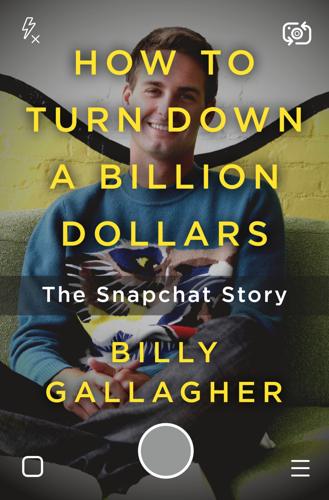
How to Turn Down a Billion Dollars: The Snapchat Story
by
Billy Gallagher
Published 13 Feb 2018
New York Times, December 31, 2014. https://www.nytimes.com/2014/12/31/business/media/Snapchat-Plans-a-Global-View-of-New-Years-Festivities.html Webster, Andrew. “Snapchat’s Geofilters Are Now Open to Everyone.” Verge, December 2, 2014. https://www.theverge.com/2014/12/2/7319317/snapchat-geofilters-community Chapter Twenty-Two: “We Need to Make Money” “Advertising on Snapchat.” Snapchat, October 17, 2014. https://www.snap.com/en-US/news/post/advertising-on-snapchat/. Carr, Austin. “Inside Snapchat CEO Evan Spiegel’s Entertainment Empire.” Fast Company, October 19, 2015. https://www.fastcompany.com/3051612/media-tech-and-advertising-to-snapchat-i-aint-afraid-of-no-ghost Chemi, Eric.
…
Instagram warned users not to use “links asking you to add someone on another service.” This behavior attempted to slow Snapchat’s growth and served to continue the pissing contest Snapchat and Facebook had been having for years; early on after Snapchat released geofilters, they had placed a geofilter over Facebook’s campus featuring the Snapchat ghost pointing and laughing. As for Twitter, Snapchat didn’t even bother fighting back, as Snapchat passed Twitter in daily active users (150 million to 140 million) in June 2016. In August 2016, Instagram released Instagram Stories, a new feature essentially copying Snapchat Stories that let users post photo and video slideshows that disappeared after twenty-four hours.
…
Memories’s permanence was antithetical to Snapchat’s core ethos, but it was released late enough that users’ behaviors and norms were already well established. Had Snapchat released Memories in 2012, it may have been a disaster that cut into Snapchat’s real-time, fleeting nature. But because Snapchat already had hundreds of millions of users snapping for years before it released Memories, it was able to add to the product without changing core behaviors. Memories makes Snapchat’s camera even more useful, as it lets users store photos, videos, their own Snapchat stories in their entirety—indeed, their memories—all on Snapchat’s servers rather than taking up space on their phone. It is another step toward making Snapchat people’s default camera.

No Filter: The Inside Story of Instagram
by
Sarah Frier
Published 13 Apr 2020
Colao, “Snapchat: The Biggest No-Revenue Mobile App Since Instagram,” Forbes, November 27, 2012, https://www.forbes.com/sites/jjcolao/2012/11/27/snapchat-the-biggest-no-revenue-mobile-app-since-instagram/#6ef95f0a7200. By November 2012, Snapchat: Colao, “Snapchat.” “Thanks :) would be happy… Bay Area,”: Alyson Shontell, “How Snapchat’s CEO Got Mark Zuckerberg to Fly to LA for Private Meeting,” Business Insider, January 6, 2014, https://www.businessinsider.com/evan-spiegel-and-mark-zuckerbergs-emails-2014-1?IR=T. He spent the meeting insinuating: J. J. Colao, “The Inside Story of Snapchat: The World’s Hottest App or a $3 Billion Disappearing Act?
…
Warr would ask the research subjects. “Probably Snapchat,” they responded. * * * In all of its Snapchat copycatting, Facebook was forced to learn, over and over, that just because it had made one world-changing product didn’t mean it could succeed with another, even when that product was a replica of something already popular. Snapchat, meanwhile, learned that it could ignore Facebook’s repeated attacks. In fact, Facebook was so apparently unthreatening during this period that a Snapchat executive proposed trying something crazy: being friends. Snapchat’s best asset and biggest problem was Evan Spiegel himself.
…
,” Forbes, January 20, 2014, https://www.forbes.com/sites/jjcolao/2014/01/06/the-inside-story-of-snapchat-the-worlds-hottest-app-or-a-3-billion-disappearing-act/. And then, starting the next day: Seth Fiegerman, “Facebook Poke Falls Out of Top 25 Apps as Snapchat Hits Top 5,” Mashable, December 26, 2012, https://mashable.com/2012/12/26/facebook-poke-app-ranking/. Snapchat’s downloads climbed: Fiegerman, “Facebook Poke Falls Out of Top 25 Apps.” In June 2013, Spiegel raised: Mike Isaac, “Snapchat Closes $60 Million Round Led by IVP, Now at 200 Million Daily Snaps,” All Things D, June 24, 2013, http://allthingsd.com/20130624/snapchat-closes-60-million-round-led-by-ivp-now-at-200-million-daily-snaps/.

Crushing It!: How Great Entrepreneurs Build Their Business and Influence—and How You Can, Too
by
Gary Vaynerchuk
Published 30 Jan 2018
Less than a year later, 40 percent of American teenagers were using Snapchat daily. I learned an important lesson from that bad call on Snapchat: a devoted, sticky fan base is willing to be patient as you experiment your way to the next iteration. The next big launch, Discover, saw Snapchat graduate into a bona fide media platform by offering a page where users would find a slew of brands like National Geographic, T-Mobile, and ESPN. Snapchat now had access to advertising revenue, and that meant so did anyone who could crack the Snapchat code. The man who did that is named DJ Khaled, but before I introduce him, we’re going to reminisce about Ashton Kutcher.
…
Same with Kerry and Jayde Robinson’s salon talk. That means that to be a Snapchat influencer, you need to be strong on the other platforms as well. The content you produce for Snapchat has to be powerful enough to draw views on YouTube, Facebook, and Instagram. The way to get discovered on Snapchat is not much different from the way television stations try to get people to tune in to their programs, which is to market in all the other places where people who might be interested in you are already going. That’s what I did. I was never concerned by the lack of discoverability on Snapchat, because I could see that all I had to do was draw awareness to it through my base on Twitter, YouTube, and my website.
…
If there’s one thing Shaun had learned from his jewelry-boutique experiment, it’s that he was good at creating safe online communities where people could come together to engage and have fun. “The greatest challenge was trying to grow on a platform that did not cater to growth. Snapchat was a communication platform, like text messaging, so I had to make it into a content-creating platform. Eventually, Snapchat made updates, which helped with that, but I had to get creative at first.” There’s a reason Shaun’s content got so much attention when so many others on Snapchat did not: he treated Snapchat like a business. Many people start pumping out cool content onto a platform and just hope they’ll get noticed and grow their audience enough that brands will come calling.
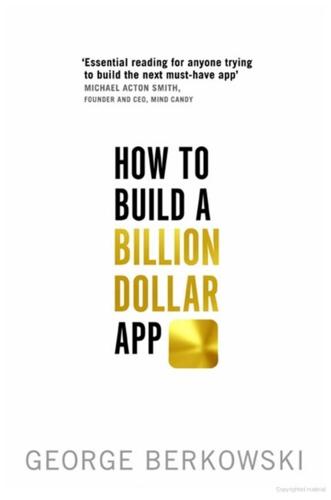
How to Build a Billion Dollar App: Discover the Secrets of the Most Successful Entrepreneurs of Our Time
by
George Berkowski
Published 3 Sep 2014
, article on GIGAOM.com, 29 April 2013, gigaom.com/2013/04/29/chat-apps-have-overtaken-sms-by-message-volume/. 22 Interview with Jan Koum, 20 January 2014, op. cit. 23 J. J. Colao, ‘Snapchat: The Biggest No-Revenue Mobile App Since Instagram’, article on Forbes.com, 27 November 2012, www.forbes.com/sites/jjcolao/2012/11/27/snapchat-the-biggest-no-revenue-mobile-app-since-instagram/. 24 Evelyn M. Rusli and Douglas MacMillan, 13 November 2013, op. cit. 25 Mike Isaac, ‘Snapchat Closes $60 Million Round Led by IVP, Now at 200 Million Daily Snaps’, article on AllThingsD.com, 24 June 2013, allthingsd.com/20130624/snapchat-closes-60-million-round-led-by-ivp-now-at-200-million-daily-snaps/. 26 ‘Recent Additions to Team Snapchat’, blog post on Snapchat.com, 24 June 2013, blog.snapchat.com/post/53763657196/recent-additions-to-team-snapchat. 27 Mike Isaac, ‘Snapchat Now Boasts More Than 150 Million Photos Taken Daily’, article on AllThingsD.com, 16 April 2013, allthingsd.com/20130416/snapchat-now-boasts-more-than-150-million-photos-taken-daily/. 28 Justin Lafferty, ‘Facebook Photo Storage Is No Easy Task’, article on AllFacebook.com, 16 January 2013, allfacebook.com/facebook-photo-storage-open-compute_b108640.
…
Google VP Explains How to Go Big’, article on VentureBeat.com, 19 April 2012, venturebeat.com/2012/04/19/want-to-get-acquired-by-google-google-vp-explains-howto-go-big/. 5 Mike Isaac, ‘Facebook Acquisition Talks With Waze Fall Apart’, article for AllThingsD.com, 29 May 2013, allthingsd.com/20130529/facebook-acquisition-talks-with-waze-fall-apart/. 6 Simone Wilson, ‘Billion-dollar Waze’, article on JewishJournal.com, 19 June 2013, www.jewishjournal.com/cover_story/article/billion_dollar_waze. 7 Ibid. 8 For details of the merger see www.sec.gov/Archives/edgar/data/1326801/000132680114000010/form8k_2192014.htm. 9 Gerry Shih and Sarah McBride, ‘Facebook to buy WhatsApp for $19 Billion in Deal Shocker’, article on Reuters.com, 20 February 2014, www.reuters.com/article/2014/02/20/us-whatsapp-facebook-idUSBR EA1I26B20140220. 10 ‘Facebook to Acquire WhatsApp’, press release on FB.com, 19 February 2014, newsroom.fb.com/News/805/Facebook-to-Acquire-WhatsApp. 11 Justin Lafferty, ‘Facebook Revenue Hits $2B in Q3, Now Has 507m Mobile DAUs’, article on InsideFacebook.com, 30 October 2013, www.insidefacebook.com/2013/10/30/facebook-revenue-hits-2b-in-q3-now-has-507m-mobile-daus/. 12 So WhatsApp seems to be processing more messages than all SMS in the world. 13 ‘Facebook to Acquire WhatsApp’, 19 February 2014, op. cit. 14 Adario Strange, ‘Facebook Reportedly Offered $1 Billion to Acquire Snapchat’, article on Mashable.com, mashable.com/2013/10/26/facebook-snapchat/. 15 Evelyn M. Rusli and Douglas MacMillan, ‘Snapchat Spurned $3 Billion Acquisitions Offer from Facebook’, blog post on WSJ.com, 13 November 2013, blogs.wsj.com/digits/2013/11/13/snapchat-spurned-3-billion-acquisition-offer-from-facebook/. 16 Cheryl Conner, ‘Facebook’s Reality Check: Death by a Thousand Snapchats?’, article on Forbes.com, 8 July 2013, www.forbes.com/sites/cherylsnappconner/2013/06/08/facebooks-reality-check-death-by-a-thousand-snapchats/. 17 Kara Swisher, ‘Yahoo Tumblrs for Cool: Board Approves $1.1 Billion Deal as Expected’, article on AllThingsD.com, 19 May 2013, allthingsd.com/20130519/yahoo-tumblrs-for-cool-board-approves-1-1-billion-deal/. 18 Todd Wasserman, ‘Tumblr’s Mobile Traffic May Overtake Desktop Traffic This Year’, article on Mashable.com, 21 February 2013, mashable.com/2013/02/21/tumblr-mobile-traffic/. 19 Ibid. 20 Marc Andreessen, ‘Why Software Is Eating the World’, article on WSJ.com, 20 August 2011, online.wsj.com/news/articles/ SB10001424053111903480 904576512250915629460. 21 Leena Rao, ‘As Software Eats the World, Non-Tech Corporations Are Eating Startups’, article on TechCrunch.com, 14 December 2013, TechCrunch.com/2013/12/14/as-software-eats-the-world-non-tech-corporations-are-eating-startups/. 22 Alexia Tsotsis, ‘Monsanto Buys Weather Big Data Company Climate Corporation for Around $1.1B’, article on TechCrunch.com, 2 October 2013, TechCrunch.com/2013/10/02/monsanto-acquires-weather-big-data-company-climate-corporation-for-930m/. 23 Leena Rao, 14 December 2013, op. cit. 24 Ibid. 25 Pitchbook, US, ‘VC Valuations and Trends’, 2014 annual report. 26 ‘Yesterday’s Big Payday for the IRS: 1600 Twitter Employees Now Millionaires’, research on PrivCo.com, 8 November 2013, www.privco.com/the-twitter-mafia-and-yesterdays-big-irs-payday. 27 Sven Grundberg, ‘“Candy Crush Saga” Maker Files for an IPO’, article on WSJ.com, 18 February 2014, online.wsj.com/news/articles/SB10001424052702304675504579390580161044024. 28 ‘UK Mobile Games Maker King Delays IPO Due to Candy Crush Surge’, article on VCPost.com, 9 December 2013, www.vcpost.com/articles/19437/20131209/uk-mobile-games-maker-king-delays-ipo-due-candy-crush.htm. 29 Phillipa Leighton-Jones, ‘Why Candy Crush Is a Success That’s Hard to Copy’, blog post on WSJ.com, 18 February 2014, blogs.wsj.com/money-beat/2014/02/18/why-candy-crush-is-a-success-that-cannot-be-copied/. 30 Mark Berniker and Josh Lipton, ‘Uber CEO Kalanick: No Plans To Go Public Right Now’, article on CNBC.com, 6 November 2013, www.cnbc.com/id/101175342.
…
Chapter 23: Revenue-Engine Mechanics 1 David Skok, ‘Startup Killer: The Cost of Customer Acquisitions’, article on forEntrepreneurs.com, 22 December 2009, www.forentrepreneurs.com/startup-killer/. 2 Eliana Dockterman, ‘Candy Crush Saga: The Science Behind Our Addiction’, article on Time.com, 15 November 2013, business.time.com/2013/11/15/candy-crush-saga-the-science-behind-our-addiction/. 3 Mia Shanley, ‘How Candy Crush Makes So Much Money’, article on BusinessInsider.com, 8 October 2013, www.BusinessInsider.com/how-candy-crush-makes-so-much-money-2013-10. 4 Dave McClure, ‘Startup Metrics for Pirates’, presented to Wildfire Interactive, May 2012, slide 73, www.slideshare.net/dmc500hats/startup-metrics-4-pirates-wildfire-interactive-may-2012. 5 Mike Isaac, ‘Snapchat Closes $60 Million Round Led by IVP, Now at 200 Million Daily Snaps’, article on AllThingsD.com, 24 June 2013, allthingsd.com/20130624/snapchat-closes-60-million-round-led-byivp-now-at-200-million-daily-snaps/. 6 Mike Isaac, ‘Snapchat Now Boasts More Than 150 Million Photos Taken Daily’, article on AllThingsD.com, 16 April 2013, allthingsd.com/20130416/snapchat-now-boasts-more-than-150-million-photos-taken-daily/. 7 Liz Gannes, ‘Popular Photo Message App Snapchat Adds Video’, article on AllThingsD.com, 14 December 2012, allthingsd.com/20121214/popular-photo-message-app-snapchat-adds-video/. 8 David Skok, ‘The Science Behind Viral Marketing’, article on forEntrepreneurs.com, 15 September 2011, www.forentrepreneurs.com/the-science-behind-viral-marketing/.

American Girls: Social Media and the Secret Lives of Teenagers
by
Nancy Jo Sales
Published 23 Feb 2016
And then, one Saturday night in October 2015, I was on my phone, scrolling through Yik Yak and not reading a book, when I heard about something which even blasé Yik Yakkers were finding shocking. “Oh my God, Syracusesnap.” “LMFAO Syracusesnap.” “What’s Syracusesnap?” people asked. Everybody wanted to know. Everybody had to know. Syracusesnap was a Snapchat Story, a series of pictures or videos on Snapchat which stay viewable for twenty-four hours rather than the usual one to ten seconds per Snap. On Snapchat, famously launched in 2011 by three fraternity brothers from Stanford, Stories have become the most popular feature, with more than a billion viewed daily, according to the company. But few go viral. Within hours of its creation, Syracusesnap was being followed by college students and teenagers across the country.
…
There was a picture of a boy holding two girls’ bodies on his shoulders, their behinds, in identical black thongs, facing the camera, his dumbstruck face encased with butt cheeks. “Snap whore,” said a picture of a girl Snapchatting, her cleavage prominently showing. There had been scandalous college Snapchat Stories before; in fact, such accounts can be found at colleges across the country. They’re a sort of rebellious parody of Snapchat’s Campus Stories, another feature on the app which many schools sponsor and monitor, and which typically shows students in their fun-filled and inspiring moments—looking joyful in the stands at winning football games, attending lectures.
…
UCLAyak, named in homage to Yik Yak, had sexually explicit photos and videos cycling “every few seconds,” according to the Daily Bruin, the University of California–Los Angeles paper. The anonymous psychobiology student who created the account told the Bruin he wasn’t surprised at the nudity: “It was just a matter of time. That’s what Snapchat is for.” He said he suspected that some of the videos on other rogue campus accounts were staged, created to shock. Snapchat’s Community Guidelines prohibit sexually explicit content, and the company routinely deletes Snapchat Stories that violate its policies, but as soon as they’re banned, they often just reappear with a different handle. So what made Syracusesnap go viral? As the Saturday night wore on and more kids were alerting one another to its scandalous appeal, the Story became more hard-core.
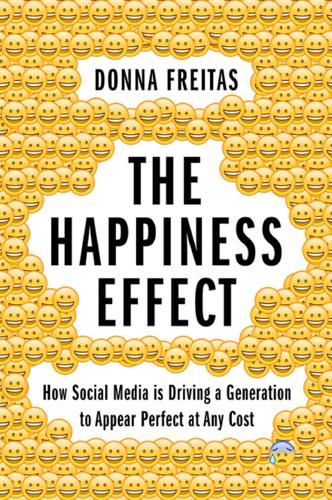
The Happiness Effect: How Social Media Is Driving a Generation to Appear Perfect at Any Cost
by
Donna Freitas
Published 13 Jan 2017
But for the college students I spoke with, this is an impoverished and limited understanding of Snapchat’s true delights. College students can be silly on Snapchat. They can be ridiculous. They can say dumb things. They can take goofy, ugly, unbecoming photographs and show them to other people. They can be sad, they can be negative, they can be angry, they can even be mean. They can be as emotional as they really feel. They can be honest. And it’s true, on Snapchat college students feel they can be sexy. But most of all, they play on Snapchat and they engage in all kinds of foolishness. And that’s why they love it. On Snapchat college students feel they can do all the things they’ve learned they’re not allowed to do on Facebook or any other platform that is more “permanent” and attached to their names.
…
And then I’ll be like, ‘Oh, I look nice today.’ ” Jackson likes using the selfie camera like a mirror, he tells me. But when he does take a selfie, he has to decide where it goes: Snapchat? Instagram? Facebook? “I really don’t care what I put on Snapchat,” Jackson says. I could wake up one morning, upload that selfie, and I wouldn’t put that on Instagram compared to my Snapchat, because [the morning selfie] is really more personal.” The same goes for “sleek photos,” which go up on Jackson’s Instagram but not Snapchat. On Facebook or Instagram, Jackson also posts selfies of him doing positive things. Jackson works as a tutor, and this is something he wants to share with people in a more permanent way.
…
Matthew tried to explain the difference between Facebook and Snapchat to me, and why Snapchat is much more fun. Like many students, Matthew goes onto Facebook a lot, but not to post—posting is too time-consuming and too much work, because every post has become so high-stakes. Mostly, Matthew just scrolls through the feed and lurks, checking out other people’s updates and photos. But Matthew loves Snapchat and goes on it all the time, and unlike with Facebook, on Matthew actually participates. “When I’m bored,” Matthew says, “I’ll snap a picture of something random, send it to, like, five people and wait for somebody to respond. [Snapchat] is really simple and fast, and it’s a way I can see what all my friends are up to, especially all my friends back home, all over the state and stuff.

Collaborative Society
by
Dariusz Jemielniak
and
Aleksandra Przegalinska
Published 18 Feb 2020
Whereas Instagram recommends to its users a number of other users that they might want to follow, Snapchat was and still is primarily designed for interacting with a smaller group of friends. Nonetheless, Snapchat gradually started to add more collaborative tools to allow users to post their photos and videos to custom story threads. With Custom Stories, as Snapchat calls them, users can add friends to a chosen story by selecting people from their contacts or by inviting users in a specified radius via Snapchat’s geofencing feature. In the press release announcing the new story options, Snapchat claimed that they were “perfect for a trip, a birthday party, or a new baby story just for the family.”32 To create a story, users can tap the “Create Story” icon; if a story has not been updated or added to within a 24-hour period, it disappears in typical Snapchat manner.
…
One company describes this option in the following way: “At their own convenience, they go for a walk to go through what’s on the other person’s mind and snap back their replies.” Apparently, many teams also use Snapchat to keep fit, which takes us back to the ideas in our chapter on collaborative gadgets. As yet another pro-Snapchat company exec boasts, “Spearheaded by Alberto “Muscles” Nodale, Close.io has turned into a team that gets excited about sweating. Through Snapchat, we send each other pep talks and gym guilt.”36 Nevertheless, Snapchat was not meant to be an internal communications tool. The platform does not guarantee that employees will adopt it: not everyone wants to be a part of the Snapchat community, and not everyone knows how to become one.
…
In the press release announcing the new story options, Snapchat claimed that they were “perfect for a trip, a birthday party, or a new baby story just for the family.”32 To create a story, users can tap the “Create Story” icon; if a story has not been updated or added to within a 24-hour period, it disappears in typical Snapchat manner. Teams working remotely from different locales and time zones have discovered Snapchat as an internal communications tool in addition to their existing software stack. Today, when we think about professional collaborative tools for remote teams, we mainly refer to Zoom (video conferencing), Slack and Basecamp (project management apps and tools), or Hackpad (real-time collaborative text editing), to mention just a few. Although professional software stacks for internal communications are impressive, Snapchat attempts to compete by introducing a welcome, genuine human connection to relationships with other team members that surpasses an email exchange or a Skype call.
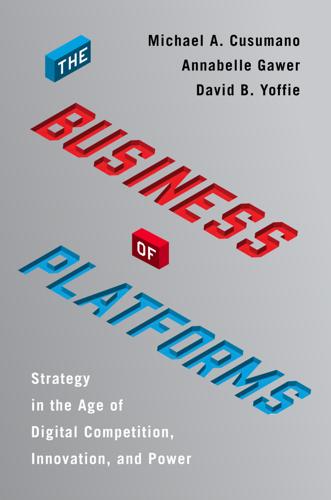
The Business of Platforms: Strategy in the Age of Digital Competition, Innovation, and Power
by
Michael A. Cusumano
,
Annabelle Gawer
and
David B. Yoffie
Published 6 May 2019
The flip side of digital technology accelerating opportunities for differentiation and niche competition was that it could be equally easy for incumbents to copy. Mark Zuckerberg almost immediately recognized Snapchat as a potential threat to Facebook. Given Facebook’s size and scale, he logically tried to buy Snap for $3 billion in cash before the company went public. When Spiegel turned him down, Zuckerberg ordered Instagram to copy Snapchat’s most compelling features and turn Instagram into a Snapchat killer.35 Especially after introducing Instagram Stories, Instagram zoomed past Snapchat, with over 700 million users. Although Snapchat was hardly dead (its market value had fallen dramatically but was still close to $6 billion in late 2018), Facebook’s attack had taken a serious toll.
…
Instead, they can access the external supply of creativity and software engineering skills available worldwide. But sometimes adding the second platform is more an act of desperation. Snapchat, for example, has struggled with competition from Facebook’s Instagram. In 2018 it opened up its APIs to encourage third parties to build complementary innovations in the hope that some new apps would make Snapchat a more compelling experience for users and a better draw for advertisers.35 Besides Facebook and Snapchat, a less obvious transaction-to-innovation hybrid example was Expedia, the travel services platform. When Expedia established an affiliate program under the banner of “Your Business.
…
Google executives have made this argument, citing the ease of multi-homing to defray criticism of their dominant position in Internet search, since competitors are merely “one click away.”30 As we discussed earlier with the Facebook example, Mark Zuckerberg may have created the world’s largest social network. However, it is easy for Facebook users to spend time on Twitter, LinkedIn, Snapchat, Pinterest, and other platforms, even if they may not take the trouble to adopt another social network for most of their activities. To control some of the revenues associated with multi-homing was at least one reason why Zuckerberg acquired Instagram in 2012 for $1 billion (considered a large sum at the time) and later used it to compete with Snapchat.31 Zuckerberg’s much more costly purchase of WhatsApp in 2014 for what amounted to $19 billion plus another $3 billion in Facebook stock was another defensive move against multi-homing for messaging as well as an offensive move to acquire more users and a potentially new revenue source.32 At the same time, clever use of data and sophisticated AI tools can discourage multi-homing because of better services.
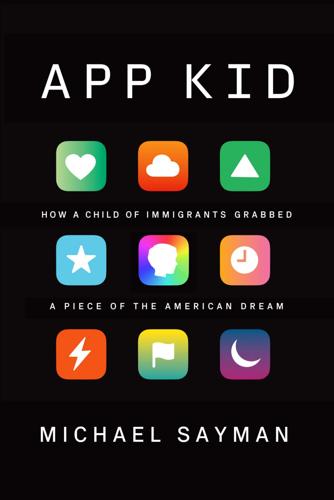
App Kid: How a Child of Immigrants Grabbed a Piece of the American Dream
by
Michael Sayman
Published 20 Sep 2021
In eight months, our launch of Instagram Stories surpassed Snapchat’s number of users. By 2018, Instagram Stories had more than twice as many users as Snapchat. Today, over half a billion people use Instagram Stories every single day. IG Stories launched before Snapchat went public, but by the time it did, in March 2017, Snapchat had lost 56 percent of its value. It was widely reported in tech media that this was a direct result of Instagram Stories. A lot of Facebookers felt pretty cocky about that. But I thought we should be grateful for what Snapchat had taught us—which was that we weren’t the source of all creativity and innovation, nor did we have to be.
…
* * * — Lifestage wasn’t the only project I was working on. At long last, Facebook had decided to get serious about competing with Snapchat—particularly Snapchat Stories, collections of snaps that lived for twenty-four hours. So I was now helping to implement our own version of Stories for WhatsApp, Instagram, Facebook, and Messenger. I’d been yelling about the Snapchat threat ever since I’d given my first Teen Talk in 2014, and the executives had finally started to listen, including me in meetings and cc’ing me on memos about anything Snapchat related. I was brought in to review designs and meet with engineers and executive leadership to strategize about the company’s overall goals for the product.
…
A few teams invited me to join them in my early weeks, but I dragged my feet on accepting an offer because I wasn’t excited about the projects they were working on. Thanks to my internship, it was fresh in my mind that I shouldn’t say yes when my gut said no. My gut was telling me to hold out for a team that was working on the problem I’d been noticing since my internship: the Snapchat threat. In 2014, Snapchat was just becoming really popular, and everyone I knew loved it. But while Snapchat had every teenager in America in its thrall, Facebook was a non-player in most kids’ social media lives. Sure, we used it for school meetups and other adult-sanctioned activities, but it wasn’t where we went to hang out and be ourselves. Facebookers had to be panicking about this, didn’t they?

Facebook: The Inside Story
by
Steven Levy
Published 25 Feb 2020
So in 2011, Facebook bought Foursquare’s main independent competitor, Gowalla. Spiegel and Murphy felt that Poke was a pale imitation of Snapchat, and laughed it off. Perhaps they felt a little queasy when immediately after launch, Poke reached number one in Apple’s App Store. But they felt a lot better when Poke did a nosedive in the ratings over the next few days. Not only was Poke a failure for Facebook, but it was a boon for Snapchat. It had legitimized Snapchat’s product vision. Snapchat kept growing, making it even more attractive to Zuckerberg. In 2013, he resumed his hunt, visiting Snapchat’s Venice Beach headquarters with his chief dealmaker, Amid Zoufonoun, in tow.
…
a review from the FTC: Josh Kosman, “Facebook Boasted of Buying Instagram to Kill the Competition: Sources,” New York Post, February 26, 2019. Snapchat: In addition to interviews, I drew on Billy Gallagher’s definitive book, How to Turn Down a Billion Dollars (St. Martin’s Press, 2018). Also valuable was Sarah Frier and Max Chafkin, “How Snapchat Built a Business by Confusing Olds,” Bloomberg BusinessWeek, March 17, 2016; J. J. Coloa, “The Inside Story of Snapchat: World’s Hottest App or a $3 Billion Disappearing Act?” Forbes, January 6, 2014; and Sarah Frier, “Nobody Trusts Facebook, Twitter Is a Hot Mess, What Is Snapchat Doing?” Bloomberg BusinessWeek, August 22, 2018. “When Snapchat started out”: Brad Stone and Sarah Frier, “Evan Spiegel Reveals Plan to Turn Snapchat into a Real Business,” Bloomberg BusinessWeek, May 16, 2015.
…
In May 2013, Zuckerberg wrote an email outlining all the great things that would happen if Snapchat joined the Facebook family. If Snapchat sold to Facebook, he said, Facebook had a playbook to raise the user base to a billion people. There were private APIs that Facebook didn’t share with developers. What’s more, Zuckerberg wooed Spiegel personally with promises that the younger entrepreneur not only would run Snapchat with some degree of autonomy but would have an opportunity to make an impact on Facebook itself. So even though you’ll spend your time on Snapchat it would be fun to work together closely to figure out how Facebook should evolve as well.
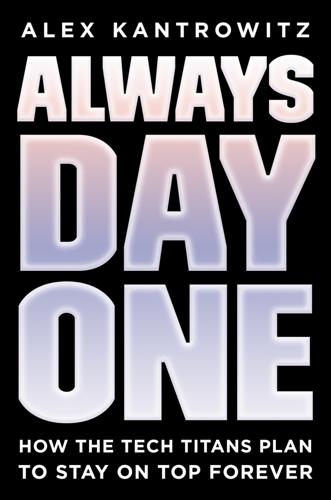
Always Day One: How the Tech Titans Plan to Stay on Top Forever
by
Alex Kantrowitz
Published 6 Apr 2020
As time went on, Sayman watched his fellow teens sharing less on Facebook’s family of apps and more on Snapchat. He turned his focus to Snapchat Stories, which he believed Facebook should build into its products. “I wanted the company to feel like Snapchat was an existential threat,” he said. “I wanted Facebook to panic.” Sayman brought his concerns to Zuckerberg, who had heard from others who came to similar conclusions. As a teenager, Sayman was invaluable. He could help Zuckerberg learn Snapchat’s culture. “He would point us to, ‘Here’s the media that I follow,’ or ‘Here are the people I think are influential, who are cool,’” Zuckerberg said.
…
And that type of sharing was starting to gravitate elsewhere. “The Most Chinese Company in Silicon Valley” At around the same time Facebook was working out its News Feed issues, an upstart messaging app called Snapchat—led by the brash Stanford graduate Evan Spiegel—built a feature called Stories, which let people share photos and videos with friends that disappeared in a day. Snapchat’s users loved how Stories gave them a carefree way to post (in contrast with Facebook, where your posts would go to everyone and stick around forever), and the app’s usage exploded. Spiegel, who once spurned a $3 billion acquisition offer from Zuckerberg, was now hitting him where it hurt.
…
In the zero-sum game of social media, where time spent on one platform is time not spent on another, Spiegel had the energy, the sharing, and was driving his company toward a hot IPO. As Snapchat took off, an eighteen-year-old developer named Michael Sayman joined Facebook. Sayman had built a game that caught Zuckerberg’s eye, and the company hired him as a full-time engineer in 2015. Sitting through orientation, Sayman heard speeches about how Facebook’s leaders would listen to anyone’s ideas, and took the message to heart. “I believed it,” he told me. Before orientation was over, he spun up a presentation about how teens, already drifting to Snapchat, were using technology, and how Facebook might want to build for them.
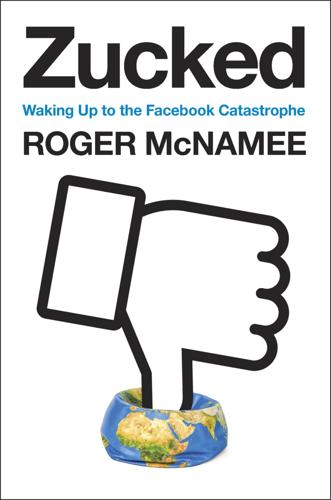
Zucked: Waking Up to the Facebook Catastrophe
by
Roger McNamee
Published 1 Jan 2019
In August 2018, Apple announced that Onavo violated its privacy standards, so Facebook withdrew it from the App Store. One of the competitors Facebook has reportedly tracked with Onavo is Snapchat. There is bad blood between the two companies that began after Snapchat rejected an acquisition offer from Facebook in 2013. Facebook started copying Snapchat’s key features in Instagram, undermining Snapchat’s competitive position. While Snapchat managed to go public and continues to operate as an independent company, the pressure from Facebook continues unchecked and has taken a toll. Under a traditional antitrust regime, Snapchat would almost certainly have a case against Facebook for anticompetitive behavior.
…
Thanks to photo tagging, users have built a giant database of photos for Facebook, complete with all the information necessary to monetize it effectively. Other platforms play this game, too, but not at Facebook’s scale. For example, Snapchat offers Streaks, a feature that tracks the number of consecutive days a user has traded messages with each person in his or her contacts list. As they build and the number of them grows, Streaks take on a life of their own. For the teens who dominate Snapchat’s user base, Streaks can soon come to embody the essence of a relationship, substituting a Streak number for the elements of true friendship. Another emotional trigger is fear of missing out (FOMO), which drives users to check their smartphone every free moment, as well as at times when they have no business doing so, such as while driving.
…
Eventually that would create problems it could not resolve with an apology and a promise to do better. 4 The Children of Fogg It’s not because anyone is evil or has bad intentions. It’s because the game is getting attention at all costs. —TRISTAN HARRIS On April 9, 2017, onetime Google design ethicist Tristan Harris appeared on 60 Minutes with Anderson Cooper to discuss the techniques that internet platforms like Facebook, Twitter, YouTube, Instagram, and Snapchat use to prey on the emotions of their users. He talked about the battle for attention among media, how smartphones transformed that battle, and how internet platforms profit from that transformation at the expense of their users. The platforms prey on weaknesses in human psychology, using ideas from propaganda, public relations, and slot machines to create habits, then addiction.
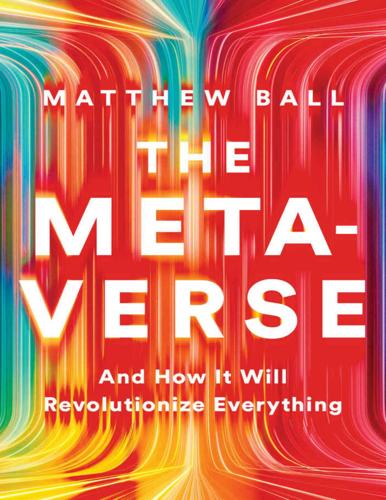
The Metaverse: And How It Will Revolutionize Everything
by
Matthew Ball
Published 18 Jul 2022
The social networking giant entered 2010 with more than half a billion monthly active users, but has failed to subsume any of the hit social media platforms which emerged in the decade. Snapchat launched in 2011, with Facebook launching its own Snapchat-like app (or “clone”) in 2013, called “Poke,” which was shuttered a year later. In 2016, Facebook launched “Lifestage,” its second Snapchat clone, with was also closed after 12 months. That same year, Facebook’s Instagram app also copied Snapchat’s signature “Stories” format, with Facebook’s main app adding the feature the following year. Then in 2019, Instagram launched its own dedicated Snapchat-like app, “Threads from Instagram,” though almost no one noticed. Facebook Gaming, the company’s Twitch competitor, launched in 2018, as did Facebook’s TikTok competitor, Lasso.
…
There is a reason why every social network has shifted over time to original programming, revenue guarantees, and creator funds. Unfortunately, the dynamics that apply to “2D” content networks don’t easily carry over to IVWP. Most of the content made on YouTube or Snapchat isn’t produced using those platforms’ tools. Instead, it’s produced with independent applications, such as Apple’s Camera app, or Adobe’s Photoshop and Premiere Pro. Even when content is made on a social platform, such as a Snapchat Story, which uses Snap’s filters, the content is typically easy to export (and to use again on Instagram) because it is just a photo. Conversely, the content made for an IVWP is mostly made in that IVWP.
…
Conversely, the content made for an IVWP is mostly made in that IVWP. It cannot be easily exported, or repurposed—and there are no available “hacks” similar to using an iPhone’s “screenshot” function to grab a Snapchat Story. As such, content made on Roblox is essentially Roblox-only. And unlike a YouTube video or Snapchat Story, Roblox content is not ephemeral (like a live stream), nor is it ever intended to be catalogued (as is the case with a YouTuber’s vlogs). Instead, it is intended to be continuously updated. The consequences of these differences are profound. If a developer wants to operate across multiple IVWPs, they must rebuild nearly every part of their experiences—an investment that produces no value to users and wastes time and money.
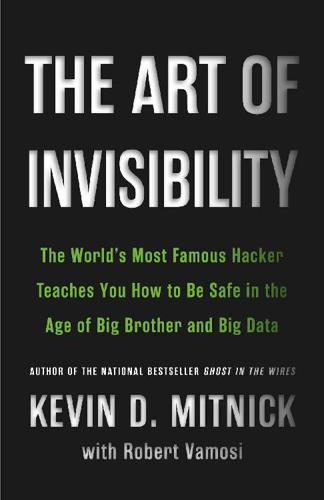
The Art of Invisibility: The World's Most Famous Hacker Teaches You How to Be Safe in the Age of Big Brother and Big Data
by
Kevin Mitnick
,
Mikko Hypponen
and
Robert Vamosi
Published 14 Feb 2017
Generation Z’s actions on their mobile devices center around WhatsApp (ironically, now part of Facebook), Snapchat (not Facebook), and Instagram and Instagram Stories (also Facebook). All these apps are visual in that they allow you to post photos and videos or primarily feature photos or videos taken by others. Instagram, a photo-and video-sharing app, is Facebook for a younger audience. It allows follows, likes, and chats between members. Instagram has terms of service and appears to be responsive to take-down requests by members and copyright holders. Snapchat, perhaps because it is not owned by Facebook, is perhaps the creepiest of the bunch. Snapchat advertises that it allows you to send a self-destructing photo to someone.
…
In the United Kingdom, a fourteen-year-old boy sent a naked picture of himself to a girl at his school via Snapchat, again thinking the image would disappear after a few seconds. The girl, however, took a screenshot and… you know the rest of the story. According to the BBC, the boy—and the girl—will be listed in a UK database for sex crimes even though they are too young to be prosecuted.22 Like WhatsApp, with its inconsistent image-blurring capabilities, Snapchat, despite the app’s promises, does not really delete images. In fact Snapchat agreed in 2014 to a Federal Trade Commission settlement over charges that the company had deceived users about the disappearing nature of its messages, which the federal agency alleged could be saved or retrieved at a later time.23 Snapchat’s privacy policy also says that it does not ask for, track, or access any location-specific information from your device at any time, but the FTC found those claims to be false as well.24 It is a requirement of all online services that individuals be thirteen years of age or older to subscribe.
…
Robert Vamosi, When Gadgets Betray Us: The Dark Side of Our Infatuation with New Technologies (New York: Basic Books, 2011). 9. http://www.forbes.com/sites/kashmirhill/2011/08/01/how-face-recognition-can-be-used-to-get-your-social-security-number/. 10. https://techcrunch.com/2015/07/13/yes-google-photos-can-still-sync-your-photos-after-you-delete-the-app/. 11. https://www.facebook.com/legal/terms. 12. http://www.consumerreports.org/cro/news/2014/03/how-to-beat-facebook-s-biggest-privacy-risk/index.htm. 13. http://www.forbes.com/sites/amitchowdhry/2015/05/28/facebook-security-checkup/. 14. http://www.consumerreports.org/cro/magazine/2012/06/facebook-your-privacy/index.htm. 15. http://www.cnet.com/news/facebook-will-the-real-kevin-mitnick-please-stand-up/. 16. http://www.eff.org/files/filenode/social_network/training_course.pdf. 17. http://bits.blogs.nytimes.com/2015/03/17/pearson-under-fire-for-monitoring-students-twitter-posts/. 18. http://www.washingtonpost.com/blogs/answer-sheet/wp/2015/03/14/pearson-monitoring-social-media-for-security-breaches-during-parcc-testing/. 19. http://www.csmonitor.com/World/Passcode/Passcode-Voices/2015/0513/Is-student-privacy-erased-as-classrooms-turn-digital. 20. https://motherboard.vice.com/blog/so-were-sharing-our-social-security-numbers-on-social-media-now. 21. http://pix11.com/2013/03/14/snapchat-sexting-scandal-at-nj-high-school-could-result-in-child-porn-charges/. 22. http://www.bbc.co.uk/news/uk-34136388. 23. https://www.ftc.gov/news-events/press-releases/2014/05/snapchat-settles-ftc-charges-promises-disappearing-messages-were. 24. http://www.informationweek.com/software/social/5-ways-snapchat-violated-your-privacy-security/d/d-id/1251175. 25. http://fusion.net/story/192877/teens-face-criminal-charges-for-taking-keeping-naked-photos-of-themselves/. 26. http://www.bbc.com/future/story/20150206-biggest-myth-about-phone-privacy. 27. http://fusion.net/story/141446/a-little-known-yelp-setting-tells-businesses-your-gender-age-and-hometown/?
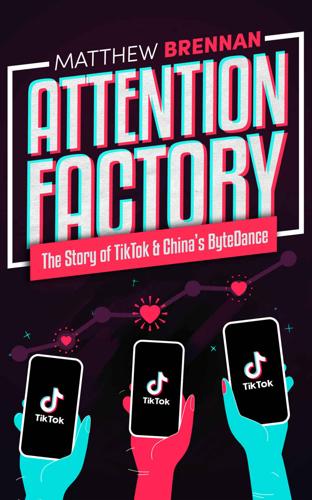
Attention Factory: The Story of TikTok and China's ByteDance
by
Matthew Brennan
Published 9 Oct 2020
As the platform grew, this group became outright celebrities, in some part due to their creativity, persistence, and hard work, in most part due to the invisible hand of the Shanghai content operations team tilting the attention game heavily in their favor. Younger than Snapchat Once the platform had grown large enough to garner mainstream media attention, the first thing reporters picked up on was the users’ age. “This is no question the youngest social network we’ve ever seen,” exclaimed online marketing guru Gary Vaynerchuk in an article profiling the platform. 158 “Snapchat and Instagram skew a little bit young… but with Musical.ly, you’re talking about first, second, third grade.” Above: A snapshot of the top 10 most popular Musical.ly accounts in late 2016 with numbers of followers and the ages of the creators at the time.
…
Musical.ly had built a meaningful brand that resonated strongly with American and European teens. ByteDance, Facebook, Tencent, Snapchat, 250 and Kuaishou, had all expressed interest at various times and engaged in talks with the founders. Sometimes referred to as the “Berkshire Hathaway of tech,” Tencent was a prolific investor in other internet companies. Pulling out of talks with Musical.ly and having missed the opportunity to acquire WhatsApp in 2014, Tencent instead opted to gain a foothold in Western social networking via a $2 billion stake in Snapchat. Kevin Systrom, the then CEO of Instagram, had met in person with Musical.ly’s founders in Shanghai and later persuaded Mark Zuckerberg to consider a deal.
…
As users themselves generated all content, fewer older users meant there was little content suitable for them being produced. Why produce content if there’s no audience? This meant that when older users did join, they quickly left. The solution was to broaden the types of content offerings and slowly age up the user base. “We realized while Instagram and Snapchat are social graph led, the fact that Musical.ly was content & creative led was an opportunity, NOT an obstacle. It would be mobile TV for the smartphone generation, and in order to age up, we needed to broaden the content offering and tell that story to the world,” explained product strategist James Veraldi in a later presentation.
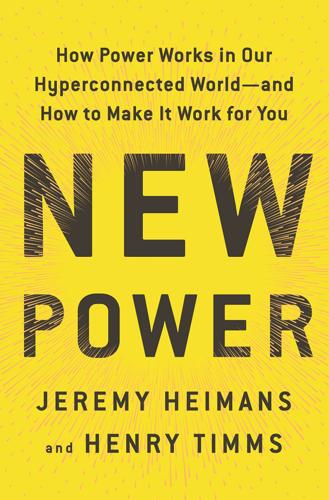
New Power: How Power Works in Our Hyperconnected World--And How to Make It Work for You
by
Jeremy Heimans
and
Henry Timms
Published 2 Apr 2018
Spiegel checks this box by abandoning Stanford University only a few credits short of graduation to pursue his Snapchat dream. He then shifts neatly into chapter 3—a legal brouhaha with his co-founders—falling out with Brown, the guy who first had the idea. Brown sues him. Our story hits its climax in chapter 4, when Spiegel gets approached by his entrepreneur-hero, Mark Zuckerberg, who offers to buy Snapchat for $3 billion. But will Spiegel believe enough in his idea to reject his hero and risk it all? Hell yes. You know what happened next. Snapchat grows wildly, Spiegel thrives. The company goes public at a $24 billion valuation.
…
“trophy case”: Lorenzo Ligato, “Here’s How to Unlock All of the New Snapchat Trophies,” Huffington Post, October 20, 2015. The online service TINYpulse: TINYpulse, July 2017. www.tinypulse.com. It has been adopted: Ibid. “The Founders Generation”: David Sims, “All Hail ‘The Founders,’ ” The Atlantic, December 2, 2015. Our story hits its climax: Jeff Bercovici, “Facebook Tried to Buy Snapchat for $3B in Cash. Here’s Why,” Forbes, November 13, 2013. The company goes public: Portia Crowe, “Snap Is Going Public at a $24 Billion Valuation,” Business Insider, March 1, 2017. “He just wants”: Austin Carr, “What Snapchat’s High-Profile Exec Departures Really Tell Us About CEO Evan Spiegel,” Fast Company, October 20, 2015.
…
Often the most extensible ideas feel imperfect and incomplete; if the idea feels “untouchable” or overly polished, it is very hard for others to feel they can take the reins and make it their own. An award-winning example of an extensible idea comes from Taco Bell, which for Cinco de Mayo in 2016 created a special lens on Snapchat that allowed people to turn their heads into giant taco shells and have hot sauce poured over the top. It won the title of most popular lens in Snapchat history by scoring 224 million views in one day. Many will scoff, but contrast this engagement to the dynamics of taking a traditional ad slot during prime-time TV programming. The guy on his couch, eating potato chips, may or may not pay attention to the message blaring out of the TV at him and everyone else in that cable district as he waits impatiently for his favorite show to start up again.
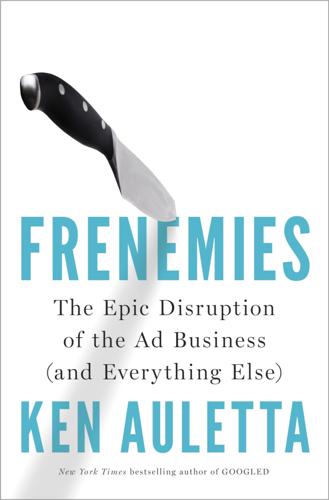
Frenemies: The Epic Disruption of the Ad Business
by
Ken Auletta
Published 4 Jun 2018
So on Instagram you see these photos three days later. On Snapchat, you see Snaps the moment they are created.” Martin Sorrell decided in 2016 to ride the Snapchat horse as a rival worth betting on. He decided to sweeten the ad dollars WPP earmarked for Snapchat. “It does become a threatening alternative to Facebook,” he told CNBC, “and I think that’s the big opportunity for them. . . . I think Facebook is concerned about the potential opposition.” Not that concerned. Sorrell’s threat was pure bluster. Although WPP would over time double the ad dollars it steered to Snapchat, from $90 million in 2016 to $200 million in 2017, it was akin to throwing pebbles in the ocean: WPP’s ad spending on Google rose five times as fast in 2016, totaling $5 billion; WPP purchased $1.7 billion of ads on Facebook in 2016.
…
By late 2015, many agencies and clients hoped two digital competitors might bust out: AOL, which was armed with new financial resources when Verizon decided it was too risky to be a dumb pipe and acquired AOL in May 2015, or Snapchat, an emerging social network Facebook competitor. With AOL and the Huffington Post providing content and Verizon providing the pipe and data on its 135 million telephone customers, AOL CEO Tim Armstrong boldly proclaimed to an Advertising Week audience in September 2015 that the new entity “has dreams of being the largest mobile media company in the world.” The competitive target, he said, was Google and Facebook. The cofounder and CEO of Snapchat, Evan Spiegel, openly aspires to disrupt Facebook, which he mocked as passé.
…
Although WPP would over time double the ad dollars it steered to Snapchat, from $90 million in 2016 to $200 million in 2017, it was akin to throwing pebbles in the ocean: WPP’s ad spending on Google rose five times as fast in 2016, totaling $5 billion; WPP purchased $1.7 billion of ads on Facebook in 2016. While Snapchat’s revenues jumped seven times faster in 2016, they only reached $404.5 million. By contrast, Facebook’s ad revenues totaled $27 billion that year. The looming threat to Facebook and Google, which would prompt Sorrell and the agencies and their clients—as well as Facebook and Google—to quake, would not come from Snapchat. It would come from Amazon. 8. THE RISE OF MEDIA AGENCIES “We always had the view that the less a media owner knows about what our objectives are and what our needs are, the more leverage we have in a negotiation.

The Internet Is Not the Answer
by
Andrew Keen
Published 5 Jan 2015
,” TechCrunch, June 15, 2011, techcrunch.com/2011/06/15/keen-on-eli-pariser-have-progressives-lost-faith-in-the-internet-tctv. 42 Claire Carter, “Global Village of Technology a Myth as Study Shows Most Online Communication Limited to 100-Mile Radius,” BBC, December 18, 2013; Claire Cain Miller, “How Social Media Silences Debate,” New York Times, August 26, 2014. 43 Josh Constine, “The Data Factory—How Your Free Labor Lets Tech Giants Grow the Wealth Gap.” 44 Derek Thompson, “Google’s CEO: ‘The Laws Are Written by Lobbyists,’” Atlantic, October 1, 2010. 45 James Surowiecki, “Gross Domestic Freebie,” New Yorker, November 25, 2013. 46 Monica Anderson, “At Newspapers, Photographers Feel the Brunt of Job Cuts,” Pew Research Center, November 11, 2013. 47 Robert Reich, “Robert Reich: WhatsApp Is Everything Wrong with the U.S. Economy,” Slate, February 22, 2014. 48 Alyson Shontell, “Meet the 20 Employees Behind Snapchat,” Business Insider, November 15, 2013, businessinsider.com/snapchat-early-and-first-employees-2013-11?op=1. 49 Douglas Macmillan, Juro Osawa, and Telis Demos, “Alibaba in Talks to Invest in Snapchat,” Wall Street Journal, July 30, 2014. 50 Mike Isaac, “We Still Don’t Know Snapchat’s Magic User Number,” All Things D, November 24, 2013. 51 Josh Constine, “The Data Factory—How Your Free Labor Lets Tech Giants Grow the Wealth Gap,” TechCrunch. 52 Alice E.
…
There’s also Twitter and Tumblr and Facebook and the rest of a seemingly endless mirrored hall of social networks, apps, and platforms stoking our selfie-centered delusions. Indeed, in an economy driven by innovator’s disasters, new social apps such as WhatsApp, WeChat, and Snapchat—a photo-sharing site that, in November 2013, turned down an all-cash acquisition offer of more than $3 billion from Facebook—are already challenging Instagram’s dominance.22 And by the time you read this, there will, no doubt, be even more destructive new products and companies undermining 2014 disruptors like Snapchat, WhatsApp, and WeChat. For us, however, Instagram—whether or not it remains the “second plotline” of the networked generation—is a useful symbol of everything that has gone wrong with our digital culture over the last quarter of a century.
…
They wanted us—our labor, our productivity, our network, our supposed creativity. It’s the same reason Yahoo acquired the microblogging network Tumblr, with its 300 million users and just 178 employees, for $1.1 billion in May 2013, or why in November 2013 Facebook made its $3 billion cash offering for the photography-sharing app Snapchat with its mere twenty employees.48 And that’s why Evan Spiegel, Snapchat’s twenty-three-year-old, Stanford-educated CEO, turned down Facebook’s $3 billion offer for his twenty-person startup. Yes, that’s right—he actually turned down $3 billion in cash for his two-year-old startup. But, you see, Spiegel’s minuscule app company—which, six months after rejecting Facebook’s $3 billion deal, was negotiating a new round of financing with the Chinese Internet giant Alibaba at a rumored $10 billion valuation49—isn’t really as tiny as it seems.

The Twittering Machine
by
Richard Seymour
Published 20 Aug 2019
Meanwhile, Facebook tugs on the heartstrings by displaying photos of friends who will ‘miss you’ – leveraging its control over uploaded content for commercial purposes. There is evidence that the existing platforms are reaching their peak. Facebook, Twitter and Snapchat have all seen declining user numbers, especially during 2018. Ironically, Snapchat’s fall may have been precipitated by its dependence on celebrity, as a single tweet from Kylie Jenner announcing to her 25 million followers that she didn’t ‘open Snapchat anymore’ instantly wiped $1.3 billion off the company’s value.72 But the trend is universal. Facebook’s announcement that it had lost a million users across Europe in one year has cost it $120 billion worth of value, as teens drop out.
…
On the fate of these websites and Facebook’s painstaking measures to prevent disconnections, see Tero Karppi, Disconnect: Facebook’s Affective Bonds, University of Minnesota Press: Minnesota, MN, 2018; and also Tero Karppi, ‘Disconnect.Me: User Engagement and Facebook’, University of Turku: Turku, 2014. 72. Ironically, Snapchat’s fall . . . ‘Kylie Jenner “sooo over” Snapchat – and shares tumble’, BBC News, 23 February 2018; Mark Sweeney, ‘Peak social media? Facebook, Twitter and Snapchat fail to make new friends’, Guardian, 10 August 2018; Rupert Neate, ‘Over $119bn wiped off Facebook’s market cap after growth shock’, Guardian, 26 July 2018. 73. Yet, 40 per cent of the world’s entire population . . .
…
Some of the repetitive banality of selfies can be blamed on the conventions of selfie-taking. Some of it can be blamed on the pursuit of ‘likes’ which incentivizes the repetition of popular images. But the platforms, from Snapchat to Instagram, and apps like Meitu, also offer a form of memetic enchantment. Selfies are worked through a limited range of reality-enhancers, called filters. Snapchat filters make us look cartoonish, with cute puppy ears and noses, while Instagram filters were at first notoriously nostalgic, casting a spell of mal du pays. Filters soften the features and flaws of the face, making us appear polished, perfect, almost mythical.
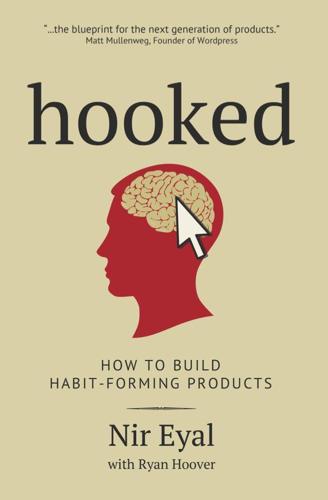
Hooked: How to Build Habit-Forming Products
by
Nir Eyal
Published 26 Dec 2013
The more swipes, the more potential matches are made; naturally, each match sends notifications to both interested parties. 3. Snapchat As of June 2013, Snapchat, a popular photo-sharing app, boasted of 5 million daily active users collectively sending over 200 million photos and videos daily.12 This tremendous engagement means an average Snapchat user sends forty photos every day! Why are users so in love with Snapchat? Its success can largely be attributed to the fact that users load the next trigger every time they use the service. Snapchat is more than a way to share images. It is a means of communication akin to sending a text message—with the added bonus of a built-in timer that can, based on the sender’s instructions, cause the message to self-destruct after viewing.
…
Peter Farago, “App Engagement: The Matrix Reloaded,” Flurry (accessed Nov. 13, 2013), http://blog.flurry.com/bid/90743/App-Engagement-The-Matrix-Reloaded. 11. Anthony Ha, “Tinder’s Sean Rad Hints at a Future Beyond Dating, Says the App Sees 350M Swipes a Day,” TechCrunch (accessed Nov. 13, 2013), http://techcrunch.com/2013/10/29/sean-rad-disrupt. 12. Stuart Dredge, “Snapchat: Self-destructing Messaging App Raises $60M in Funding,” Guardian (June 25, 2013), http://www.theguardian.com/technology/appsblog/2013/jun/25/snapchat-app-self-destructing-messaging. 13. Kara Swisher and Liz Gannes, “Pinterest Does Another Massive Funding—$225 Million at $3.8 Billion Valuation (Confirmed),” All Things Digital (accessed Nov. 13, 2013), http://allthingsd.com/20131023/pinterest-does-another-massive-funding-225-million-at-3-8-billion-valuation/.
…
“On Fifth Anniversary of Apple iTunes Store, YouVersion Bible App Reaches 100 Million Downloads: First-Ever Survey Shows How App Is Truly Changing Bible Engagement,” PRWeb (July 8, 2013), http://www.prweb.com/releases/2013/7/prweb10905595.htm. 2. Alexia Tsotsis,“Snapchat Snaps Up a $80M Series B Led by IVP at an $800M Valuation,” TechCrunch (accessed Nov. 13, 2013), http://techcrunch.com/2013/06/22/source-snapchat-snaps-up-80m-from-ivp-at-a-800m-valuation. 3. YouVersion infographics (accessed Nov. 13, 2013), http://blog.youversion.com/wp-content/uploads/2013/07/themobilebible1.jpg. 4. Henry Alford, “If I Do Humblebrag So Myself,” New York Times (Nov. 30, 2012), http://www.nytimes.com/2012/12/02/fashion/bah-humblebrag-the-unfortunate-rise-of-false-humility.html. 5.
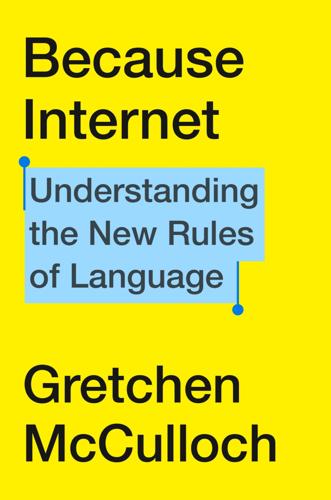
Because Internet: Understanding the New Rules of Language
by
Gretchen McCulloch
Published 22 Jul 2019
November 27, 2012. “Snapchat: The Biggest No-Revenue Mobile App Since Instagram.” Forbes. www.forbes.com/sites/jjcolao/2012/11/27/snapchat-the-biggest-no-revenue-mobile-app-since-instagram/#1499ff0e7200. like Instagram and Snapchat: Somini Sengupta, Nicole Perlroth, and Jenna Wortham. April 13, 2012. “Behind Instagram’s Success, Networking the Old Way.” The New York Times. www.nytimes.com/2012/04/14/technology/instagram-founders-were-helped-by-bay-area-connections.html. a new format for posts: Robinson Meyer. August 3, 2016. “Why Instagram ‘Borrowed’ Stories from Snapchat.” The Atlantic. www.theatlantic.com/technology/archive/2016/08/cameras-with-constraints/494291/.
…
Awareness that your friends were in the library or watching a movie didn’t explain why people spent an average of fifty minutes per day on Facebook in 2016, up from forty minutes per day in 2014. Moreover, as connectivity became ever easier and more mobile, it was no longer necessary to explain why you were away from the computer: you weren’t. Yet social media posts got more popular, rather than less, joined by mobile-first platforms like Instagram and Snapchat, which required that posts include an image or short video. Snapchat and later Instagram even brought us a new format for posts: the story which vanishes after twenty-four hours, a window into the fun, non-computery things you’ve been doing. A “normal” profile page gradually changed from being a list of static facts about you to a list of things you’ve posted recently.
…
“From Statistical Panic to Moral Panic: The Metadiscursive Construction and Popular Exaggeration of New Media Language in the Print Media.” Journal of Computer-Mediated Communication 11. International Communication Association. pp. 67–701. Ben Rosen. February 8, 2016. “My Little Sister Taught Me How to ‘Snapchat Like the Teens.’” BuzzFeed. www.buzzfeed.com/benrosen/how-to-snapchat-like-the-teens. Mary H.K. Choi. August 25, 2016. “Like. Flirt. Ghost. A Journey into the Social Media Lives of Teens.” Wired. www.wired.com/2016/08/how-teens-use-social-media/. Andrew Watts. January 3, 2015. “A Teenager’s View on Social Media.” Wired. backchannel.com/a-teenagers-view-on-social-media-1df945c09ac6.
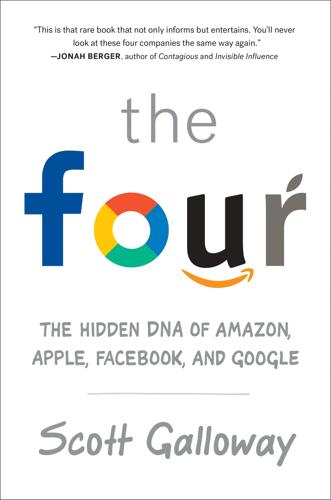
The Four: How Amazon, Apple, Facebook, and Google Divided and Conquered the World
by
Scott Galloway
Published 2 Oct 2017
We absorb imagery sixty thousand times faster than words.24 So, images make a beeline for the heart. And if Snapchat is threatening to hive off a meaningful chunk of that market, or even climb into the lead, that threat must be quashed. To do this, Facebook is developing a new camera-first interface in Ireland. It’s a clone of Snapchat. In a 2016 earnings call, Zuckerberg said, and this may sound oddly similar: “We believe that a camera will be the way that we share.” Facebook has already appropriated (that is, stolen) other Snapchat ideas, including Quick Updates, Stories, selfie filters, and one-hour messages. The trend will only continue—unless the government gets in the way.
…
April 12, 2017. http://www.cnbcafrica.com/news/technology/2017/04/10/many-48-million-twitter-accounts-arent-people-says-study/. 21. L2 Analysis of LinkedIn Data. 22. Novet, Jordan. “Snapchat by the numbers: 161 million daily users in Q4 2016, users visit 18 times a day.” VentureBeat. February 2, 2017. https://venturebeat.com/2017/02/02/snapchat-by-the-numbers-161-million-daily-users-in-q4-2016-users-visit-18-times-a-day/. 23. Balakrishnan, Anita. “Snap closes up 44% after rollicking IPO.” CNBC. March 2, 2017. http://www.cnbc.com/2017/03/02/snapchat-snap-open-trading-price-stock-ipo-first-day.html. 24. Pant, Ritu. “Visual Marketing: A Picture’s Worth 60,000 Words.”
…
Finally, Snap appeals to teens, a notoriously difficult and influential segment. Snapchat has added lots of features in the months since its founding. It has even pushed into TV, launching a mobile video channel. In 2017, the company is gaining fast on Twitter, and had 161 million daily users when it filed for an IPO.22 It IPO’d with a value of $33 billion.23 We’ll see. Facebook already is positioning itself to crush the young company. Imran Khan, the company’s chief strategy officer, claimed: “Snapchat is a camera company. It is not a social company.” I don’t know if it’s the scorn the Zuck feels after Evan rejected his overtures about acquisition, or a warranted response to a threat.

So Close to Being the Sh*t, Y'all Don't Even Know
by
Retta
Published 28 May 2018
Let it go, girl, I thought. It’s not that serious! Now I want to send my friend a formal letter of apology and present her with a $1,000 Starbucks gift card. I get it. I’m her. I’m every woman and man who loves coffee and wants to shout it out loud and proud from the rooftops to their Snapchat story! And I do. My Snapchat followers know that every morning, I post a video of my first cup of coffee, as I gleefully sing, “Dark Maaagiiic!” Can’t stop, won’t stop. So much so that since starting my coffee routine, my once relatively pearly whites ain’t so white no mo’. At my last dentist appointment, the hygienist looked in my mouth and frowned.
…
The jobless spend the most time on Snapchat. 2. Astronauts can tweet from space but I can’t get my Wi-Fi to reach my bedroom. 3. I experience anxiety when I haven’t updated my Bitmoji’s outfit to be season-appropriate. 4. I don’t care how “advanced” we’re supposed to be. I’ll give you my cordless landline when you pry it from my cold, dead hands. 5. When I get an alert that a friend has JUST joined Instagram: . 6. How do we not have voice-activated search on TiVo? So much button pressing. What are we, animals?? 7. No one cares about ur Snapchat concert vids. We get it. You’re THERE, we’re not.
…
Second, I check my notifications on Facebook. I rarely ever look at my feed. Truth be told, I only keep my Facebook account out of respect for the platform … aaaand in the hopes that my former crushes find my page and see the cute pics of myself that I’ve posted. It’s flawed but it’s honest. Third comes Snapchat. At first, I was against Snapchat. I didn’t get it. But once my friend Brian Mahoney (li’l shout-out for @mahone_alone) taught me how to work it, I was hooked. It’s where I document my coffee making and #NoPants life. It’s like my own reality show produced by me! I also enjoy receiving Snaps from like-minded people.

The Autonomous Revolution: Reclaiming the Future We’ve Sold to Machines
by
William Davidow
and
Michael Malone
Published 18 Feb 2020
In many cases, the entrepreneurs of smaller companies feel that if they do not let themselves be acquired, the giant suitor will develop its own competing application and drive them out of business. That is what happened to Snapchat. The company reportedly turned down a $3 billion offer from Facebook. So Facebook added popular Snapchat-like offerings to its own messaging applications—such as new camera filters and a sharing feature called Stories.63 Snapchat still managed to go public in 2017 at $17 per share, at a market cap of about $20 billion.64 But since that time its stock has struggled, and there are many concerns about how the company will fare over the long term in the platform wars.
…
shareToken=st4499b289902f491a99df8d891ecb83ef&reflink=article_email_share&mg=prod/accounts-wsj (accessed June 27, 2019). 16. Amber Murakami-Fester, “What Are Peer-to-Peer Payments?,” NerdWallet.com, May 31, 2019, https://www.nerdwallet.com/blog/banking/p2p-payment-systems/. 17. Snapchat Support, SnapChat Corporation, https://support.snapchat.com/en-US/a/snapcash-guidelines (accessed June 27, 2019). 18. PopMoney home page, https://www.popmoney.com/ (accessed June 27, 2019). 19. “Ally Bank Review: Everything You Need to Know,” The Balance, https://www.thebalance.com/ally-bank-review-315132. 20. “Why Fintech Won’t Kill Banks,” The Economist, June 17, 2015, https://www.economist.com/blogs/economist-explains/2015/06/economist-explains-12 (accessed June 27, 2019). 21.
…
John Cook, “John Grisham, Stephen King and More Than 900 Other Authors Press Amazon to Solve Hachette Dispute in NYT Ad,” GeekWire, August 8, 2014, https://www.geekwire.com/2014/john-grisham-stephen-king-900-authors-press-amazon-solve-hachette-dispute/ (accessed June 27, 2019). 63. Queenie Wong, “Facebook vs. Snapchat: Competition Heats Up Between Social Media Firms,” San Jose Mercury News, March 28, 2017, https://www.mercurynews.com/2017/03/28/facebook-vs-snapchat-competition-heats-up-between-social-media-firms/ (accessed June 27, 2019). 64. Anita Balakrishnan, “Snap Closes Up 44% After Rollicking IPO,” CNBC, March 2, 2017, https://www.cnbc.com/2017/03/02/snapchat-snap-open-trading-price-stock-ipo-first-day.html (accessed June 27, 2019). 65. Nicholas Carlson, “Was $1 Billion Too Little to Ask for Instagram?

Hit Makers: The Science of Popularity in an Age of Distraction
by
Derek Thompson
Published 7 Feb 2017
In other words: maps, videos, and a whole lot of talking. If you think the download counts are skewed, try the independent surveys. According to a 2014 Niche study, the most common mobile uses for teenagers are texting, Facebook, YouTube, Instagram, Snapchat, Pandora, Twitter, and phone calls. Six of the eight (texting, Facebook, Instagram, Snapchat, Twitter, and the old-fashioned telephone) are just different tools for self-expression—visual, textual, and voice. These social networks really work only when they’re big.46 There is an idea called Metcalfe’s law, which says that the value of a network is proportional to the number of its users squared.
…
But, like Disney, it is like a promiscuous vine that can live and grow in any climate. In 2016, 80 percent of BuzzFeed’s audience discovered its content somewhere other than its website—on social networks like Facebook and Snapchat, publishing partners like Apple News and Yahoo, and messaging apps like WeChat. For some consumers, BuzzFeed is a digital newspaper. For others, who find it on Snapchat, it is more like a TV company programming content for different cable networks. Content flows out and information flows in. BuzzFeed uses its distribution channels to collect information on what audiences read, watch, and share and turns those lessons into content for some other channel.
…
As communication choices abounded, modes of talking became fashionable—and then anachronistic. Corded and cordless phones connected teenagers in the 1990s. By the early 2000s, online chatting was the norm. Then centuries flipped, and the social media revolution erupted, with Friendster in 2002, MySpace in 2003, Facebook in 2004, Twitter in 2006, Whatsapp in 2009, Instagram in 2010, and Snapchat in 2011. These platforms were joined by other inventions, like Vine and Yik Yak, and modern twists on pre-alphabet pictograms like emojis, GIF keyboards, and stickers. Each of these apps and features are fundamentally pictures and words in boxes. But they all have a distinct patois and cultural context, and each represents a fashionable improvement or purposeful divergence from the previous dominant technology.

User Friendly: How the Hidden Rules of Design Are Changing the Way We Live, Work & Play
by
Cliff Kuang
and
Robert Fabricant
Published 7 Nov 2019
And differing approaches to feedback lie behind two of the most successful startups in recent history: Instagram and Snapchat. Instagram came first, in 2010. The app initially just let you share photos and see the photos of friends to whom you were linked. Soon after it launched came the commonsense policy, popularized by Facebook, of letting your friends like your posts (and, of course, seeing how many likes your friends’ posts had gotten). That was the simple act of affirmation that the app revolved around. How many likes had you gotten? How many had your friends? Snapchat was built differently. It, too, was meant as a basic photo-sharing app.
…
If you were Instagram, that was a mechanism that could end your business altogether. And so Instagram ruthlessly adopted Snapchat’s feedback philosophy, inserting a strip of “stories” at the top of the app, which let users share photos without the possibility of getting likes, and with the only way of replying being to send a direct message. It worked. Instagram Stories was wildly successful, used by 400 million people a day within a year of launch, helping Instagram nudge its average user time ever upward. You could talk about Snapchat and Instagram as the story of two billion-dollar apps that gave people new ways to entertain themselves, and one another.
…
In the user-friendly era, in which it is assumed that new products and apps shouldn’t require much instruction, Autopilot conveyed a muddy sense of what it could and could not do—with sometimes fatal consequences. 2016: INSTAGRAM STORIES In 2016, after noticing that users were becoming more self-conscious about posting to Instagram, the company copied the disappearing-messages feature of Snapchat, to spectacular success. Just a few years before, the iPod click wheel had proved that a user-experience innovation could ignite widespread adoption; Snapchat did the same. But in an era of digital products, those innovations are nearly impossible to defend from copycats for long. 2016: GENERAL DATA PROTECTION REGULATION, European Union EU decision makers opened up a new frontier in user-friendly design by enacting a set of laws intended to give users control over their personal data.
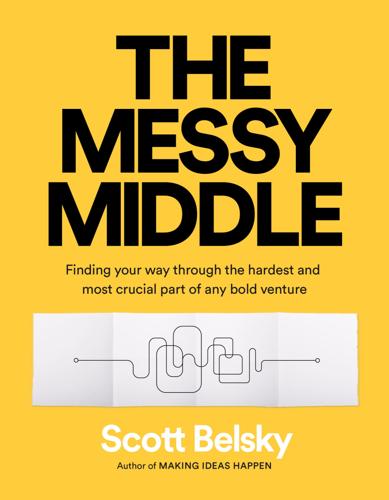
The Messy Middle: Finding Your Way Through the Hardest and Most Crucial Part of Any Bold Venture
by
Scott Belsky
Published 1 Oct 2018
If so, you should consider taking the same tactic yourself. In 2016 and 2017, Instagram infamously copied Snapchat’s tactics over and over again. Both apps were playing in the same field, and Instagram used what Snapchat learned to get ahead of it in its own game. Instagram implemented Snapchat’s “stories” and augmented-reality features, like facial overlays, because these tactics were directly aligned with its strategy: to host the media friends share with one another. Instagram was getting ideas from Snapchat, but these tactics advanced their strategy rather than diverted it. Sometimes the thing you admire most in your competitor isn’t smart or scalable.
…
The only time you should force new behaviors or terminology is when they enable a unique and important value in your product. For example, Snapchat was the first social network that would open on the camera view when you clicked on the app instead of other competitive products like Instagram and Facebook that open on a feed of others’ content. This behavior struck new users as foreign, but it retrained users for an entirely different kind of social experience. Snapchat aspired to be more of a camera than an app, and launching the product in camera mode sent a strong and differentiating message to its users that helped distinguish Snapchat from other social apps—as well as the kind of content created with it.
…
Empathy for those suffering the problem must come before your passion for the solution. Consider the rise of the popular camera and messaging app Snapchat. There were a lot of start-ups trying to help people share photos and hoping to compete with Facebook. But founder Evan Spiegel recognized the unique insecurities and preferences of its first users: teenagers. At the time of its founding in 2011, teenagers were especially sensitive to leaving a trail of data online that their parents and teachers could see. The idea of ephemeral content that would quickly disappear relieved the anxieties of these teenage users. Snapchat was also empathetic to the fact that many of these teenagers had hand-me-down smartphones with limited storage and cracked screens.
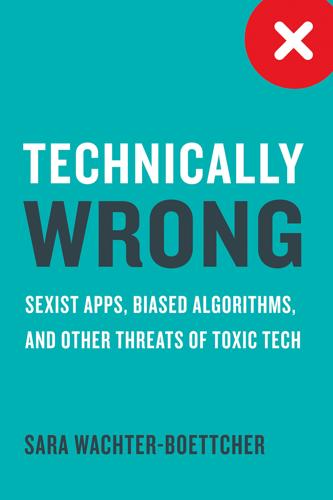
Technically Wrong: Sexist Apps, Biased Algorithms, and Other Threats of Toxic Tech
by
Sara Wachter-Boettcher
Published 9 Oct 2017
Siri’s responses to a series of queries in March 2016. (Sara Wachter-Boettcher) Or in August 2016, when Snapchat launched a new face-morphing filter—one it said was “inspired by anime.” In reality, the effect had a lot more in common with Mickey Rooney playing I. Y. Yunioshi in Breakfast at Tiffany’s than a character from Akira. The filter morphed users’ selfies into bucktoothed, squinty-eyed caricatures—the hallmarks of “yellowface,” the term for white people donning makeup and masquerading as Asian stereotypes. Snapchat said that this particular filter wouldn’t be coming back, but insisted it hadn’t done anything wrong—even as Asian users mounted a campaign to delete the app.
…
As Adrienne LaFrance, writing in the Atlantic, put it, “The simplest explanation is that people are conditioned to expect women, not men, to be in administrative roles” 9 (just think about who you picture when you hear the term “secretary”). Or let’s look once more at Snapchat. In addition to the so-called “anime-inspired” filter we saw earlier, the app is known for releasing filters that purport to make you prettier, like the popular “beauty” and “flower crown” features. These filters smooth your skin, contour your face so your cheekbones pop, and . . . make you whiter.10 Why is whiter the default standard for beauty? Well, that’s a complex cultural question—but I doubt it’s one that the three white guys from Stanford who founded Snapchat ever thought about. These might seem like small things, but default settings can add up to be a big deal—both for an individual user like Messer, and for the culture at large.
…
Adrienne LaFrance, “Why Do So Many Digital Assistants Have Feminine Names?” Atlantic, March 30, 2016, http://www.theatlantic.com/technology/archive/2016/03/why-do-so-many-digital-assistants-have-feminine-names/475884. 10. For a whole ton of examples, see Neha Prakash, “Snapchat Faces an Outcry against ‘Whitewashing’ Filters,” Mashable, May 16, 2016, http://mashable.com/2016/05/16/snapchat-whitewashing/#pLqUZA7KJuqs. 11. Jessica Nordell, “Stop Giving Digital Assistants Female Voices,” New Republic, June 23, 2016, https://newrepublic.com/article/134560/stop-giving-digital-assistants-female-voices. 12. Todd Rose, The End of Average: How to Succeed in a World That Values Sameness (New York: HarperCollins, 2016). 13.

The Hype Machine: How Social Media Disrupts Our Elections, Our Economy, and Our Health--And How We Must Adapt
by
Sinan Aral
Published 14 Sep 2020
As a result, “the network effects insulating digital platforms from competitive pressure will be mitigated….Individuals could switch between platforms based on their tastes and preferences as well as the innovations devised by different platforms….The point is that the ability to earn money from a user’s attention will become more contestable as a result of identity portability.” Second, social media services differ from phone calls. Text and voice exchanges are standardized and therefore easier to make interoperable. But messages on Facebook, WhatsApp, Twitter, and Snapchat are harder to seamlessly exchange across the different networks. Messages on Snapchat disappear, while messages on Facebook persist. Messages on Twitter are public and limited to 240 characters, while messages on WhatsApp are private and unlimited in length. While protocols for distinct message types could be developed, the complexity of interoperability in this context certainly exceeds that of the exchange of voice calls and text messages on mobile phones.
…
The Hype Machine Every minute of every day, our planet now pulses with trillions of digital social signals, bombarding us with streams of status updates, news stories, tweets, pokes, posts, referrals, advertisements, notifications, shares, check-ins, and ratings from peers in our social networks, news media, advertisers, and the crowd. These signals are delivered to our always-on mobile devices through platforms like Facebook, Snapchat, Instagram, YouTube, and Twitter, and they are routed through the human social network by algorithms designed to optimize our connections, accelerate our interactions, and maximize our engagement with tailored streams of content. But at the same time, these signals are much more transformative—they are hypersocializing our society, scaling mass persuasion, and creating a tyranny of trends.
…
I was the chief scientist at SocialAmp, one of the first social commerce analytics companies (until its sale to Merkle in 2012) and at Humin, a social platform that The Wall Street Journal called the first “Social Operating System” (until its sale to Tinder in 2016). I have worked directly with senior executives at Facebook, Yahoo!, Twitter, LinkedIn, Snapchat, WeChat, Spotify, Airbnb, SAP, Microsoft, Walmart, and The New York Times. Along with my longtime friend Paul Falzone, I’m a founding partner at Manifest Capital, an investment firm that helps young companies grow into the Hype Machine. From this perch, I evaluate hundreds of companies a year and get to look around the corner at what’s next.

The Best Interface Is No Interface: The Simple Path to Brilliant Technology (Voices That Matter)
by
Golden Krishna
Published 10 Feb 2015
As a reporter at *The Verge,* I interviewed Snapchat CEO Evan Spiegel before the launch of the company’s video chat and texting features. Spiegel said something that really stuck out to me: “The biggest constraint of the next 100 years of computing is the idea of metaphors,” he said. “For Snapchat, the closer we can get to ‘I want to talk to you’—that emotion of wanting to see you and then seeing you — the better and better our product and our view of the world will be.” Instead of allowing you to ring friends for a video chat, as with FaceTime or Skype, Snapchat forces both users to be present inside a chat window before video can begin.
…
Instead of allowing you to ring friends for a video chat, as with FaceTime or Skype, Snapchat forces both users to be present inside a chat window before video can begin. So, instead of texting someone to set up a FaceTime call, you can simply chat them on Snapchat, and if they log on, you can start a video chat when you’re both in the same conversation. The “Hey, want to chat?” text replaces the ring entirely. You might have thought that Snapchat’s mission was to bring “ephemeral,” disappearing messages to the masses, when it was only one facet of a bigger idea that Spiegel had been stewing over. He had been thinking about digitally replicating the ways we talk in real life — ephemerality just happened to be one means of doing so.
…
People are inherently drawn to new ideas and not old, derivative ones. People are drawn to hope for better solutions, even if they manifest themselves in tiny, seemingly insignificant ways. *Ring, ring.* Ellis Hamburger was a reporter for the technology news and culture website The Verge from 2012–2015. Now he’s working in marketing at Snapchat. Contents Welcome 1 Introduction Why did you buy this book? Um, why did you buy this book again? 2 Screen-based Thinking Let’s make an app! Tackle a global issue? Improve our lives? No, no. When smart people get together in Silicon Valley they often brainstorm, “What app can we make?”
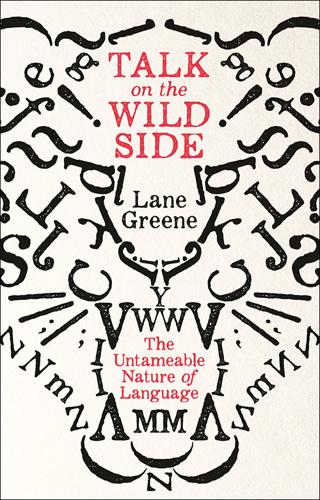
Talk on the Wild Side
by
Lane Greene
Published 15 Dec 2018
While writing this, I heard a reporter for the BBC talking about the prospects for Snapchat, the messaging app popular with teens and young adults, and stating that “158 million people use the app every day.” There are two very different ways to hear that same short set of words. One is that Snapchat has a hugely loyal base: there is a distinct group of 158 million people who use the app every single day. But there’s another perfectly possible understanding of those same words: that on any given day, 158 million people use Snapchat, but tomorrow’s 158 million will be a different subset of the global population.
…
I read three other news reports with similarly ambiguous statements, before reading Snapchat’s original wording: “on average, 158 million people use Snapchat daily.” The “on average” closes the case for the second reading: not a dedicated must-use-daily base of 158 million people, but daily figures of all users that average to 158 million. The ambiguity would never have sent me to Google – would never have been possible – in Lojban. Cowan dutifully translates the possibilities for me. The first is: pa mu bi ki’o ki’o prenu cu pilno la .snaptcat. ca’o ro djedi one five eight thousand thousand person (cu) use (la) Snapchat during each day Or, roughly, “each of the same set of 158 million persons use Snapshot each day.”
…
The first is: pa mu bi ki’o ki’o prenu cu pilno la .snaptcat. ca’o ro djedi one five eight thousand thousand person (cu) use (la) Snapchat during each day Or, roughly, “each of the same set of 158 million persons use Snapshot each day.” The second is: ca’o ro djedi pa mu bi ki’o ki’o prenu cu pilno la .snaptcat. during each day one five eight thousand thousand person (cu) use (la) Snapchat. during each day, 158MM [million] persons (not necessarily the same ones) use Snapchat. Should the BBC switch to Lojban? Unlike English, it is exactly the kind of language that sticklers (including many journalists) think people should speak. It makes you communicate information precisely, after working out exactly what you want to say in your own mind. Many sticklers assume a lay version of the Sapir–Whorf hypothesis themselves: that thought itself depends on language.
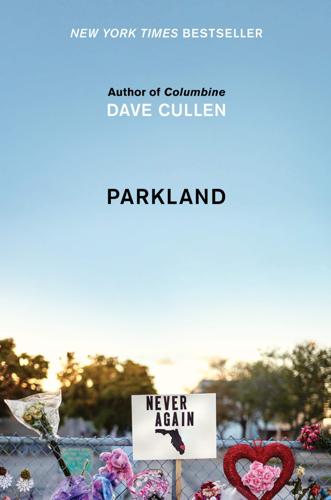
Parkland: Birth of a Movement
by
Dave Cullen
Published 12 Feb 2019
“Nobody said, ‘No, that’s a bad idea,’” he said. “Nobody necessarily said, ‘That’s a great idea!’ but if you don’t get a no, you take it as a yes.” Dylan described the rest of his process as “so not professionally done.” He uploaded the picture to Snapchat on his phone and typed in his reply caption: “We’ll control our own lives, thank you.” He saved the Snapchat, dumped it into the Photoshop Express app on his phone, and then added the March for Our Lives logo. That failed to save, since it’s a premium option and he was using the free version of Photoshop Express. So he took a screenshot, cropped his phone’s border clutter, and discovered that the image now looked too blurry.
…
“Well, we’re not taking you,” his dad finally said. David hopped on his bike, and pedaled furiously back. Twenty years. The pace has changed. So has kids’ connection to media. In the Columbine age, teachers sought to make their students wiser media consumers. The members of David’s generation spent much of their waking lives on Snapchat, Instagram, and YouTube—they were already amateur media creators. David was semipro. David got his B-roll and approached the news vans. At 10:05 p.m., he was live with Laura Ingraham on her prime-time Fox News show, with Ash Wednesday ashes on her forehead. For seven minutes, David dutifully answered her questions, highly composed, but looking a bit nervous, head nodding rhythmically through some extended questions.
…
Everybody was spreading rumors,” Cameron would post on Facebook when he got home. “I heard at least three names dropped as to who the shooter was. We were all so distracted looking at our phones that we forgot somebody was shooting up our school.” Then kids started posting video. “People being shot. People bleeding. Dead bodies. All over Snapchat.” Kids were crying, texting their parents. “You could smell the anxiety. . . . We just wanted to hear that the shooter was gone. We didn’t want to be shot. We had no idea what that even entailed. We’re young. We don’t know real pain.” That went on interminably, then someone smashed the glass out of the door.

Future Crimes: Everything Is Connected, Everyone Is Vulnerable and What We Can Do About It
by
Marc Goodman
Published 24 Feb 2015
Such was the case with the highly popular “social photo booth” app known as Snapchat. Snapchat is a service that allows users to send “selfie” photographs (often involving nudity) that purportedly disappear in just a few seconds after arriving on the recipient’s phone. More than one billion photographs have been sent via the service, and in late 2013 Facebook unsuccessfully tried to buy the company for $3 billion. In early 2014, it was revealed that Snapchat contained a security flaw that exposed millions of iPhone users to denial-of-service attacks. The vulnerability meant that hackers could target your phone specifically by sending a thousand Snapchat messages in just five seconds, thereby crashing your phone and making it unavailable for your use until you performed a hard reboot of the device.
…
The vulnerability meant that hackers could target your phone specifically by sending a thousand Snapchat messages in just five seconds, thereby crashing your phone and making it unavailable for your use until you performed a hard reboot of the device. Moreover, hackers were also able to compromise nearly five million Snapchat user accounts and published a database of user names and phone numbers on a hacker Web site. Worse, it was revealed that Snapchat’s foremost feature—the ability to send naked photographs that would self-destruct in ten seconds or less—was also flawed. The images did not self-destruct as promised and could still be retrieved both on the recipient device and on Snapchat’s own computer servers. As a result, tens of thousands of Snapchat photographs thought to have been deleted have shown up across the Internet, reposted on Instagram and on numerous revenge-porn sites.
…
Vaughan-Nichols, “First Case of Android Trojan Spreading via Mobile Botnets Discovered,” ZDNet, Sept. 5, 2013. 26 As such, criminals: “Gartner Says Worldwide PC, Tablet, and Mobile Phone Shipments to Grow 5.9 Percent in 2013 as Anytime-Anywhere-Computing Drives Buyer Behavior,” Gartner Newsroom, June 24, 2013. 27 The vulnerability meant: Salvador Rodriguez, “Hackers Can Use Snapchat to Disable iPhones, Researcher Says,” Los Angeles Times, Feb. 7, 2014. 28 Moreover, hackers were also: Selena Larson, “Snapchat Responds to Massive Hack,” ReadWrite, Jan. 3, 2014. 29 Worse, it was revealed: Kashmir Hill, “Snapchats Don’t Disappear: Forensics Firm Has Pulled Dozens of Supposedly Deleted Photos from Android Phones,” Forbes, May 9, 2013. 30 As a result, tens of thousands: Tyler Kingkade, “Ohio University Student Accused of Using Nude Snapchat Photos to Extort Sex,” Huffington Post, Dec. 30, 2013. 31 Today 89 percent of employees: Juniper Networks, “Trusted Mobility Index,” May 2012. 32 For just a few hundred dollars: Brian Montopoli, “For Criminals, Smartphones Becoming Prime Targets,” CBS News, Aug. 7, 2013; Dan Nosowitz, “A Hacked Mobile Antenna in a Backpack Could Spy on Cell Phone Conversations,” Popular Science, July 16, 2013. 33 In Kenya, for example: “Why Does Kenya Lead the World in Mobile Money?

Nothing but Net: 10 Timeless Stock-Picking Lessons From One of Wall Street’s Top Tech Analysts
by
Mark Mahaney
Published 9 Nov 2021
I also was consistently among the earlier adopters of services and products like Gmail, Netflix streaming, Facebook, Twitter, the Kindle, Alexa devices, Google Glass, Snapchat Spectacles, the Amazon Fire Phone, Stitch Fix, Oculus Virtual Reality headsets, and Uber, partly out of a fun fascination with new services and products and partly out of a need to stay on top of my sector. Later, my four sons came to generate (not always consciously) some of my best insights into the newest social networks, like Instagram, Snapchat, and TikTok. Analysts do a lot of odd things. Like looking for correlations in unusual places. Here’s one. My oldest son, Noah, was born on March 12, 2000, just two days after the NASDAQ peak of 5,048.
…
I’m just making the advice more graphic, more memorable, and, frankly, more actionable, because I know how strong the demand is for these short-term quarter trades. I’ve got the call logs to prove it. THE EXPECTATIONS GAME . . . OR WHEN A BEAT IS NOT ENOUGH—SNAPCHAT The March quarter 2019 earnings results of Snap (first known as Snapchat) provide a great example of how playing a quarter would have meant missing a great investment opportunity. On April 23, 2019, Snap reported its March quarter results, posting revenue of $320 million that was $14 million or 5% above Street expectations. Revenue growth also accelerated, from 36% year-over-year in the December quarter to 39% in the March quarter.
…
By the way, Snap ended 2020 at $50, for another 198% return. Now, one reason you might have played Snap for the 2019 March quarter was because you saw one Street analyst upgrade the shares of Snap to Outperform on April 5, about three weeks before the quarter print. That analyst was me. But first let me tell you the story of Snapchat. Snapchat was founded in 2011 by Evan Spiegel and Bobby Murphy. In 2016, the company renamed itself Snap. Also that year, Snap launched smart glasses known as Spectacles, which had very limited functionality but added to the innovative allure of the company. Along the way, Snap reportedly turned down acquisition offers from Facebook (in 2013 for $3 billion) and Google (in 2016 for $30 billion).
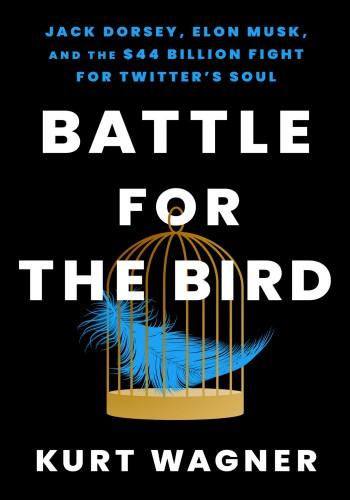
Battle for the Bird: Jack Dorsey, Elon Musk, and the $44 Billion Fight for Twitter's Soul
by
Kurt Wagner
Published 20 Feb 2024
Roth wrote, ‘god help us [this] makes me think he wants to share it publicly.’ ” Twitter, December 12, 2022, 10:45 a.m., https://twitter.com/bariweiss/status/1602374115867754496. CHAPTER 11: MAXI JACK services like Facebook, YouTube, and Snapchat were quick to cut Trump’s microphone: Sarah Frier, “Trump Banned from Snapchat for Trying to Incite Violence,” Bloomberg, January 13, 2021, https://www.bloomberg.com/news/articles/2021-01-14/trump-is-banned-from-snapchat-for-trying-to-incite-violence?sref=dZ65CIng. Reddit banned one of its popular pro-Trump discussion forums: Mike Isaac and Kate Conger, “Reddit Bans Forum Dedicated to Supporting Trump, and Twitter Permanently Suspends His Allies Who Spread Conspiracy Theories,” New York Times, January 8, 2021, https://www.nytimes.com/2021/01/08/us/politics/reddit-bans-forum-dedicated-to-supporting-trump-and-twitter-permanently-suspends-his-allies-who-spread-conspiracy-theories.html.
…
Down south in Los Angeles, Evan Spiegel was routinely cooking up new, bizarre ways for teenagers to share on Snapchat, like photo filters that made your face look like a dog or posts that disappeared after twenty-four hours, called Stories. Facebook had an entire stable of products, including Instagram, WhatsApp, and virtual reality headsets, and CEO Mark Zuckerberg was launching new stand-alone apps every couple of months. Most of those apps flopped, sure, but the point was that Facebook was consistently trying new things—or at least trying to copy things that Snapchat came up with. Even TikTok, a video app owned by a Chinese tech giant called ByteDance, was blowing up in the U.S. thanks to its focus on short, looping videos.
…
With just days left in his presidency, services like Facebook, YouTube, and Snapchat were quick to cut Trump’s microphone. They desperately wanted to avoid looking like they condoned the violence from the Capitol, or the president’s stolen election claims. Within a matter of days, Trump lost access to hundreds of millions of followers across the world. Facebook put Trump’s account in a two-week time-out. YouTube gave Trump a one-week ban. Both companies soon extended those suspensions indefinitely. Reddit banned one of its popular pro-Trump discussion forums after users there “glorified and incited the violence” from the U.S. Capitol. Snapchat banned him forever.

Hype: How Scammers, Grifters, and Con Artists Are Taking Over the Internet―and Why We're Following
by
Gabrielle Bluestone
Published 5 Apr 2021
In exchange for the free land rental, McFarland promised to “furnish thousands of guests for both weekends of the festival, creating a unique opportunity for Roker Point Estates to capture a relevant demographic who might be interested in purchasing land on Great Exuma or directly know qualified purchasers” and to “make commercially reasonable efforts to introduce the Roker Point Estates to Snapchat who will be running a global story during the festival. If Roker Point Estates chooses to buy media on Snapchat, they may expect millions of impressions.” McFarland did, at least, deliver on that last promise. Still, somehow, McFarland had a deal. Around the same time, Brown resigned abruptly from the festival, sending along with his termination an invoice for $68,106 for services rendered by his company, Institute.
…
Documentary Film. 120.Emma Brockes, "It’s Not Just the Fyre Festival—This is the Golden Age of the Social Media Con | Emma Brockes," The Guardian, January 17, 2019, https://www.theguardian.com/commentisfree/2019/jan/17/fyre-festival-social-media-con-documentaries. 121.Kaya Yurieff, "Snapchat Stock Loses $1.3 Billion after Kylie Jenner Tweet," CNNMoney, February 23, 2018, https://money.cnn.com/2018/02/22/technology/snapchat-update-kylie-jenner/index.html. 122.Brian Feldman, BNet.Substack.com. 123.Alexandra Sternlicht, "Instagram Influencer Danielle Bernstein (WeWoreWhat) Launches Tech Suite For Influencers," Forbes, October 2, 2019, https://www.forbes.com/sites/alexandrasternlicht/2019/10/02/instagram-influencer-danielle-bernstein-weworewhat-launches-tech-suite-for-influencers/. 124.Rachel Strugatz, "How WeWoreWhat’s Danielle Bernstein Sold Nearly $2 Million in Swimwear in 12 Hours," The Business of Fashion, May 3, 2019, https://www.businessoffashion.com/articles/retail/how-weworewhats-danielle-bernstein-sold-nearly-2-million-in-swimwear-in-12-hours. 125.Tanya Chen, "A Poshmark Reseller Somehow Got Her Hands on a Major Fashion Influencer’s Unreleased Clothing.
…
Still, it’s a low-stakes game for most brands and the influencers they rely on, exchanging samples, gifts, and direct deposits for tags, links, and favorable reviews. For most of the companies involved, the worst that can happen is that an influencer will fail to advertise the goods on their page. (Given the contractual nature of these agreements, it also gives companies an easy recourse, like the time Snapchat sued the actor Luka Sabbat for “failing to influence” by reneging on a $45,000 deal to do a series of swipe-up stories modeling the company’s line of camera sunglasses called Specs.20) But in general, these companies tend to be pretty chill about the deals, because just like the Audis and Van Cleefs who advertised with Duchovny’s fake family, these brands aren’t necessarily looking for clicks—they’re looking for credibility.
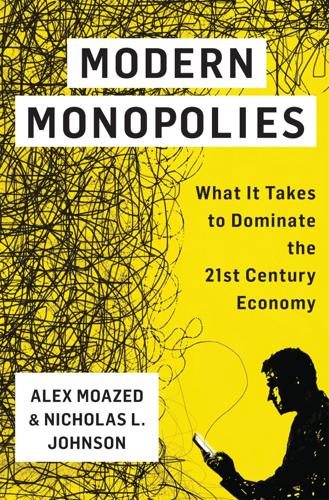
Modern Monopolies: What It Takes to Dominate the 21st Century Economy
by
Alex Moazed
and
Nicholas L. Johnson
Published 30 May 2016
In 2015, the top three members of Forbes’s list of most valuable brands were platform companies, as were eleven of the top twenty.15 All of the companies at the heart of the social media boom were also platforms, including Facebook, Twitter, and LinkedIn. In fact, most of today’s biggest IPOs and acquisitions are platforms, as are almost all of the most successful startups. The list includes Apple, Google, Microsoft, Facebook, Twitter, Amazon, eBay, Instagram, YouTube, Twitch, Snapchat, WhatsApp, Waze, Uber, Lyft, Handy, Airbnb, Pinterest, Square, Social Finance, Kickstarter, and more. (See Figure 1.4 for examples of platform startups and their latest valuations.) The growth of platforms isn’t isolated to the United States either; platform companies such as Alibaba, Tencent, Baidu, and Rakuten have taken over China and much of Asia.
…
To encourage this, Apple provides a cheap software development kit and many developer application program interfaces (APIs) that allow developers to tap into the core functionality provided by the device. A big part of the value that iOS provides to developers is that it allows them to easily access and combine the phone’s many capabilities to create new experiences, from Candy Crush to Snapchat to Tinder. The developers of all of these apps used iOS as a platform to create something new. Remember Apple’s old slogan: “There’s an app for that.” Apple knew early on that a large part of the value of the iPhone wasn’t just in the phone itself but rather in the new experiences that it enabled developers to build for users.
…
As we saw when Nokia and BlackBerry lost out to Apple and Google, any features that their phones could offer were far less valuable than the value a consumer received from a large community of app developers. Network effects are “the strongest economic moat of all,” Bill Gurley, of venture capital firm Benchmark, has said.7 Talking heads have been speculating about Facebook’s decline for years, especially with the rise of new social media companies like Twitter and Snapchat and the shift on smartphones from social networks to messaging platforms. Yet as of this writing, Facebook has beaten Wall Street projections in eleven of the last twelve quarters, and its Facebook Messenger platform has taken off, acquiring more than 500 million users within a couple years’ time.

Stolen Focus: Why You Can't Pay Attention--And How to Think Deeply Again
by
Johann Hari
Published 25 Jan 2022
I turned to Adam, ready to laugh, to share the irony with him, to release my anger—but he was in a corner, holding his phone under his jacket, flicking through Snapchat. At every stage in this trip, he had broken his promise. When the plane first touched down in New Orleans two weeks before, he immediately took out his phone, while we were still in our seats. “You promised not to use it,” I said. He replied: “I meant I wouldn’t make phone calls. I can’t not use Snapchat and texting, obviously.” He said this with baffled honesty, as if I had asked him to hold his breath for ten days. I watched him scrolling through his phone in the Jungle Room silently.
…
He thought his new appointment meant Google was serious about exploring these questions. He knew there was enthusiasm for it among his fellow workers, and he believed in the good faith of his bosses. He was assigned a desk, and—in effect—left to think. So he started to research the effects of many things. For example, he looked at the way Snapchat hooks teenagers. The app had an option called “Snapchat streaks,” where two friends—almost always teens—would check in with each other every day through the app. Every day they checked in, their streak got longer, so you would aim to build up a streak of two hundred, three hundred, four hundred days, all on a brightly colored display full of emojis.
…
At moments, I could still see in him traces of the joyful little boy who sang “Viva Las Vegas,” but it was like that person had broken into smaller, disconnected fragments. He struggled to stay with a topic of conversation for more than a few minutes without jerking back to a screen or abruptly switching to another topic. He seemed to be whirring at the speed of Snapchat, somewhere where nothing still or serious could reach him. He was intelligent, decent, kind—but it was like nothing could gain any traction in his mind. During the decade in which Adam had become a man, this fracturing seemed to be happening—to some degree—to many of us. The sensation of being alive in the early twenty-first century consisted of the sense that our ability to pay attention—to focus—was cracking and breaking.

The Costs of Connection: How Data Is Colonizing Human Life and Appropriating It for Capitalism
by
Nick Couldry
and
Ulises A. Mejias
Published 19 Aug 2019
Although WhatsApp claimed it was “built . . . around the goal of knowing as little about you as possible,” a company blog post following WhatsApp’s $19 billion acquisition by Facebook admitted that its logbook of customer phone numbers would become connected with Facebook’s systems, an admission that led to a European Commission fine for Facebook and a string of legal challenges.26 WhatsApp’s own terms now make clear that users are likely to yield up their entire mobile address book when they use the service, and there is evidence that WhatsApp also stores metadata on the time, duration, and location of every communication.27 Snapchat’s disappearing messages have been mimicked by Instagram, also now part of Facebook, and the US Federal Trade Commission has challenged Snapchat on whether sent images really disappear.28 Meanwhile, the growing popularity of ad blocking29 may simply incentivize marketers to find smarter ways of tracking people so that they can be reached with ads. As the CEO of PageFair, a company specializing in such tactics, noted, “Tamper-proof ad serving technology has matured to the point where publishers can serve ads on the blocked web.”30 Whatever the local resistances and derogations, extracting data from a “naturally connected” world has become basic to the very nature of brands: “Understanding that customers are always connected and consuming . . . allows marketers to think of both their digital and offline touchpoints as one fluid and integrated brand presence.”31 This vision of an economy enhanced by the data-gathering possibilities created by “connection” is shared by both market capitalism and state-led capitalism.
…
I wonder in hindsight if maybe we didn’t build a movement, but rather we built a social media presence that privileged individuals over community, virtual validation over empathy, leadership without accountability and responsibility.”3 Consider now a third starting point—the question that Irish novelist Sally Rooney, dubbed “the J. D. Salinger of the Snapchat generation,” recently asked herself: “Why wasn’t I drinking enough water?”4 Following a series of fainting spells, doctors advised her to increase her hydration because, like many busy people, she sometimes forgets to take a water break. Fortunately, as the cliché goes, there’s an app for that. The makers of Water Minder offer a program to bypass the part of the brain that regulates thirst, reminding you to drink regularly to meet predefined quotas while tracking your progress.
…
Apple’s subsequent Privacy Policy states that collected data “will not be associated with [a user’s] IP address,”24 yet iPhone features still support the surveillance needs of marketers. Both the iBeacon service and the iPhone’s built-in Wallet app enable push notifications from marketers.25 Responsiveness to surveillance concerns is a selling point for other players too, at least outside China. WhatsApp distinguishes itself by its end-to-end message encryption, while Snapchat has its posted messages disappear, at least from the users’ view, after a short period. But the actual position is more complex. Although WhatsApp claimed it was “built . . . around the goal of knowing as little about you as possible,” a company blog post following WhatsApp’s $19 billion acquisition by Facebook admitted that its logbook of customer phone numbers would become connected with Facebook’s systems, an admission that led to a European Commission fine for Facebook and a string of legal challenges.26 WhatsApp’s own terms now make clear that users are likely to yield up their entire mobile address book when they use the service, and there is evidence that WhatsApp also stores metadata on the time, duration, and location of every communication.27 Snapchat’s disappearing messages have been mimicked by Instagram, also now part of Facebook, and the US Federal Trade Commission has challenged Snapchat on whether sent images really disappear.28 Meanwhile, the growing popularity of ad blocking29 may simply incentivize marketers to find smarter ways of tracking people so that they can be reached with ads.
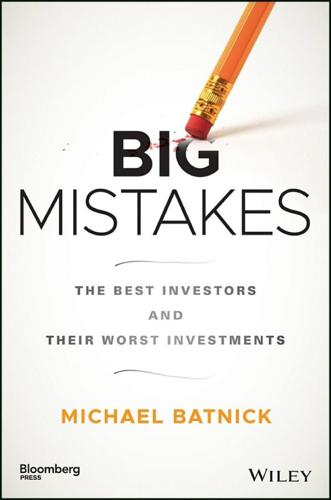
Big Mistakes: The Best Investors and Their Worst Investments
by
Michael Batnick
Published 21 May 2018
Sacca estimates his decision to not invest in Dropbox cost him “hundreds of millions of dollars.”13 At close to a $10 billion valuation, Dropbox is one of the biggest misses of Sacca's career. Chris Sacca spoke to Bill Simmons about another miss – passing on Snap, the parent company of Snapchat. At the time, Snapchat was widely considered to be an app ideal for sending photos that are not safe for work. Images sent on Snapchat (called Snaps) automatically disappear seconds after they are viewed. Snap continued developing new functionality, so today users can create Stories, a series of photos that don't disappear. Sacca couldn't see Snap's potential and passed.14 Now, Snapchat functions like a full social media or messaging app, and it has a huge user base, especially among Generation Z.
…
Ackman targeting, 90 credit default swaps, 133 McDonald's, Ackman targeting, 89–90 Mensa, 37–38 Meriwether, John, 35, 38 Merrill Lynch, 40 Merton, Robert, 39 Nobel Prize in Economics, 40–41 Microsoft, shareholder wealth, 109 Mohawk Data, trading level, 70 Money Game, The, (Smith), 68 Morgan Growth Fund, decline, 50 Morgan, Walter, 47–48 Morse, Charles, 19 Mortgage bonds, insuring, 133 Mullins, David, 39 Munger, Charles, 37, 78, 119, 137, 139 investment, 140 returns, 141 wealth, compounding, 143 Mungerisms, 3, 140 Mutual funds, superiority, 47–48 NASDAQ 100 index, increase, 57, 143 NASDAQ Composite, gains, 112 NASDAQ peak, 105 National Indemnity, Buffett purchase, 78 National Mutual, losses, 125 National Student Marketing, shares purchase, 70 Nebraska Furniture Mart, store opening, 78 Neill, Humphrey B., 67 Netflix, 139–140 Net working capital, 5 term, usage, 4 New Century Financial, 134 Newton, Isaac, 37 New York Institute of Finance, 4 New York Stock Exchange (NYSE), 4 listed stock trading, 135 opening, 147 shares, trading level (1934), 6–7 New York Vaporizing Co. (Twain investment), 28 No Bull (Steinhardt), 58, 60 Nocera, Joe, 90 Not safe for work (NSFW), Snapchat categorization, 151 Nudge (Thaler), 126 One‐decision stocks, 50 Options, usage, 131 Oreos, comparison, 91 Oregon Transcontinental Railroad, Twain share purchase, 29 O'Reilly Automotive, Sequoia holding, 111 Overconfidence, impact, 61, 75–76, 82 Overtrading, 159 Paige Compositor Manufacturing Company, 31 Paige, James, 30 Paine Webber, Livermore exit, 16 Palmolive, comparison, 91 Paulson & Co., founding, 132 Paulson, John, 3, 129, 131–132 merger/arbitrage, 133 Pearson, Mike, 113 Buffett, contrast, 114 Pellegrini, Paolo, 132–133 Penn Dixie Cement, shares (purchase), 58 Pershing Square Capital Management, 89 Pittsburgh National Bank, 101 Plasmon (Twain investment), 28 Polaroid, trading level, 70 Poppe, David, 114 Portfolio turnover, 69 Portugal, Ireland, Italy, Greece, Spain (PIIGS), 158 Post‐go‐go years meltdown, 147 Post III, William, 131 Price, Teddy, 19–20 Princeton University, 47–48 Private/public investing, history, 149 Profit sharing, 68 Prospect Theory (Kahneman/Tversky), 126 Pyramid schemes, 93 Qualcomm, gains, 57 Quantitative easing program, 134–135 Quantum Fund, 100, 103 Ramirez, Alberto/Rosa, 132 Rational thinking, suspension, 27 Recession, odds (calculation), 38 Renaissance Technologies, 135 Return on equity, term (usage), 4 Reverse crash, 100 Risk, arrival, 32 Risk management, 23 Roaring Twenties, bull market cycle, 7 Robertson, Julian, 58 Roche, Cullen, 99 Rockefeller, John, 30 Rogers, Henry (“Hell Hound”), 30–32 Rooney, Frank, 80, 81 Rosenfeld, Eric, 39, 41 Ruane, Bill, 4, 109, 112 Ruane & Cunniff, 112 Ruane, Cunniff & Goldfarb, 110–111 Russell 3000, 135 Russia, Quantum Fund loss, 103–104 Sacca, Chris, 145, 149–150 Salomon Brothers, 39 Buffett investment, 79 Samuelson, Paul (remarks), 51 San Francisco Call, 31 Schloss, Walter, 4 Schmidt, Eric, 150 Scholes, Myron, 39 Nobel Prize in Economics, 40–41 Schroeder, Alice, 80 Schwager, Jack, 159 Sears, Ackman targeting, 90 Sears Holdings, 109 Securities and Exchange Act, 7 Securities and Exchange Commission (SEC) 13D registration, 90 creation, 22 Security Analysis (Graham), 3–5 See's Candy Berkshire Hathaway purchase, 78 purchase, 142 Self‐esteem, satisfaction (impact), 75–76 Sequoia Fund, 107 operation, 110–111 Shiller, Robert, 75–76, 87 Short squeeze, 93 Silvan, Jon, 94 Simmons, Bill, 151 Simons, Jim, 135 Slack, Sacca investment, 149 Smith, Adam, 68, 121 Snapchat, 151 Snap, going public, 151 Snowball, The, (Schroeder), 80 Social activities, engagement, 87–88 Soros Fund Management, losses, 105 Soros, George, 58, 60, 100, 103 interaction, 102 reform, 121 South Sea Company shares, 37 Speculation, 15 avoidance, 28 SPY, 62 Stagecoach Corporate Stock Fund, 52 Stamp revenues, trading, 141–142 Standard Oil, 30 Standard & Poor's 500 (S&P500) ETF, 62 gains, 112, 114 performance, comparison, 119 shorting, 163 Valeant performance, comparison, 113 Steinhardt, Fine, Berkowitz & Company, opening, 58 Steinhardt, Michael, 55, 58 performance record, 59–60 Steinhardt Overseas Fund, 60 Stoker, Bram, 30 Stock market, choices, 114–115 Stocks crashing/reverse crashing, 100 return, 99 stock‐picking ability, 88 Stock trader, training, 18 Strategic Aggressive Investing Fund, 102 Sunk cost, 110 Sun Valley Conference, 57 “Superinvestors of Graham‐and‐Doddsville, The,” 111–112 Taleb, Nassim, 42 Target, Ackman targeting, 90 TDP&L, 50 Tech bubble, inflation, 57 Technivest, 50 Thaler, Richard H., 75, 126 Thinking, Fast and Slow, (Kahneman), 15 Thorndike, Dorain, Paine & Lewis, Inc., 48 Time horizons, 120 Time Warner, AOL merger, 49 Tim Ferriss Show, The, (podcast), 150 Tim Hortons, spinoff, 89 Tract on Monetary Reform, A, (Keynes), 125–126 Trader (Jones), 119 Trustees Equity Fund, decline, 50 Tsai, Jerry, 65, 68 stocks, trading, 69 ten good games, 71 Tsai Management Research, sale, 70 Tversky, Amos, 81 Twain, Mark (Samuel Clemens), 25, 27, 75 bankruptcy filings, 32 money, losses, 27–32 public opinion, hypersensitivity, 31 Twilio, Sacca investment, 149 Twitter, Sacca investment, 149–150 Uber, Sacca investment, 149 Undervalued issues, selection, 10 Union Pacific, shares (sale), 18 United Copper, cornering, 19 United States housing bubble, 132 University Computing, trading level, 70 US bonds international bonds, spreads, 41 value, decline, 61 U.S. housing bubble, impact, 132 U.S.
…
(Twain investment), 28 No Bull (Steinhardt), 58, 60 Nocera, Joe, 90 Not safe for work (NSFW), Snapchat categorization, 151 Nudge (Thaler), 126 One‐decision stocks, 50 Options, usage, 131 Oreos, comparison, 91 Oregon Transcontinental Railroad, Twain share purchase, 29 O'Reilly Automotive, Sequoia holding, 111 Overconfidence, impact, 61, 75–76, 82 Overtrading, 159 Paige Compositor Manufacturing Company, 31 Paige, James, 30 Paine Webber, Livermore exit, 16 Palmolive, comparison, 91 Paulson & Co., founding, 132 Paulson, John, 3, 129, 131–132 merger/arbitrage, 133 Pearson, Mike, 113 Buffett, contrast, 114 Pellegrini, Paolo, 132–133 Penn Dixie Cement, shares (purchase), 58 Pershing Square Capital Management, 89 Pittsburgh National Bank, 101 Plasmon (Twain investment), 28 Polaroid, trading level, 70 Poppe, David, 114 Portfolio turnover, 69 Portugal, Ireland, Italy, Greece, Spain (PIIGS), 158 Post‐go‐go years meltdown, 147 Post III, William, 131 Price, Teddy, 19–20 Princeton University, 47–48 Private/public investing, history, 149 Profit sharing, 68 Prospect Theory (Kahneman/Tversky), 126 Pyramid schemes, 93 Qualcomm, gains, 57 Quantitative easing program, 134–135 Quantum Fund, 100, 103 Ramirez, Alberto/Rosa, 132 Rational thinking, suspension, 27 Recession, odds (calculation), 38 Renaissance Technologies, 135 Return on equity, term (usage), 4 Reverse crash, 100 Risk, arrival, 32 Risk management, 23 Roaring Twenties, bull market cycle, 7 Robertson, Julian, 58 Roche, Cullen, 99 Rockefeller, John, 30 Rogers, Henry (“Hell Hound”), 30–32 Rooney, Frank, 80, 81 Rosenfeld, Eric, 39, 41 Ruane, Bill, 4, 109, 112 Ruane & Cunniff, 112 Ruane, Cunniff & Goldfarb, 110–111 Russell 3000, 135 Russia, Quantum Fund loss, 103–104 Sacca, Chris, 145, 149–150 Salomon Brothers, 39 Buffett investment, 79 Samuelson, Paul (remarks), 51 San Francisco Call, 31 Schloss, Walter, 4 Schmidt, Eric, 150 Scholes, Myron, 39 Nobel Prize in Economics, 40–41 Schroeder, Alice, 80 Schwager, Jack, 159 Sears, Ackman targeting, 90 Sears Holdings, 109 Securities and Exchange Act, 7 Securities and Exchange Commission (SEC) 13D registration, 90 creation, 22 Security Analysis (Graham), 3–5 See's Candy Berkshire Hathaway purchase, 78 purchase, 142 Self‐esteem, satisfaction (impact), 75–76 Sequoia Fund, 107 operation, 110–111 Shiller, Robert, 75–76, 87 Short squeeze, 93 Silvan, Jon, 94 Simmons, Bill, 151 Simons, Jim, 135 Slack, Sacca investment, 149 Smith, Adam, 68, 121 Snapchat, 151 Snap, going public, 151 Snowball, The, (Schroeder), 80 Social activities, engagement, 87–88 Soros Fund Management, losses, 105 Soros, George, 58, 60, 100, 103 interaction, 102 reform, 121 South Sea Company shares, 37 Speculation, 15 avoidance, 28 SPY, 62 Stagecoach Corporate Stock Fund, 52 Stamp revenues, trading, 141–142 Standard Oil, 30 Standard & Poor's 500 (S&P500) ETF, 62 gains, 112, 114 performance, comparison, 119 shorting, 163 Valeant performance, comparison, 113 Steinhardt, Fine, Berkowitz & Company, opening, 58 Steinhardt, Michael, 55, 58 performance record, 59–60 Steinhardt Overseas Fund, 60 Stoker, Bram, 30 Stock market, choices, 114–115 Stocks crashing/reverse crashing, 100 return, 99 stock‐picking ability, 88 Stock trader, training, 18 Strategic Aggressive Investing Fund, 102 Sunk cost, 110 Sun Valley Conference, 57 “Superinvestors of Graham‐and‐Doddsville, The,” 111–112 Taleb, Nassim, 42 Target, Ackman targeting, 90 TDP&L, 50 Tech bubble, inflation, 57 Technivest, 50 Thaler, Richard H., 75, 126 Thinking, Fast and Slow, (Kahneman), 15 Thorndike, Dorain, Paine & Lewis, Inc., 48 Time horizons, 120 Time Warner, AOL merger, 49 Tim Ferriss Show, The, (podcast), 150 Tim Hortons, spinoff, 89 Tract on Monetary Reform, A, (Keynes), 125–126 Trader (Jones), 119 Trustees Equity Fund, decline, 50 Tsai, Jerry, 65, 68 stocks, trading, 69 ten good games, 71 Tsai Management Research, sale, 70 Tversky, Amos, 81 Twain, Mark (Samuel Clemens), 25, 27, 75 bankruptcy filings, 32 money, losses, 27–32 public opinion, hypersensitivity, 31 Twilio, Sacca investment, 149 Twitter, Sacca investment, 149–150 Uber, Sacca investment, 149 Undervalued issues, selection, 10 Union Pacific, shares (sale), 18 United Copper, cornering, 19 United States housing bubble, 132 University Computing, trading level, 70 US bonds international bonds, spreads, 41 value, decline, 61 U.S. housing bubble, impact, 132 U.S.
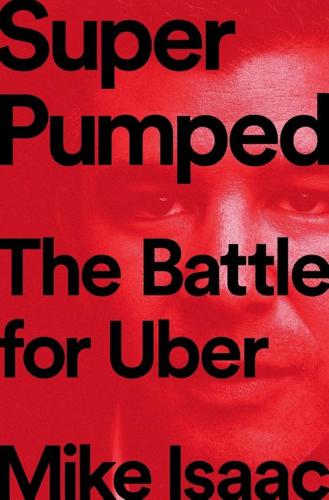
Super Pumped: The Battle for Uber
by
Mike Isaac
Published 2 Sep 2019
Chapter 8: PAS DE DEUX 72 Roughly one third: Artturi Tarjanne, “Why VC’s Seek 10x Returns,” Activist VC Blog (blog), Nexit Adventures, January 12, 2018, http://www.nexitventures.com/blog/vcs-seek-10x-returns/. 74 Kalanick frequently compared: Amir Efrati, “Uber Group’s Visit to Seoul Escort Bar Sparked HR Complaint,” The Information, March 24, 2017, https://www.theinformation.com/articles/uber-groups-visit-to-seoul-escort-bar-sparked-hr-complaint. 75 “Software is eating the world”: Andreessen Horowitz, Software Is Eating the World, https://a16z.com/. 75 deals increased by 73 percent: Richard Florida and Ian Hathaway, “How the Geography of Startups and Innovation Is Changing,” Harvard Business Review, November 27, 2018, https://hbr.org/2018/11/how-the-geography-of-startups-and-innovation-is-changing. 75 billions invested post-2010: Center for American Entrepreneurship, “Rise of the Global Startup City,” Startup Revolution, http://startupsusa.org/global-startup-cities/. 75 emerged as the world’s epicenter: Center for American Entrepreneurship, “Rise of the Global Startup City.” 76 “to organize the world’s information”: “From the Garage to the Googleplex,” About, Google, https://www.google.com/about/our-story/. 76 controversial financial instrument: “The Effects of Dual-Class Ownership on Ordinary Shareholders,” Knowledge@Wharton, June 30, 2004, http://knowledge.wharton.upenn.edu/article/the-effects-of-dual-class-ownership-on-ordinary-shareholders/. 77 “An Owner’s Manual For Google Investors”: Larry Page and Sergey Brin, “2004 Founders’ IPO Letter,” Alphabet Investor Relations, https://abc.xyz/investor/founders-letters/2004/ipo-letter.html. 77 $3.5-billion acquisition: “Snapchat Spurned $3 Billion Acquisition Offer from Facebook,” Digits (blog), Wall Street Journal, November 13, 2013, https://blogs.wsj.com/digits/2013/11/13/snapchat-spurned-3-billion-acquisition-offer-from-facebook/. Chapter 9: CHAMPION’S MINDSET 82 Kalanick once said onstage: Liz Gannes, “Travis Kalanick: Uber Is Raising More Money to Fight Lyft and the ‘Asshole’ Taxi Industry,” Recode, May 28, 2014, https://www.recode.net/2014/5/28/11627354/travis-kalanick-uber-is-raising-more-money-to-fight-lyft-and-the. 82 “There’s been so much corruption”: Andy Kessler, “Travis Kalanick: The Transportation Trustbuster,” Wall Street Journal, January 25, 2013, https://www.wsj.com/articles/SB10001424127887324235104578244231122376480. 83 “we’re crushing it”: Alexia Tsotsis, “Spotted!
…
A tech bro’s greatest worry was whether or not he was working at that year’s hottest “unicorn”—a noun coined in 2013 by a venture capitalist who used it to describe companies valued at more than $1 billion. By the fall of 2015, Uber was the unicorn to end all unicorns; every tech bro had to be there. Uber wasn’t alone as a haven for tech bros. Snapchat, once a darling in the Valley for its innovative approach to social networking, was under fire for emails its founder had sent to fraternity brothers during his college days at Stanford. (“Fuck Bitches Get Leid,” [sic] one read.) A group of Dropbox and Airbnb employees were filmed trying to kick a group of San Francisco kids off a soccer field to make room for their corporate league game.
…
Fast-rising rents pushed wage earners out of San Francisco, while landlords flipped those former apartments to new, wealthier tenants. The “gig economy” unleashed by companies like Uber, Instacart, TaskRabbit, and DoorDash spurred an entirely new class of workers—the blue-collar techno-laborer. With the rise of Facebook, Google, Instagram, and Snapchat, venture capitalists looked everywhere to fund the next Mark Zuckerberg, Larry Page, or Evan Spiegel—the newest brilliant mind who sought, in the words of Steve Jobs, to “make a dent in the universe.” And as more money flowed into the Valley from outside investors—from hedge funds and private equity firms, sovereign wealth funds and Hollywood celebrities—the balance of power shifted from those who held the purse strings to the founders who brought the bright ideas and willingness to execute them.
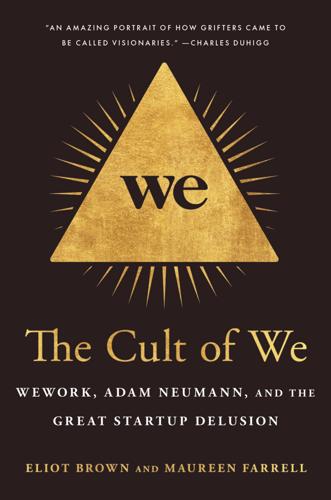
The Cult of We: WeWork, Adam Neumann, and the Great Startup Delusion
by
Eliot Brown
and
Maureen Farrell
Published 19 Jul 2021
In 2011, VC firms raised $24 billion from investors, nearly double their haul of 2009. This outpouring of money resulted in a burst of startups that would go on to reshape the Silicon Valley landscape and become household names in Americans’ daily lives. Between 2009 and 2012, VCs wrote early checks to startups like Uber, Airbnb, Pinterest, Instagram, Snapchat, and Square. Suddenly you couldn’t walk into a coffee shop in Silicon Valley without hearing talk of the next industry ripe to be “disrupted” by a startup. Amid all the optimism, there was a noticeable change in venture capital strategy that would set apart this generation of startups from their prerecession forebearers.
…
Just six months after the T. Rowe Price deal had valued WeWork at $5 billion, Fidelity’s investment valued WeWork at $10 billion. The company was vaulted into a whole new category. Suddenly WeWork was the seventh most valuable startup in the country. Now it would be mentioned in the same breath as Airbnb, Uber, and Snapchat; it was worth more than the $9 billion blood-testing company Theranos and more than all but a handful of publicly traded office landlords. Even the nation’s largest publicly traded office owner, Boston Properties, was now within reach, at $20 billion. WeWork was by far the most valuable startup in New York City.
…
Dunlevie tried to paint a dark picture for Neumann of what could come if he spurned any guardrails. “Absolute power corrupts absolutely,” he told him, parroting British historian John Dalberg-Acton’s famous quote. Neumann responded by pointing out what he saw as Benchmark’s hypocrisy. Benchmark backed both Snapchat and Uber, two companies in which the CEOs had enhanced voting power that gave them a firm grip on their companies. Amid the influx of money from mutual funds and others, the balance of power had shifted in Silicon Valley. Founders who looked and acted the part—decisive leadership, expansive vision—had plenty of sway over investors eager to place bets on the next Steve Jobs.

Utopia Is Creepy: And Other Provocations
by
Nicholas Carr
Published 5 Sep 2016
THE SEARCHERS ETERNAL SUNSHINE OF THE SPOTLESS AI MAX LEVCHIN HAS PLANS FOR US EVGENY’S LITTLE PROBLEM THE SHORTEST CONVERSATION BETWEEN TWO POINTS HOME AWAY FROM HOME CHARCOAL, SHALE, COTTON, TANGERINE, SKY SLUMMING WITH BUDDHA THE QUANTIFIED SELF AT WORK MY COMPUTER, MY DOPPELTWEETER UNDERWEARABLES THE BUS THE MYTH OF THE ENDLESS LADDER THE LOOM OF THE SELF TECHNOLOGY BELOW AND BEYOND OUTSOURCING DAD TAKING MEASUREMENT’S MEASURE SMARTPHONES ARE HOT DESPERATE SCRAPBOOKERS OUT OF CONTROL OUR ALGORITHMS, OURSELVES TWILIGHT OF THE IDYLLS THE ILLUSION OF KNOWLEDGE WIND-FUCKING THE SECONDS ARE JUST PACKED MUSIC IS THE UNIVERSAL LUBRICANT TOWARD A UNIFIED THEORY OF LOVE <3S AND MINDS IN THE KINGDOM OF THE BORED, THE ONE-ARMED BANDIT IS KING THESES IN TWEETFORM THE EUNUCH’S CHILDREN: ESSAYS AND REVIEWS FLAME AND FILAMENT IS GOOGLE MAKING US STUPID? SCREAMING FOR QUIET THE DREAMS OF READERS LIFE, LIBERTY, AND THE PURSUIT OF PRIVACY HOOKED MOTHER GOOGLE THE LIBRARY OF UTOPIA THE BOYS OF MOUNTAIN VIEW THE EUNUCH’S CHILDREN PAST-TENSE POP THE LOVE THAT LAYS THE SWALE IN ROWS THE SNAPCHAT CANDIDATE WHY ROBOTS WILL ALWAYS NEED US LOST IN THE CLOUD THE DAEDALUS MISSION Acknowledgments Index UTOPIA IS CREEPY Introduction SILICON VALLEY DAYS IT WAS A SCENE out of an Ambien nightmare: A jackal with the face of Mark Zuckerberg stood over a freshly killed zebra, gnawing at the animal’s innards.
…
By extending the collection of data to once private spheres of personal activity and then centralizing the storage and processing of that data, the net is shifting the balance back toward the control function. MY COMPUTER, MY DOPPELTWEETER November 22, 2013 NOW THAT WE’RE ALL microcelebrities, we all need micropublicists. No mortal can keep up with Twitter, Facebook, Instagram, Tumblr, LinkedIn, Snapchat, ad nauseam, all by herself. There’s just not enough real time in the day. The ever solicitous Google is rushing to our aid. It’s developing a software program that will will take over the hard work of maintaining one’s social media presence. The company was this week granted a patent for “automated generation of suggestions for personalized reactions in a social network.”
…
Every time a network gets quicker, we get antsier. “Every millisecond matters,” says a Google engineer. As we experience faster flows of information online, we become, in other words, less patient people. But impatience is not just a network effect. The phenomenon is amplified by the constant buzz of Facebook, Twitter, Snapchat, texting, and social networking in general. Society’s “activity rhythm” has never been so harried. Impatience is a contagion spread from gadget to gadget. All of this has obvious importance to anyone involved in producing online media or running data centers. But it also has implications for how all of us think, socialize, and in general live.
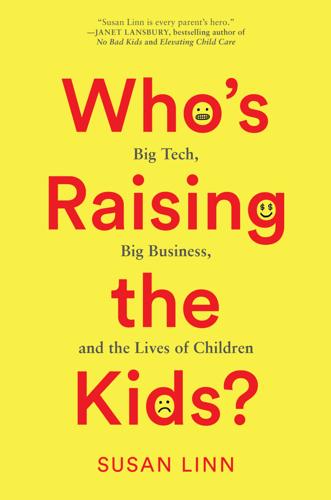
Who’s Raising the Kids?: Big Tech, Big Business, and the Lives of Children
by
Susan Linn
Published 12 Sep 2022
Of course, the major social media sites are purportedly just for teens and adults, so you might think their biases or record of choosing profit over truth or accuracy would have no effect on younger children. Yet, tweens and even younger children have been using sites like YouTube, Snapchat, TikTok, Instagram, and Facebook for years.27 Just as adults do, kids turn to social media for information about the world.28 And also as adults do, kids use social media to represent themselves to the world, including posting curated selfies and other pictures. But the “self” they present isn’t necessarily really what they really look like. That Instagram and Snapchat, among others, provide tools enabling users to “beautify” themselves is problematic on so many levels. For young girls, already self-conscious about their appearance, these tools send the message that their looks aren’t acceptable.
…
It provides for an independent outside audit of sites targeting kids, requires tech companies to consider the wellbeing of children into their design, empowers States Attorney General and the FTC to hold tech companies responsible for actions that harm children, and requires that all default settings for children be set at the most protective.23 Another proposed bill, the Kids Internet Design and Safety Act, known as the KIDS Act,24 addresses unscrupulous tech marketing techniques that target children and teens under the age of sixteen—not just on platforms overtly aimed at kids but also on platforms like Instagram and Snapchat that ignore the fact that they are heavily used by children.25 If passed, the KIDS Act will protect children and young teens from techniques designed to keep them online indefinitely by banning autoplay, push notifications, endless scrolling, and those streaks on Snapchat that can keep kids up all night. It will also protect them from sneaky, insidious marketing that disguises itself as content by banning influencer marketing, like unboxing videos such as Ryan’s ToysReview.
…
In combination, these two phenomena drive a societal embrace of commercialism that powerfully affects children, both directly and indirectly. One major direct influence, for instance, is the huge popularity of social networking sites, which transform us and our children simultaneously into our own brands and into marketers for corporate brands. The selfies we post on platforms like Facebook, Snapchat, and Instagram can easily be digitally altered to erase physical flaws, real and imagined, just like marketers enhance photos and videos of the objects they sell. What we and our kids choose to post or not post online shapes our personal “brand.” As I write, one of the most popular online activities around the world for young children is watching other kids open boxes of toys on YouTube, Google’s popular social media platform.

Messing With the Enemy: Surviving in a Social Media World of Hackers, Terrorists, Russians, and Fake News
by
Clint Watts
Published 28 May 2018
Cornell University’s Social Media Lab found that its students preferred Snapchat to its forerunners Facebook and Twitter because of the platform’s “ephemerality”—their messages were temporary, not permanent, for all to see. Young college students can lower their inhibitions on Snapchat without worrying about their content being dumped in the open for public consumption. One student, Chang, noted, “The network is a lot smaller, and a lot closer. . . . On larger platforms, you have this large diverse group of friends. On Snapchat, it’s very few and it’s very selected. It would be your closest friends rather than a larger network of professors and other students that you met once in a class.”20 The younger generation’s addiction might be worse, but they’ve learned from their parents about what can happen when you post something on Facebook or Twitter that you grow to regret.
…
Jason Horowitz, “In Italian Schools, Reading, Writing and Recognizing Fake News,” The New York Times (October 18, 2017). https://www.ny times.com/2017/10/18/world/europe/italy-fake-news.html. 20. Katherine Quinn, “Cornell Researchers Study Snapchat’s Appeal,” Cornell Daily Sun (March 15, 2016). http://cornellsun.com/2016/03/15/cornell-researchers-study-snapchats-appeal. 21. Kayla Webley, “How the Nixon-Kennedy Debate Changed the World,” Time (September 23, 2010). http://content.time.com/time/nation/article/0,8599,2021078,00.html. EPILOGUE 1. Zack Beauchamp, “Trump’s Republican Party, explained in one photo.”
…
By sharing information, experiences, and opinions, social media was supposed to support free societies by connecting users who could collaboratively work through their differences—or so we were told. Initially, we laud each of these new platforms—YouTube, Facebook, Twitter, LinkedIn, Telegram, Instagram, Snapchat. Over time, though, each of these applications ultimately introduces unimagined negative outcomes. Not long after many across the world applauded Facebook for toppling dictators during the Arab Spring revolutions of 2010 and 2011, it proved to be a propaganda platform and operational communications network for the largest terrorist mobilization in world history, bringing tens of thousands of foreign fighters under the Islamic State’s banner in Syria and Iraq.

Don't Be Evil: How Big Tech Betrayed Its Founding Principles--And All of US
by
Rana Foroohar
Published 5 Nov 2019
It was an internal “early bird” warning system that alerted the company to start-ups that were doing well, while giving Facebook an unusually detailed look at what users were doing on those systems.4 In essence, Onavo represented a legal form of corporate spying, one that produced intel that Facebook used to both undermine existing competitors and cut untold numbers of new ventures off at the pass. In 2016, for example, Facebook began paying closer attention to Snapchat, the rival that had grown wildly popular among the younger set. Snapchat’s most distinguishing features were impermanence (instead of being immortalized on a “wall” until the end of time, messages sent via Snapchat would automatically disappear soon after being read) and its animated filters (a user could overlay a photo of themselves with, say, cat ears and whiskers). Coincidentally (or not) it was right at this time that Facebook’s own company Instagram launched a feature called Stories, with similar features.
…
There is no question about it: Our devices and the things we do on them are just as addictive as nicotine, food, drugs, or alcohol, and there is a trove of research that proves it. According to a Goldman Sachs report looking at this effect, the average user spends 50 minutes per day on Facebook, 30 minutes on Snapchat, and 21 minutes on Instagram. Add that up, and think about the effects on productivity and human relationships. Of course, for Facebook—and the apps it hosts on its platform—this is no happy accident. It has all been carefully strategized and executed. The attention merchants want us to remain plugged in, so that they can collect more data about us and our online habits.
…
And Cook is being somewhat hypocritical when he criticizes his competitors for “keeping people online for as long as possible,” given that Apple tries, with some exceptions, to do that, too, particularly via its promotion of the “freemium” gaming that hooked my son. But in this particular area, it’s true that other companies—Facebook, Twitter, Instagram, Snapchat, and Google—have the deeper problems. That’s because their core business fundamentally depends on data mining by manipulating behavior, using an odd mix of Las Vegas–style techniques and opaque algorithms to keep users hooked.7 These companies truly are attention merchants. We as consumers perceive their services to be free, but in reality, we are paying—unwittingly—not only with our attention but our data, which they go to great lengths to capture and then monetize.8 What is even more alarming, however, is how vulnerable their complex and opaque digital advertising systems are to exploitation, no matter how many people they put on the problem.
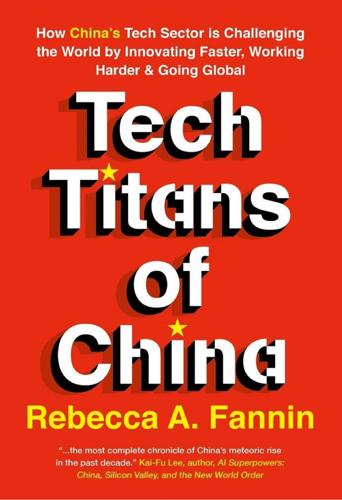
Tech Titans of China: How China's Tech Sector Is Challenging the World by Innovating Faster, Working Harder, and Going Global
by
Rebecca Fannin
Published 2 Sep 2019
These companies are mobile-centric for today’s always-on young generation, leverage the latest technologies in AI and data analytics, and set the pace in innovation and scale. Their business models and features are often ahead of the West and sometimes are copied. Toutiao uses machine learning to distribute personalized streams of aggregated content to online readers, a BuzzFeed with brains. TikTok spins out 15-second music video clips, akin to Snapchat’s Lens Challenges launched two years after the Chinese app. Meituan is a one-stop superapp that rolls in Uber Eats, Kayak, Yelp, and Groupon in a range of services including food delivery, travel bookings, and movie tickets. The Uber of China, ride-hailing startup Didi Chuxing, actually beat Uber in China.
…
YY helped to invent the livestreaming business model of making money by taking a chunk of revenue from promotional agencies and from fans virtual gifts to performers. BYTEDANCE: The New “B” In today’s fast-moving and intense digital markets, a new, shorter form of livestreaming—15-second music video selfies—has popped up. It’s popularized by Chinese upstart ByteDance, the most valuable startup in the world and a new challenger to Netflix, YouTube, Snapchat, and Tencent, as well as YY. ByteDance founder and serial entrepreneur Zhang Yiming has a knack for anticipating content trends and leveraging artificial intelligence to bring news and entertainment to an entirely new level. His apps leverage machine learning to find out what viewers and readers prefer and personalizes a feed or stream to them that gets more precise with each use.
…
In China, where Facebook is blocked, users spend well more than one hour daily on the app, more than the average user of Facebook or Tencent’s WeChat and Weibo. There’s also an English version, TopBuzz, with 36 million monthly users. Its short-video platform, TikTok, has surpassed 500 million monthly active users globally.10 And TikTok is ranked as one of the world’s top downloaded iPhone apps, in the top 20 league with YouTube, Instagram, Snapchat, and Messenger.11 TikTok got a boost internationally when its parent company bought and then merged in Musical.ly, a Chinese social video app with a large following outside China. ByteDance founder Zhang, 36, grew up in the southern province of Fujian and graduated as a software engineer from Nankai University in Tianjin.
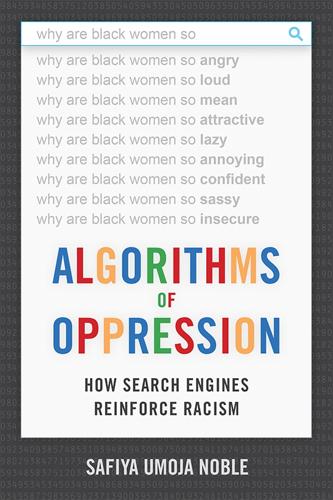
Algorithms of Oppression: How Search Engines Reinforce Racism
by
Safiya Umoja Noble
Published 8 Jan 2018
Additionally, some of the results such as the UK rock band Black Girls lack any relationship to Black women and girls. This is an interesting co-optation of identity, and because of the band’s fan following as well as possible search engine optimization strategies, the band is able to find strong placement for its fan site on the front page of the Google search. Figure 2.4. Snapchat faced intense media scrutiny in 2016 for its “Bob Marley” and “yellowface” filters that were decried as racist stereotyping. Published text on the web can have a plethora of meanings, so in my analysis of all of these results, I have focused on the implicit and explicit messages about Black women and girls in both the texts of results or hits and the paid ads that accompany them.
…
By comparing these to broader social narratives about Black women and girls in dominant U.S. popular culture, we can see the ways in which search engine technology replicates and instantiates these notions. This is no surprise when Black women are not employed in any significant numbers at Google. Not only are African Americans underemployed at Google, Facebook, Snapchat, and other popular technology companies as computer programmers, but jobs that could employ the expertise of people who understand the ramifications of racist and sexist stereotyping and misrepresentation and that require undergraduate and advanced degrees in ethnic, Black / African American, women and gender, American Indian, or Asian American studies are nonexistent.
…
With all of the aberrations and challenges that tech companies face in charges of data discrimination, the possibility of hiring recent graduates and advanced-degree holders in Black studies, ethnic studies, American Indian studies, gender and women’s studies, and Asian American studies with deep knowledge of history and critical theory could be a massive boon to working through the kinds of complex challenges facing society, if this is indeed the goal of the technocracy. From claims of Twitter’s racist trolling that drives people from its platform34 to charges that Airbnb’s owners openly discriminate against African Americans who rent their homes35 to racial profiling at Apple stores in Australia36 and Snapchat’s racist filters,37 there is no shortage of projects to take on in sophisticated ways by people far more qualified than untrained computer engineers, whom, through no fault of their own, are underexposed to the critical thinking and learning about history and culture afforded by the social sciences and humanities in most colleges of engineering nationwide.
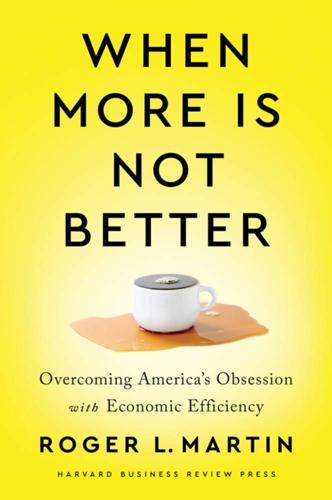
When More Is Not Better: Overcoming America's Obsession With Economic Efficiency
by
Roger L. Martin
Published 28 Sep 2020
Eliminating the competition feels like a natural goal; it means you’ve won. That’s why Intel attempted to eliminate Advanced Micro Devices, for which it was fined by the European Union.9 That is why Facebook is using its deep pockets and huge user base to empower its Instagram subsidiary to “kneecap” its rival Snapchat by copying Snapchat’s core product.10 Managers feel more secure when their customers have no alternative to the product or service they produce. Given that American monopolists from Rockefeller to Bill Gates to Mark Zuckerberg have become among the richest men in history, the appeal of establishing a monopoly is understandable.
…
Switching to an alternative can be painful and annoying. And there are, of course, the much discussed network effects in the modern economy. It makes lots of sense to use Facebook for your social networking, because everybody else with whom you would like to network is on Facebook, or to pick Instagram over Snapchat, because Instagram is integrated with its giant social-media owner, Facebook. These network effects are not just found in the online world. There is a benefit to you of buying the leading brand in categories like beer, laundry detergents, and athletic shoes, because the leading brand is most likely to be in stock at whatever retailers you visit (whether physical or online).
…
They can take Uber sometimes, Lyft others, and taxis still others. They can get some of their news through their Facebook feed and still subscribe to their local newspaper. They can use Facebook for some things but rather than use Facebook subsidiary Instagram for their photo sharing, use Insta gram rival Snapchat. They can buy some things from Amazon Prime and others from their local retailer. The natural tendency is the opposite—and that is why we are seeing so many distributions tending toward Pareto. The effect (using Uber or Facebook or Amazon) becomes the cause of more of the effect (using Uber or Facebook or Amazon even more).
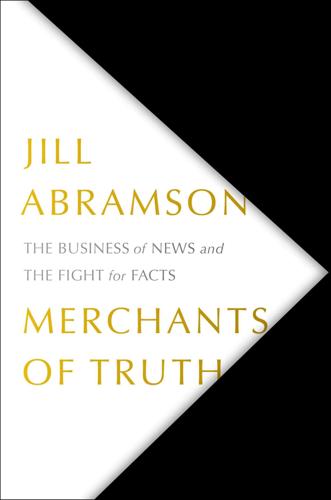
Merchants of Truth: The Business of News and the Fight for Facts
by
Jill Abramson
Published 5 Feb 2019
“Can you believe these companies pay all this money for the shit we do?” he was overheard saying in a Brooklyn bar. Smith’s sense of timing in building the business had been uncanny. He had been at the forefront of distribution on every visual platform: first YouTube, then Snapchat, which began as an app for sending promiscuous pictures that disappeared once seen. Vice was one of the first media companies given a privileged placement on Snapchat’s platform. After that, it had colonized Pinterest, another social network platform, which was popular with women and where users posted pleasing images. On top of the advertising revenue, these deals gave licensing fees to Vice for its content, from all over the world.
…
She looked perfectly cast for her role as digital innovation czar, and she had the technical chops for the job. She was excited when veteran political reporter Dan Balz decided to give Snapchat a taste of the campaigns he covered. I first met Balz in the late 1980s when he was strictly a pen-and-notepad guy, in the pre-internet era. He was a superb reporter dedicated to conveying the substance and importance of national politics. When I had coffee with Haik I couldn’t help but think what Helen Dewar, a Post lifer who had covered the Senate for decades and looked down on anything faddish, would make of Haik or Balz on Snapchat. Haik earned some measure of respect because she had come from the Seattle Times, where she had been the editor of the website.
…
For one, she was young: “Meet the Post’s Mobile Leadership, a Q&A with Cory Haik and Julia Beizer,” WashPostPR Blog, Washington Post, October 21, 2014, https://www.washingtonpost.com/pr/wp/2014/10/21/meet-the-posts-mobile-leadership-a-qa-with-cory-haik-and-julia-beizer/?utm_term=.19a01fbbcfc6. She was excited when veteran: Benjamin Mullin, “Washington Post Campaign Reporter Dan Balz Brings Viewers on the Trail with Snapchat,” Poynter, July 17, 2015, https://www.poynter.org/news/washington-post-campaign-reporter-dan-balz-brings-viewers-trail-snapchat. She developed her own data collector: “@MentionMachine Tracks the 2012 Candidates: Who’s Up, Who’s Down on Twitter?,” Washington Post, January 4, 2012, https://www.washingtonpost.com/blogs/election-2012/post/mentionmachine-tracks-the-2012-candidates-whos-up-whos-down-on-twitter/2011/12/20/gIQAPY8r7O_blog.html?
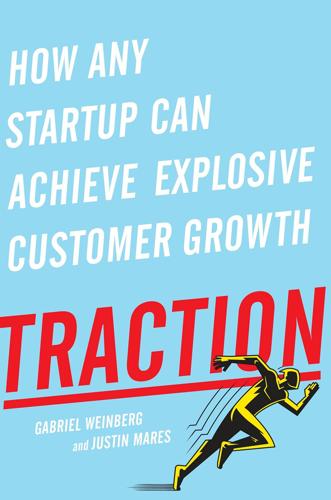
Traction: How Any Startup Can Achieve Explosive Customer Growth
by
Gabriel Weinberg
and
Justin Mares
Published 5 Oct 2015
We interviewed Andrew Chen, founder of Muzy (an app with more than 25 million users) and one of the experts in the viral marketing world. According to Andrew, this traction channel is becoming increasingly important as Facebook, email, and app stores have emerged as “super-platforms” with billions of active users each. As a result, companies can go viral faster than ever before. Dropbox, Instagram, Snapchat, and Pinterest are great examples: they all leveraged virality through these super-platforms to acquire tens of millions of users in just a few years. VIRAL MARKETING STRATEGY Viral marketing strategy begins and ends with viral loops. A viral loop in its most basic form is a three-step process: A customer is exposed to your product or service.
…
Word of mouth drove Facebook’s early growth among college students, before they started building in more explicit viral hooks (email invites, adding your friends via address books, etc.). Word of mouth also causes many movies, books, diets, and TV shows to take off. Inherent virality occurs when you can get value from a product only by inviting other customers. For example, if your friends don’t have Skype, the application is worthless. Apps like Snapchat and WhatsApp also fall into this category. This type of virality comes with the advantage of “network effects,” where the value of the network increases as more people get on it. That is, the more people who are on Skype, the more valuable it becomes. Other products grow by encouraging collaboration.
…
CHAPTER TWENTY Existing Platforms Existing platforms are Web sites, apps, or networks with huge numbers of users—sometimes in the hundreds of millions—that you can potentially leverage to get traction. Major platforms include the Apple and Android app stores, Mozilla and Chrome browser extensions, social platforms like Facebook, Twitter, and Pinterest, as well as newer platforms that are growing rapidly (Tumblr, Snapchat, etc.). When mobile video-sharing app Socialcam launched, it suggested users sign up with Facebook or Twitter, promoted user videos on both platforms, and encouraged people to invite their friends from each site. It went on to hit 60 million users within twelve months—that type of growth just isn’t possible through many other channels.

Vassal State
by
Angus Hanton
Published 25 Mar 2024
In 2023, three social media platforms started charging for extra services, such as the ‘blue tick’ to prove status, for which Twitter/X charged £84 each year. Instagram subscribers can pay for exclusive content highlighted by a purple ring, and Facebook is introducing ‘Meta Verified’, where a ‘verified badge’ (also a blue tick) will cost over £140 a year, charged monthly through the app. Even Snapchat has adopted a similar scheme, claiming that ‘subscription will allow us to deliver new Snapchat features… and allow us to provide prioritised support.’28 Any services we currently use for free are potential treadmills and there are plenty of emerging ones: the AI tool ChatGPT was free to use in the three months after it was launched, but very soon a $20-a-month subscription was introduced for the premium version.
…
Despite lack of profitability, Uber and Lyft have poured billions of dollars into research-and-development projects such as driverless cars. Larger firms, meanwhile, push to buy up potential competitors and out-innovate their rivals to create unassailable market positions. In the past decade, Facebook decided to out-compete social media rival Snapchat by buying and rebuilding Instagram. Tesla, while selling electric vehicles more successfully than other car manufacturers, is also developing driverless systems. It is diversifying further, pledging to parlay its driverless-car research into developing a humanoid robot – called ‘Optimus’ or the ‘Tesla Bot’.
…
When the only son of Senator Leland Stanford and his wife Jane died of typhoid fever in 1884, at the age of 15, the family used their wealth to buy land on the San Francisco peninsula, eventually acquiring 8,000 acres, where they established a new university, with the idea that ‘the children of California shall be our children’.18 Stanford is now ranked third in the world, having produced 36 Nobel Prize winners and 18 Turing Award winners, and was the meeting place for the co-founders of Google. It has been a nursery for other enterprises too: its alumni and affiliates set up Netflix, Snapchat, Nike, Hewlett-Packard (HP), Sun Microsystems, Instagram, PayPal and Yahoo. As well as educating workers, the US is determined to find innovative people and draw them to its shores using immigration policy. The ‘American Competitiveness in the 21st Century Act’ (2000) allows up to 85,000 highly qualified employees each year to get visas to stay for three years, extendable to six.19 Lawmakers are savvy about how to optimise this, and they make 20,000 of these visas available for foreign graduates of US universities.

Future Politics: Living Together in a World Transformed by Tech
by
Jamie Susskind
Published 3 Sep 2018
NYC Mayor’s Office of Technology and Innovation, ‘Preparing for the Internet of Everything’ (undated) <https://www1.nyc.gov/site/ forward/innovations/iot.page> (accessed 6 December 2017). Mat Smith, ‘Ralph Lauren Made a Great Fitness Shirt that Also Happens to Be “Smart”’, Engadget, 18 March 2016 <https://www. engadget.com/2016/03/18/ralph-lauren-polotech-review/> (accessed 6 December 2017). Casey Newton, ‘Here’s How Snapchat’s New Spectacles Will Work’, The Verge, 24 September 2016 <http://www.theverge.com/2016/ 9/24/13042640/snapchat-spectacles-how-to-use> (accessed 28 November 2017). Katherine Bourzac, ‘A Health-Monitoring Sticker Powered by Your Cell Phone’, MIT Technology Review, 3 August 2016 <https://www. technologyreview.com/s/602067/a-health-monitoring-stickerpowered-by-your-cell-phone/?
…
‘Why Not Smart Guns in this High-Tech Era?’ Editorial, 26 Nov. 2016. <http://mobile.nytimes.com/2016/11/26/opinion/ sunday/why-not-smart-guns-in-this-high-tech-era.html?smid=twnytopinion&smtyp=cur&referer=> (accessed 1 Dec. 2017). Newton, Casey. ‘Here’s How Snapchat’s New Spectacles Will Work’. The Verge, 24 Sep. 2016 <http://www.theverge.com/2016/9/24/13042640/ snapchat-spectacles-how-to-use> (accessed 28 Nov. 2017). Nichols, John. ‘If Trump’s FCC Repeals Net Neutrality, Elites Will Rule the Internet—and the Future’. Nation, 24 Nov. 2017 <https://www. thenation.com/article/if-trumps-fcc-repeals-net-neutrality-eliteswill-rule-the-internet-and-the-future/> (accessed 1 Dec. 2017).
…
Your house might be protected by ‘smart locks’ that use biometric information like handprint, face, and retina scans, to control entry and exit.10 OUP CORRECTED PROOF – FINAL, 28/05/18, SPi РЕЛИЗ ПОДГОТОВИЛА ГРУППА "What's News" VK.COM/WSNWS 44 FUTURE POLITICS Although they’re not to everyone’s taste, apparently nearly half of consumers plan to buy wearable technologies by 2019.11 Pull on a Ralph Lauren ‘PoloTech’ shirt and it will monitor your steps, heart rate, and breathing intensity—providing you with personalized performance feedback.12 Snapchat Spectacles and similar early accoutrements, already on the market, can capture what you see in shareable ten-second clips.13 In the future, more sophisticated products will supersede the first generation of Nike Fuelbands, Jawbone fitness trackers, Fitbit wristbands, and Apple watches. ‘Epidermal electronics’—small stretchy patches worn on the skin—will be able to record your sun exposure, heart rate, and blood oxygenation.14 Meanwhile, when you toss a ball around the garden, the pigskin itself will record the distance, velocity, spin rate, spiral, and catch rate for post-game analysis.15 In public, smart waste bins will know when they are full, highways will know when they are cracked, and supermarket shelves will know when they are empty.

Hit Refresh: The Quest to Rediscover Microsoft's Soul and Imagine a Better Future for Everyone
by
Satya Nadella
,
Greg Shaw
and
Jill Tracie Nichols
Published 25 Sep 2017
I find that Europeans tend to be far more sensitive about privacy issues, perhaps in part because they recall how personal privacy was utterly shattered by dictators of the previous century. Yes, millions of people are increasingly comfortable sharing personal information with their friends—but that doesn’t mean they’re comfortable sharing it with the world. It’s fascinating to see how the messaging service Snapchat, created by a twenty-three-year-old, has exploded in popularity thanks to its ingenious value proposition: Snapchat lets you share a photograph with friends knowing that the photograph will disappear from the Internet after twenty-four hours. If that’s not a new standard for shielding personal privacy, I don’t know what is. It’s an illustration of the kind of innovative, empathetic thinking we need from leaders in technology, government, and society at large to develop systems and rules that will serve to enhance and enlarge the zone of safety, security, and trust rather than eroding it.
…
See also specific products Seattle Children’s Hospital, 8, 41–42 Seattle Seahawks, 4 security, 169–80, 191–94, 202, 205, 224, 227–28, 238 senior leadership team (SLT), 2–6, 10–11, 81–82 sensors, 13, 79, 147–48, 150 September 11, 2001 attacks, 172 Serling, Rod, 159 server and tools business (STB), 53–59 servers, 2, 45, 139 edge of cloud and, 89 private vs. cloud-based, 57 privacy and security and, 173, 176 service sector, 240 Shaikh, Saqib, 200 Snapchat Spectacles, 145 Shaw, Frank, 98, 99 Shenzhen, 229 Shin, Jong-Kyon (J.K.), 133 Shum, Harry, 3, 51–52, 82 Sikhs, 19 silicon photonics, 228 Silicon Valley, 12, 21, 24, 26–27 silos, 57, 102 Sinclair ZX Spectrum kit, 21 Siri, 201 Sirosh, Joseph, 59 skills development, 226–27, 240 Skype, 64, 121, 155, 164, 171 Skype Translator, 59 small firms, 217 smartphones, 45, 66, 73, 132–34. See also mobile phones; and specific products Smith, Brad, 3, 131, 170–71, 173, 189 SMS, 216 Snapchat, 193 Snapdeal, 33 Snow Crash (Stephenson), 143 Snowden, Edward, 172–73, 179–80 Social Connector, 137 social contract, 239 socioeconomic change, 12–13 software design, 27, 49 software engineering, 74 solar, wind, and tidal power, 43, 228 Sony, 28 Sony Pictures Entertainment, 169–70, 177, 179, 189 Soul of a New Machine, The (Kidder), 68 South Zone, 37, 115 sovereignty, 170 space exploration, 145–46 Spain, 215 spam filters, 158 speech recognition, 76, 89, 142, 150–51, 164 Spencer, Phil, 106–7 sports franchises, 15 spreadsheets, 143 SQL (structured query language), 26 SQL Server, 53, 55 Stallone, Sylvester, 44 Stanford University, 64 One Hundred Year Study, 208 Start-up of You, The (Hoffman), 233 Station Q, 162–63, 166 Stephenson, Neal, 143 string theory, 164 Studio D, 65–66 success leadership, 120 Sun Microsystems, 26–29, 54 Super Bowl, 4 supercomputers, 161 superconducting, 162–65 supply-chain operations, 103 Surface, 2, 129 Surface Hub, 89, 137 Surface Pro 3, 85 Surface Studio, 137 Svore, Krysta, 164–65 Sway, 121 Sweden, 44 Swisher, Kara, 138 Sydney Opera House, 98 symbiotic intelligence, 204 Synopsys, 25 Syria, 218 tablets, 45, 85, 134, 141.
…
Companies are taking different approaches with head-mounted computers. Virtual reality, as provided by our Windows 10 MR devices or Facebook’s Oculus Rift, largely blocks out the real world, immersing the user in a completely digital world. Google Glass, for example, projects information onto your eyeglasses. Snapchat Spectacles let you augment what you see with relevant content and filters. HoloLens provides access to mixed reality in which the users can navigate both their current location—interact with people in the same room—and a remote environment while also manipulating holograms and other digital objects.
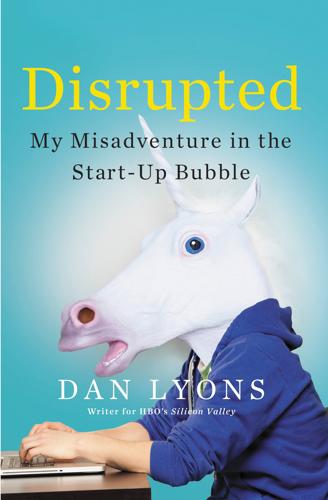
Disrupted: My Misadventure in the Start-Up Bubble
by
Dan Lyons
Published 4 Apr 2016
Trotsky makes it clear that he’s going to change the way they do things, and that, unlike Zack, he has real authority and is not afraid of them. One change has to do with e-books. The blog writers are supposed to coordinate their efforts with the e-book writers. If the e-book team creates a book about, say, how to use Snapchat to sell pet food, the blog should generate articles about Snapchat and pet food, and use those posts to promote the e-book. Instead, Marcia and Jan do whatever they want. They might write articles about Snapchat and pet food, or they might not. Some of it comes down to whether they like the person who wrote the e-book. Some of it hinges on whether they feel the e-book people were polite enough to them or gave them sufficient notice.
…
I pore through their website, which talks about something called inbound marketing, which I’ve also never heard of. All I can tell is that they make software used by marketing departments. I call around to friends who work in venture capital, who tell me that HubSpot is the real deal. The company is a bit of a sleeper. It’s not as well known as companies like Snapchat or Instagram, but it is run by a bunch of guys from MIT and headed for an IPO. Over the past seven years HubSpot has raised $100 million in venture capital, and its investors include some of the best firms in the business. Its business is booming. “Those guys,” one of my VC buddies says, “are going to make a shit ton of money.”
…
“The big secret is that nobody knows what they’re doing. When it comes to management, it’s amateur hour. They just make it up as they go along.” Examples abound of tech start-ups trying to bring in more experienced people who end up leaving, sometimes citing a lack of “culture fit.” Evan Spiegel, the twenty-five-year-old founder of Snapchat, a photo sharing application, raised $1 billion in venture funding and realized, or was told by his investors, that he needed to hire people who could run a business and make money. Spiegel brought in veterans from Facebook and Google, then lost eight top executives in less than a year, with some people lasting only six months, according to Business Insider.

My Friend Anna: The True Story of a Fake Heiress
by
Rachel Deloache Williams
Published 15 Jul 2019
It was entirely possible, even probable, that he was merely hitting on me, but at this stage of the game, wherever Anna was concerned, it behooved me to assume the worst—that he was her spy. I answered with a superficial Oh do I? and went quiet. That afternoon, Officer McCaffrey asked me whether Anna had a Snapchat. She did, I told him, though she rarely used it. It was only by spelling out her Snapchat username in a text that I saw it with fresh eyes: delveyed. It read like a verb, and it described what had happened to me. Had Anna known that when she chose it? * * * The rest of the day went by, and Anna still hadn’t responded to my texts. I sent one message on Saturday: does your family know that you’re in the hospital?
…
Worrying that she was really gone this time, at midday on Friday I decided to get creative. When I opened Snapchat to see whether she’d posted, I noticed a filter that I knew she would like. I used it to take a black-and-white picture of myself. A large satin bow appeared in my hair, centered like a baby doll’s headband. The effect also enlarged my eyes and gave them exaggeratedly long lashes that looked a lot like Anna’s extensions. I held my mouth in a pout and kept my long hair in front of my shoulders. My resemblance to Anna was exceptionally creepy—I had a hunch that it might work. On top of the image, I wrote a short message: “This Snapchat filter is very you.” I hit Send.
…
She supervised, with care and amusement, as the girl turned flips and emerged from the water feet first, in a handstand, toes pruned and pointed as her legs wavered. I felt a contrast in energies as I watched, aware of myself as some sort of buffer between their domestic innocence and Anna’s wildness and spontaneity. Next to the pool, Anna drank and played with Snapchat, admiring herself in different filters as she held her phone up with one arm, selfie-cam engaged. I joined in, smiling by her side as we looked at ourselves on her iPhone’s screen, with pink noses and cutesy puppy ears. Then the rest of the group entered the pool area, led by the host on a tour of the property.

The People vs Tech: How the Internet Is Killing Democracy (And How We Save It)
by
Jamie Bartlett
Published 4 Apr 2018
The founding myth for social media is that they are the heirs to the ‘hacker culture’ – Facebook’s HQ address is 1, Hacker Way – which ties them to rule-breakers like 1980s phone phreaker Kevin Mitnick, the bureaucracy-hating computer lovers of the Homebrew Club scene and further back to maths geniuses like Alan Turing or Ada Lovelace. But Google, Snapchat, Twitter, Instagram, Facebook and the rest have long ceased to be simply tech firms. They are also advertising companies. Around 90 per cent of Facebook and Google’s revenue comes from selling adverts. The basis of practically the entire business of social media is the provision of free services in exchange for data, which the companies can then use to target us with adverts.* This suggests a very different, and far less glamorous, lineage: a decades-long struggle by suited ad men and psychologists to uncover the mysteries of human decision-making and locate the ‘buy!’
…
In the 2017 UK general election, the Labour Party took a different approach, although the overall aim – to change the information environment – was the same.16 Rather than sponsored ads, Jeremy Corbyn’s fans produced huge volumes of ‘organic’ content themselves and shared it in tightly networked groups, meaning their messages – real things written by real people – reached far more people and were more believable than they would otherwise have been. There was also an ecosystem of left-wing ‘alternative news’ outlets that churned out widely shared and hyper-partisan pro-Corbyn stories. Corbyn Snapchatted during a brunch with the rapper Jme – it seems unlikely that this was an idea that he came up with himself. One of Labour’s videos, ‘Daddy, why do you hate me?’ was a fictional conversation between a little girl and her dad set in 2030, about why he had voted for Theresa May. It was emotive, misleading, mawkish and potentially offensive – and viewed millions of times in two days.
…
Finally to Catrin, without whom the project would still be thrashing around in the back of my mind somewhere, and who supported me every moment, from start to finish. * In 2017 $95 billion of Google’s total revenue of $111 billion was from advertising, and it’s a similar proportion for Facebook, Twitter and Snapchat. We sort of signed up to this of course, through the exchange: my data for your free service. You let people spy on you, and they give you an incredible service for free. But this exchange is a bit one-sided. Hardly anyone ever reads the terms and conditions they tick, because they’re long and only comprehensible to a contract lawyer with a background in software engineering and one day a week to spare.
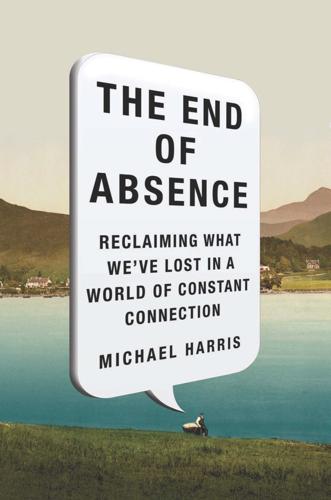
The End of Absence: Reclaiming What We've Lost in a World of Constant Connection
by
Michael Harris
Published 6 Aug 2014
Moore, “Chatroulette Is 89 Percent Male, 47 Percent American, and 13 Percent Perverts,” TechCrunch, accessed January 7, 2014, http://techcrunch.com/2010/03/16/chatroulette-stats-male-perverts/. Youths send homemade porn to one another: “Snapchat’s Expired Snaps Are Not Deleted, Just Hidden,” The Guardian, accessed January 7, 2014, http://www.theguardian.com/media-network/partner-zone-infosecurity/snapchat-photos-not-deleted-hidden. Surveys conducted in 1980: Eli J. Finkel et al., “Online Dating: A Critical Analysis from the Perspective of Psychological Science,” Psychological Science in the Public Interest 13, no. 1 (2012): 3–66.
…
These forums may be tawdry and voyeuristic, but even innocuous connections made on Facebook often belie a sexual pursuit (its progenitor, Facemash, was a game in which Harvard students rated their classmates as “hot” or “not”).20 Explicitly or otherwise, mainstream technologies are now integral to the game. Youths send homemade porn to one another via their phones, while apps like Snapchat encourage risqué photo sharing because they promise to automatically delete images (although, naturally, this turned out to be untrue). This is not a question of simply transferring offline behavior—meeting via newspaper classifieds, for instance, or picking up a stranger in a bar—onto the Internet.
…
(Capek), 56–57 Russell, Bertrand, 195 Sabinus, Calvisius, 143–45 Sas, Corina, 156 Science, 142 Scoville, William Beecher, 138 search engines, 142–43, 146 Second Life, 104 Seed, 105 Seife, Charles, 145, 146 Sejong, 12n self-documentation, 68–71 selfies, 68 Seneca, 118, 143–44, 203–4 senses, 161, 179, 205 synesthesia and, 62–63 Sergeant Star, 59–60 Sesame Street, 1–2, 3 sex, 104, 164–77 pornography, 83, 88, 168, 169, 174 Shallows, The (Carr), 38, 86 Shaw, George Bernard, 57 Shelley, Mary, 56 Skinner, B. F., 114 Skype, 106 Sloth Club, 204 Slowness (Kundera), 184 Small, Gary, 10–11, 37–38 smartphones, see phones Smith, Gordon, 186 “smupid” thinking, 185–86 Snapchat, 168 social media, 19, 48, 55, 106, 150–51, 175 Socrates, 32–33, 40 solitude, 8, 14, 39, 46, 48, 188, 193, 195, 197, 199 Songza, 90–91, 125 Space Weather, 107 Squarciafico, Hieronimo, 33, 35 Stanford Engineering Everywhere (SEE), 94 Stanford University, 94–97 Statistics Canada, 174 sticklebacks, 124 Stone, Linda, 10, 169 Storr, Anthony, 203 stress hormones, 10 Study in Scarlet, A (Doyle), 147–48 suicide, 53–54, 63, 67 of Clementi, 63, 67 of Todd, 50–52, 67 sun, 107–9 surveillance, 66n synesthesia, 62–63 Tamagotchis, 29–30 technologies, 7, 18, 20, 21, 99, 179, 188, 192, 200, 203, 205, 206 evolution of, 43 Luddites and, 208 penetration rates of, 31 technology-based memes (temes), 42–44 Technopoly (Postman), 98 television, 7, 17, 27, 31, 69, 120 attention problems and, 121 temes (technology-based memes), 42–44 text messaging, 28, 30–31, 35–36, 100, 169, 192–94 Thamus, King, 32–33, 35, 98, 141, 145 Thatcher, Margaret, 74 theater reviews, 81–84, 88–89 Thompson, Clive, 141–42, 144–45 Thoreau, Henry David, 22, 113, 197–200, 202, 204 Thrun, Sebastian, 97 Thurston, Baratunde, 191 Time, 154 Timehop, 148–51, 160 Tinbergen, Niko, 124 Todd, Amanda, 49–53, 55, 62, 67, 70–72 Todd, Carol, 51–52, 71–72 Tolle, Eckhart, 102 Tolstoy, Leo: Anna Karenina, 125–26 War and Peace, 115, 116, 118, 120, 122–26, 128–29, 131–33, 135, 136 To Save Everything, Click Here (Morozov), 55 touch-sensitive displays, 27 train travel, 200–202 Transcendental Meditation (TM), 76–78 TripAdvisor, 92 Trollope, Anthony, 47–48 Trussler, Terry, 172 Turing, Alan, 60, 61, 67, 68, 186, 190 Turing test, 60–61 Turkle, Sherry, 30, 55–56, 103–4 Twain, Mark, 73 Twitch.tv, 104 Twitter, 9, 31, 46, 63, 149 Udacity, 97 Uhls, Yalda T., 69 Unbound Publishing, 88 Understanding Media (McLuhan), 14 University of Guelph, 53 Valmont, Sebastian, 166 Vancouver, 3–4 Vancouver, 8–11, 15 Vaughn, Vince, 89 Vespasiano da Bisticci, 33 video games, 32, 104 Virtual Self, The (Young), 68, 71 Voltaire, 83 Walden (Thoreau), 113, 198–200 Wales, Jimmy, 77 Walker, C.

The Smartphone Society
by
Nicole Aschoff
The global architecture of production and trade is designed for the benefit of multinational corporations and wealthy countries, making struggles by workers to improve conditions and wages extremely difficult.33 Yet, the men and women and children who do the dirty, dangerous jobs that make our smartphone reality possible—the miners, the assemblers and dis-assemblers—are not who come to mind when we think about the connection between people and smartphones.34 As literary critic Frederic Jameson observes, “The truth of metropolitan existence is not visible in the daily life of the metropolis itself.” We can’t see the global divides that make the consumption patterns of wealthy countries possible.35 Instead we imagine the smartphone user, the consumer who can endlessly and effortlessly stream movies, Snapchat friends, shop the web, find the museum. The divide between those who make smartphones and those who consume them, particularly Western consumers, is just one element of what experts call the “digital divide.”36 As socioeconomic infrastructure becomes more and more dependent on digital connections the gulf between those who have easy access to high-speed internet and those who don’t appears starker than ever.
…
Environmental activists use the term “greenwashing” to describe how companies use superficial tricks and PR spin to hide environmentally destructive behavior and present a green, responsible image.57 Tech companies engage in “appwashing,” using slick apps and fuzzy stories to hide the reality of the low-paid, stressful jobs they create and depend on for their profits. Amazon’s 2017 holiday commercial is a perfect example of appwashing. It shows a woman on a bus getting a goofy Snapchat from (presumably) her niece. Inspired, she instantly taps her phone app to send the little girl a gift, brought to life as an adorable Amazon box singing Supertramp’s “Give a Little Bit.” The happy box makes an epic journey, singing all the way, through a maze of conveyer belts, under stamping machines, on trucks and planes, before finally being handed to a smiling child thousands of miles away.
…
Throw in venture capital and private equity firms (GV, Capital G), a tech incubator (Jigsaw), broadband and balloon internet providers (Google Fiber and Loon), an urban innovation organization (Sidewalk Labs), and a “semisecret” research and development facility called X Development, and one gets a sense of the growing reach of the behemoth that started with a search engine. Facebook, too, has made big-ticket purchases such as Instagram, WhatsApp, and Oculus, and when it can’t buy what it wants, as in the case of Snapchat, it has implemented similar features on its own platform. Just as Google is the world’s search engine, Facebook wants to be the world’s social media platform. To overcome the hurdles of poor populations with little or no access to the internet, Facebook created Free Basics (now called Internet.org), a program to provide subscribers who can’t afford either a broadband connection or a smartphone data plan with a free, bare-bones version of the internet.

Only Americans Burn in Hell
by
Jarett Kobek
Published 10 Apr 2019
Through the torrents of suffering, he authored several brilliant books and one unvarnished masterpiece. He inspires us all.” After the interview, HRH went to a board meeting at the Venice Beach offices of Snapchat. Snapchat was a smartphone app that had achieved a long-standing dream of corporate America: cornering the ever elusive market of child pornography. Following a tip received at an orgy full of unattractive men and female sex workers, all of whom were in the thrall of MDMA, HRH had gotten in on the Series A funding of Snapchat. Snapchat was a late-period capitalist innovation: a corporation either worth nothing or everything, and one with such a complex relationship to money that it was impossible to judge the company’s failure or success.
…
Snapchat was a late-period capitalist innovation: a corporation either worth nothing or everything, and one with such a complex relationship to money that it was impossible to judge the company’s failure or success. The Series A funding had earned HRH a seat on the board. HRH arrived wearing a suit that’d been tailored in London by Gieves & Hawkes. By the end of the board meeting, the suit was so stained that HRH had to borrow clothes from an employee of Snapchat. “There is a curious lacuna in Abigail, and one that is never revealed through the stylized vocals of King Diamond,” said HRH to Celia. “Speak not of the ludicrous sequel. We are not barbarians, madame. We consider texts unburdened by a priori knowledge. As King Diamond sings, we meet the ghost of Count de LaFey, and also his unfaithful wife, and their descendant Jonathan and his wife Miriam.
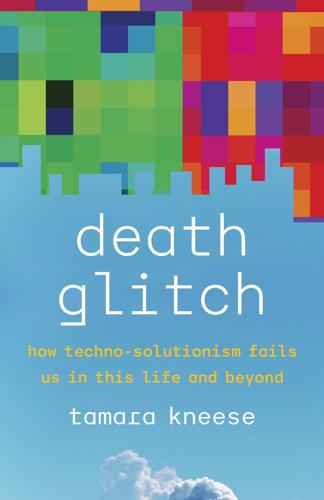
Death Glitch: How Techno-Solutionism Fails Us in This Life and Beyond
by
Tamara Kneese
Published 14 Aug 2023
According to Yip, the “uniform law” is not the savior that many tech companies believe it to be. Legally, tech companies cannot make a contract with someone who is under eighteen, so the law does not apply to minors, who encompass a large percentage of users on Snapchat, Twitch, and TikTok as well as YouTube and Instagram. Yip notes that the law and tech platforms should look at both the original intentions and use of each platform. Shutterfly, Flickr, and Snapchat are not about long-term storage, so why would these platforms have to pass on the accounts to someone else? With its “broad, sweeping language,” UFADAA is not nuanced enough to cover all of the moving parts of a digital estate or to account for incapacitation.
…
Marxist social media critics often relate commercial platforms to new forms of labor, showing how liberatory technologies are in fact tied to inequality and exploitation. Instead of producing goods in the industrial-age Fordist factory, workers engage in immaterial, unpaid labor, allowing themselves to become products of major companies like Facebook, Twitter, YouTube, and Snapchat.35 If the dead begin to outnumber the living on Facebook, retaining the profiles of the dead will create more opportunities for surveillance and extraction. The Virginia Tech shootings helped highlight the affective value of communicative traces for users and mourners as well as for Facebook as a platform.
…
Platforms determine how users experience communicative traces over time. As the communication scholar Lee Humphreys describes, although media accounting of the self already existed in the eighteenth and nineteenth centuries, social media platforms have more control today over those mediated memories. Snapchat was intentionally designed to be ephemeral, but users pushed the platform to allow them to preserve some snaps as memories.38 On the other hand, users are sometimes distraught when Facebook and other platforms use memory features like “On This Day” to encourage engagement, especially when platforms stir up painful memories.
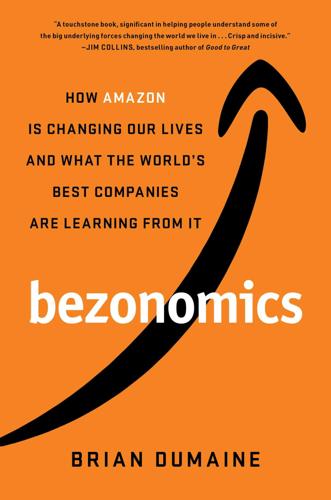
Bezonomics: How Amazon Is Changing Our Lives and What the World's Best Companies Are Learning From It
by
Brian Dumaine
Published 11 May 2020
That means shoppers can see the products they are ordering as well as their shopping lists, TV shows, music lyrics, feeds from security cameras, and photos from that vacation in Montana, all without pushing any buttons or manipulating a computer mouse. The rise of vision recognition technology—voice recognition’s AI sibling, long used for matching faces of criminals in a crowd—will make shopping on these devices even more convenient. In late 2018, Amazon announced it was testing with Snapchat an app that enables shoppers to take a picture of a product or a bar code with Snapchat’s camera, and then see an Amazon product page on the screen. It’s not hard to imagine that the next step for shoppers will be to use the camera embedded in the Echo Show or in their smartphone to snap a picture of something they’d like to buy and then see on-screen the same or similar items along with prices, ratings, and eligibility for Prime shipping.
…
As the magazine Collier’s Weekly noted: Ibid., 65. As he wrote in 1901: Ibid., 30. By 1903, Roosevelt had persuaded: Ibid., 206. Facebook and Alphabet together control nearly 60 percent: Molla Rani, “Google’s and Facebook’s Share of the U.S. Ad Market Could Decline for the First Time, Thanks to Amazon and Snapchat,” Recode, March 19, 2018. Netflix has penetrated 75 percent of the homes: Sarah Perez, “Netflix Reaches 75% of US Streaming Service Viewers, But Youtube Is Catching Up,” TechCrunch, April 4, 2017, https://techcrunch.com/2017/04/10/netflix-reaches-75-of-u-s-streaming-service-viewers-but-youtube-is-catching-up/.
…
See also online shopping addiction to, 18–19 addictive nature of Prime use for, 98–99 Alexa use for, 115–16 Amazon.com versus Walmart.com for, 15 Bezos’s disruptive technologies in, 116 Echo Show device in, 116, 117 free delivery and psychology of, 97 integrating in-store and online experiences in, 193, 194–95, 197–98, 205, 213, 270 shift from brick-and-mortar stores to online, 24, 33 showrooming and, 204 Snapchat pictures in, 116–17 vision recognition in, 116–17 showrooming, 204 Sibay, Cem, 96–97, 99, 100, 101 Siegel, Adam, 224 Simon, Bill, 257 Siri voice assistant app, Apple, 108 Sivasubramanian, Swami, 112, 218 six-pager memos, 44–51 Alexa creation example of, 48–50 Bezos’s reliance on, 44, 45–46, 50–51 customer focus of, 44 managers’ positive and negative reactions to using, 46–47 process of developing over the life of a project, 44–45, 47–48 revisions of, after product release, 49–50 60 Minutes (TV show), 178 Slack, 94 small businesses, 145–61.
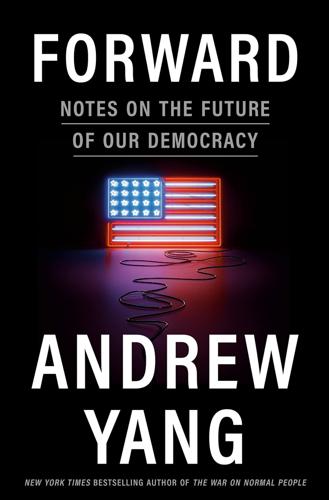
Forward: Notes on the Future of Our Democracy
by
Andrew Yang
Published 15 Nov 2021
Instagram: Mansoor Iqbal, “Instagram Revenue and Usage Statistics (2021),” Business of Apps, updated Jan. 28, 2021. YouTube: Mansoor Iqbal, “YouTube Revenue and Usage Statistics (2020),” Business of Apps, updated Nov. 17, 2020. Twitter: Mansoor Iqbal, “Twitter Revenue and Usage Statistics (2020),” Business of Apps, updated Dec. 5, 2021. Snapchat: Mansoor Iqbal, “Snapchat Revenue and Usage Statistics (2020),” Business of Apps, updated Feb. 12, 2021. TikTok: Mansoor Iqbal, “TikTok Revenue and Usage Statistics (2021),” Business of Apps, updated Feb. 10, 2021. CHAPTER 22: THE RETURN OF FACTS At the beginning of my presidential campaign “Democratic Fundraiser in Iowa,” C-SPAN, Oct. 14, 2018.
…
* * * — IN THE SPRING of 2018, in the midst of our flailing attempts at fundraising, my campaign manager, Zach Graumann, sat me down and said, “We’ve been inventorying different social media platforms. We think you need to become good at Twitter because it drives different forms of engagement, particularly the media. Every journalist uses it. Facebook, Instagram, and Snapchat we can manage through the team. But you need to get your Twitter game up.” Plus, he added, social media was free. I said, “Okay, I guess I will get good at Twitter.” From my studying the rise of other politicians, it seemed like a great resource and powerful tool: Twitter had fueled the rise of Donald Trump and Alexandria Ocasio-Cortez on either end of the political spectrum.
…
You don’t get anything that will get you fired.” A friend who works in politics put it this way: “No one knows how we’ll reach voters in twenty years when TV ads no longer work.” They will be replaced by a patchwork of podcasts and tens of thousands of ads and influencer posts through YouTube, Facebook, Twitter, Instagram, Snapchat, TikTok, Clubhouse, and their successors. As people get their information and news in different ways, our politics are likely to evolve in new ways as well. When the gatekeepers go away, does that free up more oxygen in the media ecosystem for candidates like me, who don’t fit so easily into the old guard’s preconceived notions?
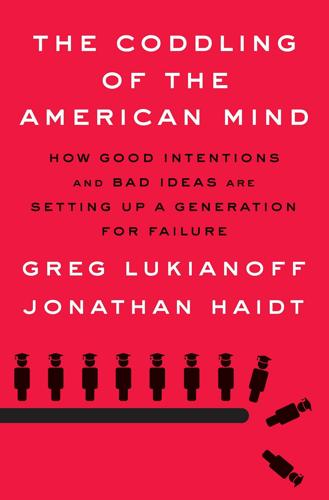
The Coddling of the American Mind: How Good Intentions and Bad Ideas Are Setting Up a Generation for Failure
by
Greg Lukianoff
and
Jonathan Haidt
Published 14 Jun 2018
Online appendix can be retrieved from http://www.jeantwenge.com/wp-content/uploads/2017/08/igen-appendix.pdf 31. Arata, E. (2016, August 1). The unexpected reason Snapchat’s “pretty” filters hurt your self-esteem. Elite Daily. Retrieved from https://www.elitedaily.com/wellness/snapchat-filters-self-esteem/1570236 32. Jowett, V. (2017, July 10). Inside the Snapchat filter surgery boom. Cosmopolitan. Retrieved from http://www.cosmopolitan.com/uk/beauty-hair/a9617028/celebrity-cosmetic-surgery-snapchat-filter-boom 33. Crick & Grotpeter (1995). 34. For example: Thielking, M. (2017, February 8). Surging demand for mental health care jams college services.
…
But Facebook and other social media platforms didn’t really draw many middle school students until after the iPhone was introduced (in 2007) and was widely adopted over the next few years. It’s best, then, to think about the entire period from 2007 to roughly 2012 as a brief span in which the social life of the average American teen changed substantially. Social media platforms proliferated, and adolescents began using Twitter (founded in 2006), Tumblr (2007), Instagram (2010), Snapchat (2011), and a variety of others. Over time, these companies became ever more skilled at grabbing and holding “eyeballs,” as they say in the industry. Social media grew more and more addictive. In a chilling 2017 interview, Sean Parker, the first president of Facebook, explained those early years like this: The thought process that went into building these applications, Facebook being the first of them . . . was all about: “How do we consume as much of your time and conscious attention as possible?”
…
For girls, the percentage jumped from 27 to 40.30 Another consequence of social media curation is that girls are bombarded with images of girls and women whose beauty is artificially enhanced, making girls ever more insecure about their own appearance. It’s not just fashion models whose images are altered nowadays; platforms such as Snapchat and Instagram provide “filters” that girls use to enhance the selfies they pose for and edit, so even their friends now seem to be more beautiful. These filters make noses smaller, lips bigger, and skin smoother.31 This has led to a new phenomenon: some young women now want plastic surgery to make themselves look like they do in their enhanced selfies.32 The second reason that social media may be harder on girls is that girls and boys are aggressive in different ways.

Live Work Work Work Die: A Journey Into the Savage Heart of Silicon Valley
by
Corey Pein
Published 23 Apr 2018
The 3M One-Piece GPS Offender Tracking System allows police to “efficiently track offenders virtually anywhere, anytime, at varying levels of intensity through a single, compact, body-worn unit.” • 1-800-Flowers for medicinal marijuana? Eaze, backed by Peter Thiel, offers “easy, quick, professional marijuana delivery” on demand. • Snapchat for adult dancers? It’s called Snapchat. • Foursquare for attractive people? Instagram. • Social game for social outcasts? Foursquare. Truly, there is nothing new under the sun. * * * I cursed my rotten luck as I walked along Market Street past the fortresses of the fortunate. As I neared Uber’s headquarters, a motorcycle peloton rolled past.
…
The most amazing thing about Silicon Valley in the heady days of 2015 was that most people did not laugh in my face when I told them I planned to make billions of dollars in short order with a startup literally no one had ever heard of. In that particular time and place, such miracles were commonplace, at least if you believed the press. Look at Uber! It came from nowhere. Snapchat! Instagram! Facebook! Every story seemed to confirm our national mythos that pluck and progress deliver milk and honey. But that’s bullshit. The only way 99.99999 percent of us are going to become billionaires is through some Weimaresque economic cataclysm that leaves us pushing wheelbarrows full of high-denomination bills to barren grocery stores, where we can wait in long lines to buy stale bread and muesli cut with sawdust.
…
The internet came through again. I quickly found a half dozen startup idea generators. My favorite was ItsThisForThat.com. Every time you clicked the refresh button, it spat out a new idea. • Neural Network for Pets! • Wearable Computer for Ex-Convicts! • 1-800-Flowers for Medicinal Marijuana! • Snapchat for Adult Dancers! • Foursquare for Attractive People! • Social Game for Social Outcasts! The site delivered pitchable ideas in minutes. There was a problem, however: these ideas, absurd though they seemed, had already been done. To wit: • Neural network for pets? No More Woof is “an electronic device that promises to analyze dogs’ brain waves and translate a few of their thoughts into rudimentary English
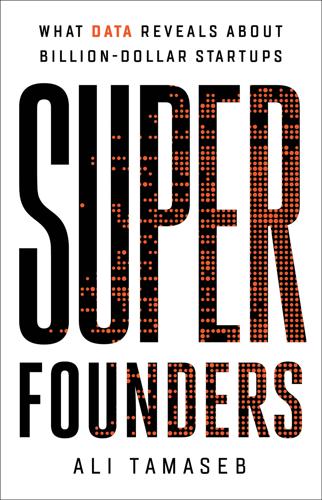
Super Founders: What Data Reveals About Billion-Dollar Startups
by
Ali Tamaseb
Published 14 Sep 2021
Wanstrath’s lack of a degree never got in the way of GitHub’s success, and especially not its acquisition: Microsoft’s co-founders, Bill Gates and Paul Allen, were college dropouts too. The trope of the prodigious college dropout is well known. James Park, the founder of Fitbit, dropped out of Harvard. Michael Dell left the University of Texas at Austin after his freshman year, and he went on to found Dell Technologies. Matt Mullenweg (founder of WordPress), Evan Spiegel (of Snapchat), and Jan Koum (of WhatsApp) are also dropouts. Looking at the data, however, most founders of billion-dollar companies were not school dropouts. It’s most common for founders of billion-dollar companies to hold a bachelor’s degree (36 percent) or a bachelor’s and an MBA (22 percent). About one-third have other advanced degrees, like a master’s, medical degree, law degree, or PhD.
…
Let’s zoom in to look more closely at what these billion-dollar companies are making. Based on data extracted from PitchBook Data (the data has not been reviewed by PitchBook analysts), the largest subsectors were business productivity software (like Slack), social/consumer and application software (like Snapchat), and e-commerce (like Wish, a shopping app featuring ultra-cheap items from wholesalers). Those subsectors were followed by network-management software (like Palo Alto Networks, which creates firewalls for networks, among other products), database management (like MongoDB, a document-oriented database company), automation/workflow software (like UiPath, a company automating manual tasks for enterprise clients), automotive (like Cruise, a self-driving car company acquired by General Motors), and biotechnology (like Indigo Ag, an agriculture company that works with plant microbes, aiming to improve yields).
…
Founders are regularly told to build a product that addresses a real need. The problem is, no founder has ever thought that their product isn’t solving a real need. All startups position their product as a solution to a problem, and many founders would rather believe that the problem they’re solving is in need of a painkiller. So how were products like Snapchat and TikTok, arguably vitamin pills, so successful? Let’s first understand the differences in these approaches. One strategy is to go after well-defined and deeply annoying pain points felt by customers. Another is to improve on the way something is done, giving customers better value, efficiency, entertainment, or joy.

#Republic: Divided Democracy in the Age of Social Media
by
Cass R. Sunstein
Published 7 Mar 2017
But I will also spend a lot of time on social media, which requires some definitional work. Speaking of pornography, Supreme Court Justice Potter Stewart famously wrote, “I know it when I see it.” Do we know social media when we see it? Any particular examples will become dated, but Facebook, Twitter, Instagram, and Snapchat certainly count. According to a helpful definition, social media are “Internet-based platforms that allow the creation and exchange of user-generated content, usually using either mobile or web-based technologies.”15 Wikipedia fits that definition, because people use it to produce content. YouTube must be included, because people share content there; Flickr and Vine are also examples.
…
It should be clear that we are dealing with a highly protean category, and its content changes rapidly over time. In 2006, blogs and the blogosphere were all the rage; while blogs exist and remain important, they have far less centrality (and the very word “blogosphere” seems to be a relic, a bit like “rotary phone” or “groovy”). Twitter was launched in 2006, Tumbler and WhatsApp in 2010, and Snapchat in 2011. Social media often have nothing at all to do with politics or democracy (indeed, they are a kind of vacation from it), and to that extent, they do not trigger my principal concerns here. But even if they are wholly apolitical, they might create niches, and niches produce fragmentation. A WORD ON BASELINES Any assessment of the world of the Internet, and any claims about what’s wrong with it, must ask one question: Compared to what?
…
Properly understood, the case for deliberating enclaves is that they will improve social deliberation, democratic and otherwise, precisely because enclave deliberation is often required for incubating new ideas and perspectives that will add a great deal to public debate. Social media, including Facebook, Twitter, Instagram, and Snapchat, can be exemplary here. But for these improvements to take place, members must not insulate themselves from competing positions. At the very least, any such attempt at insulation must not be a prolonged affair. The phenomenon of group polarization suggests that with respect to communications, consumer sovereignty might well produce serious problems for individuals and society at large—and these problems will occur by a kind of iron logic of social interaction.

Custodians of the Internet: Platforms, Content Moderation, and the Hidden Decisions That Shape Social Media
by
Tarleton Gillespie
Published 25 Jun 2018
Here is a representative but not exhaustive list of the social media platforms I think about, and that will be central to my concern in this book: social network sites like Facebook, LinkedIn, Google+, Hi5, Ning, NextDoor, and Foursquare; blogging and microblogging providers like Twitter, Tumblr, Blogger, Wordpress, and Livejournal; photo- and image-sharing sites like Instagram, Flickr, Pinterest, Photobucket, DeviantArt, and Snapchat; video-sharing sites like YouTube, Vimeo, and Dailymotion; discussion, opinion, and gossip tools like Reddit, Digg, Secret, and Whisper; dating and hookup apps like OK Cupid, Tinder, and Grindr; collaborative knowledge tools like Wikipedia, Ask, and Quora; app stores like iTunes and Google Play; live broadcasting apps like Facebook Live and Periscope.62 To those I would add a second set that, while they do not neatly fit the definition of platform, grapple with many of the same challenges of content moderation in platformlike ways: recommendation and rating sites like Yelp and TripAdvisor; exchange platforms that help share goods, services, funds, or labor, like Etsy, Kickstarter, Craigslist, Airbnb, and Uber; video game worlds like League of Legends, Second Life, and Minecraft; search engines like Google, Bing, and Yahoo.
…
It is our belief that censoring this content is contrary to a service that bases itself on freedom of expression. However, in order to uphold these values, we need to curb abuses that threaten our ability to provide this service and the freedom of expression it encourages. As a result, there are some boundaries on the type of content that can be hosted with Blogger.” Dreamwidth, Medium, Quora, Snapchat, Tumblr, and Twitter adopt similar positions. Users are declared to be largely responsible for what they say, read, or watch; the rules are reluctantly imposed, and only to the degree necessary. The understanding of users and platforms here is an individualistic, mechanistic, and liberal one: the platform must excise the bad, and the good will flourish.
…
Don’t let a personal issue strain the rest of the community.”20 Trolls often look to game the platform itself: misusing complaint mechanisms, and wreaking havoc with machine learning algorithms behind recommendation systems and chatbots.21 Unfortunately, platforms must also address behavior that goes well beyond spirited debate gone overboard or the empty cruelty of trolls: directed and ongoing harassment of an individual over time, including intimidation, stalking, and direct threats of violence. This is where the prohibitions often get firm: “Never threaten to harm a person, group of people, or property” (Snapchat). Many sites point to the law as justification for their prohibitions against threats and stalking: “We remove content, disable accounts, and work with law enforcement when we believe there is a genuine risk of physical harm or direct threats to public safety” (Facebook). Identifying and discerning the credibility of such threats is of course extremely difficult.

Reset
by
Ronald J. Deibert
Published 14 Aug 2020
Retrieved from https://www.theatlantic.com/technology/archive/2013/06/skinner-marketing-were-the-rats-and-facebook-likes-are-the-reward/276613/; Davidow, W. (2012). Overconnected: The promise and threat of the internet. Delphinium Books. One case … is Snapchat: Berthon et al. Addictive de-vices. The app’s promotion of “streaks”: Sattelberg, W. (2020, March 14). Longest Snapchat streak. Retrieved from https://www.techjunkie.com/longest-snapchat-streak/ Referred to in social psychology as a Zeigarnik effect: Berthon et al. Addictive de-vices; Montag, C., Lachmann, B., Herrlich, M., & Zweig, K. (2019). Addictive features of social media/messenger platforms and freemium games against the background of psychological and economic theories.
…
At their core, social media are vehicles for the relentless collection and monetization of the personal data of their users. Social media are so overwhelming and omnipresent in our lives, it may feel like they have been with us forever. Some of you reading this may have grown up entirely within the universe of Facebook, Google, Snapchat, and TikTok and not know what it’s like to live without them. I’m among those living generations that have experienced life before and after social media. I remember standing in a long line with nothing to do but think. Not everything is social media, but social media influence everything else, so prominent and influential is the business model at their core.
…
As the author of the book Overconnected, William Davidow, similarly put it, “Thanks to Skinner’s work, brain MRIs, and more recent research by psychologists, neuro-scientists, and behavioral economists, we now know how to design cue, activity, and reward systems to more effectively leverage our brain chemistry and program human behavior.”123 One case where these dynamics are clearly illustrated is Snapchat, the popular app in which users post and view “disappearing” images and videos.124 The fleeting nature of the content, combined with the app’s promotion of “streaks,” in which users review each other’s feeds obsessively, encourages compulsive checks of the platform amongst its users to the point where many do so for thousands of days on end.125 Similarly, many social media feeds encourage obsessive scrolling, as a result of the feeds having no defined endpoint; the apps are “designed to maximize anticipation, rather than reward,” a dynamic that is referred to in social psychology as a Zeigarnik effect.126 As with other products where addiction is a factor (e.g., tobacco, casinos), the behavioural modification parts of the story are only dimly understood by consumers, but they are studied intensively by the people who run the platforms and by the social media analytics companies, marketing firms, and PR consultants that orbit around them.127 As New York University professor Tamsin Shaw put it, “The findings of social psychology and behavioural economics are being employed to determine the news we read, the products we buy, the cultural and intellectual spheres we inhabit, and the human networks, online and in real life, of which we are a part.”128 Indeed, psychological experiments on consumers are essential to refining just about all social media and related digital applications.129 It’s not just the platforms alone that zero in on these mechanisms of addiction and compulsion; huge numbers of marketers and PR firms do so as well.
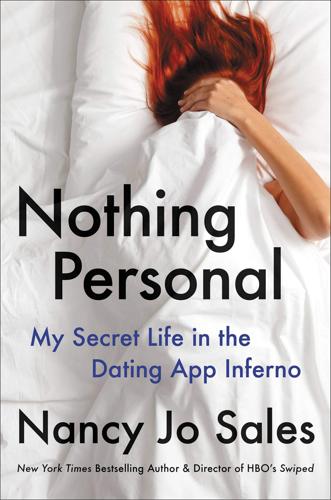
Nothing Personal: My Secret Life in the Dating App Inferno
by
Nancy Jo Sales
Published 17 May 2021
As he raped her in a bathroom at a house party in Fayetteville, she said, his four friends, a group of soldiers from Fort Bragg, stood outside and put camera phones under the door to film the attack. When Palmer tried to collect evidence for a criminal suit—Tinder messages showing the men bragging about the photos and the video they had posted on Snapchat—it had all been deleted. When she then contacted Tinder and Snapchat to assist her in retrieving this evidence from their servers, she said, the companies did not help her. In 2020, Palmer filed a civil suit against the five men named in the attack, as well as Match Group and Snapchat’s parent company, Snap, Inc. Her case is among the first to go after dating app companies for their failure to help sexual assault victims in collecting evidence to press charges against their attackers.
…
NPR, January 9, 2018. www.npr.org/2018/01/09/575352051/least-desirable-how-racial-discrimination-plays-out-in-online-dating. Brown, Helen Gurley. Sex and the Single Girl. New York: Barricade Books, 1962. Brown, Joel. “Raleigh Rape Survivor Speaks Out After Filing Suit Against Tinder, Snapchat.” ABC11 Eyewitness News, January 10, 2020. https://abc11.com/snapchat-tinder-lawsuit-aaliyah-palmer/5836719/. Brown, Myles. “Why Lisa Ann Prefers Having Sex with NBA Players.” GQ, February 14, 2015. www.gq.com/story/sex-athletes-nba-porn-star. Bruni, Frank. “We’re Not Wired to Be This Alone.” New York Times, April 1, 2020. www.nytimes.com/2020/04/01/opinion/coronavirus-lockdown-loneliness.html.
…
“I think objectification got worse with dating apps,” Abigail said, “because you were already posting hot pictures of yourself online in case some guy would check you out. And then everybody was on dating apps, which were specifically for hot pictures—and then dating apps got linked to Instagram and Facebook and Snapchat. “So now any time you post anything,” she went on, “you have to be thinking some guy might be checking you out off of Tinder or Bumble or wherever. The male gaze is constant. But that’s all of social media,” she added. “I’ve had guys I don’t even know slide into my DMs like, ‘Hey, girl, I like that ass.’

Generations: The Real Differences Between Gen Z, Millennials, Gen X, Boomers, and Silents—and What They Mean for America's Future
by
Jean M. Twenge
Published 25 Apr 2023
Three Millennial students at Stanford decided they had an app for that: Snapchat, where pictures shared with friends disappear after a few seconds. “After hearing hilarious stories about emergency de-tagging of Facebook photos before job interviews and photoshopping blemishes out of candid shots before they hit the Internet (because your world would crumble if anyone found out you had a pimple on the 38th day of 9th grade), [I decided] there had to be a better solution,” wrote Snapchat founder Evan Spiegel (b. 1990). Snapchat launched in September 2011, and by 2015 it had 75 million users. Millennials are the original social media masters, using the platforms to stay in touch with friends, start businesses, organize political movements, read about current events, watch videos, and argue with people they don’t know.
…
Gen Z will likely be the last generation where any one racial group is in the majority in the United States. Gen Z is also bringing an unprecedented amount of attention to diversity in gender identity and sexual orientation. Like many young generations before them, they have confounded older generations by using technologies (TikTok, Snapchat) and language (enby, pansexual) their parents barely understand—not to mention tinting their hair every color of the rainbow. In the 2020s, Gen Z is coming into its own. For one thing, they clearly have Millennials’ number. Gen Z’ers have a running riff on Twitter asking, “Why do Millennials…,” such as “Why do Millennials insist on adding ‘eigh’ to the end of their child’s name?”
…
There’s another reason why digital media is the most likely culprit for the rise in depression: It changed day-to-day life in a fundamental way. While getting together in person or talking on the phone were the only communication choices for Boomers and most Gen X’ers when they were young, digital communication became the norm for Gen Z. Instead of going to the movies or meeting up at parties, Gen Z was using Snapchat, Instagram, and TikTok. By early 2020, nearly half of 8th graders spent 3 hours a day or more using social media. The average teen spent more than 8 and a half hours a day with screen media in total in 2021, according to Common Sense Media. As digital communication took over, in-person gatherings waned.

No Ordinary Disruption: The Four Global Forces Breaking All the Trends
by
Richard Dobbs
and
James Manyika
Published 12 May 2015
Martin Hirt and Paul Willmott, “Strategic principles for competing in the digital age,” McKinsey Quarterly, May 2014. 54. Amit Chowdhry, “WhatsApp hits 500 million users,” Forbes.com, April 22, 2014, www.forbes.com/sites/amitchowdhry/2014/04/22/whatsapp-hits-500-million-users. 55. Darrell Etherington, “Snapchat accounts for more photo shares than Instagram as pic sharing set to double in 2013,” TechCrunch, May 29, 2013, http://techcrunch.com/2013/05/29/snapchat-accounts-for-more-photo-shares-than-instagram-as-pic-sharing-set-to-double-in-2013. 56. Jacques Bughin, Michael Chui, and James Manyika, “Ten IT-enabled business trends for the decade ahead,” McKinsey on Business Technology 33, spring 2014; Panzarino, “Leaked Uber numbers”; Rodriguez, “Lyft surpasses 1 million rides.” 57.
…
Kiva, the world’s largest online platform for peer-to-peer microlending, has facilitated loans worth more than $630 million, mostly in the emerging world.51 Kickstarter, a crowd-funding platform that connects entrepreneurs to individuals interested in funding creative projects, has facilitated pledges of more than $1.4 billion to fund 70,000 creative projects since 2009.52 Small or individual registered investment advisors are the fastest-growing segment of the investment advisory business in the United States; they purchase turnkey back-end systems from companies like Fidelity and Charles Schwab to get all the capabilities they need in order to provide direct advice to consumers.53 In markets such as search, e-commerce, social media, and the sharing economy, the low marginal costs of digital infrastructure allow upstarts to build business models with near-limitless scale. WhatsApp, the mobile messaging platform that Facebook recently snapped up for $19 billion, reached 500 million monthly active users within five years of its launch.54 Snapchat surpassed the photo-sharing activity on both Facebook and Instagram with 400 million users only two years after its foundation.55 Sharing economy start-ups are growing at breathtaking speed. In 2013, some 450,000 active users were launching the Uber app every week, and more than a million Lyft users had requested a ride with the tap of a button.56 Traditional players have also benefited from changes in marginal cost economics to enter new markets, grow rapidly, or optimize processes and cost structures.
…
But Expedia and its peers now face disruption from a new type of business model represented by Airbnb, the peer-to-peer hospitality site. Airbnb’s millions of customers can research, reserve, pay for, and review lodging at hundreds of thousands of locations without needing to interact with Expedia’s platform. Technology giants such as Facebook and Google must also be aware of new entrants. Snapchat, a photo-messaging app that enables senders to set a time limit for how long receivers can view their “snaps” (pictures), was started in 2011. By 2014, its users had proved more prolific snappers than those on Facebook and Instagram, with four hundred million pictures shared every day.24 WhatsApp reached five hundred million active users and handled over ten billion messages per day in 2014, prompting a $19 billion acquisition by Facebook, a move that was as much defensive as it was a strategic expansion.25 BLURRING LINES Technology has long blurred the boundaries between physical and online consumption, shifting value from books to Kindles and from CDs to iTunes to Spotify, where users can stream music without ever formally taking ownership of it.
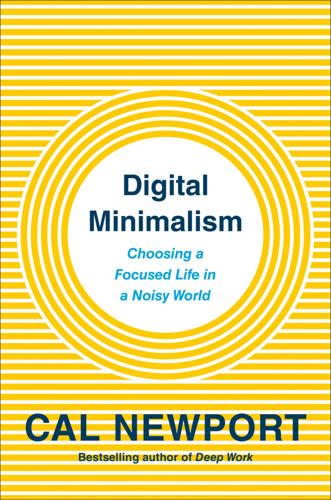
Digital Minimalism: Choosing a Focused Life in a Noisy World
by
Cal Newport
Published 5 Feb 2019
“Whether there’s a notification or not, it doesn’t really feel that good,” Pearlman said about the experience of checking social media feedback. “Whatever we’re hoping to see, it never quite meets that bar.” A similar drive to regulate social approval helps explain the current obsession among teenagers to maintain Snapchat “streaks” with their friends, as a long unbroken streak of daily communication is a satisfying confirmation that the relationship is strong. It also explains the universal urge to immediately answer an incoming text, even in the most inappropriate or dangerous conditions (think: behind the wheel).
…
The technology industry has become adept at exploiting this instinct for approval. Social media, in particular, is now carefully tuned to offer you a rich stream of information about how much (or how little) your friends are thinking about you at the moment. Tristan Harris highlights the example of tagging people in photos on services like Facebook, Snapchat, and Instagram. When you post a photo using these services, you can “tag” the other users who also appear in the photo. This tagging process sends the target of the tag a notification. As Harris explains, these services now make this process near automatic by using cutting-edge image recognition algorithms to figure out who is in your photos and offer you the ability to tag them with just a single click—an offer usually made in the form of a quick yes/no question (“do you want to tag . . . ?”)
…
Barksdale, 110 media: news, 45–46, 78–79, 222, 233, 238–42 newspapers, 79, 215, 241 Slow Media, 236–42 see also social media Mehl, Matthias, 138 Mennonite Church, 54–57 mental health and psychological well-being, xi–xii, 104–9, 136–41 mentalizing, 135 messaging tools, 147 anxiety and, 105 digital declutter and, 65 email, see email Snapchat, 22–23 text, see text messaging time spent on, 6 metal welding, 194–95 Millennial generation, 106, 218n Miller, William Lee, 87 minimalism, xv, 57 digital, see digital minimalism missing out and losing access to information, 29, 30, 75, 201, 202, 218n, 252 Moment, 102–3 Montgomery bus boycott, 94–95 Montgomery Improvement Association, 94 mood, xi–xii Morse, Samuel, 249–51, 254 Mouse Book Club, 190–92 movie theaters, 112–13 Mr.

Coders: The Making of a New Tribe and the Remaking of the World
by
Clive Thompson
Published 26 Mar 2019
trio of coworkers: Laura Fitzpatrick, “Brief History of YouTube,” Time, May 31, 2010, accessed August 18, 2018, http://content.time.com/time/magazine/article/0,9171,1990787,00.html. one person, Bobby Murphy: Alex Hern, “Snapchat Boss Evan Spiegel on the App That Made Him One of the World’s Youngest Billionaires,” Guardian, December 5, 2017, https://www.theguardian.com/technology/2017/dec/05/snapchat-boss-evan-spiegel-on-the-app-that-made-him-one-of-the-worlds-youngest-billionaires. the pseudonymous “Satoshi Nakamoto”: Joshua Davis, “The Crypto-Currency,” New Yorker, October 10, 2011, accessed August 18, 2018, https://www.newyorker.com/magazine/2011/10/10/the-crypto-currency.
…
“I check and I feel bad,” as Pearlman said. “Whether there’s a notification or not, it doesn’t really feel that good. Whatever we’re hoping to see, it never quite meets that bar.” Rosenstein, too, decided he needed to decouple from the distractions of social media. As he told the Guardian, he blocked sites like Reddit, stopped using Snapchat, and even set up parental controls to keep himself from downloading new apps on his phone. His assistant has the password. It turns out there’s some use, after all, in techniques for slowing things down. < Chapter 6 > 10X, Rock Stars, and the Myth of Meritocracy In the annals of coding, Max Levchin is considered something of a colossus.
…
The first version of Photoshop was created by two brothers; the version of BASIC that launched Microsoft in 1975 was hacked together in weeks by a young Bill Gates, his former schoolmate Paul Allen, and a Harvard freshman Monte Davidoff. An early and influential blogging tool, LiveJournal, was written by Brad Fitzpatrick. The breakthrough search algorithm that led to Google was a product of two students, Larry Page and Sergey Brin; YouTube was a trio of coworkers; Snapchat a trio (or, the level of the code, one person, Bobby Murphy). BitTorrent was entirely a creation of Bram Cohen, and Bitcoin was reputedly the work of a lone coder, the pseudonymous “Satoshi Nakamoto.” John Carmack created the 3-D-graphics engines that helped usher in the multi-billion-dollar industry of first-person shooter video games.
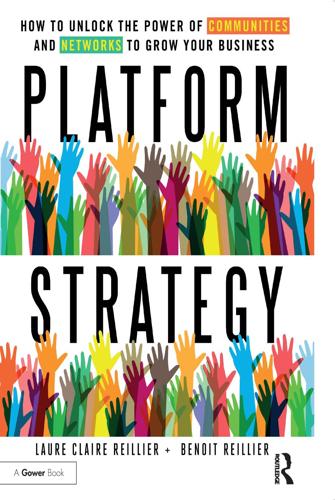
Open for Business Harnessing the Power of Platform Ecosystems
by
Lauren Turner Claire
,
Laure Claire Reillier
and
Benoit Reillier
Published 14 Oct 2017
As illustrated in Figure 2.5, many of them exhibit strong platform characteristics.15 For example, Didi Chuxing (formerly Didi Kuaidi), headquartered in China, and Lyft, in the US, are platforms matching drivers and passengers 16 The meteoric rise of platform businesses Figure 2.5 Private value of platform-powered unicorn start-ups (US$ billions) Source: CB Insights, 1 August 2016, Launchworks analysis like Uber, and both have raised significant private investments. Snapchat is a well-known and fast-growing communications platform that famously turned down a multibillion-dollar offer from Facebook in 2014. Stripe is a fastgrowing payment platform for e-commerce merchants. Platforms power the sharing economy movement Lastly, platforms are at the heart of the emerging ‘sharing economy’ since many enable the redistribution, sharing and/or reuse of excess capacity in goods and services.
…
We mentioned above Eventbrite’s viral loop of event organizers inviting attendees to their events. After attendees buy tickets, they discover that they can also use the platform to organize their own events. Acquisition of new users through existing users. Product features such as viral invite loops are a great way to tap into existing users’ networks to acquire new users. For example, Snapchat and WhatsApp ask users to invite their friends by importing their contact books. Acquisition of new producers through existing producers. Finally, existing producers can help acquire new ones. In addition to the techniques mentioned above, new content generated by producers can help acquire new producers and users.
…
Index Accor Group 3, 201, 211 add-on platforms 77, 88–9, 92, 102, 105 advertising 37, 43, 45, 67–8, 93, 97, 99–100, 142, 144, 183 AdWords (Google) 67, 69, 183, 184 Airbnb 1–2, 3, 4, 15, 24, 168, 188; brand 51–2, 153, 169–70; business model 45; credibility 158–9, 163; feedback 35, 52, 160, 179–80; insurance 164; market sizing 79; match 47, 52, 83; value propositions 83, 95, 123 Alibaba 1, 15, 28, 34, 123, 124, 132, 208 Amazon 8, 12, 13, 14, 15, 125; business model 48, 59, 63; conflict resolution 163; ecosystem 28, 57–8, 59–61, 62, 70; feedback 35, 160; home automation 212 Amazon FBA (Fulfilment by Amazon) 58, 61–2 Amazon Marketplace 26–7, 48, 57, 58, 59, 60, 61–2, 84, 111 Amazon Prime 58, 61, 62 Amazon Web Services (AWS) 58 analytics 50–1, 52, 110, 123, 162, 187, 208, 213; see also data capture Android operating system (Google) 58, 67, 185–6 anticompetitive behaviour 173, 182, 186 APIs (application programming interfaces) 52, 183, 197 Apple 5, 8, 13, 14, 28, 193; App Store 32, 38, 63, 64–6; business model 54, 63, 66; ecosystem 63–6, 70, 132; iPhone 63, 65, 123; iTunes 63, 65 application programming interfaces see APIs Ariba 96 Artfire 143 attract 6, 15, 24, 47, 167; ignition 75, 91–6; maturity 75, 121–2, 131; pre-launch 74; scaling-up 75, 105, 107, 110–14, 117 audience builders 24 AWS see Amazon Web Services balance 48, 50, 106, 111–12, 114, 117, 124, 144–7, 150 Bezos, J. 57, 58 big bang launch strategy see event strategy BlaBlaCar 7, 154, 157, 158, 159; insurance 164; pricing strategies 147, 150, 156; scaling-up 112, 115 BorrowMyDoggy 99 bottlenecks 51, 73, 75–6, 86, 98, 99, 100, 101, 108, 112, 116 bowling pin strategy 54, 95, 109 brand 14–15, 51, 76, 118, 153–70 bundling strategies 61, 131, 182 business architecture 22, 66, 74, 80, 91 business models 6–7, 11, 22, 27, 59, 62, 63, 68, 132; platform businesses 6–7, 11, 22, 23, 27–8, 41–54, 70, 87, 138, 146, 177, 199, 200, 212; traditional businesses 62, 73, 91, 193, 211 card platforms 6, 23, 80, 126 catalyst businesses 23–4 Chesky, B. 1, 2, 169 218 Index Choudary, S. 25 communications platforms see Snapchat; WeChat; WhatsApp communities 44–5, 51, 78, 94, 112, 118, 125, 170 compensation strategy see dollar strategy competing platforms 131, 140, 149 competition 22, 25, 121, 130–2, 140, 173, 193 competition authorities 122, 131, 173-5, 186, 197 complements 31, 38, 130, 131 conflict resolution 126, 163, 167 connect 4, 45–6, 62; ignition 98; maturity 97; pre-launch 85; scaling-up 115, 117 consistency 159–60, 203 contributions 78, 82-3, 94, 118 control 52, 53, 123, 140–1, 162 core transactions 49, 52, 85–6, 98–101, 125, 168 correction activities 162 Craigslist 34, 95, 167 credibility 156, 158–9, 195 critical mass 31, 35–6, 37, 46, 73, 80, 121 cultural meme 97 customer acquisition 93, 107, 127; see also platform participants customer experience 36, 48, 53; maturity 108, 111; pricing strategies 139, 140–1; scaling-up 162 data capture 187; see also analytics dating platforms 13, 36, 48, 50, 95, 166, 176 delay strategy 195 Deliveroo 95, 111, 133, 170, 208 demand coordinators 24–5 denial strategy 194 denigrate strategy 194 deter strategy 194–5 Didi Chuxing 15, 132 digital platforms 4, 5, 12, 17, 73, 157, 167 direct network effects 34–5 direct platforms 80 disintermediation 126, 147–8 dispute resolution see conflict resolution dollar strategy 196 dynamic capabilities 196, 199, 200, 201 eBay 4, 15, 22, 48, 49, 53–4; brand 169, 170; business model 21, 27; connect 4, 85; feedback 159, 160; ignition 54; network effects 33, 34; pricing strategies 129, 140, 144, 146; scaling-up 108, 112, 115, 208; value propositions 83, 112 economic value 4, 14, 197 economies of scale 31, 32–33 ecosystems 6, 13, 17, 26–8, 180–1, 186, 207, 211; Amazon 26–7, 57–8, 59–61, 62, 70; Apple 63–6, 70, 132; Facebook 28, 70; Google 66–7, 68–9, 70, 132, 180–1, 185–6; Microsoft 70, 130, 132 enablers 51, 52, 87; ignition 101; maturity 128; pre-launch 87; scaling-up 118 Etsy 84, 87, 94, 110, 132, 146, 210 Evans, P. 14, 24, 25 event strategy 96 ex ante regulation 173, 188 ex post regulation 173 externalities 31–3, 65, 175, 180 Facebook 8, 13, 14, 52, 124, 131, 163, 168; ecosystem 28, 70; ignition 95, 96; network effects 35; pricing strategies 149; scaling-up 107, 166; search results 124 fast follower strategy 199 fear barriers 168–9 feedback 32, 34–6, 47, 77, 98, 100, 101, 108, 110, 111, 125, 160, 165, 188 Fulfilment by Amazon see Amazon FBA gaming platforms 35, 69, 97, 145 Gawer, A. 14, 25 Gebbia, J. 1, 169 Google 7, 13, 14, 67, 163, 180–6; AdWords 67; Android operating system 67, 185; brand 169; business model 50–1, 68; ecosystem 66–7, 68–9, 70, 132, 180–1, 186; home automation 212; search results 125; YouTube 67, 69, 131, 182 Google+ 69, 182 Index governance 51, 76, 140, 165, 167; prelaunch 87; trust framework 155, 157, 162, 164–70 Gumtree 132, 143 Hailo (MyTaxi) 93, 185 HiGear 163 home automation 212 Honda 27 hotels 1, 3, 7, 79, 179–80 IBM 14, 26, 194 ignition 73, 74, 91–102; eBay 53–4; Facebook 95, 96 indirect network effects 34–5 indirect platforms 80–1 innovation 140, 170, 174; maturity 127, 128; regulation 174, 186, 199 Instagram 70, 99, 107, 110, 133 insurance 164 intervention 175 intimacy 156 IT infrastructure 52 key enablers 51, 52 Kickstarter 78, 109, 210 La Belle Asiette 93–4, 99 labour laws 177 Launchworks 21, 157, 206, 208 leakage 49, 126, 147–8 leverage 61, 62, 70, 88, 124–5 linear businesses 6, 12, 41–2, 44, 52 LinkedIn 49, 70, 100, 107, 143, 150, 159 liquidity 33, 52, 143; ignition 99, 101; scaling-up 117 listing fees 144 Lyft 15, 132, 174, 176, 202 management principles 6, 7, 207 management rules 7, 17 market failures 167, 175–6, 187 market makers 24–5 marketplace platforms 12, 15, 48, 26, 59, 61, 85 marketplaces 6, 26, 64, 49, 59, 84, 85, 208 219 market power 37, 173–6, 180–3, 186, 197 market sizing 79–80 Mastercard 5, 23, 26, 80, 134 match 75; ignition 97–101, 115; maturity 124; platform participants 47–8, 52, 84–5, 95; pre-launch 86; scaling-up 114–15 maturity 73, 75–6, 121–2, 127–8 media companies 25 membership fees 139, 143–4 meshed communities 94–5 Microsoft 13–14, 23, 28, 63, 65, 70, 125, 143; ecosystem 70, 130, 132; home automation 212 minimum viable product see MVP monetization 50, 67, 86, 100, 116, 142, 147 MSP (multisided platforms) 25, 46 multihoming 36–7, 149, 176, 177 multisided markets 5, 23–4, 46 multisided platforms see MSP MVP (minimum viable product) 91, 100–1 MyTaxi 93 negative externalities 32, 180 Netflix 26, 197 network effects 33–5, 35, 48, 52, 68, 99, 133, 176; positive 48, 115, 126, 133, 142, 149 networks 31, 33–5 North Star metric 86, 100, 119 on-boarding processes 107–8, 168 Onefinestay 200–1 online platforms 11, 50, 51, 162 OpenTable 93 operating systems 5, 6, 25, 34; Android 58, 67, 185–6 optimize 50, 76; ignition 100, 101; maturity 128, 130; pre-launch 74, 86; scaling-up 116 over-regulation 174 Parker, G. 23, 25–6 partners 45, 79, 128 payment platforms 6, 24, 48 PayPal 95, 131, 187 performance metrics 100, 117, 127 220 Index personalization 124 piggybacking 95 platform balance 111, 117, 128, 144–6 platform businesses 4, 5–7, 11–14, 205, 207, 212, 214; definitions 21, 24–8 platform business models 4–7, 21–2, 27, 45–7, 146, 199, 205, 207, 212, 214 platform development 73, 77, 88; ignition 73, 75–6, 91–101; maturity 73, 75–6, 122, 125, 126, 128, 130; pre-launch 50, 73, 74, 75–6, 77–8, 82–7, 87, 169; scaling-up 73, 75–6, 91, 105–18, 169, 176 platform disruption 193–9, 201–3, 210–11; traditional businesses 132, 193–4, 206, 198–201 platform ecosystems see ecosystems platform fit 75–6, 91, 92, 100, 105, 169 platform management 6–7, 17, 161, 168 platform owners 79, 84, 95, 100, 105 platform participants 35, 47, 48, 51, 78–80, 113, 142, 165; connect 98; ignition 91, 101; match 35, 84, 97; maturity 121–2; pre-launch 78–9, 86; trust framework 51, 158, 160–1 platforms 11–12 Pokémon Go 97 Porter, M. 6, 42–3 positive externalities 31, 32, 65 positive network effects: match 48; maturity 111, 114; pricing strategies 126, 142, 149; scaling-up 117 pre-launch 73, 74, 75–6, 77–8 premium services 142–3 price discrimination 137–8, 143 price elasticity 37, 137 pricing 50, 81, 116, 126–8, 137, 150 pricing friction 141–4 pricing models 139, 141–4, 146 pricing strategies 23, 138–9, 140, 145–50 producer acquisition 108–9 producer retention 108, 121 producers 78, 107–8 Quora 110, 159 Reddit 49, 78, 84, 94, 209, 210, 213 regulation 167, 173–9, 186–9 reliability 156 retention 47, 107–8, 111, 122 risk management 163 Rochet, J. 23–4 rocket model 46, 51, 73, 82, 116; ignition 73, 74, 91; maturity 73, 122; pre-launch 73, 74; scaling-up 73, 162 Ruby Lane 143, 166 SAP 123 scaling-up 73, 105–6, 116 Schmalensee, R. 24 search results 48, 50, 52, 67, 98, 114, 124, 180–1 self-driving cars 67, 211–12 sharing economy 8, 16, 164, 208–11 single homing 36–7 Snapchat 16, 110 Spotify 123 stakeholders 74, 79, 82, 210 start-ups 15 Stootie 98 strategic enablers 51, 101, 118 substitutes 38 talent platforms 205–6 Taobao 124–5 TaskRabbit 108, 148 taxi market 7, 24, 80, 93, 131, 174, 176, 178, 196 Tesco 27 Tinder 13, 96, 166 tipping point 36 Tirole, J. 7, 23–4 traditional businesses 4, 11, 13, 25, 41, 46, 79, 82, 137, 176; platform disruption 38, 193, 198 traditional business models 33 41, 53, 62, 132, 193, 211; ignition 91; maturity 132, 193 transactional platforms 85, 111 transaction fees 139, 143–4, 146 transaction metrics 111, 115, 116 Transport for London (TfL) 177–8 travel platforms 3, 11; see also Airbnb; Lyft; Uber Index trust 45, 49, 51, 84, 87, 99, 106, 115, 121, 130, 147, 153 trust framework 153, 155, 157, 165, 188 Twitter 69, 96, 159, 163 tying strategies 182–3 Uber 11, 15, 22, 52, 108, 177; business model 24, 79; price strategies 81, 140; regulation 140, 162, 167, 174, 177 UberEATS 133 under-regulation 174 unfair competition 3, 174, 180–1, 186 unicorns 15–16 Upwork 47, 88, 126, 159, 169, 206 user acquisition 93, 97, 107–10, 122; see also platform participants user retention 107–8, 111, 122 221 value chains 6, 42–3, 52–3, 202–3 value creation 11, 50, 78, 139, 174, 193, 211 value propositions 57, 63, 82, 112, 196, 197; maturity 112; pre-launch 82; scaling-up 112, 133, 142 Van Alstyne, M. 23, 25–6 VIP strategy 96 viral loops 110 Visa 5, 14, 23, 26, 80–1, 134 WeChat 6, 97, 132 WhatsApp 70, 110 YouTube (Google) 67–9, 131, 182, 183, 186 Zalando 12, 102, 200

Like, Comment, Subscribe: Inside YouTube's Chaotic Rise to World Domination
by
Mark Bergen
Published 5 Sep 2022
Ingrid is without makeup, so her “skin can breathe,” wearing, she tells us, a cozy Brandy Melville turtleneck and Target slippers, padding around her home. She must grocery shop. She places her phone behind the steering wheel, camera rolling, en route to Whole Foods. “All you have to do is sit back and enjoy the ride.” Back home she unpacks her haul. We cook together. We see glimpses of her BF Chris, but he’s not a YouTuber, though he’s into Snapchat. As usual Ingrid has gifts to give, body lotion: we need to visit her Instagram to win them. She signs off, “I will see you guys tomorrow!” Ingrid Nilsen had created Vlogmas, a holiday vlogging challenge, in 2011. She was good at it. She loved it, at first. Each year more vloggers joined in, testing their endurance during Vlogust, Vlogtober, Vlogmas in July, VEDA (vlog every day in April).
…
Inside the company, staff often discussed the two paths to creator success: the SNL model, where performers used YouTube as a springboard into movies and TV, and the Oprah model, where creators built an empire of loyal audiences right on YouTube. The summit was full of mini-Oprahs. The summit also reminded YouTube of the growing competition in its rearview mirror. Nearly every YouTuber there pulled out their phones at some point to snap a selfie for Instagram. This was the hot moment for social apps: Instagram, Snapchat, and Vine, a service for six-second video loops. People only needed their phones to post on those apps, not the cameras and editing software YouTube demanded. Ambitious creators felt compelled to be on all the apps, all the time. Those apps didn’t pay creators yet, minimizing YouTube’s fears, but Vessel, a new video service from Hulu’s founder, did and it had signed up marquee YouTubers like Nilsen to produce exclusive material.
…
After each VidCon, he invited YouTubers to come enjoy drinks and panoramic views, free from crowds, cameras, and the pressing need to upload. Perhaps Kay could have kept going on this treadmill if it were only twenty YouTube videos a week. But all the social apps, eager for slices of YouTube’s business, began calling. Kay lost it with one call about Snapchat. The messaging app had invented a format, Stories, that let people share fleeting photos or videos. A brand representative asked Kay if she could shoot five of them for a sponsored deal, ten seconds each. They would pay $7,000. A pretty good offer, and yet her hands shook as she considered it.

Brotopia: Breaking Up the Boys' Club of Silicon Valley
by
Emily Chang
Published 6 Feb 2018
Talking about these events to anyone on the outside, she said, is “seen as the ultimate betrayal.” Men show up only if directly invited by the host, and they can bring as many women as they want, but guys can’t come along as plus ones (that would upset the preferred gender ratio). Invitations are shared via word of mouth, Facebook, Snapchat (perfect, because messages soon disappear), or even basic Paperless Post. Nothing in the wording screams “sex party” or “cuddle puddle,” just in case the invitation gets forwarded or someone takes a screen shot. No need to spell things out, anyway; the guests on the list understand just what kind of party this is.
…
Alcohol lubricates the conversation until, after the final course, the designer drugs roll out. Some form of MDMA, a.k.a. Ecstasy or Molly, known for transforming relative strangers into extremely affectionate friends, is de rigueur, including Molly tablets that have been molded into the logos of some of the hottest tech companies such as Tesla and Snapchat. Some refer to these parties as “E-parties.” “People ingest Molly like candy during these events,” says a woman who has partaken. Sometimes guests will mix the bitter powder with a fruity drink or stir it into a coconut. MDMA is a powerful and long-lasting drug whose one-two punch of euphoria and manic energy can keep you rolling for three or four hours.
…
“We have more cachet than a random rich dude because we make products that touch a lot of people,” says Founder X. “You make a movie, and people watch it for a weekend. You make a product, and it touches people’s lives for years. If I’m Miranda Kerr [the very successful lingerie model], I’d think Evan Spiegel [the co-founder of Snapchat who is now Kerr’s husband] is a much more durable bet than Orlando Bloom [the actor who’s now Kerr’s ex-husband].” Bloom is only a handsome, highly paid actor, Founder X points out. That can hardly compare with Spiegel: “He’s a billionaire, and he’s got an empire.” At least on the financial level, Founder X has a point.
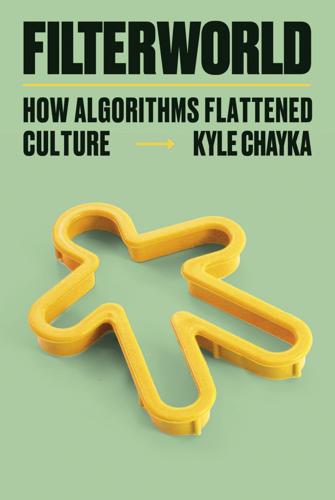
Filterworld: How Algorithms Flattened Culture
by
Kyle Chayka
Published 15 Jan 2024
It’s frustrating on the consumption side as well as creation: “No one is really given that choice to make that decision for themselves, to curate what they’re seeing in a way that feels great to them. It’s all being dictated by the algorithm.” Instagram shifted formats over the years, too, moving away from a feed of still images and adding stories, for ephemeral posts that mimicked Snapchat; Instagram TV, for longer videos; and eventually Reels, for short videos to copy TikTok. The app gradually lost its identity as a relatively austere space for expressing your own taste. “At no point were these decisions made to make the platform a better place for the people creating the content,” Janelle said.
…
The strategy was “buy or bury.” For several years after the acquisition, Instagram remained more or less the same. But in 2015 the app incorporated advertising, in 2016 it switched to an algorithmic feed, and in 2017 it added Stories, the ephemeral posts that were its attempt to copy (and destroy) its competitor Snapchat. Instagram gradually became more and more like Facebook itself: a mishmash of different content types; personal and impersonal social connections; and a feed that gave you less what you wanted than whatever the company was emphasizing at the moment, like videos or shopping opportunities. The chaotic changes were frustrating for an app that had been devoted to aesthetic experiences.
…
Google’s own social network Google Plus was incomprehensible from its launch in 2011 until it quietly disappeared in 2019. Crowdfunding services, like Kickstarter and Patreon, offered hope for more niche cultural projects by allowing supporters to pay directly for what they wanted to see, but they didn’t achieve the kind of momentum that Snapchat and TikTok—the only real competitors to Facebook’s social dominance—later did. Soon the next threat to Facebook emerged: instant messaging. The company was seeing new apps take advantage of smartphone owners’ lists of contacts, supplanting SMS and iMessage as the way people communicated directly with each other (the messaging apps used Internet connection rather than phone signal).

How to Fix the Future: Staying Human in the Digital Age
by
Andrew Keen
Published 1 Mar 2018
“That’s frickin’ frightening,” Kahle, who was with Cerf and Berners-Lee a founding inductee into the Internet Hall of Fame, warns about this unaccountable online surveillance. “It shouldn’t be a security decision every time you click on a link.” Part of the problem is that Silicon Valley’s dominant business model—essentially the commercial appropriation of users’ data—is profoundly flawed. Facebook, Google, YouTube, Instagram, Snapchat, WhatsApp, and most of the other dominant internet businesses give away their products at no charge and then make all their money by selling increasingly personalized and intelligent advertising around these free products. Of the $89.46 billion in Google’s 2016 annual revenue, for example, $79.38 billion was generated by advertising revenue.
…
Instead of throwing billions of dollars into quixotic ventures that will supposedly let us live forever, Mark Zuckerberg would be better off trying to confront the global problem of technological behavioral addiction—the “Facebook hook” and “Instagram hook” that the New York University psychologist Adam Alter argues are shrinking our attention span to less than that of a goldfish. Zuckerberg might, for example, invest some of his time and resources in Tristan Harris’s nonprofit movement Time Well Spent, with its commitment to introducing a new Hippocratic Oath for software developers against the invention of addictive apps like Facebook, Snapchat, and Instagram. In July 2017, Reid Hoffman and his friend Mark Pincus, the cofounder of the online game developer Zynga, introduced a new group to hack the Democratic Party called Win the Future (WTF). Their goal, according to the online tech website Recode, is “to force Democrats to rewire their philosophical core, from their agenda to the way they choose candidates in elections.”20 But WTF puts the cart before the horse.
…
And a few days after these European boycotts made news, a number of major American advertisers, including Starbucks, AT&T, Walmart, Verizon, and Johnson & Johnson, joined the defection, announcing an end to their ad spending on Google until the system is made more accountable.9 These actions have the implicit support of Sir Martin Sorrell, the CEO of WPP, the world’s largest marketing company, who remarked that Google and Facebook have “the same responsibilities as any media companies” and could not “masquerade” as mere technology platforms.10 Sorrell, with whom I’ve spoken at great length over the years about this problem of responsibility and accountability, is absolutely right. The fundamental problem about not just Google and YouTube, but also Facebook, Instagram, Snapchat, and many other Silicon Valley companies, is their unwillingness to grow up and assume the complex responsibilities of media companies. This means not only ensuring that the content on their networks isn’t stolen or hateful, but also guaranteeing that advertisers don’t find their messages attached to offensive or illegal content that tarnishes their brands.

Superbloom: How Technologies of Connection Tear Us Apart
by
Nicholas Carr
Published 28 Jan 2025
Studies dating back to the early days of instant messaging and texting show that strangers tend to disclose much more information about themselves when chatting through computers than when talking in person—a result of what psychologists call the online disinhibition effect.8 The old taboo that checked our urge to talk about ourselves in public faded away when we found ourselves looking into a screen instead of another person’s eyes. With the rise of social media, oversharing became the new norm. Facebook, Snapchat, X, and other platforms have been painstakingly designed to encourage self-expression. By emphasizing quantitative measures of social status—follower and friend counts, like and retweet tallies—the platforms reward people for broadcasting endless details about their lives and opinions through messages, posts, photos, and videos.
…
Eager to keep some separation between social spheres, people began looking for ways to reestablish boundaries within the new media environment. The young, again, led the way. During the 2010s, high school and college students shifted their social media use away from the public platform of Facebook, where the olds lurked, and onto the more intimate platform of Snapchat, where they could restrict their audience and where messages disappeared quickly. Private accounts became popular on other social networks as well. Group chats, group texts, and direct messages proliferated. On Instagram, people established secret, pseudonymous accounts—fake Instagrams, or finstas—limited to their closest friends.
…
In others, researchers have subjects spend a specified amount of time using social media (dose) and then compare their mood afterwards with their mood before (response). What these experiments miss is the way a new communication technology reshapes social relations in general.37 The ubiquity of smartphones and social media has fundamentally changed the social lives of kids (and many adults), regardless of how many minutes a day they spend on Snapchat or TikTok or Instagram. If none of your friends wants to hang out, you’ll suffer the effects of social isolation even if you delete all the social media apps on your phone. Indeed, deleting the apps may make you feel more isolated. Twenge explains the situation well: The smartphone led to a global rewiring of human social interaction—when most people own smartphones and use social media, everyone is impacted, whether they use these technologies or not.

The Future Is Faster Than You Think: How Converging Technologies Are Transforming Business, Industries, and Our Lives
by
Peter H. Diamandis
and
Steven Kotler
Published 28 Jan 2020
Facebook’s above $500 billion: Matt Egan, “Facebook and Amazon Hit $500 Billion Milestone,” CNN, July 27, 2017. See: https://money.cnn.com/2017/07/27/investing/facebook-amazon-500-billion-bezos-zuckerberg/index.html. The Spatial Web A partnership between Snapchat and Amazon: Josh Constine, “Snapchat Lets You Take a Photo of an Object to Buy It on Amazon,” TechCrunch, September 24, 2018. See: https://techcrunch.com/2018/09/24/snapchat-amazon-visual-search/. Pinterest, meanwhile, has a multitude of visual search tools: See Pinterest’s original announcement: https://newsroom.pinterest.com/en/post/introducing-the-next-wave-of-visual-search-and-shopping.
…
It’s a new form of advertising, either an extension of frictionless shopping, or a novel type of spam, depending on your perspective. The early version of this reality is already here. Known as “visual search,” the feature is currently available from an assortment of companies. A partnership between Snapchat and Amazon, for example, allows you to point their app-camera at an object, then get a link showing either the product itself or something similar, available for purchase. Pinterest, meanwhile, has a multitude of visual search tools, such as Shop the Look, which dots every object in a photo. Like the couch?
…
Sears Watch Company, 96 Ryan ToysReview (YouTube program), 129 Sacks, David, 17 Sagan, Carl, 212 Samsung, 51 Samumed, 90, 176–77 Sanford, Glenn, 196–97 Sasson, Steven, 43 satellite communications, 152 network connections and, 40 saved time, 15, 70–72 Scharf, Caleb, 215 Scheherazade (gaming technology), 130, 131 Schumpeter, Joseph, 239 Science, 65 Scientific American, 215 screens, new technologies for, 139–40 sea level rise, 232, 241–42 search engines, 71 Sears, 21, 95–98 Sears, Richard Warren, 95–96 Seasteading Institute, 200 Second Life, 86, 248 Sedol, Lee, 36 Sehgal, Suren, 174–75 self-education, computer-aided, 144–47 senolytic therapies, 90, 175–76 senses, content and, 134–35 sensors, 41–44, 72, 136 insurance rates and, 188 smartphones and, 43 Sentry System, 233 Sequoia Capital, 128 serotonin, 247 service economy, AI and, 34–35 severe combined immunodeficiency (Bubble Boy disease), 65, 66 sex, VR and, 248–49 shipping industry, 182 shopping: AI and, 100–106 AI assistants and, 123–24 bricks-and-mortar stores in, 97–98 cashierless, 104–5 discount pricing and, 96, 98 e-commerce revolution in, 98–100 frictionless, 100, 101, 103, 105 “Internet of Things” and, 104–6 rise of mail order in, 95 robots and, 106–8 3–D body-scanning and, 114 3–D printing and, 108–11 VR and, 113–14 Sidewalk Labs, 235 Sikorsky, Igor, 9 Singularity, 76 Singularity University, xii, 8, 264, 266 Siri, 100, 132 Sirius XM, 152 “Six Ds of Exponentials,” 31 Skirball Cultural Center, 3 Skysource, 214 sleep: disease and, 41 sensors and, 41–42 Slingshot, 213–14 smart cities, 235, 245 smart dust, 44 Smart Finance Group, 194–95 smart grids, water scarcity and, 214–15 smartness economy, 85 smart objects, 59–60 smartphones, 100–101 demonetization and, 78 sensors and, 43 smart shelf technology, 105–6 Snapchat, 119 Snapshot (TripSense), 188 Social Glass, 235 Softbank, 14, 40, 46, 107 Solar Cities, 252 solar energy, 10, 63, 78, 214, 215–18 solid state batteries, 222 Son, Masayoshi, 76–77 Song, Dong, 82 Soul Machines, 103 sovereign wealth funds (SWFs), 76 Soviet Union, space race and, 73 space, colonization of, 249–53 space race, 73 Bezos vs.
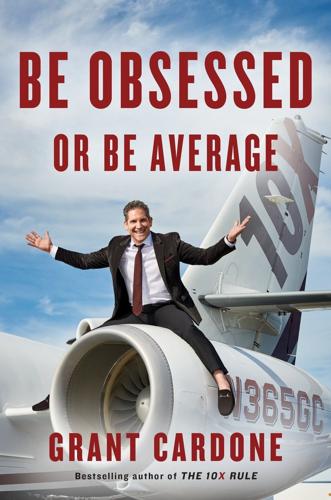
Be Obsessed or Be Average
by
Grant Cardone
Published 20 Sep 2016
Or they’re glued to one of so many made-up sagas about cops solving crimes or battles in imaginary kingdoms. Turn those off, and you live in a world where there are more mobile devices than human beings. We are being blasted by 24-7 Internet jabber, Twitter feeds in the hundreds of billions, eight billion daily Snapchat and YouTube videos, trillions of useless posts every day, and now streaming video where everyone can be a broadcaster puking mindless content. Not to mention we’re constantly being spammed with pornography, celebrity fascinations, and bouncing cats. With this much distraction coming at you nonstop, the chance for success is slight.
…
Most will not take the challenge—this is not for everyone. But it is for me and I expect it is for you. Hit me up on your favorite social media platform with the message “I am obsessed and refuse to have an average life. #BeObsessed,” and I will know you have read my book. On Twitter, Facebook, Snapchat, YouTube, and LinkedIn I am @GrantCardone (or just search for “Grant Cardone”). Come and join the Obsessed movement. If you need anything at all, don’t hesitate to reach out to a member of my team. We’d love the privilege of coaching and serving you, whether it’s using our training materials, delivering a live keynote to your organization, working with your kids’ school or college, speaking at your church, or delivering a virtual seminar to your people, and if I can answer any of your questions, I’m here for you.
…
It offers Grant Cardone’s most extensive sales training curriculum on the web today. With over thirty years of real-world sales experience, Grant Cardone provides a dynamic sales training tool for use in almost any sales situation for teams and individuals alike. FOR FREE SALES TIPS AND MOTIVATION, FOLLOW GRANT! Twitter: @GrantCardone Facebook: /GrantCardoneFan Snapchat: /GrantCardone GRANTCARDONETV.COM Grant Cardone TV provides programming made especially for entrepreneurs, business owners, go-getters, start-ups, sales organizations, and success-minded people who want to control where they get their news and their solutions. This channel is for those who refuse to be spectators and demand to be in control of the content they receive, understanding that the outcomes of life are literally the thoughts that you consume.
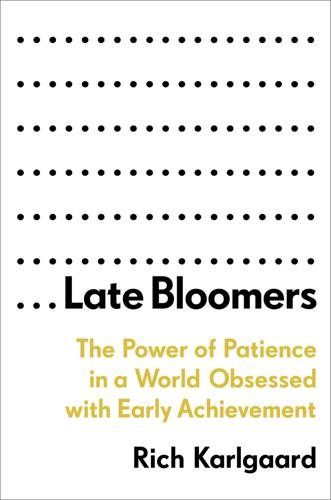
Late Bloomers: The Power of Patience in a World Obsessed With Early Achievement
by
Rich Karlgaard
Published 15 Apr 2019
Social media platforms like Facebook, Snapchat, and especially Instagram play an outsize role in this transformation. They speak directly to the anxieties of young and old adults alike. We’ve long understood that movies, magazines, and television can shape self-image and enforce social ideals, but social media has now become our most toxic cultural mirror. According to an extensive survey conducted by the Royal Society for Public Health, visual platforms like Facebook, Instagram, and Snapchat allow young adults to compare themselves to one another and earn approval based on appearances. The study found Snapchat to be the social media platform most likely associated with high levels of anxiety, depression, and bullying.
…
In technology, whiz kid Palmer Luckey, the twenty-year-old founder of Oculus VR (acquired by Facebook for $2 billion), became a face of virtual reality, while fourteen-year-old Robert Nay cleared over $2 million in just two weeks with his mobile game Bubble Ball. At twenty-six, Evan Spiegel was worth $5.4 billion when Snapchat issued public stock in 2017. But Spiegel has miles to go to catch up with Facebook’s Mark Zuckerberg, now an elder statesman at thirty-four, who with $60 billion is one of the five richest people in the world. Even in the stodgy world of chess, Norwegian Magnus Carlsen was a three-time world champion by twenty-five.
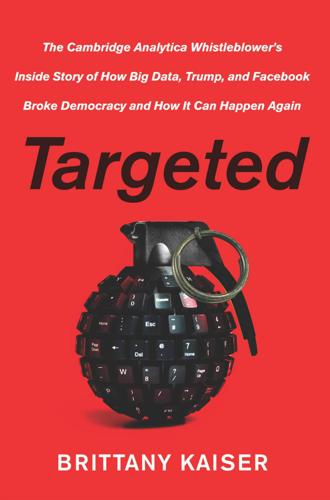
Targeted: The Cambridge Analytica Whistleblower's Inside Story of How Big Data, Trump, and Facebook Broke Democracy and How It Can Happen Again
by
Brittany Kaiser
Published 21 Oct 2019
Twitter had a new product called “Conversational Ads,” which showed drop-down lists of suggested hashtags that, once clicked on, automatically retweeted the ad alongside the hashtag, ensuring that the Trump campaign’s tweets trended over Hillary’s. Snapchat also ramped up the innovation with “WebView Ads,” which featured a data-capture component asking users to sign up as campaign supporters, allowing the campaign to keep harvesting data and adding to its target audience. Snapchat employees introduced the CA team to a new, inexpensive product it called “Direct Response,” which targeted young people who spent all their time online. If you swiped upward on a photo, it led you to a screen where you could add your email address; the terms and conditions gave all sorts of new data as well. And Snapchat’s WebView Ads and filters (such as selfies you could take that put you behind bars with Hillary) had also been big winners.
…
Out of the voters they then targeted, the team found (through post-impression polling, i.e., asking survey questions to targeted individuals who had seen the ad) that they could achieve an 11.3 percent favorability for Trump with an online audience of 147,000 people, and an 8.3 percent increase among them in intention to vote for Trump, not to mention an increase of 18.1 percent in online searches by those same people on issues that had been brought up in the videos. Again, those leading the companywide videocast reiterated to us the value of having Facebook, Snapchat, Google, Twitter, and others as part of the team. A new Facebook product had allowed the team to embed multiple videos in one ad. From one such ad in particular there had been as much as a 3.9 percent increase in intention to vote for Trump, and as much as a 4.9 percent decrease in intention to vote for Hillary.

Character Limit: How Elon Musk Destroyed Twitter
by
Kate Conger
and
Ryan Mac
Published 17 Sep 2024
That February, the company announced that for the first time ever, it had turned an annual profit, making $1.2 billion in what Dorsey said was “proof that our long-term strategy is working.” It also disclosed that it had 126 million daily active users, up 9 percent from the same period the year before. In the land of giants, however, that wasn’t impressive. Other players like Snapchat, and a fledgling video app called TikTok, were gaining ground. Investors and analysts dogged Dorsey with questions about whether or not he could keep Twitter relevant, particularly while he had split duties leading Square at the same time. The return of the company’s original product mind was supposed to stimulate new ideas and Dorsey made some cosmetic changes—notably expanding the tweet character limit from 140 to 280—but nothing seismic was underway.
…
On February 21, a few hours after his call with Kordestani, Cohn sent his promised letter to Twitter’s board, formally announcing his stake in the company. The letter stopped short of calling for Dorsey’s firing but outlined the concerns about his part-time leadership. The board panicked. Twitter was unlike Facebook and Snapchat, where the founder–chief executives had structured their ownership specifically to protect themselves from this kind of interference. Those companies had super-voting shares that gave the founders outsize control over their organizations, even after the companies had gone public. Dorsey owned only a thin slice of Twitter, a 2 percent stake worth about $531 million, and had no super-voting stock, leaving him vulnerable.
…
He could also bail on the entire transaction, leaving the shareholders high and dry. The best thing to do, Taylor admitted, was to take Musk’s offer. It would lock the billionaire in at an acceptable price and give the board some control over how the transaction played out. Other board members agreed. Twitter’s closest comparable public company, Snapchat, had seen its share prices fall about 20 percent that month, while six tech giants—Apple, Amazon, Google, Meta, Microsoft, and Netflix—collectively had lost more than $2 trillion in market value since the start of the year. It was a dicey moment for the wider American economy. Market analysts who thought Musk’s offer was a lowball effort just weeks earlier had started to change their tune as well.
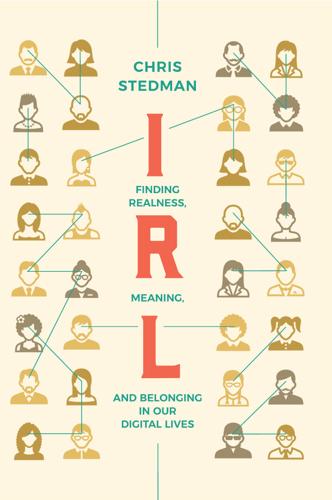
IRL: Finding Realness, Meaning, and Belonging in Our Digital Lives
by
Chris Stedman
Published 19 Oct 2020
I’m still here. I’m alive. *** For most of my twenties, I was what you might call Very Online—constantly plugged in and logged on. Still, among my peers, the volume of my social media output felt pretty average, sometimes even below average. I mostly stopped using Facebook in my midtwenties, quit Snapchat (a platform for images and videos that supposedly vanish within twenty-four hours, so a lot of people use it to share nudes) shortly after signing up, and totally failed at Tumblr (even my abiding love of sad lyrics wasn’t enough to help me navigate the microblogging site). But even with these gaps, there were few windows in my twenties where I let more than twenty-four hours go completely undocumented online.
…
(Actually, I take that back. Somehow, over the course of writing this book, we all decided some TikToks are pretty funny.) But I continue to tweet most days, and the pink circle alerting users that there’s content on my Instagram story—where temporary photos and videos are stored for twenty-four hours, so basically it’s Snapchat but embedded in your Instagram—is generally active, pointing the way to videos of Tuna stretching and screenshots of what I’m listening to on Spotify. (Just the cool stuff, of course. Relient K, the Christian pop-punk band I loved as a teenager and still secretly listen to, doesn’t make the story.)
…
During a particularly challenging lesson in which the teacher gave a large assignment and then refused to budge when students protested, I went to the back of the room, emptied out a box of tissues, wrote COMMENT BOX on it, and passed it around the room so that we could each share our “feedback” on how our teacher was doing. While some of my peers had cell phones at that point, there was no such thing as Snapchat or Instagram. So the incident wasn’t documented, wasn’t posted on Instagram or broadcast live. For a long time, only those who had been in the room or who had been told about it knew the story. It didn’t follow me around; it wasn’t attached to my name. Until, in 2012, I published my first book, which contained a passing reference to it near the end: I’ve still got a mean streak.
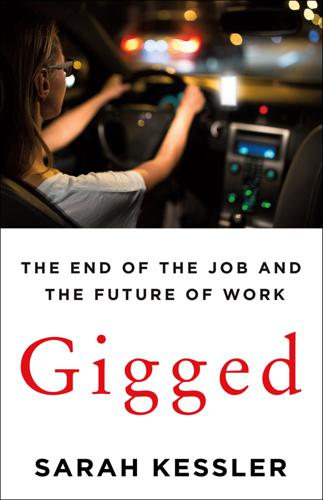
Gigged: The End of the Job and the Future of Work
by
Sarah Kessler
Published 11 Jun 2018
In 2013, the company raised a $258 million round of funding led by Google’s investment arm, Google Ventures—an amount that Gawker’s tech blog called “stupefying.”3 The $258 million investment seemed remarkable partly because Uber had so little in common with the hot apps of the time, those for sharing photos, turning phones into walkie- talkies, or making social connections on the street. Though some of these “potential breakout apps” sound trivial or silly in retrospect, they all had the potential to become quickly and massively profitable—Instagram and Snapchat both emerged from this period—which isn’t the case for most companies. By the time Facebook bought Instagram, the most successful of my “2011 breakout apps,” for $1 billion in 2012, the photo-sharing service had 30 million users but only 13 employees, including its cofounders. That’s more than $75 million of value per person.
…
October 2016. 13 From https://gigster.com; since changed. 14 Kalil, Tom, and Farnamn Jahanian. Computer Science Is for Everyone! Obama White House Archives. December 11, 2013. https://obamawhitehouse.archives.gov/blog/2013/12/11/computer-science-everyone. 15 Kessler, Sarah. Tech Interns at Facebook and Snapchat Make Significantly More Than Almost All Americans. Quartz. December 5, 2016. https://qz.com/851945/how-much-interns-at-tech-companies-get-paid/. 16 Though Gigster in 2016 announced it would offer freelance workers a way to earn equity in some of the startups they collectively did work for, Curtis never heard anything about how to participate.
…
See also Davenport, Terrence; Foster, Gary; Green, Shakira; Logan, Kristen Samasource Schneider, Nathan Scholz, Trebor Schwartz, Emma (Managed by Q employee) Schwarzenegger, Arnold Screen Actors Guild self-driving cars Shea, Katie Shieber, Jon Shyp (shipping service) sick days Silberman, Six Snapchat So Lo Mo (social, local, mobile) Social Security SpaceX Sprig (restaurant delivery service) Starbucks Stern, Andy Stocksy (stock photo cooperative) subcontractors Arise and earnings Managed by Q and Silicon Valley and Sundararajan, Arun Sweet, Julie SXSW (South by Southwest) Taft-Hartley Act Take Wonolo (staffing agency) Target TaskRabbit (odd job marketplace) taxi industry EU regulation and New York Taxi Workers Alliance tips and Uber and US statistics See also Lyft; ride-hailing services; Uber TechCrunch (blog) TechCrunch Disrupt temp workers and agencies early history of earnings freelancers versus injury rate Kelly Services (“Kelly Girls”) Manpower permanent employees versus Silicon Valley and “temp worker” as a category US statistics work satisfaction Teran, Dan Tischen (labor marketplace) Ton, Zeynep Trader Joe’s trucking industry Trudeau, Kevin Trump, Donald Try Caviar (food delivery service) Turker Nation (online forum) Turkopticon Twitch (live streaming video platform) Twitter Uber (ride-hailing service) 180 days of change affiliate marketing program driver-led activism and protests Drivers’ Guild and FTC charges of exaggerated earnings funding growth of guaranteed fares history of independent contractor model lawsuits and legal issues “No shifts.

The Brussels Effect: How the European Union Rules the World
by
Anu Bradford
Published 14 Sep 2020
See also emissions trading scheme (ETS) 2012 EU regulation, 262–63, 380n180 Greenleaf, Graham, 147–48 Green parties, 211 green protectionism, 241 gross domestic product (GDP), 27, 28 China, 267, 268 EU, future, 267 India, 267 PPP-adjusted, 267 gross domestic product (GDP) per capita, 27–28 China, 269 gross national income (GNI), 27–28 Group of Twenty (G-20), 72–73 GURTS, 276–77 Hachez, Nicolas, 85 Hancock, Matt, 279 harmonization downward, 10–12 expertise, country, 13–14 issue salience, 13–14 upward, 10–12 wealth, country, 13–14 harmonization, market-driven, 67–68, 86, 90, 91 advantages, 82 harmonization, regulatory minimum, 10 pursuit, 10 rationale and goal, 9–10 harmonization, treaty-driven, 67–68, 82, 83, 86 definition, 82 multilateralism, persistence, 86 rationale, 88–89 standard setting, 88–89, 90, 314n115 harmonization article, 34 Hart-Scott-Rodino Act, 315n15 hate speech online, regulation, xiii–xiv, 46 Austria, Facebook case, 166–67 Code of Conduct on Countering Illegal Hate Speech Online, 131, 156, 158, 161–63, 164–65, 248–49 digital company regulation, 157–58 European Framework Decision, 161 free speech/freedom of expression, 155–56 geo-blocking, 165 inelasticity, 164 #MediaAgainstHate, 159–60 “No Hate Speech Movement,” 159–60 non-divisibility, 164–67 policy, 93–94 Snapchat, 161, 162–63, 341n261 Twitter, xiv, 131, 158, 164–65, 248–49 voluntary commitments and standards, 160, 161–62, 163 hate speech online, regulation, case studies, 131, 155–60 Brussels Effect, 160 Charter for Fundamental Rights, 156–57 Erbakan v Turkey, 157 European Convention, 157 European Court of Human Rights rulings, 157 Facebook, 160–61 Feryn, 156–57 Google, 160–61 legislation, major, 156 participatory and voluntary approach, 158 penalizing requirement, 157 political economy, 159 Snapchat, 161 YouTube, 160–61 hazardous substances and electronic waste regulations, 93–94 de facto Brussels Effect, 214 de jure Brussels Effect, 222 US states’ adopting, 252–53 hazardous waste standards, 30 health and safety, consumer, 93–94, 171–206.
…
Google CEO Sundar Pichai communicated to investors that Google is “very committed to the region” and that Europe is an “important market for us.”259 This commitment is evidenced by the company’s plans to expand new offices in Europe, to build an AI center on the continent, and to expand hiring of staff.260 The most recent signatory to the Code, Snapchat, also regards Europe as one of its “core markets.”261 Regardless of its notable market power, the EU has chosen not to leverage that power through binding rules but pursue voluntary standards instead. The main sanction for noncompliance with the Code of Conduct is reputational. The Commission, together with member state officials and civil society organizations, monitors signatories’ compliance periodically and publishes the rates at which these companies are reviewing and taking down speech that violates the Code.262 And as the discussion further along in this chapter reveals, the companies’ compliance rates have been high.
…
While the Code only calls for these companies to review “the majority” of the notifications within 24 hours, on average the companies are reviewing 89% of notifications within that time frame, which is over double the number compared to the first monitoring round.273 The IT companies are also building up their capacity to comply by hiring more staff to review illegal content. Facebook alone announced in 2017 that it would hire an additional 3,000 moderators to identify hateful material on its platform, adding to the existing team of 4,500.274 Finally, new companies are joining the Code, some of the latest signatories being Instagram, Google+,275 and Snapchat in 2018.276 Despite the (relative) success of the voluntary regulation to date, the EU is considering abandoning the voluntary approach and introducing binding regulation in the near future. A comprehensive “Digital Services Act” is currently being drafted by the Commission, and may possibly be introduced by the end of 2020.277 This new Act would vest the EU with “sweeping legal powers” to regulate hate speech as well as other illegal content and political advertising online.

Terms of Service: Social Media and the Price of Constant Connection
by
Jacob Silverman
Published 17 Mar 2015
Now that every smartphone comes complete with a digital camera as good as any point-and-shoot most of us had a few years ago, there is little reason not to photograph something. Into the camera roll it goes, so that later you can perform the ritual triage: Filter or no filter? Tumblr, Instagram, or Snapchat? The ubiquity of digital photography, along with image-heavy (or image-only) social networks such as Instagram, Pinterest, Tumblr, Imgur, Snapchat, and Facebook, has changed what it means to take and collect photos. No longer do we shoot, develop, and then curate them in frames or albums in the privacy of our homes. If we organize them into albums at all, it’s on Facebook or Flickr—that is, on someone else’s platform—and leave them there to be commented upon and circulated through the network.
…
The relative decline of Facebook usage among young people may be attributed, at least in part, to this growing feeling of stasis. (The influx of older Facebook users, who render the network uncool and easily monitored by parents and other authority figures, also doesn’t help.) Private and ephemeral messaging apps such as Snapchat, Kik, and WhatsApp offer young people—who are already used to cleverly managing their privacy when dealing with prying parents at home—an opportunity to communicate creatively with less fear of repercussion. Like e-mail, these apps aren’t immune to eavesdropping, but they help return communication to a more protected space.
…
Privacy becomes networked, as each context may have local standards, controls, and practices, but the information itself—the stuff which privacy dictates we have control over—slops over the sides of the vessel, spreading and multiplying. This can happen in many ways. People share things in other environments: a private message is read aloud; a tweet is posted on Facebook; a screenshot or photograph is taken of a supposedly ephemeral Snapchat. Requests to keep information private go ignored. A friend tags you in a photo without thinking about whether you want to be identified in it. Some people don’t know better—they don’t think how their sharing of some information may violate someone’s privacy, particularly as sharing becomes its own kind of sociocultural value.
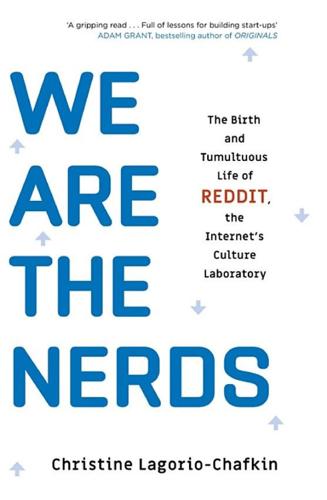
We Are the Nerds: The Birth and Tumultuous Life of Reddit, the Internet's Culture Laboratory
by
Christine Lagorio-Chafkin
Published 1 Oct 2018
He knew he liked to build things, and on the weekends he liked to hang out with his friends from back in the Y Combinator days, spending afternoons in large groups lounging at biergartens or in backyards, or nights at dive bars or karaoke. All alcohol-fueled, all a blast. Anonymity wasn’t always easy: His friends, such as Justin Kan, Snapchatted and Instagrammed frequently, and given their success, they lived lives at times filled with conspicuous consumption. Kan, along with Emmett Shear and Michael Seibel, sold Twitch, which started way back when as Justin.tv in the Crystal Towers apartments, to Amazon in 2014 for almost $1 billion. That same summer, Huffman and his friends all flew to Ibiza for Seibel’s bachelor party.
…
As further verification, or perhaps just to be adorable, she attached a cartoon of herself and Ohanian that he’d drawn of them, with red Snoo eyes and little alien antennae. She may not have posted it herself, but Williams—who likes writing in her spare time—said she wrote it herself. In part inspired by Miranda Kerr and Evan Spiegel’s engagement announcement via the platform he’d created, Snapchat, Williams says she floated to Ohanian the possibility of letting the world in on their engagement on Reddit. She’d been wanting to make an effort to be more involved with her fiancé’s work, so one day she said, of their engagement: “Wouldn’t it be really cool to do a blog on Reddit?” Ohanian told her it would be amazing.
…
A handful of U.S. companies by this time had employees whose full- or part-time job was to manage their Reddit presence, though Jandali was already looking forward to the day when advertisers or their agencies trained up on doing this themselves. He was prepared for third-party ad vendors to pop up to design and sell Reddit ads, the way several had emerged to specialize in selling Snapchat ads and creating product placements there. If Jandali was the calm and steady leader inside Reddit, all dark-rimmed glasses and cashmere sweaters, Ohanian, in flashy sneakers and T-shirts, had begun to serve as a jet-setting hype man. After Huffman shut down Ohanian’s pet project, Upvoted, he helped shift Ohanian’s priorities to include meeting with potential corporate clients.
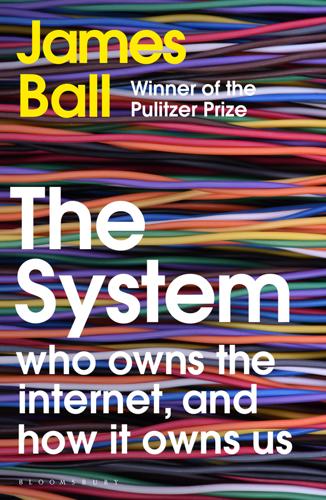
The System: Who Owns the Internet, and How It Owns Us
by
James Ball
Published 19 Aug 2020
You can look up what trackers are used by different sites yourself by downloading a browser add-on called ‘Ghostery’, which can both identify and block such trackers. Nine of the nytimes.com trackers – ‘Amazon associates’, ‘BlueKai’, ‘Google AdWords Conversion’, ‘DoubleClick Floodlight’, ‘Twitter advertising’, ‘Facebook custom audience’, ‘Google Publisher Tags’, ‘Yahoo DOT tag’ and ‘Snapchat For Business’ – are marked as directly relating to advertising. A trip to CNN loads twenty-eight trackers, fifteen of them advertising. Thesun.co.uk loads up thirty-five, including fourteen ad trackers. And the tech site wired.com fired up no fewer than forty-four trackers, eighteen of them advertising.6 The number of trackers on each site varies depending on how many ad networks they work with, how much data they collect and how their own site is built.
…
The fear comes from what telecoms and cable companies do on other networks, where they’re not barred from discriminating between different kinds of traffic – charging extra for any kind of premium service. If your cable company can identify which traffic coming to your device is HD video content, it could offer you a ‘premium package’, allowing you to have internet plus HD streaming for just £5.99 a month extra. If it detects your traffic is from Facebook, Twitter and Snapchat, it could offer you a ‘social package’ with unlimited social networking for just an extra £2.99. This could go further. Let’s imagine your telecoms provider is also the company which provides your internet. Would it really want to let you use services like Skype or Facetime, rather than using your minutes, or paying as you go?
…
Ethiopian government, here Kleinrock, Leonard, here, here, here, here, here Kline, Charley, here Knight Foundation, here Kunlun, here Leigh, David, here LinkedIn, here London Olympics, here Lukasik, Steve, here Lumley, Joanna, here Luther, Martin, here MacAskill, Ewen, here machine learning, here, here Marby, Göran, here, here, here, here Markota, Martina, here Mastering the Internet programme, here Meckl, Steve, here, here Medium, here Menwith Hill, here MI5, 146 Microsoft, here, here, here see also Encarta; Windows Millar, Stuart, here Minecraft, here Morgan, J.P., here music publishers, here MySpace, here NASA, here National Health Service (NHS), here National Science Foundation, here National Security Agency (NSA), here, here, here, here, here, here, here, here, here, here and encryption, here NBC, here net neutrality, here, here, here, here, here, here, here, here Netflix, here, here, here, here Netscape, here network effects, here network slicing, here neurolinguistic programming, here New York magazine, here New York Times, here, here, here, here New Yorker, here newspapers, here, here, here, here see also journalism North Korea, here nuclear weapons and warfare, here, here, here Obama, Barack, here, here, here O’Kelley, Brian, here, here, here, here, here, here, here Oliver, John, here, here OpenSecrets database, here Opera, here Optic Nerve programme, here Outbrain, here, here packet switching, here, here Page, Larry, here Pai, Ajit, here, here, here Pakistan Telecom, here Panopticlick 3.0, here Parker, Sean, here PayPal, here, here, here, here, here People for the Ethical Treatment of Animals (PETA), here Philippines, human rights violations, here pinging, here Pizzagate conspiracy, here Poitras, Laura, here populism, here, here pornography, here, here Postel, Jon, here privacy, here, here, here, here see also surveillance Privacy Badger, here Prodigy, here ProPublica, here, here publishers, and advertising, here, here, here railways, here, here, here, here, here Read, Max, here Reagan, Ronald, here Reddit, here Register, The, here Rekhter, Yakov, here, here Requests for Comments (RFCs), here, here, here, here Right Media, here, here Roberts, Brian, here, here, here Rockefeller, John D., here Roosevelt, Franklin D., here routers, here, here Royal Bank of Scotland (RBS), here, here Rubenstein, Michael, here Rusbridger, Alan, here Russia, here, here, here, here Sainsbury’s/Asda merger, here Schneidermann, Eric, here secure operations centres (SOCs), here sensitive compartmented information facilities (SCIFs), here Shaw, Mona, here Silicon Valley, here, here, here, here, here, here, here, here Sinclair Broadcast Group, here Skype, here, here, here, here Snapchat, here, here Snowden, Edward, here, here, here, here, here, here, here, here ‘social credit’, here Soundcloud, here South Korea, here sovereign immunity, here Spotify, here Stanford Research Institute (SRI), here, here, here, here, here, here, here Stripe, here Sun, The, here Sun Microsystems, here surveillance, here, here, here, here resistance to, here Symantec, here, here, here Syria, here, here Taboola, here, here TCP/IP, here, here Telefonica, here Telegram, here telephone networks, here, here, here Tempora, here, here TenCent, here, here terror plots, foiled, here Texas A&M, here Thatcher, Margaret, here Thiel, Peter, here, here Tibet, here Time Warner, here, here Times, The, here Tishgart, Barry, here Topolski, Robb, here traceroute, here, here tracking, see cookies trade unions, here, here, here trademark law, here transatlantic cables, here Tribune newspaper group, here Trump, Donald, here, here, here, here Tuchman, Barbara, here Tumblr, here, here Turkey, bans Wikipedia, here Tweetdeck, here Twitter, here, here, here, here, here, here, here, here, here, here, here, here, here Uber, here Ukraine, here Union Square Ventures (USV), here Universal Declaration of Human Rights, here Universal Studios, here University College, London, here University of California, Los Angeles UCLA, here, here, here, here University of Maryland Law School, here US Congress, here US Constitution, here, here US culture, and internet regulation, here US Department of Commerce, here, here US Department of Defense, here, here, here, here, here, here, here US Department of Energy, here US internet infrastructure, here, here US Supreme Court, here venture capital, here, here, here, here funding phases, here funding series, here, here Verizon, here, here Wales, Jimmy, here WannaCry attack, here Washington Post, here, here, here, here, here web addresses (URLs), here, here, here top-level domains (TLDs), here and WannaCry attack, here WeChat, here Wenger, Albert, here, here, here, here, here WhatsApp, here, here, here, here, here, here, here Wheeler, Tom, here, here, here WikiLeaks, here, here, here Wikipedia, here, here Williams, Evan, here Windows, vulnerability in, here wired.com, here wireless internet, here, here wiretapping, here Woodward, Bob, here World Economic Forum, here World Wide Web, here, here, here, here, here, here, here Wu, Tim, here Yahoo, here, here, here YouTube, here, here, here, here, here, here Zittrain, Jonathan, here Zuckerberg, Mark, here, here, here, here, here, here Zynga, here BLOOMSBURY PUBLISHING Bloomsbury Publishing Plc 50 Bedford Square, London, WC1b 3DP, UK BLOOMSBURY, BLOOMSBURY PUBLISHING and the Diana logo are trademarks of Bloomsbury Publishing Plc First published in Great Britain 2020 This electronic edition published 2020 Copyright © James Ball, 2020 James Ball has asserted his right under the Copyright, Designs and Patents Act, 1988, to be identified as Author of this work All rights reserved.
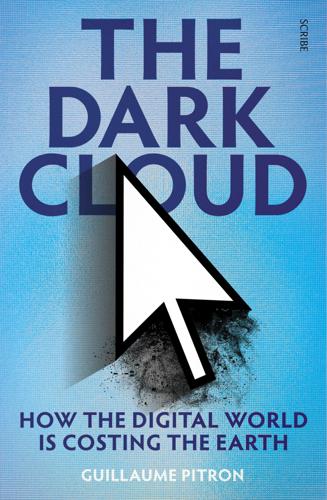
The Dark Cloud: How the Digital World Is Costing the Earth
by
Guillaume Pitron
Published 14 Jun 2023
But let us not forget that, like this stroke of marketing genius now subscribed to by 16 million followers on Twitter and Instagram, the ‘climate generation’ is predominantly made up of young consumers hooked on digital tools. In the US, teenagers spend up to seven hours and twenty-two minutes of their free time per day in front of a screen.17 Three hours of that time is spent watching videos on Netflix or Orange Cinema Series (OCS), and at least one hour is spent on social networks such as TikTok, SnapChat, Twitch, House Party, and Discord. In France, eighteen-year-olds have already owned an average of no fewer than five mobile telephones. And the younger you are, the more often you change your devices, despite these accounting for nearly half of digital pollution.18 For the first time in history, an entire generation has taken a stand to ‘save’ the planet, to bring governments to justice for climate inaction, and to plant trees.19 Parents lament having ‘three Greta Thunbergs at home’ up in arms against eating meat, using plastic, and air travel.20 This is also the generation that makes the most use of e-commerce, virtual reality, and gaming websites.
…
And even though your colleague is just ten metres away, your signal has travelled thousands of kilometres.55 There truly is a geography of a ‘like’. As a result of our intangible activities — sending an email via Gmail, a message on WhatsApp, and an emoticon on Facebook, or posting a video on TikTok or photos of amusing felines on Snapchat — we have built an infrastructure that, according to Greenpeace, ‘will likely be the largest single thing we build as a species’.56 Yet, as we have seen so far, the available literature tends to prove that the benefits of digital outweigh the drawbacks. That is, until the think tank The Shift Project really put its foot in it with its thoroughly researched report published in 2018: ‘The digital transition as it is currently implemented participates in global warming more than it helps to prevent it.’57 Furthermore, the risk that digital results in ‘a net increase in the environmental footprint of digital sectors is therefore very real’.58 So who do we believe?
…
First, we must call out, as did the former engineer at Google, Tristan Harris, the manipulation techniques developed by the big tech companies. The next step is to act. There are a number of solutions aimed at giving users back control of their existence: deactivating notifications, deleting the most addictive applications (Facebook, Snapchat, TikTok, and Instagram), distancing ourselves from social media whose algorithms provoke user indignation (and create traffic on the application), banishing smartphones from the bedroom, or switching off one day a week.76 There are associations that list bars and restaurants where using a smartphone is forbidden.
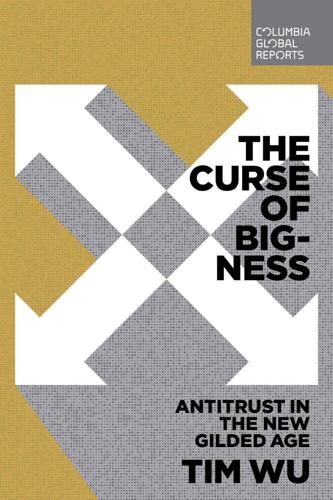
The Curse of Bigness: Antitrust in the New Gilded Age
by
Tim Wu
Published 14 Jun 2018
The value in any such site would rest in the quality of its user reviews, and as a newcomer, Google didn’t have any of those. It solved the problem by simply purloining Yelp’s reviews and putting them on its site, making Yelp essentially redundant, and also harvesting the proceeds of its many years of work.* Meanwhile, Facebook cloned so many of its rival Snapchat’s features that it began to seem like a running joke. Amazon has a track record of cloning products that succeed so it can help itself to the margins. To be sure, there is nothing wrong with firms copying to learn from each other; that’s how innovation can happen. But there is a line where copying and exclusion becomes anti-competitive, where the goal becomes the maintenance of monopoly as opposed to real improvement.

Platform Revolution: How Networked Markets Are Transforming the Economy--And How to Make Them Work for You
by
Sangeet Paul Choudary
,
Marshall W. van Alstyne
and
Geoffrey G. Parker
Published 27 Mar 2016
Recall that social gaming company Zynga and the photo-sharing services Instagram and Snapchat all started off as mere blips on the Facebook platform. But their social sharing and network effects enabled them to grow fast. Growth of this kind often launches a strategic tug-of-war. The platform may seek to absorb the function of the innovative partner and the value it creates by acquisition. As we’ve noted, Facebook succeeded in acquiring Instagram, purchasing the company for $1 billion in 2012; it has (so far) failed to acquire Snapchat, having made a $3 billion offer that company cofounder Evan Spiegel rejected in December 2013.
…
Our goal here is to provide not a comprehensive or systematic overview but simply a sketch which we hope will convey the growing scope and importance of platform companies on the world stage. INDUSTRY EXAMPLES Agriculture John Deere, Intuit Fasal Communication and Networking LinkedIn, Facebook, Twitter, Tinder, Instagram, Snapchat, WeChat Consumer Goods Philips, McCormick Foods FlavorPrint Education Udemy, Skillshare, Coursera, edX, Duolingo Energy and Heavy Industry Nest, Tesla Powerwall, General Electric, EnerNOC Finance Bitcoin, Lending Club, Kickstarter Health Care Cohealo, SimplyInsured, Kaiser Permanente Gaming Xbox, Nintendo, PlayStation Labor and Professional Services Upwork, Fiverr, 99designs, Sittercity, LegalZoom Local Services Yelp, Foursquare, Groupon, Angie’s List Logistics and Delivery Munchery, Foodpanda, Haier Group Media Medium, Viki, YouTube, Wikipedia, Huffington Post, Kindle Publishing Operating Systems iOS, Android, MacOS, Microsoft Windows Retail Amazon, Alibaba, Walgreens, Burberry, Shopkick Transportation Uber, Waze, BlaBlaCar, GrabTaxi, Ola Cabs Travel Airbnb, TripAdvisor FIGURE 1.2.
…
, 275 side switching, 26, 198, 299 Siemens, 76, 204, 247, 284 signal-to-noise ratio, 199, 200 sign-up methods, 66, 81–85, 190 Silicon Valley, 16, 76–77, 112, 252–53, 281–82 siloed industries, 176, 178 Singapore, 160–61, 179 single-side strategy, 95–96, 105 single-user feedback loop, 45–46, 100–101 Siri, 147 Sittercity, 47, 122 Skillshare, 4, 96, 111, 122, 124, 212, 265, 266 Skullcandy, 162 Skype, 200–201 small businesses, 72, 276–77 smart grids, 272–74 smart metrics, 201–2 smartphones, 64, 66, 92, 113, 131, 140 Smith, Adam, 280 Snapchat, 217 social losses, 238, 239 social networks, 3, 11, 36, 41–42, 45, 51, 58, 71, 72, 90–91, 92, 95–104, 113–15, 120–21, 131–33, 152, 163, 185, 198, 204, 217, 218, 221, 226, 245, 251–52 software, 33, 52–54, 57, 62–63, 67, 91–92, 95, 125, 136, 137, 143, 151–53, 159, 170, 173–75, 216–17, 219, 254–55, 267, 295 SolarCity, 273 solar panels, 69, 273 Sollecito, Raffaele, 129–30 Sony, 61, 75, 94, 124, 137, 138–39, 178, 211, 240, 246, 259, 270–71 Sony Corp. of America v.

Mbs: The Rise to Power of Mohammed Bin Salman
by
Ben Hubbard
Published 10 Mar 2020
One was the same cleric King Abdullah had fired for criticizing his co-ed university. Others had been thrown in prison, kicked off of television, or put under house arrest for preaching that strayed outside of the ever-shifting red lines. But the assets they brought to the meeting were clear: millions of followers on Twitter, Snapchat, and other social media platforms. MBS knew well that no other group of Saudis could so easily land Vision 2030 on the screens of so many cellphones across the kingdom. The other group were intellectuals and journalists who played a role in shaping Saudi public opinion by telegraphing the kingdom’s views and letting the people know how their leaders viewed regional and international issues.
…
Al-Awda had endorsed extremist views during his younger years and done substantial jail time for questioning the religious legitimacy of the royal family and participating in calls for reform. But he had mellowed with age. His books were widely read, he had hosted popular religious programs on television and YouTube, and he had more than 13 million followers on Twitter. Many of his fans also followed him on Snapchat, where the now-grandfatherly scholar had rebranded himself as a cleric of the people and sent out sunny dispatches about Islam in daily life. He had spoken fondly of the idea of constitutional monarchy and encouraged the kingdom’s leaders to cater to their subjects’ needs to avoid an Arab Spring–style uprising.
…
Mayor Eric Garcetti of Los Angeles expressed concerns over human rights and the humanitarian crisis in Yemen. But few others raised such matters with MBS. Richard Branson of the Virgin Group discussed space travel with MBS in the California desert. Movie and television producer Brian Grazer hosted a glitzy dinner in the prince’s honor attended by Amazon’s Jeff Bezos, Snapchat’s Evan Spiegel, and Disney’s Bob Iger. Another evening, Rupert Murdoch hosted him in Bel-Air with other film and TV executives, directors James Cameron and Ridley Scott, and actors Michael Douglas, Morgan Freeman, and Dwayne “The Rock” Johnson. Johnson later wrote that it had been “a fun night and great to hear his deep rooted, yet modern views on the world and certainly the positive growth of his country.”

System Error: Where Big Tech Went Wrong and How We Can Reboot
by
Rob Reich
,
Mehran Sahami
and
Jeremy M. Weinstein
Published 6 Sep 2021
Twitter locked Trump’s account, which had nearly 90 million followers, denying him permission to post. Two days later, citing a “risk of further incitement of violence,” Twitter permanently banished Trump from the platform, erasing everything on his account in one fell swoop. Similar suspensions took place on Facebook, Instagram, YouTube, and Snapchat. Trump turned to the still active @POTUS Twitter account and posted that he had been “SILENCED!” before that tweet was quickly removed by the platform as well. The platforms’ rebuke of Trump’s election disinformation was also an alarm bell about how much power is concentrated in the hands of a few big tech companies.
…
He is mostly forgotten in Silicon Valley, and he is unknown to the wider public. At Stanford University, we rarely meet students who know Swartz’s name or can describe what he did. They do know the names of Gates, Jobs, Zuckerberg, and former Stanford students such as Larry Page and Sergey Brin (the cofounders of Google), Evan Spiegel and Bobby Murphy (the cofounders of Snapchat), Kevin Systrom and Mike Krieger (the cofounders of Instagram), and Elon Musk (the founder of Tesla and SpaceX). And many students on campus today know the name Joshua Browder. If they haven’t heard of his successfully funded start-up, they know of his work because he spammed the entire student body in early 2019 to offer them a chance, by using his service DoNotPay, to get out of fees that support a wide array of student groups on campus.
…
Though the theft of your identity may lead to a long, unpleasant call with a credit agency, the use of your personal data for behavioral ad targeting or algorithmic product recommendations imposes no immediate or visible cost on you. Sharing your daily activities or life history on Facebook, Instagram, Snapchat, or TikTok yields all sorts of good feelings in the near term as you connect with family and friends. But the potential privacy harms to you are difficult to understand and thus rarely weigh heavily on the minds of those who post freely on social media. Even if you could perfectly forecast the consequences of your privacy decisions, the evidence suggests that people still struggle to formulate stable preferences and act on them.
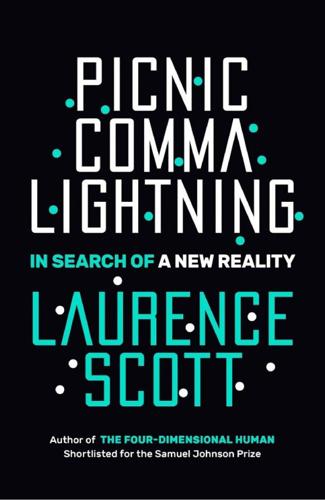
Picnic Comma Lightning: In Search of a New Reality
by
Laurence Scott
Published 11 Jul 2018
With the introduction of the ‘Story’ feature across multiple social-media platforms, you can find Aaker’s sneakiness in action, though the branding here is pretty blatant. To cultivate a life of story, call things ‘stories’. In early 2018, Wired magazine announced that ‘If recent trends7 are any indication, the future of social media lives in Stories.’ The fact that this feature’s name has been standardised across the major sites of Snapchat, Instagram and Facebook makes the Story seem organic and separate from any one platform, a pre-existing thing in the world that social media collects, rather than something that their functionality brings into being. Across all the big platforms, the Story has similar features: it is a temporary compilation of pictures and/or videos, usually clustered around an event or theme and displayed as a slide show.
…
Across all the big platforms, the Story has similar features: it is a temporary compilation of pictures and/or videos, usually clustered around an event or theme and displayed as a slide show. As with Murdoch’s vision of rubble, these compilations attempt to give form to the timeline or newsfeed, gathering similar posts together. But to what extent are they really stories? On Snapchat, Stories are a set of snaps displayed in chronological order. Here we’re back to the bare bones of a child’s basic grasp of narrative – before they know cause and effect, children can understand events arranged in a temporal sequence: this happens, then that happens. Instagram sees its Stories as offering users the chance to ‘share all the moments of your day, not just the ones you keep on your profile’, and in this vision the distinction between real life and narrative is blurred in the branding.
…
Herzog (Pittsburgh: University of Pittsburgh Press, 2005); ‘human mind is …’, Jonathan Haidt, The Righteous Mind (London: Allen Lane, 2012). 4 ‘we are all …’, Iris Murdoch, Existentialists and Mystics (London: Penguin, 1997); ‘stories that are …’, Paul Zak, ‘How Stories Change the Brain’, Greater Good Magazine, 17th December 2013. 5 ‘storytelling acts …’, Daniel Smith et al., ‘Cooperation and the evolution of hunter-gatherer storytelling’, Nature Communications, No. 1853, 5th December 2017. 6 ‘cultivate a life …’, Jennifer Aaker lecture for Haas School of Business, University of California Berkeley, published March 2017. 7 ‘If recent trends …’, Arielle Pardes, ‘Snapchat Stories Can Now Live Outside the App’, Wired, 23rd January 2018. 8 ‘pandemic’, ‘Are Digital Distractions The World’s Latest Pandemice’, reMarkable, 6th February 2017. 9 ‘live in this …’, A. S. Byatt interview with Ruth Joos at the International Passa Porta Festival of Literature, 24th March 2013. 10 ‘An experiment performed …’, see Carsten K.
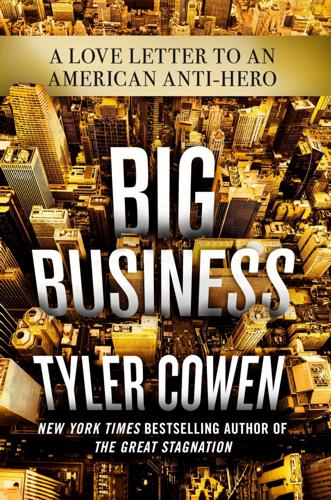
Big Business: A Love Letter to an American Anti-Hero
by
Tyler Cowen
Published 8 Apr 2019
I’ll lay out these criticisms in more detail, but for now I’ll just say that I think the benefits of the tech companies still far outweigh their costs, as evidenced by how few Americans are trying very hard to opt out. In any case, first I’d like to turn to the charges of monopoly and the disappearance of competition. It is easy enough to see that the contemporary tech industry has plenty of firms that seem to dominate a particular area—just consider Google, Facebook, eBay, Netflix, Apple, Snapchat, Twitter, and Microsoft, among others. But what are we to make of this? Are these new tech monopolies as bad as the price-gouging monopolies of yore? At least so far, it hardly seems so. Many of these “monopolists,” if that is even the right word, charge either nothing or much lower fees than their pre-internet counterparts. eBay takes a commission and never has been connected to a zero-charge model, but typically it is much cheaper to put a lot of items on eBay than to cart them around to resale or antique stores and arrange for their disposition by consignment or outright sale.
…
In other words, when it comes to advertising, the main source of the company’s revenue, Google has to offer a better deal than what went before it, and indeed it has consistently done so, thus accounting for most of the company’s revenue. So what about Facebook? Doesn’t the company have a kind of monopoly on social networks? Well, I belong to or have considered belonging to the following social networks: LinkedIn, Twitter, Snapchat, email, various chat services, contacts lists in my cell phone, Pinterest, Instagram, and WhatsApp, the last two owned by Facebook (I’ll come back to that). Facebook’s main personal page has to compete with all of those. I also use my blog as a means of social networking, and believe it or not, sometimes I circulate in the physical world as well.
…
profitability short-termism and venture capitalism and See also income; nonprofit institutions publishing Rand, Ayn Reagan, Ronald See also Republican Party Renaissance rent Republican Party See also Reagan, Ronald; Trump, Donald resale price maintenance (RPM) risk-taking Rite Aid Romney, Mitt Russia Sanders, Bernie Sara Lee Saudi Arabia Scrubbing Bubbles (animated characters) sexual harassment Shell shell companies Shephard, Alex short-termism Shu, Pian smartphones See also Apple Smith, Adam Smyth, Joshua M. Snapchat social media 2016 election and advertising and big business and CEOs and economy and effect on American society “filter bubble” and generational influence privacy and trust and workers and See also Facebook; Instagram; Twitter social responsibility Social Security socialism SpaceX See also Musk, Elon Spool Staiger, Douglas O.
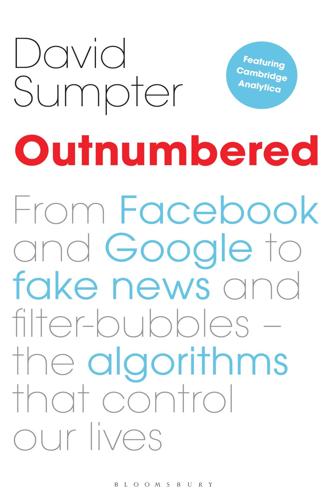
Outnumbered: From Facebook and Google to Fake News and Filter-Bubbles – the Algorithms That Control Our Lives
by
David Sumpter
Published 18 Jun 2018
For example, the speed with which users move their mouse during routine computer tasks can reveal the emotional content of what they are looking at on screen.11 Principal component analysis can break down the way you are interacting with your phone or your computer, in order to build up a picture of how you are feeling.12 These developments suggest a future in which Facebook tracks our every emotion and continually manipulates us in our consumer choices, our relationships and our job opportunities. If you regularly use Facebook, Instagram, Snapchat, Twitter or any other social media site, then you are outnumbered. You are allowing your personality to be placed as a point in hundreds of dimensions, your emotions to be enumerated and your future behaviour to be modelled and predicted. This is all done effectively and automatically, in a way that most of us can hardly comprehend.
…
No one wants to know the probability a kid will start crying.1 I think instead about those people in the park showing each other their Pokémon decks and the blank spaces that indicate the catches they still have to make. People who wouldn’t normally meet each other enjoying themselves together. I think about my 14 and a half-year-old daughter, Elise. She went off the other week to meet a friend from a chat group on Snapchat. Lovisa and I had been worried at first – might this online ‘friend’ turn out to be a 40-year-old paedophile? Our concerns were unjustified. Elise met up with a normal 13-year-old with bright blue hair. This summer she wants to go to visit another friend she has made online who lives in Poland. They often chat on Skype while they do their homework together.
…
Candid here, here Fair Housing Act (US) here fairness here fake news here, here, here feedback loops here MacronLeaks here post-truth world here, here, here false negatives here, here false positives here, here, here, here Fark here Feedly here Feller, Avi here Fergus, Rob here Ferrara, Emilio here filter bubbles here, here, here FiveThirtyEight here, here, here, here Flipboard here Flynn, Michael here football here, here robot players here, here Fortunato, Santo here, here Fowler, James here Franks, Nigel here Frostbite here Future of Life Institute here, here Gates, Bill here Gelade, Garry here gender bias here, here, here GloVe (global vectors for word representation) here Genter, Katie here Gentzkow, Matthew here, here Geoengineering Watch here, here Glance, Natalie here GloVe (global vectors for word representation) here Go here, here, here, here Goel, Sharad here Google here, here, here, here, here, here, here, here, here, here, here, here, here, here, here, here artificial intelligence (AI) here, here, here black hats here, here, here DeepMind here, here, here, here, here, here, here, here ‘Don’t be evil’ here Google autocomplete here, here Google News here Google Scholar here, here, here, here Google Search here Google+ here personalised adverts here, here, here, here SharedCount here Gore, Al here Grammatas, Angela here, here Guardian here, here, here, here, here, here, here, here, here, here, here, here, here, here Guardian US here, here h-index here, here Häggström, Olle here, here, here Here Be Dragons here Hassabis, Demis here, here, here Hawking, Stephen here, here, here He, Kaiming here Her here Higginson, Andrew here Hinton, Geoffrey here HotUKDeal here Huckfeldt, Bob here, here, here, here Huffington Post here, here, here Independent here Instagram here Internet here, here, here, here Internet service providers (ISPs) here Intrade here Ishiguro, Kazuo Never Let Me Go here iTunes here, here James Webb Sapce Telescope here Jie, Ke here job matching here Johansson, Joakim here, here Journal of Spatial Science here Kaminski, Juliane here Kasparov, Garry here, here Keith, David here Kerry, John here Keuschnigg, Marc here Kleinberg, Jon here Kluemper, Donald here Kogan, Alex here, here, here Kosinski, Michal here, here, here, here, here, here, here Kramer, Adam here, here Krizhevsky, Alex here Kulsrestha, Juhi here Kurzweil, Ray here Labour Party here, here Momentum here Lake, Brenden here language here Laue, Tim here Le Comber, Steve here Le Cun, Yan here Le Pen, Marine here Le, Quoc here Lerman, Kristina here, here, here Levin, Simon here Libratus here LinkedIn here, here, here, here literature here logic gates here Luntz, Frank here Machine Bias here Macron, Emmanuel here Major League Soccer (MLS) here, here Mandela effect here, here Mandela, Nelson here Martin, Erik here matchmaking here mathematics here, here assessing bias here mathematical models here, here, here power laws here Matrix, The here May, Lord Robert here McDonald, Glenn here, here Mechanical Turk here, here, here, here, here Medium here Mercer, Robert here Microsoft here, here, here, here, here, here Mikolov, Tomas here, here Minecraft here Mosseri, Adam here, here, here Mrsic-Flogel, Thomas here Ms Pac-Man here, here, here Munafò, Marcus here Musk, Elon here, here, here myPersonality project here National Health Service (NHS) here, here National Women’s Soccer League (NWSL) here, here Nature here, here, here Natusch, Waffles Pi here Netflix here neural networks here, here convolutional neural networks here limitations here recurrent neural networks here New York Times here, here, here, here, here, here, here, here The Upshot here, here news aggregators here Nix, Alexander here, here, here, here Noiszy here Northpointe here, here, here, here O’Neil, Cathy here Weapons of Math Destruction here Obama, Barack here, here Observer here online data collection here, here gender bias here preventing here principal component analysis (PCA) here online help services here OpenWorm here Overwatch here, here Pasquale, Frank The Black Box Society here, here Paul, Jake here, here, here, here Pennington, Jeffrey here personality analysis here Big Five here, here, here, here PewDiePie here Pierson, Emma here Pittsburgh Post-Gazette here political blogs here political discussions here, here, here PolitiFact here polls here, here, here, here Popular Mechanics here post-truth world here, here, here power laws here Pratt, Stephen here, here PredictIt here, here, here, here, here, here Prince here principal component analysis (PCA) here categorising personalities here COMPAS algorithm here probability distributions here ProPublica here, here, here, here, here, here Pundit here Q*bert 214, here Qualtrics here racial bias here, here, here, here, here GloVe (global vectors for word representation) here randomness here Reddit here, here, here, here, here regression models here, here Republican Party here, here, here, here, here RiceGum here, here Richardson, Kathleen here Road Runner here Robotank here, here robots here, here, here, here, here, here Russian interference here, here, here Salganik, Matthew here, here Sanders, Bernie here Scholz, Monika here Science here SCL here, here search histories here Silver, David here Silver, Nate here, here, here The Signal and the Noise here Silverman, Craig here Simonyan, Karen here singularity hypothesis here Skeem, Jen here Sky Sports here slime moulds (Physarum polycephulum) here, here, here Snapchat here Snopes here social feedback here Space Invaders here, here, here, here Spotify here, here, here, here, here, here, here Stack Exchange here StarCraft here statistics here, here, here, here, here regression models here, here Stillwell, David here, here Sullivan, Andrew here, here Sumpter, David Soccermatics here, here, here, here, here, here, here Sun, The here superforecasters here, here superintelligence here, here Szorkovszky, Alex here, here, here, here, here, here Taleb, Nassim here, here, here Tegmark, Max here, here, here, here Telegraph here, here, here, here Tesla here, here, here, here Tetlock, Philip here, here Texas, Virgil here, here, here The Gateway here TIDAL here Times, The here, here Tinder here, here, here Tolstoy, Leo here, here, here Anna Karenina here trolls here true positives here, here Trump, Donald here, here, here, here, here, here election campaign here, here, here, here, here, here election outcome here, here, here Twitter here, here TUI here, here Turing, Alan here Twitter here, here, here, here, here, here, here, here, here, here, here, here, here, here MacronLeaks here Tyson, Gareth here van Seijen, Harm here, here Vinyals, Oriol here vloggers here voter analysis here, here, here Wall Street Journal here Ward, Ashley here Washington Post here, here, here, here Watts, Duncan here, here Which?
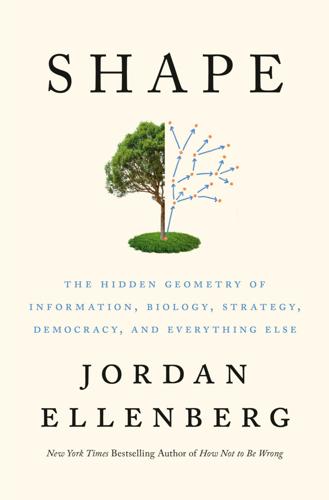
Shape: The Hidden Geometry of Information, Biology, Strategy, Democracy, and Everything Else
by
Jordan Ellenberg
Published 14 May 2021
The question then reappears in 2014 as a poll on a bodybuilding forum. The arguments presented on the bodybuilding forum are different in tone from those that appear in the Australasian Journal of Philosophy, but the outline of the controversy is quite consistent; the answers “zero holes,” “one hole,” and “two holes” all command substantial support. Then a Snapchat clip of two college friends getting angrier and angrier over two holes vs. one hole appeared, and started spreading, eventually drawing more than a million and a half views. The straw question showed up all over Reddit and Twitter and in The New York Times. A group of young, attractive, extremely-confused-about-holes BuzzFeed staffers shot a video, and that too racked up hundreds of thousands of hits.
…
When I asked my friend Kellie about the straw, she rejected the one-hole theory very simply: “Does that mean the mouth and the anus are the same hole?” (Kellie is a yoga teacher, so she tends to see things anatomically.) It’s a fair question. But let’s say you’re one of those bold enough to accept the “mouth = anus” equation. There are still challenges. Here’s a scene from the college dudes’ Snapchat (but seriously, go watch this yourself, I can’t fully capture the beautifully mounting frustration in words and stage directions). Bro 1 is an advocate of the one-hole theory, while Bro 2 is a two-holer. Bro 2 [holds up a vase]: “How many holes does this have? So this has one hole, right?”
…
It’s a bit too grainy to explain in this space, but in Poincaré’s system the resulting shape has one zero-dimensional hole and two one-dimensional holes, for an Euler characteristic of –1; in other words, the vandalized pants have the same number of holes as the original ones. You got rid of one when you sewed the two ankle holes together, but created a new one encircled by the two conjoined legs. Is that convincing? It’s a Snapchat argument I’d love to see. Chapter 3 Giving the Same Name to Different Things Symmetry is the basis of geometry as geometers now see it. More than that: what we decide to count as a symmetry is what determines what kind of geometry we’re doing. In Euclidean geometry, the symmetries are the rigid motions: any combination of sliding things around (translations), picking them up and flipping them over (reflections), and rotating them.
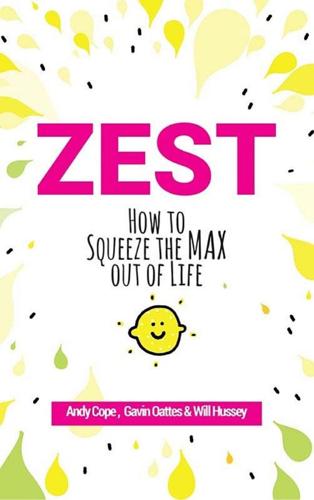
Zest: How to Squeeze the Max Out of Life
by
Andy Cope
,
Gavin Oattes
and
Will Hussey
Published 19 Jul 2019
‘You would have to surgically remove a phone from a teenager because their whole life is ingrained in this device.’ Griffiths thinks attachment theory, where we develop emotional dependency on the phone because it holds details of our lives, is a small part of nomophobia. For ‘screenagers’, it is FOMO that creates the most separation anxiety. If they can’t see what’s happening on Snapchat or Instagram, they become panic-stricken about not knowing what’s going on socially, ‘But they adapt very quickly if you take them on holiday and there’s no internet,’ says Griffiths. My response to that is you take your teenagers to somewhere with no internet? First of all, where exactly is that ‘no internet’ place?
…
You can check Will out at www.artofbrilliance.co.uk or you can tweet him at @aobrillwill Index ABCDE exercise 189, 190–1, 205 Adams, Tony 216 addiction 118 adversity 189, 190 advertisement 111 aggression 88 alive time 215 aliveness 173–4 Allingham, Henry 216 allodoxaphobia 103 altruism 209 Amazon 28 anger 69, 167 angst 70 animation 65, 66 anxiety 30, 63, 83, 86, 87 Ardagh, Philip 75 Ardagh Tips 56 attachment theory 114 attention 111, 112 attitude 153, 165 can-do 72 awareness 195 Balboa, Rocky 177 belief 189, 191 Beschaulich 25 body 54–6 boogie woogie 127 bothered, being 71–2, 169 Bowie, David 44 brain 101–2 evolution of 148 fuel 148 healthy 218–20 brain injury 133 breathing 197–9, 205 Brilliant, Ashleigh 201 BROMO 115, 116 busyness 38–9, 40 Call the Midwife 77 can-do attitudes 72 Calment, Jeanne 216 capitalism 111 carers 132–6 caring profession 136 Carlson, Mary 137 celebration 67–8, 131 change, willingness to 173 children 45, 67–8 Christakis, Nicholas A. 96 clickbait 69 Cliff, Jimmy 26–7 Cognitive Behavioural Therapy 190 commitment 163–9 comparison 104–7 compassion fatigue 135 compound interest 150–1 compulsive gambling 118 confidence 61, 62 conflict 118 connectedness 108 consequence 189, 191 consumption 42 content of experience 195 contentment 42 counselling 177 Crawford, Matthew 111 creativity 158 daily challenges 58–9 Dali, Salvador 220 dead time 215 Dean, James 128 depression 30, 62, 83, 88 as self-reinforcing cycle 132 depressive episode 88 Deresiewicz, William 106, 122 despair 167 destination addiction 92 Diagnostic and Statistical Manual of Mental Disorders 5th Edn (DSM5) 63 digital detox 117–21 Dillard, Annie 107 disconnectedness 108 dispute, learning to 189, 191–2 Dryden, Dr Windy 105 education level 84 effort 163, 167 ego 194–7 emotional contagion 94–7 emotional soup 96 emotional spillage 96 emotional tolerance levels, normal 88 empathy 147 employee weaknesses 162 emptiness 40, 42, 88 energization 190, 192 enthusiasm 72 envy 104–7, 121 ethnicity 84 eudaimonia 166, 167, 209 euthymia 168 exercise 155 Exorcist, The 195 explanatory style 187–8 Facebook 39, 108–9 FaceTube 39, 128 failure 175 fake news 69 family extended 217 well-being, emotion and 96–7 Feynman, Richard 55 Field, Tiffany 137 flow 9 FOJI (Fear of Joining In)116 FOMO (Fear of Missing Out) 114, 115, 116 food 83, 211 forgetfulness 71 forgiveness 185–7, 204 Fosbury, Dick 81 Fowler, James H. 96 Freud, Sigmund 193 fun 193, 205 gender 84 Gibran, Khalil 20, 121 Gilbert, Dan 101–2 goals 168 Gogglebox 39 Goggling 37–42 Goleman, Daniel 95, 96 good news 68–71 Googling 37–42 gratitude 66 Griffiths, Mark 114 grudges 186 grumbling 61, 185, 186 grumpiness 86 habit 150–2 happiness 62, 72 50/10/40 ratio 83–5 for no reason 209 hacks 210–11 as in-sperience 90–1 instant 166, 167 moment 131–2, 202 sacrificing 166 search for 42, 92–3 as self-reinforcing cycle 132 spectrum 150 thermostat 94 Happiness Pie 83–5 hara hachi bu 217 hard knocks 28–31 Harlow, Harry 137 hate 56–8 haters 56–8 healing 80 health 84 hedonic treadmill 166 hedonism 166, 209 Hicks, Bill 173 Hodgson, Roger 215–16 hope 72, 152–4 House, Oriah, Mountain Dreamer (Invitation, The) 13–16 hugs 137–8 humour, lack of 34 identity 194 of ego 195, 197 illusory self 194 imagination 149 immersion mode 9 imperfections 184 imposter syndrome 36 improvised comedy 129 income 84 individuality 224 inflammation 70 initials, using middle 26 inner strength 75 in-sperience 86–91 Instagram 112, 114, 115, 116, 139 internet addiction 118 irritability 88 Jake, Adventure Time 210 Jamie and the Magic Torch 169 Japan, longevity in 216–17 JOMO (Joy of Missing Out) 116, 117 kalsarikänni see pantsdrunk Katie, Byron 130 Kerouac, Jack: On the Road 53 keystone habits 150, 152, 169 Kim Ki Joon, Dr 114 kindness 57–8 random acts of 57 King, Martin Luther 178, 179 Kington, Miles 218 Kintsugi 183–5, 204 Knopfler, Mark 89 Knudstorp, Jorgen Vig 158 Kool 53 Krishnamurti, Jiddu 196 Lamott, Anne 221 Larson, Gary 104 learned helplessness 154 learning 56 life expectancy 32–3, 216 life satisfaction 167 lifestyle 84 Lightman, Alan 117–18 Logical Song, The 215 London, Jack 223 loneliness 30, 88, 156 longevity league table 216–17 Lucretius 105 mania 88 Manson, Mark 187 marital status 84 Marsh, Nigel 41 materialism 41–2, 105, 197 Mbuki-mvuki 127 mediocrity 88, 165 memories 202 mental illness 62–3 statistics 80 metanoia 80, 81, 82 mindfulness 201, 202 mirror neurons 95 misery 86 modernity 29 MOMO (Mystery of Missing Out) 115 money 42 mood 154 changes 118 morosity 34 motivations 168 Nagasaki, Kendo 194 names 26 meaning of 179–81 Neanderthals 147, 148 negative emotions 70 negativity 61, 62, 69, 72, 165 neocortex 147, 149 neuroplasticity 149 news fake 69 good 68–71 unbiased 70 nexting 102 niceness 57 Nietzsche, Friedrich 138 nightmares 61 NLP 47, 56 nomophobia 113, 114 Normal, being 34–5 normality 177, 204 now, living in the 68, 199–203 Obama, Michelle 57 obesity 155, 156 Oedipus Complex 193 Ogling 37–42 Opening Night Principle 130 openness 95 optimism 72, 83, 152–4, 190 realistic 26 optimistic explanatory style 188, 190 overimagining 149 overthinking 149 Paddington Bear 46 pain 167 panic attacks 30, 63, 87 Palahniuk, Chuck 55 panicking about the future 149 pantsdrunk 139–41 paramedics 136 para-sympathetic arousal 95 passion, finding 158–60 peer review 79 performance review 162 personal development 158 personal responsibility 61 personality 224 pessimism 33 pessimistic explanatory style 188 phobias 103–4 phone separation anxiety 113 physical appearance 84 physical labour 28–9, 30 play 45–7, 225 playground 45 playtime 46–7 Poe, Edgar Allan 155 Poole, Mary 223 positive emotion 70 positive psychology 82, 88, 91, 150, 175 positivity 62, 72, 97 training in 165 post-traumatic growth 178 potential 163 Powell, Richard 184 pratfall effect 138 Pretoogjes 224 procrastination 211 psychological rebuilding 80 random acts of kindness 57 rationalization 147 realistic optimism 154 re-animation 65 regret 225 relapse 118 relationships, investment in 155–7 relaxation 140 remembering 71 retirement 222 Richards, Keith 215 Rogan, Joe 139 roles, social 29 Rose, Axl 174 rumination 149 Schwartz, Kenneth 136 sea squirts 37–8 seeing clearly 26–7 self-awareness 55 self-envy 106 self-harm 30 self-reinforcing cycle 132 Seligman, Professor Marty 189 separation anxiety 113, 114 set point 94 sex drive 88 sharing etiquette 120 sidekick 178–83, 204 silence 112 Simon, Paul 63 skeletons of the past 203–4, 205 skills 165 sleep 160–1 sleep hygiene 160 SLOMO (Slow to Miss Out) 116 small habits 150 smartphone 113–14 detoxing 119 smile 132, 176 Smith, Col. John ‘Hannibal' 3 smoking 156 Snapchat 114 social deviance 128–9 social media 104–7, 108, 111 addiction 118 social networking 118 social touch 137–8 social withdrawal 118 societal structures 29 spontaneity 57 strengths, personal 163 stress 30 about the past 149 Strong, Nancy 135 struggle 167 suffering 177–8 suicide 30 Sunlounger Principle 47–50 superheroes 180–1 Supertramp 215–16 taxes 28 technology 211 compulsion 118 therapy 177 thinking 196, 205 Thomson, Sir Daley 161–3 Tolle, Eckhart 194 Torschlusspanik 94 transformation 82 trauma 84 triumphs 84 Turkle, Sherry 105, 106 Twitter 39 uncommon sense 79–83 unfairness 58 violence 70 vulnerability 175 wabi-sabi 184, 204 Wanksy 128–129 weaknesses, employee 162 whack-a-mole psychology 79, 82, 83 Wilkins, Richard 60 Williamson, Marianne 182 Wired Cosmos 181 wisdom of advancing years 222 worry 64, 149 Zappa, Frank 128 Ziglar, Zig 186 WILEY END USER LICENSE AGREEMENT Go to www.wiley.com/go/eula to access Wiley’s ebook EULA.
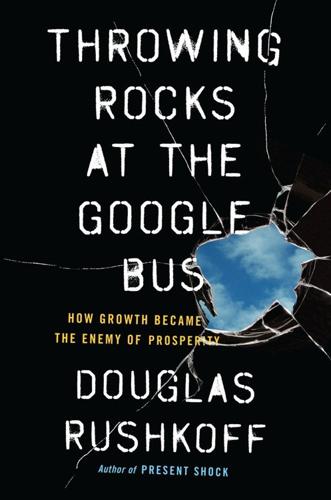
Throwing Rocks at the Google Bus: How Growth Became the Enemy of Prosperity
by
Douglas Rushkoff
Published 1 Mar 2016
At the time of its billion-dollar purchase by Facebook, Instagram had raised $57.5 million, was valued at $500 million, and had generated $0 in revenue.14 It did, however, boast 49.6 million likes per day,15 which has grown to 1.2 billion in the ensuing year and a half.16Likewise, Tumblr netted negative $13 million the year it was purchased by Yahoo for $1.1 billion.17 What it lost in earnings it made up for in social traffic of 900 posts/second.18 Snapchat, a social media app with no revenue, turned down a $3 billion offer from Facebook—all for its users’ 400 million daily, dissolving pings.19 Whether or not all that social activity will someday generate true, sustainable profits is still left to be seen. What we do know is that the likes, follows, favorites, and reposts are not as immediately valuable to the people and things being liked as they are to the companies who mine these big data troves for trends.
…
Hilary Heino, “Social Media Demographics—Instagram, Tumblr, and Pinterest,” agileimpact.org, 2014. 17. Peter Cohan, “Yahoo’s Tumblr Buy Fails Four Tests of a Successful Acquisition,” forbes.com, May 20, 2013. 18. Chris Isidore, “Yahoo Buys Tumblr, Promises Not to ‘Screw It Up,’” money.cnn.com, May 20, 2013. 19. Jordan Crook, “Snapchat Sees More Daily Photos Than Facebook,” techcrunch.com, November 19, 2013. 20. Vindu Goel, “Facebook Tinkers with Users’ Emotions in News Feed Experiment, Stirring Outcry,” nytimes.com, June 29, 2014. 21. Astra Taylor, The People’s Platform: The Culture of Power in a Networked Age (New York: Henry Holt and Co., 2014), 205. 22.
…
See investors/investing sharing economy, 44–54, 218 crowdsharing apps and, 45–49 crowdsourcing platforms and, 49–50 employment opportunities, technology as replacing and obsolescing, 51–54 getting paid for our data and, 44–45 great decoupling and, 53 jobs assisting with transition to computerized society and, 51–52 learning to code and, 51 Shift Happens (Hagel), 76–77 Shirky, Clay, 27 Sidecar, 93–94 Silk Road, 145 singularity, 91 Slay, Julia, 58 Smith, Adam, 212–13 Snapchat, 32 social branding, 35–37 social graphs, 40 social media, and “likes” economy, 31–37 Somerhalder, Ian, 36 South by Southwest, 19 specialists, 178–79 Spotify, 218 Square, 141 Stallman, Richard, 216 stamp scrip, 158–59 startups, 184–205 angel investors and, 187, 188 burn rate and, 190 crowdfunding and, 198–201 direct public offerings (DPOs) and, 205–6 Google’s IPO, 194–95 hypergrowth expected of, 187–91 microfinancing platforms and, 202–4 model for building real and sustainable businesses, 196–98 playbook for establishing, 187 reverse engineering of, 184–86 Series A round of investment and, 188–89 venture capital and, 189–95 steady-state enterprises, 98–123 alternative corporate structures and, 118–23 appropriate size for business, finding, 104–5 benefit corporations and, 119 contracting with small and medium-sized enterprises and, 112 dividends as means of rewarding shareholders and, 113–14 dual transformation and, 108–9 ecosystem as model for assembling, 105 employee ownership of company and, 116–18 extractive bias of traditional corporate model, eschewing, 104 family business model and, 103–4, 231–32 flexible purpose corporations and, 119–20 growth, shifting away from, 103–6 hybrid approaches to attaining, 106–12 inclusive capitalism and, 111–12 low-profit limited liability company (L3C) and, 120–21 not-for-profits (NFPs) and, 121–23 open sharing and collaborative corporate strategies and, 106–7 privatization and, 114–16 shareholder mentality, changing, 112–18 technological revolutions, phases of, 98–102 stimulative economic policies, 136, 137 stock market crash of 1929, 99 storytelling, 236 Strickler, Yancey, 198 student debt, 153 subsidiarity, 231–32 supermarket chains, hybrid strategies for, 109–10 Supplier Connection, 112 surge pricing, 86 synergy, 99 Talmud, 208 Tapscott, Don, 49n Target, 142 TaskRabbit, 222 tax anticipation scrip, 159 taxi industry, 85–86 TD Waterhouse, 176 Tea Party, 99–100 technological revolutions, 98–102 creative destruction and, 83–87 destructive destruction and, 100 frenzy phase of, 98–99 government intervention and, 99–100 irruption phase of, 98 maturity phase of, 98–99 synergy phase of, 99 turning point phase of, 99 Thatcher, Margaret, 64 theAudience, 36 Thiel, Peter, 120, 191–92 This Changes Everything (Klein), 135 3-d printing, 62–63 360 deals, 34 time dollar systems, 161–63 toy industry, 85 Toyoda, Akio, 105–6 Toyota Motor Corporation, 105–6 tragedy of the commons, 215–16 Treehouse, 59 Tumblr, 32 turning point, 99 Twitter, 7, 8–9, 195 tyranny of choice, 30 Uber, 4, 93, 94, 98–99, 188, 213, 219, 222, 229 peer-to-peer commerce enabled by, 45, 46 as platform monopoly, 85–87 pricing power of, 47–48 unemployment insurance, 99 unemployment solution, 54–67 guaranteed minimum income programs and, 62–65 guaranteed minimum wage public jobs and, 65–66 hourly-wage employment, history of, 56 joblessness as feature of new digital economy and, 55–56 questioning need for work and, 56–58 real needs, getting paid to address, 65–67 reducing 40-hour workweek and, 58–60 sharing productivity gains with employees and, 60–62 Unilever, 112, 205 United Steel Workers, 220 Upwork, 51, 200 USA Today,173 velocity of money, 140–41 venture capital, 189–95 Vicarious, 119–20 Victorian exhibition, 20 Volkswagen, 106 Wall Street Journal,7, 8, 37–38 Walmart, 47, 73–75, 110–11 Watson, 90–91 wealth inequality.
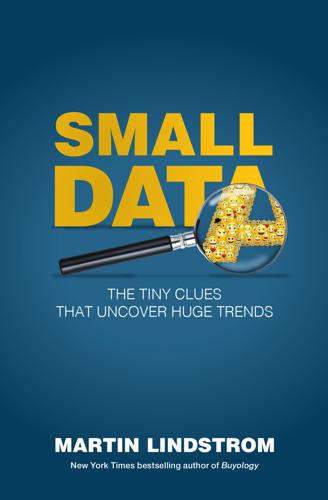
Small Data: The Tiny Clues That Uncover Huge Trends
by
Martin Lindstrom
Published 23 Feb 2016
The families and I fraternize, listen to music, watch television and eat all our meals together. During these visits—again, with permission—I go through refrigerators, open desk drawers and kitchen cabinets, scour books, magazines, music and movie collections and downloads, inspect purses, wallets, online search histories, Facebook pages, Twitter feeds, emoji usage and Instagram and Snapchat accounts. In the search for what I call small data, almost nothing is off-limits. I’ve gone so far as to interview consumers through text-messaging—a study shows that people lie less frequently in texts3—though I’m far more likely to take people by surprise by inspecting their microwave ovens and glass and plastic recycling cans.
…
My research revealed that girls spent around 80 percent of their waking hours mulling what they wore that day, what they were thinking about wearing the next day and clothing in general—a somewhat shocking statistic. They were also online anywhere from two to three hours a day visiting their favorite fashion retailers, websites and Tumblr blogs. Swiss girls were preoccupied by British and German fashion websites, as well as Tumblr, Instagram and Snapchat, while eastern European girls tracked Scandinavian websites. Most girls knew the fashion world intimately well, including the names of the top models, and kept an official or unofficial wish list of outfits they wanted to buy but couldn’t afford. This same preoccupation with fashion could be seen with their smartphones themselves, beginning with their covers, which were plastered with stickers and decals, and extending to the apps: color-matching apps, apps that matched lipstick hues to clothing, apps that gave the locations of the hottest clubs in town and apps offering techniques to improve a girl’s appearance or make her look slimmer than she was.
…
See also Subtext Research smartphones, 18, 43, 49, 59, 65, 153, 155 and escape/transformation, 64, 188 feature phones, 88–9 prevalence of, 57–8, 153 social media, 8, 14, 18, 43–5, 49, 61, 130, 145, 152, 162, 196, 220 and adolescent girls, 152, 154, 157 and dressing rooms, 167–8 Facebook, 18, 88, 130, 152, 154, 157, 162, 220, 221, 215 and identity, 13–14, 221, 226–7 Instagram, 5, 130, 152, 155, 221, 226 and maskenfreiheit (freedom conferred by masks), 13 Periscope, 164 as reflection of beliefs and biases, 219 and self-esteem, 215 Snapchat, 5, 155 Twitter, 5, 8, 130, 207, 226 and Uber, 225–6 VKontakte.com (VK), 43–4 “What Color Is This Dress?” photo, 207–8, 219 YouTube, 12, 128, 154, 164 See also selfies somatic markers, 65–7, 116, 176–7 sound, 26, 28, 41, 196–8, 204–5 South America, 52–3, 124, 141–2, 177, 212.

The Sharing Economy: The End of Employment and the Rise of Crowd-Based Capitalism
by
Arun Sundararajan
Published 12 May 2016
There are a number of consequences we have already observed that flow directly from these three invariants: the separation of information from its physical artifacts as witnessed in the music, video entertainment, and publishing industries with the emergence of pure digital products delivered via iTunes, Netflix, and Amazon’s Kindle; the creation of powerful shared digital platforms, ranging from Google Maps to Amazon; and the emergence of increasingly rich digital spaces like Facebook, Snapchat, and WeChat for human interaction of increasing complexity.6 I outline four additional consequences of these digital forces that I believe are fundamental to the emergence and sustained evolution of crowd-based capitalism. They are: (1) the consumerization of the digital; (2) the digitization of the physical; (3) the emergence of decentralized peer-to-peer, and (4) the digitization of trust.
…
As he notes in an Ethereum Blog post in April 2014, “It is important to first understand that, in the space of tech companies and especially social networking startups, a large number of them are literally backed by almost nothing but social consensus.” He then goes on to explain: Theoretically, it is entirely possible for all of the employees at Snapchat, Tinder, Twitter or any other such startup to all suddenly agree to quit and start their own business, completely rebuild all of the software from scratch within months, and then immediately proceed to build a superior product. The only reason why such companies have any valuation at all is a set of two coordination problems: the problem of getting all employees to quit at the same time, and the problem of getting all of the customers to simultaneously move over onto the new network.
…
See Car sharing Ring, Diane, 162–163 Rinne, April, 147 Ripple Labs, 87 Ritz Carlton, 40 Robinson, James, 144 RocketHub, 41 Rogers, Roo, 28 Romer, Paul, 27 Roosevelt Institute, 187 Rothman, Simon, 178, 187 Royal Society of Arts, 108 RRE Ventures, 86–87 Rustrum, Chelsea, 196 Rutledge, Wiley Blount, 178 Sahlins, Marshall, 207n8 Samsung, 100 Sandoval, Catherine, 153–154 Sapone, Marcela, 11, 160, 183–184 Schmiedcke, Mike, 106 Schneider, Nathan, 192, 196–197 Schneiderman, Eric T., 131, 133 Scholz, Trebor, 196–197 Schor, Juliet, 6, 198, 208n12 Schwab, Klaus, 205 Scorpio, Jessica, 14 Search engines, 96–97 Second Machine Age, The (Brynjolfsson and McAfee), 165–166 Self-employed persons, 4–5 Self-regulatory organizations (SROs), 152–154, 221–222n25–26 Service platforms, 43–44 Shaffer, Alicia, 107, 177 Shaheen, Susan, 14, 110 Shapiro, Craig, 26, 118 Shapeways, 58 Shareable, 15 “‘Sharing Nicely’: On Shareable Goods and the Emergence of Sharing as a Modality of Economic Production” (Benkler), 30, 37 Sharp, Kristin, 161 SherpaShare, 84, 159 Shirky, Clay, 105, 114–115, 117 Shyp, 12, 160, 183 SideCar, 149, 154, 195 Silk Road, 86 Simon, Herbert, 71, 164–165 Sinders, Vanessa, 134 Sjogren, Karl, 199 Skill-biased technical change (SBTC), 166 Skillshare, 82 Small, Jara, 16 Smart contracts, 92–94 Smiley, Lauren, 189 Smith, Adam, 49, 70, 71, 118 Smith, Michael D., 112 Snapchat, 54 Snapgoods, 14 SnappCar, 3, 80 Social capital, 62, 64, 140 Social Capital Markets conference (SOCAP), 198–199 Social cohesion, 36 Social Progress Index, 111 Social safety net, new, 187–192 Sokolowsky, Oren, 94 Spare5, 114 Spotify, 2, 91 SpotOn, 107–108 SROs. See Self-regulatory organizations (SROs) Stancil, Benn, 156 Stangler, Dane, 108 Stein, Joel, 3–4 Stephany, Alex, 28, 29–30, 35 Stern, Andy, 187 “Stranger sharing Street, Satsuma, 106 Strickler, Yancey, 41 Stucke, Maurice, 120 StyleLend, 15–16, 44 Suicide (Durkheim), 45 Sunkist, 197 SupplyDemanded.com, 49 Surowecki, James, 19 Sustainable Economies Law Center (SELC), 196 Swallow, Erica, 3 Swalwell, Eric, 137 Swan, Melanie, 93 Swarm, 199 Swift, 197 Taaki, Amir, 85–86 Tadelis, Steve, 61 “Tales from the Sharing Economy” (Stein), 3 Tambe, Prasanna, 75, 113 Tanz, Jason, 60 TaskRabbit, 3, 11, 77, 114, 157, 183, 197.
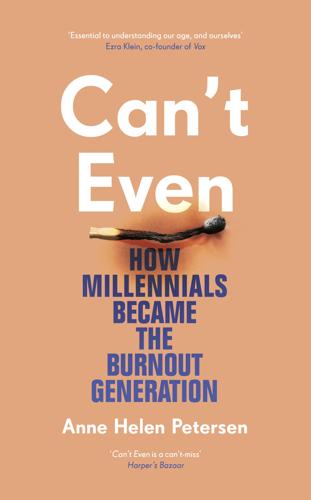
Can't Even: How Millennials Became the Burnout Generation
by
Anne Helen Petersen
Published 14 Jan 2021
For years, if you wanted to read more on Facebook or Twitter or Instagram, you’d have to refresh the site; in 2010, Loren Brichter introduced the “pull to refresh” function on the Tweetie app, which has now become standard on social media apps and beyond. These days, “pull to refresh” isn’t really necessary—there’s technology that could automatically refresh your app—but it functions as a sort of slot machine lever, keeping the user engaged far beyond when they’d normally have clicked out of the app. Again, it wasn’t always this way. Snapchat didn’t always alert you when someone was simply typing. News sites didn’t always send push alerts. Neither did apps for meditation, or Starbucks, or dating, or the New England Patriots, or learning Spanish, or the number matching game 2048. Sephora didn’t alert you when you were close to a store, and Google didn’t ask you to rate your subway trip after you finished it.
…
Facebook is toxic, Facebook is political—and the knowledge of the ways the company has exploited our personal information is too difficult to ignore. Most of my millennial friends have started using it almost exclusively for the groups: private, public, and secret, oriented around podcasts and hobbies and discussion interests. A portion of young millennials still use Snapchat; Twitter remains the compulsion of choice for many writers and academics and wonks; Pinterest has its own psychological attractions. The communities of Reddit have an addictive pull. LinkedIn is Twitter for people with MBAs. But the social media platform most overtly responsible for burnout is Instagram.
…
Norton, 49 Guendelsberger, Emily, 134–35 Hacker, Jacob, 8, 11–12 Hairpin, 140 Harried Leisure Class, The (Linder), 191 Harris, Malcolm, 32, 50, 52, 238 Harvard University, 9, 45, 57–58, 124 Hays, Sharon, 31 health insurance, xviii, xx, 111, 120, 133, 138–39 Herrman, John, 173 “Higher Education for American Democracy,” 48 high school experience, 33, 45, 47, 54–60, 62–65 Hippocrates, xvii Ho, Karen, 114, 123–26 Hochschild, Arlie Russell, 211 Hollis, Rachel, 241 hope labor, 78–79, 82, 84, 86, 91 hours of work, 189, 191 How Not to Hate Your Husband After Kids (Dunn), 241 How to Do Nothing (Odell), 204 human capital, 50–53 Hyman, Louis, 7, 100, 102, 121–22 Indeed.com, 71 In Search of Excellence, 73 Instagram automatic refresh, 156 boomers response to Trump, 167 burnout and, 159–61 digital labor, 172 experiences displayed, 154 gateway to a job, 163 jealousy photos, 162 low-effort distraction, 164, 180, 193, 251 multitasking, 176 my posts, 149, 151 one’s brand, 181, 192, 198, 202, 222–23 parenting threads, 210, 222, 241 sales medium, 187 unrewarding part-time job, 165 internships competition for, 79–80 Disney College Program, 72 during Great Recession, 78 supply and demand, 71 unpaid or low paid labor, 12–13, 78–79, 82, 84 iPhone, 154, 157 Japan, fertility rate, 248–50 Job, The (Shell), 82, 132 jobs, anecdotes Alex, pastoring, 81 Elizabeth, Disney job, 72 Emma, temp librarian, 90–91 Erin, tech job, 82–83, 85, 88 Greta, cool jobs, 70 Hiba, journalist, 86–87 Jess, nonprofit foster care job, 89 Michael, creative work, 70 Rooney, meaningful work, 70 Samantha, grocery store manager, 88 Sofia, unpaid internships, 79–80, 89 Stephanie, writing for free, 75–77 Jobs, Steve, 69 jobs anecdotes, race and identity Black, 70 Latina, 72 Middle Eastern, 82 mixed race, 89 Pakistani, 86 white, 70, 79, 81, 90 white and Asian, 75 Johns Hopkins Center for Talented Youth, 55 Journal of Black Studies, 143 Kessler, Sarah, 143, 145 Kethledge, Raymond, 165 Keynes, John Maynard, 183 Kids These Days (Harris), 32, 52 Kimmel, Michael, 228 Klinenberg, Eric, xx, 200 Kuehn, Kathleen, 78 Kurtz, Adam J., 69 Lareau, Annette, 22–24, 31 Laverson, Marvin, 49 lean corporations, 106–7 Legally Blonde (film), 70 leisure anxiety and fear over, xv, 180–82 aspirational class and, 192–95 burnout and, 182 capitalism, influence, 191–92 digital labor, 172 free time, 32, 181 guilt for time off, 188–89 history of, 182–83 hobbies, 195–99, 224 social media substitution, 164–65 See also social networks leisure time, anecdotes Aly, perfectionist, 196 Claire, too tired, 203 Ethan, Dungeons and Dragons, 197 Gina monetize hobbies, 197–98 Janique, monetize hobbies, 197 Jimmy, monetize all activities, 198 Lara, hobbies abandoned, 196–97 Meghan, too tired, 202 Rosie, cost of activities, 202 Teresa, gaming group, 201 leisure time anecdotes, race and identity Asian American, 197 Black, 197 Jewish, 196 white, 196, 202 “Less Sex, Fewer Babies,” 247 Levinson, Marc, 9 Liberal Parents, Radical Children (Decter), 9 Linder, Staffan B., 191–92 LinkedIn, 51, 151, 159 Live Action Role Play (LARP), 173–74 See also Slack LiveJournal, 56, 140 Lockheed Martin, 73 Lockman, Darcy, 226–30, 241 Lorde, Audre, 241 Lorenz, Taylor, 2 love what you do fallacy, 69–72, 86–90 Lowrey, Annie, vii, x, 77 Manhood in America (Kimmel), 228 Manjoo, Farhad, 142, 147 Martin, Sara, 73 McDonald’s, 110–11, 220 McKinsey & Company, 74, 121–22 Meyer, Marissa, 240 Microsoft, 130, 188 middle class bootstrap narrative, 15 expansion and contraction, 3, 6, 113–14 Personal Responsibility Crusade, 15–16 postwar expansion and, 11 renewal of, 10 success best practices, 51–52 middle class security blue collar middle class, 61 downward mobility, 37, 41–44 millennials and, viii, 34–35 yuppie strategy, 39–40 See also under boomers millennial family anecdotes Caitlin, activities and stress, 21–22 Marshall, Stacy, fear of downsizing, 23 Stefanie, free time, 22 Talinger, Garrett, overscheduled, 23–24 Yanelli, “Little Billy,” 23 See also concerted cultivation millennial family anecdotes, race and identity biracial, 21 Black, 23 white, 22–23 millennial goals calling, 81–82 Calvinist outlook, 81 revised goals, 76–77 well-paying and cool jobs, xix, 68–69, 75–76, 87, 90–92 millennials, description, xviii–xix, xxi Miller, Katherine, 166–67 missing children, 30–31 Mommy Burnout, 241 Mose, Tamara R., 236–38 Mull, Amanda, 71 Mullainathan, Sendhil, 233 multitasking, 98, 158, 215, 221, 226, 232 National Commission on the High School Senior Year, 49 National Labor Relations Act, 5 National Public Radio (NPR), 149, 192, 247 Nemoto, Kumiko, 249 Netflix, 35, 154, 156, 199 networking, 79 Newman, Katherine S., 37, 42, 44 Newport, Cal, 165 news cycle, xxi, 166–68 Newsweek, 18 New Yorker, 128 New York Magazine, 5 New York Times, ix, 2, 109, 133, 169, 185, 192, 194, 249 Nisbet, Robert, 9 Obama, Barack, 137 Odell, Jenny, 204–5 “Old Economy Steve,” 2 Our Kids (Putnam), 199 Overachievers, The (Robbins), 46 “Overprotected Kid, The” (Rosin), 30 overseas labor, 112 Overwhelmed (Schulte), 222, 224 overwork cult blame for, 128–29 culture of Wall Street, 123–25 free food, 73, 123 history of, 73–74 in Japan, 249–50 motivation for burnout, 126 workplace competition, 75 See also productivity; Silicon Valley Overworked American, The (Schor), 185 Palaces for the People (Klinenberg), 200 Panichkul, Erin, 80 parenting breastfeeding and healthy diet, 218–19 dangerous world, 210 distribution of labor, 226–32 downward mobility and, 210, 235–39 economic insecurity and, 232–36 expectations and class differences, 216–20 fathers’ roles, 212, 225–26 having children, 243–48 Instagram parenting, 222–23 leisure time and, 230 mothers’ roles, 220–24, 227 patriarchy and choice, 210–11, 242 playdates, 236–38 second shift, 211–12, 223 special needs children and, 234 time alone, 225, 231 unsupervised children or paid care, 212–15 parenting anecdotes Alexa, East Coast pressure, 236 Alissa, responsibilities, 226 Amy, guilty, 225 Amy, parenting burnout, 208 Amy, playdates, 237 Brooke, resentment, 226 Casey, bankruptcy, 235 Celia, housewife busy-work, 223 Cheryl, burnout stress, 234 Christine, outside interests, 225 Debbie, responsibilities, 227 Erika, and Pinterest, 224 Jennifer, responsibilities, 230–31 Jenny, parenting burnout, 208 Jill, division of labor, 229 Julie, East Coast pressure, 239 Kaili, guilty, 221 Katie (Atlanta), alone time, 225 Katie (Atlanta), self-sacrifice, 222 Lauren, British to US, 208 Lauren, burnout stress, 234 Lauren, college student, 221 Lisa, resentment, 207 Lorraine, stay-at-home mom, 233 Marie, alone time, 225 Meredeth, burnout stress, 234 Meredith, rage, 235–36 Nana, single parent, 233–34 Petersen, Anne Helen, 243–45, 247 Rachel, and Pinterest, 224 Renee, resentment, 229–30 Sara, division of labor, 229 Sara, partner leisure, 230 Sara, resentment, 230 Sarah, resentment, 229 Sasha, Instagram Mom, 222 Stephanie, burnout stress, 234–35 parenting anecdotes, race and identity Hispanic, 226 Jewish Israeli, 233 Latina, 223, 234 queer cis-gendered woman, 230 white, 208, 221–22, 225–26, 233–35, 237, 239 white, queer, and neurodivergent, 234 parenting burnout, 208–10, 234, 241 Patagonia, 240 Patz, Etan, 30–31 “Personal Responsibility Crusade,” 11 Pew Charitable Trusts, 14 Pew Research Center, xvii, xxiv Pinterest, 158–59, 163, 176, 224 Playdate, The (Mose), 236 Pod Save America, 194 precariat, viii, 96–98, 128 private equity and venture capital, 104–6, 143 productivity apps for, xxvi, 155, 173 corporate goals, 113, 125 distractions and, 175–76 doing nothing, 204–5 history of, 186 sleep and, 127 working hours, 185 workweek and, 184–88 See also overwork cult; surveillance professional jobs, 62–63 ProPublica, 169 Putnam, Robert, 199, 202 QuikTrip, 115–16 racial discrimination essential or expendable workers, ix helicopter parenting and, 35–37 limitations to government programs, 7 programs directed to white males, 15 Reagan, Ronald and Reagan administration, 11, 15–16, 31 ReCode Decode, 146 Reddit, 2, 130, 159 “relative-deprivation theory,” 229 retirement 401k and, 14, 76, 103, 112, 114, 139, 243 defined contribution plans, 14 pensions, 13–14, 103 union pensions, 7 See also Social Security Riveted (Davies), 167 Robbins, Alexandra, 46 Roosevelt, Franklin D., 5 Rosenblat, Alex, 141, 145 Rosenfeld, Jake, 6 Rosin, Hanna, 30–33 Sabbath World, The (Shulevitz), 190 Salomon Smith Barney, 126 Sarnecka, Barbara W., 213 Scarcity (Mullainathan), 233 Schneider, Barbara, 62–63 Schor, Juliet B., 185 Schulte, Brigid, 222, 224 second jobs, 79–81, 102–3, 144, 186 See also gig and freelance work; Uber and ride-hailing companies Second Shift, The (Hochschild), 211 sexual harassment, 109–11 Shafir, Eldar, 233 Sheehan, Dan, 3 Shell, Ellen Ruppel, 82, 132 Shils, Edward, 9 Shulevitz, Judith, 190 Silicon Valley, 73–74, 141, 172, 187 Skimm, 194–95 Slack, 130, 149–51, 158, 171–74, 176 sleep, lack of burnout and, xvi children, 34, 46, 58 motherhood and, 224 Silicon Valley, 73 stress and, 127–28 Small Animals (Brooks), 213 Snapchat, 156, 159 social media addiction to, 156–58, 170–71 anxiety from hatefulness, 168–69 digital labor, 172 dramatization of news, 169–70 social media influencer, 163 social networks, 199–202 Social Security early history, 7 freelancing and, 139 key economic risks, 8 minimal benefits, 14 postwar expectation, 13 Social Security Act, 13 Spire Stone, 133 Standing, Guy, 96–98, 145–46 Stephens, Bret, 10 Stevenson, David, 62–63 stock market, 103–4, 106, 112, 114 Stockton, Nick, 170 Stoller, Matt, 105 St.

Insane Mode: How Elon Musk's Tesla Sparked an Electric Revolution to End the Age of Oil
by
Hamish McKenzie
Published 30 Sep 2017
People could not only use the app to talk to friends but also to pay bills, order taxis, buy shoes, and send money to their peers, among many other things. By then, Snapchat founder Evan Spiegel had pointed to Tencent as a “role model,” Facebook executive Stan Chudnovsky referred to WeChat as an inspiration for Facebook Messenger, and Kik, a company I worked for part-time, had declared its intention to be the “WeChat of the West.” (Tencent later invested in both Kik and Snapchat.) In the same period, Xiaomi had grown like crazy—in 2015, it sold more than seventy million smartphones—and was briefly (prior to Uber) the world’s most valuable start-up before losing some ground thanks to intensified competition in the smartphone market.
…
See autonomous vehicles Self-Driving Coalition for Safer Streets, 269 shale, oil from, 216 Shapiro, Danny, 110 Shen, Tiger, 145–147 Shenzhen (China), development of, 128–130 Shirley, Craig, 229 Sierra Club, 46 Silicon Valley Apple and, 105–106, 111–113 entrepreneurial mindset in, 105–111 Fremont development and, 79, 108–109 Singer, Fred, 212 Singulato Motors, 145–147, 267 Sinotel Technologies, 92 smart electric vehicles (SEV), 134, 136–137 Smart microcar (Daimler), 77–79 Snapchat, 141 Snyder, Rick, 49 software, importance to cars, 263–264 SolarCity Buffett’s dispute with, 209 innovation of, 6 products of, 8–9 Tesla acquisition of, 249 solar energy. See also SolarCity Powerpacks and Powerwalls, 195–197 solar shingles, 253 Superchargers and solar canopies, 56 Solyndra, 230 Sommer, Joerg, 243 Soon, Willie, 212 SpaceX capital for inception of, 24 Dragon spacecraft, 85 early financial issues, 76 future of, 251 innovation of, 6, 17 International Space Station contract of, 76 Musk on moral mission of, 32–33 Tesla engineering space at, 121 Sperling, Dan, 104 Spiegel, Evan, 141 Spiegel, Mark, 228 Sproule, Simon, 155–157 steam-powered cars, 29 Stone, Peter, 213 StopElonFromFailingAgain.com, 229 Straubel, JB on battery costs, 172–174 on car software, 264 Gigafactory and, 203 Musk and, 27 Tesla inception and, 63–66 Tesla’s financial investors and, 77, 78 Tesla’s influence on automobile industry and, 178–181 Strickland, Bill, 243 Strickland, David, 269 Stross, Randall, 34 Summey, Brad, 227 Sunac, 242 Suning, 236 Superchargers China network of, 151 Tesla’s plans for, 184 U.S. network of, 12, 55–59 worldwide network for, 166 Super League, 241 supertanker analogy, 176 Suskewicz, Josh, 55 Tarpenning, Mark, 65–66, 69 Tata Motors, 250 TechCrunch, on Faraday Future, 87–93, 96–97 TechCrunch Disrupt conference, 178–181 Tencent, 98, 111, 127–128, 140–141, 143, 236 TerraE, 200 Tesla, Nikola, 66 Tesla Motors, 63–82.
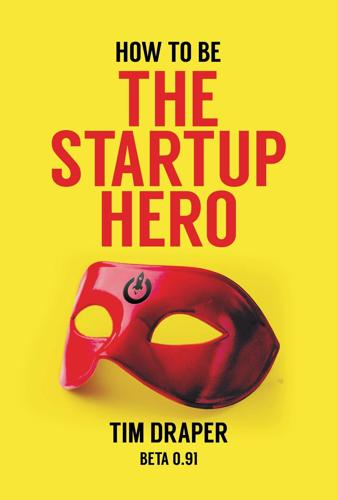
How to Be the Startup Hero: A Guide and Textbook for Entrepreneurs and Aspiring Entrepreneurs
by
Tim Draper
Published 18 Dec 2017
Since they all have access to the same information, they can all innovate from there. Hundreds of companies now use viral marketing to distribute a wide variety of product categories. Any product that is communications based uses viral marketing. The AT&T Friends and Family marketing program, the LinkedIn network and the Twitter hashtag are some obvious examples. Facebook and Snapchat use viral marketing to share photos. The founders of Skype implemented several viral elements in growing their audio business and even more when Skype video was introduced. The Skype Video Story I was fascinated by the new peer-to-peer technology that allowed people to share files. I met with Napster, Streamcast, and Grokster as I researched the industry.
…
Several well-known companies succeeded by creating early success with 16 year olds. When he announced the first Macintosh computer, Steve Jobs targeted high school students, giving them deep discounts on the revolutionary computers. Facebook started with only students in top colleges, but it didn’t really take off until it was opened up to high schoolers. Snapchat was the way high schoolers could share photos and ideas that would disappear after a few seconds, so they wouldn’t be held accountable for anything they said or did on the app. All of these companies hit a teenage nerve, and became or may well become multihundred-billion-dollar businesses. High schoolers set trends that become generational industries if they are properly groomed and cared for.
…
People could only get Tupperware products if they became sales reps for the product. As sales reps, they were encouraged to throw Tupperware parties to better sell the product. There are many other recent examples of customers becoming the sales force of companies. Every time you take a photo and put it up on Instagram or Facebook or Snapchat, you are spreading their service to your followers. Every time you write a tweet, you are spreading the use of Twitter. Kik and Tango are two services that allow people to get free video calls, but any call that is made on those platforms adds a new customer to Kik or Tango. If you provide these companies with your contacts, their user base spreads, but you can more easily reach your friends.
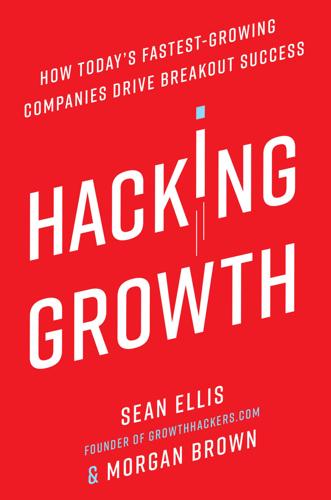
Hacking Growth: How Today's Fastest-Growing Companies Drive Breakout Success
by
Sean Ellis
and
Morgan Brown
Published 24 Apr 2017
A growing e-commerce company, for example, might discover that building a community, which is a viral channel, is also a good lever for driving growth; just think about Amazon’s purchase of the book lovers’ community Goodreads. Or a booming social network that has pioneered in new terrain, and that has attracted hefty venture capital, as Instagram and Snapchat both did, might decide to invest in TV, radio, and print ads to solidify its ownership of the territory, rather than relying only on viral mechanisms. But you’ve got to first focus on optimizing the channels that are most cost effective for you. A next step in narrowing options is to consider the characteristics and behaviors of your users, and this means identifying the behaviors that they’re already engaged in, such as the types of Google searches they are doing, the places they are shopping, and the social networks they are using.
…
In addition to standing out, one of the beauties of tools is that they can be “evergreen,” requiring little continual upkeep to remain an effective new customer magnet, sometimes for many years. Other new tactics one could try could include building a community, as we have done with GrowthHackers.com, or getting the first user advantage on one of the hot new platforms—like the next Snapchat—that are popping up all the time. The point is that even if you have found an established channel or set of tactics that work, new options are always emerging, and you should always be looking for which innovative ones to experiment with. In fact, it is precisely because there are so many new options, both for channels and for specific acquisition tactics, to choose from, that the growth hacking method is so efficient and effective; the data-driven, prioritized, and experimental approach helps you wade through that vast sea of options and smartly focus your efforts, and your marketing dollars.
…
The core mission for growth teams in retaining users who are in this midterm phase is to make using a product a habit; working to create such a sense of satisfaction from the product or service that over time, users don’t need to be prodded to use it again because they have incorporated the use of the product into their routine. Think of the Snapchat user who constantly checks her friends’ stories while having breakfast and again after dinner. Or the Amazon shopper who always thinks of searching there first for any given product he’s looking for, no prodding required. In the coming sections, we’ll introduce a little about the psychology of habit formation and then introduce tactics growth teams can employ for increasing the number of initially retained users who become habitual ones.

The Truth Machine: The Blockchain and the Future of Everything
by
Paul Vigna
and
Michael J. Casey
Published 27 Feb 2018
Toward a Token Economy While we’re thinking of all these ways in which tokens might get people and communities to act honestly and preserve public goods, it would be amiss not to consider whether tokens might address the greatest tragedy facing the biggest commons of them all. Climate change is the biggest threat facing the world. And Erick Miller has a big idea to tackle it. Miller, a frenetic L.A.-based entrepreneur and venture investor, has worked in Hollywood, invested in early dot-coms, and had a vital role in developing Snapchat’s highly popular spectacles. Now he wants to “tokenize the world” through his investment fund CoinCircle. As part of that, he and his partners have come up with a term they call “crypto-impact-economics.” Out of this concept, Miller and a team that includes UCLA finance professor Bhagwan Chowdry and World Economic Forum oceans conservationist Gregory Stone came up with two special value tokens: the Ocean Health Coin and the Climate Coin.
…
See also identities and identification SenaHill Partners Sequoia Capital SHA-256 algorithm sharing economy Shrier, David Sia Silbert, Barry Silicon Valley Silk Road Sims, Peter single sign-on (SSO) Skry Sloan, Alex Slock.it small and medium-size enterprises (SMEs) smart TVs Smith, Mark Snapchat Sneader, Kevin Snowden, Edward social capital social media. See also Facebook; Reddit; Twitter Software Guard Extensions (SGX) Somalia Special Agreement for Future Equity (SAFE) Special Agreement for Future Tokens (SAFT) Sprague, Steven Stampery stamps, digital State Street (bank) Stephens, Bart Stephens, Brad Stone, Gregory Storj Sullivan Worcester Sun Microsystems supply chains Swanson, Tim Symbiont Syria Systemics Szabo, Nick Tapscott, Alex Tapscott, Don Tarnowski, Lucian Tatar, Jack TCP/IP.

Queenie
by
Candice Carty-Williams
Published 19 Mar 2019
It’s just too much of one thing. Can’t you cook proper food?” she asked, not taking her eyes off her reflection on the phone’s screen. * * * The next few hours were filled with Diana picking up and putting down every single thing in my room. Mainly snickering, but also taking pictures of things to show her friends on Snapchat with the caption “LOOOOL.” Diana tried out my small range of makeup and told me that it wasn’t good enough to create a “look.” She went through my wardrobe and informed me that all of my clothes were too “granny” for me. She knocked over my jewelry stand and sent rings, necklaces, and earrings flying everywhere, then knocked my lamp off of my bedside table, smashing the bulb.
…
Let’s get a milkshake, then,” Diana said, grabbing me by the elbow as I emerged and steering me toward one of those weird urban-designed modern ice cream parlors. We sat opposite one another in a booth in the corner by the bathrooms and peeled the sticky menus apart. “What do you want?” Diana said from behind the menu. “I know what I’m getting. Oreo waffle, I always get it.” Diana held up her phone and scanned the room with it. “Hold on, just snapchatting our settings! I’ve captioned it ‘Cuz is 26,’ ” she said, showing me a picture of myself looking at the menu, bewildered by the choice. Twenty-six, and this is my life, I thought, looking around at the teenagers leaning on tackily decorated walls, all staring at their phones. Three years from now and I was meant to have been getting married.
…
Kyazike refocused. “So, you started chatting on OkCupid, yeah?” “Yes,” I confirmed. “And on this app, you have pictures of yourself?” “Yes. Five of them.” “And in these pictures, are you standing on one leg showing off the red sole of your Louboutins and wearing a bodycon dress the way I do on Snapchat?” Kyazike continued with her line of questioning. “No.” “And in any of these pictures, do you have contour on your face, or fake eyelashes?” “No. And no,” I told her. “Are you rocking a lace-front wig?” “I’m not, no.” “So you see my point, yeah?” she checked. “Or do I have to keep on?” “I do.
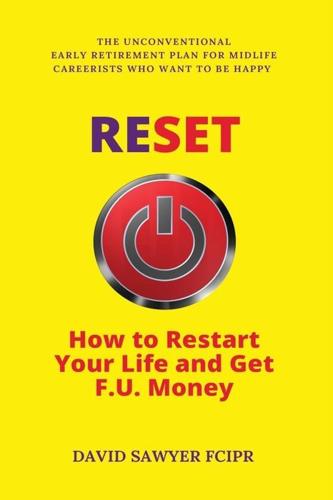
Reset: How to Restart Your Life and Get F.U. Money: The Unconventional Early Retirement Plan for Midlife Careerists Who Want to Be Happy
by
David Sawyer
Published 17 Aug 2018
Email newsletters. Online news sites such as BuzzFeed, Huffington Post and, often, electronic versions of traditional media, eg, The Guardian, The New Yorker. Google. Video (whether YouTube, Facebook, LinkedIn). Facebook feed. Facebook groups. Other social networks (Instagram, SnapChat, Twitter, LinkedIn, Messenger, WhatsApp). Because people are going elsewhere for their news (leaving aside the insidious “fake news” that has diminished trust in journalism, a vital part of society), the PR industry has had to change with the times. A new breed of digital PRs has sprung up, urging traditional practitioners to “get with the programme”.
…
The first is easy once you pass the pitch stage. The second is the toughest thing I’ve ever done. #22 Be an early adopter Gary Vaynerchuk was an early adopter of Google Ads when he ran Wine Library and made a small fortune shaking up the vino industry. And he was in there experimenting at the birth of Snapchat a few years back, now head of his huge New York media organisation: Vayner Media. I remember being an early adopter of LinkedIn Pulse in 2014. I garnered more than four thousand views and hundreds of comments after a blog post I wrote about the business lessons you can learn from caravanning went viral.
…
Please don’t stare at a screen. You’ll also find that when you have a purpose, goals and a concrete plan you’re working towards, your smartphone addiction will become manageable. #9 Cold turkey If all else fails, you can always go cold turkey. For us middle-class midlifers, not versed in the wiles of Snapchat and the like, it’s Facebook that has us in its thrall. I have nothing but admiration for the two-thirds of adults who aren’t active Facebook users[183]. I shed a tear when a running friend sets up a Facebook account purely to join the running club Facebook group I administer, and honk with brio when they persuade their Facebook-using partner to become a group member instead.

Corbyn
by
Richard Seymour
Labour’s own pages notably shared fewer stories than in the previous election, but significantly more video content than in 2015. The content it did share was also far more positive than the Tory campaign, focusing on its social promises to build and inspire support.58 Labour also invested in some more gimmicky fare. Corbyn was the first leader of a political party to sign up for a Snapchat account. And on election day, Snapchat released a Labour paid-for ‘Corbyn’ filter for supporters. Supporters also created a 1980s-style arcade game, Corbyn Run, in which the eponymous hero took on Tories, tax dodgers, the ghost of Margaret Thatcher, and Boris Johnson on a zipline. It would be easy to scoff at this kind of thing were it unveiled as a grand leadership initiative, like the ‘Edstone’, but it worked well as a sideline in a campaign fizzing with energy and confidence.
…
This isn’t for any profound reason: some young people are, as Catherine Tate would put it, simply not ‘bovvered’ about politics and may not even know who Theresa May is, let alone be able to make educated choices about her or her rivals. The left, which can only win by exploiting their ignorance, therefore sets about trying to buy them with gimmicks, whether it’s Snapchat videos or promises of student funding which don’t stack up.6 To reiterate, this piece was arguing that it was Corbyn who was cynical about the young. The unspoken fear of such pieces, that the young would actually turn out for a party that offered them something to vote for, was echoed in the cynicism of Rod Liddle in the Sun, who advised readers that ‘the civic thing to do is to stop them voting’.
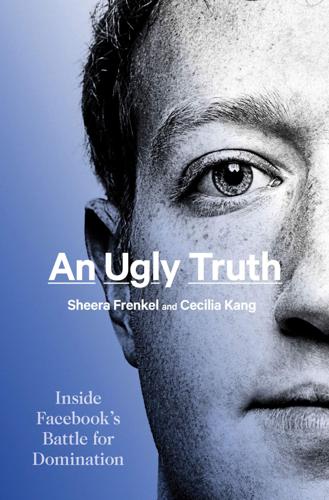
An Ugly Truth: Inside Facebook's Battle for Domination
by
Sheera Frenkel
and
Cecilia Kang
Published 12 Jul 2021
Respondents said that of all the options, they were most comfortable with a government mandate to unwind Facebook. The company deployed Schrage’s replacement, Nick Clegg, to bat down the idea. Clegg wrote his own op-ed in the New York Times to refute Hughes’s characterization of Facebook as a monopoly, pointing to competition from Snapchat, Twitter, and the rising threat of the Chinese short-video service TikTok. He warned, “Chopping a great American success story into bits is not something that’s going to make those problems go away.”12 Unlike Schrage, Sir Nicholas Clegg was a natural public speaker and an ambassador for the company with global leaders.
…
Once viewed as a hero hacker among college students, Zuckerberg now came off as a rich thirty-five-year-old father of two. The college students were almost a full generation younger than he. They weren’t using Facebook, a site popular with older audiences. Many were on Instagram but were increasingly spending time on Snapchat and TikTok. Georgetown was a deliberate choice. Facebook’s policy and lobbying staff wanted to find a place for Zuckerberg to deliver his speech where his words would carry intellectual and historical import. The staff wanted to do it in Washington, with Zuckerberg’s most important viewers a few miles east, at the White House and on Capitol Hill.
…
See freedom of speech issues Hemphill, Scott, 229–232, 261 Hertz, Jessica, 297 Hoefflinger, Mike, 55 Holocaust deniers, Facebook policy and, 205–207, 276–278, 281 Holt, Lester, 257–258 Horowitz, Ben, 191–192 Hughes, Chris New York Times op-ed, 219–222 on origins of Facebook, 253 Wu and, 231–232 Zuckerberg’s “pivot to privacy” and, 224–227 Ifill, Sherrilyn, 255 Independent Investigative Mechanism for Myanmar, of UN, 186 Information Technology Industry Council, 165 Infowars, 204 Instagram, 7, 8, 166, 193–194, 221, 222, 253, 259, 295 Facebook’s “pivot to privacy” and, 222–224 Federal Trade Commission (FTC) and, 68 interoperability of messaging apps and, 227–228 Russian Internet Research Agency and, 133 Trump and, 267, 288–290, 292 Wu and Hemphill’s evaluation of Facebook’s acquisition of, 230–231 Zuckerberg’s broken commitment to founders of, 2, 194, 227–229 International Association of Privacy Professionals, 64–65 International Criminal Court, 185–186 Internet Association, 241 Internet Research Agency (IRA), of Russia, 130–134, 137, 143, 144–145 Internet.org, 175–177 iSEC Partners, 101 James, Letitia, 1–2, 3 “JJDIDTIEBUCKLE” (leadership principle), 246 Jobs, Steve, 48, 51, 174 Jones, Alex, 82, 204–205, 206 Kalanick, Travis, 207 Kang-Xing Jin, 51 Kaplan, Joel, 197, 241, 260, 276, 278 Biden administration and, 297–298 Cambridge Analytica and, 150 election of 2016 and, 81, 108–109, 111–112, 123, 125 Kavanaugh hearings and, 200–203 manipulated video of Pelosi and, 236, 238 personality of, 14 political contributions and, 164–165 Sandberg and, 14, 87 Trump administration and, 161, 243–247 Trump and COVID-19, 267–268, 269 Trump’s anti-Muslim rhetoric and hate speech issues, 11–15 Kaplan, Laura Cox, 200 Kavanaugh, Ashley Estes, 200 Kavanaugh, Brett, 200–203 Kaye, David, 174–175 Kellogg, Hansen law firm, 295 Kendall, Tim, 36–37, 51 Kennedy, John, 153 Kenosha Guard, 279–281 Kimmel, Jimmy, 166 King, Bernice, 254, 259 Kirkpatrick, David, 114–115 Klobuchar, Amy, 153 Kogan, Aleksandr, 152–153, 155 Koum, Jan, 194, 229 Kraff, Brian, 41 Krieger, Mike, 228–229 Kushner, Jared, 15, 243–244, 256 Kustomer, acquired by Facebook, 299 Le Pen, Marine, 118 Lean In (Sandberg), 79, 127, 157–158 Leibowitz, Jonathan, 67, 154, 199 Leone, Isabella, 131 Lewandowski, Corey, 112–113 Libra (blockchain currency), 241–242, 256–257, 300 LinkedIn, 175 London, Eric, 155 Losse, Katherine, 49, 50, 124 Lynton, Michael, 56 Ma, Olivia, 26 Mac, Ryan, 272 Macron, Emmanuel, 118, 124–125, 219, 221, 237 Martin, Jenny Beth, 81 Martin, Kevin, 80, 112 Mauer, Greg, 80, 112, 140 Mayer, Marissa, 102–103 McKinsey and Company, 41, 50 McNamee, Roger, 44, 232 Mercer, Robert, 149 MeToo movement, 150, 200–201, 203 Microsoft, 31, 165, 174, 175, 241 advertising and, 51, 53, 54 Modi, Narenda, 106 Montgomery, Kathryn, 58, 60 Moran, Ned, 95–98, 100–101, 105, 129–132, 147 Moskovitz, Dustin, 31 Mossberg, Walt, 43 Mosseri, Adam, 114, 228, 261 Moveon.org, 59 Mubarak, Hosni, 157 Mueller, Robert, 147 Murphy, Laura, 248, 249 Myanmar, hate speech against Rohingya and, 85, 169–173, 176, 178–182, 185–187, 293–294 Narendra, Divya, 21 “net neutrality,” 230 Netscape, 25, 52 New Republic, The, 287 New York Times, 88, 272, 285 Cambridge Analytica and, 149 Chester on behavioral advertising and, 59 Clegg’s op-ed in, 240 Federal Trade Commission (FTC) and, 1 Hughes’ op-ed in, 219–222 Myanmar and, 186 Russian election interference and, 130, 215 New Yorker, The, 66 Newsom, Gavin, 266 Next One Billion project, of Facebook, 176–177 Nielsen, 56 Nuland, William, 147 Nuñez, Michael, 70–79 Oath Keepers, 287–288 Obama, Barack and administration of, 11, 67, 82, 118, 121, 138, 146, 184, 230, 236, 248, 251, 252, 255 Observer, 149 Ocasio-Cortez, Alexandria, 257 Oculus VR headset, 80, 81, 190 O’Donnell, Nora, 157–159 Olivan, Javier, 194, 195, 260 Onavo, 195–196, 260 O’Neill, Catlin, 140, 236, 297 Only the Paranoid Survive (Grove), 192 Open Society Foundation, 108 Option B (Sandberg), 79, 258 Overstock, 59–60 Page, Larry, 43, 44, 65, 192 Palihapitiya, Chamath, 51 Parakilas, Sandy, 152, 164 Parikh, Jay, 9, 10 Parker, Sean, 26, 28, 44, 221 Parscale, Brad, 15, 247 Pearlman, Leah, 62–63 Pelosi, Nancy, 233–234, 297 Facebook and manipulated video of, 234–240 Pence, Mike, 290 Philippines, 85, 106, 177, 291 Phillips Exeter Academy, 19–20 Pichai, Sundar, 198 “Pizzagate,” 278 Podesta, John, 100 politics, and Facebook Biden administration and, 286, 296–298 Clegg’s policy of not fact-checking political ads, 249–252 Facebook’s PAC for political contributions, 164–165 liberal favoritism at Facebook, 12–13, 74–75, 78 political ads on Facebook, 212–214 Trump administration and Facebook executives, 243–247 see also election of 2016; election of 2020; freedom of speech issues Price, Bill, 89–92 Pritchett, Lant, 41 Proceedings of the National Academy of Sciences, 182–183 Proud Boys, 288 Putin, Vladimir, 121, 123 QAnon, 278–279, 281 Red-State Secession group, 288 Reich, Robert, 226 Reynolds, Tom, 141, 145 Rice, Brian, 141 Robinson, Rashad, 249, 251, 276–277 Rose, Dan, 44, 45, 46, 51 Rosen, Guy, 195, 260, 285 Rosensweig, Dan, 43–44 Rubio, Marco, 161 Russian disinformation, on Facebook platform, 3, 282 Congressional interest in, 127–128, 133–134, 139–145 Facebook board of director’s interest in, 134–137 Facebook employees and, 190 Facebook public relations team and, 208–215 Facebook’s security team’s investigation of, 117–127 French election of 2017 and, 118, 121 Russian Internet Research Agency and, 130–134, 137, 143, 144–145 Sandberg and, 215–217 U.S. election campaign of 2016 and, 95–101, 105–109, 124–125, 248 Zuckerberg and, 196, 204, 215–217 Ryan, Paul, 78 Sai Sitt Thway Aung, 169 Sandberg, Michelle, 43, 44 Sandberg, Sheryl backlash to Lean In and, 157–158 behavioral advertising and data collecting, at Facebook, 2–3, 45–46, 51–56, 59, 60–63, 67, 87, 225 Biden administration and, 297 books by, 79, 127, 157–158, 258 Cambridge Analytica and, 153, 154–156, 159, 160–161 Capital Building storming in January 2021 and, 286–287 Congress and, 153, 170–171, 197–200 Couric’s interview of, 258–260 cyber security and, 97–98, 210 diversity and gender equity and, 50, 202–203, 273 education and professional positions before Facebook, 39–43, 46–47, 50, 52–53 election of 2016 and conservatives, 82–83 election security and, 210 Facebook and privacy, 67 Facebook’s earnings call in 2021 and, 298–299 Federal Trade Commission (FTC) and, 45, 295, 296 Goldberg’s death and, 79–81, 233 hate speech issues and, 11–14, 275–277 Hillary Clinton and, 79, 111–112, 243–244 Instagram and WhatsApp and, 228–229 Kaplan and, 14, 87 Kaplan and Kavanaugh hearings and, 201–202 manipulated video of Pelosi and Facebook debates about, 234–240 meets Zuckerberg, 4 Nuñez’s reporting and, 79 organizational changes in 2018 and, 194 parents and siblings of, 41, 44 Pelosi and, 233–234 personal life of, 41, 43, 258, 295 personality of, 2, 45, 199–200 as protective of her image, 4 reaction to emotional contagion research, 183 response to criticisms of Facebook, 156–157 responsible growth and, 86 Russian disinformation investigation and, 118–119, 120, 121, 122–123, 126, 127–128, 134, 136, 139, 143–144, 147, 196–197 Schrage and, 87–88, 89–92 Stamos and, 10–11, 103–104 Zuckerberg hires, 43–48 Zuckerberg’s working relationship with, 54–57, 86–87, 190, 260–261 Sanders, Bernie, 100, 132, 140, 221, 226 Sandy Hook Elementary School, shooting at, 82, 157, 204–205 Sanghvi, Ruchi, 32, 34, 274 Saverin, Eduardo, 30 Scavino, Dan, 243 Schatz, Brian, 166, 236 Schiff, Adam, 140, 142–144 Schissler, Matt, 171–173, 177–182 Schmidt, Eric, 42, 44, 46, 62, 192, 207 Schrage, Elliot Definers Public Affairs and, 216–217 Russian disinformation and, 119, 123, 125–126, 134–135 Sandberg and, 87–88, 89–92 Schumer and, 66–67, 88 Trump’s 2015 anti-Muslim rhetoric and hate speech issues, 12, 13 Schroepfer, Mike, 194, 291 Schumer, Chuck, 66–67, 68, 88 Scott, Kim, 47 Secureworks, 98 Segall, Laurie, 160 Sidley Austin law firm, 295 Smith, Matthew, 185–187, 294 Snapchat, 240, 253 Snowden, Edward, 8 Sorkin, Andrew Ross, 156 Soros, George, 108, 156–157, 215–216, 226 South Park Commons, 274 Sparapani, Tim, 65, 66 Sperling, Gene, 248 Stamos, Alex background before Facebook, 101–103 election of 2020 and, 283–284 investigation and report on Russian meddling and disinformation, 97, 100, 103–107, 116, 117–127, 130, 132, 145–147 2015 report on security of user’s information, 7–11 2018 Facebook reorganization and, 194 as “warranty canary,” 103, 134, 145 Standard Oil, Facebook’s parallel with, 230 Steyer, Jim, 89, 91, 232, 261, 275–276 Stop the Hate for Profit, 275 “Stop the Steal” groups, 288, 292 Stretch, Colin Cambridge Analytica and, 150 Russian disinformation and, 97, 100, 107, 119–120, 125, 135, 144–145, 146, 147 Students Against Facebook News Feed, 34, 35 Sullivan, Joe, 103–104 Summers, Lawrence, 39-42, 47 Swisher, Kara, 29–30, 43, 203–208 Systrom, Kevin, 194, 228–229 Talking Back to Facebook (Steyer), 89, 91 TechCrunch, 64, 65 TechCrunch Disrupt conference, 88, 174 Thiel, Peter Facebook’s board of directors and, 30, 81, 86, 202 Gawker lawsuit and, 202 Zuckerberg and, 25, 29, 31, 206, 244, 256 ThreatConnect, 98 Tiger, Roi, 195 TikTok, 240, 245, 253 Tillery, Kristopher, 20 Time magazine, 127, 177 TPG Capital, 89 Traynham, Robert, 271 Trump, Donald J., 213, 221, 232 Access Hollywood tape and, 100 accusations of voter fraud in 2020 election and, 273–275, 283–285, 290 accused of inciting violence in January 2021 and banned from Facebook, 286–292, 294 anti-Muslim rhetoric and hate speech and, 11–17, 85, 249 comments after George Floyd’s death, 268–273 Facebook and COVID-19 and, 267–268 hackers and 2016 campaign, 105–106, 140 meeting with Facebook executives, 161, 243–247 number of Facebook followers and interactions with, 244, 283 Pelosi and, 234, 235 on Twitter, 232, 244–245, 268–271, 276 Zuckerberg and, 256 Twitter, 15, 37, 63, 75, 98, 231, 240, 253, 287 Cambridge Analytica and, 153 election interference and, 98, 142, 144–145 privacy and, 56, 63–64 Sandberg and, 197–198 Trump and, 232, 244–245, 268–271, 276 Ukraine, Bidens and, 251 United Kingdom, Brexit and, 154 Vaidhyanathan, Siva, 61 Vargas, Jose Antonio, 66 Verge, the, 272 Villarreal, Ryan, 73, 76 Vladeck, David, 199 Vox, 154, 166 Walk Away campaign, 292 Wall Street Journal, 1, 43, 47–48, 88 Walz, Tim, 268 Warner, Mark, 127–128, 132, 246 Warren, Elizabeth, 221, 226, 242, 259, 295 Washington Post, 24, 26–29, 30, 47, 84, 141, 164–165, 234, 236, 272 Wasserman Schultz, Debbie, 100 Waters, Maxine, 256–257 WeChat, 175, 245 Weedon, Jen, 108–109, 129, 147 Weibo, 175 Wexler, Nu, 83 What You Do Is Who You Are (Horowitz), 191–192 WhatsApp, 71–72, 166, 193–194, 221 data security and, 8, 222 Facebook’s acquisition of, 196, 295 Federal Trade Commission and, 68 interoperability of messaging apps and, 227 “pivot to privacy” and, 222–224 Wu and Hemphill’s evaluation of Facebook’s acquisition of, 230–231 Zuckerberg’s broken commitment to founders of, 2, 194, 227–229 Whetstone, Rachel, 204, 206–207 Wicker, Roger, 162 Williams, Maxine, 272–273 Willner, Dave, 92–93 WilmerHale law firm, 160, 197 Winklevoss, Cameron, 21 Winklevoss, Tyler, 21 Wirathu, Ashin, 172 Women@Google, 50 World Anti-Doping Agency, data stolen from, 99 Wu, Tim, 229–232, 261 Xi Jingping, 176 Yahoo, 8, 26–27 global expansion and, 42, 175 Goldberg and, 43–44 offer to buyout Facebook declined by Zuckerman, 30–32, 44 Stamos and, 101–103 Yang, Jerry, 42 Zients, Jeff, 297 Zuboff, Shoshana, 3, 61 Zucked (McNamee), 232 Zuckerberg, Ethan, 163 Zuckerberg, Mark Beacon feature and, 57–63 Black Lives Matter memo and, 71–73 Cambridge Analytica and, 16, 153, 154–156, 160, 204 coding at Phillips Exeter, 19–20 “company over country” and, 124 cyber security and, 97–98 decline of Yahoo’s buyout offer, 30–32, 44 earnings call in 2021 and, 298–299 election of 2016, 113–116 election security and, 210 employees’ internal conversations and, 70 Federal Trade Commission (FTC) and, 295–296 free speech issues and, 74–75, 252–261, 263, 269, 281 goals of global expansion and end of economic inequality, 173–177 Goldberg’s death and, 79 hate speech and disinformation issues, 11, 193, 204–208, 275–277 hearing regarding Libra and, 256–257 Kaplan and Kavanaugh hearings and, 201–202 Kaplan’s organization of dinners with politicians, 243–247 manipulated video of Pelosi and, 236–240 meets Sandberg, 4 News Feed and apology for, 32–36 Nuñez’s reporting and, 79 personal privacy and image guarded by, 4, 65–66 personality of, 29–30, 45–46, 48–49 philanthropy of, 174, 262 “pivot to privacy” and reactions to, 222–227, 235 plans for Facebook’s future, 299–300 portrayed in attorneys general complaint, 2 public opinion and, 257–258 reaction to Hughes’ New York Times op-ed, 219–222 reaction to Stamos’ 2015 report on data security, 7, 8–10 reorganization of Facebook in 2018 and, 193–194 responsible growth and, 86 reversing of promises made when acquiring Instagram and WhatsApp, 2, 194, 227–229 Russian disinformation investigation and, 117, 118–119, 120, 121, 126, 134, 136–137, 139, 142, 147, 196, 204 Sandberg’s hiring and, 43–47 testimony before Congress, 150–151, 153, 160–167, 210 Trump banned by, 290–292, 294 “wartime” leadership philosophy and, 189–193, 207 working relationship with Sandberg, 54–57, 86–87, 190, 260–261 yearly goals of, 261–263 About the Authors Sheera Frenkel covers cybersecurity from San Francisco for the New York Times.

Supremacy: AI, ChatGPT, and the Race That Will Change the World
by
Parmy Olson
It’s why the founders of Google and Facebook could fashion themselves as modern-day autocrats of business, often grabbing a majority of a company’s voting shares and sometimes taking their companies in strange directions. (A case in point was the lack of pushback from Facebook’s board or shareholders to Mark Zuckerberg’s strange and expensive decision to become a virtual reality company.) Thanks to something called a dual-class share structure, many tech start-up founders, including those behind Airbnb and Snapchat, could hold these unusual levels of control of their companies. Graham and others believed founders had this authority for good reason. When the smartest and most talented people had a long-term vision, they needed the freedom to carry it out. Graham saw those same hacker instincts in Altman: deeply curious, fiercely intelligent, and a big thinker.
…
For all the kudos that Silicon Valley got for being the innovation capital of the world, its biggest companies weren’t all that innovative. Google’s home page had barely changed over the past decade. The iPhone was still the same old rectangular slab of metal. And nearly every new Facebook feature was a direct copy of a competitor like Snapchat or TikTok. Once these companies reached a stage where their revenue was in the tens of billions, messing with their formula for success was too dangerous. That’s why when a group of researchers at Google made one of the most important discoveries in artificial intelligence in the past decade, the search company left it to languish internally.
…
Quora Radford, Alec Ramaswamy, Sridhar Reddit reinforcement learning by human feedback (RLHF) religion, Hassabis and Replika Republic: The Revolution Rethink Priorities Retro Biosciences Rohingya Romney, Mitt Roose, Kevin Rubin, Andy Rutkowski, Greg Schiffmann, Avi Schmidt, Eric Scott, Kevin Scribd Shadows of the Mind (Penrose) Shazeer, Noam Shear, Emmet short-term memory Silicon Valley Altman on Big Tech’s ability to buy competitors corporate bloat and looming concerns about tech giants and savior culture and years off and Singer, Peter singularity concept Singularity Summit (2010) Sivo, Nick Skype Snapchat social media Somasegar, Soma SpaceX Spinoza, Baruch Spotify Sprint Srinivas, Aravind Stable Diffusion Stanford University Starlink Stiegler, Marc Stiglitz, Joseph Stripe Suleyman, Mustafa AGI and Altman and charisma of conflict of visions with Hassabis and culture of DeepMind and ethics and safety oversight board and Facebook offer and formation of DeepMind and GIC plan and harassment claims and Hassabis and Hoffman and ideas about artificial intelligence and Inflection and large language models and real-world data and Summers, Larry Sunak, Rishi Sun Valley conference (2018) Superintelligence (Bostrom) Sutskever, Ilya AGI and Altman and on ChatGPT ChatGPT concerns and DeepMind and firing of Altman and large language models OpenAI board and role at OpenAI and salary at OpenAI and Superalignment Team and transformers and Sweeney, Latanya Tab (wearable AI) Tallinn, Jaan Tao, Terence Tay chatbot Taylor, Bret TechCrunch Tencent TensorFlow Tesla Theme Park game Thiel, Peter Thiel Fellowship Thrun, Sebastian Time magazine Tinder Toner, Helen transformers transhumanism Trump, Donald Tuna, Cari Turing, Alan Turing machines Twitch Twitter University College London US Department of Defense Uszkoreit, Jakob Vance, Ashlee Vaswani, Ashish Verily Life Sciences Verizon Vesteger, Margreth video games artificial intelligence and Dota Dota 2 Evil Genius Evil Genius 2 Fable Grand Theft Auto Hassabis and Minecraft Republic: The Revolution Theme Park Visual Studio wage effects Walker, Kent Wall Street Journal Washington Post WebText dataset Weinberg, Steven WhatsApp Whittaker, Meredith Wikipedia Winter Intelligence conference Wired word embedding Worldcoin World Economic Forum Xiaoice Y Combinator YouTube Yudkowsky, Eliezer Zaremba, Wojciech Zero to One (Thiel) Zuckerberg, Mark ZX Spectrum 48 ALSO BY PARMY OLSON We Are Anonymous: Inside the Hacker World of LulzSec, Anonymous, and the Global Cyber Insurgency ABOUT THE AUTHOR Parmy Olson is a Bloomberg Opinion columnist who has been covering the technology industry for more than thirteen years.

Magic Pill: The Extraordinary Benefits and Disturbing Risks of the New Weight-Loss Drugs
by
Johann Hari
Published 7 May 2024
Six years before, I had gone on a disastrous holiday with my teenage godson Adam, which I wrote about in my book Stolen Focus: Why You Can’t Pay Attention. (I have changed his name and a few minor identifying details.) He was spending all his time staring at Snapchat and YouTube, and his ability to pay attention had shattered into tiny Snapchat-sized fragments. To try to break this numbing routine, I took him on a road trip all over the American South. Before we left, he promised he would leave his phone in the hotel during the day—but he couldn’t do it. He constantly stared at his screen, and we ended up screaming at each other in Graceland, shouting at each other outside the White House, and shrieking at each other on the Bayou.
…
It wasn’t just that nobody had gained weight. They were gaunt. Their cheekbones were higher, their stomachs tighter. This hadn’t only happened to the actors. The middle-aged TV executives, the actors’ spouses and kids, the agents—everyone I hadn’t seen for a few years suddenly looked like their own Snapchat filter, clearer and leaner and sharper. I bumped into an old friend and said to her, in a kind of shamed mumble, that I guessed everyone really did take up Pilates in lockdown. She laughed. Then, when I didn’t laugh back, she stared at me. “You know it wasn’t Pilates, don’t you?” I looked back, puzzled, and she said: “Do you really not know?”

100 Things We've Lost to the Internet
by
Pamela Paul
Published 14 Oct 2021
You cannot will yourself to be invisible when you can readily be recorded on someone else’s camera and see your words and image pasted online. Whereas the fourteen-year-old in 1967 might have imagined that everyone in the gym was registering the circumference of her thighs in silent judgment, the fourteen-year-old in 2020 knows that they are—and there’s a time-stamped screenshot of a picture from Snapchat to show it. One’s self-conception becomes inextricably bound not only to the perceived feedback of others in the room but also to the documented likes and comments of those who weren’t even there. Faced with this watchful audience, kids learn to perfect their image early on. Starting in middle school, they’re encouraged to think about their personal brand, to begin “engaging on the platform of your choice,” to decide on their “key content areas,” and ultimately to be, as Google’s curriculum for “digital citizenship” puts it, “Internet Awesome.”
…
With cognitive offloading, our remaining capacity to remember and our way of remembering shift. It isn’t just that our memories are getting worse—though they are—but that they are also changing both in terms of how they are formed and how they are maintained. They are changing in the way they change over time. When we capture our lives on Snapchat and through Instagram stories, where they are briefly recorded, then vaporized, we may wind up recalling the recording of the moment and the reaction to the moment more than we remember the moment itself. According to Daniel Schacter, a professor of psychology at Harvard, research shows that “reactivating an experience after it occurs can have large effects on subsequent memory for that experience and, depending on what elements of an experience are reactivated, can even change the original memory.”

Designing Web APIs: Building APIs That Developers Love
by
Brenda Jin
,
Saurabh Sahni
and
Amir Shevat
Published 28 Aug 2018
For each of these use cases, we list the top developers by market capitalization (market cap) or any other criteria that are important to the business. Table 10-1 shows what this list might look like. Deep Developer Programs | 187 Table 10-1. Top developer partners per target use case Thumbnailing and resizing eBay Amazon CNN Watermarks Getty Images Shutterstock iStock Mobile optimizations Snapchat Instagram Lightroom The list of partners is usually much larger than this and has more details regarding whether the developer is already using the API, where they are in the funnel, and the impact on the business. If there are too many use cases that your API can support, you can run a similar analysis but focus on industries rather than use cases.
…
Mapping the top companies per industry can be easier than map‐ ping partners per use case in some instances. Table 10-2 shows how this might look. Table 10-2. Top developer partners per target industry Automobile images Ford Honda Tesla Advertising WPP Group Omnicom Group Dentsu Social networks Facebook Twitter Snapchat After mapping your partners by target use case or industries, you need to engage with each of the partners (working together with sales or business development), build a relationship with them, and support these partners in their use of the API. Sometimes these types of activities are called white-glove activities, because they are unique for each partner—some partners require a lot of on-site sup‐ port, some require design or architecture assistance, and others might need to ask a question only once in a while.

The Inevitable: Understanding the 12 Technological Forces That Will Shape Our Future
by
Kevin Kelly
Published 6 Jun 2016
News banners stream across the bottom of TVs. We subscribe to YouTube streams, called channels. And RSS feeds from blogs. We are bathed in streams of notifications and updates. Our apps improve in a flow of upgrades. Tags have replaced links. We tag and “like” and “favorite” moments in the streams. Some streams, like Snapchat, WeChat, and WhatsApp, operate totally in the present, with no past or future. They just flow past. If you see something, fine. Then it is gone. Flowing time has shifted as well. In the first era, tasks were accomplished in batch mode. You got your bills every month. Taxes were all paid on the same day of the year.
…
Indeed, every single frame in a big-budget Hollywood action film today has been built up with so many layers of additional details that it should be thought of as a moving painting rather than as a moving photograph. In the great hive mind of image creation, something similar is already happening with still photographs. Every minute, thousands of photographers are uploading their latest photos on websites and apps such as Instagram, Snapchat, WhatsApp, Facebook, and Flickr. The more than 1.5 trillion photos posted so far cover any subject you can imagine; I have not yet been able to stump the sites with an image request that cannot be found. Flickr offers more than half a million images of the Golden Gate Bridge alone. Every conceivable angle, lighting condition, and point of view of the Golden Gate Bridge has been photographed and posted.
…
See also lifestreaming sensor technology, 226, 230, 267 Sensory Substitution Vest, 225 services, 6–7, 54, 62, 111–14, 125 sex, virtual, 218–19 sharing, 135–64 and aggregated information, 140, 147 and collaborative commenting sites, 136 and consumers as content creators, 19 and crowdfunding, 156–61 and digital socialism, 136–38 and flowing, 8 and hierarchical/nonhierarchical infrastructures, 148–54 and increasing degree of coordination, 138–42 motivation behind, 144 and obscure or niche interests, 155 and open source industry, 135, 141–42, 143, 271 power of, 146 and social impact of connectivity, 271–75 societal problems addressed through, 146 technology facilitating, 145–46 ubiquity of, 139 Shirky, Clay, 138, 148 Sidecar, 62 Simon, Herbert, 176 singularity, 295–97 Siri, 287 sleep tracking, 238, 240 Smarr, Larry, 238 smart technology, 225, 253 smell, sense of, 226 Snapchat, 63, 199 Snowden, Edward, 261 socialism, digital, 136–38, 139, 146 social media and digital storage capacity, 265 influence of, on public conversation, 140 and intermediation of content, 150 and privacy vs. transparency, 262 and tracking technology, 254 value of content created on, 149 video and sound in, 76–77 social networks, 170, 186–87 software open source software, 135, 141–42, 143 as service (SaS), 113 The Sopranos (series), 282 SoundCloud, 75 Spielberg, Steven, 221 Spotify, 74–75, 109, 138, 169, 254 Square, 65, 124 Squid (smart shirt), 225 Stanford Artificial Intelligence Laboratory, 203 Star Trek, 211 startups, 27, 33, 116–17, 184 Star Wars films, 198–99 statistics, 242–43 stickiness, 69 Stoll, Cliff, 15–16 storage capacity, 166, 264–67 streaming devices, 254.
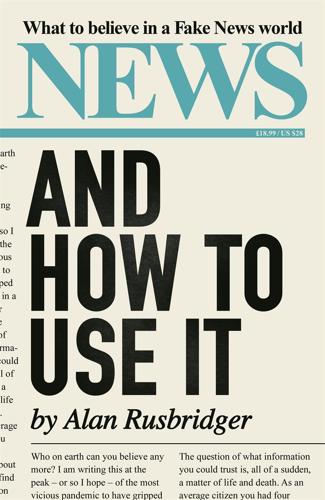
News and How to Use It: What to Believe in a Fake News World
by
Alan Rusbridger
Published 26 Nov 2020
The teams putting together these daily chronicles are required to have a mixture of skills: ‘part scavenger, part sub-editor and headline writer, part reporter and picture taster, part adman, and they’re often a whizz with Photoshop and video too,’ wrote Adrian Addison in his book Mail Men. ‘They’re also part celebrity-magazine gossip writer; it’s a vital skill to be able to spot a Kardashian in a crowd.’ The website publishes a staggering 1,500 articles and 560 videos – a day! – to 15 million daily readers and 10 million Snapchat users. Add in 250 million video views a month and you arrive at the most read online ‘news’ title in the US, UK and Australia. The constant stream of inconsequential gossip about people who don’t really matter very much is, it turns out, rather addictive, with readers refreshing the home page around ninety-six times a day and then spending a long time scrolling down through the pictures and formulaic words.
…
Quartz developed an app which didn’t require its readers to read the news so much as chat with it: each story appeared in little chunks, like texts from a friend. More august news organisations such as the Wall Street Journal developed chatbot formats. CNN started providing news in personalised private messages. The Economist started using Snapchat Discover in October 2016, along with the BBC and New York Times. Instead of longish worthy chunks of text (let’s call them ‘articles’), the Economist remade articles as easily absorbable cheat sheets. North Korea, global warming, the legalisation of drugs: they were all translated into snappy visual formats.
…
As a result, their media literacy when it comes to distinguishing opinion from news is lower than other age groups, although they are less likely to share fake news. The Pew Research Center found that 95 per cent of American teens have access to a smartphone, with 45 per cent online ‘almost constantly’, mostly using YouTube, Instagram, Snapchat and Facebook. When asked to share any positive uses of social media, only 16 per cent cited greater access to news and information. Backing these findings, the Reuters Institute and the research agency Flamingo published a report in 2019 on how young people consume the news. They tracked the smartphone behaviour of twenty participants – all under the age of thirty-five – in the United States and United Kingdom over two weeks, as well as asking a subset to keep a digital diary of the news they consumed.
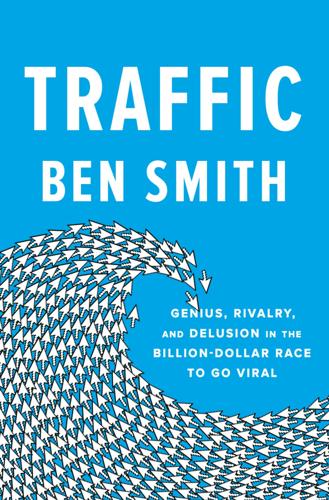
Traffic: Genius, Rivalry, and Delusion in the Billion-Dollar Race to Go Viral
by
Ben Smith
Published 2 May 2023
Jonah turned up to address the board of directors of the Times in a hoodie, playing to type, in the gleaming fifteenth-floor conference room of a new building that many still thought the company couldn’t afford. The Times thought it needed a high-tech new space, a claim that became a bit of a joke when Snapchat took over the lease on the old building on West Forty-First Street, the one for which Times Square is named. The Times was already renting out floors to other companies to make up revenue. The man behind their slow and painfully deliberate transition to the internet, publisher Arthur Sulzberger Jr., presided, along with the CEO he’d brought in to speed things up, Mark Thompson.
…
When a board member told him that international growth was harder than it looked, Jonah answered that this was a new era—that Facebook and Google and Pinterest had replaced the old headaches that came with trying to build a global media company, like setting up a printing plant in Paris or hiring drivers in São Paulo. When BuzzFeed’s revenue came up $80 million short in 2015—well, that was just the downward tick of the arrow, and $170 million was still a lot of money! But the arrow was starting to look like a flat line. Even as BuzzFeed reached more and more people on platforms like YouTube and Snapchat, traffic seemed to be losing value at the same rate. It might not have been fool’s gold, exactly, but it wasn’t solid. The thing with a commodity is that it needs to be limited to have real value. When it came to traffic, there was too much of it out there, and Facebook and Google were too good at selling theirs directly to advertisers.
…
See also sex tapes and sexual content Porteous, Will, 127, 128, 152, 283 Powell Jobs, Laurene, 284–86 presidential elections, 106, 158–59 The Price Is Right, 292 privacy rights, 63, 85, 141, 232, 262 ProPublica, 196 Proud Boys, 290 public relations, 238 Pulitzer Prizes, 220, 230 Punk’d, 124 Putin, Vladimir, 257 Pyra, 17–18 Q Quail Hunting with Dick Cheney (game), 72 quizzes, 203–4, 206, 208, 239, 253, 267, 271 R racism and racial dynamics, 6, 93, 101, 126, 134–35, 187, 271, 274–75, 293 Rao, Samir, 284 Ratnesar, Romesh, 6 Ratter, 215–17, 235 Rayner, Jay, 14 Read, Max, 214, 218 reality TV, 124–25 Real Time with Bill Maher, 255 Reason, 39 reBlog, 28 Redbook, 92 Reddit, 72, 153, 191 Red Herring, 17 Reichenstein, Oliver, 261 Reid, Harry, 249, 251 Rejection Line, 47 Republican National Convention, 186 Republican Party, 67 Reuters, 132 revenge porn, 139 Rice, Condoleezza, 239 Righteous Indignation (Breitbart), 41 Right Media, 22, 105–6 Robinson, Janet, 224 Romanian revolution, 14 Romney, Mitt, 166–67, 181, 189 Roose, Kevin, 275 Rosencrantz and Guildenstern Are Dead (Stoppard), 301–2 Rospars, Joe, 111 Rothstein, Adam, 300 RRE (venture capital firm), 127, 283 RSS feeds, 72 Rumble, 298 Run-D.M.C., 221 Ryan, Meg, 33 Ryan, Paul, 239 S Saint Petersburg, Russia, 242 Saldana, Zoe, 216 Salon, 76 Samaha, Albert, 282 Sanders, Bernie, 239, 244, 253, 256, 293 Santorum, Rick, 166, 173 Saturday Night Live, 82 Savage, Damian, 168 Schiller, Vivian, 223 Schlesinger, Arthur, Jr., 34 Schmidt, Eric, 66 Schoofs, Mark, 196, 248, 250–51, 253, 255 Schwarzenegger, Arnold, 32 Scocca, Tom, 57 Scratch DJ Academy, 221 search engine optimization (SEO), 80 Second Life, 111 Securities and Exchange Commission (SEC), 299 September 11, 2001, terrorist attacks, 179 sex tapes and sexual content and 4chan, 126 and Gawker, 137, 139–46, 175–76, 214–15, 217–18, 231–36 revenge porn, 139 and Valleywag’s launch, 63 See also pornography Shafrir, Doree, 91, 171, 262 Shapiro, Ben, 41, 133, 275, 290 Shark Tank, 216 Shepherd, Jack, 153 Sherrod, Shirley, 134–36, 144 Sherwood, Ben, 195–96, 200, 256 Shey, Tim, 3–4, 8, 28 Shingy, 150 Shirky, Clay, 226 “Shitty Media Men” (anonymous), 261–62 Sicha, Choire, 298 Sigmund Piebald Mastersmash (BuzzFeed handle), 168 Silicon Alley (New York), 34, 61 Silicon Valley and BuzzFeed’s traffic growth, 203 and Denton’s background, 14–15 and Disney’s bid to buy BuzzFeed, 202 funding for BuzzFeed competition, 195 and online privacy issues, 142 and Ozy’s launch, 284–86 and political fundraising, 118 and post tech-crash environment, 61 and shifting media environment, 84 and Valleywag’s launch, 62–65 and venture capital firms, 207 Simpson, Glenn, 247–49 Site Meter, 54, 150 Six Degrees (Watts), 25–26 Sklar, Rachel, 58–59, 68 Slashdot, 3 Slim, Carlos, 223 “Slut Machine,” 92, 97. See also Egan, Tracie “small-world” experiment, 25–26 Smith, Ben, 196 Smurl, Paul, 224–25 Snapchat, 267 social media and author’s background, 247 and BuzzFeed’s traffic sources, 151, 153–54, 267, 269–70 and growth of right-wing social media, 186–88 and Jezebel’s style and content, 93, 95–96, 100–101 and LilyBoo, 173 “meaningful social engagement” metric, 272–75, 284 and political organization, 109–15 and rise in internet traffic, 8–9 and shape of today’s internet media, 303 social engagement on, 183–84, 204–5, 209–12, 253 See also specific platforms SoftBank, 122 Sorkin, Aaron, 33 South by Southwest (SXSW), 11–12 South Korea, 151 space.com, 17 SPACs (special purpose acquisition companies), 300–303 spam, 73, 153, 183, 192, 205, 292 Spears, Britney, 90, 154 Spencer, Richard, 294 Spiers, Elizabeth, 19–21, 46, 213 Sploid, 69 sports media, 140 Springsteen, Bruce, 28 Spy magazine, 23, 45, 57 Stanford University, 5–6, 85–86, 106 Stanley, Morgan, 119 Stanton, John, 188, 194, 281 Steele, Christopher, 247–49 Steele, Lockhart, 19, 55–56, 69, 77, 89, 232 Steele Dossier, 246–59, 260 Steinberg, Jon, 129, 130, 152, 155, 167, 197–99 Sterger, Jenn, 142 Stewart, Dodai, 91, 93–95, 298 Stewart, Jon, 152 “stickiness” of websites, 45, 51 Stopera, Dave, 192 Stopera, Matt, 151, 154–55, 167, 173, 192–93, 209 Stoppard, Tom, 301 Stoppelman, Jeremy, 66 Stranahan, Lee, 135–36 Strzok, Peter, 257, 259 StumbleUpon, 153 suck.com, 29 suicides, 86 Sulzberger, A.
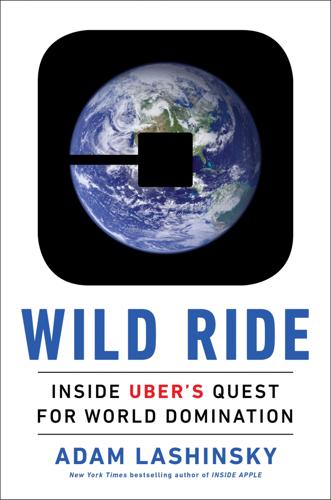
Wild Ride: Inside Uber's Quest for World Domination
by
Adam Lashinsky
Published 31 Mar 2017
Consumers took to Uber so quickly because it is so easy to use. Each time the company opens for business in a new market—at the end of 2016 it operated in more than 450 cities in 73 countries—users discuss their discovery with the zealousness of a convert. Unlike naysayers of Twitter, who try the service but can’t see the utility, or doubters of Snapchat, who believe, justifiably, they’re too old to learn, Uber appeals to everyone who lives in or near a city and has a smartphone. A new customer installs the app, enters their credit card information (personal and business, if they choose), and then requests a driver. The software knows where the request is coming from because the customer’s smartphone has a GPS chip (and other sensor technology) that tells it so.
…
By early 1999 Scour was beginning to resemble a company, albeit one run by a bunch of college dropouts working from a cramped apartment next to their erstwhile university. “We got to thirteen people working in an office with as many computers,” says Haykinson, who years later would become director of engineering for the messaging service Snapchat, located across town in Venice. “Whenever anyone used the microwave we’d have to turn the power off on the monitors so it didn’t blow the fuses. It was sort of ridiculous.” The Scour team’s origins as entrepreneurial renegades, whether it was appropriating UCLA’s network or building a business off intellectual property they didn’t own, made an imprint on the company—and its founders.

The Participation Revolution: How to Ride the Waves of Change in a Terrifyingly Turbulent World
by
Neil Gibb
Published 15 Feb 2018
As I travelled through Indonesia, I noticed keenly the effect that social media and digital tools were having on its culture. Many young people under the age of 35, especially in the capital city of Jakarta, speak perfect English, often with a Californian lilt, picked up from being brought up with access to YouTube, TMZ, and BuzzFeed. They are switched on, savvy, and socially connected via Instagram, Snapchat, and Path. These new tools and platforms are not disruptive; they are participatory. They enable people to participate more fully in society, life, things they need to do, activities they are passionate about. Ten years after Woodman first waded into the water in Bali with a camera in a plastic bag strapped to his hand, GoPro replaced Sony as the best-selling digital imaging camera at American retailer Best Buy – the first time Sony had been usurped in the chain’s history – having totally transformed how video content was made, viewed, and shared.
…
Once you start to look through the lens of participatory innovation, a lot of things make sense. Instagram makes it easier to participate in sharing our experiences with each other. Google makes it easier to participate in search and finding unbiased information. eBay makes it easier to participate in the process of buying and selling stuff. Snapchat makes it easier to participate in goofing around – especially when you are stuck in a dull office wondering why the hell you are there. The Apple Mac, coupled with a package like Logic Pro, makes it easier to participate in making music; YouTube in sharing and watching the videos; Airbnb in renting out and finding a nice place to stay; Tinder in… well, you know what.
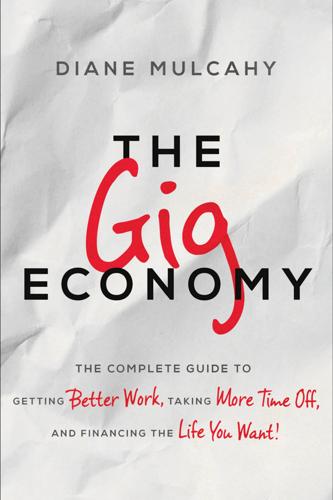
The Gig Economy: The Complete Guide to Getting Better Work, Taking More Time Off, and Financing the Life You Want
by
Diane Mulcahy
Published 8 Nov 2016
In 2015, the rate of corporate layoffs continued to increase and included companies such as Microsoft (7,800 workers),3 Proctor & Gamble (6,000 workers),4 JP Morgan Chase (5,000 workers),5 American Express (4,000 workers),6 and Target (2,250 workers).7 Walmart and McDonald’s, the largest employers in America, both laid off hundreds of corporate jobs.8 Even high-growth technology companies aren’t immune. Twitter, Snapchat, and Groupon all conducted layoffs in 2015.9 These cuts may generate returns for shareholders, but they eliminate any sense of job security for workers. Traditional bastions of stability, like government work, teaching, and academia, still exist and offer relatively higher levels of security, but even those industries are under pressure.
…
life insurance Limited Liability Corporation (LLC) loss aversion Maker’s Schedule Manager’s Schedule marketing, for new jobs Marsh, Nigel Mastermind Dinners (Gaignard) material wealth, vs. personal fulfillment MBA students, planning by McDonald’s mental tasks, combining with physical Merchant, Nilofer MetLife, Study of the American Dream Microsoft middle class impact of home ownership middle managers Mihalic, Joe Mint.com Moment money, perspective on mortgage mortgage calculator National Labor Relations Act National Labor Relations Board (NLRB) negative cash flow net worth, in principal residence networks maintaining 99designs Obituary exercise offer in connecting 168 Hours (Vanderkam) opportunity, income security from opportunity mindset outbound connecting Outliers (Gladwell) overconfidence ownership, vs. access paid leave part-time side gigs passion, pursuing in time off passive income Peers.org pension plans personal branding personal burn rate personal fulfillment, vs. material wealth perspective, time off to change Pew Research Center physical tasks, combining with mental pilot tests planning for best-case scenario in financial flexibility for time off playtime portfolio of gigs building for experiments learning by doing opportunity for connections Postmates power, and expanding time predictors of future feelings priorities checkbook diagnostic exercise on extended family as of others, impact of private sector, job creation decline pro-bono legal adviser Proctor & Gamble Profiting from Uncertainty (Schoemaker) public assistance, eliminating public speaking purchases, time cost of Qapital QuickBooks quitting job, exit strategy for Rae, Amber rates of return, for housing Raw Deal (Hill) referrals, asking for regret, risk of Reich, Robert Reinventing You (Clark) rejuvenation, time off for relationships, impact on success renting growth in households vs. ownership reputation RescueTime resources, allocating to short-term activities vs. long-term goals resume, gaps for time off resume virtues retail workers retirement healthcare costs in new vision of plans to work longer before saving to finance traditional savings plans supplemental income in rewards, time for longer-term risk assessment of of boring life debt and of diploma debt facing fear by identifying size of risk reduction by acceptance by eliminating exercise for facing fear by assessing options with insurance by mitigating risk by shifting risk risk taker, learning to be Rohn, Jim Rolf, David Roth IRA Rowing the Atlantic (Savage) S Corporation S&P 500 companies, average life sabbaticals safety net, creating Sagmeister, Stefan Savage, Roz, Rowing the Atlantic saving for retirement traditional plan savings, financial plan and increase ScheduleOnce Schoemaker, Paul, Profiting from Uncertainty Schrager, Allison security creating from diversifying for income for job self-employment income tax form for risk assessment SEP IRA service workers Shared Security Account Shell, Richard Simmons, Gail skill-based economy, vs. credentials-based economy skill-based employment system, vs. tenure-based employment system skilled workers skills, income security from building Slaughter, Anne-Marie Snapchat social capital, of introducer social contagion social media Social Security Social Security Administration Society for Human Resources Management sole proprietor, independent worker as South by Southwest (SXSW) speaking inbound connecting through skills for specialization spending, auditing Stand Out (Clark) Star Plates start dates, negotiating startup exit strategy for Strayed, Cheryl Stride Health strong ties in network student loans success as contagious defining vision of external versions new American dream as definition refining vision of surrogation sweat equity bucket Target TaskRabbit tax data analysis Tax Policy Center taxes deductions for mortgage interest Schedule C withholding teaching technology for delegating outbound connecting by leveraging technology companies tenure-based employment system, vs. skill-based employment system time age-related difference in perception calculating use employees’ learned helplessness about expanding horizon for savings plan for longer-term rewards management mindfulness about and purchase cost reaction to wasting reclaiming tracking investments time frame, for goals time off benefits developing ideas for exercise financing friends and family reaction gaps in resume from between gigs, vs. paid time off planning for Toastmaster tolerance of risk Ton, Zeynep The Good Jobs Strategy Top Chef Topcoder total cost of home travel Twitter Uber drivers uncertainty, cognitive biases about unearned income unemployment insurance unemployment protection, for self-employed universal basic income (UBI) universality of benefits universities, faculty members Upwork Urban-Brookings Tax Policy Center vacation. see also time off Vanderkam, Laura, 168 Hours Vanguard, online calculator Virtues exercise volunteer positions during time off wage insurance Walmart Ware, Bronnie weak ties in network wealth gap WeWork withholding taxes Wolff, Edward work flexibility full-time job disappearance future of workers eliminating categorization of last resort workers’ compensation working lives, end of worst case, facing fear by starting with writing skills inbound connecting through Xero YouCanBook.me ABOUT THE AUTHOR Diane created and teaches The Gig Economy, which was named by Forbes as one of the Top 10 Most Innovative Business School Classes in the country.
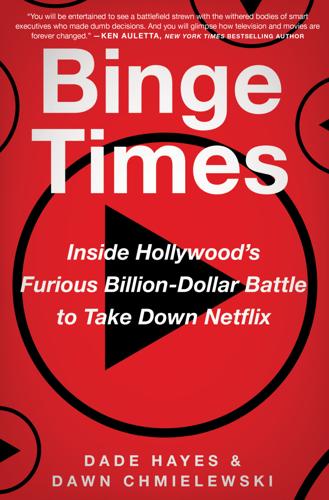
Binge Times: Inside Hollywood's Furious Billion-Dollar Battle to Take Down Netflix
by
Dade Hayes
and
Dawn Chmielewski
Published 18 Apr 2022
“Some of the most important events in media history have happened right here in this building and right here in this room,” Burke said. “From the golden era of radio to the first TV commercial to the first color broadcast—they all happened in this building, in this room, and because of NBC.” While NBCUniversal ran a portfolio of digital brands and dabbled in Snapchat, the trappings and tone of the event did not exactly scream “high tech.” After exiting the wood-paneled elevators and walking down hallways lined by framed black-and-white photos of SNL and Kraft Television Theatre, attendees took their seats in the very womb of show business. Peacock might have been a twenty-first-century streaming venture, the presentation seemed to say, but it was on the same comfortable continuum as what had emanated from NBC for decades.
…
The slogan elicited some eye rolls among media mavens, especially when it was attached to one punny message noting that The Sopranos, Friends, and The Big Bang Theory all had the same streaming home. “From Bada . . . to Bing . . . to Bang,” read one cringeworthy tagline. Peter Naylor, former head of ad sales at Hulu who is now at Snapchat parent Snap Inc., retweeted a Fast Company reaction to the WarnerMedia ad. The tweet’s text didn’t mince words: “HBO Max is a branding disaster, and this ad proves it.” HBO Max executives put the best face on the May 27, 2020, launch—even though the app wasn’t available on the Roku or Amazon platforms because of an impasse over consumer data.
…
J., 64 Simpsons, The, 96, 131, 148 Sinatra, Frank, 38 Singer, Lowell, 168–69 Sirico, Tony, 55 Six Feet Under, 48, 68, 213 Six Million Dollar Man, The, 46 6 Underground, 264 60 in 6, 119 Skipper, John, xi, 93, 94, 135–37, 140–41 Sky Group, 93, 96, 128–29, 131–32, 307 Slater, Christian, 204 Sling TV, 89 Smash, 213 Smith, Will, 195, 260 Smits, Jimmy, 304 Snapchat, 200, 253 Snap Inc., 253 Snow White and the Seven Dwarfs, 29, 175 Snyder, Zack, 310 Social Network, The, 53 Solo: A Star Wars Story, 167–68 Sometimes a Great Notion, 67 Sondheim, Stephen, xvi Sons of Anarchy, 174 Sony Pictures, xvii, 9, 25–26, 181–82, 235, 246–47, 300 Sony PlayStation, 48, 89, 182 Sony Trinitron, 102 Sopranos, The, 2, 8, 48, 54, 55, 68, 111, 161, 212, 253 Sorkin, Andrew Ross, 157 Soul, 260, 275, 280, 284 Sound of Music, The, 213 South by Southwest, 110, 249 South Park, 144, 221, 253 Spacey, Kevin, 53–55, 183 Spadaccini, Chris, 161–62 Spanish Civil War, xxi Spencer, Octavia, 98, 103 Spider-Man, 182 Spielberg, Steven, 14, 98, 103, 109, 116–17, 156, 183, 213, 260, 272, 288 Spirited Away, 221 Sponge-Bob SquarePants, 144 sports licensing, 133–37, 140–42 Spotify, 312 Springsteen, Bruce, xix, 38, 55 Squid Game, 315–16, 318 Staggs, Tom, xi, 82, 90, 95, 171 Stallone, Sylvester, 31 Stankey, John, ix, 77, 164, 209–10, 223–26, 235, 256, 280–81, 283, 289 AT&T Time Warner lawsuit, 63–64, 154 “flywheel” of, 3–4, 155, 157–58, 164, 209, 280–81 launch of HBO Max, 253 mission at HBO, 3–5, 73–74 Star Wars, 9, 50, 82, 89–90, 159, 167–68, 170, 222, 243, 278 Starz, 48–50, 69, 72, 93, 131 Steinfeld, Hailee, 179, 245 Stelter, Brian, 9 Stephanopoulos, George, 7 Stephens, John, 154, 218, 224, 255 Stephenson, Randall, ix, 63–64, 74, 134, 153–54, 158, 216, 219, 224, 255, 256, 289 Sterling Manhattan Cable, 66 Stewart, James B., 90 Stone, Brad, 295 Stone, Emma, 313 Stranger Things, 56, 75 Strauss, Matt, x, 120–23, 198–200, 202–6, 248, 249 Strauss, Ricky, xi, 173, 176–77 Struum, 311 Stuber, Scott, x, 11–12, 14, 15, 233, 263, 264 Studio Ghibli, 221, 252 StumbleUpon, 33 “subscription fatigue,” 139 subscription video on demand (SVOD), 139–40 Succession, 222 Suits, 201 Sundance Film Festival, 186, 187–88, 294 Sundance TV, 309 Sun Microsystems, 19–21 Super Bowl, 23, 76 Super Bowl ads Game of Thrones, 161–64 Hulu, 148–49 Quibi, 187–88 Surrey, Miles, 196 Survive, 187 Sutherland, Kiefer, 118 Swasey, Steve, 50 Sweeney, Anne, xi, 79–80, 83 Syfy, 128, 249 Synesael, Colby, 225 Tambor, Jeffrey, 293 Tanz, Larry, 236 Taplin, Jonathan, 23–25 Tartikoff, Brandon, 212 Taxicab Confessions, 68 TBS (Turner Broadcasting System), 38, 76, 113–14, 209, 212, 220, 221, 222, 249 TCM Classic Film Festival, 254 Teach for America, 111 Ted, 249 Ted Lasso, 247–48, 317 Teigen, Chrissy, 118 Telemundo, 202, 249 Telephone, 21 Téléphonoscope, 22, 27 Tenet, 283–84, 285–86 Texaco Star Theater, 138 Thalberg, Irving, 109 That’s My Boy, 262 Theron, Charlize, 264 13 Reasons Why, 233 30 Rock, 148, 196, 212, 248 This Is a Robbery, 15 This Is Us, 130, 197, 296 Thruline Entertainment, 152 Tidying Up with Marie Kondo, 237 TikTok, xix, 118, 192, 193 Time Warner.

Dawn of the New Everything: Encounters With Reality and Virtual Reality
by
Jaron Lanier
Published 21 Nov 2017
Hacker thinking today doesn’t use the term as much, but it still embraces visions of a future global level of organization that would surpass earlier structures such as religions, markets, and nations. Chapter 15 1. To bring the little display screens mounted in front of the eyes into focus and fill a wide field of view. 2. At I write this book, the most publicized device in the genre is probably Snapchat’s Spectacles. 3. Appendix 3 examines this problem. 4. There are a few ways to slightly fake the impossible. You can heat air up with powerful lasers until it ionizes and thereby cause little bright bluish stars to spark into being in midair. A small number of such sparks can be coordinated and replenished often enough to form rudimentary floating 3-D phantasms, (This is just the flavor of extremist VR experiments that one expects from the energetic Japanese VR research community.)
…
See also DataGloves sensorimotor loops sensorimotor mirror sensors “set and setting” principle sex sexism sexual singularity shakuhachi shaman Shankar, Uday ship design shitposting Shulgin, Sasha SIGGRAPH (Special Interest Group on Computer Graphics conference for the Association for Computing Machinery) sign language silence Silicon Graphics Silicon Valley similarity, recognition of simulated code Sinatra, Frank Singapore Singer, Alex singing singularity freaks Sketchpad Skinner, B. F. Skinner box skin sensor cells ski simulator Skype Slater, Mel Smalltalk smartphones Smith, Adam Smith, Alvy Ray Smith, Graham Smith, Jack Smolin, Lee Snapchat Spectacles snark Snow, Michael socialism social media social networking social VR software. See also programming abstractions and obsolescence and two-phase nature of VPL and songlines sonic general purpose programming language Sony PlayStation VR headset Sound of One Hand sounds source code Soviet Union spacetime topological quantum computers Spacewar!

The Black Box Society: The Secret Algorithms That Control Money and Information
by
Frank Pasquale
Published 17 Nov 2014
We have no idea how many classic stealth interactions— country club conversations, discreet drinks at out-of-the-way bars—take advantage of insider knowledge. It was rumored in 2013 that savvy traders will adopt Snapchat— a video and photo app promising self-destructing messages—to hide wrongdoing.99 If the damning chatter quoted above were merely written down, “snapped” as a picture, messaged, and deleted, misdeeds from banks to rating agencies may have been left uncovered. The “smoking gun” would be ephemeral 1’s and 0’s. But by 2014, Snapchat itself ran afoul of the FTC for lying about how ephemeral its communications were. A “sandbox” feature stored many video chats; other apps grabbed pictures.
…
Cora Currier, “13 Reasons Goldman’s Quitting Exec May Have a Point,” ProPublica, March 14, 2012, http:// www.propublica.org /article /13-reasons-goldmans-quitting -exec-may-have -a -point. Shahien Nasiripour, “Goldman Sachs Values Assets Low, Sells High to Customers as Senate Panel Alleges Double Dealing,” Huffington Post, April 14, 2011, http://www.huffi ngtonpost.com /2011/04 /14 /goldman-sachs-values-asse _n _849398.html. 99. Kayla Tausche, “Wall Street into Snapchat, and Regulators Are on Alert,” CNBC, July 30, 2013, http://www.cnbc.com /id /100924846. 100. For example, since a “simple fi xed/floating interest-rate swap contract . . . has zero value at the start,” it “is considered neither an asset nor a liability, but is an ‘off-balance-sheet’ item.” Carol J.

Click Here to Kill Everybody: Security and Survival in a Hyper-Connected World
by
Bruce Schneier
Published 3 Sep 2018
Let’s encrypt calls, too,” Wired, https://www.wired.com/2017/04/encrypted-chat-took-now-encrypted-callings-turn. 197These controls ended when the Internet: Whitfield Diffie and Susan Landau (1 Oct 2001), “The export of cryptography in the 20th century and the 21st,” Sun Microsystems, https://pdfs.semanticscholar.org/1870/af818dd0075bb5e79764427a7c932fe3 cfc6.pdf. 197In 2015, then–UK prime minister David Cameron: British Broadcasting Corporation (12 Jan 2015), “David Cameron says new online data laws needed,” BBC News, http://www.bbc.com/news/uk-politics-30778424. Andrew Griffin (12 Jan 2015), “WhatsApp and Snapchat could be banned under new surveillance plans,” Independent, https://www.independent.co.uk/life-style/gadgets-and-tech/news/whatsapp-and-snapchat-could-be-banned-under-new-surveillance-plans-9973035.html. 197Current prime minister Theresa May: Charles Riley (4 Jun 2017), “Theresa May: Internet must be regulated to prevent terrorism,” CNN, http://money.cnn.com/2017/06/04/technology/social-media-terrorism-extremism-london/index.html. 198In 2016, I surveyed the market: Bruce Schneier, Kathleen Seidel, and Saranya Vijayakumar (11 Feb 2016), “A worldwide survey of encryption products,” Publication 2016-2, Berkman Center for Internet & Society, Harvard University, https://papers.ssrn.com/sol3/papers.cfm?
…
But many Internet companies can be very powerful, more so than predominantly brick-and-mortar stores, even chains as enormous as Walmart, because they benefit from what is called the network effect. That is, they become more useful as more people use them. One telephone is useless, and two are marginally useful, but an entire network of telephones is very useful. The same thing is true for fax machines, e-mail, the web, text messages, Snapchat, Facebook, Instagram, PayPal, and everything else. The more people use them, the more useful they are. And the more powerful the companies that control them become, the more control those companies can exert over you. Unless you know how to jailbreak your phone to remove its restrictions, sideload apps, and live with a warranty-free device that can’t receive updates without a lot of effort, the iTunes store is the only place you can go for iPhone apps.
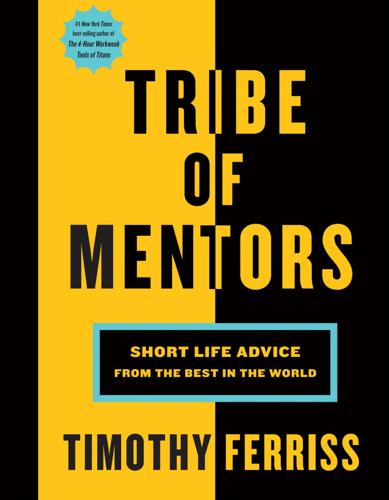
Tribe of Mentors: Short Life Advice From the Best in the World
by
Timothy Ferriss
Published 14 Jun 2017
We shortened nearly every profile and subjectively selected the “best” answers. Best answers sometimes meant eliminating repetition, or focusing on answers detailed enough to be both actionable and non-obvious. In nearly every guest’s profile, I indicate where you can best interact with them on social media: TW=Twitter, FB=Facebook, IG=Instagram, LI=LinkedIn, SC=Snapchat, and YT=YouTube. During outreach to guests, I always asked the same questions in the same order, but in the following pages, I frequently reordered the answers for optimal flow, readability, and impact. I’ve included some non-responses (e.g., “I’m terrible at saying no!”) to make you feel better about having the same challenges.
…
Right now, his life is being ignored by everyone for a very specific reason: It is hard to look at yourself in the mirror. I recall speaking about Bernays’ life and legacy at a marketing conference in Germany. The organizers were furious—they were hoping I would give them tools to sell products on Snapchat to “millennials.” What purchase of $100 or less has most positively impacted your life in the last six months (or in recent memory)? I spent four dollars to park near a beautiful lake in Oregon. I took a swim and had a trillion-dollar moment with the water. How has a failure, or apparent failure, set you up for later success?
…
But when the paycheck is half a million dollars for a couple Instagram photos, what would you do in their shoes? I have been in those shoes, and I am proud to say I had to take some of my own medicine that day. Around the time I was starting to really question the advertising industry, two years ago, I was offered a million-dollar contract for a big Snapchat series for Sour Patch Kids. I told them I didn’t eat those candies and would never eat them in front of the camera. They were fine with it. I even remember telling myself, “I would never ever eat one of those candies, even if their marketing director, who was signing the deal, asked me.” That day was a difficult battle between the illusion of needing money and the incorruptible inner voice that told me to not do it.

Dataclysm: Who We Are (When We Think No One's Looking)
by
Christian Rudder
Published 8 Sep 2014
It’s hard to see why you’d need one now that Facebook’s around, although according to the company’s last quarterly report, people under eighteen aren’t using Facebook as much as they used to. So maybe the kids need the printed copy again, I don’t know.1 But however teenagers are staying in touch—whether it’s through Snapchat or WhatsApp or Twitter—I’m positive they’re doing it with words. Pictures are part of the appeal of all of these services, obviously, but you can only say so much without a keyboard. Even on Instagram, the comments and the captions are essential—the photo after all is just a few inches square. But the words are the words are the words.
…
Phish, 10.1, 10.2, 10.3, 10.4, 10.5, 10.6 photobombing photographs, 5.1, 7.1, 9.1, 14.1, 14.2, bm1.1 captions of, 3.1, 5.1 on OkCupid, 6.1, 7.1, 7.2, 7.3, 14.1, nts.1 scrambled, 5.1, 5.2, 5.3 phrenologists Pinterest, 7.1, 7.2, nts.1 Pitbull Pixar, 4.1, nts.1 pixels pizza, 10.1, 10.2, 10.3, 10.4, 10.5, 10.6, 10.7, nts.1 planets, 10.1, nts.1 poetry, itr.1, 3.1, 11.1 polio vaccine politics, 5.1, 5.2, 6.1, 7.1, 8.1, 11.1 gridlock in, 9.1, 14.1 liberal vs. conservative, 6.1, 9.1, 9.2 party, 5.1, 8.1, 8.2, 9.1, 14.1, nts.1 racism and Twitter use and popular culture, 3.1, 11.1 pornography gay, 11.1, 12.1, nts.1, nts.2 women-with-women Potomac River, 3.1, 3.2 PowerPoint presentations, 2.1, 14.1 “pratfall effect,” 2.1, nts.1 pravastatin Privacy and Civil Liberties Oversight Board, US psychology, 6.1, 10.1 neuro- social, 2.1, 7.1 punk rock puns, 3.1, 6.1 Quantcast, 6.1, nts.1 Quantified Self movement “Quantitative Analysis of Culture Using Millions of Digitized Books” (Michel and Aiden), n race, itr.1, itr.2, itr.3, 7.1, 8.1, 8.2 attractiveness and, 6.1, 6.2 four largest groupings by Internet use and, itr.1, 6.1, 6.2 jokes about, 8.1n, 8.2, 9.1 quantitative analysis of, 6.1, nts.1 rhetoric about tokenism and racism, itr.1, 1.1, 5.1, 8.1, 9.1, 11.1 data on, itr.1, 6.1, nts.1 dating and, 6.1, 6.2 expression of, itr.1, 6.1, 8.1, 9.1, nts.1 Obama on pervasiveness of, 6.1, 8.1 politics and stereotypes of, 8.1, 10.1 radio CB, 9.1, nts.1 ratings compatibility, 6.1, 6.2, 6.3, 6.4 congressional, itr.1, itr.2 of men and women, itr.1, itr.2, itr.3, itr.4, itr.5, 1.1 pizza, itr.1, itr.2 Reagan, Ronald Reddit, itr.1, itr.2, itr.3, 2.1, 12.1, 13.1, 14.1n, nts.1, nts.2 community and subreddit pages on, 2.1n, 12.1 relationships assimilated bonds of, 4.1, 4.2, 4.3 breakup of, 1.1, 4.1 common interests in connectors in, 4.1, 4.2 of couples, 1.1, 4.1, 5.1, bm2.1 courtship, 1.1, 4.1 evaluation of family leading separate lives in, 4.1, 4.2 progression of “real life,” romantic, 1.1, 2.1, 4.1, 4.2, 5.1, 6.1, 7.1, nts.1 stability in, itr.1, 4.1 see also dating; friends; marriage Republican National Convention of 2008 Republican Party, 5.1, 8.1, 13.1, 14.1, nts.1 Richter scale, 7.1, 12.1, nts.1 Rieger, Gerulf, 11.1, nts.1 Romans, ancient Romney, Mitt, Twitter followers of, 13.1, 13.2, nts.1 Rorschach tests Rove, Karl Russia, 9.1n, bm1.1 Ruthstrom, Ellyn, 11.1, nts.1 Sacco, Justine, 9.1, 9.2, 12.1, 13.1, nts.1 Salesforce.com, 13.1, 13.2, nts.1 Salk, Jonas Samsung Sapolsky, Robert, 7.1, nts.1 SAT science, itr.1, 1.1, 2.1, 3.1, 6.1, 9.1 computer, 4.1, 13.1, 14.1 data, itr.1, itr.2, 2.1, 8.1n, 12.1, 12.2, 13.1, 14.1, 14.2, bm1.1, bm2.1, bm2.2 genetic network analysis political social, itr.1, itr.2, 5.1, 6.1, 8.1, 9.1, 10.1, bm2.1 Scientific American, 14.1, 14.2, nts.1, nts.2 Scruff, n Seacrest, Ryan seismology, 7.1, 12.1 selfies September 11, 2001, terrorist attacks sex, itr.1, 1.1, 6.1, 8.1, 10.1, 11.1 attractiveness and, itr.1, 1.1, 2.1, 6.1, 7.1, 7.2, bm2.1 casual, 5.1, 11.1 regret and, itr.1, nts.1 threesome see also bisexuality; homosexuality; lesbianism; lust Shakespeare, William Sharpton, Al Shazam Shiftgig, 7.1, 7.2, nts.1 showers, 12.1, 12.2 Silver, Nate, 11.1, 11.2, 14.1, nts.1 Simmons, Gene “six degrees of separation” theory Slackers (film) Slate, itr.1n, 3.1, 13.1, nts.1 smartphones, itr.1, 12.1, 12.2 smell, sense of, 2.1, nts.1 Snapchat Snowden, Edward, 14.1, 14.2 social desirability bias social graphs, 4.1, 4.2, 4.3, 4.4 social media, 4.1, 6.1, 7.1, 9.1, 9.2, 13.1, 13.2, 14.1, nts.1 unrest and protest fanned on social physics solar eclipse of 1919 Sorell, C. Joseph, 10.1n, nts.1 Sparks, Nicholas speech hate, 8.1, 9.1 partisan Spielberg, Steven sports, 6.1, 8.1, 10.1, 12.1 Stanford-Binet test states’ rights statistics, itr.1, 6.1, 6.2, 10.1, 10.2 Stephens-Davidowitz, Seth, 8.1n, 8.2, 11.1, 11.2, bm2.1, nts.1, nts.2, nts.3 stock market predictions Street Fighter II string theory Strunk, William Suler, John Supreme Court, US, 8.1, 13.1 symmetric beta distribution Taboo (game) talking points Target, 13.1, nts.1 tattoos, 2.1, 2.2 taxation, 8.1, 14.1, 14.2 Tea Party, 8.1, 9.1 technology, itr.1, itr.2, 4.1, 5.1, 9.1, 12.1, 13.1, 14.1 cultural effect of, 3.1, 3.2, 9.1 harnessing of telephones, itr.1, 3.1, 3.2, 3.3, 4.1, 4.2, 9.1 television, 6.1, 6.2, 14.1n Tennyson, Alfred, Lord terrorism Texas, 8.1, 12.1, 12.2 text messages, 3.1, 3.2, 14.1 average length of, 3.1, 3.2, 3.3 copy-and-paste vs. from-scratch keystrokes used on, 3.1, 3.2, 3.3 response rates to, 3.1, 3.2, 3.3 revision of time spent on, 3.1, 3.2 Thoreau, Henry David, 11.1, nts.1 thought, 1.1, 8.1, 8.2 time, 3.1, 3.2, 8.1 passage of, 3.1, 3.2 spent on messages, 3.1, 3.2 Tinder, itr.1, 7.1 tribes, 3.1, 7.1, 7.2, 9.1, nts.1 Trump, Donald Tufte, Edward R., bm1.1, nts.1 Tumblr, itr.1, 7.1, 9.1, 9.2, nts.1, nts.2 Clients from Hell posts on Twitter, itr.1, itr.2, itr.3, itr.4, itr.5, 3.1, 3.2, 3.3, 4.1, 8.1, 9.1, 12.1, 12.2, 13.1, nts.1 average word length on black users of, 13.1, nts.1 common hashtags on, 13.1, 13.2, 13.3 followers on, 13.1, 13.2, 13.3 #HasJustineLandedYet topic on, 9.1, 9.2, nts.1 language style and vocabulary on, 3.1, 13.1, nts.1 messaging patterns of subgroups on most common words on, 3.1, 10.1, 10.2 140-character limit on, 3.1, 3.2 TeamFollowBack on, 13.1, 13.2 Trending Topics list on tweets and retweets on, itr.1, itr.2, 3.1, 3.2, 3.3, 6.1, 9.1, 9.2, 9.3, 9.4, 12.1, 12.2, 13.1, 13.2, 13.3, 13.4, nts.1 TwitterWind ugliness, 1.1, 2.1, 6.1, 8.1 race and social costs of Ulysses (Joyce) uniform resource locators (URLs), 2.1, 3.1n Union of Soviet Socialist Republics (USSR), 12.1, nts.1 United Kingdom (UK), 6.1, 12.1, 13.1, 14.1, nts.1 United States, 6.1, 8.1, 8.2, 12.1 Internet usage in moving in, 12.1, nts.1 national security apparatus of, itr.1, 14.1 Twitter use in universal product code (UPC) Utsunomiya variance concept verbs, 3.1, 3.2 Viet-Cong, 8.1, nts.1 Vietnam Memorial, bm1.1, nts.1 Vietnam War, 8.1, bm1.1, nts.1 visual perception, itr.1n, 6.1 Wall Street Journal, 7.1, nts.1 Walmart, 12.1, 12.2, 12.3, nts.1 Warden, Pete Washington, DC, “Million” marches on, 14.1, nts.1 Washington Post, 14.1, 14.2, 14.3, nts.1 Waters, John, 2.1, 2.2, nts.1 Watson, James wealth, 6.1, 7.1, 7.2n, 7.3, 11.1, 13.1 One Percent of websites, itr.1, 4.1, 6.1, 12.1, 12.2 company dating, itr.1, itr.2, itr.3, 1.1, 1.2, 2.1, 2.2, 3.1, 3.2, 4.1, 4.2, 5.1, 7.1, 12.1 job, itr.1, 7.1, 7.2 person-to-person interaction on, itr.1, itr.2, 2.1, 5.1, 6.1 ratings on, itr.1, itr.2, itr.3, itr.4, itr.5, 1.1, 1.2, 1.3, 1.4, 1.5, 1.6, 1.7, 1.8, 1.9, 2.1, 2.2, 6.1 social, itr.1, 4.1, 6.1 see also specific websites WEIRD research, itr.1, 7.1n, nts.1 Wendy’s, 13.1, nts.1 “What Is Beautiful Is Good,” 7.1, nts.1 WhatsApp WhoBeefed81 Who Owns the Future?
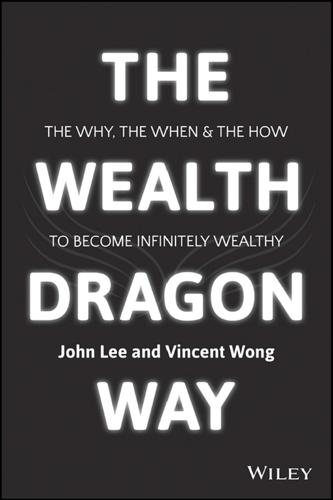
The Wealth Dragon Way: The Why, the When and the How to Become Infinitely Wealthy
by
John Lee
Published 13 Apr 2015
A great hockey player plays where the puck is going to be.” (He also said, “You miss 100 percent of the shots you don't take.”) And here's a great example of that philosophy. In the heat of the social media and smartphone application explosion, two Stamford students turned a craze on its head. They created an app called Snapchat. The software allows users to take photos and record messages that they can send out to recipients who have a small window in which to view them before the messages are deleted forever! In June 2013 their company was valued at $800,000. Six months later Evan Spiegel, one of the company's cofounders, reportedly turned down an offer of $3 billion from Facebook; a month later, he turned down $4 billion from China's Tencent Holdings.
…
Ruffin, Giavanni Sacrifices, making Salaries Sandford, Lee Saving, undesirable truth about Saving face Scarcity thinking Self-control Self-employment Self-importance Seller motivation The 7 Habits of Highly Effective People (Covey) Shakespeare, William Shaw, George Bernard Simpson, O. J. Smith, Adam Snapchat Social media Spending money to make money Spiegel, Evan Stallone, Sylvester Strauss-Kahn, Dominique Strength Sugar, Alan Sun Tzu Surveyors Teaching Teamwork approach Tenant problems Think and Grow Rich (Hill) Thinking big Thomas, Eric Time Tolle, Ekhart Trump, Donald Truths.
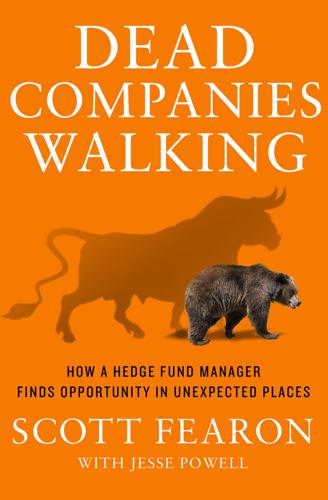
Dead Companies Walking
by
Scott Fearon
Published 10 Nov 2014
Barely a decade after the dotcom crash, people in Silicon Valley and the Bay Area tech world as a whole started to party, to paraphrase Prince, like it was 1999 all over again. Even after the harsh lessons of the first bubble, venture capitalists and larger corporations began to throw huge piles of money at every start-up with a half-baked smartphone app. In 2013, the founders of Snapchat—an application mostly used by teenagers to send goofy photos to each other—turned down a $3 billion buyout offer from Facebook. I don’t know what’s more maniacal: that one company offered that kind of cash for the rights to an obscure product or that the other said no to it. Another sector that has behaved maniacally for years is renewable energy.
…
Morgan, 58, 165, 233 Jaedicke, Robert, 29, 32 JCPenney (JCP), 66–68, 122, 147–49, 182 Jet Capital, 134, 138 JMP Securities, 23 Jobs, Steve, 66, 98, 179–80 Johnson, Ron, 66–68, 112, 147–51 joinerism, 111, 206, 208 Kennedy, John F., 141 Kennedy, Joseph, 21 Kennedy, Robert F., 227 Kmart, 39 Krispy Kreme Doughnuts, 46–47 Lay, Ken, 15, 29 layoffs, 28, 55, 80, 132, 143, 186 Lewis, Michael, 25 Lipper Analytical Services, 55 Lorenzo, Frank, 20, 132–38, 140, 171 Lynch, Peter, 194–95, 207 M-1 (aggregated money supply), 152–53, 157, 176 MacKay, Charles, 85 Madoff, Bernard, 30–32, 222, 224 Mandel, Stephen, 170–71, 187 manias biotech and, 97 dangers of, 12, 41, 88, 104, 174, 206 dotcom, 78, 84, 173, 205 failure and, 5, 85, 93–95, 111 GARP and, 41 health care and, 107 historical myopia and, 92 housing and, 182 identifying, 91–92 irrational exuberance and, 88 oil and, 201 renewable energy and, 94 start-ups and, 94 storytelling and, 91, 97, 120 Marx, Karl, 169 McDonald’s, 46, 76 Merrill Lynch, 58, 107–9, 111, 113 Microsoft, 153, 160, 212 Mill Valley, California, 38, 63, 65 MiniScribe, 150–52 MLM (multi-level marketing), 105 Montgomery Securities, 73, 165, 199, 201–2 moral hazards, 234 Mormons, 96, 105 NASDAQ, 31, 33 “negative rebate fee,” 181 Netflix, 116, 119–23 Neuman, Alfred E., 141 New York Stock Exchange, 146 Newsweek, 121 Nordic Track, 72 oil boom, 8, 26, 85, 92, 199 bust, 18, 22, 26, 53, 104, 114, 153, 155 First National and, 199 Global Marine and, 8–9, 11–13 investment and, 103 offshore drilling, 8 prices, 2, 8–9, 12 Texas and, 11–15, 53, 85, 104, 114, 153, 155, 201 On the Brink (Paulson), 233 Oppenheimer & Co., 58–59 Oracle, 93, 153 Orange County, California, 19–22, 143 Oyster Point, 78–79 PageNet (PAGE), 124, 126 Paine Webber, 88 Palm, 164 Paulson, Henry, 233 Paulson, John, 210 PayPal, 84 PlanetRx (PLRX), 78–82, 86, 91 power suppliers, 16 power worship, 206, 208 Prechter, Robert, 204–5 Price Club, 37, 39 Provenge, 157–58 quick service restaurants (QSR), 46 Quokka Sports (QKKA), 89–93, 119 Raymond, Geoff, 7–11, 14, 21, 35, 40, 44, 133, 137, 171, 197 RBS, 58 recession, 173, 177, 182, 184, 229 renewable energy, 94 Robertson, Julian, 210 Robertson Stephens, 165 Rocker, David, 5, 58 Rollerblades, 69–72, 130 Safeway, 83 Sahaf, Mohammed Said al, 123 Salomon Smith Barney, 205 Sam’s Club, 47 Sarbanes-Oxley, 181 scaling, 78, 86 Sears, 39 Securities and Exchange Commission (SEC), 31, 59, 224 self-delusion, 32 self-improvement, 72 September 11, 2001, 63, 155, 173 Shaman Pharmaceuticals (SHMN), 101–5, 119 Shearson Lehman Brothers, 204 Sherden, William A., 204–5 SHL Systemshouse (SBN), 201 shock therapy, 138–40 Signet (SIG), 187 Silk Greenhouse, 161–63, 167 Sinclair, Upton, 197 “sluggish economy,” 155–56, 176 Smith, Adam, 1 Smith, Gary, 54, 112, 114, 236 snake oil, 105–6 Snapchat, 94 Southwest Airlines, 136, 140 Starbucks, 33, 36–42, 47, 127, 173, 179 start-ups, 23, 81, 77, 94 Strachman, Daniel, 210 Super Bowl, 93 supercycles, 13–14, 25, 145, 182 Supermedia (SPMD), 57–59 synergies, 121, 166 Texas Air, 132–33, 137–39 Texas Commerce Bank, 7–8, 10, 14, 25–27, 137 TGI Fridays, 17–18, 24 Tiger Management Hedge Fund, 210 Transco, 15, 29 TXU Electric Delivery, 14, 16–17 Tyco, 51 Ultimate Electronics (ULTE), 126–28 “unbanked” customers, 68 value investing, 8, 16–18, 40 Value Merchants (VLMR), 43–47, 162–63 Vanguard, 58, 207, 212 Vera Wang, 184–85, 193 Walgreens, 76 Walmart, 83, 175–77, 193 Washington Mutual (WaMu), 233 Watson, Thomas J., 1 Webvan, 81–83, 86–88 Welch, Jack, 115 Westwood One Radio (WON), 201 Wiles, Q.

We're Going to Need More Wine: Stories That Are Funny, Complicated, and True
by
Gabrielle Union
Published 16 Oct 2017
“There are so many more people than you realize,” she told us girls, “people who look up to the same sun and the moon and the stars. It’s your birthright to explore this world.” It’s only as small as you make it. six WHO HATES YOU MOST? The cast of Being Mary Jane was holed up in a conference room while the crew investigated a gas leak on our Atlanta soundstage. Eventually we each reached the end of memes and Snapchat filters on our phones, so to kill time we started trading stories. “Okay, who in your life has hated you the most?” someone asked. People talked about a costar they’d gotten fired, an ex they brazenly cheated on. Amateur hour. Basic stuff. I knew I had the winner: a girl from high school named Queeshaun.
…
The school officials could see it coming, and I could tell a stepmother’s delivering the death blow made it especially painful. OUR FRIEND PHIL BOUGHT A HOME IN OUR MIAMI NEIGHBORHOOD AND converted it into a basketball gym. Not just a court—we are talking Olympic-level training facilities. It’s insane. I know this is some rich-people shit. When you see me owning the court on Snapchat? That’s where I am. I should say this, too: Phil Collins bought J. Lo’s house up the road from us. Different Phil. However, if I could get the drum crash from “In the Air Tonight” playing each time I sink a basket? Yes, please. The gym is about eleven blocks away from our place and our friend Phil gave us a set of keys.
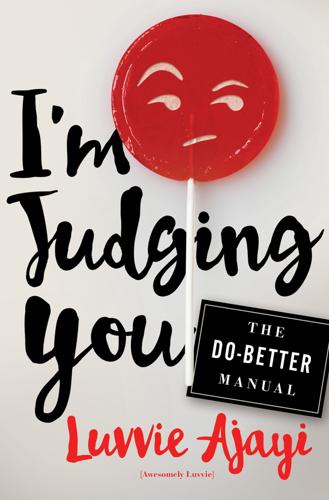
I'm Judging You: The Do-Better Manual
by
Luvvie Ajayi
Published 12 Sep 2016
We get to paint our lives and curate them for those who meet us in our digital spaces, and it is up to us to decide how much of the total experience of our days we pass on for public consumption. Some of us share everything. Every single thing. We wake up and share a pic of the sun coming up outside our window. We take a shower and we post a mirror selfie. We tweet that we just took an amazing dump. We Snapchat ourselves putting on clothes; the actual process of putting legs in pants is now post-worthy. We are Generation Overshare, hear us roar and then post a Facebook status about it. I know what you did last summer. And last night. And two minutes ago. I know how you felt through all of it. I know when you’re heartbroken (see chapter 15), and I probably found out three minutes after it happened.
…
At this point, you can chart their day: if you wanted to rob them, you’d know they’re out the house and in their car and at the Starbucks drive-thru they love so much at precisely 8:43 a.m. Sometimes, they’ll even make your burglary research easier by geotagging their morning mirror selfie so you can also pinpoint their house. They share anything and everything, and none of it is interesting. “I just ate.” CONGRATULATIONS! No one cares! They happen to be obsessed with Snapchat now, too, so if you don’t see them tweet, it’s because they’re in their car posting video of them at a red light. You want to tell them that their life bores you to tears and you wish they’d stop. But then you realize that they make you feel like the Most Interesting Person in the World. Unfortunately, most oversharers are this person, so when you go to their account on Twitter and see that they’ve accumulated six hundred thousand tweets in two years, it’s because they are constantly posting trite rubbish.

Company of One: Why Staying Small Is the Next Big Thing for Business
by
Paul Jarvis
Published 1 Jan 2019
Especially in a company of one, where you aren’t the largest player in your niche and probably not the cheapest, using your quirks and standing for something can be exactly how and why you gain customers’ attention. A personality is required for your company of one, regardless of size. Your human characteristics are the way your brand speaks and behaves. For example, Harley-Davidson is a brand that connotes rebelliousness, while Snapchat is associated with being young and fresh (although calling it “young and fresh” probably means that I’m neither). If you don’t think about the personality of your business, your audience will assign one to you—because people relate to other people, and your audience wants to relate to your brand when they see it.
…
See adaptability Ressler, Cali, 15 retention, customer, 61–63, 106, 185, 190–94 retention, of employees, 6–7 ReWork (Fried), 90 Riley, Pat, 33 risk, 37–40, 221 ROWEs (Results-Only Work Environments), 15, 18 Rubel, Steve, 96–97 Ruby on Rails, 54–55 runway buffer, 211–12 S SaaS, 110, 131 salary, 125, 165, 208, 210–11 SalesForce Pardot, 115 Sandberg, Sheryl, 47 Satornino, Cinthia, 189 savings, 211–12 scalability, 124–34 collaboration, 132–34 communication, 126, 129–31 examples of, 124–27 product development, 127–29 Scarcity (Mullainathan and Shafir), 91 Schachter, Joshua, 20 scheduling, 89–92 scope of influence, 70–73 Sears, 177 self-awareness, 57 selling, 180 Semco Partners, 27 Semler, Ricardo, 27, 219 servant leadership, 48 service, 48, 105–7, 108–11 Seventh Generation, 78–79 Shafir, Eldar, 91 Sharp, 46 Sheldon, Jeff, 115–16, 154, 163–64, 169–70 “shinise”, 216–17 Shopify, 124, 158 Silver, Spencer, 8 simplicity, 20–23, 167–69 single-tasking, 88 Sivers, Derek, 100, 172–73 skills, 51–54 autonomy, 14–18 generalists, 17–18, 200–202 growth, 33 passion, 82, 86 success, 83 slow fashion, 128 small, as goal, 24–44 better vs. bigger, 24–30 career advancement, 70–73 envy, 42–44 growth drawbacks, 30–34 meaningful growth, 60–64 minimum viable profit, 164–66 profit vs. growth, 68–70 risk and, 37–40 vs. traditional approach, 34–40 upper bounds, 40–42 when starting a business, 64–68, 163–74 SmallBizTrends, on referrals, 109 Snapchat, 95 So Good They Can’t Ignore You (Newport), 82 social capital, 187–90 social media brand reputation, 192 mistakes and, 120 personality, 97–99 relationships, 115–16, 188, 189 scalability, 126 viral content, 159–60 social views on business growth, 4–5, 24–25 on leaders, 45–49 on work, 34–40 Socrates, 42 Sorenson, Olav, 171 Southwest Airlines, 40–42 spamvite, 183, 184 specialization, vs. generalist, 51–54 speed, 18–19 Staples, 181 Starbucks, 31–32 starting a business.

Reinventing Capitalism in the Age of Big Data
by
Viktor Mayer-Schönberger
and
Thomas Ramge
Published 27 Feb 2018
There’s a robust debate among lawyers and economists as to the extent that innovation offsets the network effect. Some point to the persistence of dominating platforms, such as Microsoft Windows for PC operating systems and Facebook for social media. Others highlight the fact that Facebook unseated the previous incumbent, MySpace, and is now being threatened by Snapchat, a clever start-up based on the innovative idea of vanishing messages. They also point to the rise of Linux against Windows and the fact that PC operating systems are less important today, as computing is often done on mobile devices and tablets (areas in which Microsoft does not enjoy a dominating market share).
…
See automation/machine learning Mainichi Shimbun, 109 Malone, Thomas, 7 MAN, 182 market failure, reducing, 6 markets, 35–57 Amazon as, 87–88 chaotic, unplanned nature of, 160 choice limitations in, 13–14 communicative coordination and, 26–28, 30–33 comparison of firms and, 28, 111 competition between firms and, 30, 107 concentrated, 161–169, 171, 217 data-rich (see data-rich markets) decentralization in (see decentralization) feedback effects and, 160–175 fintechs and, 153 historical improvements in, 51–52 irrational decision-making in, 42–44 key difference between firms and, 32–33, 90 limitations of, 63 network effects and, 162–166 for noneconomic activities, 49–50 physical design of, 160–161 prediction, 50–51 resilience of, 39 scale effects and, 162–166 shift from firms to, 10–11, 30–32, 125–126 success of, 4, 49–50, 222 thick, 2, 82–83, 164, 213 Martin, Walt, 181–182 Marx, Karl, 143, 162 Mason, Vicki, 42 Massachusetts Institute of Technology (MIT), 7, 142, 159, 184, 195, 220 matching, 8–9, 11, 64, 66, 71–85, 212 algorithms for (see algorithms) centralized, 74 complexity of task, 43–44 in conventional vs. data-rich markets, 70–71 decentralized, 74, 127 fintechs and, 151–152 firms and, 127–129 nonmarket providers of, 75–76 variety of contexts for, 74–75 Max Planck Institute for Human Development, 105 McAfee, Andrew, 184 McDonald’s, 215 McGovern, George, 190 McNamara, Robert, 99–100 Medici, Cosimo de’ the Elder, 92, 93 Medici family, 91, 93 Mercedes-Benz, 110 Merrill, Douglas, 151 Merrill Lynch, 155 metadata, 66 Micro Ventures, 152–153 Microsoft, 165, 166, 169 Microsoft Imagine Cup, 75 Minyons club, 17–20 mobile phones iPhone, 136, 164 Kerala fishermen and, 36–37 payment business and, 147 Model T Ford, 29, 98, 162 money, 4, 45–57, 63, 64, 143–144, 212 advantages of using, 45–49 banks’ decreased use of, 136–137 data as a substitute for, 148–149 future role of, 5, 149 historical forms of currency, 47–48 importance of linked to utility, 45 informational function of, 48–49 intrinsic value not required for, 48 market efficiency improved by, 47–49 move from physical to virtual, 48 role of capital affected by demise of, 141 signaling with, 142 work unbundled from, 203–206, 218 See also capital; price monopolies, 30, 203 moon landing, 22, 159 Mosaic, 189 motorcycle manufacturing, 30–32, 33 Musk, Elon, 78, 189 My Years with General Motors (Sloan), 99 MySpace, 166 NASDAQ Composite Index, 196 National Aeronautics and Space Administration (NASA), 22 national champions, 30 National Oceanic and Atmospheric Administration, 133 negative income tax, 190 Netflix, 74, 75, 161, 196, 209 Netherlands, 191 network effects, 162–166 New York Central Railroad, 96 New York Times, 88–89, 208–209 Nixon, Richard, 190 Nobel Prize winners, 39, 74, 190 nominal tax rate, 198 Nordstrom, 211 Northwestern University, 83, 194 oligopolies, 30 Omidyar, Pierre, 1 ontology, 67–70, 81, 84, 136 defined, 67 firms and, 128 labor market and, 204 Organization for Economic Cooperation and Development (OECD) countries, 28 organized labor, 205 Orwell, George, 179 Otto, 181–183 Paine, Thomas, 190 Parthenon Group, 207 participatory policy measures, 186, 188–189, 190, 193, 200–202 patent system, 199 payment solutions businesses, 146–147, 149 PayPal, 135–136, 146, 189 Pearson, 69 Peep Trade, 76, 152 peer-to-peer lending, 152–153 Pentland, Sandy, 142 Peruzzi family, 91 Piketty, Thomas, 186 Pinterest, 210 poker, 59–62 populism, 13, 186 post-price retailers, 209 prediction markets, 50–51 preferences complexity of processing, 43–44 fintech extraction of, 151–152 improved means of capturing, 8, 64, 71–72, 76–81 standard language for comparing, 64 See also matching price, 7, 45–57 data-rich markets’ advantages over, 70–71, 72, 136–137 deemphasis on, 3, 122, 129, 136–137, 138, 212 detailed information lacking in, 4, 52–56 future role of, 5 information condensed by, 4, 46–47, 48–49, 63, 65 internal talent management and, 128 markets and, 36 volatility of, 36 PriceBlink, 52 PriceGrabber, 52 PriOS, 115 privacy issues, 145, 174 Procter & Gamble, 128 profits, 195–197 progressive consumption tax (PCT), 198 progressive data-sharing mandate, 12, 171, 199, 203 choice expanded by, 217 explained, 167–169 Prüfer, Jens, 167 punch-card tabulator, 96 Qin, Emperor, 24 Rack Habit, 207–208 Rawls, John, 223 regulatory measures for banks and financial institutions, 139–140 for feedback problems, 171–175 research and development, 196 resource scarcity, overcoming, 220–221 retail sector, 138, 207–212 retirement savings, 143–144, 195 returns on investments, 195 Robinhood Markets, 146 robo tax, 186–187 Rognlie, Matthew, 194 Ron, Lior, 182–183 Roth, Alvin, 74 Ryanair, 112 Saberr, 75 salary bands, 128, 129 salt (as currency), 47 Samsung, 196 Sandholm, Tuomas, 60, 62 SAP, 100 scale effects, 162–166 Scania, 182 Schottmüller, Christoph, 167 Schumpeter, Joseph, 120 scientific management, 96 Second Payment Service Directive (European Union), 140 Seedcamp, 75 self-employment, 185–186 Shapley, Lloyd, 74 Shepherd, Alistair, 75 shipping industry, 213 SigFig, 3, 151–152, 153, 156 silver standard, 48 Simon, Herbert, 104 Simon, Julian, 220 Siri, 79, 164 Six Sigma, 112 Sloan, Alfred P., 98–99, 101 Sloan School of Business, 220 Smith, Adam, 27, 143, 223 Snapchat, 166 Social Security, 192 SoFi, 150, 151 Soll, Jacob, 91 Solomon, Madi, 69–70 SOP. See standard operating procedure South Korea, 196 Soviet Union, 177 Spotify, 74, 75, 121–125, 196, 215 squadification, 123–125 St. Peter’s Basilica, 21 Stalin, Joseph, 177 standard operating procedure (SOP), 100–101, 106 start-ups, 141, 146, 199 increased capital available for, 142–143 network effects and, 165–166 See also fintechs Stash, 151, 215 steam engine, 111, 113 steel industry, 161 Stitch Fix, 208–212, 215 stock markets, 146 decreased investment options in, 143 share prices in, 2–3, 6, 196 Stripe and Square, 147 Stucke, Maurice, 166 subprime mortgage crisis, 6, 41, 55–56, 134, 155, 173 Suez Canal, 21 superstar firms, 195–197 Suzuki, 30 Switzerland, 136 Synco.
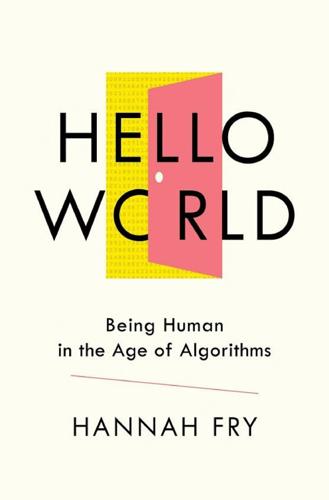
Hello World: Being Human in the Age of Algorithms
by
Hannah Fry
Published 17 Sep 2018
Terence Carney, ‘Regulation 28: report to prevent future deaths’, coroner’s report on the case of Tamara Mills, 29 Oct. 2015, https://www.judiciary.gov.uk/publications/tamara-mills/. 45. Jamie Grierson and Alex Hern, ‘Doctors using Snapchat to send patient scans to each other, panel finds’, Guardian, 5 July 2017, https://www.theguardian.com/technology/2017/jul/05/doctors-using-snapchat-to-send-patient-scans-to-each-other-panel-finds. 46. Even if you get around all of those issues, sometimes the data itself just doesn’t exist. There are thousands of rare diseases with an underlying genetic cause that are effectively unique.

Your Life in My Hands: A Junior Doctor's Story
by
Rachel Clarke
Published 14 Sep 2017
CHAPTER 2 DEEDS U ntil the summer of 2015, I was the kind of social media ingénue who befriended only actual friends on Facebook, followed approximately three people on Twitter, regarded what teenagers got up to on Snapchat as apocalyptically terrifying (would my children really be sexting within the decade?) and certainly didn’t know what a ‘meme’ was. Whenever a photo of a cute cat appeared on my Facebook timeline, inexplicably ‘liked’ by 2.3 million people, my overwhelming emotion was exasperation. As for WhatsApp, that sounded sinister – a bit too much like Snapchat for my taste. But, the weekend immediately after Jeremy Hunt’s opening salvo against doctors, even a crusty old Luddite like me would feel energised by the power of social media.
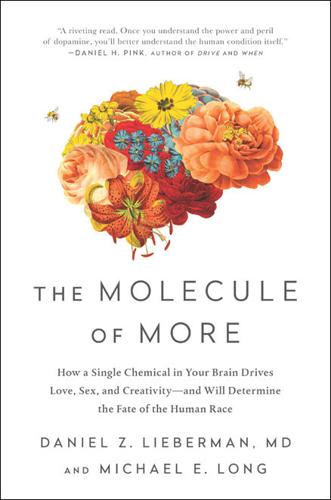
The Molecule of More: How a Single Chemical in Your Brain Drives Love, Sex, and Creativityand Will Det Ermine the Fate of the Human Race
by
Daniel Z. Lieberman
and
Michael E. Long
Published 13 Aug 2018
The United States continues to attract immigrants from all over the world, and the immigrant population continues to include a high proportion of extraordinary individuals. Some of the most important companies of the new economy were founded by immigrants, including Google, Intel, PayPal, eBay, and Snapchat. As of 2005, 52 percent of Silicon Valley start-ups had been founded by immigrant entrepreneurs, a remarkable figure in light of the fact that immigrants make up only 13 percent of the U.S. population. The country that provides America with the greatest number of technology entrepreneurs is India.
…
See also pornography and companionate love, 18, 158 daydreaming during, 21 and dopamine, 20–21 hypersexuality, 48–50 marriage, waiting for, 22 sexual attraction and testosterone, 19–20 sexual desire, 19–22 stages of, 20 sex addiction, 37, 51–53. See also pornography Sexton, Anne, 139 Silicon Valley, 148–149, 196 Sinatra, Frank, 190 Skinner, B. F., 12–13 slot machines, 12–13, 53–54. See also gambling smoking (nicotine addiction), 46–47, 51–52, 105 Snapchat, 196 Socrates, 136 Sophocles, 84 Spears, Britney, 190 sports, 73–74, 84, 86, 88, 221 Stevenson, Robert Louis, 133 stimulus-independent thought, 219 Stipe, Michael, 133 The Strange Case of Dr. Jekyll and Mr. Hyde (Stevenson), 133 stress and addictive behaviors, 39 and adult coloring books, 221 and change, 186–187.

The One Device: The Secret History of the iPhone
by
Brian Merchant
Published 19 Jun 2017
“It got a lot of rave reviews, but where it became a cultural game-changer was after they allowed developers in. Letting them build their software. That’s what it is, right? How often do you use your phone as an actual phone? Most of the time, you’re sitting in line at the grocery store Tweeting about who-gives-a-fuck. You don’t use it as a phone.” No, we use the apps. We use Facebook, Instagram, Snapchat, Twitter. We use Maps. We text, but often on nonnative apps like Messenger, WeChat, and WhatsApp too. In fact, of the use cases that Apple imagined for the product—phone, iPod, internet communicator—only one truly made the iPhone transformative. “That’s how Steve Jobs used his product,” says Horace Dediu, the Apple analyst.
…
“Of course, now, everyone’s writing fart apps, but he was the original,” Grignon says. “Apple had minted this new economy. And the early gold diggers won big.” This new economy, now colloquially known as the app economy, has evolved into a multibillion-dollar market segment dominated by nouveau-riche Silicon Valley companies like Uber, Facebook, Snapchat, and Airbnb. The App Store is a vast universe, housing hopeful start-ups, time-wasting games, media platforms, spam clones, old businesses, art projects, and experiments with new interfaces. But, given the extent to which the iPhone has entered the app into the global vernacular, I thought it was worth taking stock of what, at its core, an app actually is, and what this celebrated new market segment represents.
…
In 2016, one report estimated that the app economy was worth $51 billion and that it would double by 2020. In early 2017, Apple announced it had paid out $20 billion to developers in 2016 and that January 1 was the single biggest day in App Store sales in the company’s history; people downloaded $240 million worth of apps. Snapchat, a video-messaging app, is valued at $16 billion. Airbnb is worth $25 billion. Instagram, which was acquired by Facebook for $1 billion five years ago, is allegedly worth $35 billion now. And the biggest app-based company of all, Uber, is currently valued at $62.5 billion. “The app industry is now bigger than Hollywood,” Dediu tells me, “but nobody really talks about it.”

The Patient Will See You Now: The Future of Medicine Is in Your Hands
by
Eric Topol
Published 6 Jan 2015
In the United States, over 80 percent use a smartphone or tablet to access these social media.23 For every minute on the Internet, there are over two million Facebook likes, over seventy hours of YouTube video uploaded, three hundred thousand tweets, two hundred thousand Instagram and one hundred thousand Snapchat photos shared, and tens of thousands of interactions on LinkedIn, Pinterest, tumblr, flickr, and countless other social media networks.3 While not all of this connectivity is occurring via smartphones and tablets, it is quickly and asymptotically approaching that endpoint. But connecting people can also create wars and revolutions.
…
You can try to buy some privacy with such tools as the Blackphone, an Android smartphone costing $628,16 which has specialized software for users to make encrypted calls and send encrypted texts, the OFF Pocket cellphone case that for $85 blocks the signal from the phone to avoid location detection.17 The Snapchat app promises the automatic deletion of data, removing texts, photos, and videos from the recipient’s device and the company’s servers one to ten seconds after the data has been reviewed. (There are also Secret, Confide, Younity, Gliph, and Wickr “ephemeral” apps.)18 Efforts to limit data collection on a national scale have had little effect.
…
patient access to test results, 108 patient-generated data, 135–136 prescription medication adherence, 132–134 price comparator apps, 154 printing press and, 41(fig.), 46(fig.) privacy and security concerns, 228–230 real-time test results, 121 social networking, 42–44 Smeeth, Liam, 227 Smith, Adam, 42 Snapchat, 221 Snowden, Edward, 219, 225 Snyder, Michael, 88 Social graph of the individual, 81–83 Social media clinical trials through, 212–214 data collection through, 220–221, 223 global spread increasing global autonomy, 47–48 identifying genetic commonalities in disease, 9 importance of online health communities, 10–12 machine learning, 245 managed competition, 51 open-source software, 197 predictive analysis at the individual level, 243–245 social graphs, 82–83 Social networks, 42–44 Soon-Shion, Patrick, 203–204 Spatiotemporal applications, 79–80 Spinal fusion, 214–215 Splinter, Mike, 175 Spontaneous coronary artery dissection (SCAD), 211–212 The Sports Gene (Epstein), 94 Sports injuries, 94–95 Stanford University, 112 Star Trek (television program), 286 Statins, 31–33 Stephens, Richard, 226–227 Stethoscope, 96, 119–120, 175–176, 253–256, 276, 289 Stone, Neil, 33 Sudden infant death syndrome (SIDS), 92, 103 Supreme Court, US, 74–76 Surgery Center of Oklahoma, 152–153 Surveillance, 219–224 Take Care clinics, 163 Target, 224, 239 Targeted marketing, 221–225, 243 Tay-Sachs disease, 89 TechFreedom, 69 Technion Institute, Haifa, Israel, 110 Technology adoption, 7(fig.)

Twitter and Tear Gas: The Power and Fragility of Networked Protest
by
Zeynep Tufekci
Published 14 May 2017
It is a television, a phone, a notebook, and performs other actions for which we have no historical analogs. The programs that run on it make an additional range of connections possible. Facebook pages allow people to post messages, refer back to them in time, and share them across a wide network, unlike Snapchat, for example, which, in its current iteration, makes messages unavailable after the intended recipient has seen them. In 2011, the first year of the Arab uprisings that are sometimes called the Arab Spring, there were many articles in the Western press about the upheaval. But, as a group, reporters overwhelmingly focused on the technology.
…
In a smaller community, pseudonymity might not have such negative effects; indeed, in the early days of Twitter, even with a user base in the millions, it was largely composed of early adopters whose more uniform cultural preferences dominated practices on the platform. Harassment and abusive behavior that now has many users dispirited was not as dominant a complaint as it is now with a much larger and more diverse user base. Persistence and reputation are often intertwined as well. Behavior on Snapchat, which eschews showing metrics to users and discourages persistence, differs from that on Twitter or Facebook. Some online communities not only are distant from offline identities but also have little or no persistence or reputational impact. It is as if people are talking to each other while walking by without a promise that they will encounter each other again—and without any way to verify that the person they are talking to is the same person as before.
…
See also names and identities Reddit: “Ask Me Anything” sessions on, 165 child pornographers and pedophiles using, 164–69 Creepshots subreddit on, 165, 168 internal norms of communities on, 164–65, 166, 167–69 Jailbait subreddit on, 165–69, 178 karma reputation system on, 165, 166, 169, 171 pseudonym use on, 164–69, 170, 171 Reddit Gold symbol, 165 report and takedown policing model for, 165 refugee deaths, credibility denials of, 247–49 RenRen, 232 reputation: anonymous social interaction without accrual of, 175 journalism accuracy and, 43 online development of, 164–65, 166, 167, 168–69, 170–72, 175 Reddit’s karma representing, 165, 166, 169, 171 Russia: communication restrictions in, 117 government countermeasures and censorship in, 179, 238–39, 244 platforms and algorithms in, 134 “troll army” in, 238–39 Rustin, Bayard, 66–68 Said, Khaled and Said murder protests, 22–23, 139–42 Sanders, Bernie, campaign of, 81, 216, 275 Seattle WTO protests, 86, 213 self-expression, culture of protest supporting, 88–90, 111 Sen, Amartya, 191, 296n7 September 11th terrorist attacks, 104, 213 Sidi Bouzid protests, 14–15 signals. See capacity signaling “slacktivism,” 16–17 “smart mobs,” 60 smartphones. See cell phones Snapchat, 118, 172 soccer fans: censorship during media broadcast to, 225 as Gezi Park protesters, 107–8 social media, networked protests using. See networked protests; specific platforms social movements: antiauthoritarian movements as, 13, 38, 81, 83–112, 198, 209–16, 217, 221–22, 269–70, 274–75, 276 antiwar movement as, 100–101, 123, 189, 190, 204, 205, 221 Black Lives Matter movement as, 154–56, 177–78, 197, 205–9, 275, 298nn23–24 civil rights movement as, 61–70, 81–82, 94, 96–99, 134, 140, 193, 197 networked protests of (see networked protests); Occupy movement as, 38, 81, 83, 86, 87, 91, 93, 95–100, 209–16, 217, 221–22, 275, 276 street protests of (see street protests); Tea Party movement as, 11–12, 216–18 women’s movement as, 193–94 social-technological interactions, 115–31 affordances in, 118, 124–26, 128–29 anticensorship objectives in, 129 at Arab Bloggers Conference, 115–16 architecture of connectivity in, 129–31 cause and effect dynamics in, 119–24 consequences of, 123, 124–26, 130 context influencing, 116–17, 118 ecological effects of, 117–18 innovation in, 129 mass media technology focus with, 118–19 social construction of technology, 126–29 technodeterminism and, 119 technology as tool in, 119, 124–25 Spain: capacity signaling in, 196, 210, 275–77 Indignados protests in, 87, 93, 99, 210, 275, 276 political party formation in, 81, 196, 275–77 spammers, reporting activists as, 144 “special masks,” 171 Stop Online Piracy Act and Protect Intellectual Property Act (SOPA/PIPA), 219–20 “stranger on a train” effect, 172 street protests: capacity signaling of, 203 civil rights movement protests as, 61–70, 81–82, 94, 96–99 Gafsa protests as, 14 Gezi Park protests as (see Gezi Park protests); Occupy protests as (see Occupy movement); Sidi Bouzid protests as, 14–15 social-technological interactions via, 131 Tahrir Square protests as (see Tahrir Square protests); Tahrir Supplies supporting, 38, 53–60 Tea Party protests as, 11–12, 216–18 weather impacting, 11–12 Streisand Effect, 228, 241, 273 surveillance, 251–54 “swatting,” 180 Sweden, NATO membership disinformation about, 239 Syria: “Amina” hoax in, 183–85 networked journalism in, 42 tactical freezes, 71, 75, 77–82, 215, 270 Tahrir Square protests: backfire of censorship during, 226–28 capacity signaling via, 197, 202–3, 210 culture of protest in, 83, 84, 85–86, 93, 99, 102, 105 governmental countermeasures during, 226–28, 231 networked public sphere affecting, 8–10, 23–24 organizational structure of, 77–78, 79–80, 83 platforms and algorithms influencing participation in, 133–34 “Republic of Tahrir,” 84, 112 Tahrir Supplies: organizational coordination and communication of, 53–60 speed of expansion of, 38, 53 taxation: as government countermeasure, 33 Tea Party protests on, 11–12, 216–17 Tea Party movement, 11–12, 216–18 technodeterminism, 119 technologies.

The Lonely Century: How Isolation Imperils Our Future
by
Noreena Hertz
Published 13 May 2020
Crucially in these, the participants weren’t simply asked to report their social media habits; instead they were directed by the researchers to actively change them. This meant that the effects of those changes on their behaviour and mood could be directly observed and compared, and causality could be established.72 The results were enlightening. One of the studies found that limiting Snapchat and Instagram along with Facebook to ten minutes per platform per day produced a significant reduction in loneliness.73 The other, a gold standard of a study of nearly 3,000 people in which over a two-month period half of the participants used Facebook as normal and the other half – the ‘Treatment’ group – fully deactivated their Facebook accounts, found that the group that had deactivated Facebook didn’t simply use the time they would have spent on that platform on other websites.
…
One parent told me of the pain he felt watching his daughter manically ‘liking’ every post of every person on her feed to try and ensure a reciprocal response when she posted herself. Peter, a four-foot-nothing bespectacled Year 9 student from London, described to me the ‘agony’ he felt ‘posting, waiting, and hoping and no one replying and then asking myself again and again why am I not liked? What am I doing wrong?’ And Jamie told me of how the thought of any of her Snapchat streaks ending sent her into a panic. ‘It makes me feel physically sick,’ she explained. It’s not that being popular wasn’t always important to the young. Indeed, it’s the theme at the heart of most high-school dramas. What is different is, once again, the powerful and inescapable impact that social media has brought to these dynamics.
…
11 Add to these festivals like Vienna’s Donauinselfest, Brazil’s Rock in Rio or Rabat’s Mawazine, each of which in 2019 attracted more than 700,000 visitors, and it’s clear just how strong the appetite for shared live experiences has become.12 Even as life was being designed to be ever more contactless and technology was enabling us to substitute ‘real’ relationships for those with YouTubers, TikTokers and Alexas, and even as we were being urged to ‘join the conversation’ via Twitter, or ‘share a moment’ on Snapchat and migrate more and more of our conversations online, in those millions of festival-goers we saw evidence of something else. A burgeoning counter-movement of people for whom virtual interactions weren’t enough, and who, in response to their growing feelings of disconnection and atomisation, were actively breaking out of their own digital bubbles and seeking out community in analogue, face-to-face forms.
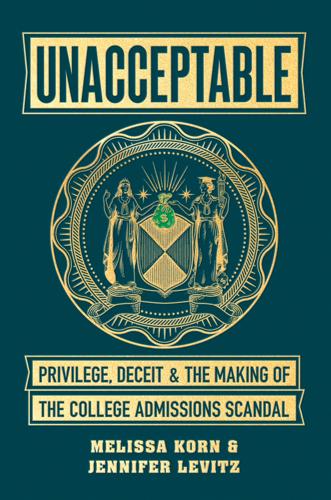
Unacceptable: Privilege, Deceit & the Making of the College Admissions Scandal
by
Melissa Korn
and
Jennifer Levitz
Published 20 Jul 2020
While still in high school, she had a personal trainer whose other clients included Courtney Cox, Julianne Moore, and David Duchovny. She made no secret of her distaste for academic life. She hated physics and bemoaned homework. “My favorite subject is free period because I don’t have to do anything,” she said at one point. Another time she was asked via Snapchat how she balanced high school with her YouTube channel. “Psh, you don’t,” Bella interjects, chuckling, as the pair sit on an overstuffed gray love seat. “You’ve just got to learn to just put YouTube before school because school is so not important,” Olivia says, her eye twinkling as Bella gets more agitated.
…
All the while, Singer and his team churned out those donation receipts confirming “no goods or services were exchanged” for the money. 15 THE TARGET WHEN THE OTHER MOM at Jack Buckingham’s soccer game in 2016 mentioned college counselors, Jane Buckingham swung into action. She got Singer’s contact information, and then a second reference from another friend. She called both Singer and the other recommended expert, a hot L.A. counselor named Danny Ruderman, known for steering the eventual founder of Snapchat into Stanford. Ruderman was very busy and required clients to come to his office for sessions. Singer had an opening, and he made house calls. She chose Singer. Buckingham was at a turning point in her life. Her husband, Marcus, moved out in early 2016, a month before their twentieth anniversary.
…
she had a personal trainer: February 6, 2018, tweet by @oliviajadee, https://twitter.com/oliviajadee/status/961077315424808960?lang=en, and testimonials on MichelleLovitt.com http://www.michellelovitt.com/testimonials/. She hated physics: Comments about Olivia Giannulli’s academic interests come from YouTube videos, including “Get to Know Me Tag,” December 24, 2016, and “Snapchat Q&A w Bella,” January 3, 2016, https://www.youtube.com/watch?v=O5lbyUoGErQ. Singer asked Janke to craft: July 14, 2017, email from Rick Singer to Laura Janke, in affidavit. He emailed Giannulli and Loughlin: July 16, 2017, email from Rick Singer to Mossimo Giannulli and Lori Loughlin, in ibid.
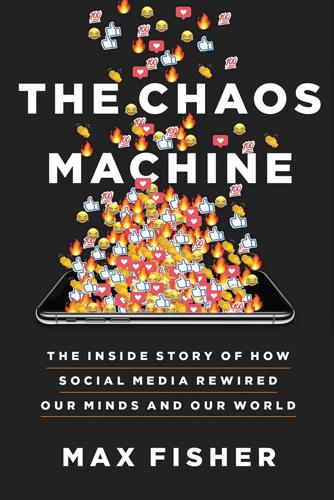
The Chaos Machine: The Inside Story of How Social Media Rewired Our Minds and Our World
by
Max Fisher
Published 5 Sep 2022
“The vigilante-justice aspect of it helped define what 4chan is for me.” He started spending hours a day on 4chan, whose unusual features had made it wildly popular with early internet adopters. Anytime a user wanted to start a new thread, they had to upload an image, which kept the platform filled with user-made memes and cartoons. Long before Snapchat and others borrowed the feature, discussions automatically deleted after a brief period, which enabled unseemly behavior that might’ve been shunned elsewhere. So did the site’s anonymity; nearly all posts are marked as written by “Anonymous,” which instills an anything-goes culture and a sense of collective identity that can be alluring, especially to people who crave a sense of belonging.
…
But by spending aggressively now, the companies could preemptively dominate a poor country’s media and internet markets, where they would face few competitors. They could tell investors that revenue was primed to explode in ten or twenty years, as consumers there entered the middle class. Facebook, WhatsApp, Twitter, Snapchat, and others launched zero-rated services in dozens of countries, from Colombia to Kenya, where they had no footprint and little familiarity, reasoning they would learn as they went. They might contract a few local English teachers to translate essentials like the “Add friend” button. They would outsource the rest to—what else?
…
Griffiths, Addictive Behaviors 64, January 2017. 16 “Online political hostility is committed”: “The Psychology of Online Political Hostility: A Comprehensive, Cross-National Test of the Mismatch Hypothesis,” Alexander Bor and Michael Bang Peterson, American Political Science Review, 2021. 17 Neurological experiments confirmed: “Snapchat vs. Facebook: Differences in Problematic Use, Behavior Change Attempts, and Trait Social Reward Preferences,” Dar Meshi, Ofir Turel, and Dan Henley, Addictive Behaviors Report 12, December 2020. 18 She was right, an outside: “The Efficacy of Reddit’s 2015 Ban Examined Through Hate Speech,” Eshwar Chandrasekharan et al., Proceedings of the ACM on Human-Computer Interaction 1, November 2017. 19 exploring how social norms influence: For an accessible overview of Paluck’s work, see “Romeo & Juliet in Rwanda: How a Soap Opera Sought to Change a Nation,” NPR, Hidden Brain, July 13, 2020. 20 Schoolkids bully or don’t: “Changing Climates of Conflict: A Social Network Experiment in 56 Schools,” Elizabeth Levy Paluck, Hana Shepher, and Peter M.
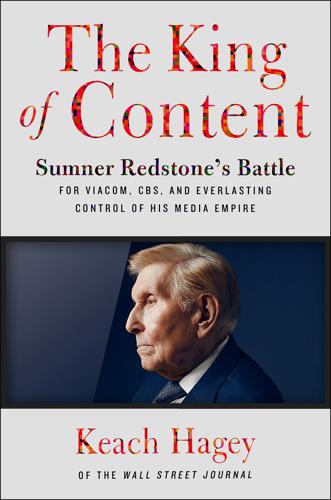
The King of Content: Sumner Redstone's Battle for Viacom, CBS, and Everlasting Control of His Media Empire
by
Keach Hagey
Published 25 Jun 2018
Subscription video services like Netflix, which allow people to avoid both advertising and expensive cable TV bills—the dual lifebloods of the cable television business that makes up the bulk of Viacom’s profits—were by this point in nearly half of American homes. The young audiences that had long been Viacom’s target viewers now watched video on Snapchat or YouTube instead of traditional TV, and they signed up for cable in ever-smaller numbers. Meanwhile, the industry was still having a hard time measuring the TV viewing that happens on iPhones and Roku boxes, which meant that Viacom had a hard time getting paid for its offerings. But many media investors, analysts, and executives placed much of the blame for Viacom’s woes squarely at the feet of Dauman, a mergers and acquisitions lawyer who grabbed on to Redstone’s coattails in 1986 at the age of thirty-two and never let go.
…
When an analyst asked what qualities the board had seen in him and his performance to merit his new role, Dauman replied that the stock drop was accentuated by “a lot of noise that’s surrounding us,” adding, “I think it’s obvious to everybody what the noise is.” If Dauman was going to survive, he would need to do something big, and fast. In the last year, he had made several smart deals, including the purchase of the British broadcaster Channel 5, which immediately bolstered Viacom’s international division’s results, and a forward-looking deal with Snapchat to sell advertising against the vanishing-messages app company’s owned and operated content. But none of these could offset the effects of the huge ratings declines and distribution woes that the core cable channels were still suffering. For years, many on Wall Street had grumbled that Viacom ought to get rid of Paramount, which was financially hardly worth the headache it took to run.
…
Warren firm, 139 Shady Records, 222 Shapiro, Robert, 252, 257 Shari Trust, 81 Sharon Memorial Park, 243 Shaver, Buster, 30 Shearman & Sterling, 118, 137–38 Sheppard Mullin law firm, 253 Sheraton Boston fire, 100 Shields, Brooke, 202–3 Shortwave (film), 272 Showcase Cinemas, 5, 91 Showcase Live, 222 Showtime, 5, 70, 118, 129, 131, 153, 161–62, 190–91, 221, 271, 276, 292–93 Showtime/The Movie Channel, 113–14 Shub, Mark, 105–6 Siegel, Bugsy, 61 Siegel, Herbert, 89, 136 Simon & Schuster, 5, 136, 150–51, 160, 163, 186, 190 Simpson, O.J., 252 Simpsons, The (TV show), 141, 142 Sinatra, Frank, 45, 228 Singh, Rohini, 221 Sitrick, Mike, 253 Six Million Dollar Man, The (TV show), 185 Skoog, Ralph, 85–87 Sloan, David, 285 Smith, Andy, 65 Smith, Chris, 226 Smith, Phil (formerly Adolph Sandberg), 62, 68–69 Smith, Richard, 51, 68–69 Smith, Shane, 225 Smith Management, 69 Snapchat, 269 Snyder, Gary (grandson of Ethel Redstone), 19, 55, 73, 82, 273 Snyder, Richard, 160 Society Girl Corset Company, 54 Solomon, Charles “King,” 20, 24, 31, 39 SonicNet, 192 Sonnenfeld, Jeffrey, 283 Sony Corp., 134, 137 Sony Entertainment, 287 Sopranos, The (TV show), 197 Soren, Tabitha, 133 South Park (TV show), 8, 14, 207, 224 Space Invaders (video game), 181 Spar, Dr.
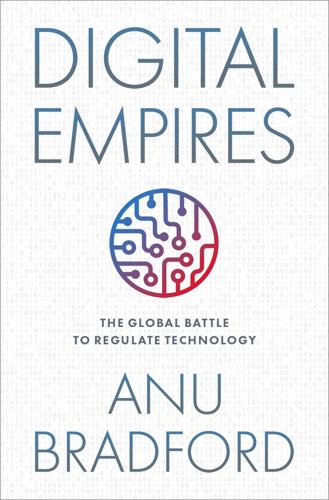
Digital Empires: The Global Battle to Regulate Technology
by
Anu Bradford
Published 25 Sep 2023
The burden of this history continues to define the European regulatory approach today, heightening its sense of a “duty of remembrance, vigilance and combat” against racist and xenophobic speech.55 Today, the rise of populist parties with anti-migrant views is contributing to an increase of incidents of hate speech within the EU, particularly on social media, strengthening the EU’s resolve to tackle this challenge with regulation.56 Until recently, the EU has relied on voluntary regulation of online hate speech. In 2016, the European Commission signed a nonbinding Code of Conduct on Countering Illegal Hate Speech Online (Hate Speech Code) with four US technology companies: Facebook, Twitter, YouTube, and Microsoft.57 Additional companies have joined since, including Instagram and Snapchat in 2018 and TikTok in 2020.58 These signatories agree to “prohibit the promotion of incitement to violence and hateful conduct on their platforms,” and commit to reviewing any request to remove such content from their platform within 24 hours. Despite its voluntary nature, the Hate Speech Code has had a notable impact.
…
While Facebook’s complicity in the genocide in Myanmar is a particularly abhorrent example, instances of US social media companies hosting messages of hatred and disinformation blanket the global internet. In one such example, the unbridled spread of false stories in social media led to mass violence in Europe in 2019, amplifying anti-gypsy tropes and claiming that the Roma people were snatching children in France.139 These rumors spread quickly on Snapchat, Twitter, and Facebook, and escalated into mob violence—an angry group of 50–70 people attacked two Roma groups in the suburbs of Paris.140 The European Parliament’s Special Committee found that the Roma people have been a target of multiple disinformation campaigns in Europe, and that online platforms led to the escalation of rumors and to the 2019 mob attack.141 Another prominent fake news story was peddled by a Facebook group called Anonymous.Kollektiv in 2016, falsely claiming that a thirteen-year old Russian-German girl was raped by refugees in Germany.142 Strategically, the story was timed to spread soon after former Chancellor Angela Merkel’s controversial decision to admit one million refugees into Germany, undermining the already challenging policy task of integrating refugees into German society.143 “The Facebook Papers”—referring to a set of documents disclosed by Frances Haugen, a former Facebook employee and a whistleblower, in 2021—further revealed a large cache of hate speech on the company’s platforms.144 One startling example comes from India, which is Facebook’s largest market, with 417 million users by the end of 2021.
…
It prohibits content, such as romance scams, where victims are tricked into sending money or personal information to a fraudster after being made to believe that they are engaged in a relationship through an online dating service. The bill further prohibits fraud, such as user-generated fake investment opportunities posted by users on Facebook groups or sent via Snapchat.125 The OSB envisions heavy penalties, including imprisonment for tech executives under limited conditions, in addition to the more traditional remedies such as fines or blocking access to the site containing banned content.126 The UK’s regulatory approach thus contributes to a growing trend in many parts of the world to move away from the US-style market-driven regulatory model toward the EU-inspired rights-driven regulatory model in regulating content moderation.
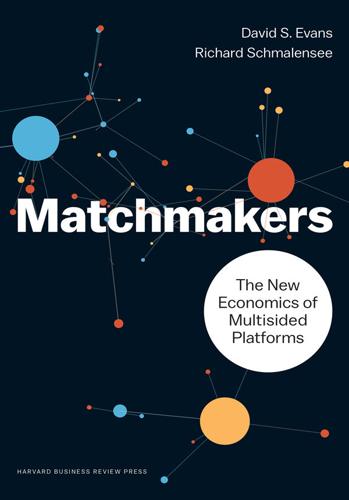
Matchmakers: The New Economics of Multisided Platforms
by
David S. Evans
and
Richard Schmalensee
Published 23 May 2016
CB Insights, “The Unicorn List: Current Private Companies Valued at $1 Billion and Above,” https://www.cbinsights.com/research-unicorn-companies. The following ten companies were the largest in order of valuation; companies in [brackets] are not multisided platforms. Uber, [Xiaomi], Airbnb, [Palantir Technologies], Snapchat, Flipkart, Didi Kuaidi, [SpaceX], Pinterest, and Dropbox. 6. The company was initially called easyeats.com but changed its name early on. 7. The company also signed up restaurants in Chicago at first. 8. Unless otherwise noted, all monetary values we report are not adjusted for inflation. 9.
…
According to Bloomberg, market capitalization for Apple and Google was $665 billion and $527 billion, respectively, as of November 20, 2015. See Ibid. for the rankings as of March 2015. 4. As of November 25, 2015. CBInsight, “The Unicorn List: Current Private Companies Valued at $1B and Above,” https://www.cbinsights.com/research-unicorn-companies. 5. Ibid. These include Uber, Airbnb, Snapchat, Flipkart, Didi Kuaidi, Pinterest and Dropbox. 6. For an interesting history of much of this digital revolution, see Walter Isaacson, The Innovators: How a Group of Hackers, Geniuses, and Geeks Created the Digital Revolution (New York: Simon and Schuster, 2014). 7. The iPhone 6 has a speed of 1.4 GHz, compared to 4.77 MHz for the 1981 IBM PC.

Exponential Organizations: Why New Organizations Are Ten Times Better, Faster, and Cheaper Than Yours (And What to Do About It)
by
Salim Ismail
and
Yuri van Geest
Published 17 Oct 2014
In 1995, 710 million rolls of film were developed at thousands of processing centers. By 2005, nearly 200 billion digital photographs, equaling about eight billion rolls, had been taken and edited, stored and displayed in ways that were unimaginable just a few years before. Today, web users upload almost one billion photographs per day to sites like Snapchat, Facebook and Instagram. As we saw in Chapter One, the shift from analog to digital is occurring in multiple core technologies that feature multiplier effects at their intersections. This process of “virtualizing” one industry after another is not just advancing exponentially, but at multiples of even that as data about the many different components of a single item or process is systematically analyzed and automated by software (data analytics).
…
Throughout every industry, the democratization of accelerating technologies is allowing hundreds of startups to attack and disrupt traditional markets: Bitcoin, Uber, Twitch, Tesla, Hired, Clinkle, Modern Meadow, Beyond Verbal, Vayable, GitHub, WhatsApp, Oculus Rift, Hampton Creek, Airbnb, Matternet, Snapchat, Jaunt VR, Homejoy, Waze, Quirky, Tongal, BuzzFeed—the list of disruptors is virtually endless. And while of course many newcomers won’t succeed, their sheer number means that plenty will be around long enough to create a revolution. Large companies must identify and track disruptive ExOs with the aim of observing, partnering with, investing in and/or acquiring them.
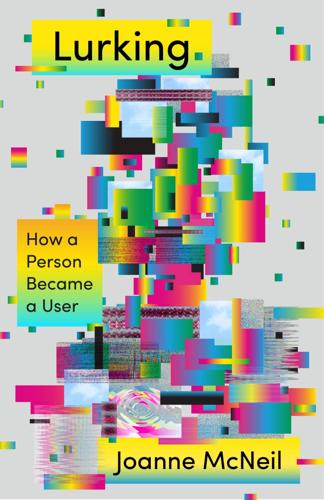
Lurking: How a Person Became a User
by
Joanne McNeil
Published 25 Feb 2020
I’m a sci-fi fanatic Mild asthmatic Never been to second base But there’s a whole ’nother me That you need to see Go check out Myspace Backup singers, including the then unknown Taylor Swift, chimed in at the chorus, “I’m cooler online.” Ten years later, Paisley updated these themes with “Selfie (#Theinternetisforever).” “You oughta be ashamed of your selfie,” he sings in the newer song, with lyrics considering the public images of internet users, and how picture-sharing apps like Instagram and Snapchat distort user identities and expectations of one another: Posing in the bathroom mirror in a skimpy little two-piece In the background there’s a toddler cryin’ on the toilet seat According to Paisley, internet users were reclusive losers, and later, irresponsible narcissists. What happened in between?
…
A few of them rented apartments at a luxe complex in Los Angeles, 1600 Vine, at the corner of Sunset and Vine. It was a Hollywood dream that ended as Hollywood dreams almost always will. Most influencers frighten me, those Ariana Grande clones with skin shellacked and Photoshopped to smooth marble, morphing under flower-crown and puppy-face Snapchat filters, who traipse through social content theme parks like the Museum of Ice Cream. (Although, who am I to judge? Myself, the idiot who once tried to channel Logan Tom in Friendster avatars.) And I worry about them. Micro-fame has a momentary shelf life in contrast with the structure, protection, and filthy lucre of traditional celebrity.

The Authoritarian Moment: How the Left Weaponized America's Institutions Against Dissent
by
Ben Shapiro
Published 26 Jul 2021
The same media that declaim their hatred for misinformation and bullying engage in them regularly when it comes to mobbing random citizens with the help of social media. In December 2020, a recent high school graduate, Mimi Groves, found herself the subject of an interminable hit piece from The New York Times. Groves had, back in 2016, just received her learner’s permit to drive. She took a video of herself on Snapchat, jocularly exclaiming, “I can drive, n***ah.” As the Times reported, the video “later circulated among some students at Heritage High School,” but it didn’t raise any hackles—after all, she was a fifteen-year-old girl mimicking the tropes of rap. But one student—an utterly despicable douche bag named Jimmy Galligan—held on to the video.
…
That time came in 2020, by which time Groves was a senior, headed to the University of Tennessee, Knoxville, to be part of the cheer team. During the Black Lives Matter protests, Groves made the critical error of supporting BLM; she posted to Instagram urging comrades to “protest, donate, sign a petition, rally, do something.” And so Galligan struck. He posted the old video to Snapchat, TikTok, and Twitter. Groves was booted from the University of Tennessee cheer team, then withdrew from UT altogether thanks to the social media frenzy. An admissions officer said that the university had received “hundreds of emails and phone calls from outraged alumni, students and the public.” The Times reported this story, not as a horrific attempt by a vicious grandstander to destroy a girl’s life, but as a referendum on the “power of social media to hold people of all ages accountable.”
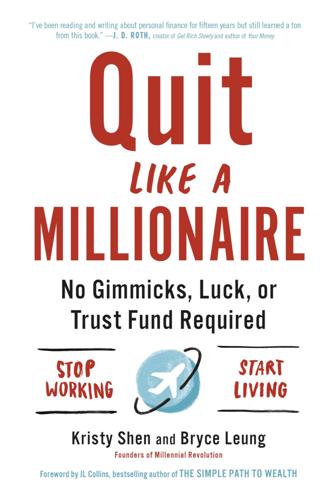
Quit Like a Millionaire: No Gimmicks, Luck, or Trust Fund Required
by
Kristy Shen
and
Bryce Leung
Published 8 Jul 2019
Getting rich isn’t fast or easy. Anyone who tells you otherwise had advantages or is trying to trick you into giving them money. I’m not here to trick you. I don’t need your money. I’m already a millionaire, remember? In fact, this book almost didn’t exist at all. Since I didn’t buy Apple stock at $10, invent the next Snapchat, or do anything all that exceptional by the time I was thirty, I thought my story wasn’t that interesting. If I showed you my university transcript, you’d see I’m not even that smart. Why would anyone care? It took an editor from Penguin Random House, Nina Shield, to convince me that my story is worth telling.
…
I guess here is where we say good-bye, for now at least. My journey from poverty to millionaire wasn’t straightforward or easy, but it’s reproducible, and that’s what matters. You can do what I did, you can accomplish what I accomplished, and all you have to do is copy my moves. I didn’t create the next Snapchat; I didn’t bet on Amazon when it was $10. All I did was work hard and never take a dollar for granted, and I turned our above-average-but-not-unreasonably-so salary into a million dollars and retired at thirty-one. If you understand money, life is incredibly easy. If you don’t understand money, life is incredibly hard.
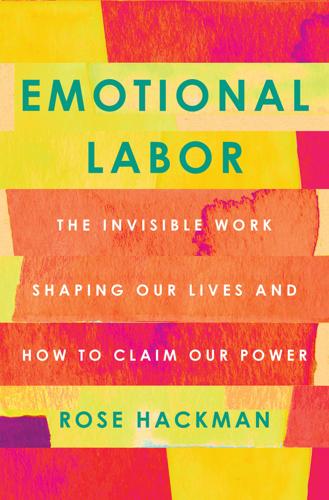
Emotional Labor: The Invisible Work Shaping Our Lives and How to Claim Our Power
by
Rose Hackman
Published 27 Mar 2023
Invited into an all-male marketing meeting with her team and some higher-ups geared at tactics for “reaching millennials,” which was then the largest young generation over eighteen, she remembers listening dumbfounded as the men in the room proposed a strategy centering the use of print magazines for advertising. There was no mention of social media venues like Instagram, Snapchat, or Facebook, let alone any inquiring as to the degree young people actually read physical magazines. It was instantly clear to her that this would not work. Her insight crystallized even further when meeting attendees proposed—to widespread approval—a “sticker” idea, which would involve free stickers in these print magazines that could be peeled out and stuck on objects or cars.
…
Instead, our online avatars continue to be subjected to the same exploitative dynamics. But watching the same old dynamics unfold online makes it easier to observe what, and who, is actually creating value. Yeoshin Lourdes, one of the #GiveYourMoneyToWomen cocreators, explained it as follows: Mainstream social media platforms like Facebook, Twitter, Snapchat, Instagram, and others capitalize on female participation. On Facebook, people who click on profiles are mostly men, and people whose profiles are clicked on are mostly women. So my having a personal account on Facebook makes me a product for Facebook to sell to men. And now that site is worth $250 billion.
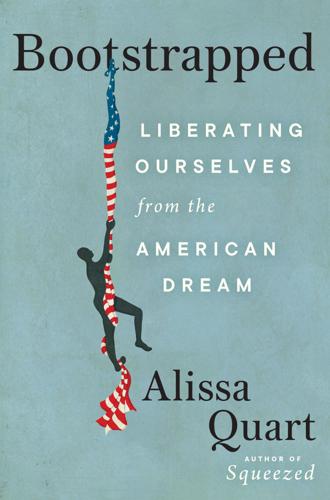
Bootstrapped: Liberating Ourselves From the American Dream
by
Alissa Quart
Published 14 Mar 2023
Her effect could be said to be Alger 2.0, and as with Alger, her favored vehicle for transmitting this American archetype was pulp fiction. Her contemporary followers are legion and include the King-of-the-NASDAQ-by-way-of-Burning Man Travis Kalanick, cofounder of Uber, who had the cover of a Rand book as his Twitter avatar, as well as the founder of Snapchat, Evan Spiegel, and Twitter’s Jack Dorsey. Lisa Duggan, in her account of Rand entitled Mean Girl, writes that the most “influential figure in the industry, after all, isn’t Steve Jobs or Sheryl Sandberg, but rather Ayn Rand.” Apple’s cofounder Steve Wozniak even called Rand’s Atlas Shrugged one of Jobs’s “guides in life.”
…
See mutual aid shame, viii, 9, 22, 26, 107, 111, 143, 196, 209 Shenker-Osario, Anat, 4 Sherman, Rachel, 155–56 side hustle, ix, 130, 137–50, 254n Side Hustle Nation, 142 Silicon Valley, 7, 13, 46, 137, 254n Simard, Susan, 219 Simmons, Carolyn H., 66, 244n Sinema, Kyrsten, 134 SIYLI (Search Inside Yourself Leadership Institute), 92 “Slumlord Saturdays,” 224 Smedley, Agnes, 30–31 Smith, Robert, 161 Smith, Zadie, 206 Smithfield Foods, 189, 258n Snapchat, 46 Social Darwinism, 173–74, 177 social mobility, 15, 43, 62, 160, 242n social safety net, dystopian, ix, 105–7, 110–13, 115, 225, 251n in volunteerism, 206–7, 210–15 social safety nets, government supported, 210, 242n Social Security, 47–48, 105, 108–9, 130–32, 222, 254n socialism, 27, 78, 238n Solidaire, 155, 162 solidarity, xii, 10, 21, 31, 99, 182, 189–90, 231, 239n “Solidarity Not Charity,” 171 See also interdependence; mutual aid Solomon, Robert, 109 SoulCycle, 142 South Minneapolis Mutual Aid Autonomous Zone Coordination, 166 Spiegel, Evan, 46 Squarespace, 142 status quo, 12, 93, 129 Stiglitz, Joseph, 5 stigmatization, 9, 15, 67, 111, 124, 237n Stimulus Bill, 60, 132–33 Stranger Than Paradise (film), 20 strapped, for resources, 5, 8, 155–56, 192, 197 in Adverse Childhood experiences (ACE), 258n in low-income families, 113, 124–26 stress, xi, 5, 86–88, 94–97, 193, 198–99, 207 in childcare, 118–21 as financial anxiety, ix, 125–26, 153–54, 207, 218, 224 student debt, ix, 7, 11, 104, 154, 163, 246n, 251n, 255n Su, Celina, 213–14, 259n Subsidy Tracker, 60, 243n success, 3–9, 27, 33–35, 44, 57, 74–76, 242n girlbosses and, 60–63, 127–29 as mutualism, 179–80, 186–88, 193, 217–18, 222–23 in Trumpism, 80–83, 159, 243n victim blaming and, 95–97, 123, 157 Supplemental Nutrition Assistance Program (SNAP), 23, 78, 108–9, 114–15, 224 Tan, Chade-Meng, 92 Tavris, Carol, 30, 200, 239n tax credit, 11, 132–34, 197, 219–20, 254n taxes, xi, 10, 104, 146 on excess profit, 159, 220, 255n Participatory Budgeting (PB) and, 210–15 as wealth tax, xi, 54–56, 158, 160–61, 163, 237n Temporary Assistance for Needy Families, 125 Tenant Bill of Rights (Kansas City), 224 Tesla, 59–60, 66, 243n Thatcher, Margaret, 71 Thoreau, Henry, 13–24 Tisch, Steve, 161 Tony the Tramp (Alger), 40 The Tragedy of American Compassion, 125 transcendentalism, 13, 15–17, 20, 87, 237n, 248n trauma therapy, 191–203, 259n Adverse Childhood Experiences in, 191–95, 258n Treasury Department, 54 trickle-down economics, 62–63, 68, 231 triumphalism, xi, 5, 35, 50, 223, 226 Trump, Donald, 7, 13, 36, 243n January 6 riot and, 246n Social Security and, 54, 69, 109, 159–60 Trump: The Art of the Deal, 40 voter supporters of, 71–84, 129, 133, 245–46n Trump, Fred, 40, 75, 249n Trump: The Art of the Deal (Schwarz), 40 Tversky, Amos, 79 Twitter, 46, 112, 171 Uber, 46, 144–46, 149, 181–82 Uber Eats, 138–39 Ukeles, Mierle Laderman, 124–25, 254n Ultra-Millionaire Tax Act, 158 Uneasy Street (Sherman), 155–56 unemployment, 10, 109, 113, 120, 187, 252n unemployment insurance, 132–33, 139, 143, 146 unions, 78–80, 93, 140, 175, 181, 245–46n Amazonians United, 149 credit unions, 186 Uber, 146, 149 Union Cab Collective, 258n United Food and Commercial Workers Union (Chicago), 254n United Steelworkers (USW), 78 United for a Fair Economy, 57 universal health care, 112 upper class, 57, 175, 192 US Federation of Worker Cooperatives, 180 values, xii, 12, 26, 47, 68, 128, 143, 253n victim blaming, 42, 57, 65–66, 77, 83, 96, 203, 244n in Adverse Childhood Experiences (ACE), 191–95, 202–3, 258n See also “grit” vulnerable groups, 218, 247n caregivers, 117–23, 127, 130–33, 176–77 disability in, 32, 104–7, 139–40 elderly, xi, 10, 123, 129, 137, 168–69, 229 enslaved people, 19, 33, 83–84, 124, 185–86, 237n homeless people, vii, 43, 105, 109, 214, 224, 241n, 251n immigrants, vii, 138, 182, 189, 239n Indigenous people, 19, 25–26, 29–33, 171–72, 239n the “indigent,” vii, x, 39, 166, 192, 219, 253n invisible labor, ix, 10, 77, 201, 205–6, 218, 247n mothers and children, 8, 23–24, 118–26, 128–33, 213, 253n students, ix, 7, 11, 104, 154, 163, 246n, 251n, 255n unemployed people, 10, 109, 113, 120, 187, 252n Walden Pond, 13–24 #WalkAway, 83 Walmart, 53, 61, 105, 147 Wanek, Ronald G., 44 Warehouse Workers for Justice, 162 Warnock, Raphael, 10 Warren, Elizabeth, 158, 255n We Drive Progress, 149 wealth tax, xi, 54–56, 69, 76, 156–58, 160–63, 237n wealth transfer, 239n, 254n Weeks, Kathi, 130 welfare moms, 19, 236n welfare programs, 11, 194, 222–23, 242n charity Band-Aids and, 110–11 COVID-19 and, 114–15 government policy and, 7, 48, 125–26 See also social safety net Wellspring Cooperative Corporation, 181 What Tech Calls Thinking (Daub), 46 Whelan, Melanie, 142 white male privilege, 27, 30–33, 55, 68–69, 80, 124, 129, 187, 247n Whole Foods, 46, 241n Wilder, Laura Ingalls, 26–37, 48, 218, 240n Williams, Raymond, 147–48 Wilson, Chip, 47 worker cooperatives, 179–90, 257–58n Drivers Cooperative (NY), 181–82, 258n federal grants and, 184 US Federation of Worker Cooperatives, 180 Wellspring Cooperative Corporation, 181 worker exploitation, 31, 93, 181, 253n working class, 31, 77, 95, 142, 192, 200, 224, 236n families, 132–34, 194–97 Working Man’s Advocate, 5, 235n Works Progress Administration, 28 Wozniak, Steve, 46 Your American Dream Score, 261n Zeisler, Andi, 62 Zoom, 86, 106, 123, 182, 202, 229 Zuckerberg, Mark, 57, 59 OceanofPDF.com About the Author ALISSA QUART is the author of four previous books of nonfiction, including Squeezed: Why Our Families Can’t Afford America and Branded: The Buying and Selling of Teenagers, and two books of poetry, most recently Thoughts and Prayers.
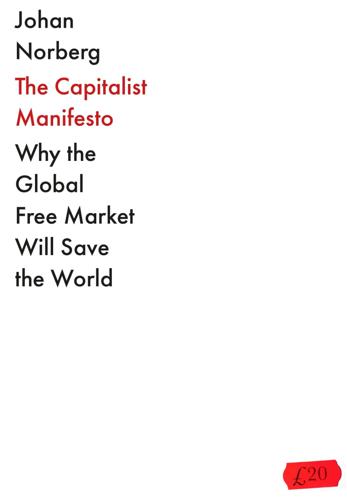
The Capitalist Manifesto
by
Johan Norberg
Published 14 Jun 2023
In the last five years, the leading company’s market share has actually decreased in online ads, cloud services, app stores, business software and ride hailing. In terms of video streaming and food delivery, the leading company has lost more than a quarter of the market.34 This is partly because of relative newcomers. During the pandemic, we were all on Zoom rather than established companies’ video services. Snapchat and TikTok suddenly made the old social media look rheumatic. Despite it being said that no new arrivals can upset reinforced incumbents, TikTok reached one billion users in just four years – half the time it took Facebook to do the same. Salesforce is becoming increasingly aggressive in cloud services, and in five years Canada’s Shopify has gone from one-seventieth of US e-commerce to one-tenth.
…
J., 141 Obama, Barack, 147, 152, 165 Oculus, 177 OECD (Organisation for Economic Co-operation and Development), 147, 249–50 Open (Norberg), 297 Our World in Data, 18, 250, 268, 270 Oxfam, 4, 43, 133–4 ozone layer, 236 Pakistan, 219 Palm, 174 Paraguay, 239 Paris, France, 66–7 Paris Climate Agreement, 233 Parks, Rosa, 62–3 Paulsen, Roland, 98 PayPal, 178 Peru, 29–30 Pfizer, 177 Philippines, 248 Piketty, Thomas, 127–31 Pinochet, Augusto, 29, 46 ‘planned obsolescence’, 156–60 Poland, 26 populism, 47–8 pornography, 188–9 Portugal, 26–7, 254 poverty, 12, 17–25, 20, 29–33, 53–4, 110, 291–2 in China, 213, 214 climate change and, 235–6, 245 inequality and, 133–7 Prasad, Chandra Bhan, 64 prices, 67–9 price regulation, 68 profit, 74, 122–4 profit-hunger, 273–5 property rights, 70–72 protectionism, 3, 5, 11–12, 78–9, 115, 117–18 Putin, Vladimir, 5, 39 Quaero, 191–2 Quarterly Journal of Economics, 117 Quartz, Steven, 287 Questioning the Entrepreneurial State, 198 racial segregation, 62–3 racism, 62–3, 111 Radelet, Steven, 24 RAND Corporation, 184, 186 Rao, Madhusudan, 63 Reagan, Ronald, 8–10 Rehbinder, Caspian, 269–70 religion, 26–7 Republican Party (US), 8–9 Ridley, Matt, 188 Ritchie, Hannah, 250, 270 Romer, Paul, 241 Romney, Mitt, 165 Roser, Max, 18 Rosling, Hans, 18 Rossi-Hansberg, Esteban, 148–9 Rousseau, Jean-Jacques, 279, 284 Rubio, Marco, 181 Rü ck, Christian, 272 Russia, 39, 138 see also Soviet Union Rwanda, 35 Samuelson, Paul, 5 Sanders, Bernie, 43, 122 Sandström, Christian, 183, 240 Scandinavia, 22, 36, 281 Schröer, Gerhard, 191 Schumpeter, Joseph, 89 Segerfeldt, Fredrik, 137 Shah, Parth, 25 Shambaugh, David, 215 Shanghai, China, 209 Shelby, Richard, 202–3 Shopify, 178 Silicon Valley, 141 Singapore, 23, 84 Singh, Manmohan, 25 Sixdegrees, 170 slavery, 31, 73, 75 Smith, Adam, 213, 264 smoking, 137 Snapchat, 178 Soave, Robby, 171 social class, 137 middle class erosion, 93–5, 95 working class, 7 social media, 155, 163, 165–9 social mobility, 90–91 social networks, 169–71 socialism, 11, 44, 75, 120–21, 145 three steps of socialism, 44–5 Swiss bank socialism, 33 Socrates, 65 Son of a Servant, The (Strindberg), 120–21 Sony, 151 South Africa, 45–6, 72, 267 South Korea, 23–5, 84, 225 Soviet Union, 26, 215, 219, 241–2 see also Russia Sowell, Thomas, 62 space programme, 181–3, 191, 201–2 moon landing, 181–3, 191, 201–2 Space Launch System (SLS), 202 SpaceX, 202 Spain, 26, 27, 97 Spanish flu pandemic, 1918, 77 Starbucks, 75–6, 148 Stephens-Davidowitz, Seth, 155 Strain, Michael, 94 Strindberg, August, 120 subsidies, 139–40 suicide, 271 sulphur dioxide, 236 supply and demand, 67–9 supply chains see global supply chains Svensson, Mattias, 256 Sweden, 49–51, 54–5, 66, 75–8, 91, 240, 244–5, 251, 266, 268–9, 271, 285 Swedish Energy Agency, 194 Swiss bank socialism, 33 Switzerland, 285 Taiwan, 23–5, 205, 207, 225, 267 Taliban, 160–61 Tanzania, 239 Target, 178 taxation, 56, 259 tax deductions, 141, 148 Taylor, Robert, 184–6 tech companies, 162–79 competition, 178–80 data, 175–6 GAFAM (Google, Amazon, Facebook, Apple, Microsoft), 169–80 regulations, 164, 174–5 Tech Panic (Soave), 171 Technology Pork Barrel, The (Cohen and Noll), 190 technology, 40–41 Thanks a Thousand (Jacobs), 60 Thatcher, Margaret, 8–11, 116 Theranos, 153 Thoreau, Henry David, 82 Thunberg, Greta, 230, 232 TikTok, 178 Times, The, 116 traditions, 26–7 Trotsky, Leon, 73 Trump, Donald, 6, 8, 48, 83, 107, 140, 165, 217 Truss, Liz, 9, 11, 56, 117 trust, 153–6 Turkmenistan, 225 Twitter, 166–7 Uber, 102 Uganda, 35 Ukraine, 5, 215 United Kingdom, 10, 22–3, 38, 49, 97, 101, 268–9, 283 Brexit, 116–17 United Nations Food and Agriculture Organization (FAO), 233, 239 United States, 22, 55, 62–3, 80, 85, 97, 110–11, 239, 267–8, 282 China and, 205, 211, 221 crony capitalism, 139–40 ‘deaths of despair’, 7, 108–10, 136, 271, 293 Defense Communication Agency, 187 Jim Crow laws, 63 labour market, 85, 87–93, 101, 104–11 political polarization, 167 productivity growth, 148–9, 152–3 welfare state, 111–14 US–China Business Council, 210 Vance, J.

Secrets of the Sprakkar
by
Eliza Reid
Published 15 Jul 2021
After a national men’s soccer match between Iceland and England, two young players from the latter team invited two similarly aged Icelandic women they had been chatting with online back to their hotel room, breaking strict COVID-19 quarantine regulations that had been imposed on the visiting squad. The women said they didn’t know about the regulations or the fame of their newfound friends. They posted a few photos on a closed Snapchat group without realizing that the images would inevitably be shared publicly because of the fame of the men, one of whom was married with a young child. The story rapidly became top news in both Iceland and in the British tabloids, which are not known for their gender-neutral coverage. The England players made public apologies, were fined for breaking quarantine, and were not allowed to take part in their next national match against Denmark.
…
The book was critically acclaimed and adapted for the stage. A short, striking section was also named “Most Curious Sex Scene” of the year, leading, Kamilla says, to numerous dubious Facebook friend requests from “old guys” and solidifying her professional reputation as a straight-talking maven of modern life for the Snapchat generation. Kamilla identified one of her favorite passages: “It was a good time to hook up with people in Kópavogur. Like the sad-eyed stock boy at the Iceland grocery store on Engihjalli Road, who was known to wipe away his tears on the inner thighs of women.”39 “At one place I went to read, the average age of the listeners was probably about ninety-six,” Kamilla recalled.
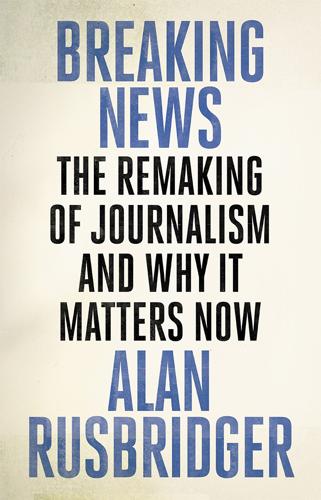
Breaking News: The Remaking of Journalism and Why It Matters Now
by
Alan Rusbridger
Published 14 Oct 2018
The eventual advent of live-streaming video from smartphones would have further consequences for live news: it would be raw, unfiltered, more immediate and more widely distributed than anything that preceded it. The revolution would be Periscoped. Or Facebooked. To begin with, reporters doubted whether the man or woman in the street would have the skills or experience to film and edit live footage. But then Snapchat and Instagram made that easy. It was eventually impossible to imagine any newsroom standing entirely apart from this parallel world. Of course, the stream of material now flooding the ether was often random, opportunistic, inaccurate and messy. But that, surely, played to the advantage of an established news organisation?
…
In the media, it produces a distorting prism, actually incentivising its recipients to operate in splendid isolationism, far removed from the real world that the great majority of readers and listeners have to live in.’ 41. In May 2017, 70 per cent of Americans were using Facebook several times a day (53 per cent) or about once a day (17 per cent). Instagram and Snapchat scored around the same as ABC News (Morning Consult National Tracking poll). 42. The scheme was welcomed by the UK Press Gazette, which nevertheless likened it to ‘using a sticking plaster to fix a severed limb’ (3 February 2017). 43. Financial Times, 11 October 2017; Tim Harford 44. ‘The False Prophecy of Hyperconnection’, Council on Foreign Relations, 9 July 2017 45.
…
Sullivan case (1964) ref1 New Yorker (magazine) ref1, ref2, ref3 Newland, Martin ref1 Newmark, Craig ref1 Newmarket Road (Cambridge) ref1, ref2, ref3 News Corporation ref1, ref2, ref3, ref4, ref5, ref6, ref7n News Digital Media ref1 News Group Newspapers (NGN) ref1, ref2, ref3 News International (NI) ref1, ref2, ref3, ref4, ref5, ref6, ref7, ref8, ref9, ref10n News Network ref1 Newsday.com ref1 Newseum (US) ref1 Newsnight (TV) ref1 Newspaper Money (Hirsch/Gordon) ref1 Newsworks’ Shift conference ref1n NHS ref1 Nielsen NetRatings ref1 1984 (Orwell) ref1 Nixon, President Richard ref1, ref2, ref3, ref4 North Africa ref1, ref2 North Briton (newspaper) ref1 North Korea ref1 Northcliffe, Lord ref1 Northcliffe Media ref1 ‘Not Invented Here’ (NIH) resentment ref1 Nottingham Evening Post (newspaper) ref1 Nougayrède, Natalie ref1 Obama, President Barack ref1, ref2, ref3, ref4, ref5, ref6 Ofcom ref1, ref2, ref3 Official Secrets Act (OSA) ref1, ref2 Official Secrets (Hooper) ref1 O’Hagan, Andrew ref1 oil companies ref1, ref2, ref3 O’Kane, Maggie ref1 Old Bailey ref1, ref2, ref3, ref4 Oliver, Craig ref1, ref2 Omidyar, Pierre ref1 On Demand ref1 ‘On Journalism’ (Scott essay) ref1, ref2n, ref3n Open Democracy ref1, ref2, ref3 Open Weekend (2012) ref1, ref2 Operation Weeting ref1 O’Reilly, Tony ref1 ‘original sin’ ref1 Orphan ref1 Orwell, George ref1, ref2, ref3, ref4, ref5 Osborne, Peter ref1, ref2, ref3, ref4 Oscars ref1 ownership model ref1 Oxford University ref1 Pacino, Al ref1 page views ref1 Panopticon ref1, ref2, ref3n Panorama (TV) ref1 Paris climate talks ref1, ref2 Parker, Andrew ref1 Paton, John ref1 Patriot Act (2001) ref1, ref2 PayPal ref1 paywalls ref1, ref2, ref3, ref4, ref5, ref6, ref7, ref8, ref9, ref10, ref11n ‘hard’ ref1, ref2 metred ref1, ref2 Peake, Maxine ref1 Pearson & Co ref1, ref2 Pemsel, David ref1, ref2, ref3, ref4, ref5n, ref6n, ref7n Pentagon ref1, ref2, ref3, ref4, ref5, ref6 People Like Us (Luyendijk) ref1 Perch, Keith ref1n Perettu, Jonah ref1 Periscope ref1 perjury ref1 Permira Advisers Ltd ref1 Peterloo Massacre ref1, ref2, ref3 Petraeus, General David ref1 Pfauth, Ernst-Jan ref1 PFE (Proudly Found Elsewhere) ref1 philanthropy ref1 Philby, Kim ref1 Piano, Renzo ref1 Pilhofer, Aron ref1, ref2n Plastic Logic ref1 Plender, John ref1 podcasts ref1, ref2n Podemos ref1 Podesta emails ref1, ref2 Poitras, Laura ref1, ref2, ref3, ref4 police ref1, ref2, ref3 passim, ref1, ref2, ref3, ref4, ref5, ref6n, ref7n, ref8n political subsidy ref1 Politico ref1 Politics.co.uk ref1 Popbitch ref1 Popplewell, Sir Oliver ref1, ref2 Porter, Henry ref1 Post Office Act (US 1792) ref1 Pound, Ezra ref1 power ref1 Prescott, John (MP) ref1 Press Acquisitions Ltd ref1 Press Association ref1, ref2 Press Complaints Commission (PCC) ref1, ref2, ref3, ref4, ref5, ref6, ref7n Press Holdings Ltd ref1 Preston, Peter ref1, ref2, ref3, ref4, ref5, ref6, ref7, ref8 price war ref1, ref2 Price Waterhouse Cooper ref1 Pride and Perjury (Aitken) ref1 The Printing Press as an Agent of Change (Eisenstein) ref1 printing presses ref1, ref2, ref3, ref4, ref5, ref6, ref7, ref8 prisons ref1, ref2, ref3, ref4, ref5, ref6, ref7, ref8, ref9, ref10, ref11, ref12 privacy ref1 Private Eye (magazine) ref1, ref2, ref3, ref4, ref5, ref6, ref7, ref8n private investigators ref1, ref2, ref3, ref4, ref5, ref6 private sector ref1 Proctor & Gamble ref1 Prodigy Internet Service ref1 Product Development Unit (PDU) ref1, ref2, ref3, ref4 Professional Footballers’ Association ref1 proportionality ref1 ProPublica ref1, ref2 Proudler, Gerald ref1, ref2, ref3, ref4 public goods ref1, ref2 public interest ref1, ref2, ref3, ref4 passim, ref1, ref2 passim, ref1 passim, ref1, ref2, ref3, ref4, ref5n, ref6n Public Library of Science (PLoS) ref1 public service ref1, ref2, ref3, ref4, ref5, ref6, ref7, ref8, ref9, ref10 passim, ref1, ref2, ref3 public space ref1, ref2, ref3, ref4 ‘publicness’ ref1 ‘purchase driver’ ref1 Putnam, Robert ref1 pyjama injunction ref1 Qantas ref1 Qatar ref1, ref2, ref3 Quatremer, Jean ref1 Qur’an ref1 R2 ref1 Raines, Howell ref1 Randall, Mike ref1 rape ref1, ref2, ref3n Rath, Matthias ref1 Ray Street offices ref1, ref2, ref3, ref4 ‘reach before revenue’ model ref1, ref2, ref3, ref4, ref5, ref6, ref7, ref8, ref9 readers ref1 American ref1, ref2, ref3, ref4, ref5 knowledge ref1, ref2, ref3, ref4, ref5, ref6 letters ref1, ref2, ref3, ref4, ref5, ref6, ref7, ref8, ref9 readers’ editor ref1, ref2, ref3n response ref1, ref2, ref3, ref4, ref5, ref6 talkboards ref1, ref2, ref3, ref4, ref5n see also circulation Reading Football Club ref1 Real Networks ref1 Reckless, Mark (MP) ref1 Reddit ref1, ref2, ref3, ref4 Redford, Robert ref1, ref2 Reds (film) ref1 Rees, Jonathan ref1, ref2, ref3 referendum (UK 2016) ref1, ref2 regulation ref1, ref2, ref3, ref4 Regulatory Funding Council ref1 Reid, Harry ref1 religious stories ref1 rendition, Gibson report on ref1 Reuters ref1, ref2, ref3, ref4, ref5n Institute for the Study of Journalism (RISJ) ref1, ref2, ref3, ref4, ref5 Richard (reporter) ref1 Rinehart, Gina ref1 riots ref1, ref2, ref3, ref4, ref5n Ritz hotel (London) ref1, ref2, ref3 Ritz hotel (Paris) ref1, ref2, ref3, ref4 rivalry ref1, ref2, ref3, ref4, ref5, ref6, ref7n Robards, Jason ref1 Roberts, Brian ref1 Roberts, Justine ref1 Robinson, Geoffrey (MP) ref1 Robinson, Stephen ref1 Rockefeller Foundation ref1 Rohm, Wendy Goldman ref1 Rolling Stones ref1 Rosen, Jay ref1, ref2, ref3 Rosenstiel, Tom ref1 Rossetto, Louis ref1 Rothermere, Lord ref1n, ref2n Rowlands, Tiny ref1 Royal Air Force (RAF) ref1 Royal Courts of Justice ref1, ref2, ref3 Rusbridger, Alan ref1, ref2n, ref3n, ref4n, ref5n Russian intelligence service ref1, ref2, ref3, ref4 Ryanair ref1 Saatchi, Maurice ref1 Sachs, Jeffrey ref1 Saffron Walden (Essex) ref1 Said Business School (Oxford) ref1 St Paul’s Cathedral ref1 Salon ref1 samizdat methods ref1 Sampson, Anthony ref1 San Jose Mercury (newspaper) ref1 Sanandaji, Tino ref1 Sandel, Michael ref1 Sanders, Bernie ref1, ref2 Sandy Hook ref1 Sandys, Duncan (MP) ref1 Sardar, Ziauddin ref1 Sark ref1, ref2 Sark Newspaper ref1 SAS ref1 Saudi Arabia ref1, ref2, ref3 Savoy Hotel (London) ref1, ref2, ref3 Savoy Taylors Guild ref1 Sawers, Sir John ref1 Schirrmacher, Franz ref1 Schmidt, Eric ref1, ref2 Schneier, Bruce ref1 Schudson, Michael ref1n science ref1, ref2, ref3, ref4, ref5, ref6, ref7, ref8n scoop ref1 Scoop (Waugh) ref1 Scotland Yard ref1, ref2, ref3, ref4, ref5, ref6, ref7 Scotsman (newspaper) ref1, ref2, ref3 Scott, C.P. ref1, ref2, ref3, ref4, ref5, ref6, ref7, ref8, ref9n, ref10n Scott, David ref1 Scott, Edward ref1 Scott, Henry E. ref1 Scott, John ref1 Scott, Richard ref1 Scott Trust ref1, ref2, ref3, ref4, ref5, ref6, ref7, ref8, ref9, ref10, ref11, ref12, ref13, ref14, ref15n Sellers, Frances Stead ref1 Selvey, Mike ref1 Senate Church committee (US) ref1 Senate Intelligence committee (US) ref1 Sensenbrenner, Jim ref1 September 11 (2001) ref1, ref2, ref3, ref4, ref5, ref6 Serious Fraud Office (SFO) ref1 Shadid, Anthony ref1 Shainin, Jonathan ref1 Shaw, Fiona ref1 Sheehan, Neil ref1 Sheen, Michael ref1 Shenker, Jack ref1 Sherwood, Charles ref1 Shirky, Clay ref1, ref2, ref3, ref4, ref5, ref6 Siegal, Allan M. ref1 Silicon Valley ref1, ref2, ref3 passim, ref1, ref2, ref3, ref4, ref5, ref6, ref7, ref8, ref9, ref10, ref11, ref12 comes to Oxford (SVCO) ref1 Simon, David ref1 Simonds, Gavin ref1 Simpson, O.J. ref1 Singer, Marc ref1 Skype ref1 Slate Group ref1 smartphones ref1, ref2 Smith, Ben ref1 Smith, Brad ref1 Smith, Julian (MP) ref1 Smith, Shane ref1 Smith, Tim (MP) ref1 Snapchat ref1 Snowden, Edward ref1, ref2, ref3, ref4 passim, ref1 passim, ref1 passim, ref1, ref2n, ref3n Snowden (film) ref1 Soho offices ref1 Sony ref1 Soros ref1 Sorrell, Martin ref1 sources ref1 South Africa ref1, ref2, ref3 South, Christopher ref1 Sparrow, Andrew ref1 Spectator (magazine) ref1, ref2, ref3, ref4 Spielberg, Steven ref1, ref2, ref3, ref4, ref5, ref6n sponsorship ref1, ref2, ref3, ref4, ref5, ref6, ref7, ref8, ref9, ref10 sport ref1 Spotify ref1, ref2 Springer, Axel ref1 The Square and the Tower (Ferguson) ref1 Stalin ref1, ref2 Standage, Tom ref1 Starr, Paul ref1, ref2 ‘Start Me Up’ (song) ref1 Start the Week (radio) ref1 State of the Union speech (Clinton) ref1 Steele, Christopher ref1 Steele, Jonathan ref1 Stephenson, Sir Paul ref1, ref2, ref3 Stewart, Mr Justice ref1 Stone, Biz ref1 Stone, Oliver ref1, ref2, ref3n Strathairn, David ref1 Streep, Meryl ref1 subscription ref1, ref2, ref3, ref4, ref5, ref6, ref7, ref8, ref9, ref10, ref11, ref12, ref13, ref14n ‘subsidariat’ ref1, ref2n Suez ref1 Sullivan, Andrew ref1, ref2n Sulston, John ref1 Sulzberger, A.G. ref1, ref2, ref3n Sulzberger, Arthur ref1n super-injunctions ref1 Supreme Court (UK) ref1 Supreme Court (US) ref1, ref2 Sweden ref1, ref2, ref3, ref4n Sweeney, John ref1 Swift, Jonathan ref1 Switzerland ref1, ref2, ref3 Sydney Morning Herald (newspaper) ref1, ref2 Sykes, Richard ref1 Syria ref1, ref2 tabloids ref1, ref2, ref3, ref4 passim, ref1, ref2, ref3, ref4, ref5, ref6, ref7, ref8, ref9n, ref10n Tahrir Square (Cairo) ref1 Taliban ref1, ref2, ref3 talkboards ref1, ref2, ref3, ref4, ref5n Tapscott, Don ref1 Task Force 373 ref1 tax ref1 avoidance ref1, ref2, ref3, ref4, ref5n havens ref1, ref2, ref3 Taylor, Gordon ref1, ref2, ref3 Taylor, John Edward ref1, ref2 Taylor, Matthew ref1 Technorati ref1 Terrorism Act (2000) (UK) ref1, ref2 terrorists ref1, ref2, ref3, ref4, ref5, ref6, ref7, ref8, ref9, ref10, ref11, ref12 counter-terrorism ref1, ref2, ref3 Terry, Quinlan ref1 Tesco ref1, ref2, ref3n, ref4n Thailand ref1, ref2, ref3n Thalidomide ref1, ref2n Thatcher, Prime Minister Margaret ref1 Thatcher, Carol ref1 Thatcher, Mark ref1 The Onion Router (TOR) ref1 Thewlis, David ref1 Thirty Club ref1 Thompson, Bill ref1 Thompson, E.P. ref1, ref2 Thompson, Robert ref1 threads ref1, ref2, ref3, ref4, ref5, ref6, ref7 ‘threat reports’ ref1 Three Little Pigs boiling the Big Bad Wolf (film) ref1 Thurlbeck, Neville ref1 Time (magazine) ref1 Times Educational Supplement (magazine) ref1 Tomasky, Michael ref1 Tomlinson, Ian ref1, ref2 Topix.net ref1 torture ref1 Tow Center for Digital Journalism ref1, ref2 toxic waste ref1 Trafigura ref1, ref2, ref3n training ref1, ref2, ref3, ref4 travel writing ref1, ref2n Travis, Alan ref1 Treanor, Jill ref1 Tribune Co (US) ref1 Trinity Mirror ref1, ref2, ref3 TripAdvisor ref1, ref2, ref3, ref4, ref5n trolls ref1, ref2, ref3, ref4, ref5, ref6, ref7 Trump, President Donald ref1, ref2, ref3, ref4, ref5, ref6, ref7, ref8, ref9, ref10, ref11, ref12, ref13, ref14, ref15 Trump Bump ref1, ref2, ref3n, ref4n trust ref1, ref2 passim, ref1, ref2, ref3, ref4 passim, ref1, ref2, ref3, ref4, ref5, ref6, ref7 passim, ref1n Trust ownership ref1 truth ref1 passim, xxiv, ref1, ref2, ref3, ref4, ref5, ref6, ref7, ref8, ref9, ref10, ref11, ref12 reverse burden of ref1, ref2n Tucker Carlson Tonight (TV) ref1 Tugendhat, Mr Justice ref1 Turkey ref1 Tweetdeck ref1 Twitter ref1, ref2, ref3, ref4, ref5, ref6, ref7, ref8 passim, ref1, ref2, ref3, ref4, ref5, ref6, ref7n Tyas, John ref1 typesetting ref1, ref2, ref3, ref4, ref5n UHNWI (ultra-high net-worth individuals) ref1 UKIP ref1, ref2, ref3, ref4n, ref5n Ukraine ref1 unions ref1, ref2, ref3, ref4, ref5, ref6, ref7, ref8, ref9, ref10, ref11 Unique Selling Point ref1 unique users ref1 United Nations (UN) ref1, ref2 University of California (Berkeley) ref1 Upworthy ref1 USA Today (magazine) ref1, ref2 Usenet ref1 Utley, T.E. ref1, ref2n van Beurden, Ben ref1 The Vanishing Newspaper (Meyer) ref1, ref2 Vanity Fair (magazine) ref1, ref2 Vaz, Keith (MP) ref1 Verizon ref1 ‘verticals’ ref1 Vice (magazine) ref1, ref2 Vickers, Paul ref1 video ref1, ref2, ref3 Vietnam War ref1 ‘viewspaper–newspaper’ ref1, ref2, ref3 Vignette ref1 Viner, Kath ref1, ref2, ref3 Vodafone ref1 Volkswagen ref1 Vyshinsky, Andrey ref1 Wadsworth, A.P. ref1 Wagner, Adam ref1 Waldman, Simon ref1, ref2, ref3, ref4n, ref5n Wales, Jimmy ref1 Walker, Christopher ref1 Wall Street ref1 Wall Street Journal (newspaper) ref1, ref2, ref3, ref4, ref5, ref6, ref7, ref8, ref9 Wallis, Neil ref1 Walter, Justin ref1 WAN-IFRA ref1 WannaCry ref1n Wapping ref1, ref2, ref3, ref4 War Office ref1 Watergate ref1, ref2, ref3, ref4 Watson, Tom (MP) ref1 Waugh, Evelyn ref1 We the Media (Gillmor) ref1, ref2 Weatherup, James ref1 Web 1.0 ref1, ref2 Web 2.0 ref1, ref2, ref3, ref4, ref5, ref6 ‘web monkeys’ ref1 Webster, Phil ref1 Weinstein, Harvey ref1 Weisberg, Jacob ref1 Wellcome Trust ref1, ref2, ref3 Wells, Holly ref1 West Africa ref1 West Coast giants see Silicon valley Westminster ref1, ref2, ref3, ref4, ref5, ref6 What the Media Are Doing to Our Politics (Lloyd) ref1 whistleblowers ref1, ref2, ref3, ref4, ref5, ref6 White House (US) ref1, ref2, ref3, ref4 White, Michael ref1 Whitehall ref1, ref2, ref3 Whittam Smith, Andreas ref1 Whittow, Hugh ref1 ‘Why I Write’ (Orwell essay) ref1 WikiLeaks ref1, ref2, ref3, ref4, ref5, ref6, ref7 Wikinomics (Tapscott) ref1 Wikipedia ref1, ref2, ref3, ref4, ref5, ref6, ref7 Wilby, Peter ref1 Wilkes, John ref1, ref2, ref3, ref4, ref5, ref6n Williams, Francis ref1 Wilton’s (restaurant) ref1 Windows 95 ref1 The Wire (TV) ref1 Wired (Anderson) ref1 Wired (magazine) ref1 Witherow, John ref1, ref2 witnesses ref1, ref2, ref3, ref4, ref5 Witty, Andrew ref1 Wolf, Armin ref1 women ref1, ref2 Wood, Graeme ref1 Woodward, Bob ref1, ref2 Workthing ref1, ref2 World Cup (football) ref1 World Economic Forum ref1 A World Without Bees (Benjamin) ref1 Worsthorne, Peregrine ref1 WPP plc ref1 Wu, Tim ref1 Yahoo ref1, ref2, ref3, ref4, ref5, ref6 Yates, John ref1, ref2, ref3 The Year the Future Began (Campbell) ref1 Yemen ref1 Yo!
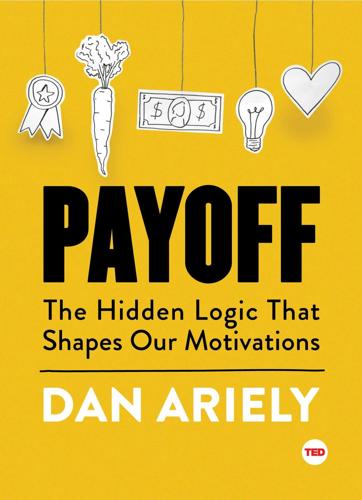
Payoff: The Hidden Logic That Shapes Our Motivations
by
Dan Ariely
Published 15 Nov 2016
We also try to encourage the people working for and with us, those who are buying from and doing business with us, and even those who regulate us. We do this in our personal lives, too: from a very young age, kids try to persuade their parents to do things for them (“Dad, I’m too scared to do this!” or “All the other kids are on Snapchat”), with varying degrees of success. As adults, we try to encourage our significant others to do things for us (“Sweetie, I had such a stressful day today, can you please put the kids to bed and do the dishes?”). We attempt to get our kids to clean up their rooms and do their homework. We try to induce our neighbors to trim their hedges or help out with a block party.

Peers Inc: How People and Platforms Are Inventing the Collaborative Economy and Reinventing Capitalism
by
Robin Chase
Published 14 May 2015
Consider that Hilton Hotels has been in the business for more than ninety-five years and has amassed only 610,000 rooms in 3,800 hotels in eighty-eight countries.1 And the French chain Accor, in third place, took forty-four years to produce its 610,000 rooms in 4,452 hotels in ninety-two countries.2 By all the existing rules of the game, attempting to rival these companies’ market shares within just a few years would be totally impossible. Yet Airbnb did it in just four years. By business standards—by any standards—this is a miracle. It is a completely new game. Nothing on earth could be further from business as usual. And this is not the virtual-assets, Snapchat type of growth. These are hard physical assets, with beds, bath towels, and soap. The figure below shows how the old-fashioned, physics-constrained, business-as-usual trajectory compares. What happened? The magic of the Peers Inc model. Airbnb’s platform unlocked excess capacity, built a compelling platform for participation, and the peers collaborated to provide the service in almost every place where people live.
…
One hundred and fifty million people in Bangladesh live less than a meter above sea level. Thirty percent of the arable land in Africa will be unsuitable for farming by 2030. Many current wars are all about resource scarcity; there will be more of them. Desperate people are not passive. Money earned from the next Snapchat, Instagram, or clever advertising mechanism won’t buy you the solace needed in this future. Go build something that makes a real difference and positively affects the lives of millions. And by ‘positively,’ I don’t mean it helps them pass the time or check up on their friend’s most recent I-consumed-this photo.
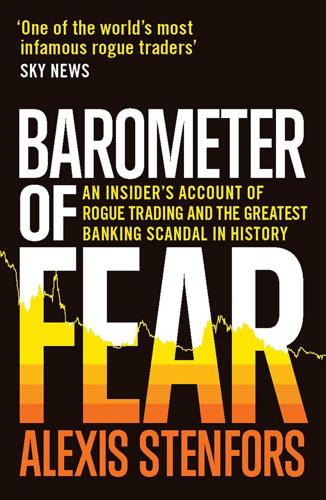
Barometer of Fear: An Insider's Account of Rogue Trading and the Greatest Banking Scandal in History
by
Alexis Stenfors
Published 14 May 2017
Numerous dealing room conventions have been banned, or have become subject to internal monitoring and oversight (such as the use of mobile phones and multi-bank electronic chatrooms), in order to limit the possibilities for improper communication between traders and their competitors, interdealer brokers and clients. However, as two Bloomberg journalists pointed out, ‘while banks can limit access to details about client orders on their computer systems, they can’t keep employees from talking to one another’.9 Communication via Snapchat, in the restroom or in the smokers’ corner is difficult to monitor. Reportedly, some banks have even gone as far as hiring experts from the military or the CIA to study the behavioural patterns of traders, and so to identify the next possible market manipulator or rogue trader.10 An underlying assumption here is that traders in these markets have often manipulated, colluded or gone rogue as a result of having the means and opportunities to do so.
…
Bernstein & Company, 10 Sanwa Bank, 34 Scandanavia: banking crisis, 31, 47; derivatives market, 27 secrets, 157, 170; bank employee clauses, 156, 158; value of, 157 self-confidence, hubristic sense of, 261 ‘self-detection’, 213 Service Employees International Union, USA, 163 SFO, 13 Sherman Anti-Trust Act, 220 short-term maturities, trading, 145 short-termism, 279 SIMEX (Singapore International Monetary Exchange), 127 Simmel, George, 157 skydivers, studies on, 268 Smith, Adam, 234 Smithfield market, London, 48 Snapchat, monitoring difficulty, 283 ‘snipers’, hardened traders, 66 Snow, Jon, 11; blog of, 247 SOAS (School of Oriental and African Studies), 6–7, 168 social norms, fear of retaliation, 231 Societé Générale, 194, 223 ‘sophisticated traders’, financial crisis impact on, 276 Soros, George, 32 South Korea, financial crisis, 36 Spandau Ballet, Gold, 188 ‘spoofing’, 204 Standard & Poor’s, 96 Standard Chartered, 223 Stenfors, Alexis: accusation distress, 245; childhood coins interest, 64–5; father of, 57–8; FCA five year ban, 244; FSA Final Notice, 249; guilt feelings, 69; media coverage distress, 11, 247; mismarking episode 280; press coverage, 242; silencing of, 12; threats against, 243 Stern, Andy, 163 STIBOR (Stockholm Interbank Offered Rate), 28, 76, 79; new unpredictability, 62 Stiglitz, Joseph, 225 STIRT (Short-term Interest Rate Trading) desk, 30, 40, 52, 140, 215 stock markets, benchmarks, 149 Stockholm School of Economics, 20 stop-loss order, 205–9; 258 Story, Louise, 9 Strange, Susan, ‘casino capitalism’, 171 Suez War outbreak of, 113 supply and demand, FX information, 207 swap desk, FX, 214 Swedbank, 23 Sweden, 32; banking crisis, 20; central bank, 116–17; fixed-income market, 22; FX market, 176, 178; T-bills, official rule book, 230 Swiss franc, 44; derivatives market, market makers cartel, 221 Swiss National Bank, 151 syndicated loans market, LIBOR prompting, 117–19 T-bills, 21, 230; pricing, 23 ‘take-profit orders’, 206–8 takers, market/price, 24 Telerate, LIBOR rate updating, 19 Term Auction Facility, Federal Reserve, 51 Thailand, financial crisis, 37 Thain, John, 164 Thatcher, Margaret, ‘Big Bang’, 115 TIBOR (Tokyo Interbank Offered Rate), 14, 76, 78–9, 127, 130; new unpredictability of, 62; yen, 81 TIBOR-LIBOR spread, 81, 127; ‘barometer of fear’ gauge, 36; Japanese Christmas party, 101 TIFFE (Tokyo International Financial Futures Exchange), 127 Tokyo-Mitsubishi Bank, 34 ‘Tomnext’, contracts, 145 tomorrow rate bets, LIBOR, 146 Totan brokerage, 101 trade tickets, 24; ‘Benchmark’ detail, 19; details on, 18 traders: biases, 203; bonds and FX, 27; bonuses, 56; brokers blackmailing, 90; constant observation of, 26; ‘feel’, 32; ‘profit centres’, 95; respect among, 267; risk takers, 257, 260; sloppy mistakes, 253; stereotypical perceptions of, 240 trades, 79; client prioritised, 19; speed of, 29 trading: books, 2; buzz addiction, 271; competitive, 267; computer speed, 273; principles erosion, 67; proprietary, 257; risk level, 62; risk taking, 280; rules social norms, 65; secrets, 167; ‘styles’, 47 transparency, LIBOR lack, 79 trimming process, 7, 79, 81–2 Tullett Prebon brokerage, 101, 175 Turner, Adair, 124 ‘two-way price’ making, 116 UBS bank, 92–3, 101, 153, 188, 192–3, 210, 213, 220–1, 223; bad apple narrative, 214, 236; FX scandal press release, 232; LIBOR scandal fine, 82; rogue trading scandal, 168 UK (United Kingdom): Consumer Price Index, 123; EU referendum pound fall, 171; Prudential Regulation Authority, 279; taxpayers RBS rescue, 83; Treasury, 222 University of Cologne, 17 University of Iowa, 237 USA: corporations innovative borrowing, 112; Reserve, 44–5, 50–1, 163, 174, 176, 225, 265; SEC, 180; sub-prime mortgage market, 49 US dollars, 44; demand for, 98; growing pool abroad, 112; LIBOR, 45 US dollar: LIBOR panel, 82; Middle East Europe placing, 113; trading in, 30 USSR (Union of Soviet Socialist Republics), Banque pour l’Europe du Nord, 113 Wall Street, 236, 250 Wall Street Journal 182 ‘wash trades’, 91–2, 94, 96 Weber, Axel, 213 Wheatley, Martin, 188 Whitehouse, Mark, 98 Wilson, Paul, 238–9 Winter War, USSR-Finland, 65 WM/Reuters 4pm fix, 208, 212, 277 World Trade Center Attacks, New York, 45, 264–6 yen, 33 ‘Your Amount’, trader call, 143–4 Zacher, Linda, 153 ABOUT THE AUTHOR Alexis Stenfors spent 15 years as a foreign exchange and interest rate derivatives trader at HSBC, Citi, Crédit Agricole and Merrill Lynch.
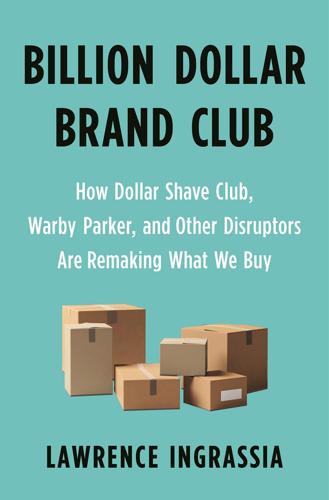
Billion Dollar Brand Club: How Dollar Shave Club, Warby Parker, and Other Disruptors Are Remaking What We Buy
by
Lawrence Ingrassia
Published 28 Jan 2020
Starting in January 2012, Pham contacted about seventy venture capital firms, and he and Dubin went to San Francisco a dozen times, often booking Airbnb rooms rather than staying in hotels, to save money. One problem they encountered: When Silicon Valley venture capital firms thought of disruption, they thought of companies like Facebook and Google, Twitter and YouTube, Instagram and Snapchat. They rarely thought of physical products such as clothing or eyeglasses or razors. Those are commodity products, often dominated by big multinational companies. “Dollar Shave Club wasn’t tech. Or wasn’t considered tech at the time, and these were tech investors,” Pham recalls. Even when they managed to schedule meetings, most of the investors they spoke with didn’t get it.
…
Scuba-Track Sealy Sears, Roebuck Sebens, David Securities and Exchange Commission Seeking Alpha Seidenfeld, Justin selfies Sequoia Capital Serta Simmons Bedding 7-Eleven Sewell, Jenny Shah, Aniket “Nick” shampoo sheets Shen, Daniel Shenzhen, China shipping free Shipt shoes Shopify Showfields showroom start-ups Shyn Siebrecht, Karl Siegel, Eric Silicon Alley silicone hydrogel Silicon Valley Sit ’n Sleep 6 River Systems 60 Minutes (TV show) “Sleeper Cell” report Sleepopolis Sleepy’s SmileDirectClub Snapchat social media SoHo district “Sold Out” message Solimo South by Southwest South Korea Spector, David Sports Illustrated Kids sportswear Stage Fund Staples Starbucks Stitch Fix Stone & Beam Strauss, Levi St.Shine Optical StubHub subscription model Sunglass Hut Sunrise Alarm Clock Sun Trust Robinson Humphrey Super Bowl supply chain Sussman, Mike Sylvia, David tail locations Taiwan tampons target audience Target stores Store of the Future Tarlow, Drew Taylor, Jim TechCrunch teeth-whitening products teledentistry Tempur-Sealy Thermador thermostats ThirdLove Thomson, James Time Titan Aeropsace Today (TV show) Tomorrow Sleep Topology Toyota Toys”R” Us transgender models Traub, Michael travel magazine Travelpro trucking TrueDepth camera Try Before Buying campaign Tucker, Colleen Tudor Investment Tuft & Needle TulaCo Tumi TurtleBot TV advertising Twitter Uber Udashkin, John Unbranded underwear unicorns Unilever University of Phoenix University of Virginia Upright Citizens Brigade UPS USA Today U.S.
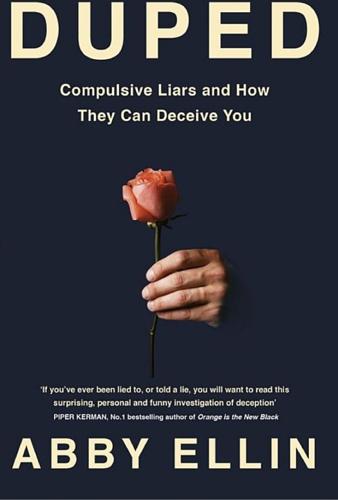
Duped: Double Lives, False Identities, and the Con Man I Almost Married
by
Abby Ellin
Published 15 Jan 2019
In interviews with nearly two hundred semiregular players, she discovered that many used the game to explore alternate versions of themselves and the lives they wished they led.50 “I think what people are doing on the Internet now… has deep psychological meaning in terms of how they’re using identities to express problems and potentially solve them in what is a relatively consequence-free zone,” Turkle told the New York Times.51 Maybe Facebook, Instagram, Twitter, and Snapchat aren’t merely a means of showing off to others. Maybe social media also allows us to create the life we long for—the one in which we have time to craft beautiful breakfasts with artisanal butter and heirloom tomatoes; engage in fun, enriching activities with our Ralph Lauren–perfect families and friends; and harbor only generosity and righteousness in our hearts.
…
“It creates an incredible level of anger and impotence if you don’t feel you are capable of confronting that lie.”56 ON THE SECOND and last day of class, I stayed behind to eat lunch with Phil. He and the Secret Service guys were having an animated discussion about the types of polygraph machines they used, tossing out fancy names that might as well have been R2D2 and C3PO. I felt like a boomer trying to understand Snapchat. During a lull in the conversation, Phil turned to me. “I’m not going to read about this class in an article, am I?” he asked. Aha! I wondered how long it would take him to broach the subject. But I was impressed with his subtlety. Not an attack. Not an accusation. The emphasis was on him. “Houston, we have no problem,” I wanted to say.
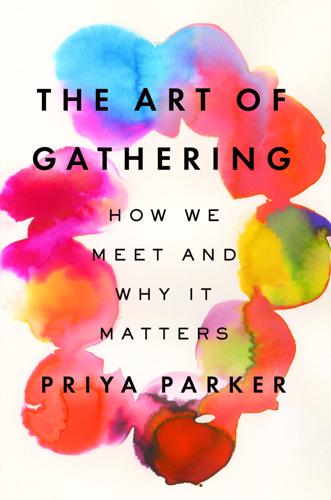
The Art of Gathering: How We Meet and Why It Matters
by
Priya Parker
Published 14 May 2018
“I Am Here” days worked because the rules created a feeling that it was “enough” simply to be there, because when you were “here,” you were in another world. We tend to associate rules with formality and stiffness, but in our “I Am Here” days we found that rules created intimacy. Each of us on his or her own was no match for the coding geniuses at Google and Facebook and Snapchat. But once presence was enshrined as a rule, a one-day-only attempt—temporary, humble, inclusive—overcame the power of the machines in our pockets and the churning of our brains. We discovered from these experiments that spending twelve hours together as a group is fundamentally different from spending four hours together on three separate occasions.
…
D., 243 Authenticity, 46, 63, 96, 193–225, 279 approaches designed for, 202–10 at family gatherings, 217–20 openings promoting, 183–85, 220–22 priming for, 151, 194–201 risk management and, 223–24 speeches expressing, 202–10 in storytelling, 210–15, 222–23 stranger quotient for unleashing, 215–17 Authority, 36, 75–109 abdication of, 36, 75–77, 106–9 commitment to, 77–81 generous, see Generous authority ungenerous, 100–109 AV equipment, xi Babson College, 159 Baby showers, 8–9, 11, 20–21 Bachelor parties, 147–49, 170 Back to the Bay, 38–40, 46 Banaras Hindu University, 219 Bangkok, 140 Ban Ki-moon, 63 Baquet, Dean, 11–14 Barrett, Daniel, 191 Barrett, Felix, 147–49, 170 Battle of the Bands, 260 BBC, 60, 216 Bedolla, Toma, 203 Belgium, 52 Benedetto, Ida, 243 Benedict College, 89 Berman, Amanda, 5–8 Biddle, Eve, 160 Birthday parties, ix, xiii, xiv, 4, 8, 17, 270 rules for, 113, 216–17 venues for, 67, 166–67 Black and White Ball (New York), 91–92 Blair, Tony, 63 Board meetings, ix, xiii, 4, 144 Bobs, 43–45 Bonding, see Connecting Bonnaroo, 53 Bono, 63 Boston, 128 Brahmins of, 118 Boulder (Colorado), 113 Box ritual, 183–85 Brainstorming, 24, 33, 67, 151, 156, 159 Brazil, 44 Brooklyn (New York), 4, 72, 161, 186 Brooklyn Brewery, 169 Brooklyn Heights Montessori School, 191 Bucharest, 122 Buddhism, xii, 251 Burma, 63 Bush, George W., 227 Butts, Calvin O., III, 134 Calabrese, Alex, 4, 6–7 Camino de Santiago (France and Spain), 57 Campbell, Robert Chodo, 251, 153 Canada, 202 Capote, Truman, 91–92 Carroll, Lewis, 165 Carter, Jimmy, 63 Catholic Church, 229 Catholic Youth Ministry Hub, 112 Cecchini, Dario, 179–80, 186, 256 Central Park (New York), 135 CEOs, 18, 36, 51, 54, 84, 89, 132, 198 Ce Soir Noir, 129 Change Agents Now (CAN), 208–10, 218 Charleston (South Carolina), 260 Château des Mesnuls, 59–61 Château Principle, 58–62 Chatham House Rule, 198 Chesterfield, Earl of, 118 China, 98 Christians, xiii, 118 evangelical, xii Christmas parties, 114, 152–53 Chumbivilcas Province (Peru), 235 Churchill, Winston, 54 Circle of Friends, 268–70 Cirque du Soleil, 152 Citigroup, 59 Cleveland Institute of Music, 46 Clinton, Bill, 260 Clinton, Hillary, 63, 260 Clooney, George, 63 Closings, 116, 173, 205–6, 221, 245–81 connecting during, 259–62 dynamics of, 267–70 last call method of, 254–56 logistics as problem in, 246–48, 270–73 priming for, 250–54, 258 purpose recalled in, 28, 275–77 reentry phase of, 262–67 of rituals, 10, 185 rules for, 127, 131, 223, 235–36 significance of, 248–50 timing of, 256–58 CNN, 85 cognitive progressing restraints, 173 Cohen, Leonard, 201 Colombia, 278 Colorado, 113 Color Games reentry process, 264–65 Community building, xii, 159, 169, 242, 264, 270 Community Table, 159 Conferences, ix, x, xiv, 11, 52, 142, 172, 203, 220 closing sessions of, 245–48, 255, 259–60, 268 Fifteen Toasts dinners on sidelines of, 220–21 opening of, 174, 175, 184, 187–89 Opportunity Collaboration, 89–91 panels at, 228 priming for, 94, 161–62, 194–201 purposes of, 17–19 rules for, 81–82, 99–100, 112 social contract of, 156–57 Conflict, 52, 83, 117, 213, 258, 262–63 aversion to, 72 group dialogues to resolve, 149–50 racial, 48–49 over social contracts, 155–56 See also Controversy Conflict resolution professionals, xi, xii, 263 Connecting, 3, 22, 29–30, 32–33, 37, 42–43 authenticity in, 195, 203, 206–7, 209–11, 222 authority and, 92–99 in closings, 253, 259–62, 277, 279 through controversy, 225, 233, 239 failed, x–xi, 2, 103, 105, 108–9, 112 inclusion versus exclusion and, 42–43, 48, 53, 56, 64 openings encouraging, 174, 183–90 priming for, 155, 159–60 in temporary alternative worlds, 122–31, 143–44 Contention, see Controversy Controversy, 43–45, 143, 168, 225–44 avoidance of, 226–29, 233 benefits versus risks of, 243–44 ground rules for, 236–43 purpose and, 40, 229–33 structures for generating, 233–36 See also Conflict “Conversation Menu” (Zeldin), 217 Cooke, Ed, 67 CraftJam, 95 Creativity, xiv, 108, 113, 125, 140, 151, 187, 191, 274 Crosby, Stills, Nash & Young, 200 Cunningham, Amy, 277, 279 Dance parties, 69, 116, 135, 151–52, 161, 257, 273 Daoists, 138 Davis, Deborah, 91 Davos (Switzerland), 194 Daybreaker, 273–74 Dean, Will, 182–83 Decision making, 1, 4, 19–20, 24, 25, 49, 59, 82 in closings, 257–58 group, 231–32, 238 impediments to, 80, 132, 143–44 purpose and, 31–32, 34, 49, 90, 111, 145 stories about, 209, 212 Democratic Party, 171 Denmark, 202 Departure, see Endings Detroit, 161, 270 Dialogues, xi–xii, 102, 149 racial, 48–49 Digital workbooks, 154–55, 238 Dîner en Blanc, 122–31 Dinner parties, ix, 8, 52, 62, 100–101, 123, 146, 188 etiquette at, 88–89, 117, 121 flash mob, 122–31 last calls at, 255–56 purpose of, 27–29, 31, 275 social contracts for, 156 toasts at, 198–201 venues for, 62, 69, 71–72, 79 Diplomacy, 48, 88, 149–51 Directors Guild of America, 176–77 Disagreement, see Controversy Diversity, 45–51, 119, 129, 260 Dolnick, Sam, 13 Doorways, 164, 168, 169 DoSomething.org, 234 Dunbar, Robin, 53 Dunne, Griffin, 184 Duplass, Jay, 184 Düsseldorf, 125 Egypt, 95, 97, 262 Elizabeth II, Queen of England, 256 Ellison, Koshin Paley, 251–54 Embodiment, 22, 55–58, 61, 68, 176, 190–91, 235, 276 Endings, see Closings England, 226 “Enter Sandman” (Metallica), 264 Etiquette, x, 114, 116–21 rules versus, 125–28, 131–33 Etiquette (Post), 226 Evangelical Christians, xii Event planners, x, xi, xiv, 68, 244 Evite, 112 Exclusion, 36–49, 85, 114, 120, 161 diversity activated by, 45–49 kindness of, 36–40 Facebook, 127–28, 132, 137 Facilitators, xi, 43, 50–52, 54, 146, 172 methods of, 197, 223–24, 247 rules of, 143, 240 venues beneficial for, 57, 62 Family reunions, ix, 45, 215, 245, 267 Fermor, Patrick Leigh, 62 15 Toasts format, 202–5, 211–13, 215–18, 220–21, 224, 239 Fight Club (movie), 235 Fit, 11, 16, 18, 42, 160 Flash mob dinner parties, see Dîner en Blanc “For a New Beginning” (O’Donohue), 276 Four Seasons, 178 France, 35–36, 57, 59–61, 122, 126, 216 Freemasons, 226, 228 French Polynesia, 122 “Friendsgiving,” 234 Frick, Patrick, 54 Funerals, ix, xiv, 2, 157, 173–75, 251–52, 277, 279 Gaddafi, Muammar, 63 Garden City (Kansas), 91 Gastonia (North Carolina), 115 Gays, see LGBT people Gelles, Alison, 261 Generous authority, 81–100, 136–38 commitment to, 97–99 connection process in, 92–97 equalization through, 87–92, 96 protection of guests with, 83–87, 95–96 rules for, 99–100 George, Bill, 208–9 George Washington University School of Business, 276–77 Gergen, David, 85–86 Germany, 41, 95, 97, 121, 125, 214 Giessen (Germany), 41 Glassdoor, 227 Golden Gate National Parks Conservancy, 67–68 Golden Retriever Festival, 31 Goldman, Jesse, 272 Google, 132–33, 137 Government officials, xii, 72, 149–50, 161 Graham, Katharine, 91 Grand Paradise, The (Third Rail Projects), 164 Greece, 62 ancient, 116–17 Green, Duncan, x Green, George Dawes, 210–12 Greenberger, Rachel, 159 Greeting, see Welcoming Group dialogues, xi, xii, 40 Guardian, x Guggenheim Museum, 166 Haiti, 125 Hamburg (Germany), 121 “Happy Hour,” 160 Harris, Shane, 129–30 Harris, Tristan, 132–33 Harvard University Business School, 208 Kennedy School, 75, 207–8 Heat, see Controversy Heiferman, Scott, 18 Heifetz, Ronald, 75–76, 81 Hill, Thomas Edie, 226 Hilton Head (South Carolina), 260 Hinduism, xii, 10, 21 Hjelm, Christina, 184–85 Hollywood Hills, 57 Hollywood Reporter, The, 184 Holtrop, Bernardus, 222–23 Honesty, see Authenticity House of Genius, 113, 121, 203–4 Housekeeping, see Logistics How to Plan a Great Event in 60 Days (Isip), 147 How We Gather (Thurston and ter Kuile), x Huffington, Arianna, 168 “I Am Here” days, 133–39, 159 Identity, 9, 18, 38, 120, 216, 237–38, 267 group, 11, 33, 246, 264–65 transformative, 9, 268 “If These Were My Last Remarks” closing session, 261–63 Illinois, 89 I Love Dick (television series), 183, 184 Immersive theater, 148, 164–65 Impact Hub Los Angeles, 86–87 Inclusion, 50, 85, 137, 140, 206 excessive, 36, 38, 48 In Cold Blood (Capote), 91 India, xi, xii, 10, 217–20, 262 Tamil tribes in, 118 Influencer Salon, 112–13 Initiative for Track II Dialogues, 149 Instagram, 139 International Monetary Fund, 227 Internet, 111–12 Invitations, xi, 29–30, 34, 88, 103, 116–17, 156, 248, 260 authenticity and, 188–89, 195–96, 203–4, 220–22 to campus speakers, controversies about, 227–28 equalization and, 88–92 for forging connections, 92–94 inclusive versus exclusive, 35–53 openings and, 166–68, 171 priming role of, 152, 155, 157–63 to rule-based events, 112–14, 123–28, 135–37, 216–17 venue considerations for, 53–69 Iowa, xi, 117 Iran, 63 Ishihara, Kumi, 125–28, 130–31 Isip, Rashelle, 147 Islam, xii, 150 Israel, 262, 267 Istanbul, 18 Italy, 179 Ixtapa (Mexico), 89 Jaipur, maharani of, 91 Jamaica, 125, 275–76 Japan Dîner en Blanc in, 125–31 tea ceremonies in, xiv, 19, 168 Jefferson, Thomas, 88 Jeffersonian Dinner, 113, 121 Jesus, 51 Jews, 49, 118, 138 See also Judaism Johns Hopkins Hospital, 187 Jones, John, 47 Jordan, 262 Judaism, xiii, 19, 279 Judson Manor, 46–48 Jungian psychology, 214–15 Junior Cotillions, 114–16, 118–20 National League of, 115, 119 Kalamata (Greece), 62 Kansas, 91 Kenya, 186 Kigali, 122 Kindles, 160–61 Kingston, 122 Kyoto (Japan), 19 Lader, Philip and Linda, 260 Lagarde, Christine, 227 Landecker, Amy, 184, 185 Laprise, Michel, 152–53 Las Vegas, 140 Latinos, 129 Latitude Society, 143 Launching process, see Openings Laudicina, Paul, 143–44 Law of Two Feet, 142–43 Lazarus, Lisa, 208–10 Leadership, 12–14, 32, 36, 75–76, 195, 208 League, Tim, 84 Lebanon, civil war in, 149 Leberecht, Tim, 196, 198, 213 Levit, Igor, 166 Levy, Clifford, 15–16 Lewin, Leslie, 263 LGBT people, 18, 40, 49, 100, 129, 237 Libya, 64 “Life as Seeds” closing event, 265–66 Lim, Leng, 224 Lincolnton (North Carolina), 115 LinkedIn, 272 Locations, see Venues Logistics, x–xi, 9, 53, 79, 146–47 in openings and closings, 173–78, 245–46, 270–73 London, 18, 125, 147, 216–17 Los Angeles, 57, 66, 86–87 Louis XIII, King of France, 60 Lucas, George, 176–77 Lucent, 59–61 Lyall, Sarah, 161 Lysette, Trace, 184 Mac, Billy, 68–69 Macbeth (Shakespeare), 148 Macy’s department store, 273 Maine, 262 Marx, Groucho, 180 Massachusetts, 159 Massachusetts Institute of Technology (MIT) Media Lab, 81 Massey, Alana, 73–74 Massey, Kyle, 12 Mecca, 53 Medici, Daisy, 82 Meeteor app, 24 Meetup, 17–18 Melville, Herman, 178 Merkel, Angela, 63 Merry, Anthony, 88 Metallica, 264 Mexico, 89–90 Microsoft, 175 Middlebury College, 228 Middle East Institute, 149 Million Man March, 53 Minneapolis, 246 Moby-Dick (Melville), 178 Modesty, 27–29, 61 Monterey (California), 81 Moth, The, 210–12 Mugabe, Robert, 63 Multitasking, 27–28 Murray, Charles, 228 Museum of the City of New York, 134 Museum of Modern Art (MoMA; New York), 55–57, 165 Muslims, xiii, 167 Muyanga, Neo, 172–73, 248–49 Ndevana, Tshilidzi, 235 Negroponte, Nicholas, 81–82 Netherlands, 35, 47 Networking, 2–4, 12, 51, 142, 156, 195–96, 203, 206 New Age, xii New Jersey, 59, 61, 181 New Orleans, 113, 128, 273 New Year’s Eve, 260, 278 New York City, xiii, 64, 73, 91, 94, 95, 117, 148, 159, 164, 214, 273, 277 Dîner en Blanc in, 124, 125, 129 15 Toasts dinners in, 215–16 House of Genius gatherings in, 203–7 “I Am Here” days in, 133–39, 159 immersive theater in, 148, 164, 169 museums in, 55–57, 134, 167 risk-taking events in, 243–44 Zen Center for Contemplative Care in, 251 See also Brooklyn New Yorker, The, 63 New York Times, The, 7, 11–16, 60, 62, 92, 148, 162, 235, 257 Night Heron, 243 90 percent rule, 149–52 Non-governmental organizations (NGOs), xii, 275 North Carolina, 115 University of, at Charlotte, 149 Obama, Barack, 38, 63, 89, 101–3 Obama, Michelle, 227 O’Donohue, John, 276 Ohio, 46 Olympics, 53 “On Children” (Sweet Honey in the Rock), 200 Onion, The, 57 Ono, Yoko, 63 Openings, 100, 172–91, 193, 197, 254, 278 connecting in, 181–91 honor and awe in, 178–81 priming for, 155–63, 220 problems to avoid in, 173–75, 178, 245–46, 270–71 sponsors in, 174–77, 246 ushering through thresholds into, 163–72, 277 Open Space Technology, 142 Opportunity Collaboration conference, 89–90 Ortmann, David M., 214–15 Otisfield (Maine), 262 Owen, Harrison, 142–43 Oxford University, 216 Pakistan, 262 Palais-Royal (Paris), 123 Palestine, 262 Panels, 85–86, 93, 189, 228, 255, 261 Panzano (Italy), 179 Parc de Bagatelle (Paris), 122–23 Paris, 122–23 Park Avenue Armory (New York), 166 Participatory theater, 162, 164 Parties, x, 66–69, 72–73, 86–87, 90–92, 96–97, 168–70, 199–200, 222 endings of, 248–50, 255–57, 279 holiday, 114, 152–53, 185–86, 260 logistics versus guests’ experience as focus of, 146–49 See also Birthday parties; Dance Parties; Dinner parties Parvin, Daniel, 48 Pasquier, François, 122 Passageways, 164–70, 185 Passover Principle, 19, 128, 157 Perel, Esther, 189 Performance art, xiv, 103, 165 Pergam, Andrew, 188–89 Personal Democracy Forum, 175–76 Peru, 235 Philadelphia, 171 Pignatelli, Luciana, 91 Pinterest, 8 Platon, 63–65 Plaza Hotel (New York), 91 Polynesia, French, 122 Pont des Arts (Paris), 123 Port-au-Prince, 125 Post, Emily, 226, 228 PowerPoints, xi “Praxis” facilitators, 143 Pregame, see Priming process Presidio (San Francisco), 67–68 Priming, 145–63, 170, 182, 240, 258 methods of, 94, 96, 150, 152–55, 194–201 by naming event,158–61 90 percent rule for, 149–52 social contract in, 155–58 to sustain interest, 161–63 Princeton University, 278 Psychological threshold, 169–71 Punchdrunk theater company, 148 Purpose, xi, 16–34, 71, 106, 111, 185, 194–96, 227 categories differentiated from, 2–4 in closings, 261, 264, 269, 275–77, 280 commitment to, 1, 16–21 controversy and, 40, 229–34 crafting, 21–27 decision making and, 31–32, 34, 49, 90, 111, 145 failure to achieve, 90, 102 generous versus ungenerous authority in realization of, 75, 77, 81, 85, 90, 102, 105 inclusions and exclusions determined by, 35–53 in openings, 175, 191 priming for, 154–55, 157, 160 problems due to lack of, 27–31 rules supporting, 121, 142–44, 205, 218 venues appropriate for, 53–69 Pussy Riot, 63 Putin, Vladimir, 63 Quakers, xiv Quora, 227 Racial issues, xii, 46, 48–49, 261 Rasiej, Andrew, 175 Reagan, Ronald, 115 Realness, see Authenticity Red Hook Community Justice Center, 4–8, 16, 21 Regent’s Park (London), 216–17 Renaissance Weekends, 260–62 Republicans, 49 Retreats, 29, 140, 267 Reunions, ix, 45, 58, 73, 215, 245, 267 Rhythm 0 (Abramović), 165 Rice, Condoleezza, 227 Rikyū, Sen no, 19 Ritualized gatherings, 8–16, 19, 40, 135, 157, 234–36, 279 openings of, 167, 182–85 See also Funerals; Weddings Rocky (movie), 230, 232 Royal Institute of International Affairs, 198 Roychowdhury, Sugata, 180 RSVPs, 114 Rules, 7, 41, 101, 112–45, 198, 203–5, 228 for addictive technology use, 131–33 for closings, 262, 280–81 for controversy, 230–31, 234–36, 240–41 etiquette versus, 118–22, 131, 140–42 for exclusion, 36, 40–41 at family gatherings, 217–20 generous authority and, 77–78, 81–82. 84–87, 92, 96 invitations including, 112–14, 122–28, 134–37, 216–17 priming for, 149–52 for venues, 65, 68 Russia, 63 Rutgers University, 227 Sanders, Bernie, “Future to Believe In” rally, 171–72 San Francisco, 67, 143 Saturday Night Live (television series), 177 Sawyer, Dave, 248 Schacht, Henry, 60 Schumer, Amy, 82 Scotland, 31 Seeds of Peace, 262–67 Seinfeld (television series), 16 Seinfeld, Jerry, 54 Sextantworks, 243 Sexual Outsiders: Understanding BDSM Sexualities and Communities (Ortmann), 214 Shakespeare, William, 148 SheKnows.com, 111 Shiva, xiii Singapore, 122, 125, 128, 258 Singing rule, 198, 218, 223 Size of gatherings, 45, 50–53, 69, 92–93, 98, 105, 123, 256, 260 See also 15 Toasts format Sleep No More (Barrett), 148 Slim, Randa, 149–51 Smith, Michael J., 249 Smith College, 227 Snapchat, 137 Snowden, Edward, 63 Social contract, 141, 155–58 Social Good cage fight, 234 Social Innovation and Civic Participation, Office of, 101–2 Social media, 234 Soloway, Jill, 183–85, 190 South Africa, 172, 202, 235 South Carolina, 202, 260 South Dakota, xi South by Southwest Conference, 99 Spark Camp, 52, 187–89 Spirituality, x, xi, 124, 250 Stanhope, John, 118 Star Wars (movie), 176–77 Star Wars: The Force Awakens (movie), 160–61 State of Enterprise Work survey, x State of Friendship in America 2013: A Crisis in Confidence, The, x Stewart, Elizabeth, 86–87 Stewart, Katie, 186 Stewart, Mamie Kanfer, 23 Stewart, Martha, 146–47, 158 Stockholm, 117 Strangers, 22, 76, 79, 88, 197, 237, 273 authenticity with, 207, 213, 215–17 rules on interactions with, 112, 126–27, 130, 138, 143, 203–4, 244 welcoming, 153, 168, 179 Supreme Court, 50 Sustained Dialogue, xii, 48–49, 51 Suu Kyi, Aung San, 63 Sweet Honey in the Rock, 200 Taboos, 234, 237, 239, 241, 244 Tahrir Square, 53, 63 Tamil tribes, 118 “Teach Your Children” (Crosby, Stills, Nash & Young), 200 TED conferences, 81, 83, 94, 259 Temporary alternative worlds, 111–44, 234, 249, 262, 267–69 examples of, 122–25, 133–44, 164–65 rules for, 112–122, 125–33 Ter Kuile, Casper, x Thailand, 140–43 Thanksgiving dinners, 24–25, 118 “Thanksgiving problem,” 234 Thank-yous, see Logistics Then She Fell (Third Rail Projects), 164, 165 Third Rail Projects, 164–65 Thomas Jefferson Encyclopedia, The, 88 Thurston, Angie, x Thurston, Baratunde, 138–39, 169, 185–87, 259 Time magazine, 63 Time Out magazine, 129 Timothy Convention, 243–44 Tokyo, 125, 128–31 Toledo (Ohio), 18 Tough Mudder, 181–83 Town halls, ix, 4, 90, 174, 228 Transparent (television series), 183, 184 Treasury Department, U.S., 102 Tribes, 23, 53–54, 98, 118, 124–25, 169, 181 familial, 20, 38, 82 fusing, 181, 184–85, 262 rules for gatherings of, 124–25, 138 See also Connecting Trocadéro (Paris), 123 True North (George), 209 Trump, Donald, 63, 211 Tsao, Tai, 23 Tshifudi (South Africa), 235 Tweedmouth, Lord, 31 Uniqueness, 17–20, 25, 32, 157, 186 United Arab Emirates (UAE), 194–95 United Kingdom, 217, 236 United Nations, 63, 64 United States, 88, 92, 115, 148, 149, 154 funerals in, 251–52 philanthropy in, 246 Ushering, 163–72, 254, 256, 279 missed opportunities for, 171–72 psychological threshold of, 169–71 through passageways and doorways, 164–69 Vancouver, 94, 129 Varelas, Chris, 59–61 Venda tribe, 235 Venues, 13, 19, 53–69, 123–24, 166, 169–70, 174, 228 area of, 67–68 Château Principle of, 58–62 density in, 68–69 displacement in, 61–64 embodiment in, 55–57 perimeter of, 65–66 switching rooms in, 66–67 See also names of specific venues Vermont, 171 Virginia, xi, 114 University of, xii, 48–49, 249–50 Visioning Labs, 160, 189, 278–79 Vulnerability, 195–96, 200, 206–8, 211–13, 215, 223, 262 Waldorf Astoria Hotel, 244 Wall Street Journal, The, 60 Walt Disney Company, 160–61 Warncke, Stefanie Zoe, 214–15 Washington, D.C., 72, 88, 128–30, 149, 181, 208 Washington Post, The, 91, 276 Wassaic Project, 160 Waterloo (Iowa), 117 Weddings, ix, 8, 10, 11, 94, 140, 146, 168, 250, 257–58, 271 number of guests at, 52–53 purpose of, 19–21 rules for, 97–98, 113 Welcoming, 1, 43, 96, 103, 134, 170, 178, 245, 257–58 absence of, 75–76, 100 to dinner parties, 107, 153, 168, 198, 220–21 to closings, 250, 254, 264 purpose and, 17, 18, 205 Werewolf game, 73 WhatsApp, 251 White House Office of Public Engagement, 102 Office of Social Innovation and Civic Participation, 161 Wilkins, Topher, 89–90 Williams, Tim, 203 Winters, Ann Colvin, 115 Wisdump, 112 Woon, Wendy, 55–57, 62, 63 Workbooks, digital, 154–55, 238 Workshops, 4, 57, 67, 143, 159, 247 World Bank, 200 World Cup, 53 World Economic Forum (WEF), 194–201 Global Agenda Council on New Models of Leadership, 195–201 Wurman, Richard Saul, 81–82 Young Presidents’ Organization, 51 YouTube, 230 Zeldin, Theodore, 216–17 Zen Buddhism, 251 Zen Center for Contemplative Care, 251–54 Zimbabwe, xi, xii, 63 Zimmerman, Eric, 66 Zulu tribe, 183 About the Author © Mackenzie Stroh Priya Parker is the founder of Thrive Labs, at which she helps activists, elected officials, corporate executives, educators, and philanthropists create transformative gatherings.
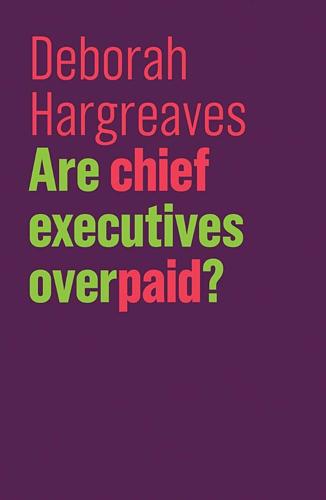
Are Chief Executives Overpaid?
by
Deborah Hargreaves
Published 29 Nov 2018
This means that a captain of industry in the UK takes home 129 times the annual income of someone on average wages. In the US, the ratios are starker. In 2016, average chief executive pay was $13.1 million,4 giving a pay ratio of 347 to 1. This compares to 42 to 1 in 1980. The most highly-paid executive in the US in 2017 was set to be Evan Spiegel, founder and chief executive of Snapchat, the technology firm, who pocketed $638 million even though the company has yet to make money. These figures are in the public domain, as companies listed on the stock exchange are required to publish pay figures for their executives in their annual reports. In the UK, the totals account for realized pay, or what an executive actually receives in a particular year, even if it is an accumulation of performance-related awards that refer to past achievements, but are only paid out in that year.
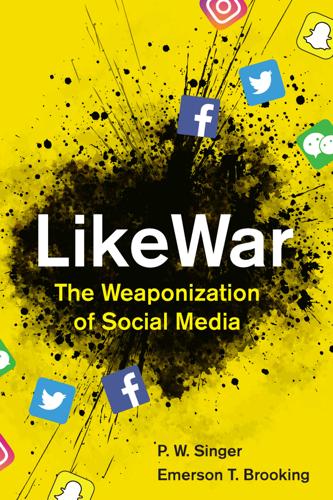
Likewar: The Weaponization of Social Media
by
Peter Warren Singer
and
Emerson T. Brooking
Published 15 Mar 2018
According to a dataset of 2016 Facebook advertisements purchased by Russian proxies, the messages received engagement rates as high as 24 percent—far beyond the single digits to which marketing firms usually aspire. The impact of the operation was further magnified by how efforts on one social media platform could complement (and amplify) those on another. Russian sockpuppets ran rampant on services like Instagram, an image-sharing platform with over 800 million users (larger than Twitter and Snapchat combined) and more popular among youth than its Facebook corporate parent. Here, the pictorial nature of Instagram made the disinformation even more readily shareable and reproducible. In 2017, data scientist Jonathan Albright conducted a study of just twenty-eight accounts identified as having been operated by the Russian government.
…
Yet Janna was driven not by opportunity but by loss: the killing of a local boy in her village and the death of a cousin and uncle at the hands of Israeli security forces. She took to traveling the occupied territories, drifting from one protest and checkpoint showdown to the next, her mom’s iPhone in hand. In time, she launched Facebook, Twitter, YouTube, and Snapchat feeds, amassing hundreds of thousands of followers. To watch her dispatches was to feel torn in two. On the one hand, Janna was undoubtedly courageous, and her reports were heartbreaking. She charged into protests with a green, red, and white bandana (the colors of the Palestinian flag), braving tear gas and shouting down heavily armed soldiers.
…
,” New York Times, July 17, 2016, www.nytimes.com/2016/07/18/world/europe/in-the-age-of-isis-whos-a-terrorist-and-whos-simply-deranged.html. 154 “information jihad”: Charlie Winter, “What I Learned from Reading the Islamic State’s Propaganda Instruction Manual,” Lawfare (blog), April 2, 2017, https://lawfareblog.com/what-i-learned-reading-islamic-states-propaganda-instruction-manual. 154 media “projectiles”: Ibid. 154 “make terrorism sexy”: David Francis, “Why Don Draper Would Be Impressed by the Islamic State,” The Cable (blog), Foreign Policy, April 7, 2015, http://foreignpolicy.com/2015/04/07/why-don-draper-would-be-impressed-by-the-islamic-state/. 155 “became a reality star”: Spencer Pratt, phone interview with authors, May 23, 2016. 155 how to make $50,000: Naomi Fry, “The Reality-TV Star Spencer Pratt on America’s Addiction to Drama,” The New Yorker, June 30, 2017, http://www.newyorker.com/culture/persons-of-interest/the-reality-tv-and-snapchat-star-spencer-pratt-on-americas-addiction-to-drama. 155 “I saw The Osbournes”: Pratt interview. 155 the Kardashians: Suzannah Weiss, “Spencer Pratt Missed His Chance to Make the Kardashians Famous,” Refinery29, February 20, 2017, http://www.refinery29.com/2017/02/141810/spencer-pratt-princes-of-malibu-kardashians. 155 nightclub called Privilege: Michael Sunderland, “Head over Hills: The Undying Love Story of Heidi and Spencer Pratt,” Vice, February 12, 2016, https://broadly.vice.com/en_us/article/9aepp7/heidi-montag-spencer-pratt-the-hills-profile. 156 “manipulating the media”: Pratt interview. 156 “working with the paparazzi”: Ibid. 156 “Best Villain”: “Teen Choice Awards 2009 Nominees,” Los Angeles Times, June 15, 2009, http://latimesblogs.latimes.com/awards/2009/06/teen-choice-awards-2009-nominees.html. 156 “shot that scene”: Pratt interview. 156 “just an awful asshole”: Ibid. 157 pioneering 1944 study: Fritz Heider and Marianne Simmel, “An Experimental Study of Apparent Behavior,” American Journal of Psychology 57, no. 2 (1944): 243–59. 157 “psychological political by-products”: Matthew Armstrong, “The Past, Present, and Future of the War for Public Opinion,” War on the Rocks, January 19, 2017, https://warontherocks.com/2017/01/the-past-present-and-future-of-the-war-for-public-opinion/. 158 “everyone’s an editor”: Heidi Montag, phone interview with authors, May 23, 2016. 158 “everyone is a reality star”: Pratt interview. 158 shrunk to eight seconds: “Attention Span Statistics,” Statistic Brain, https://www.statisticbrain.com/attention-span-statistics/. 158 fifth-grade education: “Most Presidential Candidates Speak at Grade 6–8 Level,” Cision, March 16, 2016, https://www.prnewswire.com/news-releases/most-presidential-candidates-speak-at-grade-6-8-level-300237139.html. 158 the complexity score dipped: Derek Thompson, “Presidential Speeches Were Once College-Level Rhetoric—Now They’re for Sixth-Graders,” The Atlantic, October 14, 2014, https://www.theatlantic.com/politics/archive/2014/10/have-presidential-speeches-gotten-less-sophisticated-over-time/381410/. 159 a shark swimming down: Kaleigh Rogers, “‘Shark Swims Down a Flooded Street’ Is a Viral Hoax That Won’t Die,” Motherboard (blog), Vice, October 5, 2015, https://motherboard.vice.com/en_us/article/jp5ydp/shark-swims-down-a-flooded-street-is-a-viral-hoax-that-wont-die. 160 more unyieldingly hyperpartisan: Adam Hughes and Onyi Lam, “Highly Ideological Members of Congress Have More Facebook Followers Than Moderates Do,” Pew Research Center, August 21, 2017, http://www.pewresearch.org/fact-tank/2017/08/21/highly-ideological-members-of-congress-have-more-facebook-followers-than-moderates-do/. 160 why conspiracy theories: Marco Guerini and Carlo Strapparava, “Why Do Urban Legends Go Viral?
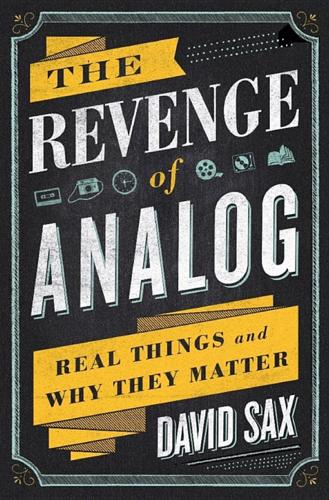
The Revenge of Analog: Real Things and Why They Matter
by
David Sax
Published 8 Nov 2016
Over the ensuing summers, most parents quietly supported Walden’s no-technology policy. A few vocally complained, noting that their kid needed TV or video games to fall asleep, but Birenbaum held fast, even as more technology worked its way into the fabric of kids’ lives: smartphones, iPads, Facebook, Instagram, Snapchat, etc. Walden wasn’t averse to using technology. The office ran on computers, and select staff used laptops to create various program materials—scripts for plays, cabin schedules, videos for evening activities—Walden even owned a drone to take videos—but campers had zero contact with computers throughout the summer.
…
88 scalability, 170, 172 school libraries, 187 schools alternative, 208 physical versus virtual, 176–177, 200–201 See also education Schram, Stefanie, 200 Schumpeter, Joseph, 153 Schwartz, Barry, 130 Scorsese, Martin, 71 Scott, Ken, 25–26 Scrabble, 76, 77, 85 screen-free parenting, xv screen-free schools, 208 Search Inside Yourself, 206 Seasick Steve, 22 Sebregondi, Maria, 32–34, 35, 36, 39, 40, 41, 46, 47, 48–49, 111 Second Life (virtual world), 81, 217 Senk, Glen, 134 sensory experience, xiii, xvii, 32, 83, 111, 113, 131, 132, 180–181, 188, 195, 225–226, 231 Serena and Lily, 137 serendipity, 113, 115, 131, 238 Settlers of Catan, 76, 85, 89–90, 93, 239 7-inch EP format, 8, 22 “Shake It Off” (Swift), 6 Shake It Records, 21 Shapiro, Dan, 226 Sharma, Mala, 210 Sharman, Mark, 119, 120 Sharman’s, 119–120 Sheridan College, 195 Shinola, 149–152, 157–158, 159–161, 167–168, 169, 171, 172 shipping costs, 135–136, 137 shopping experience, 126–127, 134, 137 Shut Up and Sit Down (blog), 90 sign making, 215–217 Silicon Valley, xv, xvii, 45, 155, 166, 178, 206, 208, 211, 213, 223, 225, 226, 229, 238 Singer, Dorothy, 181–182 Sinkov, Andrew, 222, 223 Siwak, Heidi, 196–198 16 mm film, 56 sketchbook, 221–222 Skidgel, John, 221, 222 Skype, 45, 220 Slack, 219 Small World, 85 smart boards, 191, 213 smartphones abstaining from, xii, xv, 27, 115, 205, 231, 234, 235, 241, 242 attachment to, xii–xiii, 27, 235 companion to, 31 in education, 182 handwriting and, 46 music on, ix photography and, 62, 69–70 role of, in analog’s rise, xvii years living with, 237 Smolokowski, Slava, 69–70 Snakes & Lattes, 75–76, 77, 79, 80, 81, 82, 83, 85, 86–88, 89, 90, 93, 95, 96–98, 239–240 Snapchat, 234 social interaction, experiencing, xv, 82, 144, 212, 217–219 social media/networks creating real social experiences for, 217–218 dominance over, 163 film photography and, 62 limitations of, 144 role of, in analog’s rise, xvii surge of, notebooks and, 43 tabletop gaming and, 80, 91, 94 See also specific social networking service software building, role of analog in, 209, 215 educational, 179, 181, 186, 190 and the Great Recession, 156 inherent bias of, 36 role of, in analog’s rise, xvii Songlines, The (Chatwin), 33 Songza, 20 Sony, 9, 11, 17 Sound on Sound (magazine), 22 Sour Soul (album), 27 South by Southwest Interactive, 45 Spark Notebook, 43 Spence, Michael, 163 Sperduti, Anthony, 138 Spin Master, 85 Spotify, 10, 13, 20 Stack, 103, 106 Stack Live, 103, 105 stamps, 132 Standage, Tom, 110 standardization, 7, 36, 118, 145, 162, 186, 194 Stanford University, 193, 201 Stapleton, Rich, 103–104 Star Wars: The Force Awakens (movie), 72 Starcraft (game), 94 Starr, Ringo, 26 startup trend, xiv stationery, 36, 45, 132, 218 stationery stores, 33, 34, 44 Steelcase, 190 STEM programs, 192 Sterling, Greg, 218 still film, 52, 53, 55, 56, 58–59, 63, 64, 68 Stoltz, Kelly, 22 Stoppelman, Jeremy, 217 Strand, 127, 128 streaming services, x, xvi, 10, 12, 19–20, 22, 242 streaming video technology, 201 Street Fighter 2 (game), 80 Studio O+A, 211–213 Success Academy, 189 Sun Records, 5 Super 8 film, 71 Super Mario Bros.
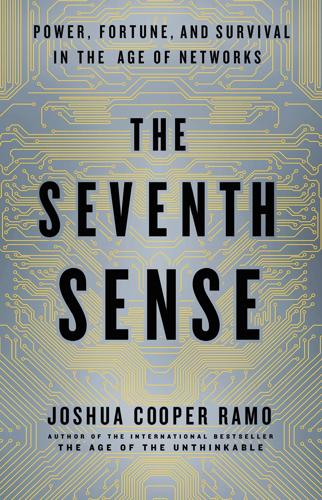
The Seventh Sense: Power, Fortune, and Survival in the Age of Networks
by
Joshua Cooper Ramo
Published 16 May 2016
It’s not simple technical fluency that eludes them—though this is among the most embarrassing of their deficits, marked by their leaked emails and overheard voice mails. It’s certainly true that listening to some of our leaders talk about technology resembles nothing so much as trying to explain Snapchat to your grandparents. But the problem is more profound. Avoiding cyberaccidents, controlling the spread of nuclear weapons, handling global warming, stemming financial crises, restoring equitable growth—all these puzzles yearn to be tackled with a new sensibility. They are produced by new forces, after all.
…
“We don’t have a word for the opposite of loneliness, but if we did, I could say that’s what I want in life…,” the millennial writer Marina Keegan wrote in a famous essay that captured more than a little of this zeitgeist. “More than finding the right job or city or spouse—I’m scared of losing this web we’re in. This elusive, indefinable, opposite of loneliness.” The early interface of Snapchat, where you had to leave your finger resting on the screen in order for the video to unspool, was a kind of metaphor for this unbreakable relationship between touch and connection. (As was, in a different way, the diffident, “out of my life” left swipe of Tinder.) Networks, we are discovering, don’t only compress space and time; they compress, in the process, the path to knowledge.
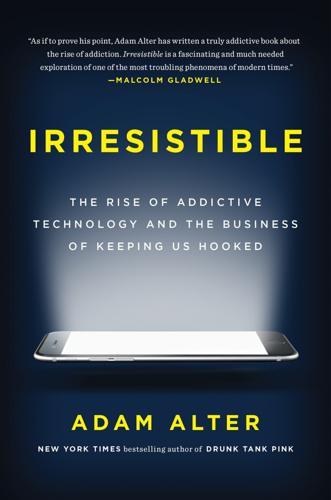
Irresistible: The Rise of Addictive Technology and the Business of Keeping Us Hooked
by
Adam L. Alter
Published 15 Feb 2017
But perhaps our sense of superiority is misplaced. Just as cocaine charmed Freud and Pemberton, today we’re enamored of technology. We’re willing to overlook its costs for its many gleaming benefits: for on-demand entertainment portals, car services, and cleaning companies; Facebook and Twitter; Instagram and Snapchat; Reddit and Imgur; Buzzfeed and Mashable; Gawker and Gizmodo; online gambling sites, Internet video platforms, and streaming music hubs; hundred-hour work weeks, power naps, and four-minute gym workouts; and the rise of a new breed of obsessions, compulsions, and addictions that barely existed during the twentieth century.
…
Contrera chronicled several days in the life of a thirteen-year-old named Katherine Pommerening, a regular eighth grader who lumbered beneath the weight of so many “likes and lols.” The saddest quote from Pommerening herself comes near the end of the article: “I don’t feel like a child anymore,” Katherine says. “I’m not doing anything childish. At the end of sixth grade”—when all her friends got phones and downloaded Snapchat, Instagram, and Twitter—“I just stopped doing everything I normally did. Playing games at recess, playing with toys, all of it, done.” Boys spend less time engaged in damaging online interactions, but many of them are hooked on games instead. The problem is so visible that some game developers are pulling their games from the market.
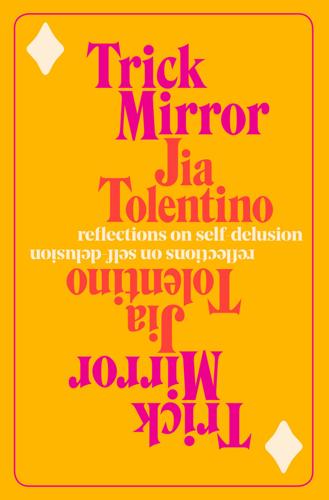
Trick Mirror: Reflections on Self-Delusion
by
Jia Tolentino
Published 5 Aug 2019
I started thinking about this when I was working as an editor at Jezebel, in 2014. I spent a lot of the day reading headlines on women’s websites, most of which had by then adopted a feminist slant. In this realm, speech was constantly framed as a sort of intensely satisfying action: you’d get headlines like “Miley Cyrus Spoke Out About Gender Fluidity on Snapchat and It Was Everything” or “Amy Schumer’s Speech About Body Confidence at the Women’s Magazine Awards Ceremony Will Have You in Tears.” Forming an opinion was also framed as a sort of action: blog posts offered people guidance on how to feel about online controversies or particular scenes on TV. Even identity itself seemed to take on these valences.
…
But Zuckerberg, in picking up on the fact that we would sell our identities in exchange for simply being visible, was riding a wave that had been growing for a long time. The Real World started airing when Zuckerberg was eight, Survivor and The Bachelor while he was in high school. Friendster was founded his freshman year of college. Soon after Facebook came YouTube in 2005, Twitter in 2006, Instagram in 2010, Snapchat in 2011. Now children are going viral on TikTok; gamers make millions streaming their lives on Twitch. The two most prominent families in politics and culture—the Trumps and the Kardashians—have risen to the top of the food chain because of their keen understanding of how little substance is required to package the self as an endlessly monetizable asset.
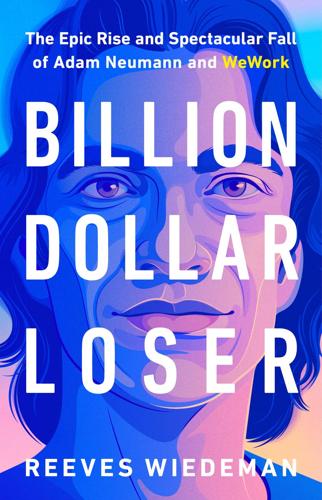
Billion Dollar Loser: The Epic Rise and Spectacular Fall of Adam Neumann and WeWork
by
Reeves Wiedeman
Published 19 Oct 2020
Maintaining a “unicorn portfolio” had become a fashionable investment strategy; if just one of your companies took flight, it could cover all the duds. Unlike Benchmark, Glade Brook wasn’t at the top of any founder’s list of strategic investors, but the firm had money, and a strategy of potentially overpaying to make certain it could get in on recent investments in Uber, Snapchat, and Airbnb. While new unicorns were being regularly sired in Silicon Valley, WeWork was a rare East Coast breed. At a meeting in February, the WeWork team showed Glade Brook what it considered to be an aggressive growth plan; whenever the team brought forecasts to Adam, he would always tell them to increase the projections two or three times before he showed investors.
…
The company’s scattered assortment of potential business lines was distracting for the employees tasked with maintaining the blistering growth of its core office-leasing business. But the most ambitious companies of the 2010s were no longer content to do what they were best at. Google was building a driverless car. Snapchat was getting into eyewear. Amazon was starting to make movies. In 2015, Adam had a team draw up a plan for a private club on the top floor of a Manhattan tower where Goldman Sachs once had its executive suites. (WeWork had also leased the basement, where Adam thought about opening an outpost of SPIN, a Manhattan ping-pong bar.)
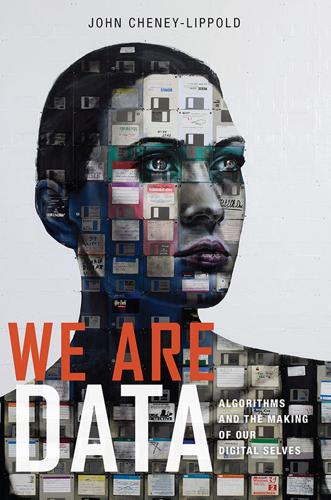
We Are Data: Algorithms and the Making of Our Digital Selves
by
John Cheney-Lippold
Published 1 May 2017
As a category deployed across the web in targeted advertising, a company like Vicks must accept that ‘women’ is whoever is categorized as a ‘female’ at the very moment an ad launches. Thinking for the moment outside the complexities of percentages and machine-learning inference algorithms, this type of dynamism is common sense. A machine-learned model of ‘woman’ from 2008 is archaic, most definitely out of fashion, and most likely passé. ‘She’ has no idea what Snapchat or Tinder is. ‘She’ might not know there was a global financial collapse around the corner. ‘She’ has never heard of the Arab Spring and wouldn’t know what an Uber or Lyft “ride-sharing” car was, even if it drove back in time and hit ‘her’ on the street. The measurable-type models that Quantcast developed in 2008 need to account for the dynamism of life itself.
…
See also microtargeting; psychographics; Values and Lifestyles (VALS) semi-supervised learning, 60, 79 Seinfeld, 241 Severson, Richard W., 235 sexuality, 42, 50–53, 67, 85, 137, 149, 219–22, 243, 252, 257–58, 277n40; algorithms producing, 29, 50–53, 55–56, 74, 81, 87–89, 194, 219–22, 237, 277n40, 299n61; intersectionality and, 76, 86, 184; as social construction, 45. See also Gaydar Shenk, David, 245 Sherman, Jamie, 119 Shimon, 68–72, 70, 85, 90–91, 260–61, 280n91 SIM cards, 3, 188, 190 Simondon, Gilbert, 194 Skype, 289n12 Smith, Brian Cantwell, 47–48 Smith, Zadie, 252 Snapchat, 133 Snowden, Edward, 154–56, 168, 174 social constructionism, 8, 11, 46, 77, 196, 242 The Social Network, 167, 252 societies of control, 26, 100–101, 105, 107, 168, 172 Solove, Daniel, 32, 167 Spade, Dean, 220 Spartacus, 232 Spivak, Gayatri, 192 SRI International, 75 Star, Susan Leigh, 7, 52 Stevens, Roger, 51 Stiegler, Bernard, 50 Sun Microsystems, 207 Sunnstein, Cass, 28 Super Mario Brothers, 218 superpanopticon, 171–72, 228 supervised learning, 79 surveillance, 15, 24, 100, 112, 122, 157, 185, 198, 205–9, 216–17, 223, 231–32, 234, 242, 262, 270n18, 273n59, 295n103, 301n98; assemblages, 20, 80, 108, 144, 155, 240; Data Wars and, 20–21; digital epidermalization and, 12, 278n60; measurable types and, 74, 97; NSA, 154–56, 160–62, 174–75, 189, 199, 219, 289n12; ubiquitous, xii, 4, 9, 29, 35–36, 56–57, 131, 156, 193, 227, 236, 241, 244.
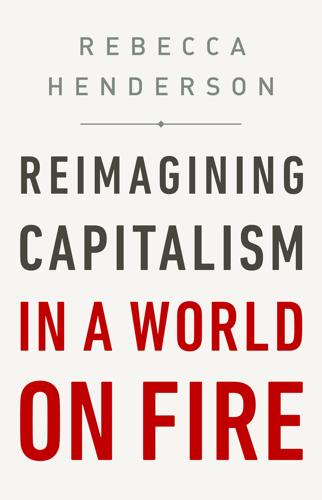
Reimagining Capitalism in a World on Fire
by
Rebecca Henderson
Published 27 Apr 2020
Every Class B share came with ten votes. This means that it is effectively impossible to force Zuckerberg to step down, no matter how badly Facebook performs.93 In general, the founders in question claim that this structure is necessary to protect them from shareholder pressure. One observer, commenting on Snapchat’s decision to leave the vast majority of voting power in the hands of its founders and to issue public stock with no voting rights at all, claimed that shareholders pressuring companies to cut expenses and increase short-term profits could stymie founder-led technology companies from making important long-term investments in major value-creating innovations.

How to Stop Brexit (And Make Britain Great Again)
by
Nick Clegg
Published 11 Oct 2017
Identify individuals who are influencing discussions, and share or counter their views, depending on whether or not you agree with them. Find tweets or pages that are flagging up key events and make sure they reach a critical mass of people. Don’t limit yourself to Facebook and Twitter, but get signed up to Instagram, Snapchat and any WhatsApp group that is participating in Brexit debates. Tweet out the countless articles that show how damaging the Brexit vote has been for Britain. Share your positive experiences of being part of the EU, such as the ending of mobile-phone roaming charges, the EU rules which mean you can claim compensation on flights which are cancelled or delayed by more than three hours, or the care that you received from an NHS doctor or nurse who has come here to work from elsewhere in the EU.

The Fitness Mindset: Eat for Energy, Train for Tension, Manage Your Mindset, Reap the Results
by
Brian Keane
Published 14 Jun 2017
Brian’s #1 rated podcast is now one of the most recognized health and fitness podcasts in the Irish and UK market and his social media presences in growing into the hundreds of thousands across all platforms at the time of print. To find out more about Brian, check out the links below. Website: www.briankeanefitness.com Facebook: Brian Keane Fitness YouTube: Brian Keane Fitness Instagram: brian_keane_fitness Snapchat: briank019 Podcast: The Brian Keane Fitness Podcast

Trixie and Katya's Guide to Modern Womanhood
by
Trixie Mattel
and
Katya
Published 15 Nov 2020
For those smug older folks who are fond of lamenting a bygone era when people were not socially awkward and would engage in meaningful dialogue with strangers instead of staring into their phones, well, I’ve got news for you: This time never existed for most people, but now we have the benefit of avoiding people with a useful prop and an actual purpose. Not only do the kids of this generation have to weather the rotted hellscape of adolescence in real life; they also must navigate through virtual rings of fire via Snapchat, Instagram, Tinder, Twitter, Facebook, and whatever new interfaces pop up along the way. Social media is many things, and most of those things are synonyms for “cesspool” or “festering carcass filled with dried shit.” I once dated a guy who did not have a Facebook or Instagram account. In fact he had no social media profiles at all—none!

Augmented: Life in the Smart Lane
by
Brett King
Published 5 May 2016
Figure 1.1: Years till mass adoption of specific technologies2 (Source: Various) We often talk about adoption of new technology in terms of “early” versus “late” adopters, but it is getting harder to tell the difference between these two groups as adoption cycles compress. In recent years as new technologies like the smartphone, Facebook, Angry Birds, Snapchat and WeChat emerged, they became mass-market propositions 30 to 50 times faster than technologies such as the aeroplane or telephone. We live in extraordinary, accelerated times. Technology adoption and innovation has a compounding effect on the way we live when viewed over the long term. As we invent new technologies, they accelerate our ability to invent or create yet newer technologies.
…
If you moved into our old neighbourhood and didn’t make yourself known quickly, then everyone would start making up stories about who you were and what skeletons you had in your closet. The easiest way to tackle that mistrust was to be open, and move to quickly establish some credibility. The augmented world is once again just like that. We warn our kids not to put their personal information on Facebook, Instagram or Snapchat but, 20 years ago, we were very comfortable having a telephone book distributed across the city that contained our name, address and phone number for all to see. The Augmented Age will allow you to be more secure and have more control over what data you share than ever before, but be prepared that there will be a minimum required level of transparency in order for you to credibly function in this society.

The Heat Will Kill You First: Life and Death on a Scorched Planet
by
Jeff Goodell
Published 10 Jul 2023
It had wood floors and a big stone chimney and tall rectangular windows that looked over a rugged treeless canyon called Devil’s Gulch. From the second-floor bedroom, you could just see the top of El Capitan, the iconic granite formation in Yosemite Valley, about thirty-five miles to the east. The house was their refuge from the hustle of Silicon Valley, where Gerrish worked as a software engineer at Snapchat, the instant messaging app company. The babysitter, who had a key, let herself in and called out their names. No response. It had been a hot weekend, but the inside of the house was cool, thanks to the air conditioner, which was going strong. Oddly, Chung and Gerrish had left behind their wallets.
…
The next morning, a California Highway Patrol helicopter airlifted the family off the trail. Gerrish and Chung had moved to Mariposa about a year and a half earlier, just before Miju, their first child, was born. They had been living in San Francisco, where Chung taught yoga while finishing her degree in counseling psychology, and Gerrish wrangled computer code at Snapchat. But then Miju came along and the Covid-19 pandemic erupted and they needed a change. They decided they wanted to get out of the city and raise Miju closer to nature. Mariposa, which is just an hour outside the entrance to Yosemite National Park, was an ideal mix of wilderness and charm. “They fell in love with the Mariposa area,” one friend of the family said.
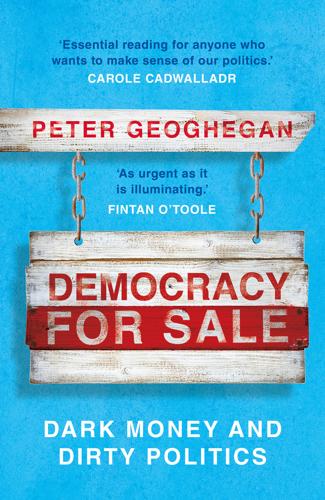
Democracy for Sale: Dark Money and Dirty Politics
by
Peter Geoghegan
Published 2 Jan 2020
As we have seen, Britain has lots of regulations governing its politics, including restrictive spending limits and campaign finance transparency requirements. But these rules are designed for a pre-Internet age. Campaigns commit vastly increased resources online, but understanding what exactly they are doing has become ever harder. It’s not just adverts on Facebook. There’s Instagram and WhatsApp (both owned by Facebook), as well as Google, Snapchat and a growing array of closed messaging platforms. It has never been easier to spread misinformation on an industrial scale, with almost no oversight. “We don’t know what is happening. We can’t even describe what is happening. The lack of information is the scariest thing,” Dommett told me. “The protections I thought that were in place that meant that the UK system wasn’t in danger of being Americanised don’t seem to be there anymore
…
Third-party consultancies – like Borwick’s – can obscure how money is spent to influence politics. In a period of a few weeks before the 2019 general election, so-called ‘non-party campaigns’ bought more than half a million pounds worth of adverts on Facebook and its subsidiary Instagram, as well as on Google and Snapchat.57 The sums involved were significant by British standards and are almost certainly a major underestimate, given the weakness of digital campaign spending oversight. A handful of sites advertised Labour, others recommended tactical voting around Brexit, but most pushed Conservative talking points – often to the extreme.

When It All Burns: Fighting Fire in a Transformed World
by
Jordan Thomas
Published 27 May 2025
Not to mention it’s a clusterfuck. Cal Fire takes all the hotels. Contractors fill up the camps. Hard to even find dirt to sleep on with so many people.” Red’s voice had slipped to a murmur. He was drifting to sleep, so I moved to a nearby boulder to read a New Yorker novella on my phone. While I perused my screen, a Snapchat popped up. A friend from my first year on the beginner crew was on a federal engine now and had captured a video of the Dixie Fire at night, flames reaching for the stars. “How is it?” I typed. “Epic,” he wrote. Three dots showed he was still replying. “No one here has ever seen anything like this.
…
I poured the whole canteen into Red’s ear. He blustered through the water, then stood, head cocked, listening. “Still in there. I’ll get you, you bastard. Hang tight here, Thomas.” Red hefted his pack and ran up the fireline to find Barba, who probably, for some reason, had tweezers. I checked my Snapchat again. “How’s being a hotshot?” my friend on the Dixie Fire repeated. “Epic,” I replied, putting away my phone. * * * We were in our buggy when we heard a voice on the radio announce that we were dismissed from the fire. We had put it out, so we were no longer needed and were to return to our station.
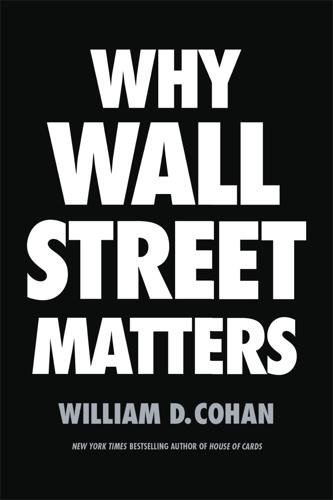
Why Wall Street Matters
by
William D. Cohan
Published 27 Feb 2017
But here’s the thing: If you like your iPhone (which you clearly do, because more than one billion iPhones have been sold worldwide since its inception in June 2007), or your wide-screen TV, or your car, or your morning bacon, or your pension, or your 401(k), then you are a fan of Wall Street, whether you know it or not. If you like the power and functionality of Facebook, Snapchat, and Twitter, you actually like Wall Street. None of these things would be even remotely possible to have, in the size and the scope that we have them, and as affordable and as easily accessible as they are, without the free flow of capital that Wall Street manages to provide nearly twenty-four hours a day, seven days a week to people who need it anywhere on the globe.
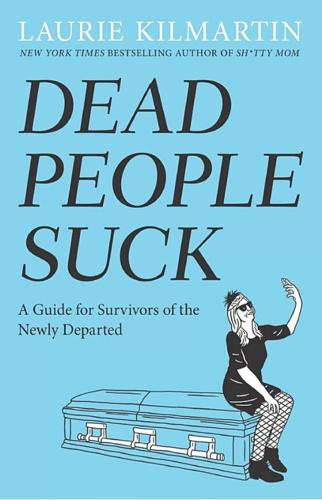
Dead People Suck: A Guide for Survivors of the Newly Departed
by
Laurie Kilmartin
Published 13 Feb 2018
TO THE ATHEIST AT THE FUNERAL: Here you will be a sad Spock surrounded by wild, panicking Boneses. Those stories about heaven or reincarnation start to sound real good when your dad’s coffin is lowered into the ground. Look, even successful dieters have a cheat day; you can give yourself one too. Fantasizing about an afterlife is like putting a Snapchat filter on your grief. No one will know if you add a heaven or two to your snaps. THE WEAK ATHEIST: If you are wobbly right now, if you find yourself gazing into the night sky, thinking, “I wonder if Mom is out there,” for God’s sake, keep your mouth shut. Don’t tell a (living) soul. Because if an atheist’s confidence can waver, then nothing is safe in this world.

The Minimalist Way
by
Erica Layne
Published 25 Feb 2019
You have no obligation to follow anyone, even someone you know and care about in real life, if what he or she posts takes a toll on you. I was possibly the last generation to go through high school without social media. Facebook was coming onto the scene in my last couple years of college, but Instagram, Snapchat, and Pinterest were still years away from becoming mainstream. There was no such thing as being an “influencer” or a YouTube celeb. Maybe it was because I grew up without it or maybe it’s just my nature, but I’ve always been extremely (if we’re being honest, ruthlessly) selective about the people I follow on social media.

Age of Discovery: Navigating the Risks and Rewards of Our New Renaissance
by
Ian Goldin
and
Chris Kutarna
Published 23 May 2016
Their rapid spread has been enabled by maturing online marketplaces that supply cybercrime labor and tools, and that fence stolen goods. It is no longer a question of if you will become a victim of cybercrime, but when. These crimes injure us personally, through the theft and ransom of identities, login information, webcam videos or Snapchat photos. They also use us to injure others, by making us unwitting accomplices in spam, phishing and email attacks, or by using our computers as web servers for malware and child pornography. And as more smart devices, from appliances to automobiles to the locks on our house, connect to the “Internet of Things,” the range of injuries that cyber criminals can cause us will only widen.
…
What was remarkable about the protests that beset the last Renaissance was, first, their strength, breadth and frequency, and the role new technologies played in making them. These traits, at least, the New Renaissance surely shares. In 2011, Time magazine named “The Protester” its “Person of the Year,” in recognition of the social movements that had erupted planet-wide, from New York to New Delhi. Facebook, Twitter, WhatsApp and Snapchat became, and have remained, means by which the disaffected discover one another and coordinate their voices. The other notable feature of social protest in the last Renaissance was how, from Savonarola’s bonfire to Luther’s Reformation, the focus of public anger evolved from corrupt leaders to a corrupted system, and a consensus was reached that to make things better, the system itself had to be rejected.

Digital Wars: Apple, Google, Microsoft and the Battle for the Internet
by
Charles Arthur
Published 3 Mar 2012
I mentioned this later to a senior Apple executive, who guffawed quietly, and said: ‘That’s because they don’t have any apps.’ Even three years after its launch, Windows Phone still didn’t have some of the most popular, and many of the less popular (but fringe), apps. Among them were a native version of the photo-sharing service Instagram, now owned by Facebook, and Snapchat, a photo sharing service whose wrinkle made it hugely popular with teenagers: you sent the photo to a recipient – and then it wiped itself. Windows Phone had no native version, and had to rely on third-party bolt-ons. So if Nokia thought the smartphone was about photos, what did Apple think the smartphone was for?
…
(i), (ii), (iii) see also Microsoft Bang & Olufsen (i) Bartz, Carol (i) Basillie, Jim (i) Battelle, John (i), (ii) Bauer, John (i) BBC iPlayer (i) Bechtolsheim, Andy (i), (ii) Beckham, David and Victoria (i) BenQ (i) Berg, Achim (i) Berkowitz, Steve (i), (ii) Best Buy (i), (ii), (iii), (iv) Bezos, Jeff (i) Bilton, Nick (i) BlackBerry (i), (ii), (iii), (iv), (v), (vi), (vii), (viii), (ix), (x), (xi) BlackBerry Messenger (i) BlackBerry Storm (i), (ii) Block, Ryan (i) Blodget, Henry (i) Bloomberg (i), (ii) BMG (i) Boeing (i) Boies, David (i), (ii) Bondcom (i) Bountii.com (i) Bowman, Douglas (i) Bracken, Mike (i) Brass, Richard (i) Brin, Sergey (i), (ii), (iii), (iv), (v), (vi), (vii), (viii), (ix) see also Google; Page, Larry Bronfman, Edgar (i) Brunner, Robert (i) Buffett, Warren (i) BusinessWeek (i), (ii), (iii), (iv), (v), (vi), (vii) Bylund, Anders (i) Carr, Nick (i) Chafkin, Max (i) Chambers, Mike (i) China (i), (ii), (iii) and Apple (i), (ii), (iii), (iv) and Google (i), (ii), (iii), (iv), (v), (vi), (vii) and Microsoft (i) mobile web browsing (i) China Mobile (i), (ii), (iii) China Unicom (i), (ii) Chou, Peter (i) CinemaNow (i) Cingular and the iPhone (i), (ii), (iii), (iv), (v) and the ROKR (i), (ii) Cisco Systems (i) ClearType (i) Cleary, Danika (i), (ii) CNET (i), (ii), (iii) Colligan, Ed (i), (ii), (iii) Compaq (i), (ii) ComScore (i), (ii), (iii) Cook, Tim (i), (ii), (iii), (iv), (v), (vi), (vii), (viii), (ix), (x) Creative Strategies (i) Creative Technologies (i), (ii), (iii), (iv), (v), (vi), (vii) Creative Labs (i), (ii) Cringely, Robert X (i), (ii), (iii), (iv) Crothall, Geoffrey (i) Daisey, Mike (i), (ii) Dalai Lama (i) Danyong, Sun (i) Daring Fireball (i), (ii) Deal, Tim (i) Dean, Jeff (i) DEC (i) Dediu, Horace (i), (ii), (iii), (iv), (v), (vi), (vii), (viii), (ix), (x), (xi), (xii), (xiii), (xiv) ’Dediu’s Law’ (i) Dell Computer (i), (ii), (iii), (iv), (v), (vi), (vii), (viii), (ix), (x), (xi), (xii), (xiii) Dell DJ (i), (ii), (iii) Dell, Michael (i), (ii), (iii), (iv) Design Crazy (i) Deutschman, Alan (i) Digital Equipment Corporation (i) Divine, Jamie (i) Dogfight (i), (ii) Dowd, Maureen (i) Drance, Matt (i), (ii), (iii), (iv) Drummond, David (i), (ii) Dunn, Jason (i) EarthLink (i), (ii) eBay (i) Edwards, Doug (i), (ii), (iii), (iv), (v), (vi), (vii), (viii) Eisen, Bruce (i) Electronic Arts (i) Elop, Stephen (i), (ii), (iii), (iv) EMI (i) eMusic (i) Engadget (i), (ii) Ericsson (i) European Patent Office (i) Evangelist, Mike (i) Evans, Benedict (i) Evslin, Tom (i) Facebook (i), (ii), (iii), (iv), (v), (vi) Fadell, Tony (i), (ii), (iii) Fester, Dave (i), (ii), (iii), (iv) FingerWorks (i), (ii) Fiorina, Carly (i), (ii) Flash (i), (ii), (iii), (iv), (v), (vi) Flowers, Melvyn (i), (ii) Foley, Mary Jo (i), (ii), (iii) Forrester Research (i), (ii) Forstall, Scott (i), (ii), (iii), (iv) Fortune (i), (ii), (iii), (iv), (v) Foundem (i) Foxconn Technology (i), (ii), (iii) Fried, Ina (i) Galaxy Tab (i), (ii) Galvin, Chris (i) Gartenberg, Michael (i), (ii), (iii), (iv) Gartner (i), (ii), (iii), (iv), (v), (vi), (vii), (viii), (ix), (x), (xi) Gates, Bill (i), (ii), (iii) SPOT watch (i) and Steve Jobs (i), (ii), (iii) see also Ballmer, Steve; Microsoft; Sculley, John Gateway (i), (ii) Gemmell, Matt (i) Ghemawat, Sanjay (i) Gibbons, Tom (i) Gilligan, Amy K (i) Gladwell, Malcolm (i), (ii), (iii) Glass, Ira (i) Glazer, Rob (i) Golvin, Charles (i), (ii) Google (i), (ii), (iii) ‘40 shades of blue’ (i), (ii) AdSense (i) and advertising (i), (ii), (iii) AdWords (i), (ii), (iii), (iv), (v), (vi) Android (i), (ii), (iii), (iv) 4G patent auction (i) China, manufacturing in (i), (ii) and Flash (i) and the iPhone (i), (ii) and Microsoft (i), (ii), (iii), (iv) Oracle patent dispute (i) origins of (i), (ii) and standardization (i) and tablets (i), (ii), (iii) antitrust investigation (i) and AOL (i) Bigtable (i), (ii) Buzz (i) Checkout (i) Chinese market (i), (ii), (iii), (iv) google.cn (i) ’Great Firewall’ (i) hacking (i) Chrome (i), (ii), (iii), (iv), (v) Compete (i) confrontation with Microsoft (i), (ii) data, importance of (i) Gmail (i), (ii) Goggles (i) Google Now (i) Google Play (i), (ii) Google+ (i), (ii) hiring policy (i), (ii) Instant (i) Maps (i), (ii), (iii), (iv) location data (i), (ii) users, loss of (i) vector vs raster images (i) market capitalization (i) Music All Access (i) Nest (i) and the New York terrorist attacks 2001 (i) Overture lawsuit (i) PageRank (i), (ii) and porn (i), (ii) profitability of (i) public offering (i) QuickOffice (i) and selling (i) Street View (i), (ii) and Yahoo (i), (ii), (iii), (iv) see also Brin, Sergey; Kordestani, Omid; Meyer, Marissa; Page, Larry; Schmidt, Eric; Silverstein, Craig Googled (i) GoTo.com (i), (ii), (iii) Gou, Terry (i) Grayson, Ian (i) Greene, Jay (i), (ii), (iii), (iv) Griffin, Paul (i), (ii), (iii), (iv), (v), (vi), (vii), (viii), (ix), (x) Griffin Technology (i), (ii) Grokster (i), (ii) Gross, Bill (i), (ii) Gruber, John (i), (ii), (iii), (iv), (v) Guardian (i), (ii), (iii) Gundotra, Vic (i), (ii) Hachamovitch, Dean (i) Handango (i) Handspring (i) Harlow, Jo (i) Hase, Koji (i), (ii), (iii) Hauser, Hermann (i) Hedlund, Marc (i) Heiner, Dave (i) Heins, Thorsten (i) Hewlett-Packard (i), (ii), (iii), (iv), (v), (vi), (vii), (viii), (ix), (x), (xi), (xii), (xiii), (xiv), (xv) Hitachi (i) Hockenberry, Craig (i) Hölzle, Urs (i), (ii), (iii), (iv) Hotmail (i) HTC (i), (ii), (iii), (iv), (v), (vi), (vii), (viii), (ix) Huawei (i) Hwang, Suk-Joo (i) I’m Feeling Lucky (i) IBM (i), (ii), (iii), (iv), (v), (vi) IDC (i), (ii), (iii), (iv) Idealab (i) i-mode (i) Inktomi (i), (ii), (iii) Instagram (i) Intel (i), (ii), (iii), (iv), (v), (vi), (vii), (viii), (ix) Intellectual Ventures (i) Iovine, Jimmy (i) iRiver (i), (ii), (iii) Ive, Jonathan (i), (ii), (iii), (iv), (v), (vi), (vii), (viii), (ix) Jackson, Thomas Penfield (i), (ii), (iii) Java (i), (ii) Jefcoate, Kevin (i) Jha, Sanjay (i) Jintao, Hu (i) Jobs, Steve (i), (ii), (iii) and Bill Gates (i), (ii) death (i) departure from Apple (i) see also Apple; Cook, Tim; Forstall, Scott; Ive, Jonathan; Schiller, Phil Johnson, Kevin (i) Johnson, Ron (i) Jones, Nick (i) Joswiak, Greg (i), (ii) Jupiter Research (i), (ii), (iii), (iv) Kallasvuo, Oli-Pekka (i), (ii), (iii), (iv), (v) Khan, Irene (i) Khan, Sabih (i) King, Brian (i), (ii) King, Shawn (i) Kingsoft (i) Kleinberg, Jonathan (i) Knook, Pieter (i), (ii) and competition from China (i) and Microsoft’s antitrust judgment (i) and Pink (i), (ii) and Steve Ballmer (i) and Windows Mobile (i), (ii), (iii), (iv), (v) and the Xbox (i) and Zune (i), (ii), (iii), (iv), (v) Komiyama, Hideki (i) Kordestani, Omid (i), (ii), (iii) Kornblum, Janet (i) Krellenstein, Marc (i) Laakmann, Gayle (i), (ii), (iii), (iv) Lawton, Chris (i) Lazaridis, Mike (i), (ii), (iii), (iv) Lees, Andy (i), (ii), (iii), (iv), (v), (vi), (vii), (viii) Lenovo (i), (ii) LG (i), (ii), (iii), (iv), (v), (vi) LimeWire (i), (ii) LinkExchange (i), (ii) Linux (i), (ii), (iii), (iv), (v), (vi), (vii) Lodsys (i), (ii) Lotus (i), (ii) Lucovsky, Marc (i) Lynn, Matthew (i) Ma, Bryan (i) MacroSolve (i), (ii) Madrigal, Alexis (i) Mapquest (i) Mayer, Marissa (i), (ii), (iii), (iv), (v) Media Metrix (i), (ii), (iii) MeeGo (i) Mehdi, Yusuf (i), (ii), (iii), (iv), (v), (vi), (vii) Meisel, Ted (i) Microsoft antitrust trial (i), (ii) APIs (i) company split (i) impact of (i) and Apple QuickTime (i) Azure (i) Bing Maps (i) ’Cashback’ (i) China, manufacturing in (i) Chinese market (i) censorship (i) pirating of software (i) confrontation with Google (i), (ii) Courier (i), (ii) Danger (i), (ii), (iii) acquisition by Microsoft (i), (ii), (iii) disintegration of the team (i), (ii), (iii) digital rights management (DRM) of music (i) DirectX (i) and Facebook (i) horizontal system (i) Internet Explorer (i), (ii) Janus (i), (ii), (iii), (iv) ’Keywords’ (i) market capitalization (i) and Netscape (i), (ii) and Nokia (i), (ii), (iii), (iv), (v), (vi), (vii) ’Pink’ (i), (ii) announcement (i) failure of (i) PlaysForSure (i), (ii), (iii) failure of (i) problems with (i), (ii), (iii) rebranding and end (i) and the Zune (i) Portable Media Center (PMC) (i) potential acquisition of Overture (i), (ii), (iii) ’roadmap’ (i) search (i), (ii), (iii), (iv), (v) and antitrust (i) Bing (i), (ii), (iii), (iv), (v), (vi), (vii), (viii), (ix), (x) launch and crash (i) and Office (i) page design (i) profitability of (i) Project Underdog (i), (ii), (iii), (iv) rebranding (i) Surface tablets (i), (ii), (iii) and tablets (i), (ii), (iii), (iv) Flash (i) Windows and ARM (i), (ii) WebTV (i) Windows (i), (ii) Windows Media Audio (i), (ii) Windows Media Player (i), (ii), (iii) Windows Mobile (i), (ii), (iii), (iv), (v), (vi) and Android (i), (ii) decline (i) peak (i) Windows Phone (i), (ii), (iii), (iv), (v) and tablets (i) Windows RT (i) Windows Server (i), (ii), (iii) Xbox (i), (ii), (iii), (iv), (v), (vi), (vii), (viii), (ix) Xbox 360 (ii) Xbox Live Music Marketplace (i) Xbox Music (i) and the Zune (i) and Yahoo search (i), (ii) Zune (i), (ii), (iii), (iv), (v) Christmas 2006 (i) demise of (i) failings of (i) market position (i), (ii) and music in the cloud (i), (ii) and the Xbox (i) Zune Music Store (i), (ii) see also Allard, J; Ballmer, Steve; Gates, Bill; Knook, Pieter; Sculley, John; Sinofsky, Steve; Spolsky, Joel Milanesi, Carolina (i), (ii), (iii) Miller, Trudy (i) Mobile World Congress (i) Morris, Doug (i), (ii) Moss, Ken (i), (ii) Mossberg, Walt (i) Motorola (i), (ii), (iii), (iv), (v), (vi) and Android (i) and the iPhone (i) and iTunes (i), (ii) Motorola Mobility (MMI) (i), (ii) Q phone (i) ROKR (i), (ii), (iii) Mozilla Firefox (i), (ii) Mudd, Dennis (i) Mundie, Craig (i) MusicMatch (i), (ii), (iii), (iv), (v), (vi), (vii) MusicNet (i), (ii) Myerson, Terry (i) Myhrvold, Nathan (i) Nadella, Satya (i) Namco (i) Napster (i), (ii), (iii), (iv), (v), (vi), (vii), (viii), (ix), (x), (xi) Narayen, Shantanu (i) Navteq (i), (ii) Netscape (i), (ii), (iii), (iv), (v), (vi), (vii) and Google (i), (ii), (iii), (iv) and Windows (i) (ii), (iii) New York Times (i), (ii), (iii), (iv), (v), (vi), (vii), (viii), (ix) New Yorker (i), (ii) NeXT Computer (i), (ii), (iii), (iv), (v) Nintendo (i), (ii), (iii) and 4G (i) Nokia (i), (ii), (iii), (iv), (v), (vi), (vii), (viii), (ix), (x), (xi), (xii) Apple patent dispute (i), (ii) Communicator (i) and the iPhone (i), (ii), (iii), (iv), (v), (vi), (vii), (viii) Lumia (i), (ii) and Microsoft (i), (ii), (iii), (iv), (v), (vi), (vii) N91 (i) and Navteq (i), (ii) and Steve Ballmer (i) and Symbian (i), (ii), (iii), (iv), (v), (vi) touchscreen development (i), (ii) Norlander, Rebecca (i) Norman, Don (i), (ii), (iii) Northern Light (i) Novell (i), (ii), (iii) NPD Group (i), (ii), (iii) O2 (i) Observer (i) Ohlweiler, Bob (i), (ii), (iii), (iv), (v), (vi), (vii) Ojanpera, Tero (i) Open Handset Alliance (OHA) (i) Oracle (i), (ii), (iii), (iv) Overture (i), (ii), (iii) acquisition by Yahoo (i) Google lawsuit (i), (ii) potential acquisition by Microsoft (i), (ii), (iii) Ozzie, Ray (i), (ii) PA Semi (i) Page, Larry (i), (ii), (iii), (iv), (v), (vi), (vii), (viii), (ix), (x), (xi), (xii) see also Brin, Sergey; Google Palm (i), (ii), (iii), (iv) acquisition by Hewlett-Packard (i) Pilot (i) Pre (i) profitability (i), (ii) Treo (i), (ii) Pandora (i) Partovi, Ali (i) Parvez, Shaun (i), (ii) Payne, Chris (i), (ii), (iii), (iv), (v), (vi) see also Microsoft PC World (i) PeopleSoft (i) Pepsi (i), (ii), (iii) Peterschmidt, David (i) Peterson, Matthew (i) ’phablets’ (i) Pixar (i), (ii), (iii) Placebase (i) PressPlay (i), (ii), (iii) Qualcomm (i) Quanta (i) Raff, Shivaun (i), (ii), (iii) Real Networks (i), (ii), (iii) Helix (i) Red Hat (i), (ii) Reindorp, Jason (i) Research In Motion (RIM) (i), (ii), (iii), (iv), (v), (vi), (vii), (viii) and Android (i), (ii), (iii) and Bing (i), (ii) and the iPhone (i), (ii), (iii), (iv) PlayBook (i), (ii), (iii), (iv) renaming to BlackBerry (i) Rockstar Bidco (i) writeoffs (i) see also BlackBerry Rockstar Bidco (i), (ii) Rosenberg, Scott (i) Rubin, Andy (i), (ii), (iii), (iv), (v) and Flash (i) and Google phones (i) and Motorola Mobility (i), (ii) and touch-based devices (i) see also Google; Microsoft Rubinstein, Jon (i), (ii), (iii), (iv), (v), (vi), (vii) Samsung (i), (ii), (iii), (iv), (v), (vi), (vii), (viii), (ix), (x), (xi), (xii), (xiii), (xiv), (xv), (xvi), (xvii) SanDisk (i) SAP (i) Sasse, Jonathan (i) Sasser, Cabel (i) Savander, Niklas (i) Schiller, Phil (i), (ii), (iii), (iv), and apps (i) and the iPhone (i) and iPod nano (i), (ii) and Wal-Mart (i) and 4G (i) Schmidt, Eric (i), (ii), (iii), (iv), (v), (vi), (vii) and Android (i), (ii) and AOL (i) and Google Goggles (i) and the iPhone (i), (ii), (iii), (iv) Schmitz, Rob (i) Schoeben, Rob (i) Schofield, Jack (i) Sculley, John (i), (ii), (iii), (iv), (v), (vi) Search (i) SEC (i), (ii) Second Coming of Steve Jobs, The (i) Sega (i) Shaw, Frank (i) Siemens (i) Sigman, Stan (i), (ii), (iii), (iv) Silverstein, Craig (i) Sinofsky, Steven (i), (ii), (iii), (iv), (v), (vi), (vii) see also ARM architecture; Microsoft Slashdot (i), (ii) Snapchat (i) Sony (i), (ii), (iii), (iv), (v), (vi) and digital rights management (DRM) (i) MiniDisc (i), (ii), (iii) PressPlay (i), (ii) Rockstar Bidco (i) Walkman (i), (ii), (iii) Sony Ericsson (i), (ii), (iii), (iv), (v), (vi), (vii) SoundJam (i) Spindler, Michael (i) Spolsky, Joel (i), (ii), (iii) Spotify (i) Sprint (i) Stac Electronics (i) standards-essential patents (SEPs) (i) Starbucks (i) StatCounter (i) Stephens, Mark (i), (ii) Stringer, Howard (i) Sullivan, Danny (i) Sun Microsystems (i), (ii), (iii), (iv), (v), (vi), (vii) Super Monkey Ball (i) Symbian (i), (ii), (iii), (iv), (v) apps (i), (ii) and Flash (i) licencing (i) loss of market share (i), (ii), (iii), (iv) Tao, Shi (i) Telefónica (i) Thompson, Rick (i) Time Warner (i), (ii) T-Mobile (i), (ii) TomTom (i) Topolsky, Joshua (i) Toshiba (i), (ii), (iii), (iv), (v), (vi) traffic acquisition costs (TACs) (i), (ii) Twitter (i), (ii), (iii), (iv) Universal (i), (ii), (iii) US Patent Office (i) Usenet (i) Vanjoki, Anssi (i) Varian, Hal (i) Verizon (i), (ii), (iii), (iv), (v) Virgin Electronics (i), (ii) Visa (i) Vodafone (i), (ii), (iii) Vogelstein, Fred (i), (ii), (iii), (iv), (v), (vi), (vii), (viii) Wall Street Journal (i), (ii) Wal-Mart (i), (ii), (iii), (iv) Wapner, Scott (i) Warner Music (i) Warren, Todd (i) Washington Post (i), (ii) Watsa, Prem (i) Waze (i) WebM (i), (ii) Wilcox, Joe (i), (ii) Wildstrom, Steve (i), (ii), (iii), (iv) Williamson, Richard (i) Windsor, Richard (i) Winfrey, Oprah (i), (ii) Wired (i), (ii), (iii), (iv), (v), (vi) Wojcicki, Susan (i) WordPerfect (i), (ii) Xiaomi (i) Yahoo (i), (ii), (iii), (iv), (v), (vi), (vii), (viii), (ix) Flickr (i) and Google (i), (ii), (iii), (iv) and GoTo (i) and Inktomi (i) and LinkExchange (i) localization (i) and Microsoft (i), (ii) and Overture (i), (ii) Tao, Shi (i) Yandex (i) Yang, Jerry (i), (ii), (iii), (iv) see also Yahoo YouTube (i), (ii), (iii), (iv), (v), (vi), (vii) Zander, Ed (i), (ii) ZTE (i), (ii), (iii) Zuckerberg, Mark (i), (ii) see also Facebook Publisher’s note Every possible effort has been made to ensure that the information contained in this book is accurate at the time of going to press, and the publishers and author cannot accept responsibility for any errors or omissions, however caused.
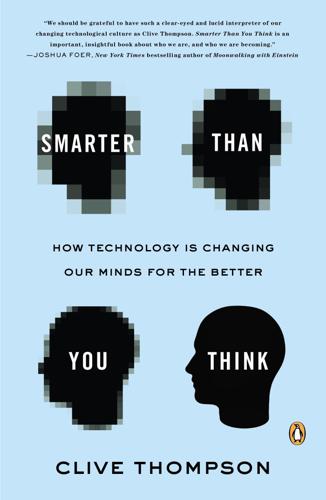
Smarter Than You Think: How Technology Is Changing Our Minds for the Better
by
Clive Thompson
Published 11 Sep 2013
If you wanted something left permanently online you had to specifically set it that way. This behavioral hack worked. When I interviewed then-CEO Sam Lessin, fully two thirds of the material people had uploaded to Drop.io in the previous year and a half was gone. More recently, social media tools like Snapchat or Poke have emerged, with the aim to make individual bits of sharing—a photo, a note—vanish after a single view. Obviously, artificial forgetting can’t stop malicious people from cutting and pasting personal info elsewhere. But it minimizes the windows in which this happens. There’s also the possibility that new laws and regulations could help us minimize unwanted digital traces, at least in countries that respect the rule of law.
…
See writing online Purrone, Ruben, 193 QQ, 246 Quantified Self Web, 90 question-answering, 72–77 sites for, 72–77 on social networks, 230 and Watson supercomputer, 281–82 Quora, 72–74 Rachid, Walid, 255 racial segregation, 251–52 radio, invention of, 60 Rainie, Lee, 231 Raymond, Paula, 124 reading digital instruction, 184–88 early novels, critics of, 223–24 engaged form of, 203–4 read it later services, 136 Reagan, Ronald, 249 Reagle, Joseph, 163–64 recency effect, 225 recursion, 190–91 Reddit, 76, 80 Remembrance Agent, 36–37 reputation bankruptcy, 242 reputation management, and social network postings, 235–42 Rheingold, Howard, 9, 206 rhetoricians, skills of, 67 Rhodes, Bradley, 36–37 Richeliue, Cardinal, 236 Richtel, Matt, 180 Rite-Solutions, 170 Ritzer, George, 238 Robinett, Warren, 149 Rosenblatt, Louise, 203 Rosetta@Home, 167 Roy, Deb, 19–23, 26 Rushkoff, Douglas, 195–96 Russia, photomanipulation, use of, 105–7 Said, Khaled, 256–57 Salah, Ahmed, 255 Sanchez, Esmil, 193–94 Schacter, Daniel, 134–35 Schacter Memory Lab, 134–35 Scheele, Carl Wilhelm, 59 Schmidt, Eric, 237 school-reform movement, 179 Schultz, Deb, 79–80 science problems, collective knowledge applied to, 166–69 scientific method and video games, 196–99 Scratch, 193–94 search credible Web sites, recognizing, 206 Google method, 33, 37 human memory versus machine, 32 lifelog, problems of, 32–35 queries as remembering, 130, 143 semantic memory based search, 116 teaching students mechanics of, 204–6 as transactive memory, 126–31 Sega, 149 self-tracking tools, 89–90 semantic memory, 116 Senft, Terri, 238 SenseCam, 30–34, 41, 144 sensors, self-tracking tools, 89–90 Shannon, Claude, 139 Shapeways, 112 Shereshevskii, Solomon, 40 Sherlock (TV show), 96 Shifang, China, environmental protest, 245–49 Shirky, Clay, 151–52, 222, 260 Shi Tao, 273 Sina Weibo, 47, 246–48 Siwak, Heidi, 188 slash fiction, 153–54 Slaughter, Anne-Marie, 215 Sloan-Kettering Cancer Center, diagnostic supercomputer, 284–85 Smeaton, Alan, 144 Snapchat, 242 social awareness, and online postings. See ambient awareness social change, and access to information, 251–54 social memory, 124 social networks. See also ambient awareness; specific networks feminization aspects of, 226 historical view, 223–25 and homophily, 230–31 and micro-celebrity, 238 narcissistic overdrive of, 220–22 question-answering on, 230 reputation management/privacy, 235–42 as seductive/addictive, 231–32 small forums, 240–41 strength of weak ties, 227–30 trivial comments, online versus offline, 222 Socrates, 117–18, 120 on writing versus debate, 68–69, 75 on writing versus memory, 117–18 sousveillance, 266–67 spaced retention, 144–45 Space Invaders (video game), 147–48 Sparrow, Betsy, 126–28 Squire, Kurt, 199–203 Stager, Gary, 192 Stalin, Joseph, 106–7 Standage, Tom, 223 Stanford Study of Writing, 67 Starner, Thad, 138–44, 146, 286 Star Trek (TV show), 153 Stein, Bob, 82 Steinkuehler, Constance, 196–99, 203–4 Stephen, Zackary, 4–5 step-tracking, 90 Stevens, Tyrone, 85 “Strength of Weak Ties, The” (Granovetter), 227–29 students, and digital tools.
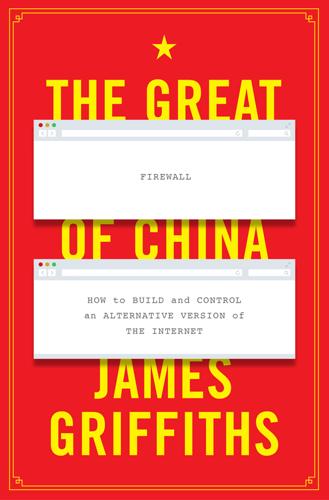
The Great Firewall of China
by
James Griffiths;
Published 15 Jan 2018
He founded VK in late 2006, just as Facebook was branching out from its initial focus on students and allowing anyone to sign up.4 From the beginning, VK was shameless in aping Facebook, right down to its blue-tinted website design. To this day, both sites’ login pages look almost identical. While MySpace, Friendster and Snapchat would be quick to point out Zuckerberg’s own lack of qualms in this regard, VK’s willingness to run roughshod over intellectual property would quickly turn out to be one of its greatest selling points. Like Baidu, which overtook Google in China in part by helping users search for illegal MP3s, VK was a hub for finding and sharing copyrighted materials, becoming one of the largest violators of intellectual property in the world.5 This didn’t win it any favours with the motion picture or recording industries, but it gave it an edge with users that Facebook simply couldn’t match.
…
Index Abbott, Tony, 203 acceptable criticism, boundaries of, 75 Access Now, 236 Adelaide, Australia, 206 Adkins, Heather, 169 Admiralty, camp, 19 Adobe, 170 Africa: China presence, 287–8; Huawei earnings, 304; internet in, 291; Xinhua success, 80 Agora, dark web, 100 Ahmadinejad, Mahmoud, 111 AI software, 200 Ai Weiwei, 170, 214 Albert Einstein College of Medicine, 38 Al-Assad, Bashir, 209 Al-Bashir, Omar, 291 Al-Ghanim, Mohamed Nasser, 231 Algeria, 230 Ali, Guzelnur, 195, 198 Alibaba, 200, 235, 242, 279; Alipay, 281; Taobao online marketplace, 210; Yahoo stake in, 67 Allawi, Ayad, 223 Alphabet, 315 Al Qaeda, 199 American Civil Liberties Union, 245 Amir-Ebrahimi, Masserat, 150 Amnesty International, 280 Andreessen Horowitz, 279 Angola, 289 Anhui province, 78 Anite, Evelyn, 303 Anonymous, 185–6, 188 Anti, Michael, 36, 93, 116 anti-Rightist Movement, Xinjiang avoidance, 133 anti-surveillance tools, 5 Antonov, Polina, 254–5 Antonov, Vadim, 253–4 Apple, 1990s faltering, 277 Applebaum, Jacob, 104–5 APT1, 186–7 Arab Spring, 8, 10, 264, 311 Artux, 132, 134 Asia-America Gateway, underwater cable system, 155 AsiaInfo, 31 Asiaweek, 54 Associated Press, 80 Aum Shinrikyo cult, 49 Australia, censorship, 315 Aximujiang Aimaiti, killing of, 146 Azat, Nijat, 157 baby formula scandal, 204 Badiucao, 175, 178–9, 184, 204–5, 207–8, 211–12, 215; smear attempts, 214; ‘traitor’ accusation, 210; Weibo account deleted, 206 Baidu, 4, 63, 171–2, 242, 260; Baike web site, 210; market share growth, 126; party members, 235; patriotism boast, 124; search engine, 165 balinghou generation, 204 Bandurski, David, 212 Bardin, Valery, 253, 255–6 Barlow, John Perry, 6, 243, 246; utopian language, 7 Barlow, Norman, 243 Barr, Aaron, 185–6, 188 Bastrykin, Alexander, 251 Beach, Sophie, 212 Beidaihe, China resort, 47, 89 Beijing, 29; academia elite circles, 134; Beihang University, 234; Engagement Centre ICANN, 234; jamming signals, 107; Medical University, 37; Niujie mosque, 138; Youth Daily, 73 Berners-Lee, Tim, 252 Besigye, Kizza, 292–3, 295–6; ‘preventative arrest’, 298; treason charge, 299 Big Vs, 180 Bijie, 95 Bildt, Carl, 223 Bingtuan, 134 BitTorrent, 5 Blocked on Weibo, 183 blogging, 93 Bloomberg, 80 Bluetooth, communication use, 19 Brand, Stewart, 244 Brautigam, Deborah, 290 Brin, Sergey, 62–3, 116, 119, 168, 315; family history, 171 Brito, Jerry, 229 broadband connection, 155 Brown University, USA, 85 Burkina Faso, 288 Burkov, Dmitry, 253 Bush, George W., 110, 246 BuzzFeed, 199 Charlie Hebdo, attacks on, 209 Callahan, Michael, 119 Cambridge Analytica, 313, 317 Cambridge University, 162 Canada, 232; Tibet Committee, 85–6 Cankao Xiaoxi, 36 Cao Guowei, 182–3 Carnegie, Dale, 117 Cartoonists, persecution of, 209 Catalonia, 2017 referendum, 316 Causeway Bay, camp, 19 CCTV International, 287 censorship: AI-based, 315; anti-tools, 102–3; in-house, 183; manual, 75; software, 101 Cerf, Vint, 221, 228 CERN, 252 Chan, Connie, 279 Chen Jieren, 171 Chen, Kathy, 312 Cheney, Dick, 243–4 Cheng Jianping, 74 China, People’s Republic of, 137, 204; Academy of Sciences, 49, 51; Africa criticism Western hypocrisy, 290–1; Africa investments, 305; censorship, 27; Central Television, 181; Civil Aviation Administration, 310; courts conviction rates, 198; cyber sovereignty doctrine, 8, 234, 292; cybersecurity law 2017, 280; Cyberspace Administration of, 3; Democracy Party, 41–2, 92; Development Bank, 304;domestic security profits, 201; early internet enthusiasm, 32; elite, 90, 117; elite hackers, 172, 192; entertainment industry, 215; factory sexual harassment, 145; first commercial internet service, 25; globalised online influence, 212; Google compromised, 315; high-speed rail system, 176–7; human rights lawyers, 206; internet companies overseas business, 236; Internet Network Information Centre, 235; Internet Society of, 64; Ministry of Foreign Affairs, 165, 167; Ministry of Public Security, 26; National Electronics Import & Export Corporation, 303; National Defence Daily, 153; nationalised internet, 231; Netcom Communications, 31–2; official aid budget, 289; PLA, see below; Qigong Science Research Society, 48; Qing Empire era, 205; social credit system, 281–3; State Council, 42, 11, 181, 241; tech firms security contracts, 200; Telecom, 30–1, 156; telecoms buying, 30; 2008 Olympics, 180; UN advocacy, 233; Unicom, 156; US Embassy in, 180; -US relations, 109; WTO joining, 91, 92; Youth Daily, 64, 172 China Digital Times, US-based, 76 ChinaNet, 30 Chinese Communist Party (CCP), CCP, 8, 42, 74, 288; internal politics, 312; Politburo Standing Committee, 165 Chinese Golden Shield, 104 Chinese Institute of Computer Applications, 24 Chinese People’s Political Consultative Conference, 77 choke points, China internet, 29 CIA (US Central Intelligence Agency), 85, 161; Q-Tel venture capital arm, 108 circumvention tools: Tor, 101; user lack, 71 Cisco, 29, 32, 115, 119, 236, 304; basic filtering technology, 32 Citizen Lab, 159–60, 163–4, 276 Civic Square, Hong Kong, 15, 17, 20; pro-democracy rally 2014, 16 ‘civilized behaviour’, as censorship, 240 Clarke, Ian, 99 Clinton, Bill, 43, 246; China internet optimism, 42 Clinton, Hillary, 173, 211, 264 CNET.com, 84 CNN, 56–7 Coca Cola, 187 Cohen, Jared, 111 Cold War, 106 collective action, China surveillance attention, 74 Columbia Law School, 241 Comey, James, 190–1 Comment Crew, 187 Communications Decency Act, USA, 245 Communist Youth League, 171 “Complete IT Intrusion Portfolio”, 293 Confucius Institute, 288 Connaught Road camp, Hong Kong, 17 Contemporary Business News, 64 Crimea, Russian invasion, 267 CQRS, 49 Crowley, P.J., 111 Cuba, 237 Cultural Revolution, 8, 23, 24, 48, 176, 205; Xinjing avoidance, 133 ‘cyber-sovereignty’, China doctrine, 8, 234, 237–8, 242, 250 Cyberspace Administration of China, 181 Da Cankao, 35–6, 79, 91, 93, 97; back issues, 100; defeat of, 92; first issue, 39 Dalai Lama, 84–5, 87, 160, 206, 309; office hacked, 162 Darfur, 291 Deibert, Ron, 159–60 Delta Airlines, 309 Democracy Forum, 65, 66 Democratic National Committee, Russian hacking of, 192 Demos/Relcom, Russia, 252–3, 255–6 Deng Xiaoping, 21–4, 47, 89; martial law declaration, 37 Dharamsala, 85–8, 160, 163, 276; internet, 84, 160 ‘digital divide’, 222 Dilshat Perhat, 150 Ding, James, 30–1 DIT, Broadcasting Board of Governors, 108 Diyarim.com, 150–1, 157 Djibouti naval base, 289 domain name system (DNS), 220 Dorsey, Jack, 111 dot.com bubble, first, 84 Dourado, Eli, 228–32 Dow Chemical, 170 Dow Jones, 81 Downey, Brandon, 314 Dreazen, Yochi, 110 DropBox, 276 Drummond, David, 61–2, 171 Dunhuang, 154 Durov, Pavel, 259–63, 265–6, 268–9, 272; Dubai exile, 270; flight, 267 Dynamic Internet Technology, 104, 106–7; Broadcasting Board of Governors, 108 DynaWeb, 101–2; Foundation, 106 Dzungaria, 136 ‘East Turkestan’, 136, 149; question of, 152 Eastern Buddhas Study Falun Dafa Association, 97 Education Computer Resource Centre, India, 86 Egypt, 230–1; Twitter, 264 Eiffel Tower, website crash, 2 Electronic Frontier Foundation, 244–6 elite, Chinese, 90, 117 email address grabbing, 35 encryption, 268–9 Epoch Times, 96–8 Epstein, Helen, 297 Ethiopia, 10, 289, 304 EU (European Union), WSIS stance, 223 Eudora, 88 Eximbank, 288 Facebook, 18, 242, 264, 282, 286, 297, 301, 303, 312–13, 317; banned, 183; censoring by, 314; Firewall blocked, 259, 278; Internet.org, 291 ‘fake news’ panic, 311, 314 Falun Gong, 9, 28, 45–6, 49, 59, 62, 91, 96, 102, 107–8, 112, 118; anti- campaign, 48, 58; blocking of, 99; China mass detentions, 54; community, 103; CRQS withdrawal, 51; members self-immolating, 56; -neoconservatives link, 98; North America shift, 96–7; online censorship, 55; origins, 47 Research Society, 54 FalunDafa.org, 97 Fang Binxing, 249–50 FBI (US Federal Bureau of Investigations), 186, 190–1 FDC (Forum for Democratic Change, 294–6, 300 Ferzat, Ali, 209 filters, border, 29 financial crash 2008, 8, 289 FinFisher, 293, 294 FireChat, 19 FireEye, 192 foreign media coverage, importance of, 255 France, Rwanda Hutu aid, 291 Freedom House, 104 FreeGate, 95–6, 103, 105, 107–9, 110, 112–13; successful, 104; user-friendly, 102 FreeNet China, 99, 101; 2001 launched, 100 freetibet.org, 163 Friedman, Tom, 90, 246 Friendster, 260 Friends of Tibet, 308 FSB, Russia, 265–6, 269 Fuyou Street, Beijing, 45 Gaddafi, Muammar, 290 Gallagher, Ryan, 314 Gamma Group, 293 Gang of Eight, USSR, 254–5 Gauthier, Ursula, 199 George Mason University, 228 Geshe Sopa, 84 Ghost Remote Administration Tool (Gh0st Rat), 162–3; hackers, 164 Gilmore, John, 244 Github, DDos attack, 1–4, 310 global governance, cycles of, 236 Global Internet Freedom Consortium (GIFC), 102, 110; funding boom, 109; projects, 112 Global Internet Inc, 106 Global Times, 172 GoAgent, 5, 6 Golden Shield project, 26–7, 91 Goldsmith, Jack, 30, 219, 243 gongfu, Chinese martial art, 48 Google, 64, 113; 2002 blocked, 91, 2006 China attitude, 115, 2009 accusations, 167, censorship compliance, 118, censorship reversal, 172, China ‘foreignness’ accusation, 125, China blocked, 166, China brand, 117, China cultural errors, 126, China operating, 116, China strategy, 119, Chinese-language search engine, 62, Congressional hearing, 120, 124, cultural mistakes, 125; Dragonfly, 314, Google China, 61, 62, 165, 246; Google Drive, 162; hacked, 168, Schrage accusation, 121, shareholder critique, 168, US criticism, 173, US media criticism, 115 Google.cn search engine, 117 Gorbachev, Mikhail, 75, 173, 252, 255–6; KGB detained, 253 Gordon, Richard, 176 Gore, Al, 31 government commentators employed, 213 Grateful Dead, 244 Great Cannon, China cyber weapon, 3–4 ‘Great Firewall’, 5, 8, 9, 26–7, 29, 43, 46, 58, 66, 71, 90, 92, 99, 101, 107, 112, 117, 159, 199, 207, 242, 311; Cisco help, 116; costs of fighting it, 106; export of, 10; Google brief ejection, 124; international spreading of, 310; keywords detection, 28; Kremlin copy, 260; Uganda import, 287; upgrading of, 92; US components, 30 Great Hall of the People, 23 Great Leap Forward, 8, 138; Xinjiang avoidance, 133 Great Wall, historical, 25 GreatFire.org, 3–4 ‘Green Dam Youth Escort’, 27, 98 Greenwald, Glenn, 268 Group of 77, 237 Gu Ge, name error, 125 see also NoGuGe Guangdong, 143, 201 Guangxi, 78 Guangzhou, 29 Gulf of Aden, 289 Guo Wengui, 92 Guomindang, 49 Guonei Dongtai Qingyang, 79 Haig, Dan, 83–4, 86–8, 160 Hainan, Lingshui: signals intelligence, 164; servers in, 163 ‘Harmony’ CCP-speak, 72 Harris, Rachel, 151 Harvard, 71, 74, 91; Law, 244 HBGary Federal, 185–6; hack, 188 He Guoqiang, 171 He Zuoxiu, 49 Hefei, anti-corruption case, 280 Hinton, Carma, 176 Hitchens, Christopher, 49 Hoglund, Greg, 186 Holder, Eric, 189 Holdstock, Nick, 137, 149 home routers, 217 Hong Kong: Admiralty, 18; Broadband, 155; Chinese University, 217; Civic Square, 15; independence discussions, 20; Internet Exchange, 217–18; parliamentary elections, 19; Science Park, 200; 2014 effect, 19; Umbrella Movement, 255 Horowitz, Michael, 107, 109 hosts.txt file, 219 HP corporation, 245 Hsu, Stephen, 108 Hu Jintao, 184 Hu Qiheng, 234 Hu Yaobang, 21 Huai Jinping, 234 Huang Cuilian, 145 Huang Shike, arrest of, 280 Huang, Alan, 102 Huawei, 251, 288; military ties, 235; Uganda censorship profits, 304 Hudson Institute, 107 Human Rights in China, New York, 76 Human Rights Watch, 147, 234 Hvistendahl, Mara, 281 IBM Nazi Germany connection comparison, 119, 122–3 ICANN see Corporation for Assigned Names and Numbers Ilham, Jewher, 141, 195–8 images, censorship challenges, 208 India, blackouts, 87 Indiana University, 195–6 Infocom, 222; prosecution of, 223 Inner Mongolia massacre, 133 Instagram, 309, 316 intellectuals, anti-qigong, 49 International Centre for Human Rights and Democracy, 30 International Criminal Court, 299 international telecommunications, access as human right, 232 internet: access points, 28; Africa blackouts, 10; China war on, 6; Chinese characters, 31; construction control, 156; content providers government registration, 72; founders, 219; governance, 225, 228; intergovernmental control, 223; unwritten rules, 72; US control conflict, 222; utopianism, 245; workings of, 155 Internet Assigned Numbers Authority, 219, 222 Internet Corporation for Assigned Names and Numbers (ICANN), 221–5, 228, 230, 256; China influence, 234; China pushing, 237 Internet Engineering Task Force (IETF), 234 Internet Explorer browser, 169 Internet Governance Forum, 224 Internet Society of China, 234–5 IP server connection, 28, 155; addresses workings of, 154; numbers, 219 Iran, 111; Green revolution, 311; social networking blocking, 111; 2009 election protests, 110, 112, 246 Iraq: US invasion of 2003, 223; Uyghur fighters, 199 ‘iron rice bowl’ jobs, 47 Isa, Aziz, 151 Islamic State, 199; internet use, 9; Paris attacks, 269 Islamists, 195 Israeli intelligence, 190 Jacobs, Justin, 137 Jiang Qing, 133 Jiang Zemin, 32, 78, 90–1, 184 Jiangsu province, 74 Jiao Guobiao, dismissal of, 95 Jilin, China, 47–8 Jobs, Steve, 117, 259 Jones, Roy, 307–9 Kadeer, Rebiya, China riots blame, 152 Kaifu Lee, 116–17, 124–6, 165–6, 171–2; government fights, 167; Making a World of Difference, 118 Kalathil, Shanthi, 236 Kang Xiaoguang, 54 Kapor, Mitch, 244 Kaspersky Labs, Moscow, 192 keywords, 184; Chinese language filtering, 208; detection, 28 KGB/FSB (USSR/Russia), 256–7, 265–6, 269 Kirillovich, Vladimir, 249 Kiselyov, Dmitry, 247 Kissinger, Henry, 108 Kleinwächter, Wolfgang, 223 Kot, Edward, 264–5 Kramer, Terry, 228–9, 232–3 Kremlin, deep packet inspection, 266 Kristof, Nick, 46 Krumholtz, Jack, 122–3 Kryuchkov, Vladimir, 253 Kurchatov Institute of Atomic Energy, 252, 256, 261 LAN protocols, 241 Lantos, Tom, 122 Leach, Jim, 120; censorship accusation, 121 Leavy, Penny, 186 Leo Technology, Urumqi-based, 200 letter substitutions, 107 Leung Chun-ying, 19 Leviev, Lev, 267 Levy, Stephen, 118 Lhasa, 85 Li Chang, 54 Li Changchun, 165–6, 171 Li Dongxiao, 178 Li Gang, 5 Li Hongkuan, 35–6, 38–9, 79, 91–3, 99 Li Hongzhi, 47–50, 53–6, 96–7, 99, 103; books banned, 46; teachings of, 52; USA move, 51 Li Keqiang, 240 Li Peng, 26, 42; martial law declaration, 21 Li Yuanlong, 95; son’s arrest, 96 Li Zhi, 148 Li, Robin, 124–6, 172 Lin Hai, 39 Link, Parry, 73 Liu Xiaobo, 66, 198 LiveJournal, DDoS attack, 264 Lo, Kenneth, 217–18 Lockheed Martin, 187 Lokodo, Simon, 304 love bug, 161 Lu, Phus, 5–6 Lu Wei, 78, 80–1, 207, 237, 242, 249, 312; downfall of, 313; promotion, 181; rise of, 79 Luo Fuhe, 77 Ma Zhaoxu, 173 Ma, Jack, 67 Ma, Pony, 280 MacArthur Genius Grant, 76 MacKinnon, Rebecca, Consent of the Networked, 72 Mail.ru, 267 Makanim.com, 149 Makerere University, 295, 300 Malofeev, Konstantin, 248–51 malware, 162; specialised, 163 Mandiant, malware, 186, 188–90 Manitsme, malware family, 188 Manning, Chelsea, 229; defence fund, 186 Mao Zedong, 184, 240; Anti-Rightist campaigns, 205; death of, 23; Great Leap Forward, 89 Marczak, Bill, 3 Marriott Global Reservations Sales and Customer Care Centre, 307–8; China apology, 309; Chinese language website, 308 Martínez, Antonio García, 317 mass mailings, 103 May Fourth Movement, 176 McLaughlin, Andrew, 117 Medvedev, Dmitry, 263 melamine, contaminated, 204 Messi, Lionel, 278 Micek, Peter, 236 Microsoft, 115–16, 119, 245 Millward, James, 133, 137 Minghui.org, 97 Ministry of Industry and Information Technology, 235–6 Minzu Iniversity, 134 Mirilashvili, Vyacheslav, 260, 267 MIT Media Lab, 243 mobile payments, 279 Moma, Google intranet, targeted, 169 Mong Kok, camp, 19 Montreal, 85 Morozov, Evgeny, 110 Mountain View Google HQ, 116, 169 Mugabe, Robert, 285, 290 Murong Xuecun, 205 Museveni, Yoweri, 285, 287, 292–3, 296–8, 300, 301–3, 305; Kampala opposition, 286; 2016 swearing in, 299 Museveni, Janet, 286 MySpace, 260 Nagaraja, Shishir, 162 Nairobi, Chinese language signs, 288 Namubiru, Lydia, 305 Nanfang Daily, 64 Nanjing, 36; University, 212 Nasa, Goddard Space Flight Center, 99 National Endowment for Democracy, 92, 108 National Reconciliation Day, 158 nationalism, Chinese, 8 Navalny, Alexei, 263–5 Negroponte, Nicholas, 243 Network Solutions, 220–1 New Tang Dynasty Television, 97 Newland, Jesse, 2 Ng, Jason Q., 183 Nigeria, 232 Noah, Trevor, 302 NoGuGe.com, 126 non-aggression, cyber pact, 251 Northrop Grumman, 170 Nossik, Anton, 257, 262 Nur Bekri, 146, 148 Nureli, 157 Nyanzi, Stella, 286–7, 303, 305; imprisoned, 301–2; Stella, persecution of, 300 Obama, Barack, 157, 165, 191, 228, 246; ‘pivot to Asia’, 192 Obote, Milton, 292; overthrow of, 285 Occupy movement, 9 Office of Personnel Management (OPM), 190, Chinese hacked, 191 “Operation Fungua Macho”, 293 Ownby, David, 55, 98 Page, Larry, 116, 168, 171 Palmer, David, 50 Palmer, Mark, 107–9 Pan Shiyi, 180–2 Pan Yiheng, 177 Panama Papers, 251 ‘patriotic hackers’,161 peer-to-peer software, Chinese, 101 Pegasus, early email software, 86 Pentagon, the, 161 perestroika, 75 Perhat, Dilshat, 157 Pfeifle, Mark, 110 Philippines, 161; China boycotts call, 77 Piccuta, Dan, 165–6 Pirate Bay, file-sharing website, 185 PLA (Chinese People’s Liberation Army), 22, 37, 132, 240, 242, 251, 312; Third Technical Department, 164; US indictment, 189 pornography, 91, 105–6 Postel, John, 219, 221–2, 228; ‘benevolent dictator’, 220 Press, Larry, 254–5 Prophet Muhammed, image forbidden, 209 proxies: sharing of, 102; use of, 101 ‘public opinion channellers’, 214 ‘public order’, CCP-speak, 72 Public Pledge on Self-Discipline for the Chinese Internet, 64 Public Security Bureau, 149 Putin, Vladimir, 228, 247, 249, 251, 257, 262–6; internet concern, 261 qigong, 55; enthusiasm for, 47; groups, 50 masters’ absurd claims, 49; opinion shift against, 48 Qin Yongmin, 42 Qin Zhihui, arrest, 182 Qing Gang, 35 QQ, 182, 277 Qzone, 182, 278 Radio Free Asia, 106, 147, 248, 311 Rajagopalan, Megha, 199 Rand Corporation, 192 Razak, Najib, 209 Reagan, Ronald, 248 Rebel Pepper, 212, 215 Red Guards, 133 Reincarnation Party, 209 Relcom see Demos/Relcom Ren Zhengfei, 251 RenRen, 182 Reporters Without Borders, 64 Republic of China (ROC/Taiwan), 288 Reuters, 80–1 RFA, 108; 1994 launch, 107 riots, Urumqi, 148 ‘River Elegy’, TV programme, 20 Robinson, Michael, 30–2 Roldugin, Sergei, 251 root authority, 201 rootkit.com, 186, 188 Rosenberg, Jonathan, 117 Roskomnadzor, 266, 269, 270 Ross, Alec, 264 Rossiya Segodnya, 247–8 RSA, hacked, 187 RT, TV station, 247, 311 Runet, 257, 270 Russian Federation, 10, 237; early years of, 256; FAPSI, 257; firewall urgency of, 251; internet blacklist, 266; internet use surge, 257; liberal internet era, 262; Libertarian Party, 272 nationalised internet, 231; Safe Internet Forum, 248; 2012 election protests, 251 Sadikejiang Kaze, killing of, 146 Safe Internet League, 249–50 Safe Web, Triangle Boy, 108 Sakharov, Andrei, 270 Salkin.com, 157 Samdup, Thubten, 85–6, 160 Saudi Arabia, 230 Saulsbury, Brendan, 190 Schmidt, Eric, 116, 124, 127, 168; China strategy support, 126; Google outvoted, 171 Schneider, Rick, 87 Schrage, Elliot, 120–4 ‘secret backdoors’, 162 Seldon, Tenzin, 170 self-censorship, Google justification, 120 self-immolation, 58 SenseTime, 200 Sha Tin New Town, Hong Kong, 217 Shambaugh, David, 233 Shanghai, 29; Cooperation Organisation, 251; Cyberspace Administration, 308; European Jews haven, 205; Expo 2010, 180; police computer security, 35 Shaoguan incident see Xuri Toy factory Shchyogolev, Igor, 248, 250 Shen Yun, performance group, 97 Shenzhen, 143; public security bureau, surveillance division, 72–3 Shi Caidong, 51–3 Shi Tao, 64–5 67, 76, 116, 119; prison sentence, 66 Sichuan province, 201 Siemens BS2000 mainframe computer, 24 Signal, encryption app, 268 Silicon Valley, 1; biggest companies, 59; private enterprise victory, 7 Silk Road, dark web, 100 Sima Nan, 49 Sina Weibo, 182–3, 278; censors at, 75 Sino-Soviet split, 288 Sither, Lobsang Gyatso, 276–7, 283 Smirnov, Sergei, 266 Smith, Chris, 115 Smith, Craig, 90, 309 Snapchat, 260 Snowden, Edward, 190, 268, 269; revelations of, 313 Sobel, David, 245 social media, companies, 7 Soldatov, Alexey, 256, 261 solidarity: surveillance attention, 74; threat of, 10 Solzhenitsyn, Alexander, 5 Song Zheng, 235 South China Sea: Chinese ambitions, 192; international court ruling, 77 spammers, trading among, 39 ‘spear-phishing’, 159, 187 ‘spiritual pollution’, 35 Sprint, 30–1 St Petersburg: briefcase bomb 2017, 269; State University, 260 Stanford Research Institute, 220 State Commission of Machine Industry, 24 Steve Jackson Games, 245 Stevens, John Paul, 245 Students for a Free Tibet, 170 Stuxnet virus, 190 Sudan, 230, 290 Sullivan, Andrew, 110 Sulzberger Jr, Arthur Ochs, 89–90 supremacist ideology, Han, 133 Surkov, Vladislav, 262–3 Sweden, 232 Symantec, 108, 170 Syria, Uyghur fighters, 199 System of Operative Search Measures, Russia, 257 Taiwan see Republic of China Tanzania, 288; Tan–Zam railway line, 287 Tarim Basin, 136 Tarnoff, Ben, 317 tear gas, 18 tech giants, collaboration accusation, 119 techno-libertarians, 243, 246 Telegram app, 268, 272; banned, 269; blocked, 270 Tencent, 182, 235, 279, 281–2; data hoovering, 280; leg up, 278; WeChat, 277; Weibo, 278 The Atlantic, 110 The Gate of Heavenly Peace, subtitled version, 176 The New Republic, 110 The New York Times, 3, 89–90, 100, 111, 179, 211, 223, 257 The People’s Daily, 21, 79, 172, 178, 246 The Wall Street Journal, 110, 309 The Washington Post, 57, 110, 302 Third World Academy of Sciences, 24 Tian, David, 99 Tian, Edward, 30–1 Tiananmen Square, 9, 21, 25, 46, 62, 99, 175; anger, 38; crackdown, 89, 107; massacre, 22, 26, 3, 208; massacre 20th anniversary, 166; Mothers, 65; movement, 20, 76; Papers, 100; protests, 78; self-immolation, 56–7; Tianjin protest, 52–4 Tibet, 83–4, 98, 106, 138, 149, 210; Action Institute, 274, 276; Computer Resource Centre, 86, 161; diaspora battling cyberspies, 276; Freedom Movement fund for, 163; Institute of the Performing Arts, 85; PLA victory, 85; Youth Congress, 85 Tohti, Ilham, 132, 134, 140–1, 143, 150, 152, 158, 195, 199; detention, 157; father killing, 133; harassment experience, 135; trial of, 131, US exile, 140 Tor Browser, 100, 102 Touré, Hamadoun, 228, 231, 236 traffic spikes, websites, 2 Trivedi, Aseem, 209 trolls: Badiucao attacks, 211; pro-China government, 92, 212 Trump, Donald, 192 Tsai Ing-wen, 212 Tsang, Donald, 15 Tunis Agreement 2005, 237 Tunisia, 9; Facebook, 264 Turnbull, Malcolm, 203 Tusiime, Samson, 295–6, 304; arrest of, 300 Twitter, 111, 207, 211, 246, 296–7, 303, 307, 309, 311–12; banned, 183; blocked, 27; ‘Revolution’, 110 UAE (United Arab Emirates), 230 Uganda: Chieftaincy of Military Intelligence, 293; Communications Commission, 303–4; Computer Misuse Act, 300; fake wireless hotspots, 294; security services, China learning, 295, 303; Special Investigations Unit, 300; Telecom, 304; Trojan horse viruses, 294; Twitter, 300; 2016 election, 296–8; ‘walk to work’ protests, 292 UgandaDecides, hashtag, 297 UglyGorilla, 187–8 UK (United Kingdom), 232 Ukraine, 250 Ulhaque, Zulkiflee Anwar (Zunar), 209 UltraSurf, 102, 105, 107–10, 112; programming, 106; successful, 104 Umbrella Movement/generation, 16, 19–20 United Nations, 10, 313; ‘cyber-sovereignty’, concept of, 224; ITU, 225, 227–32, 236; ITRs, 225, 233; WSIS, 222 Unit 61398, 190–1; indictment of, 189 United Arab Emirates, 230 United Russia party 2011 rally, 263 University of British Columbia, 309 University of California, Berkeley, 30 University of Edinburgh, 99 University of Helsinki, 253 University of Southern California, 220–1 University of Toronto, 159; Citizen Lab, 3–4 university servers, 35 URLs: blocking of, 29; proxies, 102–3 Urumqi, 132, 136, 153–4, 201; -Beijing link, 156; Han revenge attacks, 149; internet cut-off, 151; People’s Intermediate Court, 131; police attack, 148; proxies, 102–3; riots, 183; student protest, 146–7 USA: Chinese Embassy protests, 98; -China relationship, 112; Commerce Department, 222; Defense Advanced Research Projects Agency, 219; Google Congressional hearing, 122; House Subcommittee on Human Rights, 115; imperialism internet use, 112; National Security Agency, 170, 244, 268, 293, 313; Republican Party, 244; Senate Sub-Committee on Human Rights, 108; State Department, 22, 81, 109–11, 166, 298 UseNet, 253 Usmanov, Alisher, 261, 267 USSR (Union of Soviet Socialist Republics): dissolution of, 256; 1990s internet start, 252 Uyghurs, Chinese language forums, 157, dangerous vagabonds characterised, 132; discrimination against, 138–9, 152; doppa headgear, 132; internet, 143, 150; pervasive unemployment, 134; stereotyping of, 140; terrorism label, 140; Uyghur Online, 131, 135, 139, 151, 157; websites control, 149 Villeneuve, Nart, 159–60, 162–3 VIP Reference, 35 virtual private networks (VPNs), 9, 103, 113, 157, 299; apps, 297; users, 28 VKontakte (VK), 259–60, 262, 267; customer support, 265; groups, 270; user base growth, 261 Voice of America, 106–8, 248, 311 Voice of China, 287 Voice of Russia, 247 “Walk to Work” protests, 294 Walton, Greg, 160–3, 276 Wang Baodong, 109 Wang Dong, 188–9 Wang Lequan, 152 Wang Liming, 209, 210 Wang Yongping, 178 Wang Youcai, 42 Wang Yunfeng, 24, 25 Wang Zhiwen, 54 Wang, Jack, 188 ‘War on Terror’, 290 WCITLeaks, 229–31, 233, 236 Weaver, Nicholas, 3 WeChat (Weixin), 207, 242, 277–8, 281–3; censorship challenge, 268; monopoly of, 278; payments system, 279–80 Weibo, 46, 177–9, 181, 184, 206–7, 210, 268, 277; failure, 215; ingenuity of, 182; microbloggers use, 180; muzzling of, 214; public offering, 182; surveillance sidestep attempts, 208; Weiboscope, 77 Weigel, Moira, 317 Weir, Bob, 244 Wen Jiabao, 79–80 Wenhui Daily, 173 Wenzhou train crash, 177, 179; internet revealed, 178 Westinghouse, 187 Wexler, Robert, 123 WhatsApp, 16, 268, 278, 296, 303, 316 Whole Earth ‘Lectronic Link, 244 WikiLeaks, 104, 185–6, 315–16 Wikipedia, specific pages blocked, 27 Wired, 84, 106, 243–4 World Bank, 24 World Conference on International Telecommunications, 227; Leaks see above World Internet Conference 2015, 241 World Uyghur Congress, 152 World Wide Web Consortium (W3C), 234 WSIS 10, 237; US victory, 224 WTO (World Trade Organization), 80–1; China joining, 42, 91–2 Wu, Dandan, 125 Wu, Tim, 30, 219, 241, 243 wumao, 212 wumaodang, recruited students, 213 Wuyi, Zhejiang province, 310 Wuzhen, 239–40 Xabnam.com, 157 Xi Jinping, 81, 181, 191, 203, 207, 238–40, 281, 312; internet clampdown, 78 Xia, Bill, 99–100, 102–3, 107, 112 Xiao Qiang, 76, 21 Xi’an, Shaanxi province, 154 Xinhua, 56–7, 64, 77, 78, 156, 181; commercial offerings, 80; Hong Kong bureau, 79; journalists’ watchdog role, 79; official line, 148 Xinjiang Autonomous Region, 107, 131–2, 135, 140, 148, 156, 195, 199, 210, 280; Beijing terrorism lens, 152; famine avoidance, 138; internet access, 156; internet blackout, 153; new policies of control, 200; Qing Empire, 137; Shanshan county, 201; University, 150 Xu Hong, 39 Xu Wendi, 42 Xue, Charles, 180, 181 Xuri Toy Factory/Shaoguan incident, 143, 146; footage of, 151; Uyghur workers, 144–5 Yahoo, 115, 119, 170; arrest responsibility, 116; China subsidiary, 63–4, 67; informer role criticised, 66 Yanayev, Gennady, 253 Yang Jisheng, 20 Yang, Jerry, 66–7 Yanukovych, Viktor, 267 Yeltsin, Boris, 75, 254–5, 257; resignation, 261 YouTube, 167, 246, 274, 303, 314, 316; blocked, 183 Yu Jie, China’s Best Actor, 80 Yu Wanli, 173–4, 246 Yuan Zengxin, 138 Zambia, 304 Zara, 309 Zhang Zhenhuan, 49 Zhang Jianchuan, 235 Zhang, Shawn, 309 Zhao Houlin, 236–7 Zhao Jing, 36 Zhao Ziyang, 80, 889; house arrest, 21–2 Zhongnanhai complex, 45; 1999 protest, 46, 52–3, 55 Zhou Yongkang, 171 Zhu Rongji, 53 Zhu, Julie, 62 Zhuan Falun, 50; text banned, 52 Zimbabwe, 10, 290, 304 Zorn, Werner, 24–5 ZTE, 288 Zuckerberg, Mark, 260, 312 Zed is a platform for marginalised voices across the globe.

Careless People: A Cautionary Tale of Power, Greed, and Lost Idealism
by
Sarah Wynn-Williams
Published 11 Mar 2025
But I figure, we’re new, that’ll work itself out. Excesses will be curbed. And the product Javi’s promoting so aggressively—Facebook—seems benevolent. We’re helping people connect, not selling missiles or nerve gas. Javi’s street smart in a way that Mark isn’t. He’s the guy who first alerts Mark to a new app called Snapchat. The way Javi tells it, he shows it to Mark and asks him, “You know what people are gonna use this for?” thinking the answer is obvious. Mark has no idea. Javi has to explain it: sexting. So. This is the man my bosses want to stay at Facebook, and I’m supposed to make sure this trip to Colombia aids that cause.
…
Facebook takes two apps it has deployed around the world—Moments and Flash—and makes minor adjustments to remove Facebook’s name from everywhere in the apps and Terms of Service. Then it launches them in China. Moments is a photo-sharing program that is renamed Colorful Balloons for China. Flash is Facebook’s Snapchat clone. They modify the logos of the apps, but not very much despite Vaughan claiming these apps were “designed for China.” It’s unclear if they’re storing user data for these apps in China but I doubt they are. Facebook already has a global infrastructure to serve Moments and Flash. Moments gathers facial recognition data of all its users, but there seems to have been no consideration about whether they’d be turning this data over to the Chinese government if asked, or whether they would censor content at the request of the Chinese government.

Four Battlegrounds
by
Paul Scharre
Published 18 Jan 2023
Tencent, “Tencent Announces 2020 Third Quarter Results,” news release, Hong Kong, November 12, 2020, https://static.www.tencent.com/uploads/2020/11/12/4c2090d5f6f00fd90ddc9bbd9a1415d1.pdf. 1462.3 million active users in the United States: Jeanne Whalen, “Chinese Censorship Invades the U.S. via WeChat,” Washington Post, January 7, 2021, https://www.washingtonpost.com/technology/2021/01/07/wechat-censorship-china-us-ban/. 146TikTok: Yingzhi Yang, “Tik Tok Hits 500 Million Global Monthly Active Users as China Social Media Video Craze Continues,” South China Morning Post, July 17, 2018, https://www.scmp.com/tech/article/2155580/tik-tok-hits-500-million-global-monthly-active-users-china-social-media-video; Sarah Perez, “TikTok Surpassed Facebook, Instagram, Snapchat & YouTube in Downloads Last Month,” TechCrunch, November 2, 2018, https://techcrunch.com/2018/11/02/tiktok-surpassed-facebook-instagram-snapchat-youtube-in-downloads-last-month/. 146India, the United States, Indonesia, Russia, Japan, and Europe: Debra Aho Williamson, “TikTok Users Around the World 2020,” eMarketer, December 14, 2020, https://www.emarketer.com/content/tiktok-users-around-world-2020. 146nearly 700 million users globally: Alex Sherman, “TikTok Reveals Detailed User Numbers for the First Time,” CNBC, August 24, 2020, https://www.cnbc.com/2020/08/24/tiktok-reveals-us-global-user-growth-numbers-for-first-time.html. 147Douyin: Yingzhi Yang and Brenda Goh, “ByteDance’s Chinese Version of TikTok Hits 600 Million Daily Users,” Reuters, September 15, 2020, https://www.reuters.com/article/us-china-bytedance/bytedances-chinese-version-of-tiktok-hits-600-million-daily-users-idUSKBN2660P4. 147national security risks of a Chinese-owned social media app: Tom Cotton, Senator for Arkansas, “Cotton, Schumer Request Assessment of National Security Risks Posed by China-Owned Video-Sharing Platform, TikTok, a Potential Counterintelligence Threat with Over 110 Million Downloads in U.S., Alone,” news release, October 24, 2019, https://www.cotton.senate.gov/news/press-releases/cotton-schumer-request-assessment-of-national-security-risks-posed-by-china-owned-video-sharing-platform-tiktok-a-potential-counterintelligence-threat-with-over-110-million-downloads-in-us-alone. 147India banned TikTok: “Government Bans 59 Mobile Apps Which Are Prejudicial to Sovereignty and Integrity of India, Defence of India, Security of State and Public Order,” Ministry of Electronics & IT, Government of India, June 29, 2020, https://pib.gov.in/PressReleseDetailm.aspx?
…
Facebook, the largest social media platform in the world with 2.7 billion active users, was created in 2004 and only opened to the public in 2006. LinkedIn (founded in 2003), Reddit (2005), YouTube (2005), and Twitter (2006) were created around the same time, while others such as Instagram (2010), Snapchat (2011), and TikTok (2016) are even newer. In the span of a single generation, digital technology has radically transformed the information environment in a revolution as socially disruptive as the printing press. Just a few decades ago, most Americans got their daily news from a small number of broadcast media outlets or local metropolitan newspapers.

Ten Arguments for Deleting Your Social Media Accounts Right Now
by
Jaron Lanier
Published 28 May 2018
Of all the ten arguments in this book, this is the one that really gets to me viscerally. I don’t want to be an asshole. Or a fake-nice person. I want to be authentically nice, and certain online designs seem to fight against that with magical force. That’s the core reason why I don’t have accounts on Facebook, Twitter, WhatsApp,2 Instagram, Snapchat, or any of the rest. You’ll see fake accounts in my name. There’s even a supposed @RealJaronLanier on Twitter. But I have no idea who that is. Not me. I don’t think I’m better than you because I don’t have social media accounts. Maybe I’m worse; maybe you can handle the stuff better than I can.

Machine, Platform, Crowd: Harnessing Our Digital Future
by
Andrew McAfee
and
Erik Brynjolfsson
Published 26 Jun 2017
Nokia found itself squeezed between smartphones on one side and much cheaper basic phones from Asian manufacturers on the other. The purchase by Microsoft didn’t help much, unfortunately. The combined company’s efforts to build a vibrant platform to rival iOS and Android never achieved significant traction, and many popular apps, including Snapchat, declined to offer a Microsoft version. By the first quarter of 2016, Microsoft phones represented less than 1% of worldwide smartphone sales. By the end of that year, commentators had declared, “Microsoft’s Nokia experiment is over.” The failure resulted in more than 20,000 layoffs and almost $8 billion in write-downs, the largest in Microsoft history.
…
Chen, “How Microsoft Hit CTRL+ALT+DEL on Windows Phone,” Wired, November 8, 2010, https://www.wired.com/2010/11/making-windows-phone-7. 167 Windows Phone: Windows Central, “Windows Phone,” last updated February 3, 2017, http://www.windowscentral.com/windows-phone. 167 Microsoft bought the mobile phone business: Microsoft, “Microsoft to Acquire Nokia’s Devices & Services Business, License Nokia’s Patents and Mapping Services,” September 3, 2013, https://news.microsoft.com/2013/09/03/microsoft-to-acquire-nokias-devices-services-business-license-nokias-patents-and-mapping-services/#setSm8pEXtFGqGKU.99. 167 including Snapchat: Microsoft, “Top Free Apps,” accessed February 5, 2017, https://www.microsoft.com/en-us/store/top-free/apps/mobile?target=apps..social. 167 less than 1% of worldwide smartphone sales: Gartner, “Gartner Says Worldwide Smartphone Sales Grew 3.9 Percent in First Quarter of 2016,” May 19, 2016, table 2, https://www.gartner.com/newsroom/id/3323017. 167 “Microsoft’s Nokia experiment is over”: Tom Warren, “Microsoft Lays Off Hundreds as It Guts Its Phone Business,” Verge, May 25, 2016, http://www.theverge.com/2016/5/25/11766344/microsoft-nokia-impairment-layoffs-may-2016. 168 more than 20,000 layoffs: ZDNet, “Worst Tech Mergers and Acquisitions: Nokia and Microsoft, AOL and Time Warner,” Between the Lines (blog), February 13, 2016, http://www.zdnet.com/article/worst-tech-mergers-and-acquisitions-nokia-and-microsoft-aol-and-time-warner. 168 almost $8 billion in write-downs: Nick Wingfield, “Cutting Jobs, Micro-soft Turns Page on Nokia Deal,” New York Times, July 8, 2015, https://www.nytimes.com/2015/07/09/technology/microsoft-layoffs.html. 168 the largest in Microsoft history: Gregg Keizer, “Microsoft Writes Off $7.6B, Admits Failure of Nokia Acquisition,” Computerworld, July 8, 2015, http://www.computerworld.com/article/2945371/smartphones/microsoft-writes-off-76b-admits-failure-of-nokia-acquisition.html. 168 By 2009, the BlackBerry operating system powered 20%: Statista, “Global Smartphone OS Market Share Held by RIM (BlackBerry) from 2007 to 2016, by Quarter,” accessed February 5, 2017, https://www.statista.com/statistics/263439/global-market-share-held-by-rim-smartphones. 168 By the end of 2016 the company had announced: Andrew Griffin, “BlackBerry Announces It Will Make No More New Phones,” Independent, September 28, 2016, http://www.independent.co.uk/life-style/gadgets-and-tech/news/blackberry-announces-it-will-make-no-more-new-phones-a7334911.html. 168 saw its market value drop below $4 billion: Google Finance, “BlackBerry Ltd (NASDAQ:BBRY),” accessed February 5, 2017, https://www.google.com/finance?
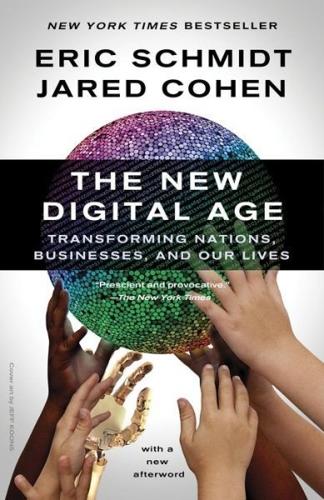
The New Digital Age: Transforming Nations, Businesses, and Our Lives
by
Eric Schmidt
and
Jared Cohen
Published 22 Apr 2013
In the future this adage will broaden to include not just what you say and write, but the websites you visit, who you include in your online network, what you “like,” and what others who are connected to you do, say and share. People will become obsessively concerned about where personal information is stored. A wave of businesses and start-ups will emerge promising to offer solutions, from present-day applications such as Snapchat, which automatically deletes a photo or message after ten seconds, to more creative solutions that also add a layer of encryption and a shorter countdown. At best, such solutions will only mitigate the risk of private information being released more broadly. Part of this is due to counter-innovations such as apps that will automatically take a screenshot of every message and photo sent faster than your brain can instruct your fingers to command your device.
…
Sarkozy, Nicolas satellite positioning Saud, Alwaleed bin Talal al- Saudi Arabia, 2.1, 2.2, 3.1, 4.1, 6.1 “Saudi People Demand Hamza Kashgari’s Execution, The” (Facebook group) Save the Children scale effects Schengen Agreement Scott-Railton, John search-engine optimization (SEO), n secession movements secure sockets layer (SSL) security, 2.1, 2.2, 2.3, 2.4 in autocracies censorship and company policy on, 2.1, 2.2 privacy vs., itr.1, 5.1, 5.2 in schools selective memory self-control self-driving cars, itr.1, 1.1, 1.2 September 11, 2001, terrorist attacks of, 3.1, 5.1 Serbia, 4.1, 6.1 servers Shafik, Ahmed shanzhai network, 1.1 sharia Shia Islam Shia uprising Shiites Shock Doctrine, The (Klein), 7.1n short-message-service (SMS) platform, 4.1, 7.1 Shukla, Prakash Sichuan Hongda SIM cards, 5.1, 5.2, 5.3, 6.1, 6.2, nts.1 Singapore, 2.1, 4.1 Singer, Peter, 6.1, 6.2, 6.3, 6.4, 6.5, 6.6, 6.7, 6.8 singularity SkyGrabber Skype, 2.1, 2.2, 2.3, 3.1, 5.1 sleeping rhythms Slim Helú, Carlos smart phones, itr.1, 1.1, 1.2, 5.1, 5.2, 7.1 in failed states peer-to-peer capability on Snapchat Snoad, Nigel social networking, 2.1, 4.1, 5.1 social-networking profiles social prosthetics social robots “socioeconomically at risk” people Solidarity Somalia, 2.1, 5.1, 5.2, 5.3, 6.1n, 210, 7.1, 7.2, 7.3 Sony South Africa, 4.1, 7.1 South Central Los Angeles Southern African Development Community (SADC) South Korea, 3.1, 3.2 South Sudan Soviet Union, 4.1, 6.1 Spain Speak2Tweet Special Weapons Observation Reconnaissance Detection System (SWORDS), 6.1, 6.2 speech-recognition technology spoofing Spotify Sputnik spyware, 3.1, 6.1 Stanford University statecraft State Department, U.S., 5.1, 7.1 states: ambition of future of Storyful, n Strategic Arms Limitation Talks (SALT) Stuxnet worm, 3.1, 3.2 suborbital space travel Sudan suggestion engines Summit Against Violent Extremism Sunni Web supersonic tube commutes supplements supply chains Supreme Council of the Armed Forces (SCAF) surveillance cameras Sweden switches Switzerland synthetic skin grafts Syria, 2.1, 3.1, 4.1, 4.2 uprising in Syrian Telecommunications Establishment tablets, 1.1, 1.2, 7.1 holographic Tacocopter Tahrir Square, 4.1, 4.2, 4.3 Taiwan Taliban, 2.1, 5.1, 7.1 TALON Tanzania technology companies, 2.1, 3.1 Tehran Telecom Egypt telecommunications, reconstruction of telecommunications companies Télécoms Sans Frontières television terrorism, terrorists, 4.1, 5.1, con.1 chat rooms of connectivity and cyber, 3.1n, 153–5, 5.1 hacking by Thailand Thomson Reuters Foundation thought-controlled robotic motion 3-D printing, 1.1, 2.1, 2.2, 5.1 thumbprints Tiananmen Square protest, 3.1, 4.1 Tibet time zones tissue engineers to-do lists Tor service, 2.1, 2.2, 2.3, 3.1, 5.1n Total Information Awareness (TIA) trade transmission towers transparency, 2.1, 4.1 “trespass to chattels” tort, n Trojan horse viruses, 2.1, 3.1 tsunami Tuareg fighters Tumblr Tunisia, 4.1, 4.2, 4.3, 4.4, 4.5 Turkey, 3.1, 3.2, 4.1, 5.1, 6.1 Tutsis Twa Twitter, 2.1, 2.2, 2.3, 2.4, 2.5, 2.6, 2.7, 3.1, 3.2, 4.1, 4.2, 5.1, 5.2, 6.1, 7.1, 7.2, nts.1 Uganda Uighurs, 3.1, 6.1 Ukraine unemployment UNESCO World Heritage Centre unique identification (UID) program United Arab Emirates, 2.1, 2.2, 2.3 United Kingdom, 2.1, 2.2, 2.3, 3.1 United Nations, 4.1, 5.1, 6.1, 7.1 United Nations Security Council, 3.1n, 214, 7.1 United Russia party United States, 3.1, 3.2, 3.3, 4.1, 5.1, 7.1 engineering sector in United States Agency for International Development (USAID) United States Cyber Command (USCYBERCOM) unmanned aerial vehicles (UAVs), 6.1, 6.2, 6.3, 6.4, 6.5 Ürümqi riots user-generated content Ushahidi vacuuming, 1.1, 1.2 Valspar Corporation Venezuela, 2.1, 2.2, 6.1 verification video cameras video chats video games videos Vietcong Vietnam vigilantism violence virtual espionage virtual governance virtual identities, itr.1, 2.1, 2.2 virtual juvenile records virtual kidnapping virtual private networks (VPNs), 2.1, 3.1 virtual reality virtual statehood viruses vitamins Vodafone, 4.1, 7.1 Vodafone/Raya voice-over-Internet-protocol (VoIP) calls, 2.1, 5.1 voice-recognition software, 1.1, 2.1, 5.1 Voilà VPAA statute, n Walesa, Lech walled garden Wall Street Journal, 97 war, itr.1, itr.2, 6.1 decline in Wardak, Abdul Rahim warfare: automated remote warlords, 2.1, 2.2 Watergate Watergate break-in Waters, Carol weapons of mass destruction wearable technology weibos, 62 Wen Jiabao Wenzhou, China West Africa whistle-blowers whistle-blowing websites Who Controls the Internet?
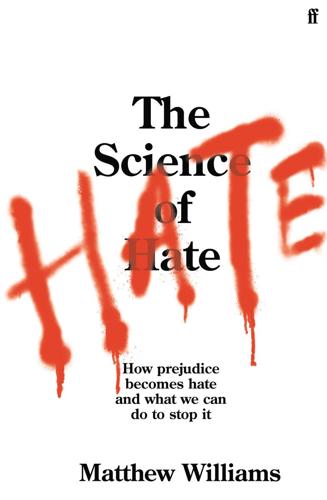
The Science of Hate: How Prejudice Becomes Hate and What We Can Do to Stop It
by
Matthew Williams
Published 23 Mar 2021
Can the social media companies stop it? The short answer is yes, but they may not be willing to do so without being forced. In 2016 the European Commission, Facebook, Microsoft, Twitter and YouTube signed up to a code of conduct on countering illegal hate speech online across EU countries, with Instagram, Google+, Snapchat and Dailymotion joining in 2018.35 By signing they all agreed on rules banning hateful conduct and to introduce mechanisms, including dedicated teams, for the review and possible removal of illegal content within twenty-four hours. It took some time and considerable political pressure for these social media giants to come around the table.
…
Abdallah, Abdalraouf, 1 Abedi, Salman, 1, 2, 3, 4 abortion, 1, 2 Abu Sayyaf Group, 1 abuse, 1, 2, 3, 4, 5 accelerants to hate, 1, 2, 3, 4, 5, 6, 7, 8, 9, 10 accelerationists, 1 addiction, 1, 2, 3, 4 Admiral Duncan bar, 1 adolescence, 1, 2, 3, 4, 5, 6, 7 advertising, 1, 2, 3, 4, 5 African Americans, 1, 2, 3, 4, 5, 6, 7 afterlife, 1, 2 age, 1, 2 aggression: brain and hate, 1, 2, 3, 4, 5; false alarms, 1; group threat, 1, 2, 3, 4, 5, 6; identity fusion, 1; mortality, 1; pyramid of hate, 1; trauma and containment, 1, 2 AI, see artificial intelligence Albright, Jonathan, 1 alcohol, 1, 2, 3, 4, 5, 6, 7, 8 algorithms: far-right hate, 1, 2, 3, 4; filter bubbles and bias, 1, 2; Google, 1, 2, 3; online hate speech, 1, 2, 3, 4, 5, 6; Tay, 1, 2; tipping point, 1, 2; YouTube, 1 Algotransparency.org, 1 Allport, Gordon, 1, 2, 3, 4 Al Noor Mosque, Christchurch, 1 al-Qaeda, 1, 2 Alternative für Deutschland (AfD), 1 alt-right: algorithms, 1, 2; brain and hate, 1; Charlottesville rally, 1, 2; counter-hate speech, 1; definition, 1n; Discord, 1; Facebook, 1, 2, 3; fake accounts, 1; filter bubbles, 1, 2; red-pilling, 1, 2; social media, 1, 2; Trump, 1, 2; YouTube, 1 Alzheimer’s disease, 1 American Crowbar Case, 1 American culture, 1 American Nazi Party, 1, 2 Amodio, David, 1n amygdala: brain and signs of prejudice, 1, 2; brain tumours, 1; disengaging the amygdala autopilot, 1; hate and feeling pain, 1, 2; and insula, 1; neuroscience of hate, 1n, 2, 3, 4; parts that edge us towards hate, 1; parts that process prejudice, 1; prepared versus learned amygdala responses, 1, 2; processing of ‘gut-deep’ hate, 1; recognising facial expressions, 1n, 2; stopping hate, 1, 2; trauma and containment, 1, 2; unlearning prejudiced threat detection, 1 anger, 1, 2, 3, 4, 5, 6, 7, 8 anonymity, 1, 2 anterior insula, 1n Antifa, 1, 2n, 3 anti-gay prejudice, 1, 2, 3, 4, 5, 6, 7, 8 anti-hate initiatives, 1, 2 antilocution, 1 anti-Muslim hate, 1, 2, 3, 4, 5, 6 anti-Semitism, 1, 2, 3, 4, 5, 6 anti-white hate crime, 1 Antonissen, Kirsten, 1, 2 anxiety: brain and hate, 1, 2, 3, 4; harm of hate speech, 1; intergroup contact, 1, 2; subcultures of hate, 1, 2; trauma and containment, 1; trigger events, 1, 2 Arab people, 1, 2, 3, 4, 5, 6 Arbery, Ahmaud, 1 Arkansas, 1, 2 artificial intelligence (AI), 1, 2, 3, 4 Asian Americans, 1, 2 Asian people, 1, 2, 3, 4 assault, 1, 2, 3 asylum seekers, 1, 2, 3, 4 Athens, 1 Atlanta attack, 1 Atran, Scott, 1, 2 attachment, 1 attention, 1, 2, 3 attitudes, 1, 2, 3, 4, 5, 6 Aung San Suu Kyi, 1 austerity, 1 Australia, 1 autism, 1 averages, 1, 2 avoidance, 1, 2, 3 Bali attack, 1 Bangladeshi people, 1 BBC (British Broadcasting Corporation), 1, 2, 3 behavioural sciences, 1, 2 behaviour change, 1, 2, 3 beliefs, 1, 2, 3 Bell, Sean, 1, 2 Berger, Luciana, 1 Berlin attacks, 1 bias: algorithms, 1; brain and hate, 1, 2, 3, 4, 5, 6, 7; filter bubbles, 1; Google Translate, 1; group threat, 1, 2, 3, 4; police racial bias, 1; predicting hate crime, 1; stopping hate, 1, 2, 3; unconscious bias, 1, 2, 3, 4 Bible, 1 Biden, Joe, 1 ‘Big Five’ personality traits, 1 biology, 1, 2, 3, 4, 5, 6, 7 Birstall, 1 bisexual people, 1 Black, Derek, 1, 2 Black, Don, 1, 2, 3 blackface, 1 Black Lives Matter, 1 Black Mirror, 1n black people: author’s brain and hate, 1, 2, 3, 4, 5; brain and signs of prejudice, 1, 2; brain parts that edge us towards hate, 1; brain parts that process prejudice, 1; Charlottesville rally, 1, 2; disengaging the amygdala autopilot, 1; Duggan shooting, 1; feeling pain, 1; Google searches, 1, 2; group threat, 1, 2, 3, 4; online hate speech, 1, 2, 3, 4; police relations, 1, 2; predicting hate crime, 1, 2; prepared versus learned amygdala responses, 1; pyramid of hate, 1, 2, 3n; recognising facial expressions, 1, 2; South Africa, 1; steps to stop hate, 1, 2, 3, 4; trauma and Franklin, 1, 2, 3, 4; trigger events, 1, 2, 3; unconscious bias, 1; unlearning prejudiced threat detection, 1, 2; white flight, 1 BNP, see British National Party Bolsonaro, Jair, 1 Bosnia and Herzegovina, 1, 2 bots, 1, 2, 3, 4, 5 Bowers, Robert Gregory, 1 boys, 1, 2 Bradford, 1 brain: ancient brains in modern world, 1; author’s brain and hate, 1; beyond the brain, 1; the brain and hate, 1; brain and signs of prejudice, 1; brain damage and tumours, 1, 2, 3, 4; brains and unconscious bias against ‘them’, 1; brain’s processing of ‘gut-deep’ hate, 1; defence mechanisms, 1; disengaging the amygdala autopilot, 1; figures, 1; finding a neuroscientist and brain scanner, 1; group threat detection, 1, 2; hacking the brain to hate, 1; hate and feeling pain, 1; locating hate in the brain, 1; neuroscience and big questions about hate, 1; overview, 1; parts that edge us towards hate, 1; parts that process prejudice, 1; prepared versus learned amygdala responses, 1; recognising facial expressions, 1; rest of the brain, 1; signs of prejudice, 1; steps to stop hate, 1, 2; tipping point to hate, 1, 2, 3, 4, 5; trauma and containment, 1, 2; unlearning prejudiced threat detection, 1; where neuroscience of hate falls down, 1 brain imaging: author’s brain and hate, 1; beyond the brain, 1; the brain and hate, 1; brain and signs of prejudice, 1, 2; brain injury, 1, 2; Diffusion MRI, 1; disengaging the amygdala autopilot, 1; finding a neuroscientist and brain scanner, 1; fusiform face area, 1; locating hate in the brain, 1; MEG, 1; neuroscience of hate, 1, 2, 3; parts that process prejudice, 1; prepared versus learned amygdala responses, 1; processing of ‘gut-deep’ hate, 1; subcultures of hate, 1, 2; unconscious bias, 1 brainwashing, 1, 2 Bray, Mark, 1n Brazil, 1, 2, 3 Breivik, Anders, 1, 2 Brexit, 1, 2, 3, 4n, 5, 6, 7, 8, 9 Brexit Party, 1, 2 Brick Lane, London, 1 Britain First, 1, 2 British identity, 1, 2 British National Party (BNP), 1, 2n, 3, 4, 5 Brixton, 1 Broadmoor Hospital, 1, 2 Brooker, Charlie, 1n Brooks, Rayshard, 1 Brown, Katie, 1, 2 Brown, Michael, 1, 2 Brussels attack, 1 Budapest Pride, 1 bullying, 1, 2 Bundy, Ted, 1 burka, 1, 2, 3 Burmese, 1 Bush, George W., 1 Byrd, James, Jr, 1 California, 1, 2n, 3 Caliskan, Aylin, 1 Cambridge Analytica, 1, 2 cancer, 1, 2 Cardiff University Brain Research Imaging Centre (CUBRIC), 1, 2, 3, 4 caregiving motivational system, 1 care homes, 1, 2 Casablanca, 1 cascade effect, 1, 2 categorisation, 1, 2, 3, 4 Catholics, 1 Caucasian Crew, 1 causality, 1, 2 celebrities, 1, 2, 3, 4 censorship, 1, 2 Centennial Olympic Park, Atlanta, 1 Centers for Disease Control (CDC), 1 change blindness, 1 charity, 1, 2, 3 Charlottesville rally, 1, 2, 3n, 4 chatbots, 1, 2, 3 Chauvin, Derek, 1 Chelmsford, 1 Chicago, 1 childhood: attachment issues, 1; child abuse, 1, 2, 3; child grooming, 1; child play, 1; failures of containment, 1, 2, 3, 4; group threat, 1, 2; intergroup contact, 1, 2; learned stereotypes, 1; online hate speech, 1, 2; predicting hate crime, 1; trauma and containment, 1, 2, 3, 4, 5, 6, 7, 8, 9, 10; trigger events, 1, 2; understanding the ‘average’ hate criminal, 1; understanding the ‘exceptional’ hate offender, 1, 2, 3 China, 1, 2, 3, 4 Chinese people, 1, 2, 3 ‘Chinese virus,’ 1, 2 Cho, John, 1 Christchurch mosque attack, 1 Christianity, 1, 2, 3 cinema, 1 citizen journalism, 1 civilising process, 1 civil rights, 1, 2, 3, 4 class, 1, 2 cleaning, 1 climate change, 1, 2 Clinton, Hillary, 1, 2 cognitive behavioural therapy, 1 cognitive dissonance, 1 Cohen, Florette, 1, 2 Cold War, 1 collective humiliation, 1 collective quests for significance, 1, 2 collective trauma, 1, 2 colonialism, 1n, 2 Combat 1, 2 comedies, 1, 2, 3 Communications Acts, 1, 2 compassion, 1, 2, 3 competition, 1, 2, 3, 4, 5, 6, 7, 8 confirmation bias, 1 conflict, 1, 2, 3, 4 conflict resolution, 1, 2, 3, 4, 5 Connectome, 1 Conroy, Jeffrey, 1 Conservative Party, 1, 2, 3 conspiracy theories, 1, 2, 3 contact with others, 1, 2 containment: failures of, 1; hate as container of unresolved trauma, 1; understanding the ‘exceptional’ hate offender, 1, 2, 3 content moderation, 1, 2, 3 context, 1, 2, 3 Convention of Cybercrime, 1 cooperation, 1, 2, 3, 4, 5, 6 Copeland, David, 1, 2, 3, 4, 5, 6, 7 coping mechanisms, 1, 2, 3, 4, 5, 6, 7 Cordoba House (‘Ground Zero mosque’), 1 correction for multiple comparisons, 1, 2n ‘corrective rape’, 1, 2 cortisol, 1 Council of Conservative Citizens, 1n counter-hate speech, 1, 2, 3, 4 courts, 1, 2, 3, 4, 5, 6 COVID-19 pandemic, 1, 2, 3 Cox, Jo, 1, 2, 3 Criado Perez, Caroline, 1 crime, 1, 2, 3, 4, 5, 6, 7 Crime and Disorder Act 1998, 1n crime recording, 1, 2, 3, 4 crime reporting, 1, 2, 3, 4, 5, 6, 7 Crime Survey for England and Wales (CSEW), 1 criminal justice, 1, 2, 3 Criminal Justice Act, 1, 2n criminal prosecution, 1, 2 criminology, 1, 2, 3, 4, 5, 6 cross-categorisation, 1 cross-race or same-race effect, 1 Crusius, Patrick, 1, 2 CUBRIC (Cardiff University Brain Research Imaging Centre), 1, 2, 3, 4 cultural ‘feeding’, 1, 2, 3, 4, 5 cultural worldviews, 1, 2, 3, 4, 5, 6, 7 culture: definitions, 1; group threat, 1, 2, 3; steps to stop hate, 1, 2, 3; tipping point, 1, 2, 3, 4, 5; unlearning prejudiced threat detection, 1 culture machine, 1, 2, 3, 4, 5 culture wars, 1 Curry and Chips, 1 cybercrime, 1 dACC, see dorsal anterior cingulate cortex Daily Mail, 1, 2 Dailymotion, 1 Daily Stormer, 1, 2n Daley, Tom, 1, 2 Darfur, 1 dark matter, 1 death: events that remind us of our mortality, 1; newspapers, 1; predicting hate crime, 1; religion and hate, 1, 2; subcultures of hate, 1, 2; trigger events, 1, 2 death penalty, 1, 2 death threats, 1 decategorisation, 1 De Dreu, Carsten, 1, 2, 3, 4 deep learning, 1, 2 defence mechanisms, 1 defensive haters, 1, 2 dehumanisation, 1, 2, 3, 4, 5, 6 deindividuation, 1, 2 deindustrialisation, 1, 2, 3, 4 Democrats, 1, 2, 3 Denny, Reginald, 1 DeSalvo, Albert (the Boston Strangler), 1 desegregation, 1, 2, 3 Desmond, Matthew, 1 Dewsbury, 1, 2, 3 Diffusion Magnetic Resonance Imaging (Diffusion MRI), 1, 2 diminished responsibility, 1, 2 Director of Public Prosecutions (DPP), 1 disability: brain and hate, 1, 2; group threat, 1, 2, 3, 4, 5, 6; intergroup contact, 1; Japan care home, 1, 2; online hate speech, 1; profiling the hater, 1; suppressing prejudice, 1; victim perception, 1n Discord, 1, 2, 3, 4 discrimination: brain and hate, 1, 2; comedy programmes, 1; Google searches, 1; Japan laws, 1; preference for ingroup, 1; pyramid of hate, 1, 2, 3; questioning prejudgements, 1; trigger events, 1, 2, 3 disgust: brain and hate, 1, 2, 3, 4, 5, 6; group threat detection, 1, 2, 3; ‘gut-deep’ hate, 1, 2; Japan care home, 1; what it means to hate, 1, 2 disinformation, 1, 2, 3 displacement, 1, 2 diversity, 1, 2, 3 dlPFC, see dorsolateral prefrontal cortex domestic violence, 1, 2, 3, 4, 5, 6, 7, 8, 9, 10 Doran, John, 1, 2, 3 dorsal anterior cingulate cortex (dACC), 1, 2, 3n, 4, 5, 6, 7, 8, 9 dorsolateral prefrontal cortex (dlPFC), 1n, 2, 3 Douglas, Mary, Purity and Danger, 1 drag queens, 1 drugs, 1, 2, 3, 4, 5, 6, 7, 8, 9 Duggan, Mark, 1 Duke, David, 1 Dumit, Joe, Picturing Personhood, 1 Durkheim, Emile, 1 Dykes, Andrea, 1 Earnest, John T., 1 Eastern Europeans, 1, 2, 3 Ebrahimi, Bijan, 1, 2, 3, 4, 5, 6 echo chambers, 1, 2n economy, 1, 2, 3, 4, 5, 6 EDL, see English Defence League education, 1, 2, 3, 4 Edwards, G., 1 8chan, 1, 2 elections, 1, 2, 3, 4, 5, 6 electroencephalography, 1n elites, 1 ELIZA (computer program), 1 The Ellen Show, 1 El Paso shooting, 1 Elrod, Terry, 1 Emancipation Park, Charlottesville, 1 Emanuel African Methodist Church, Charleston, 1 emotions: brain and hate, 1, 2, 3, 4n, 5, 6, 7, 8, 9; group threat, 1; subcultures of hate, 1; trigger events and mortality, 1; what it means to hate, 1, 2, 3, 4 empathy: brain and hate, 1, 2, 3, 4, 5, 6; feeling hate together, 1; group threat, 1, 2; steps to stop hate, 1, 2, 3; subcultures of hate, 1; trauma and containment, 1 employment, 1, 2, 3, 4, 5, 6, 7 English Defence League (EDL), 1, 2n, 3 epilepsy, 1, 2, 3, 4, 5 Epstein, Robert, 1 equality, 1, 2 Essex, 1 ethnicity, 1, 2n, 3, 4 ethnic minorities, 1, 2, 3, 4, 5, 6 ethnocentrism, 1 EU, see European Union European Commission, 1, 2 European Digital Services Act, 1 European Parliament, 1, 2 European Social Survey, 1 European Union (EU): Brexit referendum, 1, 2, 3, 4n, 5; Facebook misinformation, 1; group threat, 1, 2; online hate speech, 1, 2, 3; trigger events, 1 Eurovision, 1 evidence-based hate crime, 1 evolution, 1, 2, 3, 4, 5, 6, 7, 8 executive control area: brain and hate, 1, 2, 3, 4, 5, 6, 7, 8; disengaging the amygdala autopilot, 1, 2; extremism, 1; recognising false alarms, 1; trauma and containment, 1; trigger events, 1 exogenous shocks, 1 expert opinion, 1 extreme right, 1, 2, 3, 4, 5 extremism: Charlottesville and redpilling, 1, 2; feeling hate together, 1; online hate speech, 1; perceiving versus proving hate, 1; quest for significance, 1, 2, 3; subcultures of hate, 1, 2, 3, 4, 5, 6, 7; trauma and containment, 1; trigger events, 1, 2, 3 Facebook: algorithms, 1, 2; Charlottesville rally, 1, 2; Christchurch mosque attack, 1; far-right hate, 1, 2, 3, 4, 5; filter bubbles, 1, 2; how much online hate speech, 1, 2; Myanmar genocide, 1; online hate and offline harm, 1, 2, 3; redpilling, 1; stopping online hate speech, 1, 2, 3, 4 facial expression, 1, 2, 3, 4 faith, 1, 2 fake accounts, 1, 2; see also bots fake news, 1, 2, 3, 4 false alarms, 1, 2, 3 Farage, Nigel, 1, 2 far left, 1n, 2, 3, 4 Farook, Syed Rizwan, 1 far right: algorithms, 1, 2, 3, 4; brain injury, 1; Charlottesville rally, 1, 2, 3n, 4; COVID-19 pandemic, 1, 2; Facebook, 1, 2, 3, 4, 5; filter bubbles, 1, 2; gateway sites, 1; group threat, 1, 2; red-pilling, 1; rise of, 1; stopping online hate speech, 1; subcultures of hate, 1, 2, 3, 4, 5; terror attacks, 1, 2, 3; tipping point, 1, 2; trauma and containment, 1, 2, 3, 4n; trigger events, 1, 2; YouTube, 1 fathers, 1, 2, 3 FBI, see Federal Bureau of Investigation fear: brain and hate, 1, 2, 3, 4, 5, 6, 7; feeling hate together, 1; group threat, 1, 2, 3, 4, 5; mortality, 1; online hate speech, 1, 2, 3; steps to stop hate, 1, 2; trauma and containment, 1, 2; trigger events, 1, 2, 3 Federal Bureau of Investigation (FBI), 1, 2, 3, 4, 5, 6, 7 Federation of American Immigration Reform, 1 Ferguson, Missouri, 1 Festinger, Leon, 1 fiction, 1 Fields, Ted, 1 50 Cent Army, 1 ‘fight or flight’ response, 1, 2, 3 films, 1, 2 filter bubbles, 1, 2, 3, 4 Finland, 1, 2, 3, 4, 5, 6 Finsbury Park mosque attack, 1, 2, 3 first responders, 1 Fiske, Susan, 1 Five Star Movement, 1 flashbacks, 1 Florida, 1, 2 Floyd, George, 1, 2, 3 Flynt, Larry, 1 fMRI (functional Magnetic Resonance Imaging), 1, 2, 3, 4, 5, 6, 7 football, 1, 2, 3, 4, 5 football hooligans, 1, 2 Forever Welcome, 1 4chan, 1, 2 Fox News, 1, 2 Franklin, Benjamin, 1 Franklin, Joseph Paul, 1, 2, 3, 4, 5, 6, 7, 8 Fransen, Jayda, 1 freedom fighters, 1, 2 freedom of speech, 1, 2, 3, 4, 5, 6 frustration, 1, 2, 3, 4 functional Magnetic Resonance Imaging (fMRI), 1, 2, 3, 4, 5, 6, 7 fundamentalism, 1, 2 fusiform face area, 1 fusion, see identity fusion Gab, 1 Gadd, David, 1, 2n, 3, 4 Gaddafi, Muammar, 1, 2 Gage, Phineas, 1, 2 galvanic skin responses, 1 Gamergate, 1 gateway sites, 1 gay people: author’s experience, 1, 2, 3; brain and hate, 1, 2; Copeland attacks, 1, 2; COVID-19 pandemic, 1; filter bubbles, 1; gay laws, 1; gay marriage, 1, 2, 3; group associations, 1; group threat, 1, 2, 3, 4, 5; hate counts, 1, 2, 3, 4; physical attacks, 1, 2; profiling the hater, 1; Russia, 1, 2, 3, 4, 5; Section 1, 2, 3, 4; steps to stop hate, 1, 2, 3; trigger events, 1, 2; why online hate speech hurts, 1; see also LGBTQ+ people gay rights, 1, 2, 3, 4 gender, 1, 2, 3, 4, 5, 6, 7 Generation Identity, 1 Generation Z, 1, 2 genetics, 1n, 2, 3 genocide, 1, 2, 3, 4, 5, 6 Georgia (country), 1 Georgia, US, 1, 2, 3, 4 Germany, 1, 2, 3, 4, 5, 6, 7 Gilead, Michael, 1 ginger people, 1 girls, and online hate speech, 1 Gladwell, Malcolm, 1 Global Project Against Hate and Extremism, 1 glucocorticoids, 1, 2 God, 1, 2 God’s Will, 1, 2 Goebbels, Joseph, 1 Google, 1, 2, 3, 4, 5, 6, 7, 8 Google+, 1 Google Translate, 1 goth identity, 1, 2, 3, 4 governments, 1, 2, 3, 4, 5, 6 Grant, Oscar, 1 gravitational waves, 1 Great Recession (2007–9), 1 Great Replacement conspiracy theory, 1 Greece, 1, 2 Greenberg, Jeff, 1, 2, 3 Greene, Robert, 1 grey matter, 1 Grillot, Ian, 1, 2 Grodzins, Morton, 1 grooming, 1, 2, 3 ‘Ground Zero mosque’ (Cordoba House), 1 GroupMe, 1 groups: ancient brains in modern world, 1; brain and hate, 1, 2, 3, 4; childhood, 1; feeling hate together, 1; foundations of prejudice, 1; group threat and hate, 1; identity fusion, 1, 2, 3; intergroup hate, 1; pyramid of hate, 1; reasons for hate offending, 1; steps to stop hate, 1, 2; tipping point, 1, 2, 3, 4; warrior psychology, 1, 2, 3; what it means to hate, 1, 2 group threat, 1; beyond threat, 1; Bijan as the threatening racial other, 1; context and threat, 1; cultural machine, group threat and stereotypes, 1; evolution of group threat detection, 1; human biology and threat, 1; neutralising the perception of threat, 1; overview, 1; society, competition and threat, 1; threat in their own words, 1 guilt, 1, 2, 3, 4 guns, 1, 2 ‘gut-deep’ hate, 1, 2, 3, 4 Haines, Matt, 1 Haka, 1 Halle Berry neuron, 1, 2 harassment, 1, 2, 3, 4, 5 harm of hate, 1, 2, 3, 4, 5, 6, 7 Harris, Brendan, 1 Harris, Lasana, 1 Harris, Lovell, 1, 2, 3, 4 hate: author’s brain and hate, 1; the brain and hate, 1; definitions, 1, 2; feeling hate together, 1; foundations of prejudice and hate, 1, 2, 3; group threat and hate, 1; ‘gut-deep’ hate, 1, 2; hate counts, 1; hate in word and deed, 1; profiling the hater, 1; pyramid of hate, 1; rise of the bots and trolls, 1; seven steps to stop hate, 1; subcultures of hate, 1; tipping point from prejudice to hate, 1; trauma, containment and hate, 1; trigger events and ebb and flow of hate, 1; what it means to hate, 1 hate counts, 1; criminalising hate, 1; how they count, 1; overview, 1; perceiving versus proving hate, 1; police and hate, 1; rising hate count, 1; ‘signal’ hate acts and criminalisation, 1; Sophie Lancaster, 1; warped world of hate, 1 hate crime: author’s experience, 1, 2, 3; brain and hate, 1, 2, 3, 4, 5; definitions, 1; events and hate online, 1; events and hate on the streets, 1, 2; the ‘exceptional’ hate criminal, 1; far-right hate, 1, 2, 3; foundations of prejudice and hate, 1, 2, 3, 4; group threat, 1, 2, 3, 4, 5, 6, 7, 8; hate counts, 1, 2, 3, 4, 5; laws, 1n, 2, 3, 4, 5; number of crimes, 1, 2; online hate speech, 1, 2, 3, 4; predicting hate crime, 1; profiling the hater, 1; steps to stop hate, 1, 2, 3; trauma and containment, 1, 2, 3, 4; trigger events, 1, 2, 3, 4, 5, 6; understanding the ‘average’ hate criminal, 1; understanding the ‘exceptional’ hate offender, 1; what it means to hate, 1, 2, 3 hate groups, 1, 2, 3, 4, 5 hate in word and deed, 1; algorithmic far right, 1; Charlottesville rally, 1, 2, 3n, 4; extreme filter bubbles, 1; game changer for the far right, 1; gateway sites, 1; overview, 1; ‘real life effort post’ and Christchurch, 1; red-pilling, 1 HateLab, 1, 2, 3, 4, 5 hate speech: far-right hate, 1, 2, 3; filter bubbles and bias, 1; harm of, 1; how much online hate speech, 1; Japan laws, 1; pyramid of hate, 1; stopping online hate speech, 1; Tay chatbot, 1; trigger events, 1, 2, 3; why online hate speech hurts, 1 hate studies, 1, 2 ‘hazing’ practices, 1 health, 1, 2, 3, 4 Henderson, Russell, 1 Herbert, Ryan, 1 Hewstone, Miles, 1 Heyer, Heather, 1 Hinduism, 1, 2 hippocampus, 1, 2, 3, 4 history of offender, 1 Hitler, Adolf, 1, 2, 3, 4, 5, 6, 7 HIV/AIDS, 1, 2, 3, 4, 5, 6, 7 hollow mask illusion, 1, 2 Hollywood, 1, 2 Holocaust, 1, 2, 3, 4 Homicide Act, 1n homophobia: author’s experience, 1, 2, 3, 4; brain and hate, 1, 2, 3; evidence-based hate crime, 1; federal law, 1; jokes, 1; online hate speech, 1, 2; Russia, 1, 2; Shepard murder, 1; South Africa, 1; trauma and containment, 1; victim perception of motivation, 1n Homo sapiens, 1 homosexuality: author’s experience, 1; online hate speech, 1; policing, 1; questioning prejudgements, 1; Russia, 1, 2; trauma and containment, 1, 2; see also gay people hooligans, 1, 2 Horace, 1 hormones, 1, 2, 3 hot emotions, 1 hot-sauce study, 1, 2 housing, 1, 2, 3, 4, 5, 6 Huddersfield child grooming, 1 human rights, 1, 2, 3 humiliation, 1, 2, 3, 4, 5, 6 humour, 1, 2 Hungary, 1 hunter-gatherers, 1n, 2 Hustler, 1 IAT, see Implicit Association Test identity: author’s experience of attack, 1; British identity, 1, 2; Charlottesville rally, 1, 2; children’s ingroups, 1; group threat, 1, 2; online hate speech, 1, 2, 3, 4; steps to stop hate, 1, 2 identity fusion: fusion and hateful murder, 1; fusion and hateful violence, 1; fusion and self-sacrifice in the name of hate, 1; generosity towards the group, 1; tipping point, 1, 2; warrior psychology, 1, 2, 3 ideology, 1, 2, 3, 4 illegal hate speech, 1, 2, 3, 4 illocutionary speech, 1 imaging, see brain imaging immigration: Forever Welcome, 1; group threat, 1, 2, 3, 4, 5, 6, 7; hate counts, 1n, 2; HateLab Brexit study, 1; identity fusion, 1; intergroup contact, 1; negative stereotypes, 1; online hate speech, 1; Purinton, 1, 2; trauma and containment, 1, 2, 3; trigger events, 1, 2n, 3, 4, 5, 6, 7; YouTube algorithms, 1 immortality, 1, 2 Implicit Association Test (IAT), 1, 2, 3, 4, 5, 6, 7, 8, 9 implicit prejudice: author’s brain and hate, 1, 2, 3, 4; brain and hate, 1, 2, 3, 4, 5, 6; online hate speech, 1, 2 India, 1 Indonesia, 1 Infowars, 1, 2 Ingersoll, Karma, 1 ingroup: brain and hate, 1, 2, 3, 4; child play, 1; group threat, 1, 2, 3, 4, 5, 6, 7; HateLab Brexit study, 1; identity fusion, 1, 2; pyramid of hate, 1; reasons for hate offending, 1; trigger events, 1, 2, 3; what it means to hate, 1, 2, 3, 4, 5 Instagram, 1, 2, 3 Institute for Strategic Dialogue, 1 institutional racism, 1 instrumental crimes, 1 insula: brain and signs of prejudice, 1, 2, 3; facial expressions, 1, 2; fusiform face area, 1; hacking the brain to hate, 1; hate and feeling pain, 1; neuroscience of hate, 1n, 2, 3, 4, 5; parts that edge us towards hate, 1; parts that process prejudice, 1; processing of ‘gut-deep’ hate, 1, 2 Integrated Threat Theory (ITT), 1, 2, 3 integration, 1, 2, 3, 4 intergroup contact, 1, 2, 3 Intergroup Contact Theory, 1, 2, 3 intergroup hate, 1, 2, 3, 4 internet: algorithms, 1, 2; chatbots, 1; counterhate speech, 1; COVID-19 pandemic, 1; far-right hate, 1, 2, 3, 4, 5, 6, 7; filter bubbles, 1, 2, 3; Google searches, 1; hate speech harm, 1; how much online hate speech, 1; online news, 1; reasons for hate offending, 1; rise of the bots and trolls, 1; stopping online hate speech, 1; tipping point, 1, 2, 3; training the machine to count hate, 1; why online hate speech hurts, 1 interracial relations, 1, 2, 3, 4 intolerance, 1, 2 Iranian bots, 1 Iraq, 1 Irish Republican Army (IRA), 1 ISIS, 1, 2, 3, 4, 5, 6, 7, 8, 9 Islam: group threat, 1; online hate speech, 1, 2, 3, 4, 5; steps to stop hate, 1, 2, 3; subcultures of hate, 1, 2, 3, 4; trigger events, 1, 2, 3 Islamism: group threat, 1; online hate speech, 1, 2, 3, 4; profiling the hater, 1; subcultures of hate, 1, 2, 3; trigger events, 1, 2, 3 Islamophobia, 1, 2, 3, 4 Israel, 1, 2, 3 Italy, 1, 2 ITT, see Integrated Threat Theory James, Lee, 1, 2, 3, 4, 5, 6 Japan, 1, 2, 3 Jasko, Katarzyna, 1 Jefferson, Thomas, 1 Jenny Lives with Eric and Martin, 1 Jewish people: COVID-19 pandemic, 1, 2; far-right hate, 1, 2, 3, 4, 5; filter bubbles, 1; Google searches, 1, 2; group threat, 1; Nazism, 1, 2; negative stereotypes, 1 2 online hate speech, 1; pyramid of hate, 1; questioning prejudgements, 1; ritual washing, 1; subcultures of hate, 1, 2; trauma and Franklin, 1, 2, 3 jihad, 1, 2, 3, 4, 5 jokes, 1, 2, 3, 4, 5, 6, 7 Jones, Alex, 1 Jones, Terry, 1 Josephson junction, 1 Judaism, 1; see also Jewish people Jude, Frank, Jr, 1, 2, 3, 4, 5 Kansas, 1 Kerry, John, 1 Kik, 1 King, Gary, 1 King, Martin Luther, Jr, 1, 2 King, Rodney, 1, 2, 3 King, Ryan, 1 Kirklees, 1, 2 KKK, see Ku Klux Klan Kuchibhotla, Srinivas, 1, 2, 3, 4 Kuchibhotla, Sunayana, 1, 2 Ku Klux Klan (KKK), 1, 2, 3n, 4, 5, 6, 7 Labour Party, 1, 2, 3 Lancaster, Sophie, 1, 2 language, 1, 2, 3, 4, 5, 6, 7 LAPD (Los Angeles Police Department), 1 Lapshyn, Pavlo, 1 Lashkar-e-Taiba, 1 Las Vegas shooting, 1, 2 Latinx people, 1, 2, 3, 4, 5, 6, 7 law: brain and hate, 1, 2, 3; criminalising hate, 1; hate counts, 1, 2, 3; Kansas shooting, 1; limited laws, 1; online hate speech, 1; pyramid of hate, 1 Law Commission, 1 Lawrence, Stephen, 1 learned fears, 1, 2, 3 Leave.EU campaign, 1, 2 Leave voters, 1, 2, 3n Lee, Robert E., 1, 2, 3 left orbitofrontal cortex, 1n, 2n Legewie, Joscha, 1, 2, 3, 4 lesbians, 1, 2 Levin, Jack, 1 LGBTQ+ people, 1, 2, 3, 4, 5, 6, 7, 8, 9, 10, 11, 12, 13, 14, 15, 16, 17; see also gay people LIB, see Linguistic Intergroup Bias test Liberman, Nira, 1 Liberty Park, Salt Lake City, 1, 2 Libya, 1, 2, 3, 4 Light, John, 1 Linguistic Intergroup Bias (LIB) test, 1 Liverpool, 1, 2 Livingstone, Ken, 1, 2 Loja, Angel, 1 London: author’s experience of attack, 1; Copeland nail bombing, 1, 2; Duggan shooting, 1; far-right hate, 1; group threat, 1, 2, 3; online hate speech, 1, 2; Rigby attack, 1; terror attacks, 1, 2, 3, 4, 5, 6 London Bridge attack, 1, 2, 3 London School of Economics, 1 ‘lone wolf’ terrorists, 1, 2, 3, 4 long-term memory, 1, 2, 3, 4 Loomer, Laura, 1 Los Angeles, 1 loss: group threat, 1; subcultures of hate, 1, 2, 3, 4; tipping point, 1; trauma and containment, 1, 2, 3, 4, 5 love, 1, 2 Love Thy Neighbour, 1 Lucero, Marcelo, 1, 2 Luqman, Shehzad, 1 ‘Macbeth effect’, 1 machine learning, 1 Madasani, Alok, 1, 2, 3 Madrid attack, 1, 2 Magnetic Resonance Imaging (MRI): Diffusion MRI, 1, 2; functional MRI, 1, 2, 3, 4, 5, 6, 7 magnetoencephalography (MEG), 1, 2, 3 Maldon, 1 Malik, Tashfeen, 1 Maltby, Robert, 1, 2 Manchester, 1, 2 Manchester Arena attack, 1, 2, 3, 4, 5, 6 marginalisation, 1, 2 Martin, David, 1 Martin, Trayvon, 1, 2 MartinLutherKing.org, 1, 2 martyrdom, 1, 2, 3, 4n masculinity, 1, 2, 3, 4, 5 The Matrix, 1 Matthew Shepard and James Byrd Jr Hate Crimes Prevention Act, 1n, 2n Matz, Sandra, 1 Mauritius, 1 McCain, John, 1 McDade, Tony, 1 McDevitt, Jack, Levin McKinney, Aaron, 1 McMichael, Gregory, 1 McMichael, Travis, 1 media: far-right hate, 1, 2; group threat, 1, 2, 3; steps to stop hate, 1, 2, 3, 4, 5, 6; stereotypes in, 1, 2; subcultures of hate, 1; trigger events, 1 Meechan, Mark, 1 MEG (magnetoencephalography), 1, 2, 3 memory, 1, 2, 3, 4, 5, 6, 7 men, and online hate speech, 1 men’s rights, 1 mental illness, 1, 2, 3, 4, 5, 6 mentalising, 1, 2, 3 meta-analysis, 1 Metropolitan Police, 1 Mexican people, 1, 2, 3, 4 micro-aggressions, 1, 2n, 3, 4, 5, 6 micro-events, 1 Microsemi, 1n Microsoft, 1, 2, 3, 4, 5, 6 micro-targeting, 1, 2 Middle East, 1, 2 migration, 1, 2, 3, 4, 5, 6, 7; see also immigration Milgram, Stanley, 1 military, 1 millennials, 1 Milligan, Spike, 1 Milwaukee, 1, 2, 3 minimal groups, 1 Minneapolis, 1, 2, 3 minority groups: far-right hate, 1, 2; group threat, 1, 2, 3, 4, 5; police reporting, 1; questioning prejudgements, 1; trauma and containment, 1; trigger events, 1, 2 misinformation, 1, 2, 3, 4, 5, 6 mission haters, 1, 2, 3 mobile phones, 1, 2, 3 moderation of content, 1, 2, 3 Moore, Nik, 1 Moore, Thomas, 1 Moores, Manizhah, 1 Moore’s Ford lynching, 1 Moradi, Dr Zargol, 1, 2, 3, 4, 5, 6 Moral Choice Dilemma tasks, 1, 2, 3 moral cleansing, 1, 2, 3 moral dimension, 1, 2, 3, 4 moral outrage, 1, 2, 3, 4, 5 Moroccan people, 1, 2 mortality, 1, 2, 3 mortality salience, 1, 2, 3, 4, 5 Moscow, 1 mosques, 1, 2, 3, 4, 5, 6, 7 Moss Side Blood, 1 mothers, 1, 2, 3, 4, 5, 6 motivation, 1n, 2, 3, 4, 5, 6 Mphiti, Thato, 1 MRI, see Magnetic Resonance Imaging Muamba, Fabrice, 1 multiculturalism, 1, 2, 3, 4 murder: brain injury, 1, 2; group threat, 1, 2, 3; hate counts, 1; identity fusion and hateful murder, 1; police and hate, 1, 2; profiling the hater, 1; trauma and containment, 1, 2, 3, 4, 5 Murdered for Being Different, 1 music, 1, 2, 3 Muslims: COVID-19 pandemic, 1; far-right hate, 1, 2, 3, 4; Google searches, 1; group threat, 1, 2, 3, 4, 5, 6; negative stereotypes, 1; online hate speech, 1, 2; profiling the hater, 1, 2; Salah effect, 1; subcultures of hate, 1, 2, 3; trigger events, 1, 2, 3, 4, 5; and Trump, 1, 2, 3, 4n, 5, 6n Mvubu, Themba, 1 Myanmar, 1, 2 Myatt, David, 1 Nandi, Dr Alita, 1 National Action, 1 National Consortium for the Study of Terrorism and Responses to Terrorism, 1 national crime victimisation surveys, 1, 2 National Front, 1, 2, 3 nationalism, 1, 2 National Socialist Movement, 1, 2, 3, 4 natural experiments, 1, 2 Nature: Neuroscience, 1 nature vs nurture debate, 1 Nazism, 1, 2, 3, 4, 5, 6, 7, 8 NCVS (National Crime Victimisation Survey), 1, 2 negative stereotypes: brain and hate, 1, 2; feeling hate together, 1, 2; group threat, 1, 2, 3, 4, 5, 6; steps to stop hate, 1, 2, 3, 4, 5; tipping point, 1 Nehlen, Paul, 1 neo-Nazis, 1n, 2, 3, 4, 5, 6 Netherlands, 1, 2 Netzwerkdurchsetzungsgesetz (NetzDG) law, 1 neuroimaging, see brain imaging neurons, 1, 2, 3, 4, 5, 6, 7 neuroscience, 1, 2, 3, 4, 5, 6, 7, 8, 9 Newark, 1, 2 news, 1, 2, 3, 4, 5, 6, 7 newspapers, 1, 2, 3, 4 New York City, 1, 2, 3, 4, 5, 6 New York Police Department (NYPD), 1 New York Times, 1, 2 New Zealand, 1 n-grams, 1 Nimmo, John, 1 9/11 attacks, 1, 2, 3, 4, 5, 6, 7 911 emergency calls, 1 Nogwaza, Noxolo, 1 non-independence error, 1, 2n Al Noor Mosque, Christchurch, 1 Northern Ireland, 1 NWA, 1 NYPD (New York Police Department), 1 Obama, Barack, 1n, 2, 3, 4, 5, 6 Occupy Paedophilia, 1 ODIHR, see Office for Democratic Institutions and Human Rights Ofcom, 1 offence, 1, 2, 3, 4 Office for Democratic Institutions and Human Rights (ODIHR), 1, 2 Office for Security and Counter Terrorism, 1 office workers, 1 offline harm, 1, 2 Oklahoma City, 1 O’Mahoney, Bernard, 1 online hate speech: author’s experience, 1; COVID-19 pandemic, 1; far-right hate, 1, 2, 3, 4, 5; hate speech harm, 1; how much online hate speech, 1; individual’s role, 1; law’s role, 1; social media companies’ role, 1; steps to stop hate, 1; tipping point, 1, 2; training the machine to count hate, 1; trigger events, 1 Ono, Kazuya, 1 optical illusions, 1 Organization for Human Brain Mapping conference, 1 Orlando attack, 1 Orwell, George, Nineteen Eighty-Four, 1 Osborne, Darren, 1 ‘other’, 1, 2, 3, 4, 5, 6 Ottoman Empire, 1 outgroup: author’s brain and hate, 1, 2, 3; brain and hate, 1, 2, 3, 4, 5, 6, 7; child interaction and play, 1, 2; evolution of group threat detection, 1; feeling hate together, 1; group threat, 1, 2, 3, 4, 5, 6; ‘gut-deep’ hate, 1; HateLab Brexit study, 1; human biology and threat, 1; identity fusion, 1; prejudice formation, 1; profiling the hater, 1; push/pull factor, 1; pyramid of hate, 1; society, competition and threat, 1; steps to stop hate, 1, 2; tipping point, 1; trauma and containment, 1, 2, 3, 4, 5; trigger events, 1, 2, 3, 4, 5, 6, 7, 8 outliers, 1 Overton window, 1, 2, 3, 4 oxytocin, 1, 2, 3, 4 Paddock, Stephen, 1 Paddy’s Pub, Bali, 1 paedophilia, 1, 2, 3, 4, 5 page rank, 1 pain, 1, 2, 3, 4, 5, 6, 7 Pakistani people, 1, 2, 3, 4, 5 Palestine, 1 pandemics, 1, 2, 3, 4 Papua New Guinea, 1, 2, 3 paranoid schizophrenia, 1, 2 parents: caregiving, 1; subcultures of hate, 1; trauma and containment, 1, 2, 3, 4, 5; trigger events, 1, 2, 3 Paris attack, 1 Parsons Green attack, 1, 2 past experience: the ‘average’ hate criminal, 1; the ‘exceptional’ hate criminal, 1; trauma and containment, 1 perception-based hate crime, 1, 2 perception of threat, 1, 2, 3, 4, 5 perpetrators, 1, 2 personal contact, 1, 2 personality, 1, 2, 3 personality disorder, 1, 2 personal safety, 1, 2 personal significance, 1 perspective taking, 1, 2 PFC, see prefrontal cortex Philadelphia Police Department, 1 Philippines, 1 physical attacks, 1, 2, 3, 4, 5, 6, 7, 8 play, 1 Poland, 1, 2, 3 polarisation, 1, 2, 3, 4, 5 police: brain and hate, 1, 2; Duggan shooting, 1; group threat, 1, 2, 3; and hate, 1; NYPD racial bias, 1; online hate speech, 1, 2, 3, 4; perceiving versus proving hate, 1; police brutality, 1, 2, 3, 4; predicting hate crime, 1; recording crime, 1, 2, 3, 4; reporting crime, 1, 2, 3; rising hate count, 1, 2, 3; ‘signal’ hate acts and criminalisation, 1; steps to stop hate, 1, 2, 3; use of force, 1 Polish migrants, 1 politics: early adulthood, 1; far-right hate, 1, 2; filter bubbles and bias, 1; group threat, 1, 2, 3; online hate speech, 1, 2; seven steps to stop hate, 1, 2, 3, 4; trauma and containment, 1; trigger events, 1, 2, 3, 4, 5; Trump election, 1, 2 populism, 1, 2, 3, 4, 5 pornography, 1 Portugal, 1, 2 positive stereotypes, 1, 2 post-traumatic stress disorder (PTSD), 1, 2, 3, 4, 5 poverty, 1, 2, 3 Poway synagogue shooting, 1 power, 1, 2, 3, 4, 5 power law, 1 predicting the next hate crime, 1 prefrontal cortex (PFC): brain and signs of prejudice, 1; brain injury, 1; disengaging the amygdala autopilot, 1; feeling pain, 1; ‘gut-deep’ hate, 1; prejudice network, 1; psychological brainwashing, 1; recognising false alarms, 1; salience network, 1; trauma and containment, 1; trigger events, 1; unlearning prejudiced threat detection, 1, 2 prehistoric brain, 1, 2 prehistory, 1, 2 prejudgements, 1 prejudice: algorithms, 1; author’s brain and hate, 1, 2, 3, 4, 5, 6, 7; brain and hate, 1, 2, 3, 4, 5, 6, 7; brain and signs of prejudice, 1; cultural machine, 1; far-right hate, 1, 2; filter bubbles and bias, 1; foundations of, 1; Google, 2; group threat, 1, 2, 3, 4, 5, 6, 7, 8, 9; human biology and threat, 1; neuroscience of hate, 1, 2; online hate speech, 1, 2, 3; parts that process prejudice, 1; prejudice network, 1, 2, 3, 4; prepared versus learned amygdala responses, 1; pyramid of hate, 1; releasers, 1, 2; steps to stop hate, 1, 2, 3, 4; tipping point from prejudice to hate, 1; trauma and containment, 1, 2, 3, 4, 5; trigger events, 1, 2, 3, 4, 5, 6, 7, 8; Trump, 1, 2; unconscious bias, 1; unlearning prejudiced threat detection, 1; what it means to hate, 1, 2, 3, 4, 5 prepared fears, 1, 2 Prisoner’s Dilemma, 1 profiling the hater, 1 Proposition 1, 2 ProPublica, 1n, 2 prosecution, 1, 2, 3 Protestants, 1 protons, 1 psychoanalysis, 1 psychological development, 1, 2, 3, 4 psychological profiles, 1 psychological training, 1 psychology, 1, 2, 3, 4 psychosocial criminology, 1, 2 psy-ops (psychological operations), 1 PTSD, see post-traumatic stress disorder Public Order Act, 1 pull factor, 1, 2, 3, 4, 5 Pullin, Rhys, 1n Purinton, Adam, 1, 2, 3, 4, 5, 6, 7 push/pull factor, 1, 2, 3, 4, 5, 6 pyramid of hate, 1, 2 Q …, 1 al-Qaeda, 1, 2 quality of life, 1 queer people, 1, 2 quest for significance, 1, 2, 3 Quran burning, 1 race: author’s brain and hate, 1, 2, 3, 4; brain and hate, 1, 2, 3, 4, 5, 6, 7; brain and signs of prejudice, 1; far-right hate, 1, 2, 3; Google searches, 1; group threat, 1, 2, 3, 4, 5, 6, 7, 8, 9, 10; hate counts, 1, 2, 3; online hate speech, 1; predicting hate crime, 1; pyramid of hate, 1; race relations, 1, 2, 3; race riots, 1, 2; race war, 1, 2, 3, 4, 5; steps to stop hate, 1, 2, 3; trauma and containment, 1, 2, 3, 4n, 5, 6; trigger events, 1, 2; unconscious bias, 1; unlearning prejudiced threat detection, 1 racism: author’s experience, 1; brain and hate, 1, 2, 3, 4, 5, 6; far-right hate, 1, 2; group threat, 1, 2, 3, 4, 5, 6, 7, 8; Kansas shooting, 1; NYPD racial bias, 1; online hate speech, 1, 2, 3, 4; steps to stop hate, 1n, 2, 3; Tay chatbot, 1; trauma and containment, 1, 2, 3, 4, 5, 6, 7; Trump election, 1; victim perception of motivation, 1n; white flight, 1 radicalisation: far-right hate, 1, 2, 3; group threat, 1; subcultures of hate, 1, 2, 3, 4, 5; trigger events, 1 rallies, 1, 2, 3; see also Charlottesville rally Ramadan, 1, 2 rape, 1, 2, 3, 4, 5 rap music, 1 realistic threats, 1, 2, 3, 4, 5 Rebel Media, 1 rebels, 1 recategorisation, 1 recession, 1, 2, 3, 4, 5 recommendation algorithms, 1, 2 recording crime, 1, 2, 3, 4 red alert, 1 Reddit, 1, 2, 3, 4 red-pilling, 1, 2, 3, 4 refugees, 1, 2, 3, 4, 5 rejection, 1, 2, 3, 4, 5, 6 releasers of prejudice, 1, 2 religion: group threat, 1, 2, 3; homosexuality, 1; online hate speech, 1, 2, 3; predicting hate crime, 1; pyramid of hate, 1; religion versus hate, 1; steps to stop hate, 1, 2; subcultures of hate, 1, 2; trauma and containment, 1n, 2; trigger events, 1, 2, 3, 4, 5; victim perception of motivation, 1n reporting crimes, 1, 2, 3, 4, 5, 6, 7 repression, 1 Republicans, 1, 2, 3, 4, 5 research studies, 1 responsibility, 1, 2, 3 restorative justice, 1 retaliatory haters, 1, 2, 3 Reuters, 1 Rieder, Bernhard, 1 Rigby, Lee, 1 rights: civil rights, 1, 2, 3, 4; gay rights, 1, 2, 3, 4; human rights, 1, 2, 3; men’s rights, 1; tipping point, 1; women’s rights, 1, 2 right wing, 1, 2, 3, 4, 5, 6; see also far right Right-Wing Authoritarianism (RWA) scale, 1 riots, 1, 2, 3, 4 risk, 1, 2, 3 rites of passage, 1, 2 rituals, 1, 2, 3 Robb, Thomas, 1 Robbers Cave Experiment, 1, 2, 3, 4, 5, 6 Robinson, Tommy (Stephen Yaxley-Lennon), 1, 2, 3, 4 Rohingya Muslims, 1, 2 Roof, Dylann, 1, 2 Roussos, Saffi, 1 Rudolph, Eric, 1 Rushin, S,, 1n Russia, 1, 2, 3, 4, 5, 6, 7, 8 Russian Internet Research Agency, 1 RWA (Right-Wing Authoritarianism) scale, 1 Rwanda, 1 sacred value protection, 1, 2, 3, 4, 5, 6, 7, 8 Saddam Hussein, 1 safety, 1, 2 Sagamihara care home, Japan, 1, 2 Salah, Mohamed, 1, 2, 3 salience network, 1, 2 salmon, brain imaging of, 1 Salt Lake City, 1 same-sex marriage, 1, 2 same-sex relations, 1, 2, 3 San Bernardino attack, 1n, 2, 3 Scanlon, Patsy, 1 scans, see brain imaging Scavino, Dan, 1n schizophrenia, 1, 2, 3, 4 school shootings, 1, 2 science, 1, 2, 3 scripture, 1, 2 SDO, see Social Dominance Orientation (SDO) scale Search Engine Manipulation Effect (SEME), 1 search queries, 1, 2, 3, 4 Second World War, 1, 2, 3 Section 1, Local Government Act, 1, 2, 3 seed thoughts, 1 segregation, 1, 2, 3 seizures, 1, 2, 3 selection bias problem, 1n self-defence, 1, 2 self-esteem, 1, 2, 3, 4 self-sacrifice, 1, 2, 3 Senior, Eve, 1 serial killers, 1, 2, 3 7/7 attack, London, 1 seven steps to stop hate, 1; becoming hate incident first responders, 1; bursting our filter bubbles, 1; contact with others, 1; not allowing divisive events to get the better of us, 1; overview, 1; putting ourselves in the shoes of ‘others’, 1; questioning prejudgements, 1; recognising false alarms, 1 sexism, 1, 2 sexual orientation, 1, 2, 3, 4, 5, 6, 7 sexual violence, 1, 2, 3, 4, 5 sex workers, 1, 2, 3, 4 Shakespeare, William, Macbeth, 1 shame, 1, 2, 3, 4, 5, 6, 7, 8, 9 shared trauma, 1, 2, 3 sharia, 1, 2 Shepard, Matthew, 1, 2 Sherif, Muzafer, 1, 2, 3, 4, 5, 6, 7 shitposting, 1, 2, 3n shootings, 1, 2, 3, 4, 5, 6, 7, 8 ‘signal’ hate acts, 1 significance, 1, 2, 3 Simelane, Eudy, 1 skin colour, 1, 2, 3n, 4, 5, 6, 7 Skitka, Linda, 1, 2 slavery, 1 Slipknot, 1 slurs, 1, 2, 3, 4, 5, 6 Snapchat, 1 social class, 1, 2 social desirability bias, 1, 2 Social Dominance Orientation (SDO) scale, 1 social engineering, 1 socialisation, 1, 2, 3, 4, 5 socialism, 1, 2 social media: chatbots, 1; COVID-19 pandemic, 1; far-right hate, 1, 2, 3, 4; filter bubbles and bias, 1; HateLab Brexit study, 1; online hate speech, 1, 2, 3, 4, 5; online news, 1; pyramid of hate, 1; steps to stop hate, 1, 2, 3; subcultures of hate, 1; trigger events, 1, 2; see also Facebook; Twitter; YouTube Social Perception and Evaluation Lab, 1 Soho, 1 soldiers, 1n, 2, 3 Sorley, Isabella, 1 South Africa, 1 South Carolina, 1 Southern Poverty Law Center, 1n, 2 South Ossetians, 1 Soviet Union, 1, 2 Spain, 1, 2, 3 Spencer, Richard B., 1 Spengler, Andrew, 1, 2, 3, 4 SQUIDs, see superconducting quantum interference devices Stacey, Liam, 1, 2 Stanford University, 1 Star Trek, 1, 2, 3 statistics, 1, 2, 3, 4, 5, 6, 7, 8 statues, 1 Stephan, Cookie, 1, 2 Stephan, Walter, 1, 2 Stephens-Davidowitz, Seth, Everybody Lies, 1 Stereotype Content Model, 1 stereotypes: brain and hate, 1, 2, 3, 4, 5, 6, 7; cultural machine, group threat and stereotypes, 1; definitions, 1; feeling hate together, 1, 2; group threat, 1, 2, 3, 4; homosexuality, 1; NYPD racial bias, 1; steps to stop hate, 1, 2, 3, 4, 5; study of prejudice, 1; tipping point, 1; trigger events, 1 Stoke-on-Trent, 1, 2 Stormfront website, 1, 2, 3 storytelling, 1 stress, 1, 2, 3, 4, 5, 6, 7, 8 striatum, 1, 2, 3n, 4 subcultures, 1, 2, 3, 4, 5 subcultures of hate, 1; collective quests for significance and extreme hate, 1; extremist ideology and compassion, 1; fusion and generosity towards the group, 1; fusion and hateful murder, 1; fusion and hateful violence, 1; fusion and self-sacrifice in the name of hate, 1; quest for significance and extreme hatred, 1; religion/belief, 1; warrior psychology, 1 subhuman, 1, 2 Sue, D.
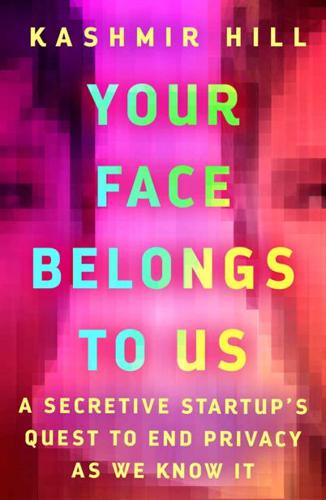
Your Face Belongs to Us: A Secretive Startup's Quest to End Privacy as We Know It
by
Kashmir Hill
Published 19 Sep 2023
The huge screens covering every wall were mostly window dressing, Gooty admitted, more for visitors and police leaders who dropped in than for the RTCC detectives, who relied primarily on their computers. One screen was displaying Snap Map, a service of the social video company Snap, available for anyone to access, that showed geographically tagged Snapchats recently posted by local users. The ones from Ultra that weekend were mostly frenetic shots of the crowd dancing under strobe lights, the Snap-using fans themselves becoming additional surveillance cameras. “This generation posts everything,” one detective said. “It’s great for police work.” One time, someone had posted a Snap of someone else hitting an officer with a skateboard.
…
See also Soviet Union S Salem, Mohammed, 171–174 Sampras, Pete, 104 Saverin, Eduardo, 94 Scalia, Antonio, 306n206 Scalzo, David author’s contact with, xv frustrations of, 188–189 investment in Clearview from, 111–112, 113, 116–117, 118–120 ScanAmerica, 270–271n44 SceneTap, 122 Schemm, Martin, 304n192 Schmidt, Eric, 27, 102–103, 145 Schneiderman, Henry, 103–106, 108–109 Schneier, Bruce, 61, 65 Schwartz, Richard Abrams and, 205–206 attempts to contact, 160, 213 background of, 27–29 Besson and, 128, 129 early plans of, 31, 33–34 FindFace and, 220 investors and, 116 Johnson and, 95, 247–248 law enforcement and, 132–133 Linden and, 161 Lynch and, 88, 89–90, 91, 92, 93 Montana and, 114 NYPD and, 129, 130, 131 opposition and, 138 Orbán and, 56 sale to businesses and, 187 Scalzo and, 111, 113, 118, 188–189 Smartcheckr and, 52, 72, 79, 89, 94 Ton-That and, 29–30 Waxman and, 80 Science, Policy, and the Value-Free Ideal (Douglas), 279n74 scraping Abrams case and, 206, 208–209 Bedoya and, 144, 241 Borthwick and, 113 description of, 58 efforts to block, 58, 117–118, 165 Fawkes and, 242 Grossenbacher and, 194–195 LinkedIn and, 117–118, 165 Smartcheckr and, 92 Ton-That’s use of, 78–79, 81, 116, 133, 162 Venmo and, 78–79 Vermont lawsuit and, 205 Search King, 306n206 Secret Service, 247 security theater, 65 Seeking, 201 Sejnowski, Terry, 268n37 self-driving cars, 42 selfies, as password alternative, 31 Semmelweis, Ignaz, 250–251 SenseTime, 226, 240, 242 September 11 attacks, 28, 64, 235 Sequoia Capital, 113 sex workers, 197–199, 221–222 Sherman, Rob, 144 Shirley cards, 179 ShopperTrak, 242 ShotSpotter, 232–233, 234 Showing Up for Racial Justice, 57 Shteyngart, Gary, 34 Six Flags amusement park, 151–152 Slack, 10 Slashdot, 104 Smartcheckr contractors for, 81 DeploraBall and, 55, 56–57 development of, 73–79 founding of, 52–53 Hungary and, 55–56, 57–59 investment efforts and, 80, 89 lack of office for, 72 Lynch and, 90–93 MegaFace and, 242 name change for, 162 white nationalism and, 94 winding down of, 95, 249 smartphone economy, 6 smartphones data brokers and, 204 Franken and, 141 iPhone, ix, 6, 9, 109 tracking and, 226 ubiquity of, 36 unlocking and, 109, 142 Smith, Brad, 239 Snap Map, 232 Snapchats, 232 Snowden, Edward, 149 social media, scraping and, 58, 92. See also individual platforms Society of the Mind, The (Minsky), 270n44 Solove, Daniel, 126 Sony, 151 Soros, George, 57 South Wales Police, 219 Southern Poverty Law Center, 11, 50 Soviet Union, 42.

Tools of Titans: The Tactics, Routines, and Habits of Billionaires, Icons, and World-Class Performers
by
Timothy Ferriss
Published 6 Dec 2016
All full podcast episodes can be found at fourhourworkweek.com/podcast. Just search the guest’s name, and the extended audio, complete show notes, links, and resources will pop up like warm toast on a cold morning. In nearly every guest’s profile, I indicate where you can best interact with them on social media: TW = Twitter, FB = Facebook, IG = Instagram, SC = Snapchat, and LI = LinkedIn. Your Send-off—The 3 Tools that Allow All the Rest Siddhartha by Hermann Hesse is recommended by many guests in this book. There is one specific takeaway that Naval Ravikant (page 546) has reinforced with me several times on our long walks over coffee. The protagonist, Siddhartha, a monk who looks like a beggar, has come to the city and falls in love with a famous courtesan named Kamala.
…
Evernote has roughly 150 million users, and I personally use it at least 10 times a day. It is my external brain for capturing all the information, documents, online articles, lists, etc., in my life. It was used to capture all the research for this book. Phil is also a managing director at General Catalyst, a venture capital firm that has invested in companies such as Airbnb, Snapchat, Stripe, and Warby Parker. Phil’s roster of mentors blows my mind, as evidenced in this profile. ✸ Who’s the first person who comes to mind when you think of the word “successful”? “The first thing that popped into my mind when you said ‘successful’ was [the] iPhone. . . . I guess I don’t really think of people as ‘successful.’ . . .
…
A Shared Obsession The book Surely You’re Joking, Mr. Feynman! by Richard P. Feynman: “If you ever meet me in person, I have an extra copy because it’s just that amazing.” ✸ What is the worst advice you see or hear given in your trade or area of expertise? “That you should prioritize growing your social following (Instagram, FB, Twitter, Snapchat, YouTube). Grow things that you can fully control that directly affect sales, like your email list. ‘Likes’ don’t pay the bills. Sales do.” ✸ Who are three people or sources you’ve learned from—or followed closely—in the last year? Andrew Chen (Growth team at Uber), Tomasz Tunguz (venture capitalist and software as a service [SaaS] expert), Jonathan Siegel (chairman of Earth Class Mail) For Hiring Well—“Who?”
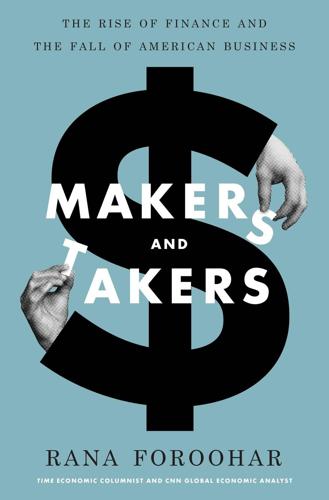
Makers and Takers: The Rise of Finance and the Fall of American Business
by
Rana Foroohar
Published 16 May 2016
Moreover, when that style is imposed on Silicon Valley firms, they typically falter (think of John Sculley, the Wharton MBA who made the ill-fated decision to oust Steve Jobs after his first tenure at Apple, or the reign of Carly Fiorina at HP, during which that company’s stock lost half its value). One of the scariest trends in business these days is the increased movement of MBAs and finance types into the technology industry. They now are bringing their focus on financial engineering and balance sheet manipulation to firms such as Google, Apple, Facebook, Yahoo, and Snapchat—a shift that, if history is any indicator, doesn’t bode well for the future of such firms. Why has business education failed business? Why has it fallen so much in love with finance and the ideas it espouses? It’s a problem with deep roots, which have been spreading for decades. It encompasses issues like the rise of neoliberal economic views as a challenge to the postwar threat of socialism.
…
True enough; yet the mercurial nature of the tech business makes it imperative for companies like Apple and IBM, which depend on innovation for growth, to save as much as possible in order to stay ahead of unexpected competitors, rather than disgorging all their free cash to investors. Even a few years ago, who could have predicted the rise of companies like Facebook, Snapchat, or WhatsApp? In the technology industry in particular, as well as in our increasingly digital and information-oriented economy as a whole, new game-changing companies can appear overnight. Business models can change in a nanosecond. Industries can be completely disrupted not just over many years but within months or even weeks.

Competition Overdose: How Free Market Mythology Transformed Us From Citizen Kings to Market Servants
by
Maurice E. Stucke
and
Ariel Ezrachi
Published 14 May 2020
Even if they are potentially addictive, so too are many other substances and activities, like caffeine, nicotine, alcohol, prescription drugs, cannabis, gambling, pornography, sex, working, exercising, pain seeking, and shopping.108 And we can take relatively easy steps to reduce the apps’ allure, like changing the phone’s screen to grayscale,109 turning off notifications and sounds, abandoning Snapchat streaks, deleting addictive apps, keeping our phone in our pocket or the other room instead of checking it obsessively, and turning off our phone’s location tracker. Google even allows you to choose “the privacy settings that are right for you with your Privacy Checkup.”110 Facebook states, “You’re In Charge” and “in control of your Facebook experience.”111 Nor are advertisers forced to advertise with Google’s and Facebook’s networks.
…
But I Can’t Stay Silent about What’s Happening,” Time, January 17, 2019, https://time.com/5505441. 42.McNamee, “I Mentored Mark Zuckerberg.” 43.McNamee, “I Mentored Mark Zuckerberg” (“Every action a user took gave Facebook a better understanding of that user—and of that user’s friends—enabling the company to make tiny ‘improvements’ in the user experience every day, which is to say it got better at manipulating the attention of users”); Roger McNamee, Zucked: Waking Up to the Facebook Catastrophe (New York: Penguin Press, 2019), 9, 62–63, 98–101. 44.McNamee, Zucked, 103. 45.Chang Liu and Jianling Ma, “Social Support Through Online Social Networking Sites and Addiction among College Students: The Mediating Roles of Fear of Missing Out and Problematic Smartphone Use,” Current Psychology (2018), https://doi.org/10.1007/s12144-018-0075-5. 46.Zephoria Digital Marketing, “The Top 20 Valuable Facebook Statistics—Updated April 2019,” accessed April 30, 2019, https://zephoria.com/top-15-valuable-facebook-statistics/. 47.Todd Clarke, “22+ Instagram Stats That Marketers Can’t Ignore This Year,” Hootsuite Blog, March 5, 2019, https://blog.hootsuite.com/instagram-statistics/. 48.Rani Molla and Kurt Wagner, “People Spend Almost as Much Time on Instagram as They Do on Facebook,” Recode, June 25, 2018, https://www.vox.com/2018/6/25/17501224/instagram-facebook-snapchat-time-spent-growth-data (data for Android users). 49.Facebook Inc., Third Quarter 2018 Results Conference Call (October 30, 2018), https://s21.q4cdn.com/399680738/files/doc_financials/2018/Q3/Q318-earnings-call-transcript.pdf. 50.Rayna Sariyska et al., “The Motivation for Facebook Use—Is It a Matter of Bonding or Control over Others?

AI 2041: Ten Visions for Our Future
by
Kai-Fu Lee
and
Qiufan Chen
Published 13 Sep 2021
In parallel, efforts to “undork” the AR/VR into glasses-like hardware were premature and also failed. Google Glass and Snapchat Spectacles were unsuccessful for several reasons. Core among them was that such miniaturized products no longer delivered the HoloLens high-fidelity experience. Technical limitations will ultimately be overcome. Every year in the past five, bandwidth, frame rate, resolution, and dynamic range all improved significantly, while hardware has become lighter and cheaper. Microsoft HoloLens could become lighter and cheaper, or the Snapchat Spectacles may become more powerful. Either way, we will arrive at a high-quality lightweight pair of glasses.

I Want to Be Where the Normal People Are
by
Rachel Bloom
Published 17 Nov 2020
Nevertheless, it’s worth a try. So stop reading this book and get cracking on re-creating your bully’s parents’ first date! Method #4: Stop cyberbullying in its tracks. Thank God social media wasn’t a thing when I was in middle school back in 1999. I shudder to think of all the Lois Lowry book review videos I would have Snapchatted while using a Mini-Me face filter. But social media is a reality now, and as you’re aware it’s one of the main tools used by bullies. To combat this head-on, the only real fix is to completely get off social media. But don’t worry: Getting rid of social media isn’t uncool; it’s called “going on a cleanse.”

Fall Out: A Year of Political Mayhem
by
Tim Shipman
Published 30 Nov 2017
The area where Hill’s loathing of the Cameroon playbook had most impact was the Mayites’ belief that social media was a gimmick ill-matched to the prime minister’s serious public image. The stance, which stopped May commenting on Twitter on every banal development in public life, had virtue in government but was a serious impediment to campaigning during an election where platforms like Facebook, Twitter, Instagram and Snapchat had long replaced party political broadcasts and billboards as the main means of conveying a message to voters. In 2015 the Tories had won the social media war with a better-funded and better-supported Facebook operation. Team May did not even try to compete with Jeremy Corbyn. ‘It wasn’t that they didn’t want it,’ a senior figure in the campaign said, ‘it was worse than that – they hated it.
…
Grant Shapps, the party chairman in 2015, bemoaned how his efforts had been maligned: ‘Number 10 appeared to believe they could win 2017 entirely as an air war. But they’d forgotten that the unexpected win in 2015 saw 100,000 volunteers of Team 2015 knocking on doors. The same activists also did huge amounts of social media all over Facebook, using Snapchat filters and the like. It was Momentum before Momentum was even invented. Yet by 2017 the campaign seemed to believe they could do away with activists on the ground and replace them with even more Theresa May – and forgo activists tweeting and replace them with centrally-purchased social media. The result wasn’t authentic, and failed to bring the campaign to life.
…
Within twenty-four hours they got Facebook adverts about the state of the health service.13 Labour also devised a phone-banking app where an activist could dial in from home, be connected to a potential Labour voter and make their case from a prepared script. The apogee of Labour’s online audacity came on the Monday of election week, when the party paid £100,000 to place an advert with all seven million users of Snapchat, the most popular app with young voters. More than one million clicked on the link provided which told them where their polling station was. ‘It was just a turnout mechanism. We’ve never spent that money before on a single thing aimed at young voters,’ a Southside source said. ‘It really worked.’

Amazon Unbound: Jeff Bezos and the Invention of a Global Empire
by
Brad Stone
Published 10 May 2021
That year, AWS had a 70 percent growth rate and 19.2 percent operating margin, compared to the North American retail group’s 25 percent growth rate and 2.2 percent operating margin. AWS was gushing cash, even as it rapidly consumed most of it to build even more computing capacity and keep up with the fast-growing internet companies like Snapchat that were piling onto its servers. This reporting was a huge surprise for the analysts and investors who monitored and scrutinized Amazon, and likely even a bigger one for Microsoft, Google, and the rest of the enterprise computing world. Analyst Ben Thompson facetiously called that April 2015 earnings report “one of the technology industry’s biggest and most important IPOs.”
…
Heyman Spirit of Service Award, 343 Samsung, 38, 77 Sanchez, Eleanor, 325–27, 346–47 Sanchez, Lauren, 136, 310, 325–28, 382, 383, 403, 405 Bezos’s meeting of, 326 Bezos’s relationship with, 17, 283, 318–19, 321–22, 324, 326–28, 344–47 marriage to Whitesell, 136, 325–28 National Enquirer story on Bezos’s relationship with, 17, 319, 328–42, 344 Sanchez, Michael, 325–30, 332–36, 338, 340, 342, 345–58 Sanchez, Paul, 325–26 Sanchez, Ray, 325 Sandberg, Sheryl, 251 Sanders, Bernie, 355, 356 SAP America, 360 satellites, 404 Saudi Arabia, 17, 321, 340, 342–45, 347 Saunders, Paul, 372–73, 376 Sawant, Kshama, 291–92, 303 Schmidt, Eric, 88, 193 Schoettler, John, 290, 299, 303, 304, 312 Schultz, Howard, 6 Schwarzenegger, Arnold, 328 Scott, MacKenzie (formerly Bezos), 5, 12, 15–17, 22, 41, 124, 136, 143, 144, 154, 180, 244, 245, 269, 322–25 Bystander Revolution and, 323–24, 346 divorce of, 16–17, 318–21, 334, 345, 346, 349 divorce settlement of, 346 Giving Pledge and, 346 name change of, 346 philanthropy of, 323–24, 346, 402–3 Traps, 64 remarriage of, 403 Seattle, Wash., 289–95, 303–5 Amazon headquarters in, see Amazon headquarters in Seattle Bellevue, 304, 305 Employee Hours Tax in, 303–5 Seattle Times, 290 SEC (Securities and Exchange Commission), 7 September 11 terrorist attacks, 117 Sequoia, 192 Service Merchandise, 214 Seymour, Greg, 276 Shanghai Snow, 153 Shark Tank, 170, 374 Shimmer, 22–23 Shopify, 378 Shotwell, Gwynne, 265, 282 Showtime, 140 Shriver, Maria, 136 Silicon Valley, 6, 22, 48, 96, 98, 111, 129, 187, 234, 252, 253, 290, 295 see also big tech companies Simons, Joseph, 366 Simpson, Andrea, 329–30, 332, 338 Singer, Marty, 334, 337–39 Siri, 26, 27, 30, 32, 34 Sirosh, Joseph, 54 60 Minutes, 233, 397 SKDK, 311, 314 Skyfall, 252 Slifka, Janet, 42 Smalls, Chris, 394–95, 397 Smart, Bradford, 111 Smart & Final, 192 smartphones, 38–41, 77, 92 Fire Phone, 2, 13, 15, 22, 33, 38–42, 45, 46, 58, 70, 95, 189, 382 iPhone, see iPhone smart speakers, 50 Echo, see Amazon Echo Google Home, 50 Smith, Bob, 265–66, 280, 281 Smith, Fred, 227, 235, 242 Smith, Ryan, 296 Smithsonian Institution, 1–3, 382 Smugmug, 96 Snapchat, 103 Soderstrom, Tom, 96 Solidaires Unitaires Démocratiques, 392 Soloway, Joey, 143, 144 Son, Masayoshi (“Masa”), 90 Sony Pictures, 252 Souq.com, 343–44 Sowers, George, 279 So You Think You Can Dance, 326 Space Flight Award, 277 SpaceNews, 272 Space Symposium, 278, 279 SpaceX, 264–65, 268–69, 270–74, 277, 278, 280, 282–83, 404 Falcon rockets of, 264–65, 278 Spacey, Kevin, 153 Spain, 71, 80, 81 speakers, 50 Echo, see Amazon Echo Google Home, 50 speech, computer-synthesized, 28–29 speech recognition, 28, 36, 55 in Alexa, 28, 33, 36, 37 Spheres, 150–51, 288, 289, 327, 381 Spiker, 28 Sprouts Farmers Market, 197 stack ranking, 110–12, 114, 219 Stahl, Lesley, 397 Starbucks, 6, 305 Starlink, 404 Star Trek, 23, 30–31, 35, 274 Stephenson, Dave, 246–48 Stephenson, Neal, 267 Stone, Roger, 336 Stonesifer, Patty, 403–4 “Stop BEZOS” bill, 355 Stracher, Cameron, 332, 339 Streisand, Barbra, 325 Streitfeld, David, 109–10 Stringer, Tom, 311 Sullivan, Holly, 235, 298–300, 308, 311–13, 316 SummitLA conference, 322 Sunrise Telecom, 92 Super Bowl, 48, 131, 283, 347 supermarkets, see grocery business Susi, Steve, 252 Sutton, Nate, 202, 368–69 Szulczewski, Peter, 171, 172 Tal Yguado, Sharon, 149 Tambor, Jeffrey, 143, 144, 153 Taobao, 72 Target, 158, 192, 216, 231–32, 242, 363, 373, 378 taxes Amazon and, 117–18, 291, 301, 303, 335, 351, 354–57, 364 Employee Hours Tax, 303–5 income, 291–92, 303 sales, 11, 213, 250 Taylor, Mitchell, 310 Taylor, Tom, 51, 166, 167 Teamsters, 216–17, 242 techlash, 290, 305, 349–53, 364, 380 see also big tech companies Telesat, 279 Tencent, 88 Tesco, 190 Tesla, 235–36, 264, 282, 283, 294 Gigafactories, 73, 236, 293, 299, 315 text to speech (TTS), 28 Thiel, Peter, 360 Thimsen, John, 26, 35 Thompson, Ben, 103–4 Thompson, Bernie, 176–77, 375–76 Thomson, James, 377 Thornton, Billy Bob, 149–50 Thunberg, Greta, 381 Time, 6, 331, 345 Time Warner Cable, 140 Tmall, 72, 379 T-Mobile, 252 Tolkien, J.
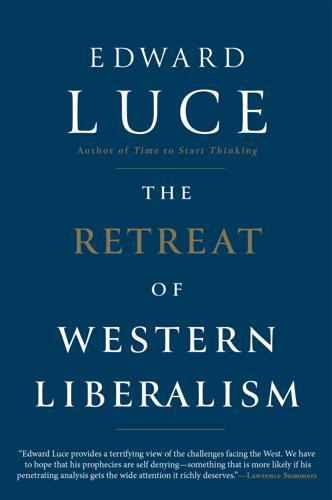
The Retreat of Western Liberalism
by
Edward Luce
Published 20 Apr 2017
‘[It] is in the progressive state, while the society is advancing to the further acquisition, rather than when it has acquired its full complement of riches, that the condition of the labouring poor, of the great body of the people, seems to be the happiest and the most comfortable,’ Smith wrote.23 When economic growth slows, society loses pace. That might seem counterintuitive in an age of instant connectivity. But we delude ourselves that the frequency with which we post Facebook updates, tweet or communicate on Snapchat amounts to meaningful action. Having hundreds of Facebook friends is no substitute for seeing people. Western societies are steadily getting older. The median age in the US is now thirty-nine compared with twenty-seven in India, for example. In the UK it is forty.24 During the baby boom years, which ended in 1964, people tended to have large families, as is true today for most of the rising middle classes in Asia and elsewhere.

Seriously Curious: The Facts and Figures That Turn Our World Upside Down
by
Tom Standage
Published 27 Nov 2018
That is not a new idea. AR’s early ancestors include the heads-up displays that were fitted to jet fighters starting in the 1950s, projecting information about airspeed, heading and the like directly onto the cockpit glass. Many people with smartphones will have had experience of more advanced versions. Snapchat, a messaging app, is famous for its ability to doctor photos of faces to give people rabbit ears, baseball caps, improbable moustaches and so on. Pokemon Go, a popular smartphone game, uses AR to superimpose virtual creatures onto the real world. Users of Google’s Translate app can point their phones at street signs and menus written in foreign languages, and see the text magically translated into their native tongue.

The Covert Passive-Aggressive Narcissist: Recognizing the Traits and Finding Healing After Hidden Emotional and Psychological Abuse
by
Debbie Mirza
Published 6 Dec 2017
Some CNs will even reach out to your friends or family to try to convince them that you are at fault, unstable, a liar and manipulator, extending their projections to others hoping to drain you of your emotional support. They will send you a rage-filled email or text out of the blue to get a rise out of you. They will have one of their flying monkeys make a passive aggressive comment on a post you made online. They will subscribe to your YouTube Channel or follow you on Instagram or SnapChat to let you know they are still watching you. It’s downright creepy. Some will take you to court, mediation, or an arbitrator as much as they possibly can. It’s strange how much time and energy they spend on trying to make your life as miserable as possible. This will still happen to some survivors years after a separation or divorce.
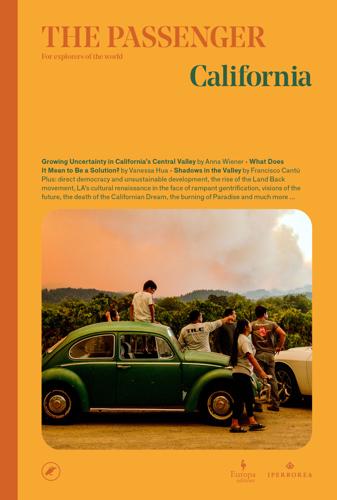
The Passenger
by
AA.VV.
Published 23 May 2022
And if truth be told, it’s not strictly accurate to describe the entire area as a beach; the name refers to an area of LA’s Westside that includes Malibu, Santa Monica and Venice but also Culver City inland. The “beach” is home to the headquarters of more than five hundred technology firms, and the area received a significant boost in 2018 when Google, Apple and Facebook opened huge offices there. The birth of Silicon Beach dates back to the early 2010s, when some early startups, such as Snapchat and Tinder, were established. Today, also thanks to new graduates from Caltech, it is a development hub above all for the entertainment sector (it was the birthplace of Hulu, and Netflix and YouTube have also recently opened offices there); as the internet is dominated by the smartphone, and video accounts for an ever-greater share of content, the proximity of Hollywood and a tradition of video games (Riot Games is based in LA) has proved to be strategically advantageous.
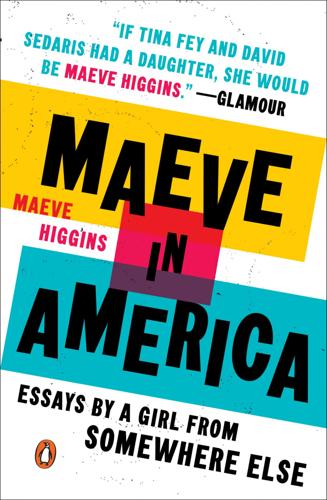
Maeve in America: Essays by a Girl From Somewhere Else
by
Maeve Higgins
Published 6 Aug 2018
If you don’t know what I’m talking about, please bear with me; for your understanding of what follows, it’s not necessary to share my addiction. In fact, it could well be better if you don’t, for your own sake. Or perhaps not. Shall we see? Stories is a feature on Instagram that successfully mimics Snapchat, where you can post as many videos and photos as you like, with any number of filters, stickers, and text, and it doesn’t show up on your main feed. So, as Instagram says, “You don’t have to worry about over-posting.” A Story lasts twenty-four hours, then it disappears forever. In August, I visited Ireland for my sister’s wedding.
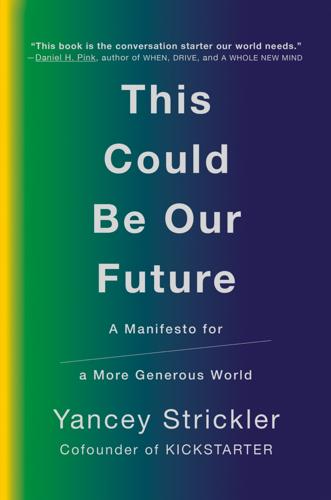
This Could Be Our Future: A Manifesto for a More Generous World
by
Yancey Strickler
Published 29 Oct 2019
But in the time since I’d taken the CEO seat almost two years before, Kickstarter had grown to more than one hundred employees. What had been an exciting adventure felt more serious by the day. To the outside world, we were a big success. In 2013, the leading tech site TechCrunch nominated Kickstarter for “Best Overall Startup” alongside Twitter, Uber, Snapchat, and Cloudflare. Despite being by far the smallest nominee by team size, Kickstarter won. But inside myself, I struggled with anxiety. The pressure I felt was immense. Creative people relied on our tool to fund their ideas. Employees and families relied on the company for their livelihood. There was a reputation to protect.

Blockchain Chicken Farm: And Other Stories of Tech in China's Countryside
by
Xiaowei Wang
Published 12 Oct 2020
It’s also about scale: once implemented, certain applications of deep learning, like image recognition, have been shown to be faster and more accurate than humans. It’s no surprise that these qualities make AI the ideal worker. Many of us live in a world where machine learning and forms of artificial intelligence already pervade our everyday lives—recommendation algorithms, fun cosmetic and face filters on Snapchat and Meitu, automated checkouts using image-recognition cameras. Since “artificial intelligence” is a vague term, it has become a catchall to instill deep fear of a blurry future. Some radical proponents of AI claim we are on “the edge of a revolution driven by artificial intelligence.”4 These same proponents of the AI revolution espouse the belief that this optimized version of human life will take over, replacing humans in the workplace, as caregivers, or even in romantic relationships.

Survival of the Richest: Escape Fantasies of the Tech Billionaires
by
Douglas Rushkoff
Published 7 Sep 2022
Fogg’s book on the FBM, Persuasive Technology: Using Computers to Change What We Think and Do , makes no secret of his research findings, and has become required reading in the user interface departments of most tech companies. Compliance engineers have used the FBM to develop addictive algorithms like the ones in Las Vegas slot machines, to create suggestions for new contacts on LinkedIn, to design the “infinite scroll” on Facebook, to reinforce extremist channels on Twitter, and to devise the “streak” feature on Snapchat where kids are rewarded for making contact every day. Thanks to data mining and machine learning, technologists can use computers to operate people. Fogg is often villainized for having hacked human behavior in order to systemize the dark art of persuasive technology. I’ve done so myself, casting Fogg as something of a Dr.

The Rise and Fall of Nations: Forces of Change in the Post-Crisis World
by
Ruchir Sharma
Published 5 Jun 2016
.‡ That x factor, which can be influenced by everything from experience using a computer to better management or better roads to get workers to their workplaces faster, is the fuzziest part of this difficult calculation. Technoskeptics say that the last decade’s decline in productivity growth reflects the fact that most recent innovations involve relatively trivial advances in communications and entertainment: Twitter, Snapchat and the like. Even with worker training and experience, these advances will do much less to raise productivity than previous innovations like electricity, the steam engine, the car, the computer, or air conditioning, which was a huge boost to human output per hour in a stuffy office setting. Optimists respond that productivity growth measurements aren’t capturing the cost and time savings produced by new technologies, ranging from artificial intelligence to increasingly powerful broadband connections and the nascent “Internet of things.”
…
Meanwhile, many of the oldest billionaires were found in the same countries where tycoons control a disproportionately large share of the economy and derive much of their wealth from inherited fortunes: The average age was 74 in Malaysia, 68 in Chile, and 67 in Taiwan. Taiwan’s youngest billionaire was 46 years old, compared to 34 in China and 25 in the United States, reinforcing the impression of an older family-based elite. New billionaires whose companies rise quickly out of nowhere—such as twenty-five-year-old Evan Spiegel of Snapchat—are the global exceptions, emerging as they do from hothouse environments like Silicon Valley. Indeed, the United States and China are quite unusual in terms of the number of billionaires they have generated from the ranks of young solo entrepreneurs, unaided by family ties. The absence of inherited wealth should be a good sign, demonstrating that new business can compete with entrenched ones.

Troublemakers: Silicon Valley's Coming of Age
by
Leslie Berlin
Published 7 Nov 2017
Fairchild begat Intel and National Semiconductor, which, through Markkula, Scott, and Carter, begat Apple, which through Trip Hawkins, who worked for Markkula, begat Electronic Arts. Stanford begat Cisco, Google, Hewlett-Packard, IDEO, Instagram, MIPS Computer Systems, Netscape, NVIDIA, Silicon Graphics, Snapchat, Sun Microsystems, Varian Associates, VMware, and Yahoo!—and those companies, many funded by Don Valentine’s Sequoia Capital or Kleiner Perkins Caufield & Byers, have begotten others. (Stanford has been a limited partner in both venture firms’ funds, as well.) Ampex begat Memorex and Oracle, as well as Atari, which begat many other video game companies including Activision, the company behind Call of Duty.
…
game, 278 Pitzer, Kenneth, 57 Pixar-Disney Animations, 23, 101, 298 Pong game, xvi, 112–23, 130–31, 170, 208, 209, 221 Poniatoff, Alexander M., 37 Powertec Systems, 86–87, 177 Pribilla, Peter, 370 printed circuit boards, 42–44, 47, 117, 123, 162, 207, 228, 233 Procter & Gamble, 60 programming languages, 18, 65–66, 97, 149, 179, 209–10, 285, 314, 365 Project Xanadu, 95 public domain, 267 punch-card batch processing, 9–10, 18, 65, 149, 179 Quist, George, 84, 259, 262 Radio Shack, see Tandy/Radio Shack Raffensperger, Ron, 164n, 353–55 Raiders of the Lost Ark game, 275 Rains, Lyle, 130 Raytheon, 22, 28 RCA, 250 Rea, Bill, 309–12 Reagan, Ronald, 33–36, 255, 331 recombinant DNA, xii, xiv, 133–45, 157, 187–89, 195–96, 203–5, 256–64, 349–51, 374 Rector, James, 35 Redwood City, Calif., 4, 37 Reid, Brian K., 342 Reimers, Niels: biotechnology industry and, xvi, 138–40 and Boyer, 135–43, 194, 200–201, 208, 256–57, 260–67 and Cohen, 133–38, 141–44, 189 Genentech and, 264–68 navy career of, 58 at Stanford Office of Technology Licensing, xvi, 58, 132–45, 157, 187–89, 202–5, 264–68, 349–51, 374 and Swanson, 194, 202–3 Research Corporation, 59, 62, 132, 144 Research Craft, 49 Rhode Island, University of, 61 Richeson, Eugene, 44 Richion, Bill, 86–87 Ring, Dave, 352 River Raid game, 278 Roberts, Lawrence G., 18–21, 28 Robinett, Warner, 275 Roche, 375 Rock, Arthur, 90, 129, 149–50, 249, 258, 293–94, 372 Rockefeller, David, 293n Rolling Stone, 90, 143, 226 ROLM Corporation: CBX system and, 160–61, 308, 312, 352 Fawn Alvarez at, 41–46, 159, 222, 309–12, 370 founders of, 44, 160–65 growth of, 166, 310–11 IBM’s acquisition of, 353–55 as military contractor, 41, 45, 86 production work at, 159–67 Silicon Valley location of, 312 Vineta Alvarez at, 41, 44–45, 159 voice mail and, 352 Rosen, Ben, 253, 303n, 361n Ross, Steve, 172–73, 270, 273, 344–46 Rowland, Bertram, 141–42, 188, 203, 264 Russell, Steve, 108 Salesforce.com, 321, 371 Sandia National Laboratories, 50, 335 San Francisco, Calif., 3, 25–27, 34, 69, 74, 87, 173–74, 192, 239, 276, 296 San Francisco Business Journal, 322 San Francisco Chronicle, 187 Sanger, Frederick, 263 San Jose, Calif., 4, 49, 69, 157, 244 San Jose Mercury News, 254, 264, 300–301, 322 Santa Clara, Calif., 41, 117, 120, 130, 149, 166, 207 Schaefer, Catherine de Cuir, 296 Schneider, Nelson, 256n Science, 143, 266 Science and Technology, 22 Scientific American, 194 Scientific Data Systems (SDS), 90, 93, 101–2, 149, 215, 249, 335 Scott, Dana S., 342 Scott, Mike, 50, 149, 234–38, 242–43, 247, 297–301, 358 Sculley, John, 357–58, 372–73 Seagate, 361 search engine business, 343, 367 Sears, 129–30, 170, 247 Seckler, Liz, 182–83, 323–25 security clearance, 44, 49, 57 semiconductor industry, xi–xii, xiii, 3–5, 42, 47–48, 73, 102, 127, 147, 151–53, 169, 207, 212–13, 230, 242–43, 249, 272, 302, 366 Semiconductor Industry Association, 254, 373 Service Bureau Corporation, 65 Shockley, William, 4, 42, 60, 66, 190 Shoup, Richard, 96 Shugart, Al, 245 Silicon Graphics, 23, 253, 332, 365 Silicon Valley: biotechnology industry in, xiii, xiv, xvi, 138–40, 187, 194, 256–58, 262, 349, 366, 375 early start-ups in, 4–5, 44–45, 73, 76, 146 electronics industry in, 3–5, 42–44, 47, 74, 165, 170 employment in, 3–4, 151, 253–54, 274 entrepreneurs in, see entrepreneurs hobbyists in, 210–14, 230, 244, 247, 284 lobbying and, xiii, xiv, 254–55, 366, 373 manufacturing businesses in, 74, 78–79, 83, 88, 160, 253, 312–13 microchip companies in, 3–5, 42, 47–48, 127, 169, 207, 213, 230, 302 orchards in, xiii, 4, 43, 46, 49, 149, 180, 370 population of, 3–5, 367 “Silicon Valley USA” (Hoefler), 73 Simonyi, Charles, 96, 224, 288 SLAC (Stanford Linear Accelerator Center), 59 small computers, 283–85 see also personal computers smartphones, xiv, 358 Smith, Alvy Ray, 101 Smith, Hank, 148, 249, 293n Smith, Jeff, 309–10 Snapchat, 365 social networking, 367 Software Dimensions, 370 software industry, 21, 76–78, 80, 83, 91, 148, 157, 183, 222, 269, 289, 306, 316–17, 360, 371 Sonsini, Larry, 84, 165, 277, 296, 326, 371–72 Southern California, University of, 47–49 Southern California Computer Society, 212 Space Invaders game, 274, 278, 344 Space Race game, 120n Space Technology Laboratories, 48 Spacewar!
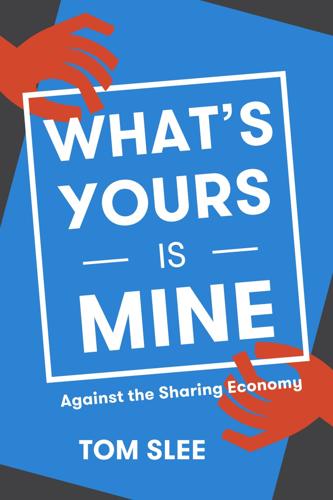
What's Yours Is Mine: Against the Sharing Economy
by
Tom Slee
Published 18 Nov 2015
New technologies do come along to challenge existing ones such as music streaming companies challenging Apple’s iTunes Store. Also, cultural instincts don’t just bind us all together on Facebook, they drive us apart too. What teen wants to be on the same social networking site as their parents? So Snapchat and Instagram become the social networks for the next generation, and new entrants (Yoho, Whisper, WhatsApp, Kik) try to create new identities that will appeal to a new demographic. Faced with generational changes in tastes, the best thing that this generation’s company can do is sometimes to buy its challengers, as Facebook has done by buying Instagram and WhatsApp.
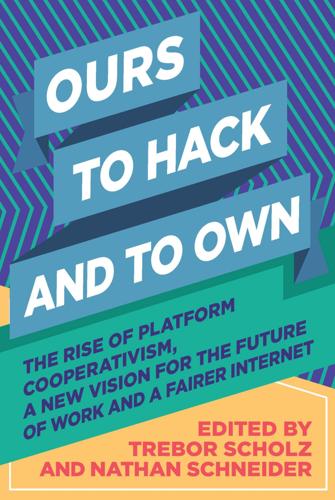
Ours to Hack and to Own: The Rise of Platform Cooperativism, a New Vision for the Future of Work and a Fairer Internet
by
Trebor Scholz
and
Nathan Schneider
Published 14 Aug 2017
Platform co-ops can benefit from the bursting of the content bubble. The Web suffers from the dominance of cancerous impression-based advertising, and so new business models for producing content are badly needed. The same pressure from walled-garden social sharing platforms like Facebook, Instagram, and Snapchat monopolizing app audiences also threatens the viability of the commons and the Open Web. Its content is largely supplied by the legacy publishing industry to be consumed by conventionally profitable audiences measured by impressions using invasive industrial surveillance technologies. As people adopt ad-blocking software on a linear growth curve past the 200 million users of today, the traditional publisher business model is threatened.
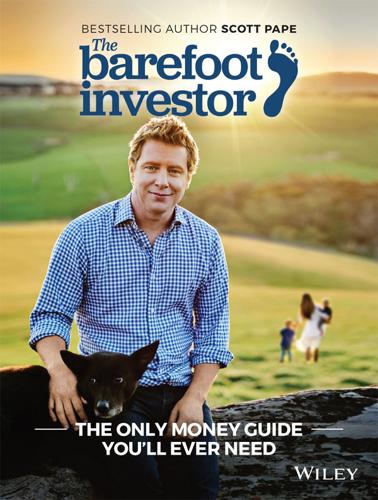
The Barefoot Investor: The Only Money Guide You'll Ever Need
by
Scott Pape
Published 22 Nov 2016
Whip out your phone, hit ‘record' and ask your parents (together or separately) the following: How did you meet? What does being a parent mean to you? What are you most proud of? What advice can you share with me about money, life and happiness? How would you like to be remembered? This is not for Facebook or Snapchat. It's for your and your family's legacy. One day, it's all you'll have left of them. And you'll treasure it. Once you've finished putting together the folder, there are only a few things left to do. Find a safe place to store it (I'd suggest paying for a safety deposit box — houses can burn down).
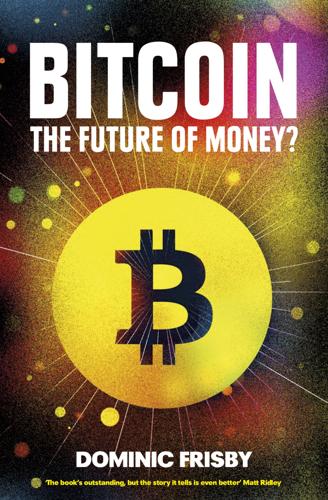
Bitcoin: The Future of Money?
by
Dominic Frisby
Published 1 Nov 2014
So, Satoshi’s double spacing suggests someone who is a little older – probably born before 1975 – when he says he was born.126 There are plenty of academic coders younger than that who write with two spaces – so this is not conclusive. But Bitcoin isn’t a product of youth like Facebook, Twitter or Snapchat. It’s not enough to be a whizz on computers. It requires knowledge of so many other areas, which would have taken years to accumulate. The language in which Bitcoin is written – C++ – is also regarded by coders as ‘old school’. All in all, I dismiss the idea that Satoshi was in his twenties when he created Bitcoin.
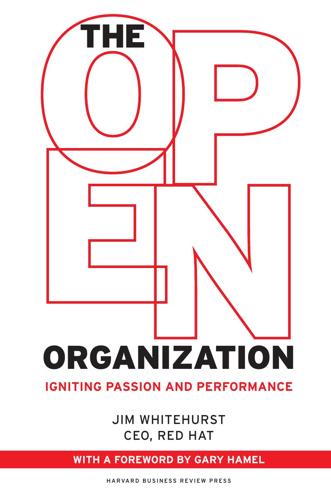
The Open Organization: Igniting Passion and Performance
by
Jim Whitehurst
Published 1 Jun 2015
To add a new service, like call-waiting, the operator had to reprogram the central switch, an expensive and risky endeavor. Screw it up and you could bring down the whole network. Not surprisingly, innovation proceeded at a snail’s pace. Today, the web hosts hundreds of web-based communication services including Apple’s iMessage, WhatsApp, Snapchat, Kakao Talk, Google Hangout, WeChat, and Grasshopper. On Skype alone, users spend more than 2 billion minutes communicating each day. The web has also spawned thousands of special interest groups, like wrongplanet.net, a site dedicated to improving the lives of individuals with autism. The community’s eighty thousand members have posted more than 1.2 million comments on the site’s general discussion board.

Move Fast and Break Things: How Facebook, Google, and Amazon Cornered Culture and Undermined Democracy
by
Jonathan Taplin
Published 17 Apr 2017
If indeed the author of Hooked is onto something—exposing our powerful addictions to social networking apps—then is Peter Thiel’s almost spiritual commitment to “liberty” really the same as Thomas Jefferson’s life, liberty, and the pursuit of happiness? I don’t think so. Is your friend who spends three hours a day on Snapchat really free? What agency do any of us have in our relationship with Facebook? I am just as guilty as you are. I surrender all my personal data to Facebook in return for the ability to share my vacation photos with my friends. But Twitter and Facebook want more than the personal data of any one user.
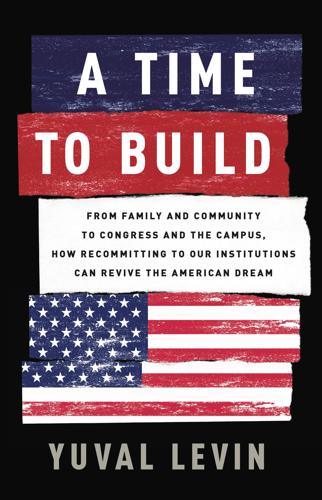
A Time to Build: From Family and Community to Congress and the Campus, How Recommitting to Our Institutions Can Revive the American Dream
by
Yuval Levin
Published 21 Jan 2020
Some of the most distinct innovators in the tech sector (like Uber, Airbnb, WeWork, and others) create opportunities for temporary, on-demand choices that enable us to avoid enduring commitments to standing institutions. We just use what we need when we need it and move on, and our interactions with service providers are very limited. Snapchat offers the epitome of this approach in the realm of social media—allowing users to send messages that quickly disappear once they are viewed. But Twitter has much the same effect. Even Facebook offers relationships of pure communication among disembodied profiles rather than of connection with other individuals.

Life Will Be the Death of Me: ...And You Too!
by
Chelsea Handler
Published 8 Apr 2019
network from 2007 to 2014, and released a documentary series, Chelsea Does, on Netflix in January 2016. In 2016 and 2017, Handler hosted the talk show Chelsea on Netflix. She is at work on a documentary about white privilege that will be released by Netflix in 2019. chelseahandler.com Facebook.com/chelseahandler Twitter: @chelseahandler Instagram: @chelseahandler Snapchat: @chelseahandler What’s next on your reading list? Discover your next great read! Get personalized book picks and up-to-date news about this author. Sign up now.
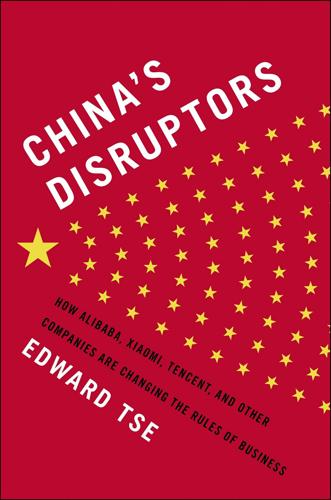
China's Disruptors: How Alibaba, Xiaomi, Tencent, and Other Companies Are Changing the Rules of Business
by
Edward Tse
Published 13 Jul 2015
Chinese Internet companies are leading the way in this stage with a host of recent purchases in Silicon Valley. Tencent has spent more than $2 billion on overseas acquisitions since 2011, with purchases including American video-game publishers Riot Games for $231 million, and a 48 percent stake in Epic Games for $330 million. It has invested in messaging company Snapchat, giving itself an entrance into the U.S. smartphone communications market as it looks to extend the reach of WeChat around the world. And it has also invested in several venture capital funds so as to have access to news about fast-growing start-ups that it might be able to introduce to China. Alibaba’s interest in American companies has also grown rapidly.

The Creative Curve: How to Develop the Right Idea, at the Right Time
by
Allen Gannett
Published 11 Jun 2018
In this book, I will walk you through the patterns I found. This is not a marketing book. It is not a self-help book. It is, simply, a guide to understanding the patterns of creativity that result in breakthrough success. You will learn the history of creative thought and how it has developed from the time of the Greeks to today’s fast-paced world of Snapchat and Instagram. You will discover the neuroscience that underpins the creation of trends. Finally, you will uncover the four patterns that successful creative people follow to increase their odds of achieving mainstream success, and you will understand the science that explains why they work. As you will find out, while this is a conscious process for some, most creators follow these patterns unconsciously as the result of similar methods of early instruction and learning.
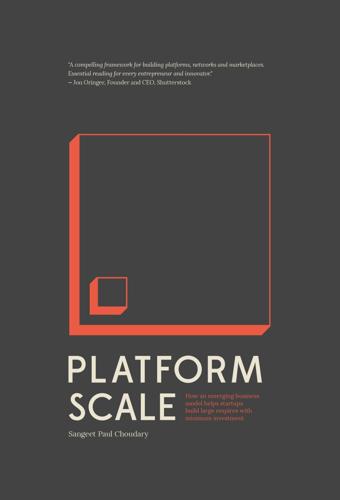
Platform Scale: How an Emerging Business Model Helps Startups Build Large Empires With Minimum Investment
by
Sangeet Paul Choudary
Published 14 Sep 2015
PATTERN 2: INFRASTRUCTURE-DOMINATED The concept of a core value unit is much simpler to understand in cases where the platform acts as the underlying infrastructure on top of which value is created. Apps form the core value unit on a development platform. The minimum unit of content constitutes the core value unit on a content platform. Articles on Medium, videos on YouTube, and the ephemeral messages on Snapchat, all denote the core value units for the respective platforms. There is an additional complexity when understanding value on infrastructure platforms. While a single selfie on Instagram – the core value unit – is created by a single producer, a single article on Wikipedia may be created by multiple producers.

When You Find Out the World Is Against You: And Other Funny Memories About Awful Moments
by
Kelly Oxford
Published 17 Apr 2017
I’m like that nerdy younger kid the older kids let stick around so they can make fun of him. This is easily done when you don’t have the same group logic as the peers. With Sal, lately, a lot of conversations involve a line of questioning, such as, “Who do you think is hotter? _____ or _____?” and then she texts her friends my answers. Her friends have dozens of snapchats of me saying, “I don’t think Harry Styles is hot, I’m not a pedophile.” Which is a lie, he’s hot. But isn’t it worse if I tell her that I think he’s hot? I’d rather talk to Sal about Joan Didion or how I think Monica Lewinsky got the rawest of deals. But I’ve tried those topics, and similar ones, and she doesn’t seem as interested in those as she is in my attraction to Harry Styles.
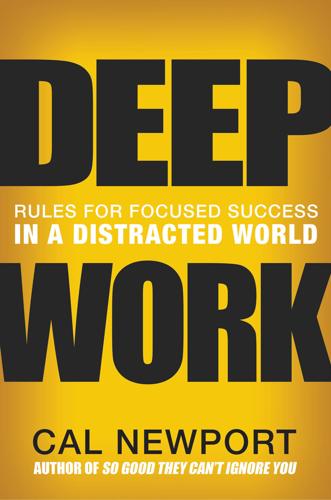
Deep Work: Rules for Focused Success in a Distracted World
by
Cal Newport
Published 5 Jan 2016
This strategy offers you a different but complementary approach to these same issues, and it’s inspired by Ryan Nicodemus’s approach to getting rid of his useless stuff. In more detail, this strategy asks that you perform the equivalent of a packing party on the social media services that you currently use. Instead of “packing,” however, you’ll instead ban yourself from using them for thirty days. All of them: Facebook, Instagram, Google+, Twitter, Snapchat, Vine—or whatever other services have risen to popularity since I first wrote these words. Don’t formally deactivate these services, and (this is important) don’t mention online that you’ll be signing off: Just stop using them, cold turkey. If someone reaches out to you by other means and asks why your activity on a particular service has fallen off, you can explain, but don’t go out of your way to tell people.

Immortality, Inc.
by
Chip Walter
Published 7 Jan 2020
She had explored his work and theories in the 1990s, and then used them to develop some of the most advanced artificial intelligence algorithms in the world. Before joining Calico, Koller knew she could write her own ticket at any of Silicon Valley’s great Cloud makers: Google, Facebook, Apple. But did she really want to create software that made better Twitter feeds, or cool faces on Snapchat, or yet another product that piled up more of the planet’s digital ad revenues? In the sprawling world of Google, she would be a blip: one more very smart human in a sea of geeks. But Calico was different. She had never forgotten Steve Jobs’s grand goal: “Make a dent in the universe.” At Calico, maybe she could make a dent—save lives, perhaps millions—even her own.

12 Bytes: How We Got Here. Where We Might Go Next
by
Jeanette Winterson
Published 15 Mar 2021
A year later, in 2008 – the year of the global economic crash – Apple added the App Store – which is the beginning of what we think of as a truly smart phone: a phone that is globally connected, and that can be customised (personalised) by the user. It was a prescient move – a move driven by hackers and developers, who realised that what a phone is for isn’t for making calls. Since the revolution in communication that is Facebook, a phone has become primarily a social-media device. Now we go on Instagram, Snapchat, WhatsApp, Twitter, YouTube, play games, check the BuzzFeed, order food and cabs. Google the internet, ask Siri, click on Spotify or Sonos, and sometimes, maybe, make a call. When is a phone not a phone? Google’s soon-to-be-realised dream of ambient computing – really the internet of things, where all smart devices, from fridges to phones, are connected – includes, at a later date, connecting humans directly to its services, and to one another – via a nanochip implant in our brain.

Working in Public: The Making and Maintenance of Open Source Software
by
Nadia Eghbal
Published 3 Aug 2020
Mark Zuckerberg himself declared to a crowd at Facebook’s 2019 F8 conference that “the future is private,” insisting, “Over time, I believe that a private social platform will be even more important to our lives than our digital town squares.”348 The public stage increasingly reflects a one-way mirror pattern, where anybody can consume content but interactions with its creator are limited. Twitter has begun to experiment with giving its creators more moderation control, such as hiding replies to tweets and limiting who can reply to tweets.349 The Instagram Stories feature (a format initially invented by Snapchat) is designed for broadcasting rather than conversing with one’s audience. Kevin Systrom, Instagram’s CEO when Stories launched, noted at the time that one reason for introducing Stories was to give creators a place to share without the pressure of likes and comments.350 Podcasts are surging in popularity, with nearly one in three Americans saying that they listen to podcasts at least once per month—a number that doubled from 2014 to 2019.351 And newsletters are another, curiously reemerging format, where creators can broadcast in longform to large audiences, without expectation of a dialogue.
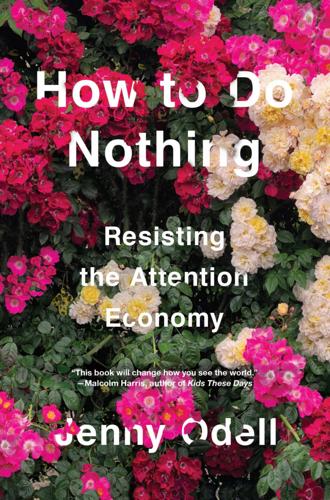
How to Do Nothing
by
Jenny Odell
Published 8 Apr 2019
One Stanford meme uses a photo of Donald Trump talking to Mike Pence while gesturing toward a large empty space in front of them; Trump is tagged “my college,” Pence is tagged “me, after graduating college,” and the empty space is tagged “job prospects.”56 Another is a screenshot, mostly of a ceiling and part of someone’s head, with the Stanford University Snapchat geofilter and the caption: “I am surrounded by massive amounts of wealth in this pressure cooker of entrepreneurship and tech that satellites the rest of this endless suburbia where the middle class can’t find a one bedroom apartment.”57 On UC Berkeley’s meme page, someone has posted the “sold pupper dance video,” in which a small dog in a pet store paws adorably at a glass cage labeled “I am sold.”
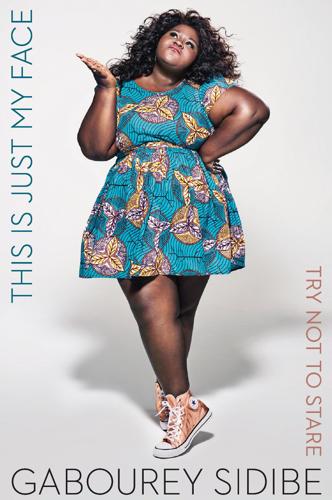
This Is Just My Face: Try Not to Stare
by
Gabourey Sidibe
Published 14 Apr 2017
Our Aunt Sarah, Simone’s long-suffering woman, is raising children who aren’t hers and mourning the loss of her husband and sister. We portray Saffronia, a mixed-race teenager raised by a single mother, being bullied on her way home from school and then again on the web. (Fucking Millennials! I’m kidding. You’re probably reading this book right now. Hi! Snapchat is so lit, right?) Sweet Thing is an artist who is sleeping with a married man. And then there’s Peaches. Peaches is a video blogger who sits in front of a shrine to her dead son made up of his medals of achievement, college graduation pictures, and diploma; she is making a vlog update after more than a year of fighting for justice for her son, who was killed by a police officer.
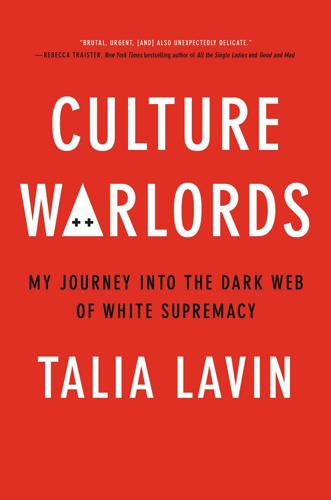
Culture Warlords: My Journey Into the Dark Web of White Supremacy
by
Talia Lavin
Published 14 Jul 2020
There were countless memes valorizing another man who had committed suicide, but not before expressing his ultimate hatred of women by murdering them: Elliot Rodger. One user photoshopped him onto the Iron Throne, the titular seat of Game of Thrones, suggesting that this could have been an “alternative ending” for the TV show. Another user used a Snapchat filter to gender-swap Rodger’s face, suggesting that his life would have been easier if he had been born a woman. There were countless posts decrying ugly women, promiscuous women (“I don’t want my child to come out of a place where hundreds of dicks have entered”; “My mother is such a fucking whore”; “Daily reminder: your crush lives only to deep throat chad’s cock”), and overweight women.
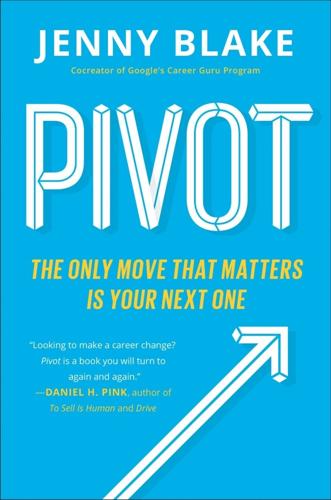
Pivot: The Only Move That Matters Is Your Next One
by
Jenny Blake
Published 14 Jul 2016
When it comes to crafting a powerful vision, I hate the question, “Where do you see yourself in five years?” It is based on an outdated paradigm and halts rather than generates conversation. Who knows?! New job fields are emerging at breakneck speed. The iPhone launched in 2007. Do you think that in 2006, the founders of Instagram or Snapchat would have said, “In five years, I would like to have created an app—for an app store and technology that doesn’t exist yet—that will be valued at billions of dollars”? No! So we should not expect to know exactly what job or even industry we will want to pursue in five years. Even if we could guess, we would probably sell ourselves short.

The New Nomads: How the Migration Revolution Is Making the World a Better Place
by
Felix Marquardt
Published 7 Jul 2021
According to the organisers, ‘Fluxability Quotient’ measured people’s ability to ‘move, shift, change, progress and flow strong with the current of the future’, as well as ‘sustainability in the art of constant transformation’. The core values celebrated were all laudable on paper: equality, transparency, social responsibility and ‘a harmony of land and humankind’. Who wouldn’t want a harmony of land and humankind? Apart from Barack Obama, the guest speakers of the event included the CEOs of Snapchat and Buzzfeed, the former supermodel Naomi Campbell, the fashion designer Diane von Furstenberg, the actors Gwyneth Paltrow and Forest Whitaker, the rapper Cardi B, the chief content officer of Netflix, the heiress to the CBS Viacom media empire, the CEO of pharmaceutical giant Novartis… The list goes on and on.

Do Nothing: How to Break Away From Overworking, Overdoing, and Underliving
by
Celeste Headlee
Published 10 Mar 2020
Researchers discovered that many people imagine their peers hang out with friends on a regular basis. They think their friends are going to parties and generally being quite social, while they spend most nights at home. The actual data, though, suggest our peers are not as social as we believe they are. We’ve heard often that what we see on Twitter or Snapchat is a curated, heavily edited version of our friends’ lives. It’s not real because it’s not complete. Yet subconsciously, we are still using that inaccurate picture as a basis for comparison. When we compare ourselves to the imagined social lives of our friends and coworkers, we believe we are more socially isolated than average.
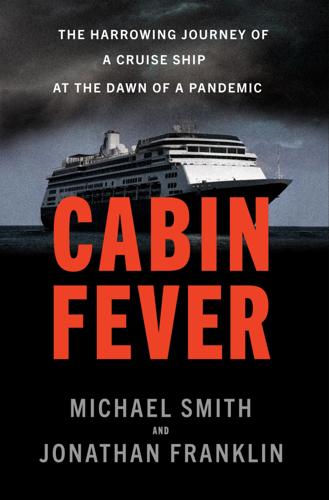
Cabin Fever: The Harrowing Journey of a Cruise Ship at the Dawn of a Pandemic
by
Michael Smith
and
Jonathan Franklin
Published 14 Jul 2022
They pretended they were interior decorators, and they set out to design an imaginary upgrade to their entire suite—all two hundred square feet. Wine bar or cappuccino machine? Modern Jacuzzi or classic bidet? Laughing at their captivity, Claudia and Juan video-chatted for hours with their grandchildren. Learning Snapchat cartoon features, they giggled their way through megabytes of whiskers and floating heart photos. Juan and Claudia watched so many hours of Animal Planet that they felt they’d gone on safari with every animal on Earth. And they laughed at Holland America for never pausing the looped cruise ship promotional video on the in-house TV channel.

Scotland’s Jesus: The Only Officially Non-Racist Comedian
by
Frankie Boyle
Published 23 Oct 2013
Language taboos change regularly and these people don’t get the updates, they don’t read broadsheets, they don’t watch documentaries and, perhaps most importantly, they don’t really care how society thinks they should talk. So is the taboo value of a word like, say, retard, really always about morality or ablism? It’s obviously also a handy way of recognising social class. This is before we even get to the fact that things have different meanings for different people. You say snapchat, I say speedwank. I remember some nutter at a party one time telling me about his idea that jihadis would welcome a nuclear war. That they longed for the United States to turn the world into a desert, because jihadis would flourish in the desert, and it’s all part of the plan for a successful Armageddon.

Principles of Web API Design: Delivering Value with APIs and Microservices
by
James Higginbotham
Published 20 Dec 2021
Recent API security breaches show some of these key vulnerabilities that can occur when using APIs and the impact that can produce: ■ Gaining access to a user database via an unsecured API, allowing the bad guy to confirm the identities of 15 million accounts on Telegram while remaining undetected ■ Exploiting a password reset API that returns the reset token, allowing the email confirmation email to be bypassed and accounts to be taken over, exposing sensitive health and personal details ■ Combining large data sets from previous hacks to confirm authorization of users resulting in the ability to pass security screening and download tax returns from the United States Internal Revenue Service ■ Undocumented APIs intended for internal, private use by a company for their mobile apps was reverse engineered and used to access data easily with minimal or no implemented protective measures. This is common for many API vendors that consider an undocumented API as secure, such as SnapChat ■ Exposing the exact location, by latitude and longitude, of users because a previously private Tinder API was opened for end-users. A thorough security review prior to opening the API to developers would have identified that the mobile app, not the API, was responsible for hiding the actual physical location of their users These recent breaches span from low-reward results, such as disclosing business intelligence as a competitive advantage, to high-reward results that can disclose extremely sensitive data.
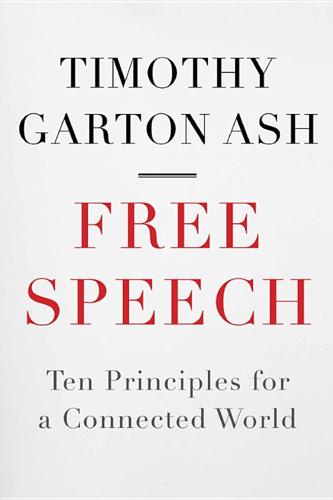
Free Speech: Ten Principles for a Connected World
by
Timothy Garton Ash
Published 23 May 2016
The US Federal Trade Commission found in 2011 that Facebook had ‘deceived consumers by telling them they could keep their information on Facebook private, and then repeatedly allowing it to be shared and made public’.117 Moreover, even American teenagers started migrating to other platforms, such as Snapchat, WhatsApp, Secret and Whisper, doubtless partly because those were snappier on a smartphone, but perhaps also because—as the names Secret and Whisper might suggest—they were seen as more attentive to privacy. (Facebook responded by buying WhatsApp.) Under such sustained criticism from both dogs and mice, but probably above all because it feared the loss of customers, Facebook introduced new privacy settings in 2014.
…
P., 195 search engine manipulation, 365 ‘search engine optimisation,’ 302 Second Life, 316 secrecy: C/S ratio, 324; guarding the guardians, 334–38; official, 324–27, 332–34, 337–38, 344–45; in wartime, 326; ‘well-placed sources,’ 341–45; whistleblowers and leakers, 339–41 section 295 of Indian/Pakistani penal code, 225, 254, 268, 275 secularism, 261, 265, 267, 273, 277–78, 281 security: executive oversight of, 335; versus freedom, 327–29; judiciary oversight of, 336–37; legislative oversight of, 335–36; national and personal, 321 sedition, 325 seditious libel, 331 Sedley, Stephen, 77, 131 Seinfeld, Jerry, 244 Selassie, Haile, 205 self-broadcasting/-publishing, 56–58 self-restraint, 213 Semantic Web, 164 Semprun, Jorgé, 304 Sen, Amartya, 78, 109, 193–94 Senegal, 243, 277 September 11, 2001 attacks, 64, 273, 322–24 Serbia, 133, 242 Serbo-Croat language, 123, 207 Serrano, Andres, 146 Serres, Michel, 25 sex, speech as, 89, 247–48 Shakarian, Hayastan, 349 Shakespeare, William, 156, 212 Shamikah, 313 Shamsie, Kamila, 90 ‘sharing,’ 166 Sharp, Gene, 148–49 Shaw, George Bernard, 17, 109 Shayegan, Daryush, 98 shield laws, 342 Shils, Edward, 99, 208–9 Shotoku (Prince), 109 Shrimsley, Robert, 142 Shteyngart, Gary, 13, 16 ‘Shunga’ art exhibition, 246–47 Sikhs, 131, 253, 262, 274 Siliconese, 50 Simone, Nina, 74, 78, 119, 212 Simpson, O. J., 298 Sina Weibo, 40, 43–45, 58, 60, 211, 300, 371 Singapore, 67 Singer, Peter, 156 Singh, Simon, 153 Siri, 17 Skeleton Army, 132, 139, 145 skin colour, 221 Slate, 144 smartphones, 11, 13 SMERSH, 182 Smith, Joseph, 259, 261 Smith, Zadie, 179, 244 Snapchat, 310 Snowden, Edward, 46, 284, 288, 318, 320–21, 327, 330, 337, 341, 345–46, 355–56 Socrates, 346 Sohu, 40 Solzhenitsyn, Alexander, 56, 58, 142, 371 SOPA (Stop Online Piracy Act), 59, 164 Sorabjee, Soli, 227 Soros, George, 236 ‘sousveillance,’ 338 South Africa, 46–47, 110–11, 136, 223, 242, 333–34, 353–54 South Korea, 29, 325, 354 Soviet Union, 21, 157, 387n63.
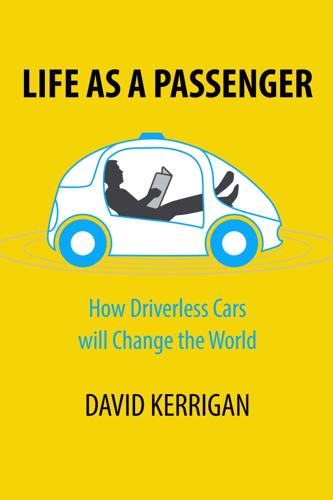
Life as a Passenger: How Driverless Cars Will Change the World
by
David Kerrigan
Published 18 Jun 2017
Media Business The media business is fundamentally about grabbing your attention. Until the introduction of the modern smartphone in 2007, the amount of people’s time available to media had been static for decades, and competition was a zero-sum game. Mobile opened up new territories for settlement — territories that have now been largely claimed by Facebook, Twitter, Snapchat, Instagram, Netflix, Spotify and a handful of other major players, notably including casual gaming. Statistics show that up to 56% of people[221] play mobile games and US citizens spent 1.15 billion[222] hours playing mobile games monthly in 2016. We are once again approaching an era of zero-sum competition as mobile penetration reaches saturation, but that era will be short-lived as the estimated 75 billion hours Americans spend commuting will gradually be up for grabs.

The Lonely City: Adventures in the Art of Being Alone
by
Olivia Laing
Published 1 Mar 2016
Six years later, he founded a pioneering internet television network, Pseudo, which produced multiple channels of entertainment, each catering for and made by different subcultures, from hip hop and gaming to erotica – the same panoply of communities, in fact, that still colonise the web today. Years before social media, before Facebook (2004) and Twitter (2006), before Grindr (2009), ChatRoulette (2009), Snapchat (2011) and Tinder (2012), before even Friends Reunited (2000), Friendster (2002), MySpace (2003) and Second Life (2003), not to mention the broadband that made them viable, Harris understood that the internet’s most powerful appeal was not going to be as a way of sharing information, but rather as a space in which people could connect with others.

The People's Platform: Taking Back Power and Culture in the Digital Age
by
Astra Taylor
Published 4 Mar 2014
, popular bloggers asked whether the site should compensate those who provided the most viewed photographs; when the Huffington Post was acquired by AOL for $315 million, many of the thousands of people who had been blogging for free were aghast, and some even started a boycott; when Facebook announced its upcoming IPO, journalists speculated about what the company, ethically, owed its users, the source of its enormous valuation.9 The same holds for a multitude of sites: Twitter wouldn’t be worth tens of billions if people didn’t tweet, Yelp would be useless without freely provided reviews, Snapchat nothing without chatters. The people who spend their time sharing videos with friends, rating products, or writing assessments of their recent excursion to the coffee shop—are they the users or the used? The Internet, it has been noted, is a strange amalgamation of playground and factory, a place where amusement and labor overlap in confusing ways.
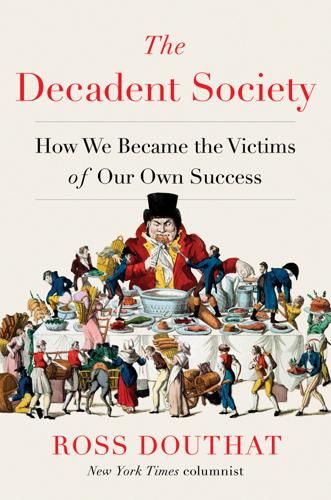
The Decadent Society: How We Became the Victims of Our Own Success
by
Ross Douthat
Published 25 Feb 2020
In 1992, 42 percent of American teenagers had been in a fight; by 2015, that figure was 22 percent. In the era of the teen TV soap Beverly Hills, 90210, which premiered in 1990, 10 percent of adolescents had lost their virginity before age thirteen; only 4 percent enjoyed that dubious distinction in the age of Snapchat. “Today’s teens are better than you, and we can prove it,” ran a 2016 data-journalism headline—and the data, indeed, proved that teenage life in the 2010s was physically safer than at any point in the recent American past. Maybe teenage life is safer today because of helicopter parenting or better policing or successful anti-alcohol education in the schools.

Going Dark: The Secret Social Lives of Extremists
by
Julia Ebner
Published 20 Feb 2020
‘Hackers Dump Data on Merkel, Politicians in Giant German Leak’, Bloomberg writes;40 ‘German politicians targeted in mass data attack’, reads the BBC headline.41 It’s a Friday afternoon and I sense that I’ll have to drop my weekend plans. In November 2018, Eva von Angern took a call from a colleague who informed her about strange emails he was receiving from her. Soon afterwards, she started receiving push notifications that her passwords on Facebook, Instagram, Snapchat and Pinterest had been changed. But von Angern, the local MP of Die Linke in Saxony-Anhalt, was just about to start a panel discussion about violence against women. When the panel was done, she couldn’t log into any of her social media accounts any more. On Facebook, her account started posting anti-migrant messages to her followers and her Amazon account completed several purchases: an anti-fascist handbook, a drug test and a plastic penis, using her credit card details.
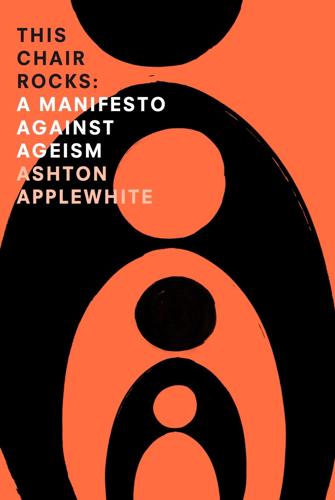
This Chair Rocks: A Manifiesto Against Ageism
by
Ashton Applewhite
Published 10 Feb 2016
Asked on her seventieth wedding anniversary what was the most remarkable invention she’d witnessed during her lifetime, she answered, “My iPhone.” Learning the new language of technology is challenging, especially since few devices are designed with older users in mind, and no one can keep up with the pace of change. When a photo-messaging app called Snapchat came on the scene, I was relieved when a classmate of my son’s mentioned that he hadn’t bothered to download it. I’d jumped to the ageist conclusion that of course he was using it simply because he was in his twenties. Gaps emerge incredibly fast; it’s not uncommon for siblings only a few years apart to favor different social networking apps and platforms.

The Digital Party: Political Organisation and Online Democracy
by
Paolo Gerbaudo
Published 19 Jul 2018
Far from having dissolved in the de-centralised networks of social media, platform parties’ doings highlight that leadership is coming back with a vengeance acquiring new forms. This digitised leadership reflects the new possibilities for mass outreach and online crowding offered by social media, the rise of a digital celebrity culture that has emerged on platforms such as Facebook, Twitter, YouTube and Snapchat, and the continuing necessity of leadership in contemporary politics. This is clearly reflected in the plebiscitarian character of online consultations, as seen in the previous chapters, which often boil down to the leadership’s need to stoke the support from members. The hyperleader and his magnetic influence over the organisation is the elephant in the room of online democracy.
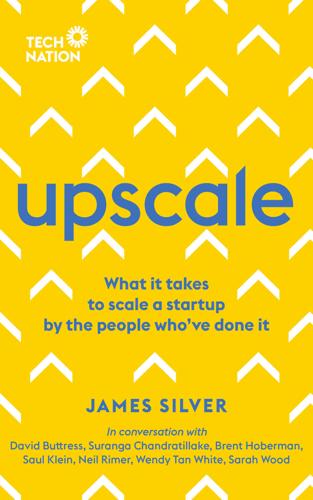
Upscale: What It Takes to Scale a Startup. By the People Who've Done It.
by
James Silver
Published 15 Nov 2018
We don’t know that for sure, because you can use Google search from many devices: your work computer, your home computer, your phone, and you’re oftentimes not logged in while you’re on it. But the imperfect data we do see shows very high retention. Which makes sense: it’s incredibly useful, very easy to use and cheap. ‘WhatsApp is somewhere in the 70–72% long-term retention rate - that’s a remarkable, heady number. Facebook is 63%. Messenger is in the 50s, Snapchat is in the 40s, Instagram is in the 50s and LinkedIn is 40% “day 30” retention, and it sticks around there - so these are really kind of the best numbers you can achieve.’ Retention loops If benchmarks serve as a guide for how an app is performing (or underperforming) against category leaders, boosting retention is all about developing habits and identifying useful triggers so people come back to the product.

The Globotics Upheaval: Globalisation, Robotics and the Future of Work
by
Richard Baldwin
Published 10 Jan 2019
Much of this is already a reality.19 One really radical thinker—and one who was years ahead of the curve—is Michael Malone. His 2009 book, The Future Arrived Yesterday, projected a world where the “Protean Corporation” has only a small set of core people on long-term contracts with all the rest done by outsourced providers. The US company Snapchat is not far from this. It was worth sixteen billion dollars in 2017 but had only 330 employees. To understand just how different this is, consider the same figures for a traditional corporation. General Motors is worth about fifty billion dollars and employs 110,000 workers worldwide. The buzzword phrase that Accenture has developed to describe this future of employer–employee relationship is telling.
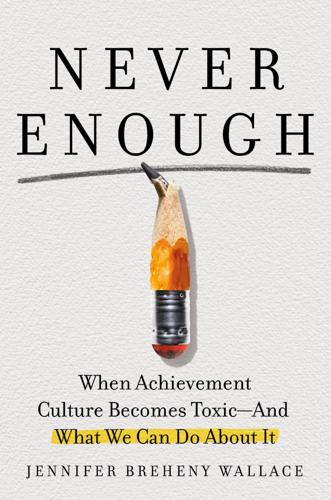
Never Enough: When Achievement Culture Becomes Toxic-And What We Can Do About It
by
Jennifer Breheny Wallace
Published 21 Aug 2023
With this in mind, and two years of crisis counseling under his belt, in his junior year, Adam founded a student support group. It connected students in the upper classes to younger students in the high school. This co-ed group, perhaps because it was founded by a boy, helped to destigmatize mental health struggles with some of his male classmates. “Boys would send me Snapchat photos of themselves crying, and I’d text them back,” he said. Texting felt safer to the boys than speaking in person. In fact, when Adam would try to talk to them in person, they would never admit that they were struggling. But through this support group, Adam’s classmates could really address the anxiety and depression they were feeling.

Other Pandemic: How QAnon Contaminated the World
by
James Ball
Published 19 Jul 2023
This problem hasn’t vanished, but it is less of an issue than people imagined: millennials learned how to delete their social media history, they cared much less about other millennials’ online faux pas than older generations did (coming from a place of mutual understanding), and people all came to understand how better to present themselves online. Gen Z, meanwhile, has grown up with a much more ephemeral set of social networks. WhatsApp groups and Discords (a voice, video and text chat app) are private and not viewable by future employers or authority figures. Instagram stories restrict the flows of information, as does Snapchat. The era of a digital permanent record proved to be a short one – both people and the internet adapted extremely quickly. They will continue to do so. Ultimately, then, we will probably develop a series of online coping mechanisms that will match the description of a digital immune system. For society as a whole – for humanity as a whole – there might not be much more to do on this front than to hope.
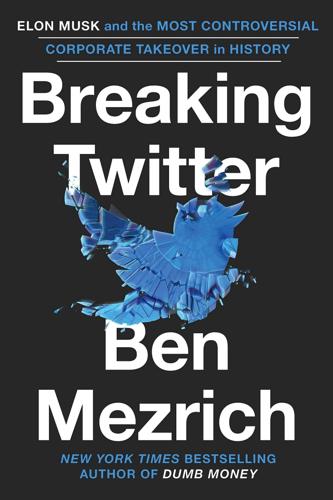
Breaking Twitter: Elon Musk and the Most Controversial Corporate Takeover in History
by
Ben Mezrich
Published 6 Nov 2023
Twitter continued to gain ground over the next few years, as Mark had worked his own way up through the marketing wing of the company. Even so, as Mark launched his Creative Strategy Team and began building a stable of high-profile advertisers—advertising made up nearly 90 percent of Twitter’s revenue—Twitter’s growth had still lagged behind other social media behemoths like Facebook, Instagram, Snapchat, and Google. It was obvious that Twitter had a vastly outsized impact on the public consciousness, as the focal medium for conversation, especially in the fields of journalism, politics, and entertainment. But it was also a messy playground that seemed to lurch from one controversy to the next. Keeping the site clear of online harassment, abuse, and hate speech had become a full-time occupation, eventually involving thousands of employees, numerous algorithms, regulations, councils, and loosely controlled gatekeepers.
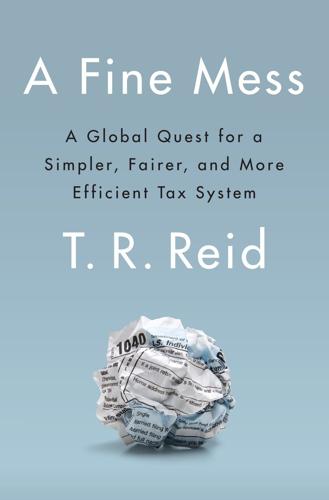
A Fine Mess
by
T. R. Reid
Published 13 Mar 2017
The drive for standardization came from Europe, which is why we still measure time and longitude based on a meridian running through Greenwich, England, and why the global standards for the meter and the kilogram are stored in a vault in Sèvres, France. In the twentieth century the United Nations, the World Health Organization, Interpol, the International Olympic Committee, the International Committee of the Red Cross, NATO, and the like were created. In recent decades, the Internet and the smartphone, Facebook and Snapchat, have sparked a new rush of international organization creation. There’s an international Video Electronics Standards Association and an International Programmers Guild. There are global fan groups for dozens of video games you’ve probably never heard of. There are hundreds of global associations for specific industries, ranging from the International Federation of Beekeepers’ Associations to the International Society of Sugar Cane Technologists to the International Association of Wood Anatomists.
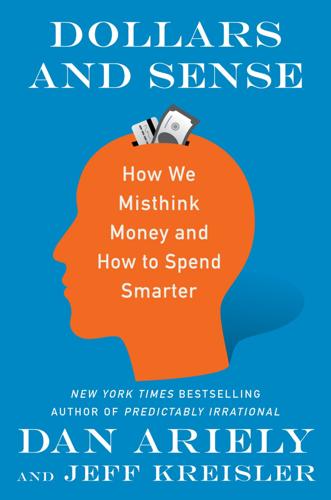
Dollars and Sense: How We Misthink Money and How to Spend Smarter
by
Dr. Dan Ariely
and
Jeff Kreisler
Published 7 Nov 2017
JCPenney customers expected sale prices, so when they didn’t see sales, they were outraged, even though the actual prices were functionally the same as before. Imagine a teenager who gets a $25 gift card as a birthday present from an aunt who, for many years past, had sent $100 gift cards. What would his or her reaction be? “She normally sends $100. This sucks. I totally lost $75. Something-something Instagram Snapchat social media OMG!” Rather than seeing it as $25 gained, she views it in terms of her expectations of $100 based upon past patterns and perceives the gift as a loss. Once again, past performance is simply no guarantee of future success. But go tell this to our expectations. Just because something went well in the past, that doesn’t mean it will in the future.

The Great Convergence: Information Technology and the New Globalization
by
Richard Baldwin
Published 14 Nov 2016
They grew up in a world where conference invitations went by airmail, international calls cost five dollars a minute, and sending a single document by overnight courier could cost fifty dollars or more. Faxing was faster but the quality was horrible. Even younger readers will have lived through dramatic changes. To them, email is a clunky ancient technology that is only useful for some things, while Facebook (since 2004), Twitter (since 2006), and Snapchat (since 2011) are much better adapted for instant communication and group organization. The revolution can also be understood in the numbers. Between 1986 and 2007, world information storage capacity grew at 23 percent per year, telecommunications at 28 percent, and computation power at 58 percent per year.
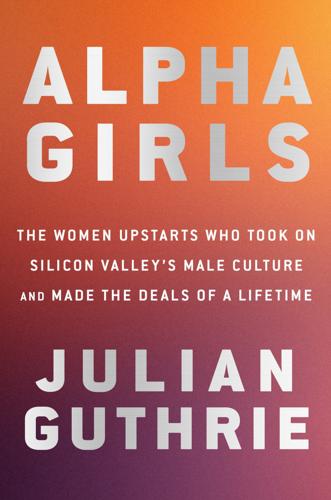
Alpha Girls: The Women Upstarts Who Took on Silicon Valley's Male Culture and Made the Deals of a Lifetime
by
Julian Guthrie
Published 15 Nov 2019
That night, as music played and drinks flowed, the women took turns posing in the photo booth, donning costumes and holding signs like I LIKE BIG BUCKS, I’M WITH HER, and NAUGHTY OR NICE. Theresia’s daughter, Sarah, a freshman in high school, had expressed interest in attending the party. Theresia was half convinced that the draw for Sarah was not her mom but her mom’s friends, such as Emily White, the COO of Snapchat, and Susan Wojcicki, the CEO of YouTube. But Theresia noted a deeper change in her daughter. When Sarah was in elementary school, she had asked her mom why she wasn’t a room parent or a field trip chaperone. Theresia was the mother who would buy baked goods and put them in a homemade container to pass them off as her own.
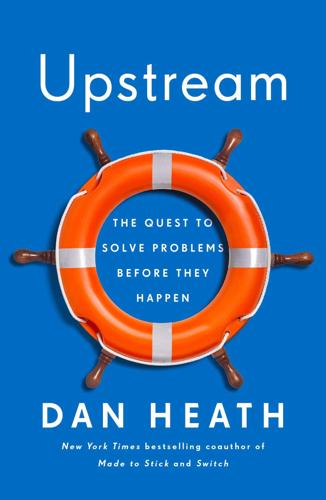
Upstream: The Quest to Solve Problems Before They Happen
by
Dan Heath
Published 3 Mar 2020
There were 46 suicide interventions, 3 major drug busts, 2 father/stepfather sexual assault interventions, and dozens of self-harm interventions. Another tip led to police action. On January 24, 2019, at 2:30 a.m., the police received a referral from the tip line. An anonymous source had reported a shooting threat made against the Hazleton Middle School by a 14-year-old student on Snapchat. After some investigation revealed that the tip was credible, the police visited the student’s home at 4:30 a.m., meeting with the kid’s mother and uncle. (The gender of the student was not released.) The officers learned there was a Glock handgun in the home. They were assured that it was locked in a safe place that the juvenile could not access.

Squeezed: Why Our Families Can't Afford America
by
Alissa Quart
Published 25 Jun 2018
The sociologist Rachel Sherman, author of a book on the very affluent called Uneasy Street, told me that all of the images on television and social media of “glitzy thoughtless entitled wealth” have a negative effect, not only on those striving or treading water to stay in the middle class but also on those who are very wealthy. “The Kardashians, Rich Kids—this is what it means to be wealthy,” said Sherman, speaking of the social media phenomenon Rich Kids of Instagram, which is only matched by the venal Private School Snapchats. The extreme tackiness of these shows lets the more decorous super-rich who benefit from American inequality see “themselves as good and not that wealthy,” Sherman noted. “If you are not that materialistic or Trump-y about it, you can imagine you are a better rich person, you are working hard, you aren’t living in a mansion, you are setting limits for your children.

Infonomics: How to Monetize, Manage, and Measure Information as an Asset for Competitive Advantage
by
Douglas B. Laney
Published 4 Sep 2017
Unless maybe you have had too much beer with it or the sausage was undercooked, you will never see it again. If you want another pizza, you have to order or make another one. Not so with information. When information is consumed it doesn’t disappear. In fact it remains unaltered. It is non-depletable. Certain purpose-built mechanisms such as those in the popular messaging app Snapchat delete information by design after a period of time. And business systems can be architected to move or archive or delete data based on some heuristics. But generally, when viewed or searched or otherwise processed—as is its nature—information remains perfectly intact. Similar to other kinds of intangibles, particularly patents, this makes information especially reusable or re-monetizable.

The Alps: A Human History From Hannibal to Heidi and Beyond
by
Stephen O'Shea
Published 21 Feb 2017
Their leader nods affably, his resemblance to Gérard Depardieu in his better days uncanny. The others, all very big men, could pass for Hannibal’s elephantine companions. I notice that, unlike the tulip at the Iseran Pass, the bratwurst at the Mont Cenis has had the manners to park its hogs far away from any Snapchat-worthy landmarks. I settle down in the sunshine and feel the gentle breeze in my hair. The day is beautiful. I try to imagine just what this pass has witnessed. The waitress, a smiling elderly woman in a blue polkadot dress, takes my order. When she comes back with my double espresso and Evian water and spies the French newspaper in my lap, she takes this as a spur to indulge in her country’s national sport: complaint.
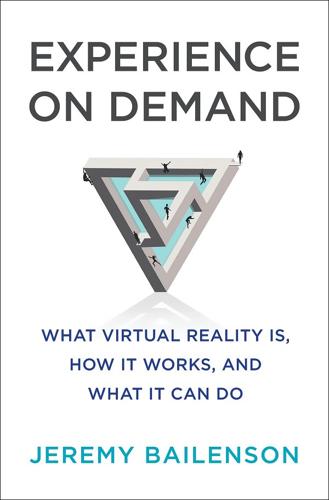
Experience on Demand: What Virtual Reality Is, How It Works, and What It Can Do
by
Jeremy Bailenson
Published 30 Jan 2018
Its main character, Case, is so attached to the virtual world that he refers contemptuously to his own body as “meat,” a fleshy prison that stands between him and “bodiless exultation of cyberspace.”20 Virtual reality is depicted in these and other fictions as a place of ultimate escape, with disturbing consequences for the physical world. Based on contemporary behaviors, retreat into a self-curated fantasy world no longer seems like science fiction. How much time do we already spend with one part of our brain tethered to our mobile devices or computer screens, not only through social networks like Twitter, Snapchat, and Facebook (and whatever comes next), but also through videogames, Internet forums, and all other manner of entertainments? Now imagine a world in which social media resembles the best party you were ever at in college, gambling online makes you feel like you’re in the most exclusive room in Las Vegas, and pornography approaches the feeling of real sex.

Life After Google: The Fall of Big Data and the Rise of the Blockchain Economy
by
George Gilder
Published 16 Jul 2018
Michael seems to have shared his twin’s impeccable timing—by 2015, NextDoor had become a unicorn worth more than a billion dollars. The Balabans started working on hardware. Using portable AI and face recognition, they conceived a wearable camera embedded in a baseball cap, resembling Google Glass or Snapchat spectacles. The problem was that no one in Silicon Valley could build the “Lambda Hat” prototypes, so Stephen was back in China for six months of exploring the manufacturing hives of Shenzhen, across the bay from Hong Kong. He ended up with a cool hat, better Mandarin, and a sharper sales pitch but no manufacturer or market for the product.
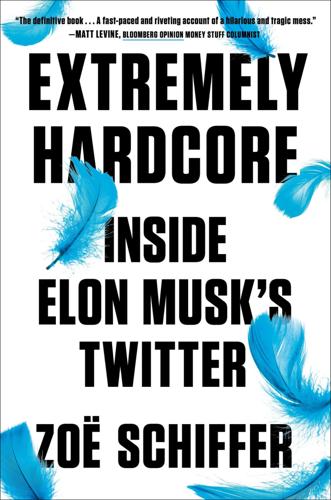
Extremely Hardcore: Inside Elon Musk's Twitter
by
Zoë Schiffer
Published 13 Feb 2024
It made sense—she respected him, had deep relationships with blue-chip advertisers, and could put a friendly and professional face on the business. Musk saw the appeal. Despite his misgivings about the ad industry, it was clear Twitter couldn’t survive on subscriptions. By May 2023, internal documents showed Twitter had just 535,000 monthly Blue subscribers. (As a point of comparison, when Snap launched its Snapchat+ premium service, it hit one million subscribers in two months.) In the days following the advertising conference, Musk was distracted by the SpaceX launch, which had been rescheduled to April 20. (The Starship rocket exploded shortly after launch, spewing rubble over miles of land.) Yaccarino grew nervous that Musk wasn’t returning her calls.
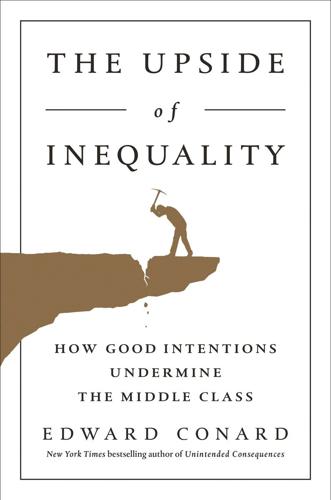
The Upside of Inequality
by
Edward Conard
Published 1 Sep 2016
Just look at how quickly the leading mobile phone producers, once on the cutting edge of innovation, have lost their leadership. Motorola, Palm, Nokia, and BlackBerry are all shadows of their former selves. The iPhone already faces stiff competition from Google’s Android operating system. Facebook faces a host of threats from alternatives like LinkedIn, Instagram, and Snapchat.* Even Google faces threats from an increasingly balkanized Internet that limits Google’s use in countries like China. The payoff that innovators earn from their success is frequently short-lived. The wealth that consumers capture, on the other hand, is long-lasting. Once productive ideas are discovered, their value lasts forever and even compounds as new ideas build on the ideas that come before them.
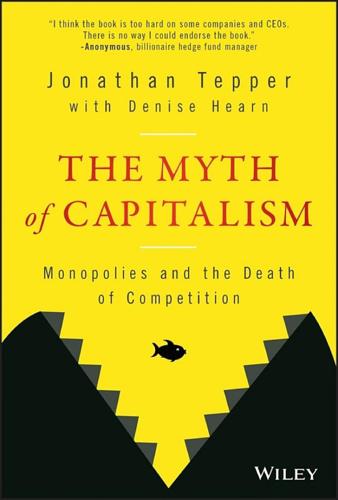
The Myth of Capitalism: Monopolies and the Death of Competition
by
Jonathan Tepper
Published 20 Nov 2018
Either they provide innovations the giants can't come up with in-house, or they pay a toll to the big tech companies for the pleasure of using their infrastructure. There is perhaps no better example of this dynamic than what has happened to Snap, the company that makes the disappearing messaging app Snapchat. Although it is one of the most innovative consumer-focused internet companies, it has been battered by the giants. Snap raised $3.4 billion in one of the biggest Initial Public Offerings in years. After failing to buy Snap when it was a rapidly growing startup, Facebook repeatedly copied and cloned its key innovations for Instagram, another startup that Facebook bought.

My Life as a Goddess: A Memoir Through (Un)Popular Culture
by
Guy Branum
Published 29 Jul 2018
Usually, this involves a small bit of choreography, so it’s really “So” (snap with both fingers) “What’s your Hollywood Dream?” (point with both fingers). People hate this. They almost invariably begin by telling me that they do not have a Hollywood Dream, then, about five minutes later, explain that they originally moved to L.A. to be a screenwriter but now they’re doing a lot of branded Snapchat content. There are certainly lawyers2 and epidemiologists3 who end up in the greater Los Angeles area for random “It’s a big city” reasons, but for most of the people living in Los Angeles, the move was a specific and concrete declaration that they believed in their capacity to be a professional entertainer.4 I will often dismiss this idea of believing in my Hollywood Dream when it comes to my move.
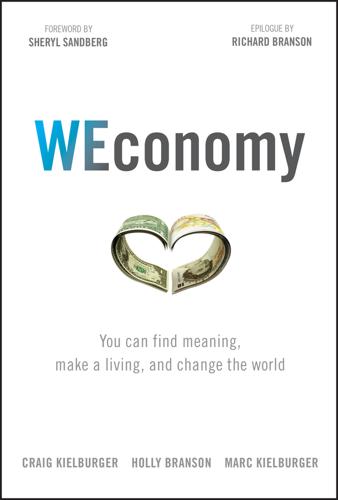
WEconomy: You Can Find Meaning, Make a Living, and Change the World
by
Craig Kielburger
,
Holly Branson
,
Marc Kielburger
,
Sir Richard Branson
and
Sheryl Sandberg
Published 7 Mar 2018
These are exciting areas. Still, fewer people see the opportunities that come with disrupting more traditional industries. The next wave of purpose and profit will upend our daily routines with subtle changes that deliver big impact in unexpected places. For instance, WE attached purpose to paper. In the era of Snapchat and Instagram, greeting cards are about as relevant to young people as landlines. There's only so much technology the industry can add to a folded piece of paper. So ME to WE did a trial partnership with American Greetings, the world's largest card company, to inject a social conscience into cards with Track Your Impact.

Falter: Has the Human Game Begun to Play Itself Out?
by
Bill McKibben
Published 15 Apr 2019
And so, just as the spread of cheap cell phones a decade ago meant Africa could dispense with the need to wire landlines, so, too, solar may enable Africa to leapfrog at least some of the traditional ways of generating power. It’s the ultimate in what the business gurus happily call disruption, and it’s been a siren song for entrepreneurs with ambitions higher than the next Snapchat plug-in. Helgesen, for instance. Tall, with long lank hair, he could be the bassist in an indie band, but the Y Combinator T-shirt he’s wearing gives the game away. He didn’t actually do a stint at Silicon Valley’s most famous incubator (his wife did), but that’s his lineage, the same one that produced Airbnb and also the company that wants to embalm your brain so you can be digitally scanned and reimplanted in an android.

The Trains Now Departed: Sixteen Excursions Into the Lost Delights of Britain's Railways
by
Michael Williams
Published 6 May 2015
They were mostly comfortable, and the journey was relatively stress-free – certainly compared with security-dominated airports today. In many people’s minds, right up to the beginning of the 1960s, the annual journey to the seaside aboard a train was associated with pleasure, relaxation, the joy of sharing simple delights with your children in an era before iPads, smartphones, Snapchat and Twitter. The mood was encapsulated by the historian C. Hamilton Ellis, who writes in his 1947 book The Trains We Loved, ‘Surely it was always summer when we made our first railway journeys … Sun shone on the first blue engine to be seen, a Somerset & Dorset near Poole; there was sunshine, most dazzling, on a Great Western brass dome; the sun shone on an extraordinary mustard-coloured engine of the London, Brighton and South Coast, seen by three-year-old eyes.’
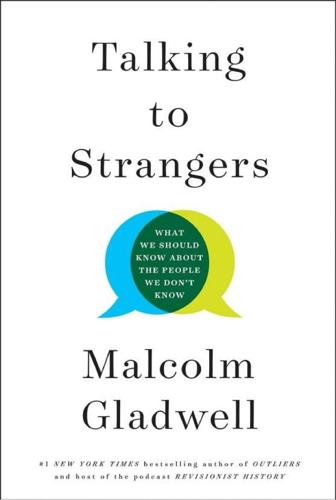
Talking to Strangers: What We Should Know About the People We Don't Know
by
Malcolm Gladwell
Published 9 Sep 2019
She writes, “For the supercompetitive, Sharpie pens were used to tally the number of drinks on your arm, establishing a ratio of drinks to the time it takes to black out—a high ratio was a source of pride among the guys.” She continues: The way we as students treat the blacking out of our peers is also partly responsible for its ubiquity. We actually think it’s funny. We joke the next day about how ridiculous our friends looked passed out on the bathroom floor or Snapchatting while dancing and making out with some random guy, thus validating their actions and encouraging them to do it again. Blacking out has become so normal that even if you don’t personally do it, you understand why others do. It’s a mutually recognized method of stress relief. To treat it as anything else would be judgmental. 6 Nor is it just a matter of weight.
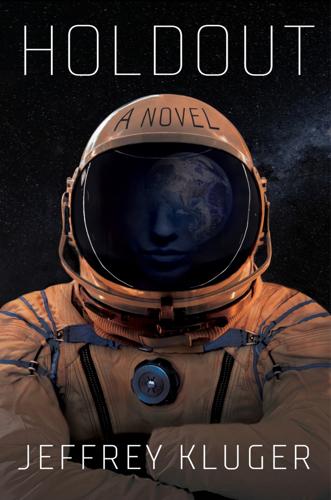
Holdout: A Novel
by
Jeffrey Kluger
Published 2 Aug 2021
“I’ll clean it up and speed it up and weave in a little code to keep it from crashing.” “You can do that?” “Within limits. The NASA site is a jalopy, but I’ll make it go.” Beckwith laughed an admiring laugh and Raymond looked set to swoon, but he held himself together. “You also need a social media presence,” he said. “You have no Twitter, no Facebook, no Snapchat, no Instagram.” “I don’t like those,” Beckwith said. Sonia cut in, with an all-business voice Raymond sometimes heard her use in the clinic. “You’re going to have to learn to like them, Tía.” He looked at her shocked, but Beckwith sounded unconcerned. “Copy that,” she responded. “Ma’am,” Raymond said, “I can set up an account for you on Twitter right now if you like.”

How Long Will Israel Survive Threat Wthn
by
Gregg Carlstrom
Published 14 Oct 2017
Tens of thousands of Israelis came to pay their respects, with the twelve-hour viewing period extended until 11 pm to accommodate the crowds. They wept, they lit candles, they took selfies. (A few Israeli journalists complained about the lack of decorum, but Peres, a technophile who had signed up for Snapchat on his 93rd birthday, probably would not have minded.) The next morning, a Friday, he made his final journey to Mount Herzl, the site of Israel’s national cemetery. He was laid to rest between two of his oldest rivals: Yitzhak Rabin, who had fought him for decades over control of their Labor party; and Yitzhak Shamir, the Likud leader who had been forced into a power-sharing agreement with Peres after a tight election in 1984.

The Sirens' Call: How Attention Became the World's Most Endangered Resource
by
Chris Hayes
Published 28 Jan 2025
But, like food, there is a second answer to the question of what humans will pay attention to. Here again, the answer is just about everything! Or at least a shocking, beautiful, sublime variety of activities and entertainment: Kabuki theater, sitcoms, telenovelas, eight-hour evangelical Christian religious services, Wagner’s Ring cycle, fifteen-second Snapchat videos, War and Peace, hour-long sitar solos. As I write this, Joe Rogan is the single most successful and controversial podcaster in the English language. His episodes typically have millions of listeners, and his shows will often run over two hours on topics as esoteric as the origins of the universe.

The Impossible City: A Hong Kong Memoir
by
Karen Cheung
Published 15 Feb 2022
I tell her about the musician who makes me dal, watches Wes Anderson films with me, fucks me, then lectures me about my immaturity till I am in tears. Adi bakes me a lemon cake with vanilla icing for my birthday and sends me “poems.” We get wistful at midnight. im more and more sure that being sad is what makes me happy btw, she says to me on Snapchat. The carefree university life that felt so liberating in those first two years is fast getting old. I’m sleeping on the couch still, and Kit has just started dating her boyfriend, so I don’t see much of her anymore. I’m crying every other day, but I don’t know why yet. Sometimes I dream about leaving, moving to another city and becoming a writer.
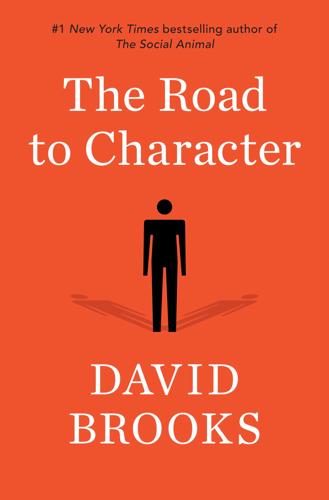
The Road to Character
by
David Brooks
Published 13 Apr 2015
Our natural bent is to seek social approval and fear exclusion. Social networking technology allows us to spend our time engaged in a hypercompetitive struggle for attention, for victories in the currency of “likes.” People are given more occasions to be self-promoters, to embrace the characteristics of celebrity, to manage their own image, to Snapchat out their selfies in ways that they hope will impress and please the world. This technology creates a culture in which people turn into little brand managers, using Facebook, Twitter, text messages, and Instagram to create a falsely upbeat, slightly overexuberant, external self that can be famous first in a small sphere and then, with luck, in a large one.

Age of Anger: A History of the Present
by
Pankaj Mishra
Published 26 Jan 2017
In 1970 German members of the Baader-Meinhof gang travelled to Jordan to receive military training from the Palestinian militant organization al-Fatah before launching their long career in terrorism. In the age of the internet, people with diverse historical and political backgrounds only have to exchange Snapchat videos in order to initiate new journeys: using online outreach the cyber-propagandists of ISIS have managed to seduce thousands of foreign novices into making a perilous journey to the Middle East and North Africa. The Norwegian Anders Behring Breivik, the first of the mass murderers spawned by the internet, sought a common front with Hindu fanatics, among many others, in his worldwide campaign against multiculturalist governments; he in turn inspired the German-Iranian teenager who shot dead nine people in Munich in July 2016.
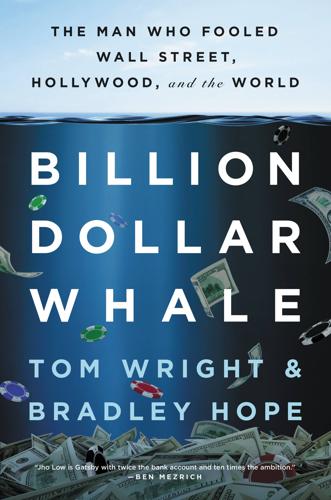
Billion Dollar Whale: The Man Who Fooled Wall Street, Hollywood, and the World
by
Tom Wright
and
Bradley Hope
Published 17 Sep 2018
Leonardo DiCaprio and Miranda Kerr in 2017 voluntarily gave up the gifts they had received from Low to the U.S. government, and the actor even returned Marlon Brando’s Oscar statuette, which was not named in the lawsuits. By then, he had a Best Actor Oscar of his own, for The Revenant in 2016. Kerr had split with Low after the first stories about him began to emerge in early 2015. In May 2017 she married Evan Spiegel, the billionaire founder of Snapchat, cutting all ties with Low. As for Strategic Group founders Noah Tepperberg and Jason Strauss, their interactions with Jho Low had played a role in building their business. In February 2017, Madison Square Garden Company paid $181 million for a controlling stake in a new company, TAO Group, which included their nightclubs.
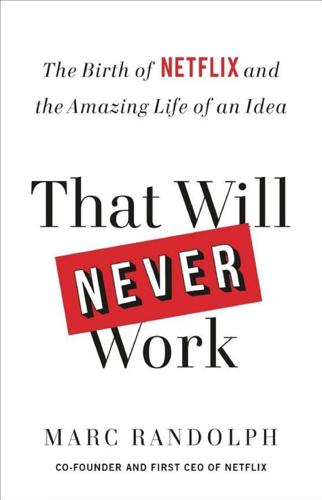
That Will Never Work: The Birth of Netflix and the Amazing Life of an Idea
by
Marc Randolph
Published 16 Sep 2019
And if they had received the porn version, we asked that they return it to us, at our expense, after which we would gladly send them out the proper DVD. But you know? Funny thing. Not a single person did. 12. “I’m Losing Faith in You” (fall 1998) BACK IN THE STONE Age, when I was a kid, there were no video games. There was no Instagram, no Facebook, no Snapchat. There was no way to watch movies at home, unless you wanted to set up the old reel-to-reel and watch yourself as a baby. There wasn’t—in the Randolph household at least—even cable TV. The only way to rot your brain back then was by watching whatever was on the major networks. And on Saturday mornings and after school, that meant cartoons.
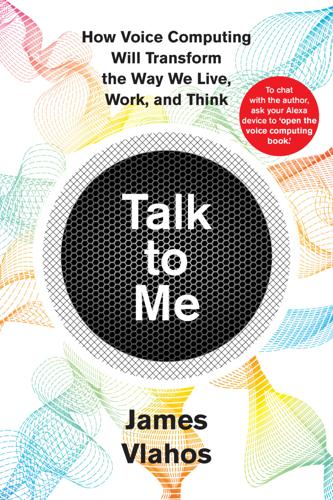
Talk to Me: How Voice Computing Will Transform the Way We Live, Work, and Think
by
James Vlahos
Published 1 Mar 2019
Our relationships with voice assistants will inevitably attain a depth and emotional complexity that a mobile phone or desktop computer would never inspire. To be sure, these are still fledgling days for voice, as anyone who has cursed at their phone for failing to understand a simple utterance can attest. For some people, the technology suffers from the “who would use that?” stigma that has greeted new inventions from the automobile to Snapchat. Talking to your virtual assistant in public can feel awkward. But people used to think that having a cell phone conversation as you walked down the street was lame, too. The situation with voice computing is comparable to when the public was first hearing about a strange new technology called the World Wide Web in 1993.
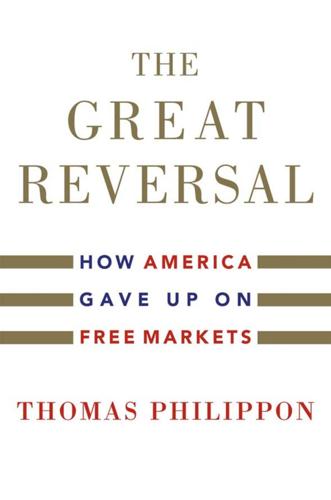
The Great Reversal: How America Gave Up on Free Markets
by
Thomas Philippon
Published 29 Oct 2019
Carmen Reinhart and Kenneth Rogoff (2009) have famously shown that thinking “this time is different” is the shortest way to a financial crisis. In macroeconomics, there is no such thing as “this time is different.” But, perhaps, matters could be different where the internet is concerned. There are some technological reasons to believe this time might be different. Internet firms can grow very quickly. It took Snapchat only eighteen months to reach the $1 billion valuation that it took Google eight full years to achieve, a feat that, on average, takes twenty years for a Fortune 500 company. Digital data can be used in ways that data stored on paper cannot. Learning models trained on very large, fine-grained data sets go further than traditional learning models.

A World Without Work: Technology, Automation, and How We Should Respond
by
Daniel Susskind
Published 14 Jan 2020
But despite their best efforts, a recent high-profile partnership between the Watson team and MD Anderson, a large American cancer hospital, ended in conspicuous failure: the $60 million system designed to help treat cancer was deemed “not ready for human investigational or clinical use.”8 Indeed, the companies behind the health care technologies that really change our lives may not exist yet. And the same goes for the rest of the economy. After all, many of today’s most familiar technology names—Airbnb, Snapchat, Spotify, Kickstarter, Pinterest, Square, Android, Uber, WhatsApp—did not exist a dozen years ago.9 Many technologies that will be household names in the future probably have not yet been invented. WHY BIG? Like today’s tech giants, the technology companies that dominate in the future are also likely to be very big.
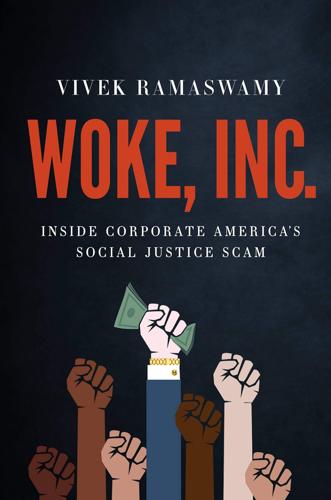
Woke, Inc: Inside Corporate America's Social Justice Scam
by
Vivek Ramaswamy
Published 16 Aug 2021
It reminded me of a kid in my high school French class who used to cheat by stealing the answer key to every test… except he would always intentionally write the wrong answer to just one question each time, as a decoy to prevent him from getting caught. In an embarrassing public display of conformity, YouTube, Snapchat, Stripe, PayPal, Shopify, and other platforms quickly followed suit with their own Trump bans.22 Of course, there was no hope for Trump supporters or sympathizers if the 45th president himself wasn’t immune to this brazen censorship. Naturally, the accounts of tens of thousands of conservatives also disappeared into the ether—all at the behest of technocratic autocrats like Zuckerberg and Dorsey.

Quit Like a Woman: The Radical Choice to Not Drink in a Culture Obsessed With Alcohol
by
Holly Glenn Whitaker
Published 9 Jan 2020
This translates to many different things for me: It looks like going to bed at nine or even eight (when I want to), wearing what I want to wear (scarves and loose fabrics and flat comfy orthopedically supporting shoes but also sometimes stilettos), staying in, telling people to turn down music that’s too loud, asking for what I need without being embarrassed, being me without apologizing. Crone me loves my bed and baths and quiet evenings with just a few people; she likes cats and hats and sunscreen and walking slowly and saying no and not responding to electronic communications; she definitely has no clue how to use Snap-chat. Sometimes Crone me passes gas in front of other people because Crone me would much rather suffer judgment and disgust than the pain of holding in a fart. That kind of stuff. We are all the things; we are innocent maidens and givers of life and wild, angry beasts, and we are absolutely little old ladies who prefer mint tea to mint juleps.
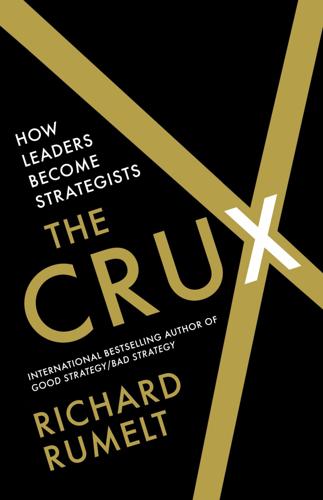
The Crux
by
Richard Rumelt
Published 27 Apr 2022
In the old Monty Python TV show, the narrator would, at some point, say, “And now for something completely different!” In the smartphone world the third stage of the rocket was mobile social media, something no one had seen before. Facebook had one hundred million users in 2008, zooming to one billion by 2012. Instagram, Snapchat, WeChat, WhatsApp, Twitter, and more grew rapidly, in large part, due to smartphones. This new thing entranced billions. In Tokyo the pedestrians who walked while scanning Face-book on their phones were called “zombies.” Even in my graduate MBA classes, students fiddled with their phones underneath their desks, unable to disconnect for an hour.

Among the Braves: Hope, Struggle, and Exile in the Battle for Hong Kong and the Future of Global Democracy
by
Shibani Mahtani
and
Timothy McLaughlin
Published 7 Nov 2023
Tommy called his family just after he landed in New York. When his mother answered, the lines he prepared stuck in his throat. Tommy broke down crying before he could speak. After they arrived at John F. Kennedy Airport, volunteers drove the five to a house in Virginia, an Airbnb. Tommy snapped a picture of himself and posted it on his Snapchat that first night in the US. His account had been inactive for nearly a year. Prudence and others who saw the alert thought that the account must have been hacked and were unsure about opening the post. When they did, it was unmistakably Tommy, still with his odd sense of humor. In the picture he was in bed, resting on a pillow propped up against the headboard, scowling slightly.
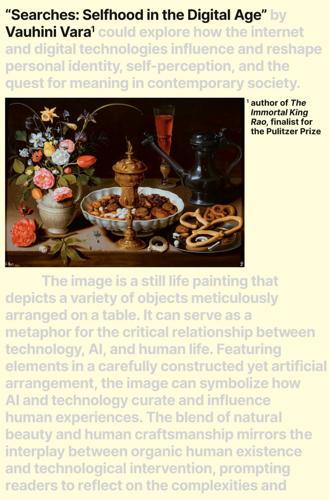
Searches: Selfhood in the Digital Age
by
Vauhini Vara
Published 8 Apr 2025
Sacramento, San Diego, San Francisco, San Francisco Giants, San Francisco cultural scene, San Francisco transit, San Jose, Saturday Night Live, Schitt’s Creek, Sci-fi & fantasy, Sci-fi & fantasy books, Sci-fi & fantasy films, Science, Science news, Seasonal cooking, Seth Meyers, Sewell Chan, Shah Rukh Khan, Shoes, Snapchat, Soccer, Social media, Some Good News with John Krasinski, Space, Space and astronomy, Sports, Sports events, Sports figures, Stanford University, Stephen Colbert, Stephen King, Succession, Superstores, Susan Orlean, Swara Bhasker. TIME Magazine, TV streaming services, Taapsee Pannu, Taylor Swift, Tech industry, Tech news, Tech personalities, Technology, Ted Lasso, Television, Tesla, The Associated Press, The Atlantic, The Daily Show with Trevor Noah, The Guardian, The New York Times, The New Yorker, The Real Housewives of Salt Lake City, The Wall Street Journal, The Washington Post, The White House, Thiruvananthapuram, This American Life, Threads (Meta), Tig Notaro, Tom Wolfe, Translation, Transportation, Travel, Travel news and general info, Truth Social, Tyler The Creator.

The Measure of Progress: Counting What Really Matters
by
Diane Coyle
Published 15 Apr 2025
As Figure 4.2 shows, t here are a growing number of t hese networked devices, not just smartphones and laptops, but also smart thermostats, smart speakers, smart doorbells, robot vacuum cleaners, and so on. These have been rapidly growing markets according to industry data, 1965 1980 1G Mobile 2G Game consoles 1975 Cable 1985 1990 Netscape 1995 DVR Google LinkedIn YouTube Roku Netflix streaming Tablet Instagram Facebook Smartphone Smart TV 2015 Snapchat Apple watch 2010 Amazon echo 2020 5G Mobile Streaming radio PlayStation VR Amazon prime streaming 7G Game console Time-shifted viewing HS DVD & Blu-Ray Twitter 2005 HDTV 2000 Netflix Yahoo DBS Satellite Chromecast Google glass 8G Game console Hulu+ Apple TV VOD Gmail figure 4.2.

The Age of Surveillance Capitalism
by
Shoshana Zuboff
Published 15 Jan 2019
That the “personality” insights themselves are banal should not distract us from the fact that the volume and depth of the new surplus supplies enabled by these extraction operations are unprecedented; nothing like this has ever been conceivable.64 As Kosinski told an interviewer in 2015, few people understand that companies such as “Facebook, Snapchat, Microsoft, Google and others have access to data that scientists would not ever be able to collect.”65 Data scientists have successfully predicted traits on the five-factor personality model with surplus culled from Twitter profile pictures (color, composition, image type, demographic information, facial presentation, and expression…), selfies (color, photographic styles, visual texture…), and Instagram photos (hue, brightness, saturation…).
…
New York Times, March 31, 2018, https://www.nytimes.com/2018/03/31/business/media/amazon-google-privacy-digital-assistants.html. 43. Alex Hern, “Amazon to Release Alexa-Powered Smartglasses, Reports Say,” Guardian, September 20, 2017, http://www.theguardian.com/technology/2017/sep/20/amazon-alexa-smartglasses-google-glass-snapchat-spectacles-voice-assistant; Scott Gillum, “Why Amazon Is the New Google for Buying,” MediaInsider, September 14, 2017, https://www.mediapost.com/publications/article/307348/why-amazon-is-the-new-google-for-buying.html; Mike Shields, “Amazon Looms Quietly in Digital Ad Landscape,” Wall Street Journal, October 6, 2016, http://www.wsj.com/articles/amazon-looms-quietly-in-digital-ad-landscape-1475782113; 44.
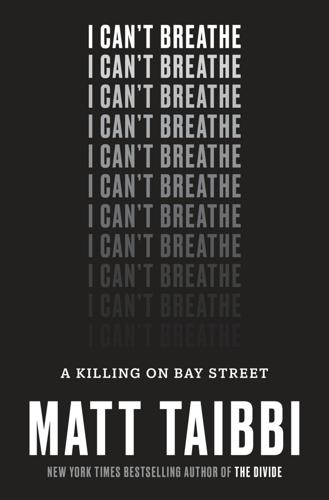
I Can't Breathe
by
Matt Taibbi
Published 23 Oct 2017
The Garner case, and the Ferguson episode that followed it, had exposed a vacuum of political leadership within the black community. In Ferguson, digital-age activists like Black Lives Matter had surprised everyone by repeatedly massing in huge numbers. They rallied by the thousands to take on police blockades from all directions on the strength of messages flowing through Twitter, Snapchat, Instagram, and other online applications. These crowds formed without top-down advance direction of the sort practiced by the older generation of civil rights leaders, people like Sharpton and Jesse Jackson. Those two had been the faces of such protests for decades, but in a subplot to the Ferguson protests, both were heckled everywhere they went by younger, more strident activists.

The Digital Doctor: Hope, Hype, and Harm at the Dawn of Medicine’s Computer Age
by
Robert Wachter
Published 7 Apr 2015
Unless a 26-yearold computer engineer has a loved one with a serious medical illness or hails from a long line of physicians, the world of healthcare is utterly foreign, with a different language and a set of problems whose solutions appear to be well beyond the horizon. “People like to build products that solve problems in their lives. Snapchat may do that, whereas a healthcare app doesn’t,” Gross told me. As their business school project continued, the partners began to believe that they might be able to help fledgling companies by, said Gross, “giving them a little bit of funding, introducing them to the right investors, refining their pitch to build investor confidence, and then helping them build an investable business.”

Together
by
Vivek H. Murthy, M.D.
Published 5 Mar 2020
If your family and friends use social media to announce major life events or get-togethers, and you’re not on that platform, you can find yourself in the dark. Add to that the fact that today’s social media platforms are developed with a highly sophisticated understanding of human behavior and brain science. Software engineers use all manner of techniques—from autoplay on YouTube to streaks on Snapchat, to interaction notifications on Instagram, Twitter, and Facebook—to keep bringing us back and to hold our attention on their platforms for as long as possible. In most cases, the economic measure of a successful app is not the quality of human interaction online but sheer quantity of usage. The more time we spend on the platform, the more revenue it generates, usually in the form of advertisements.
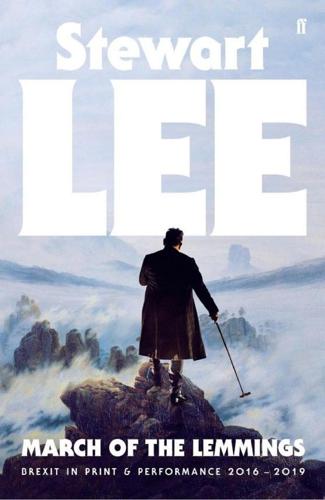
March of the Lemmings: Brexit in Print and Performance 2016–2019
by
Stewart Lee
Published 2 Sep 2019
You just paid to see me, and I am me.’180 But we’ve turned away, it would seem to me, from the wider world.181 Everyone’s looking inwards, back through their own boundaries, back through their own borders, and you have to pay for everything now, and nothing comes for free. Except the last U2 album. Whether you wanted it or not. Like a Trojan virus. And I – I don’t really know what I’m supposed to say to any of you now, ’cos you all live in a reflecting hall of digital mirrors made of Facebooks and Twitters and Snapchats and Instagrams and Deliveroos and selfies and WhatsApps. You’re the kind of people who were run over by a bus because you were crossing the road while looking at a bus-timetable app. And they say you shouldn’t keep dolphins in concrete tanks, because the endless sound of their own sonar bouncing back at them eventually drives them mad, like someone locked in an aluminium-lined cell listening to an endless loop of every ill-considered 2 a.m. tweet they ever sent out.
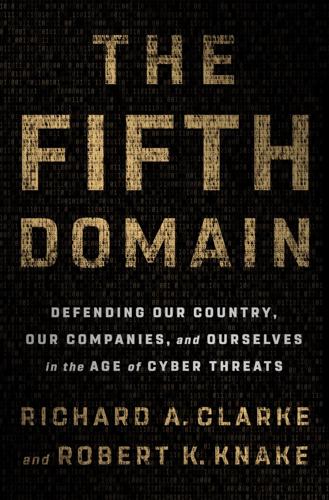
The Fifth Domain: Defending Our Country, Our Companies, and Ourselves in the Age of Cyber Threats
by
Richard A. Clarke
and
Robert K. Knake
Published 15 Jul 2019
YouTube, owned by Google Alphabet, did not respond to requests from Rosenberg and the D-trip team. Given their limited staff and funding, Rosenberg told us, the D-trip unit did not focus on all social media. Reddit and other platforms were not scanned. We now know, however, based on a report from the Senate Select Intelligence Committee, that in 2016, Reddit, Tumblr, Instagram, Snapchat, and a host of lesser-known social media platforms were used by the Russian manipulation campaign. Getting all of the platforms to do the right thing, especially after the public scrutiny diminishes, may require a law and regulation. To assure a minimum level of scrutiny, Congress should by law require social media to look for and delete bots and foreign entities pretending to be Americans.

Men Who Hate Women: From Incels to Pickup Artists, the Truth About Extreme Misogyny and How It Affects Us All
by
Laura Bates
Published 2 Sep 2020
Growing up, his mum had already talked to him about feminism and inequality from a young age. So, when he encountered the same online propaganda, it didn’t have the impact on him that it did on his friends. Another interviewee, 15-year-old Tom, says: I think [anti-feminism] comes from pretty much anywhere on social media really… mostly YouTube, Instagram and Twitter, maybe Snapchat as well… [there are] quite a lot of memes and videos that are aimed as just jokes, but actually are quite nasty if you really think about it. He adds that he regularly hears boys at school discussing feminism, and that they ‘often feel threatened’. It would ‘definitely’ be very difficult for a boy his age to publicly call himself a feminist, because of the peer pressure and ‘hate’: Loads of people I hear talk about things like women are getting our jobs now; before long, they’re gonna have more rights than us (I hear that quite a lot around school)… before long, women actually have more say in things, and it’s becoming much more equal, and I think it’s just threatening… a lot of people are worried that they can’t make jokes any more… anything that they would have enjoyed before, and they don’t want it to change.
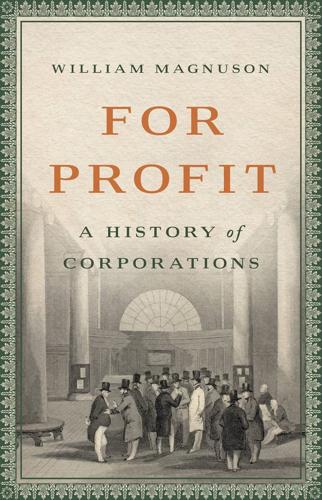
For Profit: A History of Corporations
by
William Magnuson
Published 8 Nov 2022
Start-ups, unlike “regular” companies, are about technology. They are about growth. They are about the internet, and mobile phones, and platforms, and “sharing.” They are overwhelmingly based in Silicon Valley. Consider some of the most influential start-ups founded since the bursting of the dot-com bubble in 2000. Facebook. Airbnb. Instagram. Snapchat. Twitter. Uber. They all share a similar model. They take the internet, add some proprietary technology, and then let users take control: to rent their houses, to share their photos, to start conversations, to give rides. They are platforms. They aim to grow fast and dominate their markets, typically by acquiring users through low prices and gaining a reputation as the next “it” app, the one that is cool and pretty and useful.
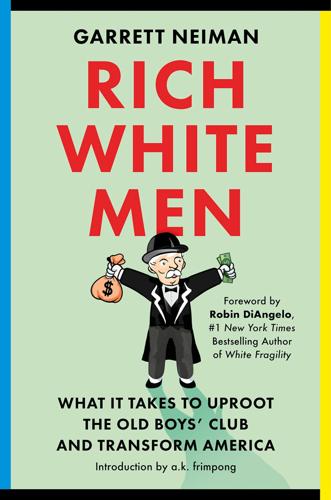
Rich White Men: What It Takes to Uproot the Old Boys' Club and Transform America
by
Garrett Neiman
Published 19 Jun 2023
CHAPTER 5 INTERSECTIONAL ADVANTAGE We’re throwing down a fat party THIS SUNDAY. In honor of Valentine’s and President’s Day, celebrate the legacies of our two-timing forefathers—Clinton and Lewinsky, Kennedy and Marilyn, Jefferson and Sally Hemings (get some, Jefferson). —EVAN SPIEGEL, COFOUNDER OF SNAPCHAT AND ALUMNUS OF STANFORD UNIVERSITY’S KAPPA SIGMA FRATERNITY MYTH: The wealthiest 1 percent of Americans are the most advantaged. The world can be a brutal place for a girl with a penis. —JANET MOCK, AMERICAN TELEVISION HOST AND TRANSGENDER RIGHTS ACTIVIST REALITY: The intersectionally advantaged benefit from unearned advantages that no amount of money can buy.
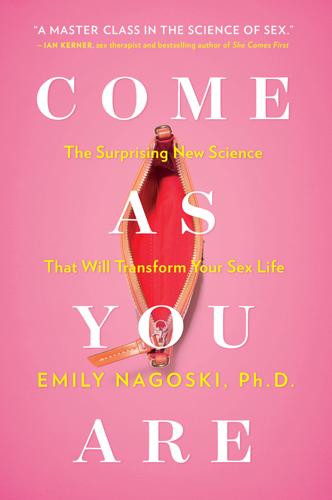
Come as You Are: The Surprising New Science That Will Transform Your Sex Life
by
Emily Nagoski Ph.d.
Published 3 Mar 2015
You’re stressed, exhausted, or overwhelmed, it’s very noisy in your brain, there’s heavy traffic, lots of yelling and horns honking about all the stuff that’s stressing you out. Your partner’s affectionate touch travels from your arm, up your spine, to your brain, and it says, “This is happening. What do you think?” And your brain says, “WHAT? I CAN’T HEAR YOU OVER ALL THIS NOISE!” And by then the sensation is over. (Sensations are a little bit like Snapchat.) If your partner keeps touching you, the sensation keeps asking your brain, “This is still happening. What do you think?” And eventually it might get your brain’s attention, and your brain might say, “ARE YOU KIDDING ME? I’VE GOT ALL THIS OTHER NOISE TO CONTEND WITH!” And if the sensation ever gets noticed enough to expand out of your brain’s emotional One Ring, it comes out in the form of, “Not now, honey.”

The Job: The Future of Work in the Modern Era
by
Ellen Ruppel Shell
Published 22 Oct 2018
Indeed, he continued, while wildly successful at attracting both capital and the public eye, in the matter of sustainable job creation, not one of these tech dynamos stood up to legacy companies like Kroger, Home Depot, Hewlett-Packard, General Electric, IBM, and Walmart. McAfee is an avid booster of technology, which he habitually calls “a creator of abundance.” Certainly it works for him, and for that happy band of Googlers hacking and snacking in Google offices next door. And he points out that it works for all of us—Instagram, Facebook, SnapChat, YouTube, Twitter, and of course Google Search are all part of what McAfee calls “the bounty.” But he acknowledges that this bounty is created through the efforts of relatively few paid employees. That’s the nature of the digital age beast. “What we’re looking at is an economy that is incredibly wealthy without needing work in the way that we came to think about it in the industrial age,” he said.
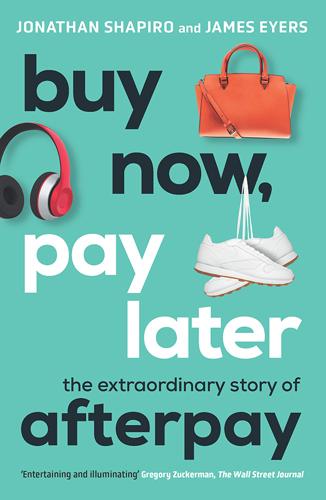
Buy Now, Pay Later: The Extraordinary Story of Afterpay
by
Jonathan Shapiro
and
James Eyers
Published 2 Aug 2021
Morgan 53, 120, 162, 251 Juul Labs 237–8 Kardashian, Kim 189 the Kardashians 188 Karzis, Sophie 116 Kassabgi, Damian 196, 207, 299, 304, 322 Katsalidis, Nona 57 Kaufman, Lilly 1–2 Kaufman, Susie 2, 3 Kaufman, Zoltan 1, 2 Kell, Peter 144, 163, 202, 207 Kelly, Rachel 129, 130–1, 135, 136 Khalifa, Mia 311 Kidman, Matthew 18, 95 King, Phil 185 Kingston, Beverley Basket, Bag and Trolley 45 Kitney, Damon 194 Klarna 81, 133, 187, 245, 279, 284, 291, 316, 317 Commonwealth Bank and 247–8, 337–8 United States launch 190 Kohler, Alan 209 Laffont, Philippe 234–5, 257, 258, 295, 335 Langley, Ron 83 Latitude Financial 118, 256–7 Lau, Sarah 128 Lawrence, Martin 149 lay-by 41, 44, 45, 46–7 costs to retailer 48–9 digitising of 47–8 Leeser, Julian 304 Lehman Brothers 177 Leibovich, Gabby Catch of the Day 89 Leigh, Andrew 287, 288 Lennie, Nadine 116 Lenton, Shane 88 Letts, Darren 175, 176 Levchin, Max 81, 190, 284, 312 Levis, Justin 87 Levis, Rod 87, 88 Lew, Solomon 129, 133, 270 Lindenberg, Brad 131, 279 Lipski, Simon 8 Little, Jason 11 Liu, Jun Bei 160 Livewire 240, 292 Lone Pine Capital 235, 236, 281, 295, 311 Loton, Brian 71 Lowde, Rebecca 289 Lowe, Philip 204, 205, 206, 260, 261, 266, 301, 341 Lowy, Frank 6, 7, 9, 31, 174 Lowy, Hugo 6 Lu, Janet 95 Lululemon 161 Lustig, Ted 9 McAllister, Jenny 146, 329 McBain, John 85 McCann, Edwina 305 Macaulay, Louise 142 McClelland, Colin 309 McCrohan, Sharon 197–8 McGarry, Ben 261, 267, 289–90 MacGraw, Beth 305 MacGraw, Tessa 305 McKenzie, Mark 262 McNamara, Peter 205, 206 Madden, Steve 191 Malek, Ron 23 Mandel, Steve 236, 295 Marshall, David 83 Mastercard 46, 108, 219, 220, 255, 263, 302, 339 Masters of the Market 18, 31 Matrix 157, 172, 173, 242, 331–2 Mawhinney, Simon 292 Maxsted, Lindsay 258 Maxwell, Robert 28 May, Rob 48–9 Mayne, Stephen 258 Medcraft, Greg 142, 144 Melbourne Jewish community 5 Melvin Capital 308–9 Meriton 6 Messara, Mike 127 Mickey Mouse report 148–51, 167, 227 millennials, Gen Z, Gen X 208–9, 331 credit cards and 40, 41, 52, 73, 208, 217, 222 trend makers, as 308, 311 Mitchell, Jacob 177 Mitchell, James 275 Mitchell, Paula 87 Moar, Max 9 Molnar, Michele 4, 13, 40, 76, 134 Molnar, Nick 3, 4, 11, 38, 73, 194 Afterpay see Afterpay Banking and Wealth Summit 2020 303 bar mitzvah 12 Eisen, meeting 39–40 fortune, personal 277, 333 Ice Online see Ice Online marriage and family 88, 194, 210, 277, 303 online jewellery sales 13, 14, 38–9 real estate purchases 343 rugby 11, 12, 13 Senate inquiry appearance 210–11 Shmuel Gniwisch 14, 16, 40, 172 TEDxYouth@Sydney 2017 171 United States expansion 172–3, 187, 190, 188, 226, 244–5 Molnar, Ronald 3–4, 12, 38–9, 108, 134, 168 Molnar, Simon 4, 13, 40 Ice Online see Ice Online Molnar, Vivian 3, 4 Montgomery, Roger 181, 182 Moore, Daniel 291 Mordant, Simon 23, 117 Moreno, Antonio 244 Morgan Stanley 97, 282 Moriah War Memorial College 4, 5–6, 10, 100, 131, 343 Morrison, Scott 145, 225, 226, 250, 260 pro-fintech position 250, 302–3 Mott, Jonathan 252, 255 Mulcahy, Julian 136, 336 Mumbrella 153 Murdoch, Rupert 126 Musk, Elon 176–8, 309, 311 Myer 44 MYOB 24, 30, 34, 96 Nadella, Satya 302 Nagley, Harold 4, 5, 10 Narev, Ian 217–18, 247 Nasdaq index 101, 102, 180, 232–3 National Australia Bank Afterpay financing 108–10, 121, 123, 168, 216, 251 Hayne Royal Commission 141, 142, 216 National Consumer Credit Protection Act 146, 203, 205, 212, 223, 326 National Debt Helpline 144, 201 National Press Club 260 Netflix 182 Ng, Jeffery 84 Ng, Wendy 58, 116, 117, 159, 267 Nguyen, John 55 Ngwe, Donald 244 Nixon, Blake 28, 31 Ocasio-Cortez, Alexandria 310 O’Connor, Debbie 153 O’Dwyer, Kelly 143 O’Halloran, Xavier 151 O’Neil, Clare 146 online classified platforms 126, 127 Openpay 251 Ord Minnett 175, 246, 251 Orr, Rowena 141 Ovienrioba, Oghosa 319–20 Ownership Matters 148–51, 167, 241, 242 Paatsch, Dean 149, 150–1 Packer, James 126 Packer, Kerry 27, 126 Padley, Marcus 160, 192, 282–3 Pagantis 286 Pape, Scott The Barefoot Investor 154 Paulson, Hank 302 payday lending 146, 212, 320 PayPal 54, 77, 166, 172, 187, 285, 302, 314 Peloton 313–14 Phillpot, Rob 155 Pichai, Sundar 302 Piper, Tim 315 platform companies 128, 240, 263 Plotkin, Gabe 308, 310 Portnoy, Dave 278, 309, 310 Poseidon bubble 96 Powell, Jerome 186, 207 Press, Danielle 202 Princess Polly 76, 77, 79, 106 property development 7, 20 Prunty, Chris 128, 129 Quadpay 131, 187, 270, 315 QVG 128 rag trade 9, 19 REA Group 126, 127 Rechtman, Andrew 76 Redrup, Yolanda 156 regulation of BNPL sector 201 ASIC inquiry 137, 140, 144, 145, 148, 191 ASIC reports 202–4, 297, 298, 299 Reserve Bank 206, 254, 296 Bragg inquiry see Select Committee on Financial Technology and Regulatory Technology Senate inquiry see Senate Economics References Committee inquiry United Kingdom 288, 320–2 regulators, role 287, 296, 297, 298, 300–1 research analysts 252, 253, 280 risk-averse 271 Reserve Bank 206, 254, 295, 302, 341 bond-buying program 269 no-surcharge rules 254, 255, 262, 295, 301, 302, 341 Richardson, Tom 311, 316 Roberts, Matt 251 Robertson, Hugh Walter 58, 67, 133 Afterpay 78, 84, 90, 93, 99 background and early career 70 private investors 71, 72, 84 Touchcorp IPO and 67, 72–3, 85 Robertson, Julian 232 , 233, 235, 245, 295 Robinhood trading app 278, 310 Rose, Nicole 228 Rosenberg, Cliff 84, 90 Rosenblum, Rupert 12 Roth, Mike 94 Rubin, Elana 67, 116, 229, 262 Rudd, Kevin 134, 196, 205, 226, 326 Ryan, Tony 28, 29 Saadat, Michael 139, 143, 144, 202, 212, 213, 221 Afterpay role 229, 248 code of conduct 324–6, 328 Salt, Bernard 208 Sams, Lauren 306, 307, 311, 312 Samson, James 241–2 Samway, Tim 156 Saunders, John 6, 7, 9, 174 Saville, Duncan 63, 65, 68, 84 Afterpay Touch shareholding 118, 175 Scheinberg, Albert 9 Schulman, Daniel 314 Schwarz, Stephanie 10–11, 343 Seafolly 8 SEEK 126 Select Committee on Financial Technology and Regulatory Technology 249 Afterpay presentation to 262–3 report 286–7, 296, 297 Senate Economics References Committee inquiry 145–8, 154, 186 hearings 209, 210–12 report 223 scope 200–1 Serjeant, Tim 187 Sezzle 131, 175, 187, 267, 285, 315 ASX listing 246, 247 share market banks and mining, dominance of 91, 92 day traders 278–9, 308–10 dual-class share structure companies 102 founders, sale of shares by 156, 281, 333 short-sellers 156, 165, 167, 175, 176–7, 185, 186, 276, 289, 308–9 tech companies 96, 101 value 91 Shein, David 90 Sher, Steve 84 Shervington, Laurie 65 Shipton, James 142, 143 Shopify 282, 284, 313 Shorten, Bill 139, 145, 198, 225, 226, 249 Showpo 95 Shulman, Gabi 86, 88 Sidereal Holdings 83, 117 Siemiatkowski, Sebastien 190 Simmonds, Julian 287 Singer Sewing Machines 42 Skamvougeras, Paul 84 Smith, Steve 197 Snapchat 98 Solution 6 23, 24 Soros, George 232, 233 Sotiriou, Lafitani 113, 121, 133, 162, 164–5, 166, 224 Spiro, Dov 24 Splitit 246 Stadnik, Andrei 282 Stalder, Dana 157, 172, 187, 242, 243 Stevens, Chris 289 Stockland Trust 9 Stocks Down Under 276, 284 Stouffer, Tracy 133 Strachman, Daniel 233 Strasser, Nicole 5 Sugar, Brian 188 PopSugar 188 Sullivan, Angus 338 Summers, Larry 249 superannuation 182, 270 Surowiecki, James 47 Surry Hills 19–20 Swanson, Eleanor 272, 292 Sydney Jewish community 3, 5, 7–8 Sydney Morning Herald 40 Sykes, Trevor 29, 30 Tabakoff, Nick 23 TAFMO 61, 63, 64, 84 Tagliaferro, Anton 291 ‘tap and go’ payments 120 Tate, Diane 325, 326, 329 Taub, Stephen 295 Taylor, Mike 114 tech-stock bubble 15, 16, 23, 98, 180, 183, 232–3 Telstra privatisation 21, 22 Temple Emanuel 4 Tencent 274–6, 280, 289 Ters, Jason 36, 83 Tesla 176–8, 268, 275, 295 Textor, Mark 340 Thiel, Peter 122, 176, 284 Thompson, Sarah 168 Thorburn, Andrew 141, 216 Thread Together 307, 308 Tiger Cubs 233, 234, 235, 236, 239, 258, 275, 295, 311 Tiger Global 234, 282, 295, 311 Tiger Management 228, 232, 233, 235 TikTok 307 Touch Payments 82 Touchcorp 54, 58, 59 Afterpay payment platform 54–5, 59 Intellect and 62 Touchcorp Holdings Pty Ltd 64, 66, 104, 116 Afterpay, merger with see Afterpay Touch (APT) IPO 58, 59, 67–8, 84 Treasury 296, 297, 300, 301 ‘responsible lending’ laws 326–7 Triguboff, Harry 6 Trump, Donald 112 Turnbull, Malcolm 140, 145, 197, 213, 225, 249 Twitter 98, 102 Tyabji, Hatim 63–4, 66 Tyler, Chris 23 Uber 140, 196, 242, 263, 289, 299 UBS investment conference 2016 110, 111 October 2019 report 252, 253, 255–6 ‘unicorn’ status 120, 183 United Kingdom Afterpay expansion into 184, 224, 264 Financial Conduct Authority (FCA) 320, 321, 323 regulation of BNPL sector 288, 320–2 United States Black Lives Matter 277 election 2016 111–12 expansion into 157–8, 173–4, 190, 243–4, 265 fashion market 158 Federal Reserve COVID-19 response 273 regulatory risks in 267 Uphold & Recognise 304 Valmorbida, Val 57 van den Berg, Stefan 184 van Dongen, Yvonne 27 Vanguard 293, 294 venture funds 98, 99 Veronika Maine 107, 111, 113 Verrender, Ian 152 Verwer, Peter 302 VGI Partners 186–7 Visa 46, 108, 219, 220, 246, 263, 279, 302, 339 WAAAX stocks 182 Waislitz, Alex 71, 112, 183, 274, 342 Walburgh, Fetzie 55 Walker, Gavin 35 The Wall Street Journal 295 Wallis, Stan 220 Walsh, Michael 110 Warner, David 198 Warren, Elizabeth 310 Waters, Tony 128, 129 WeChat 275 The Weekend Australian 194 Weiss, Gary 17, 18, 19, 24, 35, 63, 125 background 25–6 ClearView 36 Coats acquisition 31–2 GPG see Guinness Peat Group (GPG) Industrial Equity Limited (IEL) 26 Westfield 6–7, 90, 174, 306–7, 310–11 Westpac Banking Corporation 51, 247, 327 Afterpay Money and 290–1, 338, 339, 340 anti-money laundering breaches 258–9 White, Richard 97, 281 Whitlam Turnbull bank 18 Whittaker, Marc 240 Wilson, Geoff 18, 94, 125, 225 Future Generations fund 125, 126 Wilson, Matthew 336 Wilson, Tim 225 Wilson Asset Management 93, 94, 125, 251 Wilson HTM 67, 68, 72, 93, 113, 184 Winkler, Craig 34 Winters, John 101 WiseTech Global 97, 182, 281 Women’s Wear Daily 188, 226 Wonga pay day loan scandal 322 Woodson Capital 238–9, 295, 311 Woolard, Christopher 320, 321, 322 World Health Organization 261 World Maccabiah Games 12 World War II 1 Wran, Neville 18 Wylie, John 13, 22, 39 Xenita, Natalie 307 Xero 34, 96, 182 Xu, Nesta 55 Yahoo!

Emotional Ignorance: Lost and Found in the Science of Emotion
by
Dean Burnett
Published 10 Jan 2023
But, despite all these reasonable points, it still felt wrong, to share my father’s funeral, on Facebook! Even writing that sentence is weirdly jarring. I use Facebook to publicise my work, post jokes or memes, and share pictures of my notorious cat. Using it to broadcast my father’s funeral service? That was unsettling. Why, though? Facebook, Twitter, Instagram, Snapchat, TikTok, and more are omnipresent parts of the modern world. I’m a member of several such sites, as is a significant chunk of humankind.1 Nonetheless, sharing something so profoundly emotional as my father’s funeral service via social media felt like a step too far. However, I’m aware that not everyone feels the same.

The Long History of the Future: Why Tomorrow's Technology Still Isn't Here
by
Nicole Kobie
Published 3 Jul 2024
Palmer Luckey took one apart alongside tech dissectors at iFixit to see how it worked, declaring it ‘tragic’, with the core, supposedly secret, technology consisting of ‘photonic lightfield chips’, nothing more than the ‘same technology everyone else has been using for years’. Sales reflected such negative reviews, sparking mass layoffs and a pivot to business customers – as well as a new CEO. That wasn’t enough to scare off others from diving into the AR market. Snap, the makers of the SnapChat app, released glasses in 2016 that let you record short videos and upload them via your smartphone connection, the technology largely driven by the acquisition of Vergence Labs, which had made its own point-of-view video glasses three years before. A next-gen model that’s still in the works promises to ‘bring augmented reality to life’ by overlaying computing onto the world.

The Ones We've Been Waiting For: How a New Generation of Leaders Will Transform America
by
Charlotte Alter
Published 18 Feb 2020
Work wasn’t just a job or a paycheck: it was an identity. You couldn’t say, “You’re broken, let me fix you,” to a worker who had lost his job. Instead, you had to offer ways to allow that person to keep his or her sense of self, but in a modern, technological world. You couldn’t tell an auto worker to learn to code so they could work for Snapchat—but you could tell him computer science was important because all the latest cars contained digital technology. For many of the aging white workers in the industrial Midwest, Pete came to understand, their economic anxiety was identity politics—because to them, their jobs were their identity. He quickly realized that as mayor, success was hard to quantify and failure was easy to spot: either the potholes got fixed or they didn’t, the snow got plowed or not.

Virtual Competition
by
Ariel Ezrachi
and
Maurice E. Stucke
Published 30 Nov 2016
Some enforcers scoff at the advances in economic thinking over the past thirty years–downplaying the role of imperfect willpower and biases. They still believe that markets behave as though the participants are perfectly rational and have willpower. So behavioral exploitation may be as foreign to them as Snapchat, and will affect their readiness to pursue these cases. Super-platforms may appear competitive in attracting a constellation of soft ware developers. Seeing the plethora of free and low-cost apps 220 Intervention downloaded annually, the enforcers may conclude that consumers are benefiting (and do not care that much about privacy).
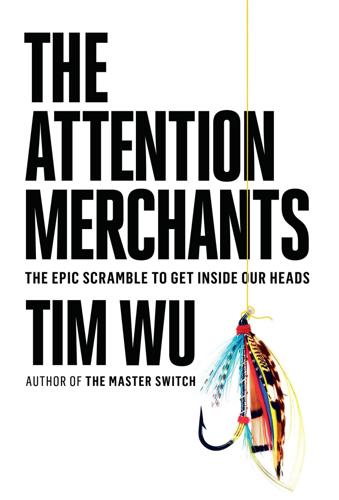
The Attention Merchants: The Epic Scramble to Get Inside Our Heads
by
Tim Wu
Published 14 May 2016
BuzzFeed billed itself as the “first true social news organization,” which meant it was designed for a post-Facebook and post-Twitter world, where news gained currency by being shared on social networks, through newsfeeds, Twitter feeds, and the like. It was also designed to be read on the now ubiquitous mobile platforms; by 2015, 60 percent of its traffic was via phones and other wireless devices (including 21 percent from Snapchat)—the key to success was now getting people to share stuff socially from mobile. By the time Peretti built BuzzFeed, viral media were not an occasional phenomenon, but reaching the public like successive waves crashing on a metaphorical shore, they thus both rivaled and complemented (depending on the context) existing means of capturing attention.
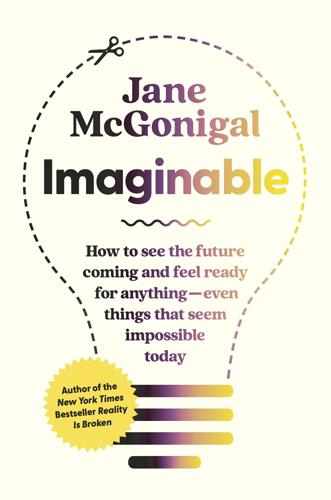
Imaginable: How to See the Future Coming and Feel Ready for Anything―Even Things That Seem Impossible Today
by
Jane McGonigal
Published 22 Mar 2022
To play the game, you’ll be asked to share your ideas about what you, personally, would do if the FeelThat network were real. Would you join the network? Who would you “friend”? Who would you block? Who would you follow? What would you be excited about, if this technology were real? What would you worry about? How might a day in your life unfold if you were on the FeelThat network instead of Instagram, Snapchat, Facebook, or Twitter? You’ll be able to discuss these questions in your classroom and add your thoughts to a global online discussion. Join us to imagine how you might use social technologies in the future—to think about what’s possible and to be in conversation with other people across the globe about how the world is changing and how we want to respond to, prepare for, or try to affect or alter those developments.

Surveillance Valley: The Rise of the Military-Digital Complex
by
Yasha Levine
Published 6 Feb 2018
By 2017, it had $90 billion in revenues and $20 billion in profits, with seventy-two thousand full-time employees working out of seventy offices in more than forty countries.92 It had a market capitalization of $593 billion, making it the second-most-valuable public company in the world—second only to Apple, another Silicon Valley giant.93 Meanwhile, other Internet companies depend on Google for survival. Snapchat, Twitter, Facebook, Lyft, and Uber—all have built multi-billion-dollar businesses on top of Google’s ubiquitous mobile operating system. As the gatekeeper, Google benefits from their success as well. The more people use their mobile devices, the more data it gets on them. What does Google know?

The Controlled Demolition of the American Empire
by
Jeff Berwick
and
Charlie Robinson
Published 14 Apr 2020
• The average American adult spends 2 hours, 51 minutes on their smartphone every day. • College-age adults (18–24) spend significantly more time on mobile phones than older demographics, at 4 hours, 5 minutes per day. • In 2018, Americans spend an average of 1 hour, 56 minutes on the top 5 social media platforms alone, ranked as YouTube, Facebook, Snapchat, Instagram, and Twitter. • 77% of the population in the United States has a social networking profile. • Facebook has some 1.86 billion accounts. • YouTube and Whatsapp add 2.2 billion more social media accounts. • Adults typically send and receive an average of 10 texts a day. • Teens, on average, send and receive 50 texts per day

Data and Goliath: The Hidden Battles to Collect Your Data and Control Your World
by
Bruce Schneier
Published 2 Mar 2015
Your browser sends data to websites about what software you have, when it was installed, what features you’ve enabled, and so on. In many cases, this data is enough to uniquely identify your computer. Increasingly we communicate with our family, friends, co-workers, and casual acquaintances via computers, using e-mail, text messaging, Facebook, Twitter, Instagram, SnapChat, WhatsApp, and whatever else is hot right now. Data is a by-product of this high-tech socialization. These systems don’t just transfer data; they also create data records of your interactions with others. Walking around outside, you might not think that you’re producing data, but you are. Your cell phone is constantly calculating its location based on which cell towers it’s near.
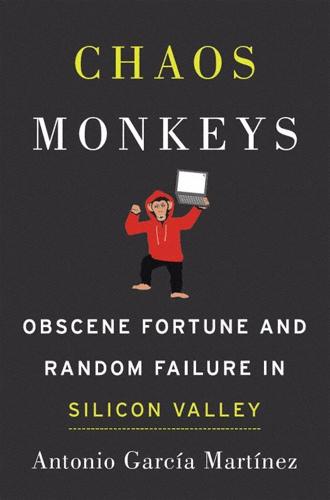
Chaos Monkeys: Obscene Fortune and Random Failure in Silicon Valley
by
Antonio Garcia Martinez
Published 27 Jun 2016
This was Twitter Ads, and so its leadership eventually becoming company leadership, however unique among consumer Internet companies, was not a huge surprise. FRIDAY, MARCH 25, 2011 Matters really kicked into gear when Twitter sent us that sine qua non of startup scheming, a corporate NDA. This is effectively the Snapchat messaging of the corporate world: you can take a peek, but the message needs to effectively be deleted from your brain (or at least never leave it) forever. Shit had just gotten real, and we needed a lawyer. Not a litigator like the Undertaker or Wang, whose generosity we didn’t want to test anymore, but a lawyer skilled in the polite work of corporate governance.
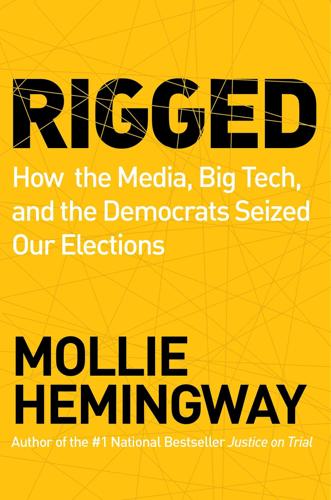
Rigged: How the Media, Big Tech, and the Democrats Seized Our Elections
by
Mollie Hemingway
Published 11 Oct 2021
This is fraud.”97 There were multiple reports that large numbers of mail-in ballots were left on the lobby floors of apartment buildings and were not delivered to residents’ individual mailboxes, casting further doubt on the integrity of the election.98 Two of the election results in Paterson were particularly close. Initially, challenger Shahin Khalique defeated incumbent Mohammed Akhtaruzzaman by 1,729 votes to 1,721. After a second recount on June 19, the race was tied 1,730 to 1,730.99 In that race, a video posted to Snapchat surfaced that appeared to show a man named Abu Razyen unlawfully handling a large stack of ballots he indicated were votes for Khalique.100 Khalique’s brother, Shelim, and Razyen were charged by the state attorney general for crimes including fraud in casting mail-in votes, tampering, and unauthorized possession of ballots.101 Incumbent council member William McKoy lost by 240 votes to challenger Alex Mendez after a recount on June 1.
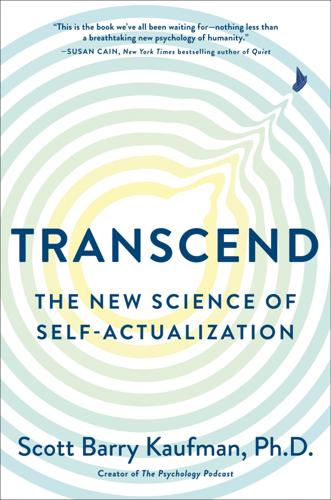
Transcend: The New Science of Self-Actualization
by
Scott Barry Kaufman
Published 6 Apr 2020
That’ll be actually a challenge. —Social media influencer Brittany Furlan, The American Meme (2018) Excessive social media use is often cited as another culprit of modern loneliness. Today there are many social media outlets to offer the allure of connection, including Facebook, Twitter, Instagram, Tumblr, and Snapchat. There are more ways to be popular to the masses, even if for just a moment, than at any other time in the history of the planet. To be sure, for some, social media may be the only way to connect with others, and it has enormous potential for fulfilling the need for connection. Social media can be particularly essential for those with disabilities.

Your Computer Is on Fire
by
Thomas S. Mullaney
,
Benjamin Peters
,
Mar Hicks
and
Kavita Philip
Published 9 Mar 2021
Simon Kemp, We Are Social Singapore, and Hootsuite, “Digital in 2017: A Global Overview,” LinkedIn (January 24, 2017), https://www.linkedin.com/pulse/digital-2017-global-overview-simon-kemp. 48. Olivia Solon, “‘It’s Digital Colonialism’: How Facebook’s Free Internet Service Has Failed Its Users,” Guardian (July 27, 2017), https://www.theguardian.com/technology/2017/jul/27/facebook-free-basics-developing-markets. 49. Simon Kemp, “Q2 Digital Statshot 2019: Tiktok Peaks, Snapchat Grows, and We Can’t Stop Talking,” We Are Social (blog) (April 25, 2019), https://wearesocial.com/blog/2019/04/the-state-of-digital-in-april-2019-all-the-numbers-you-need-to-know. 16 Typing Is Dead Thomas S. Mullaney In 1985, economist Paul David published the groundbreaking essay “Clio and the Economics of QWERTY,” in which he coined the term “path dependency”—by now one of the most influential economic theories of the twentieth and twenty-first centuries.
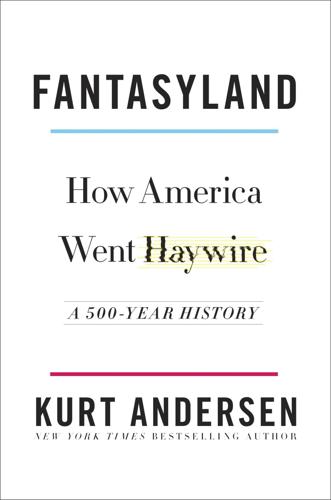
Fantasyland: How America Went Haywire: A 500-Year History
by
Kurt Andersen
Published 4 Sep 2017
The first generation of digital entrepreneurs to get amazingly rich, in the 1980s and ’90s—Gates, Jobs, Bezos—became billionaires in early middle age. In this century, before and after burst bubbles and meltdowns, it happened to younger, digital billionaires at thirty (Larry Page of Google) or twenty-five (Evan Spiegel of Snapchat) or twenty-three (Mark Zuckerberg). Which serves only to make the dream all the dreamier. What’s the new term of art for the most financially successful tech start-ups? Unicorns, after the magical creatures in which only children believe. It’s correct to say that the financial meltdown of 2008 resulted from too much deregulation, too many arcane Wall Street innovations, and some fraud.

WTF?: What's the Future and Why It's Up to Us
by
Tim O'Reilly
Published 9 Oct 2017
The iPhone leapt to dominance in the early mobile era not just because of its touch-screen interface and sleek, innovative design but because the App Store enabled a worldwide developer community to add features in the form of apps. Social media platforms like YouTube, Facebook, Twitter, Instagram, and Snapchat all gain their power by aggregating the contributions of billions of users. When people asked me what came after Web 2.0, I was quick to answer “collective intelligence applications driven by data from sensors rather than from people typing on keyboards.” Sure enough, advances in areas like speech recognition and image recognition, real-time traffic and self-driving cars, all depend on massive amounts of data harvested from sensors on connected devices.

A Generation of Sociopaths: How the Baby Boomers Betrayed America
by
Bruce Cannon Gibney
Published 7 Mar 2017
Above all, this book’s goal is to collect in one place and under one narrative the diverse and distressing stories glancingly treated in the media churn, and to trace their origin. Younger readers wishing to induce apoplexy at the next family reunion will find additional utility in these pages—Uncle Jim may think kids these days are terrible (Snapchat! Tattoos! Jeans in the office!), but when confronted with the evidence of what actually happened in the Sixties, he might fall refreshingly silent, especially when you explain exactly how many of your tax dollars subsidize his health care. The nonsociopathic wing of the Boomer generation may also find value in seeing the acts of their contemporaries in a different light and be persuaded to stand against a sociopathic agenda that serves them at the expense of their children.

Dawn of the Code War: America's Battle Against Russia, China, and the Rising Global Cyber Threat
by
John P. Carlin
and
Garrett M. Graff
Published 15 Oct 2018
Our efforts helped to a certain extent: Twitter agreed that month to shut down 125,000 ISIL-linked accounts.4 In the spirit of being creative, we held a meeting in late February 2016 at the Justice Department that I cochaired with the head of the National Counterterrorism Center, Nick Rasmussen, bringing together people from tech companies such as Apple, Twitter, Snapchat, and Facebook; Madison Avenue advertisers and PR firms such as Edelman; nonprofit groups; and even some reporters, as well as entertainment and Hollywood executives. Nick thanked the group for their more aggressive efforts to combat ISIL: “We’ve seen more aggressive takedowns across social media platforms, which is a really good thing.”5 Then Nick and I, along with other government leaders, such as the US chief technology officer, Megan Smith, and representatives from the National Security Council, tried to explain what we were seeing in terms of the threat: this is how terrorists are exploiting social media services; this is the type of advertising that they’re doing.
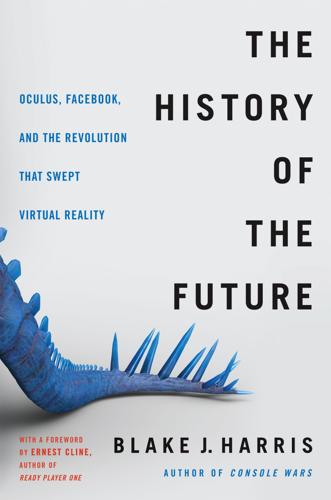
The History of the Future: Oculus, Facebook, and the Revolution That Swept Virtual Reality
by
Blake J. Harris
Published 19 Feb 2019
And here now, in this incredible new world, not only did Facebook have 1.2 billion users but—with WhatsApp (500,000 users) and Instagram (200,000 users)—they might be on their way to having three of these billion-reach companies. Maybe even four, with the rate that Messenger was growing. As Iribe fantasized about what it would be like to get a billion people into VR, an audience member asked Zuckerberg if Facebook was still interested in trying to acquire Snapchat. “I mean, look,” Zuckerberg replied, “after buying a company for $16 billion, you’re probably done for a while.” Iribe hoped that was not the case, as he now planned to reopen discussions with Zuckerberg. “QUICK UPDATE,” OCULUS’ HEAD OF DEVELOPER RELATIONS, AARON DAVIES, wrote on March 5, sharing some good Mobile VR news with the executive team.
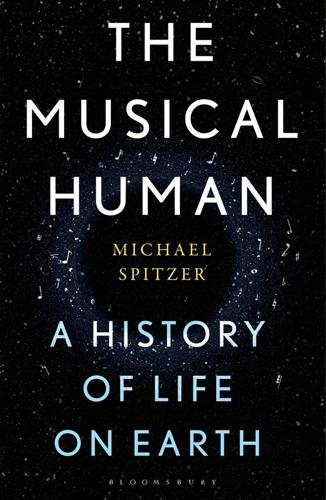
The Musical Human: A History of Life on Earth
by
Michael Spitzer
Published 31 Mar 2021
It is striking that most of the creativity reported by Youth Music happens outside school, as DIY activities such as karaoke, producing beats and bars on a computer (often in bedrooms), song-writing, rapping, DJing, and recording and posting music videos on social media. And much of it has been unleashed by digital technology. For example, the Tik Tok app (aka Musically) allows the user to create short-form (lip-synched) music videos and upload them to Snapchat and Instagram, and has 200 million users worldwide. So musical creativity has blossomed without the interference of elders or teachers, a far cry from the way music was transmitted in the past, both in the West and in the rest of the world. Even half of the minority (30 per cent) of young people who play instruments have learned them from YouTube tutorials rather than from a personal teacher.
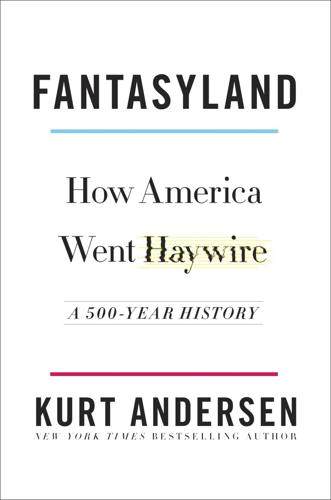
Fantasyland
by
Kurt Andersen
Published 5 Sep 2017
The first generation of digital entrepreneurs to get amazingly rich, in the 1980s and ’90s—Gates, Jobs, Bezos—became billionaires in early middle age. In this century, before and after burst bubbles and meltdowns, it happened to younger, digital billionaires at thirty (Larry Page of Google) or twenty-five (Evan Spiegel of Snapchat) or twenty-three (Mark Zuckerberg). Which serves only to make the dream all the dreamier. What’s the new term of art for the most financially successful tech start-ups? Unicorns, after the magical creatures in which only children believe. It’s correct to say that the financial meltdown of 2008 resulted from too much deregulation, too many arcane Wall Street innovations, and some fraud.

Nexus: A Brief History of Information Networks From the Stone Age to AI
by
Yuval Noah Harari
Published 9 Sep 2024
Relying on license plate footage, the FBI pinpointed the movements of a New York man from the moment he crossed the Henry Hudson Bridge at 6:06:08 on the morning of January 6, on his way to the Capitol, until he crossed the George Washington Bridge at 23:59:22 that night, on his way back home. An image taken by a camera on Interstate 95 showed an oversized “Make America Great Again” hat on the man’s dashboard. The hat was matched to a Facebook selfie in which the man appeared wearing it. He further incriminated himself with several videos he posted to Snapchat from within the Capitol. Another rioter sought to protect himself from detection by wearing a face mask on January 6, avoiding live-streaming, and using a cellphone registered in his mother’s name—but it availed him little. The FBI’s algorithms managed to match video footage from January 6, 2021, to a photo from the man’s 2017 passport application.
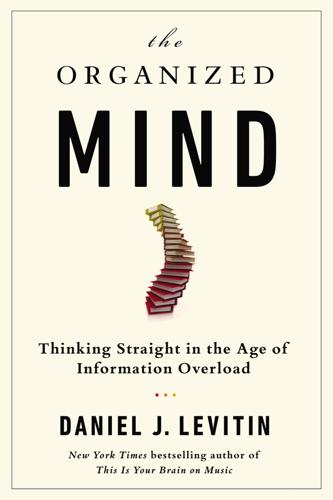
The Organized Mind: Thinking Straight in the Age of Information Overload
by
Daniel J. Levitin
Published 18 Aug 2014
Anything that tempts us to break the extended concentration required to perform well on challenging tasks is a potential barrier to success. The change and novelty centers in your brain also feed you chemical rewards when you complete tasks, no matter how trivial. The social networking addiction loop, whether it’s Facebook, Twitter, Vine, Instagram, Snapchat, Tumblr, Pinterest, e-mail, texting, or whatever new thing will be adopted in the coming years, sends chemicals through the brain’s pleasure center that are genuinely, physiologically addicting. The greatest life satisfaction comes from completing projects that required sustained focus and energy.

The Code: Silicon Valley and the Remaking of America
by
Margaret O'Mara
Published 8 Jul 2019
It was the bestselling consumer product in human history. Having a geolocated, camera-equipped supercomputer in millions of pockets jump-started whole new business categories, such as ride-sharing (Uber and Lyft), local search (Yelp), and short-term rentals (Airbnb). It further spiked the growth of social media, launching born-mobile apps (Instagram, Snapchat) and turning existing networks into even more potent vehicles for advertising and sales. The switch to mobile made Facebook’s user base grow even faster. By 2018, three out of four Americans owned a smartphone.9 With so many addictive morsels right at people’s fingertips, the daily hours spent staring at tiny screens rose so sharply that a new and popular category of apps appeared, reminding users to put their phones down.
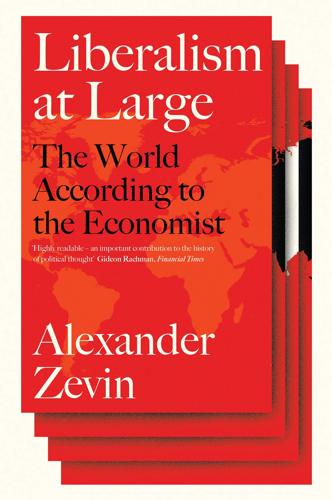
Liberalism at Large: The World According to the Economist
by
Alex Zevin
Published 12 Nov 2019
Print circulation has fallen to 1.25 million – though 300,000 digital subscribers have steadied readership at about 1.5 million.14 Much of the loss stems, executives claim, from weeding out discount and bulk subscriptions to lounges and clubs, as part of a focus on premium readers that included a 20 per cent price hike in 2016; as a result, a new metric – of revenue per copy – has risen, even as print advertising collapses, accounting for just 18 per cent of Economist Group sales in 2016, down from more than 40 per cent in 2009 (though at £35 million it still outpaces digital ad revenue at £23 million).15 This is why Micklethwait took to describing premium pay TV-services like HBO and Sky as models; and it is the rationale for pumping millions into acquiring new subscribers – peddling insect ice cream and civet faeces coffee from food trucks on city street corners, and beaming into Snapchat, Twitter, Facebook and Apple News, with podcasts and a virtual reality app, to grab the attention of ‘72 million globally curious’ potential readers. Whether the Economist can withstand that degree of curiosity, while preserving its special identity, is another story. Liberalism, a Love Story As if to underscore the sense that liberalism itself is at a crossroads, an Economist journalist produced a serious historical study of it for the first time in 2014.

Seeking SRE: Conversations About Running Production Systems at Scale
by
David N. Blank-Edelman
Published 16 Sep 2018
Before anyone starts thinking about microservices, they typically already have a functioning monolithic application composed of the following pieces, as shown in Figure 26-1: Internet load balancer (e.g., Amazon Web Services [AWS] Elastic Load Balancer [ELB]) Stateless application stack (e.g., PHP or Node.js) Database (e.g., MongoDB or MySQL) Figure 26-1. Monolithic architecture Very well-known internet applications (e.g., Twitter, Salesforce, Snapchat, and many others) became extremely large and handle high-traffic loads with only small variations on the items in this list. Why? Because it is vastly simpler to understand and operate such an architecture versus a fully distributed one. This chapter does not go into detail on why companies eventually almost always make the switch from monolith to microservice architecture; much has already been written about that topic.2 However, from a networking and observability perspective it’s instructive to discuss some of the operational problems that are already typically visible even with this very basic architecture.

Homeland: The War on Terror in American Life
by
Richard Beck
Published 2 Sep 2024
This transition—from bloggers’ enormous grab bag of individually run websites to the infinite, ad-soaked, single-column scroll of Twitter (now called X) and Instagram—unfolded over several years, but it is now replicated in miniature every time Silicon Valley and its counterparts outside the United States launch a new social media platform. Facebook, Twitter, Instagram, Snapchat, and TikTok all followed the same playbook. Step one was to offer people a free-to-use platform that could be accessed with little more than a working email address. Step two was to allow early users to play around, learn the platform’s strengths and weaknesses, and discover useful tools the company’s developers hadn’t even considered, as when a Twitter user began encouraging his friends who were also on the platform to start using hashtags to help organize conversations and make them searchable in 2007.
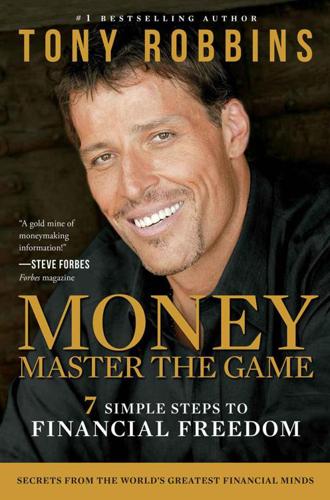
MONEY Master the Game: 7 Simple Steps to Financial Freedom
by
Tony Robbins
Published 18 Nov 2014
—OPRAH WINFREY Take a moment now and think about what you really want your money to buy. Not everybody wants to live like Donald Trump or Floyd “Money” Mayweather! Is your dream to travel the globe, exploring ancient cities or photographing lions in the Serengeti? Is it owning your own beach house in the Bahamas or a penthouse in New York? Is it starting your own business—the next Snapchat, or creating an extraordinary contribution to humanity like the next Charity Water? Is it something as simple as sending your kids to college and having enough left over for a house in the country with a big vegetable garden? Or is your dream just peace of mind—knowing you can be free forever from debt and worry?